|
Click on pictures to enlarge
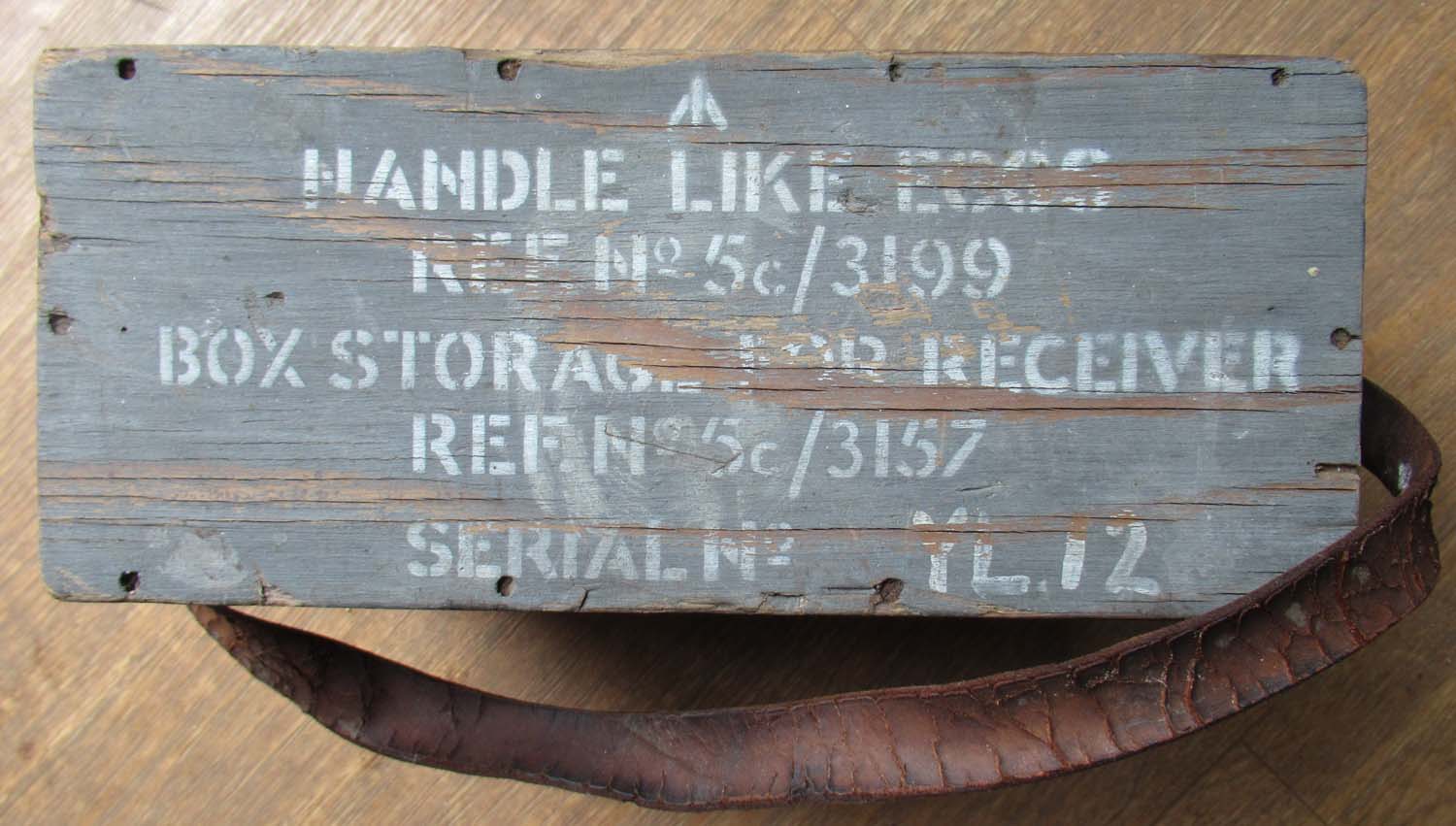
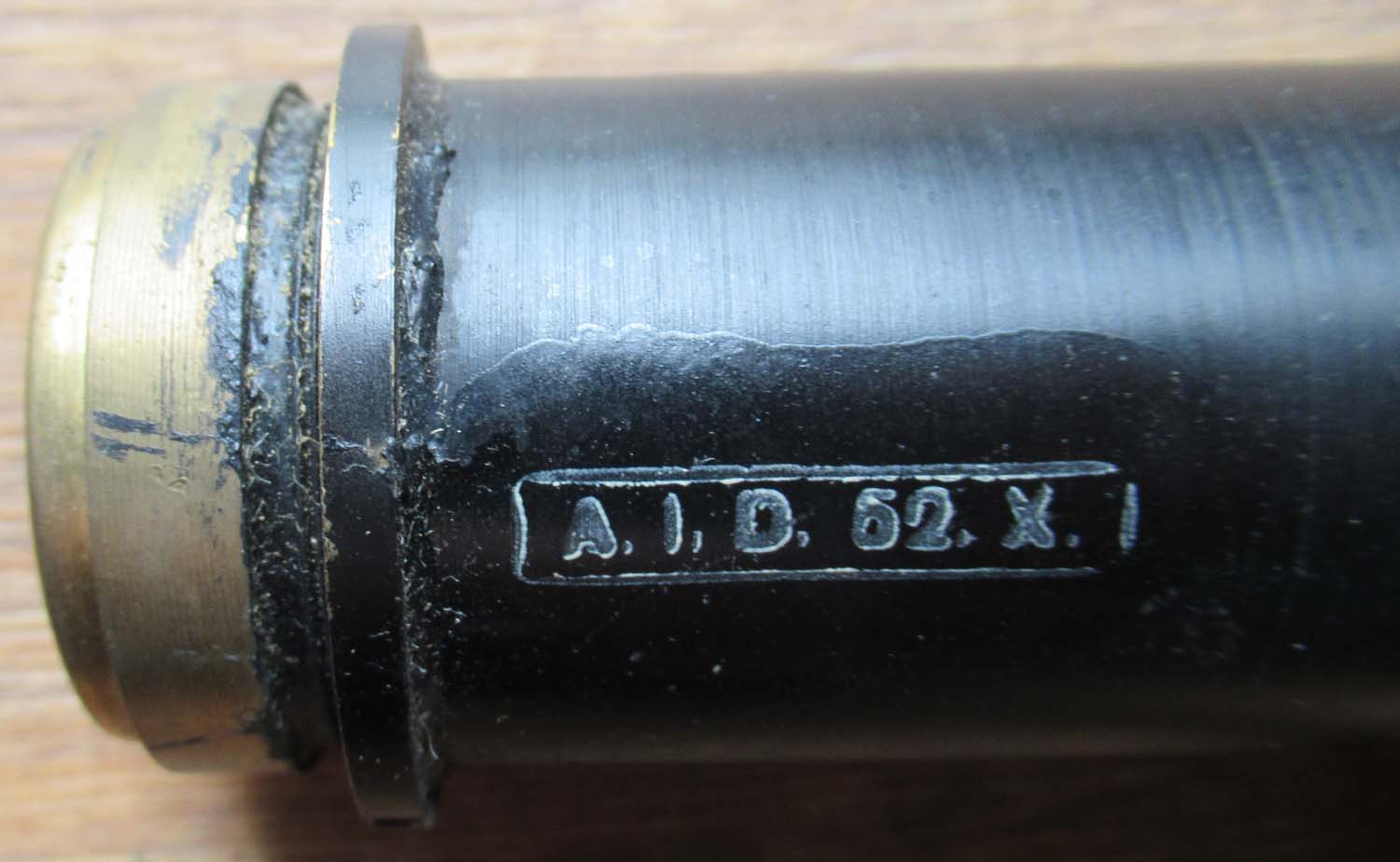
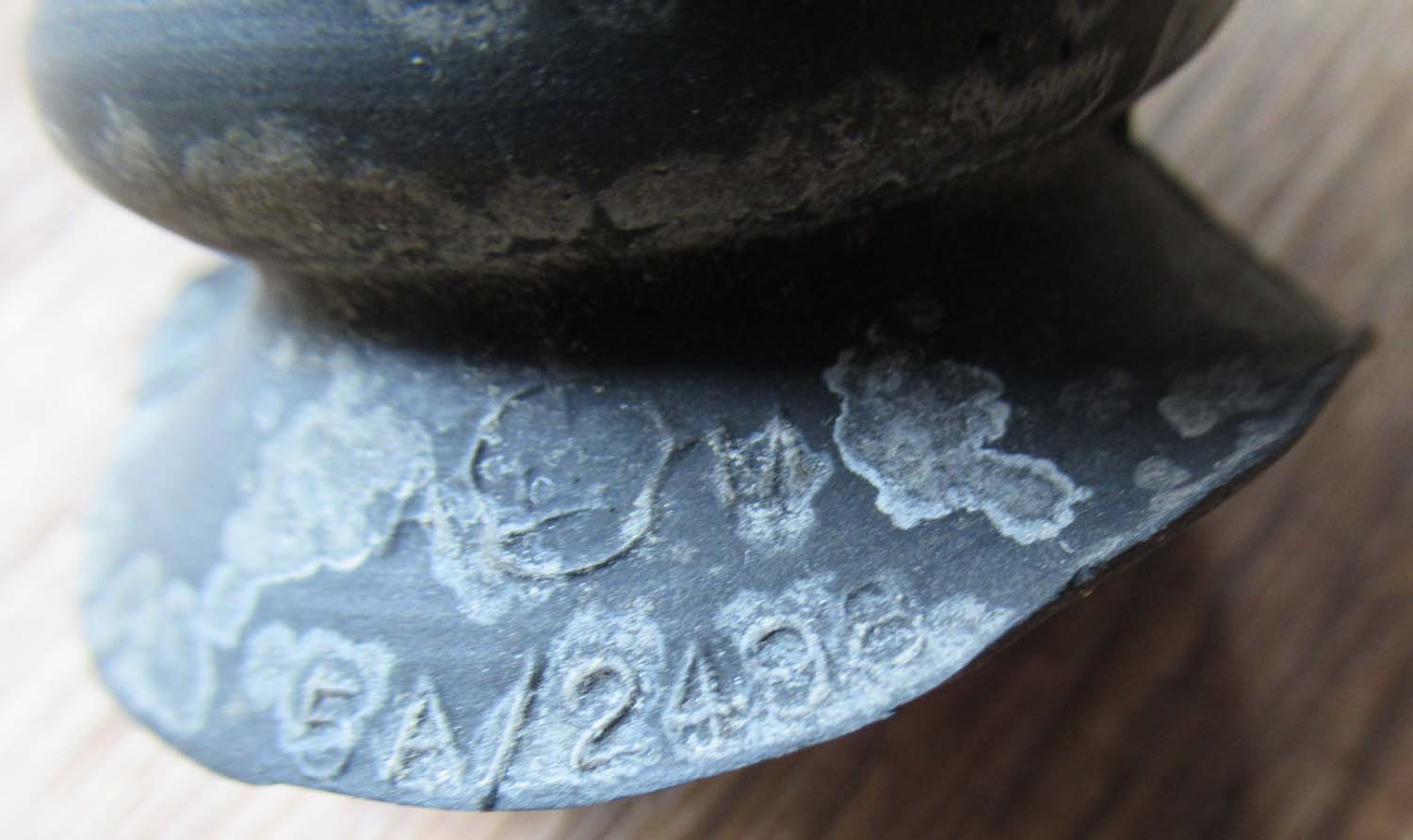
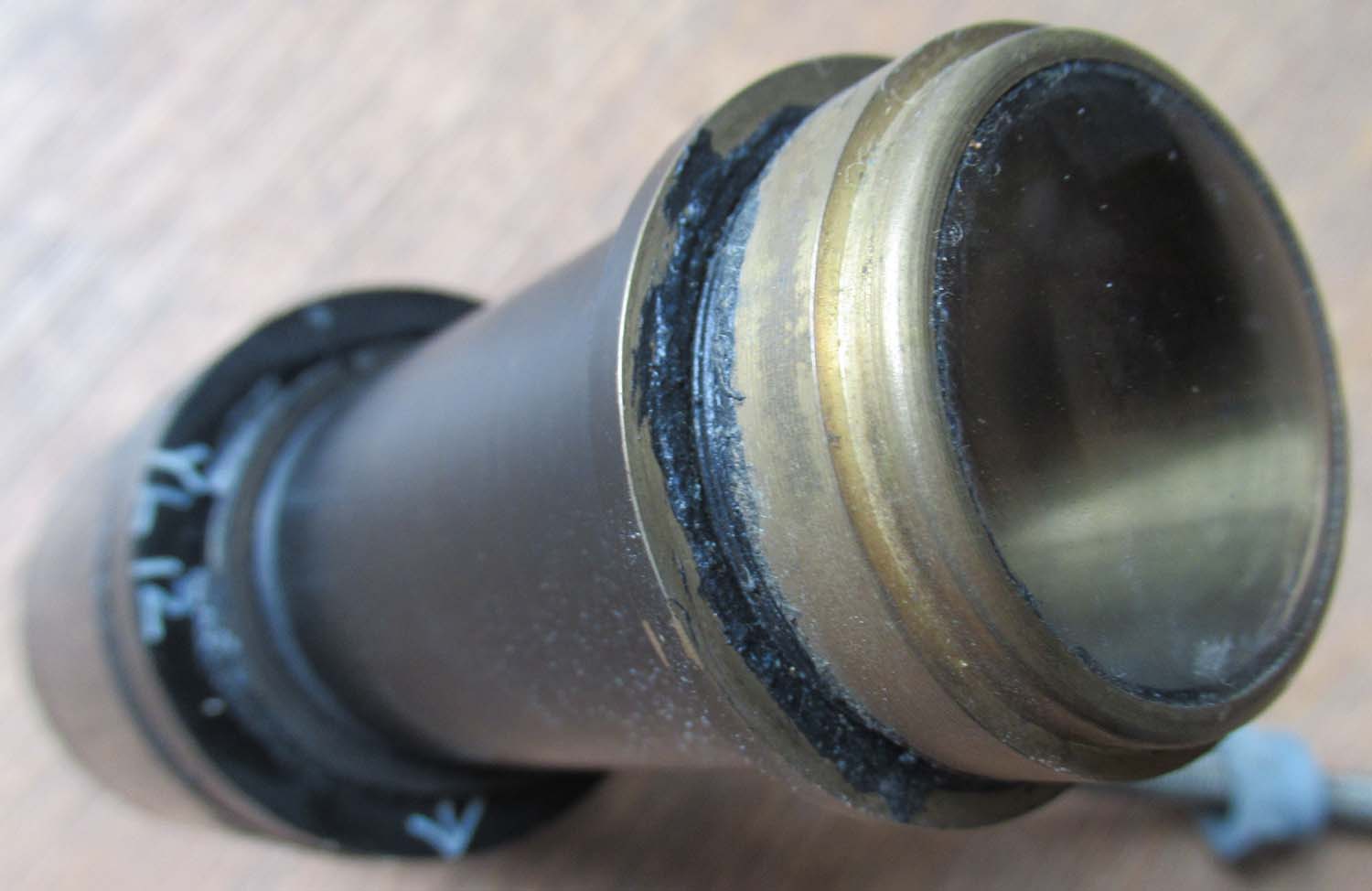 |
RAF Village Inn
Scope (No 114 pg1 Arm)
Here we have an RAF Village
Inn Scope. In original box and in good original condition.
Used as part of the RAFs automatic gun laying system
code name village Inn.
This system introduced late
in the War used radar to detect enemy fighters allowing the
rear gunner to open fire before even seeing the attacking
aircraft, it appeared as a dot of light on his gunsight. To
prevent friendly fire on other bombers this scope directed a
light shining forward in all the aircraft in the stream and
would automatically lock the guns of the aircraft in front.
Strangely enough these scopes made their way into the
original star wars films as props for futuristic guns.
Ref No:
5C/3157
&: 5C/3199
Click on pictures to enlarge
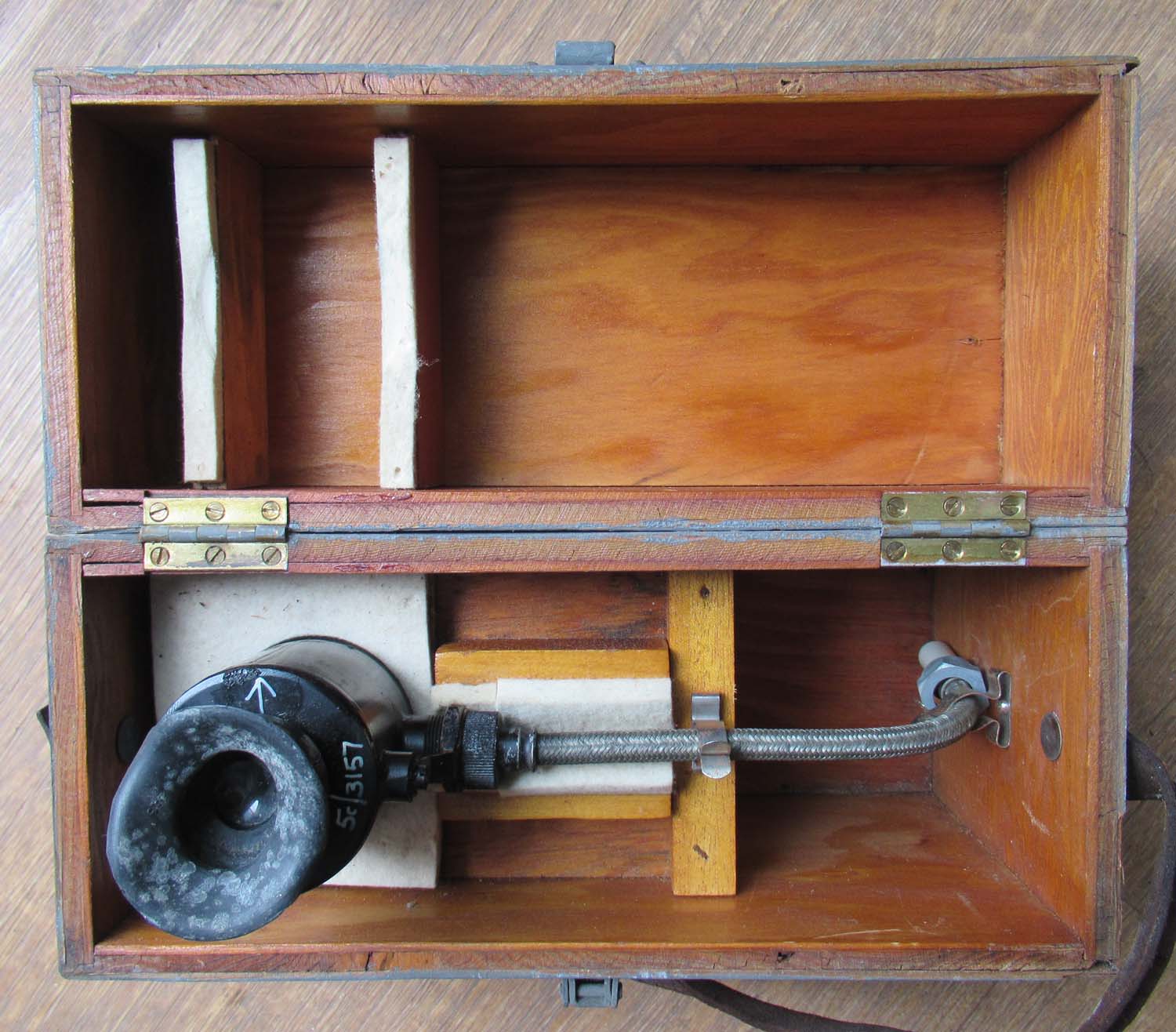
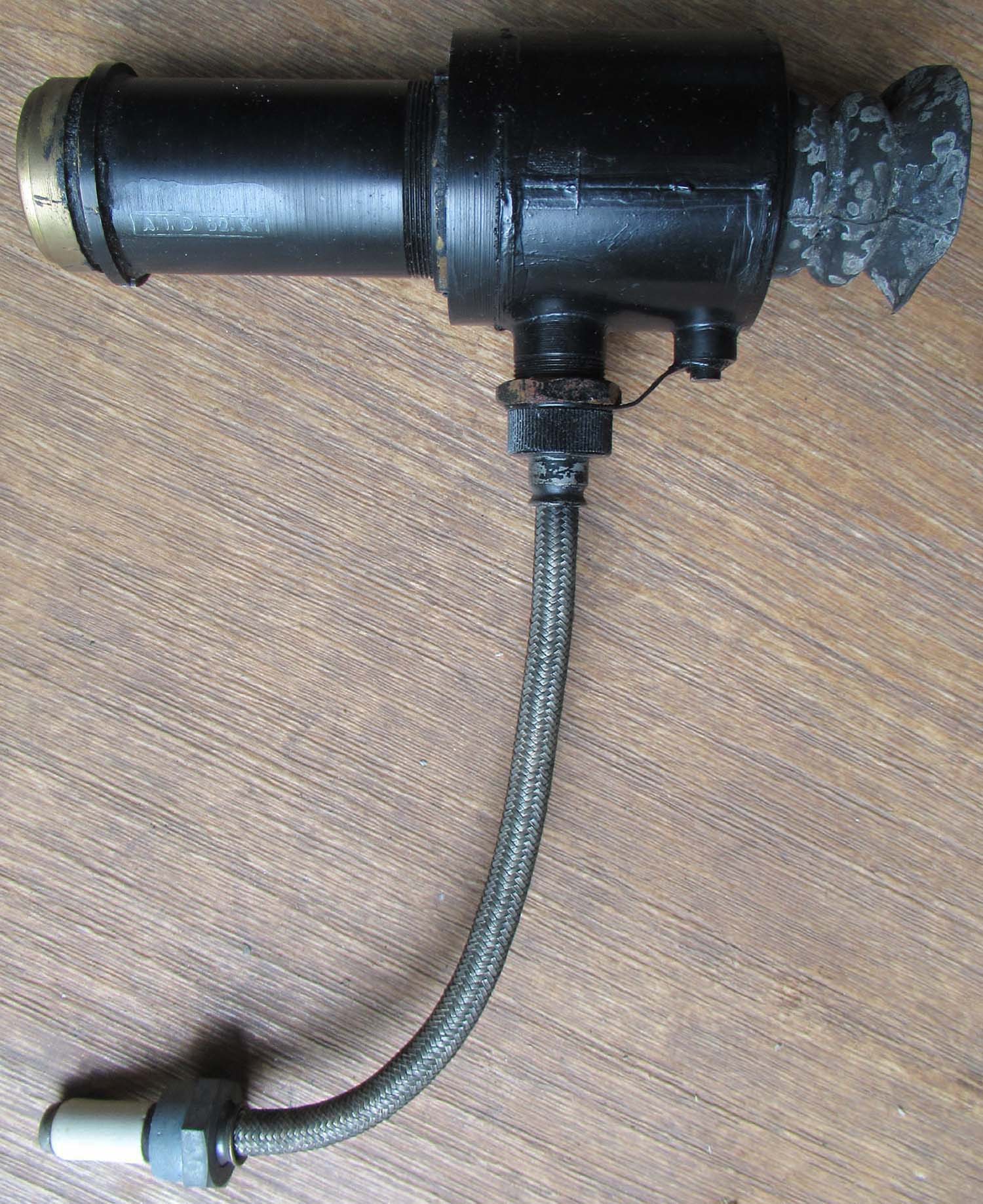
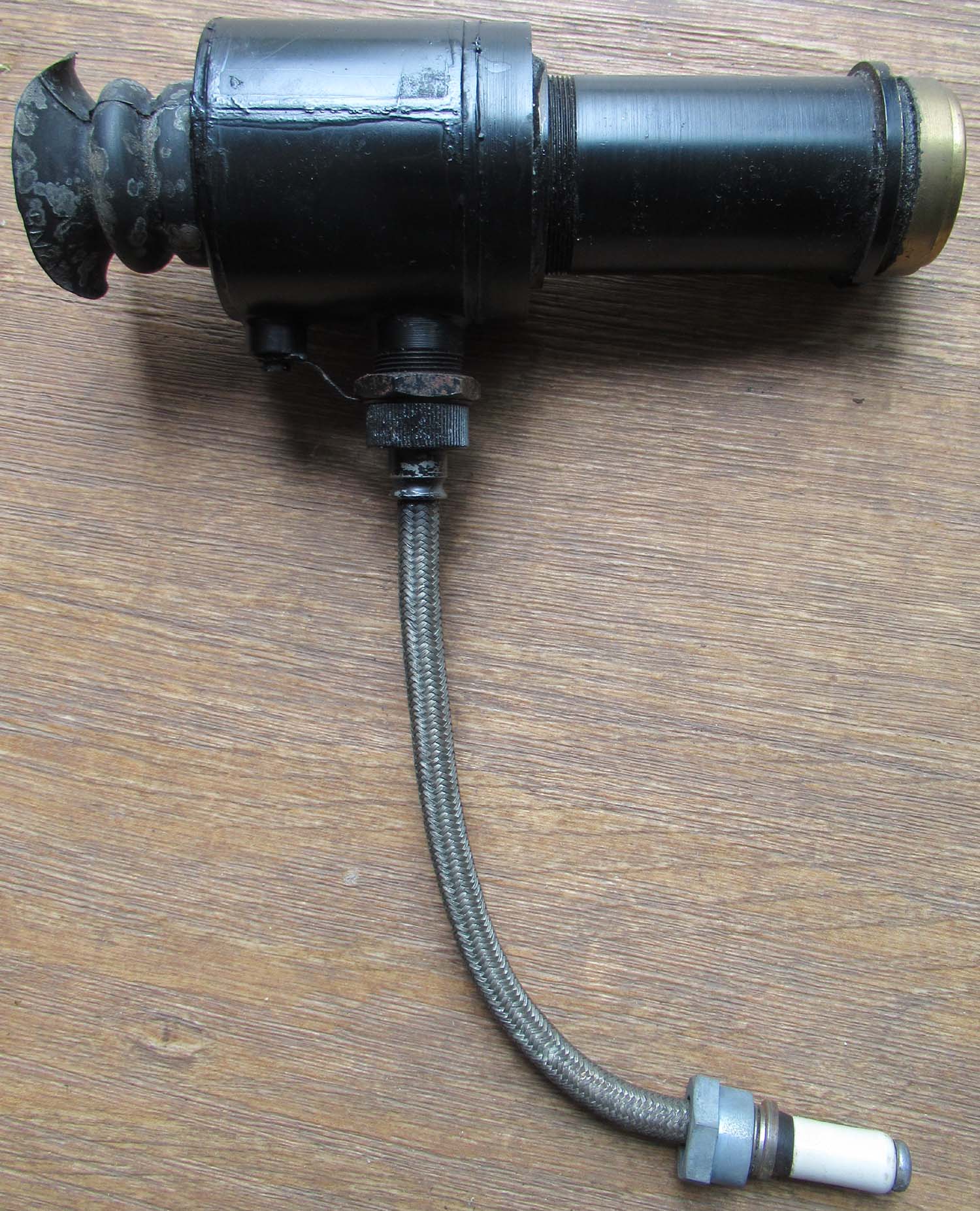
£595


|
|
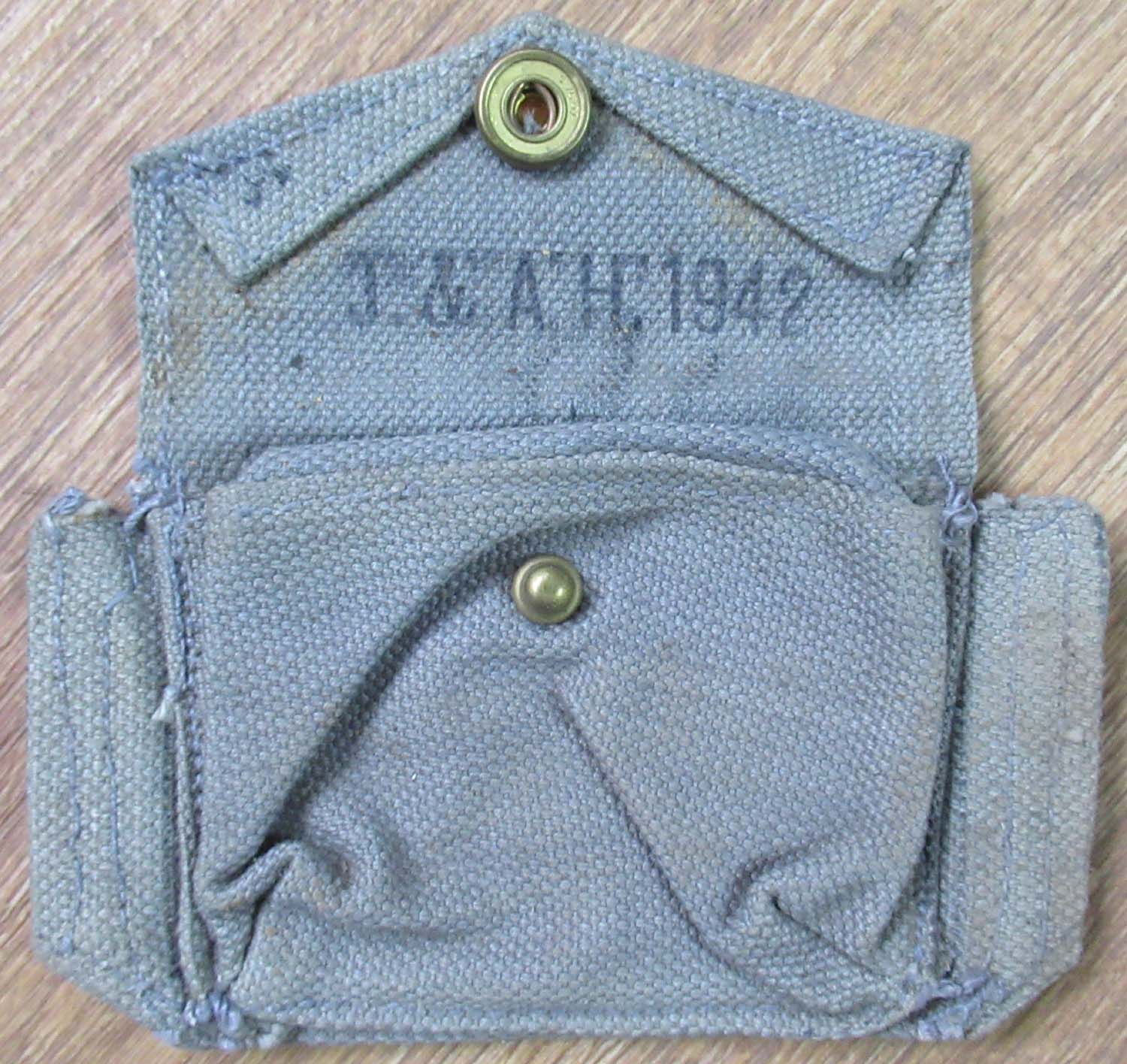
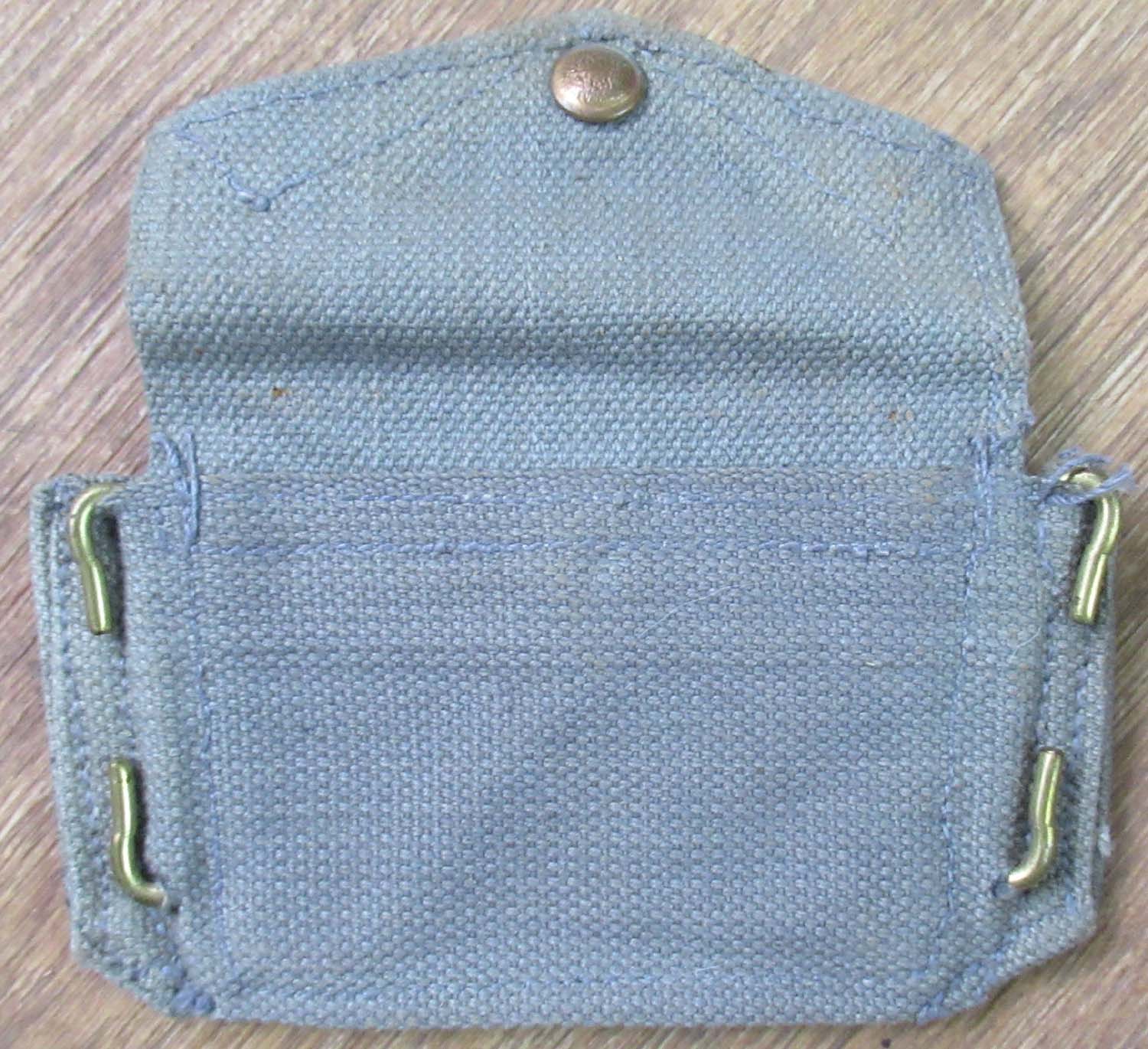 |
Ammo Pouch 1 (No 113 pg1 Arm)
Dated 1942 Pilot Officers
ammo pouch for Pistol webbing. Good original condition.
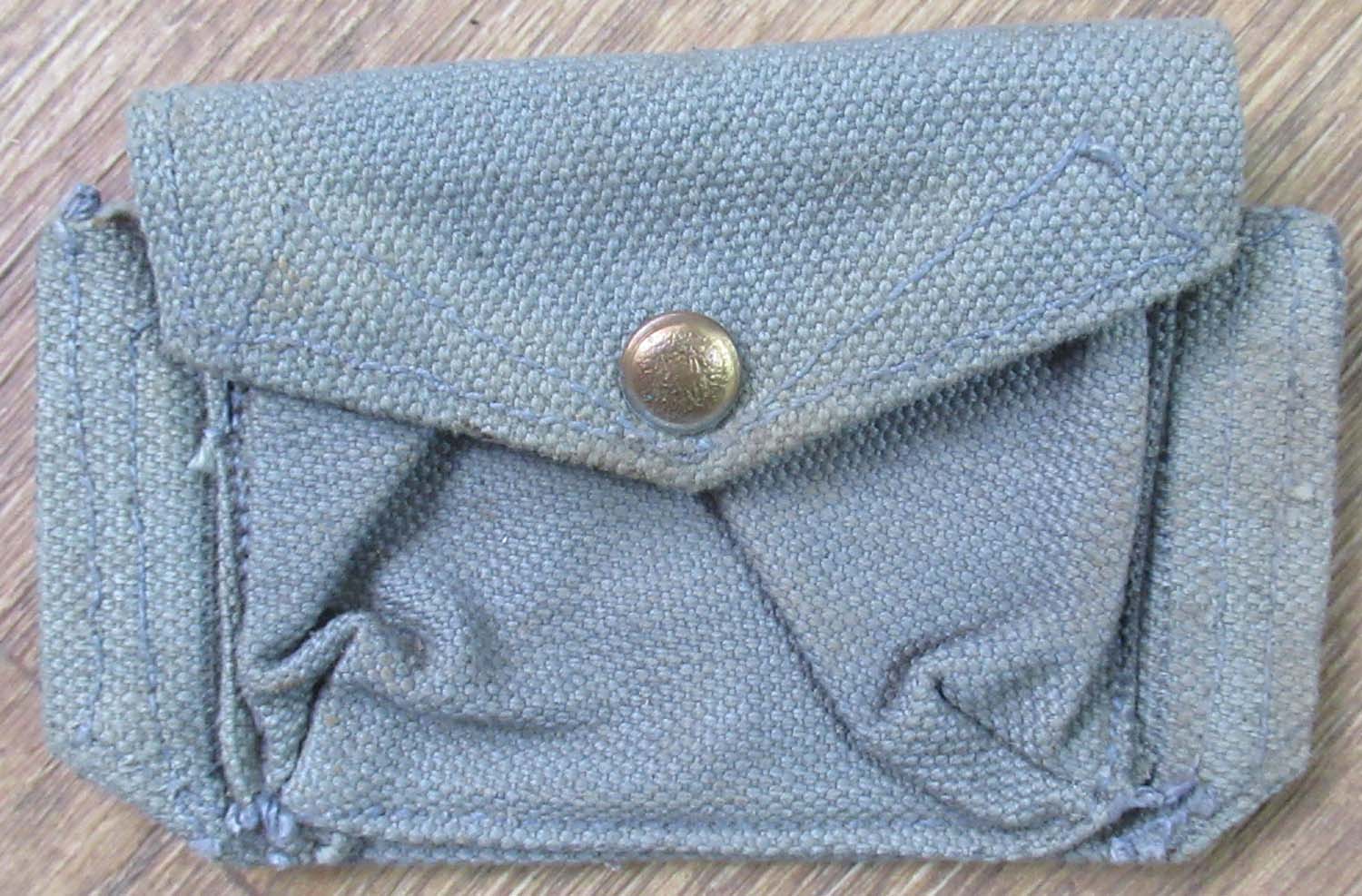
£25


|
|
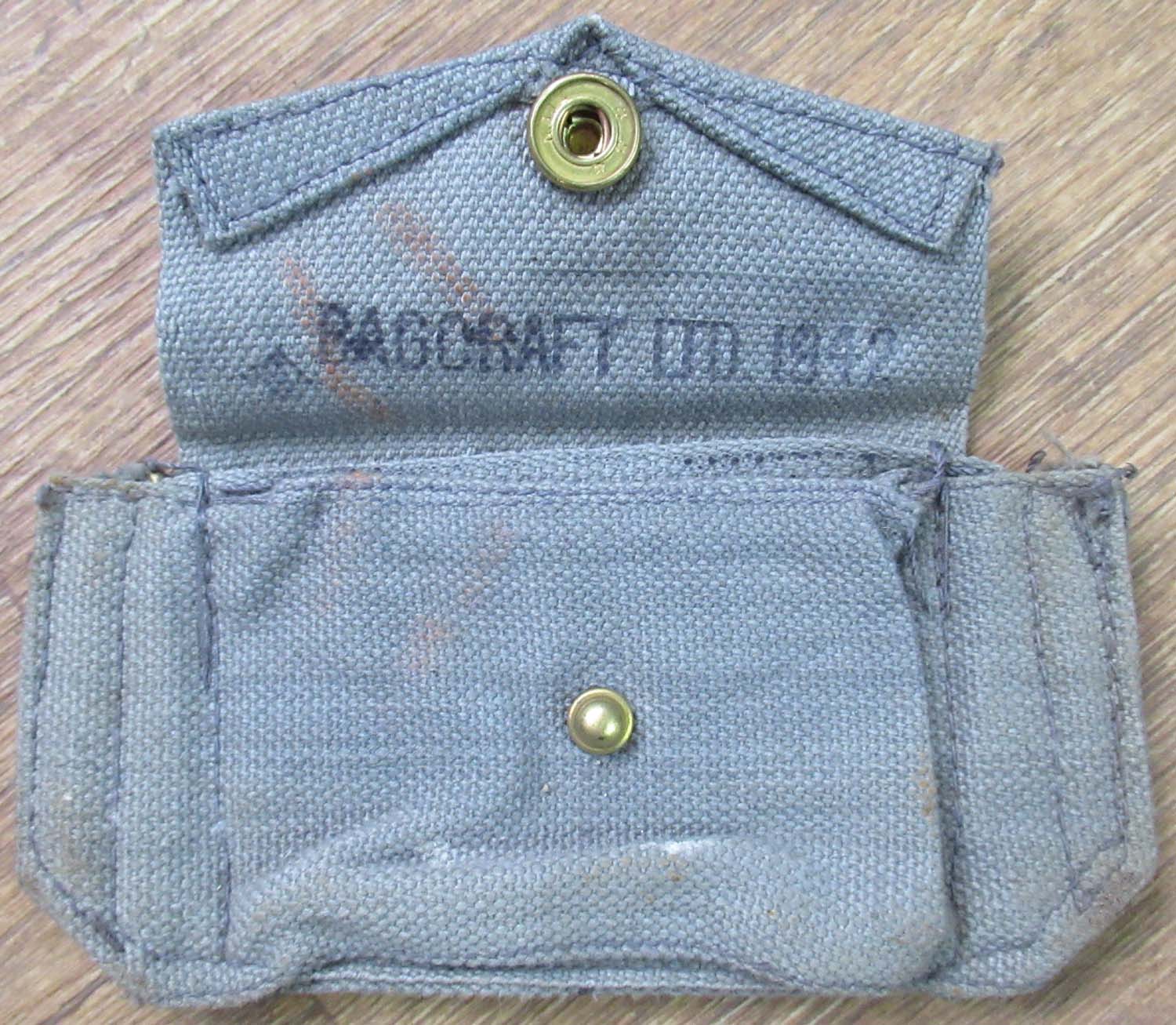
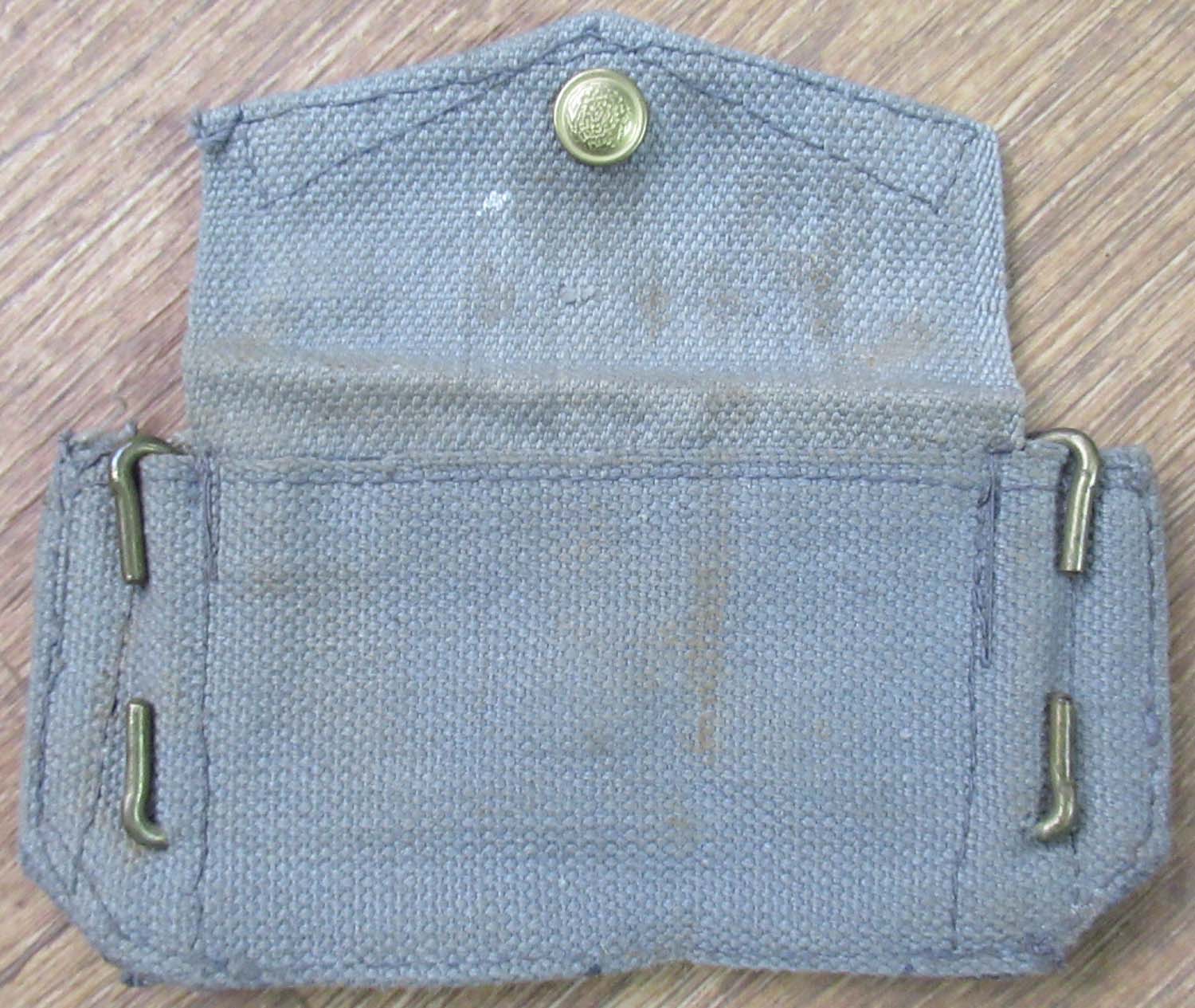 |
Ammo Pouch 2 (No 112 pg1 Arm)
Another pilot officers
ammo pouch for pistol webbing, dated 1942. Good original condition.
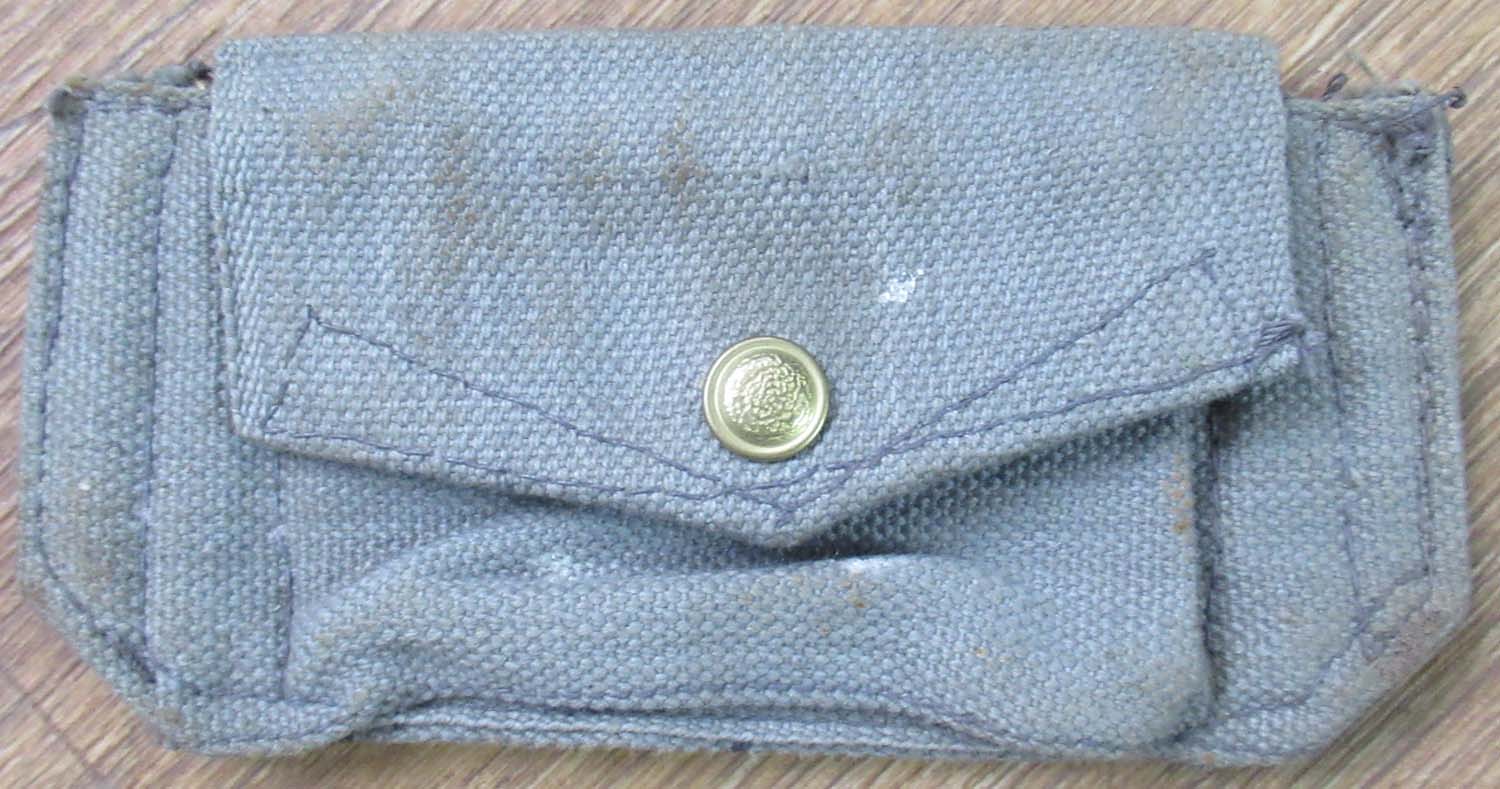
£25


|
|
Click on pictures to enlarge

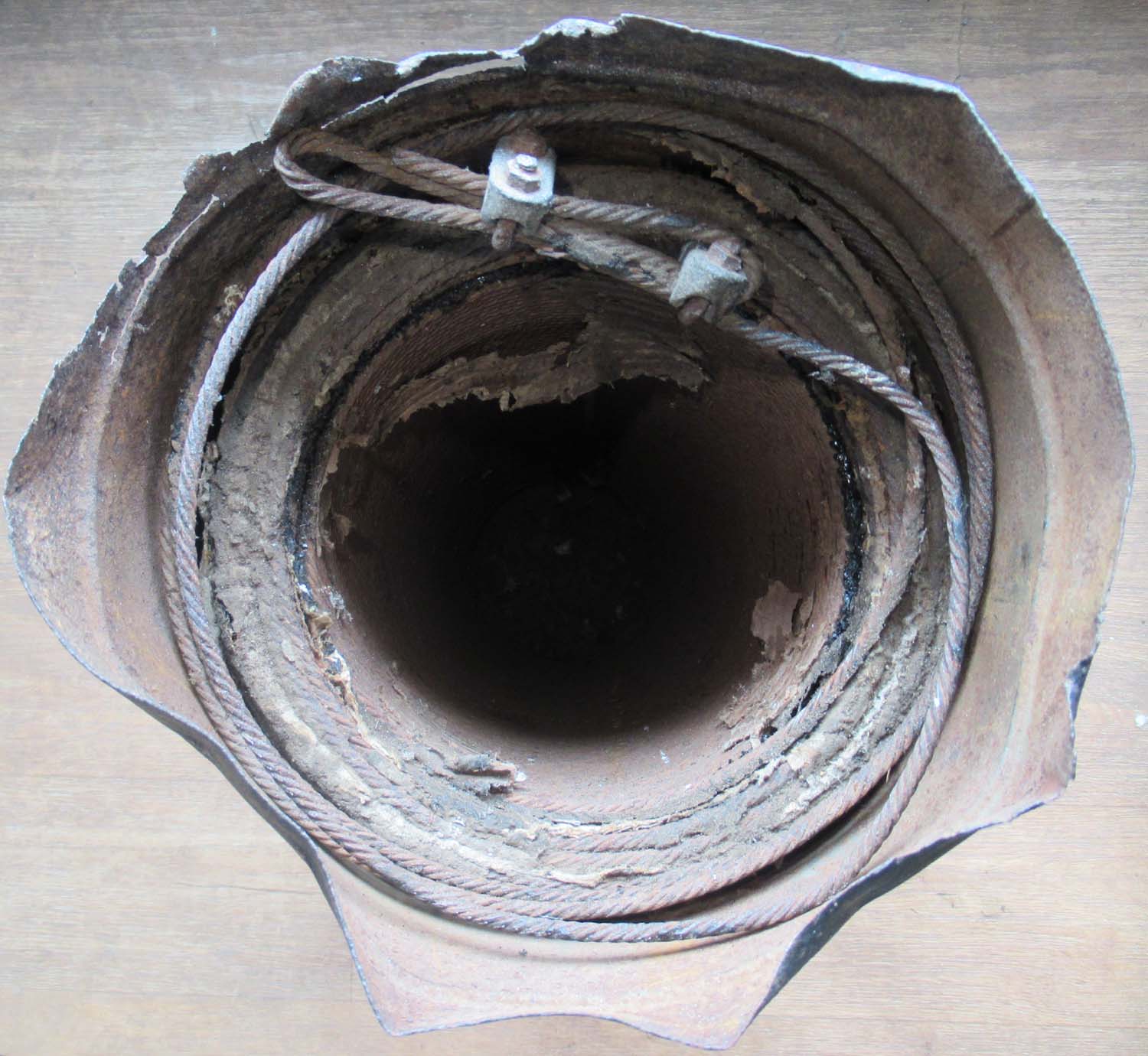
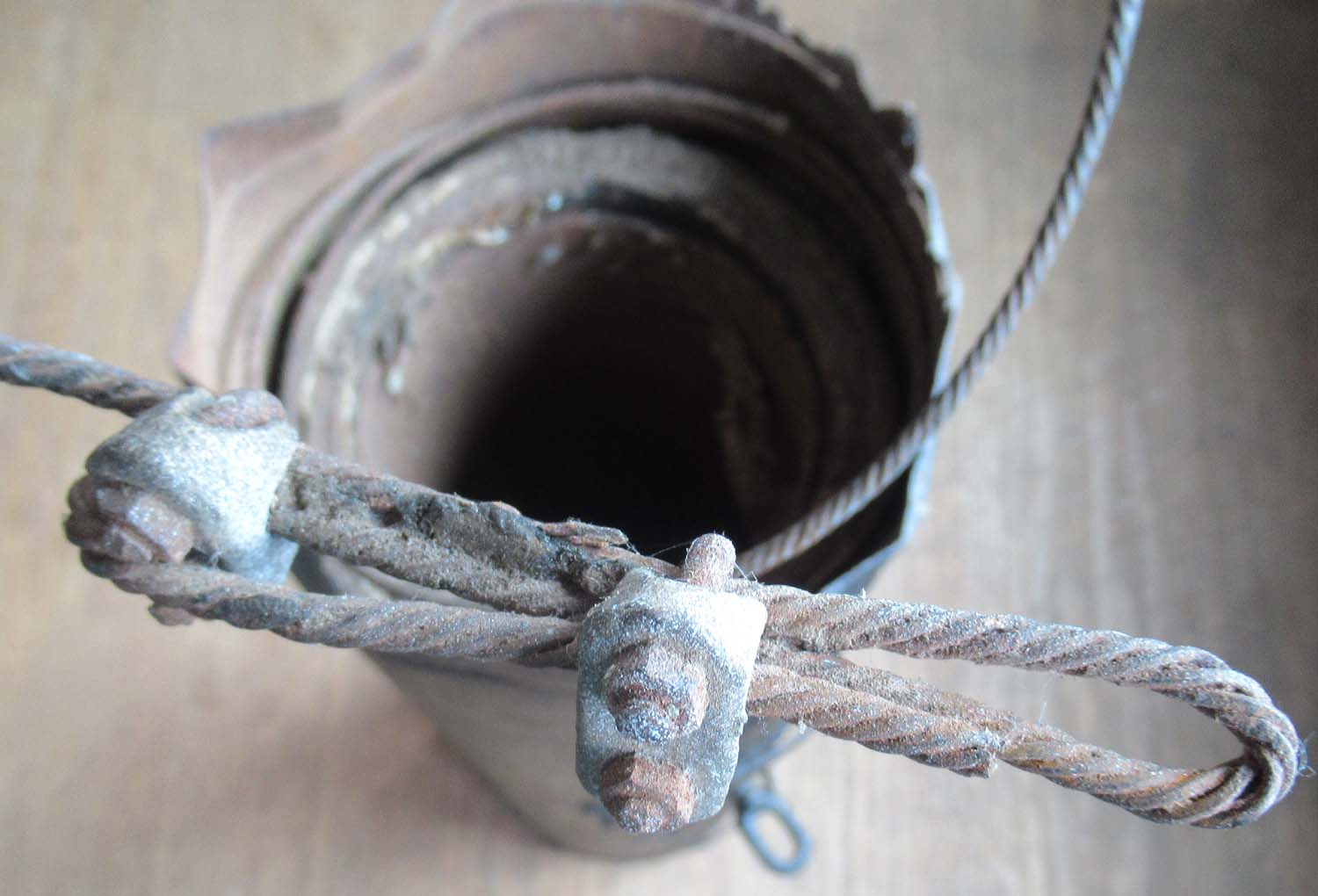
 |
Luftwaffe secret anti aircraft weapon (Pg1 Rocket)
Here is one of the rarest
parts on the website, this is a late war piece when Germany
was loosing the war for air supremacy over the Reich. his is
one of the inventions they came up with while thinking out
of the box to bring down and disrupt the bomber streams. Its
a canister containing lots wire, this wire was attached to a
rocket and then to the wings of most likely a FW 190 . The
idea was as the fighter approached the bomber stream it
fired the rocket carry the wire over then bombers getting
tangled in props , rudders ailerons ect and generally
causing havoc. There is a little of no information about the
success of this weapon but in theory seems like it could
cause havoc. The Germans tried other tactics involving
cables and rockets but it was to late they were completely
over whelmed by the Allies . This piece was recovered near
Deelan in Holland.
Approximately 69 cm in
length.
Click on pictures to enlarge
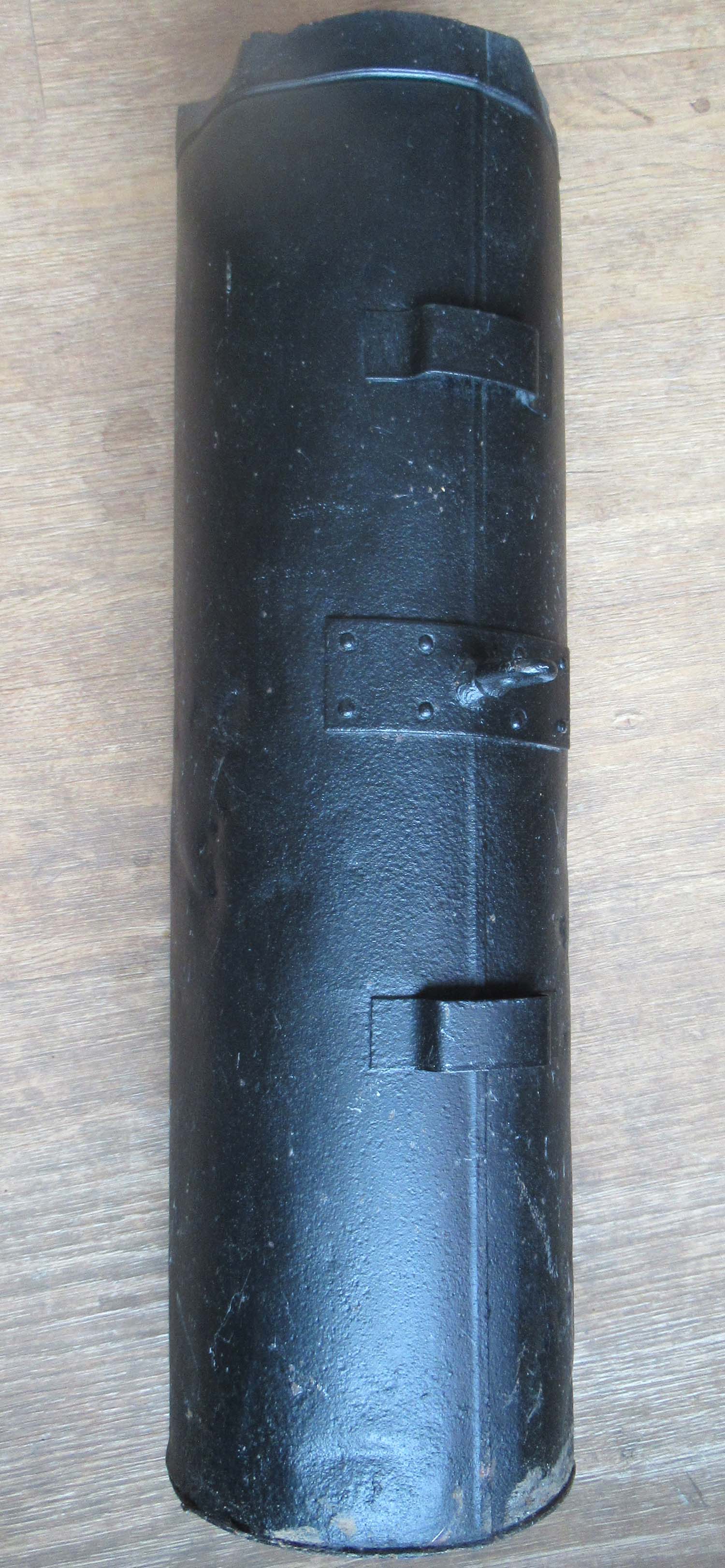
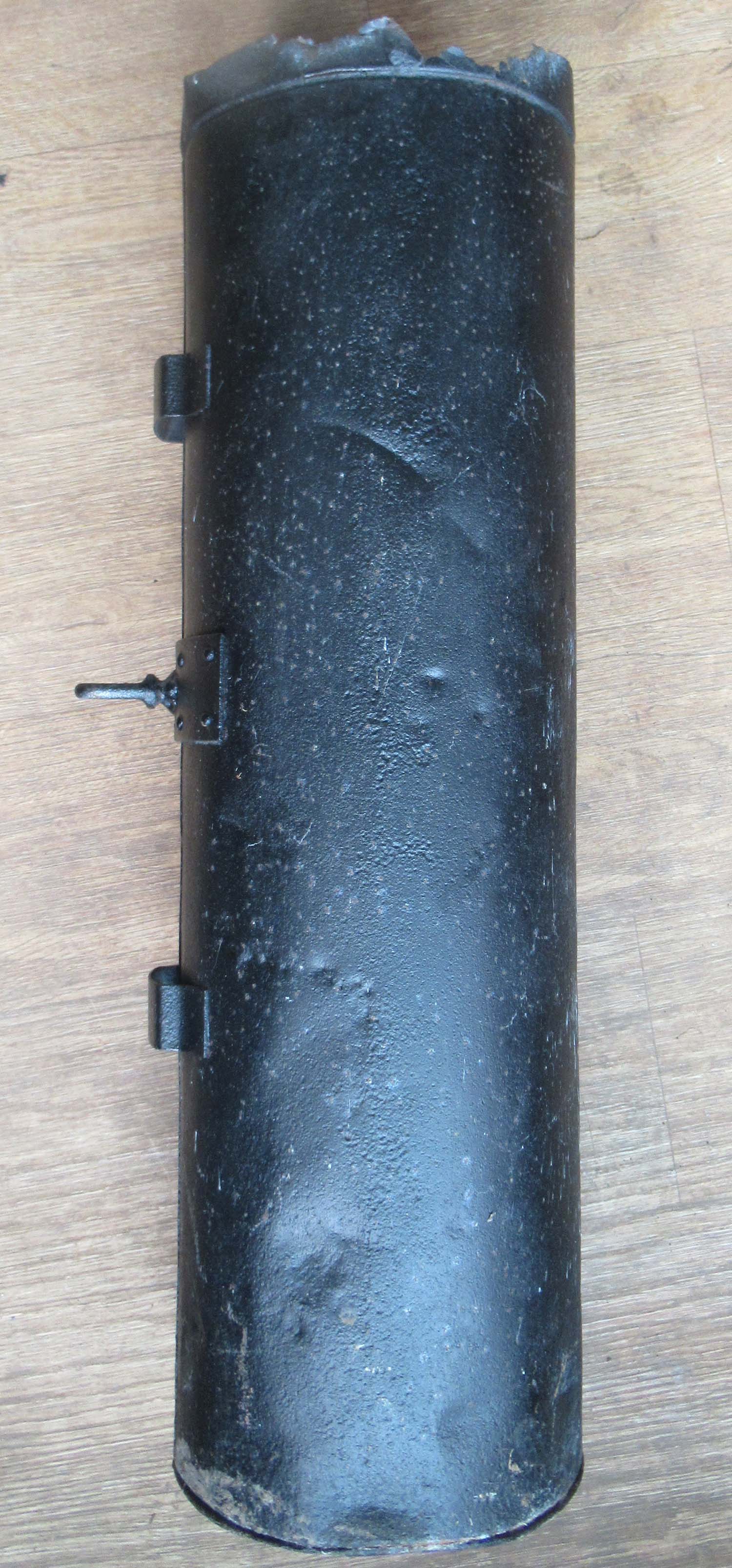
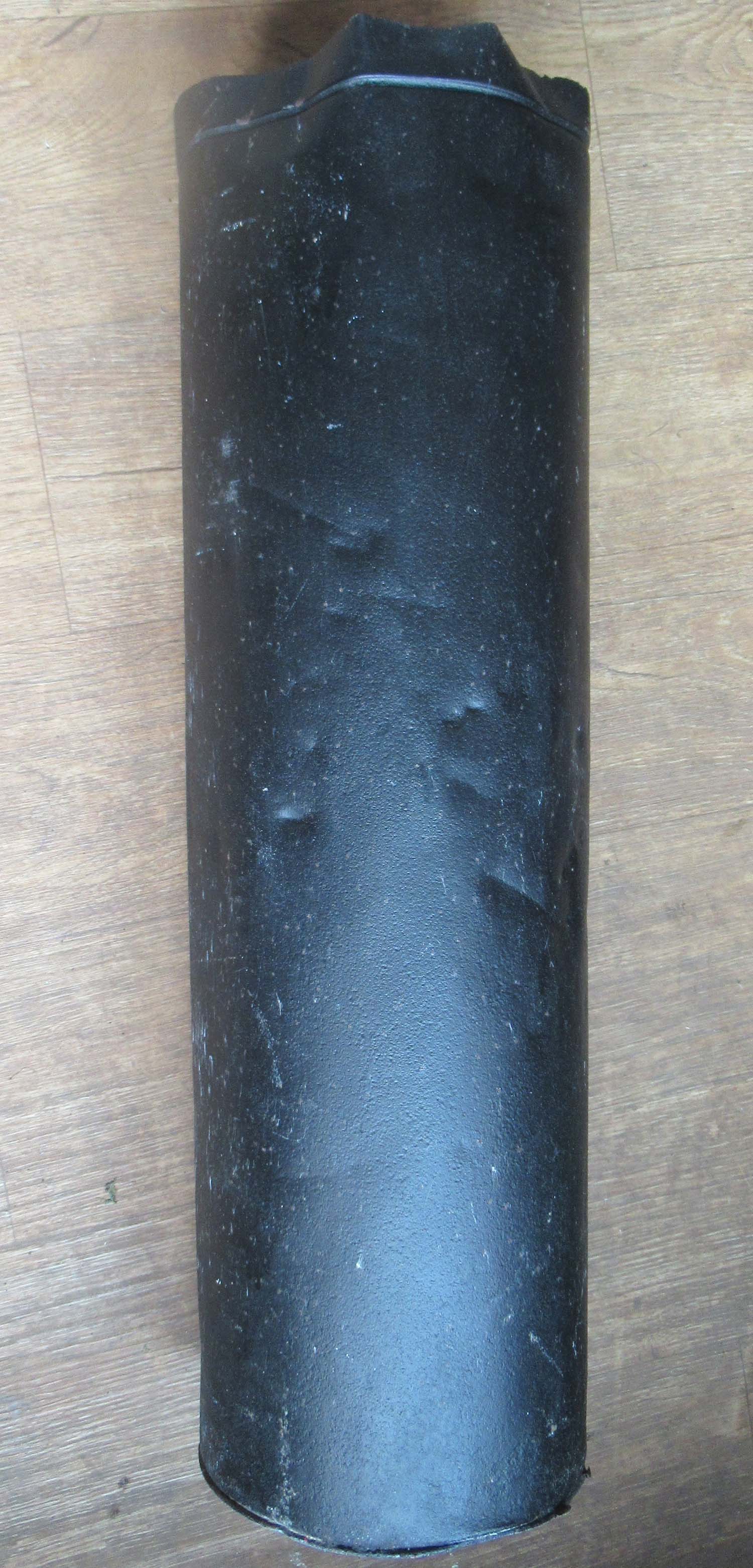
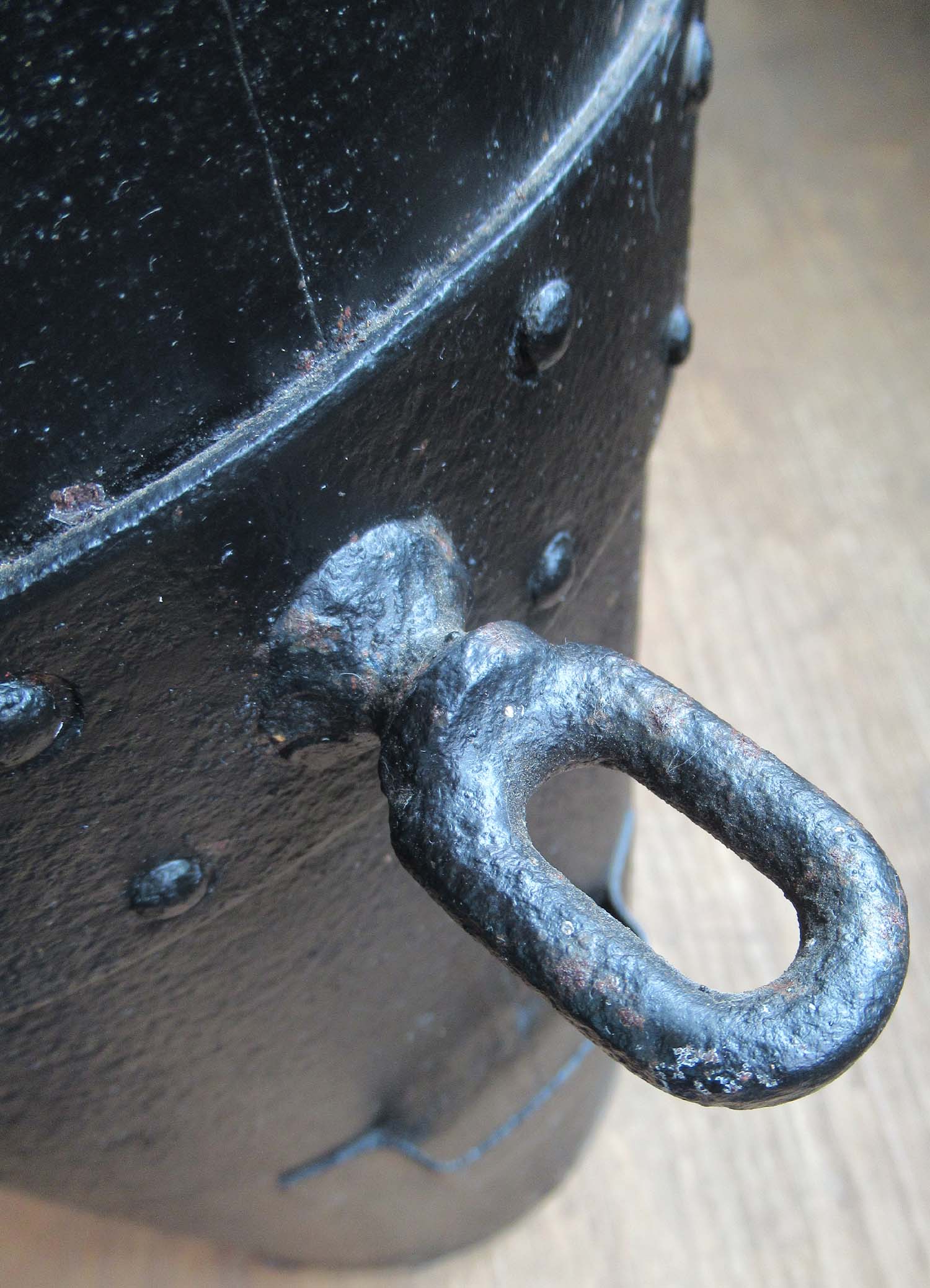
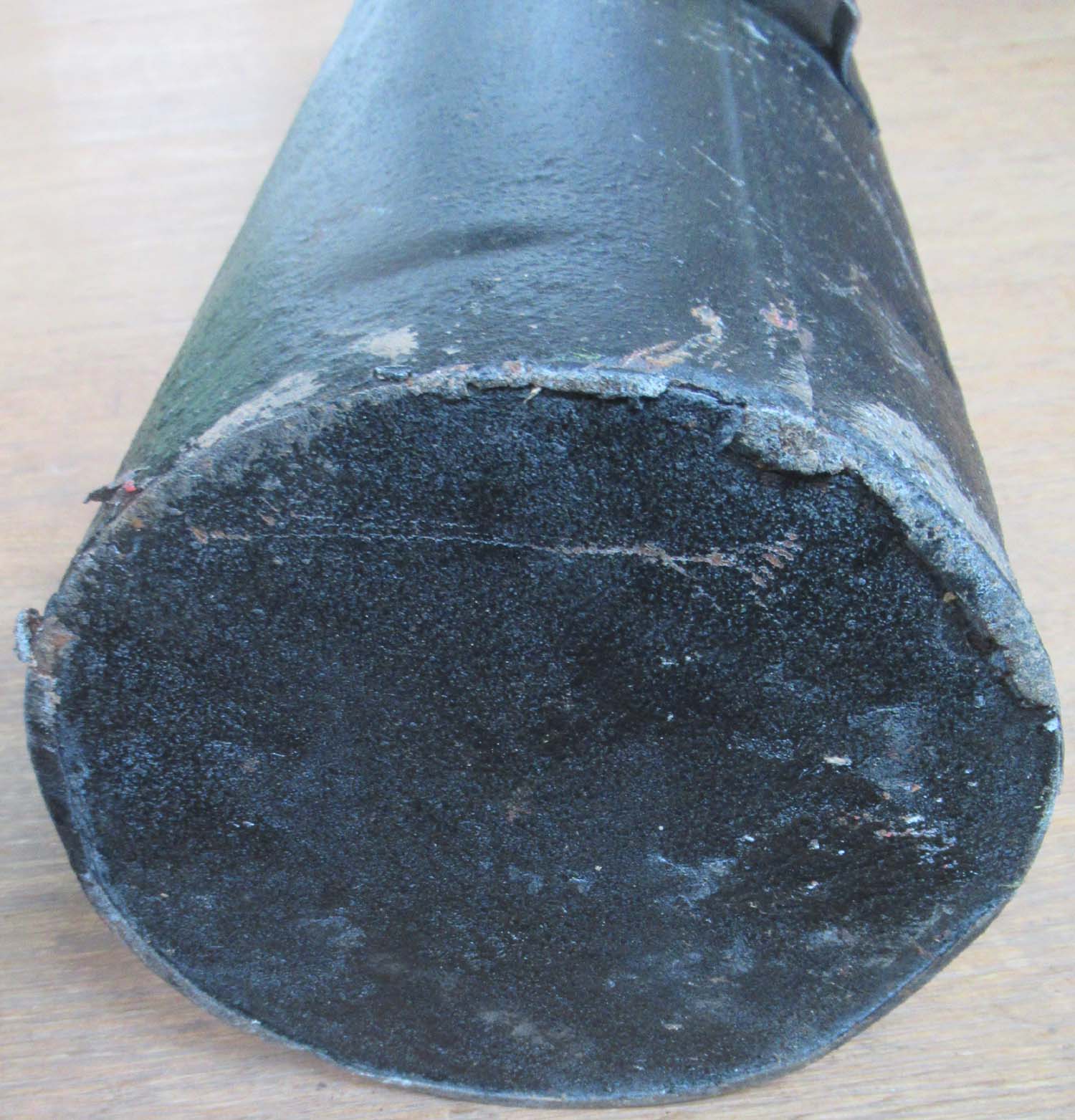
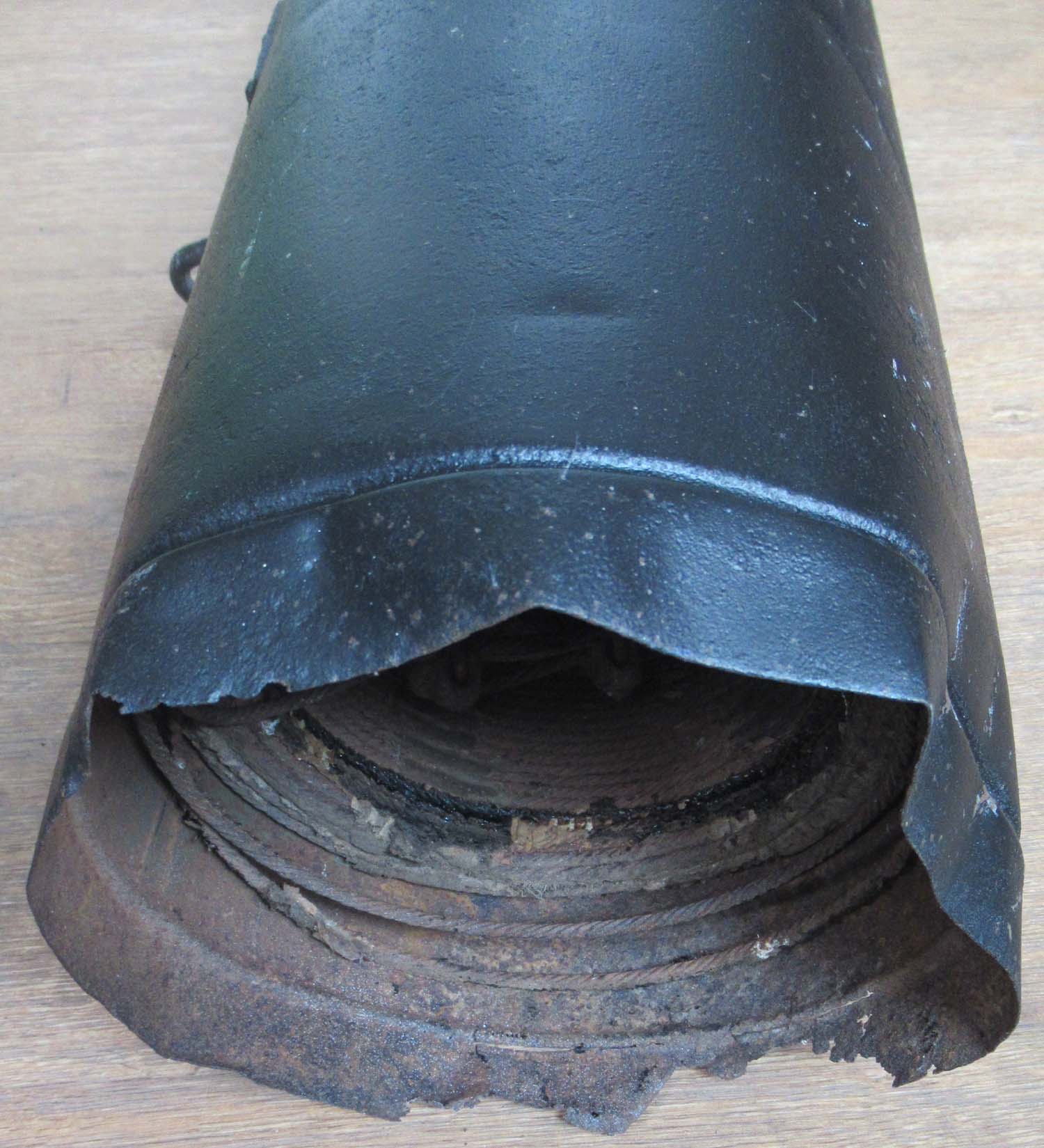
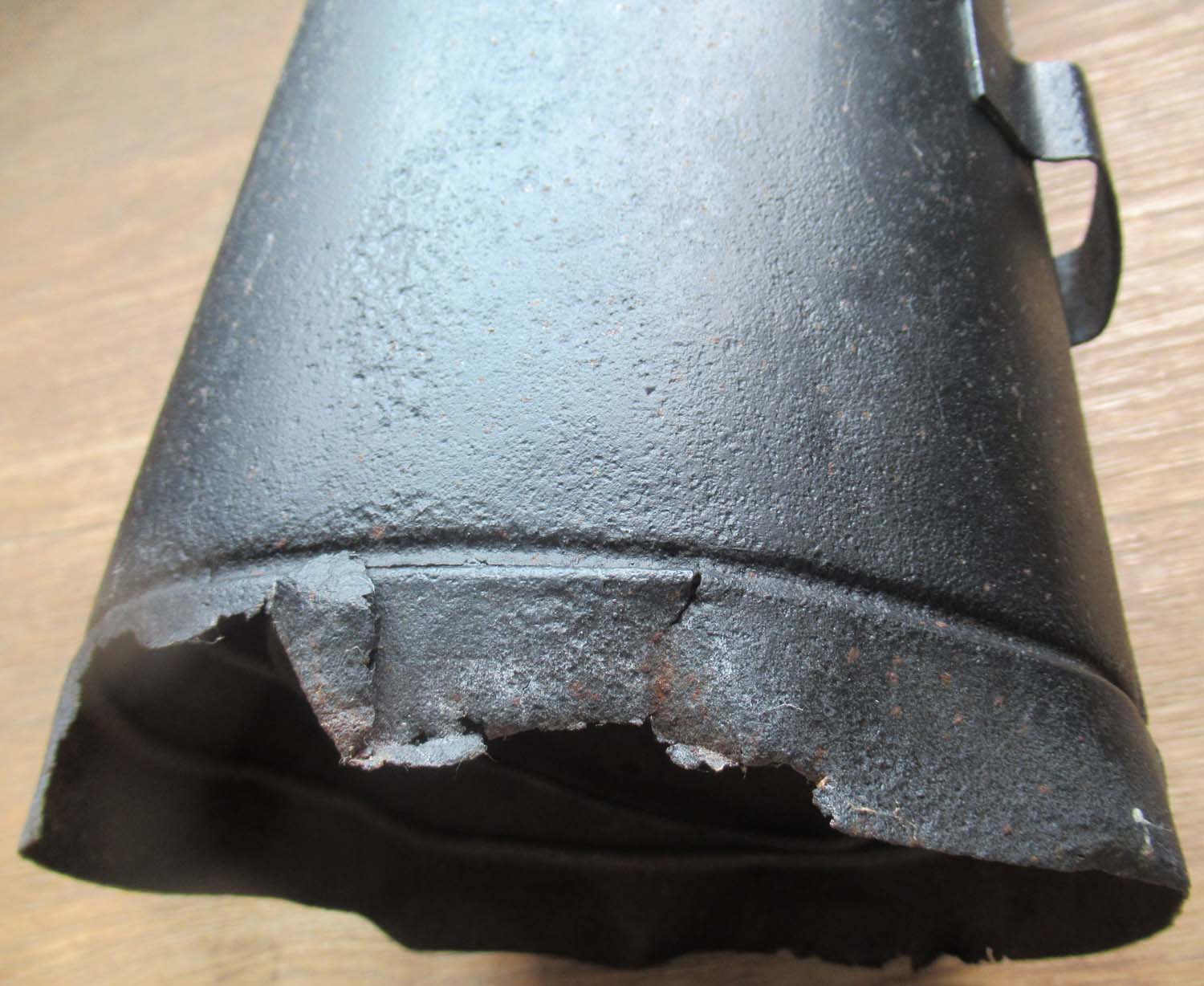
Available in the Rocket page link here
This piece is extremely heavy please
contact us for a shipping
quote.
|
|
Click on
pictures to enlarge
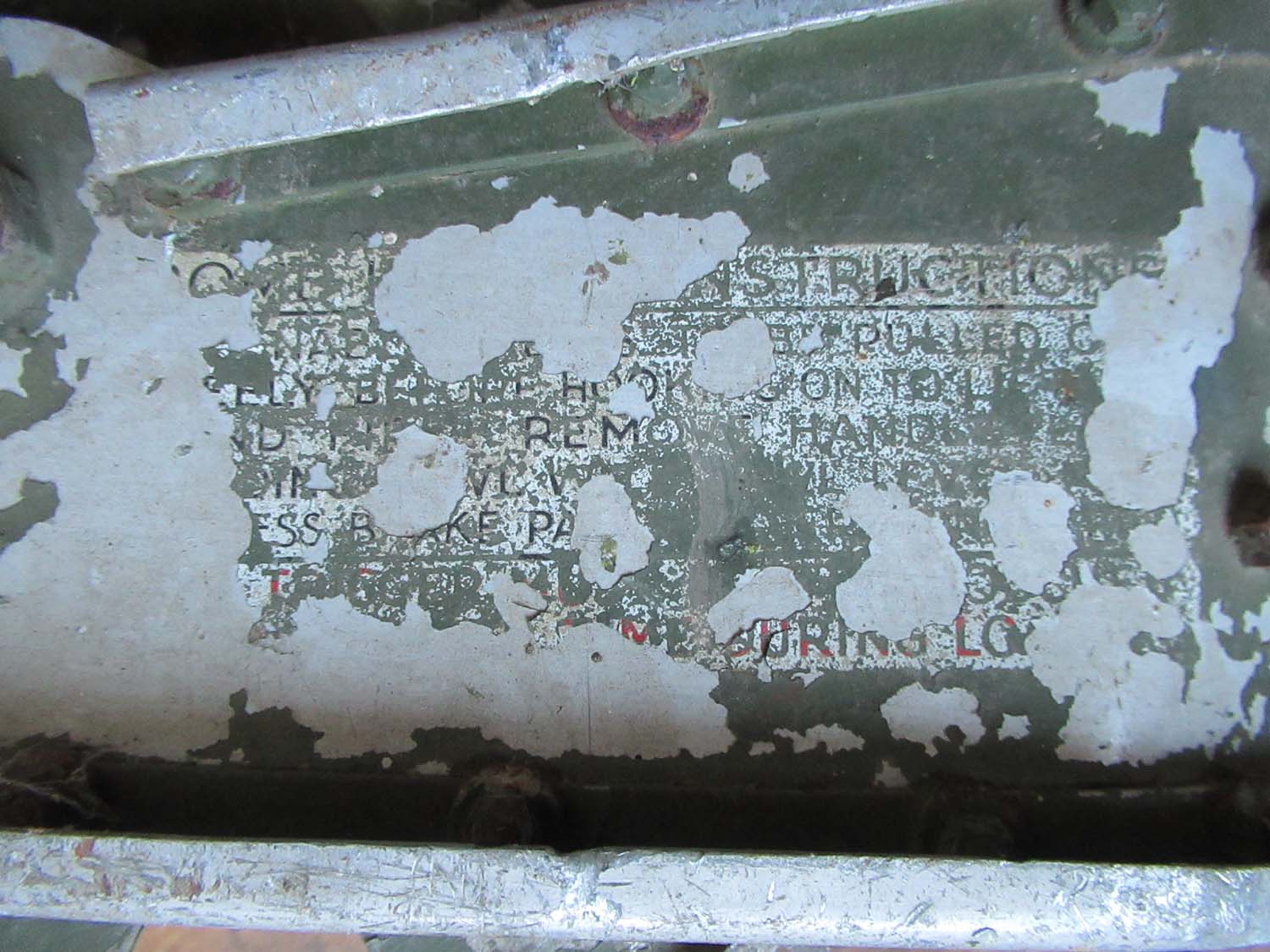
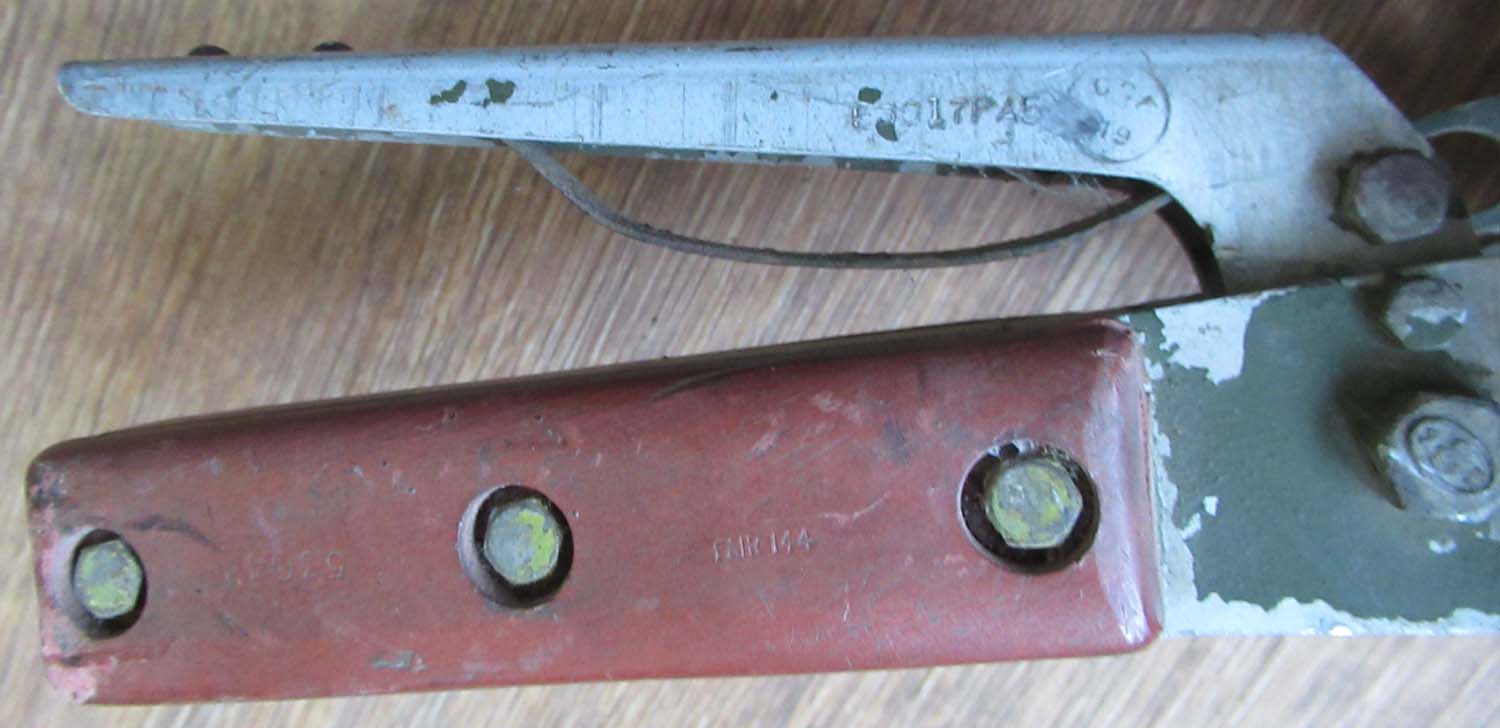
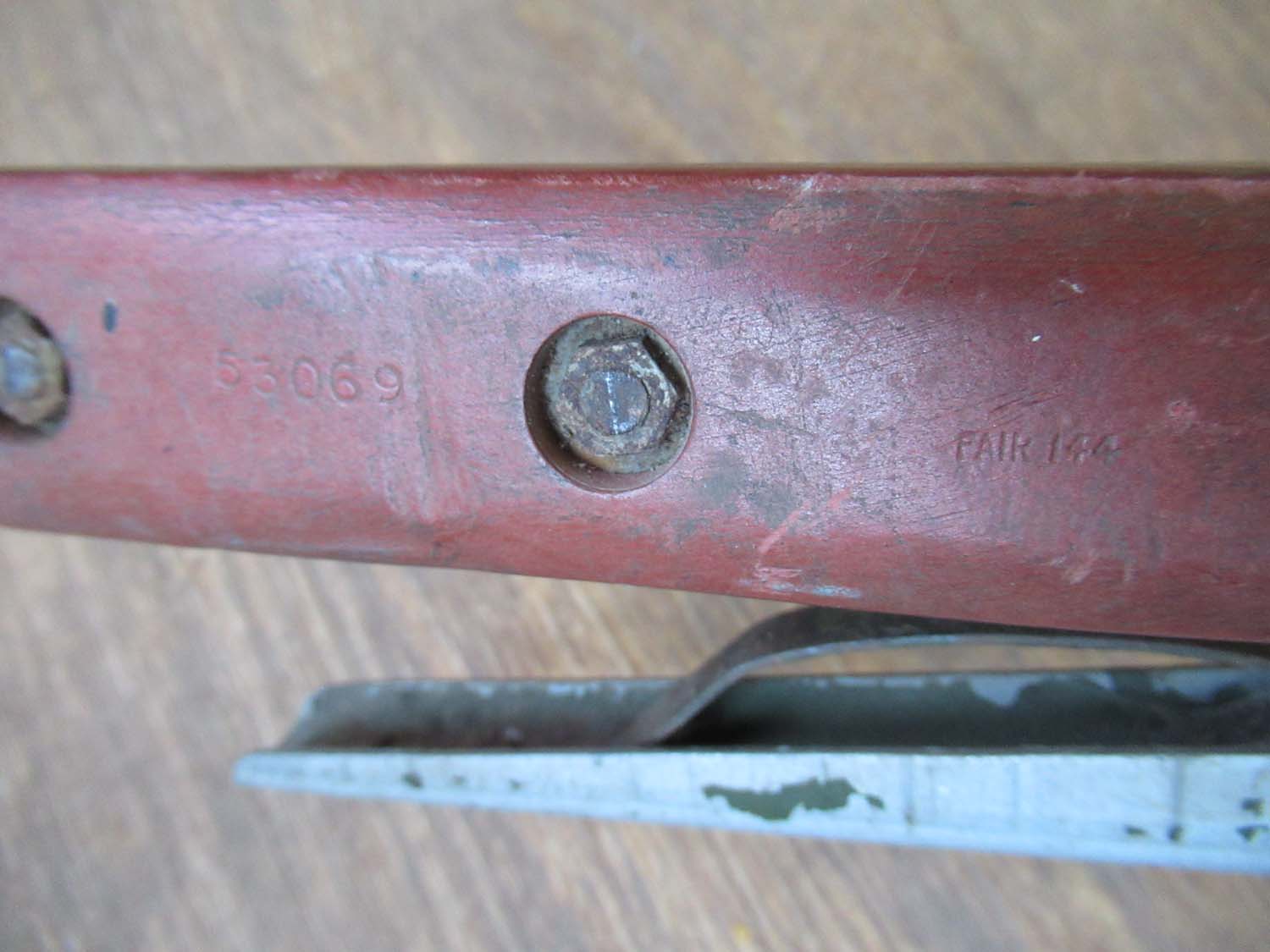
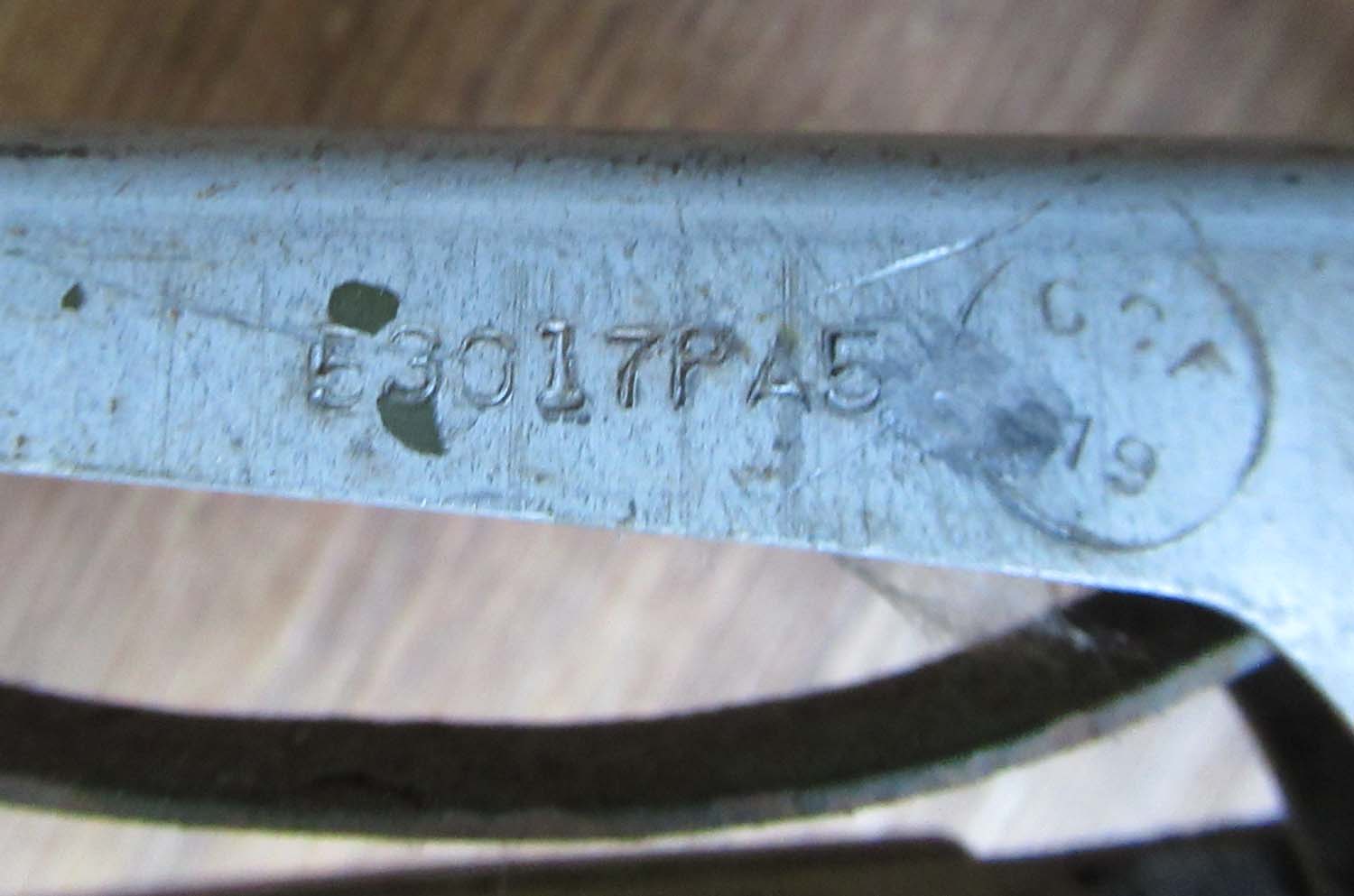
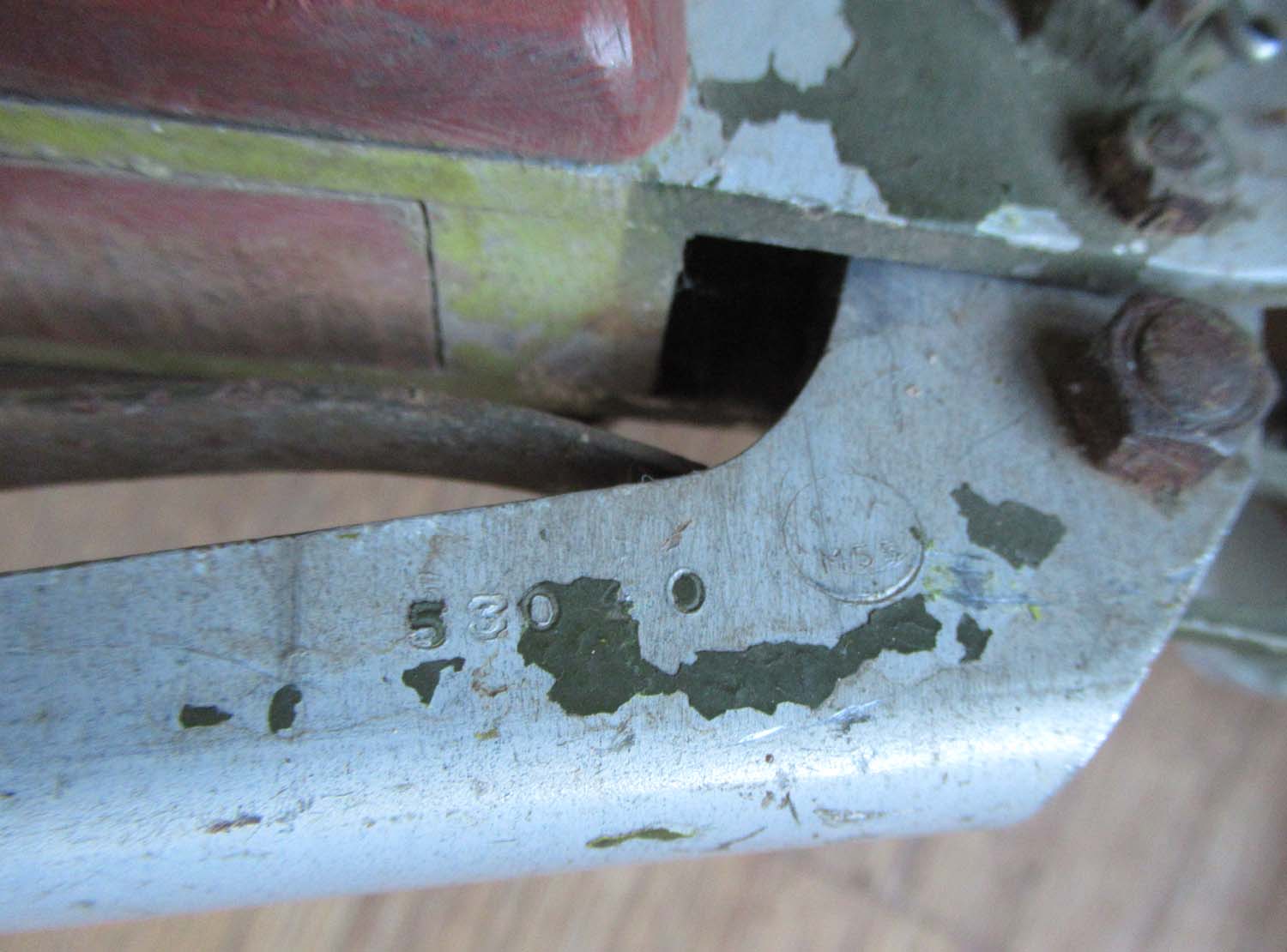
|
Blenheim
Bolingbroke Bomb hoist (No
111 pg1 Arm)
Here we have a really nice
piece its a bomb hoist used to load bombs into the bomb bay
of the Bristol Blenheim or Canadian Bolingbroke. Its a
superb piece of engineering in good original condition.
Click on
pictures to enlarge
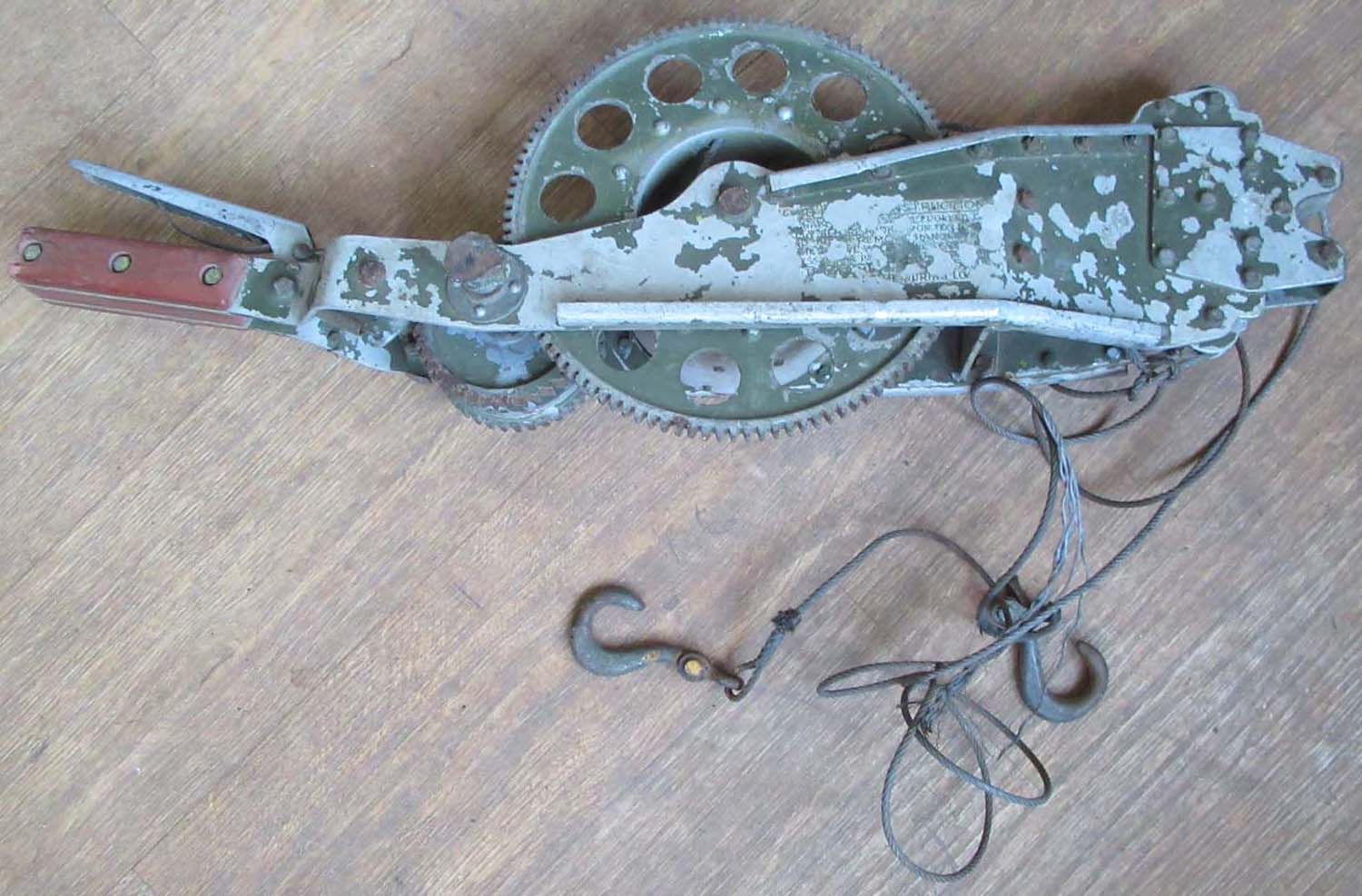
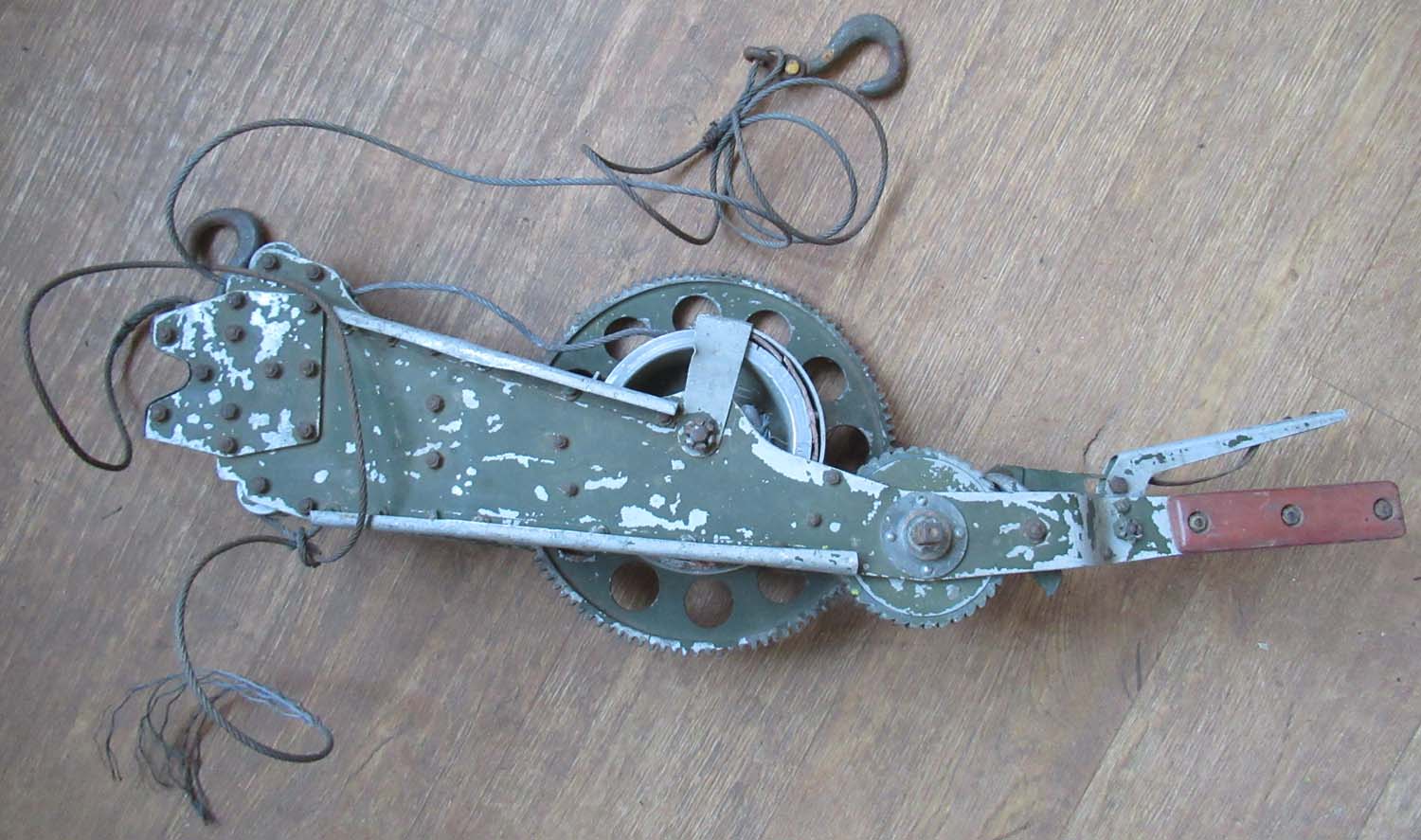
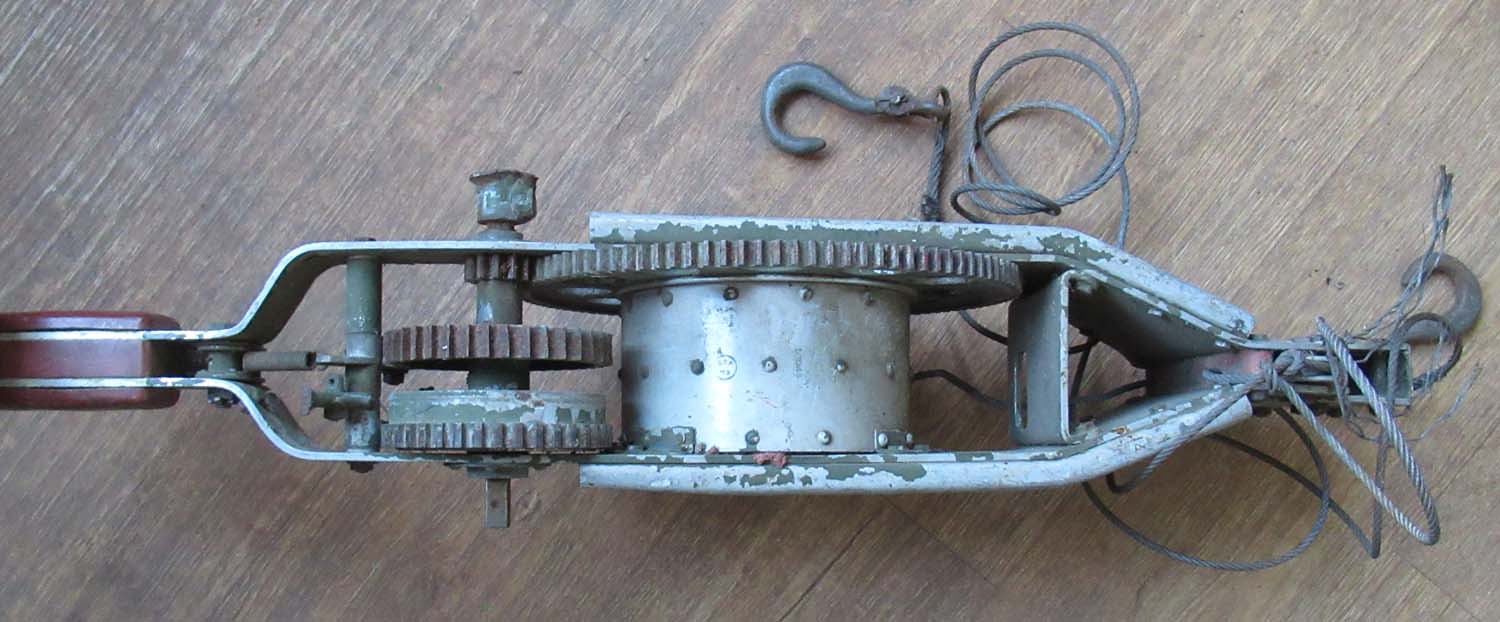
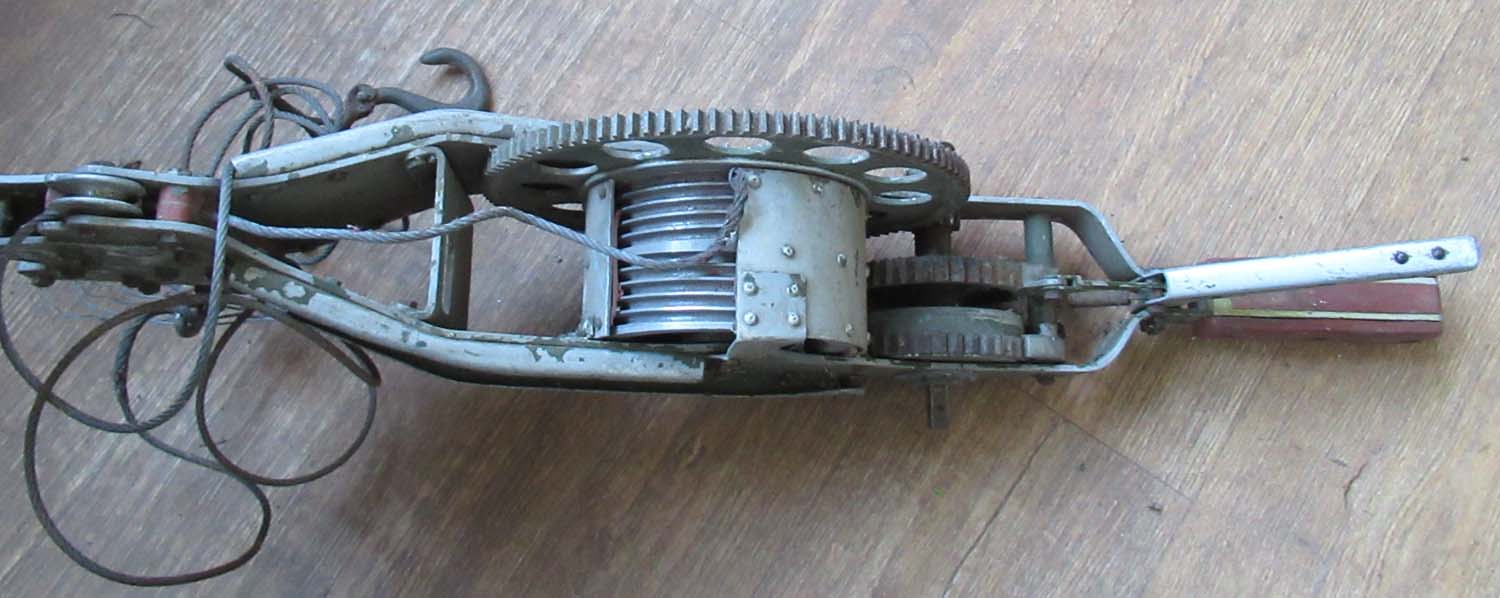
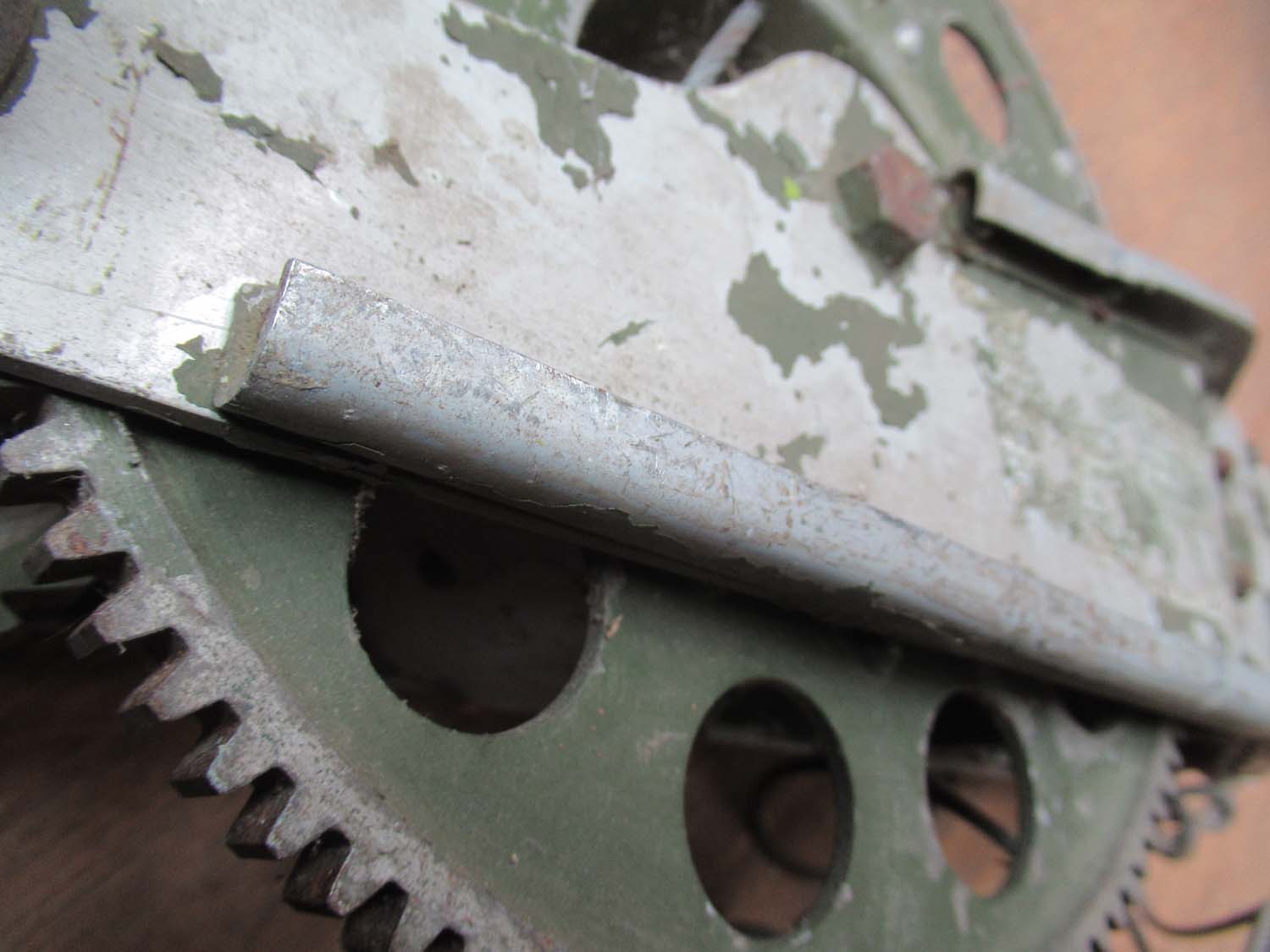 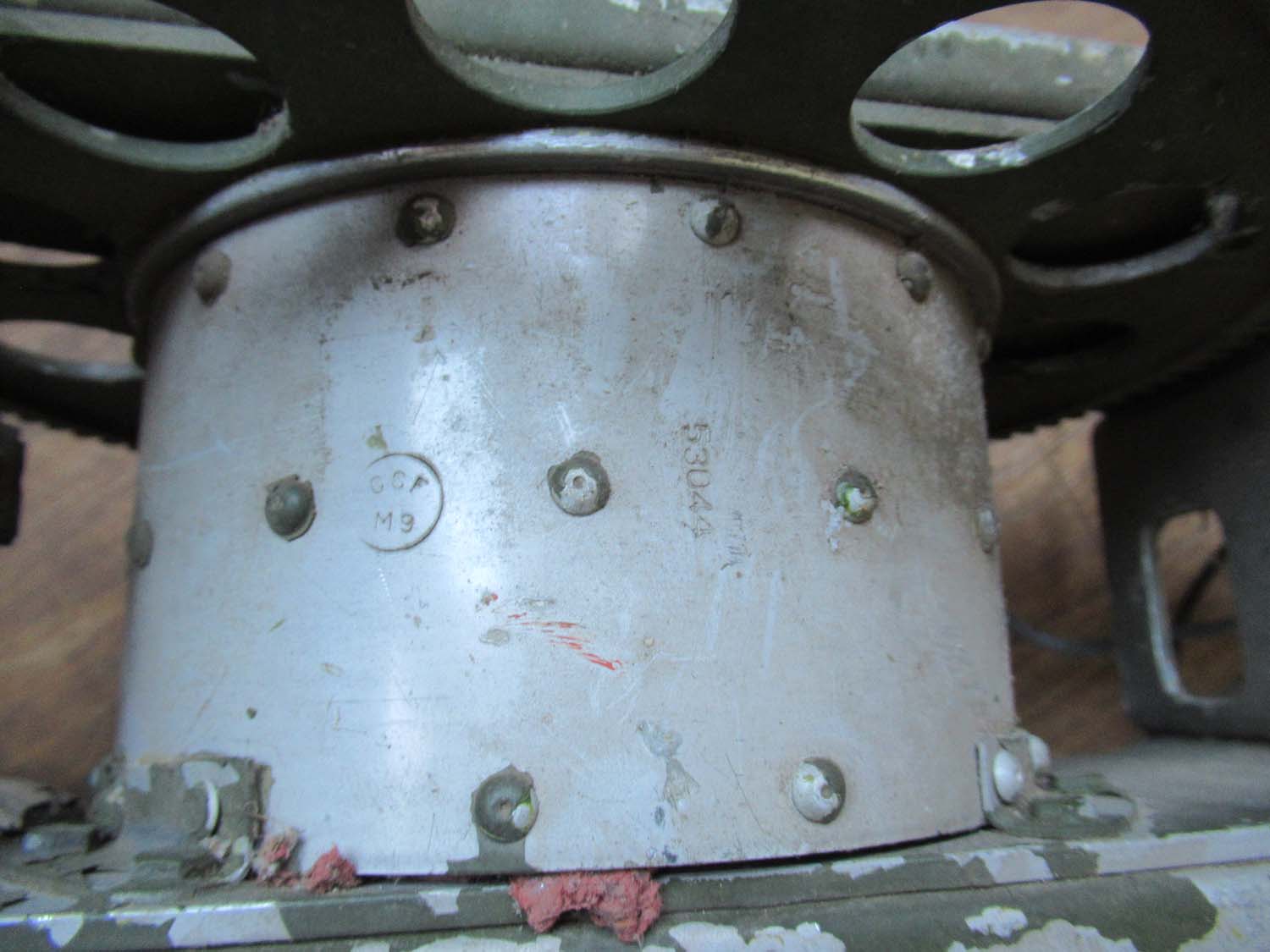 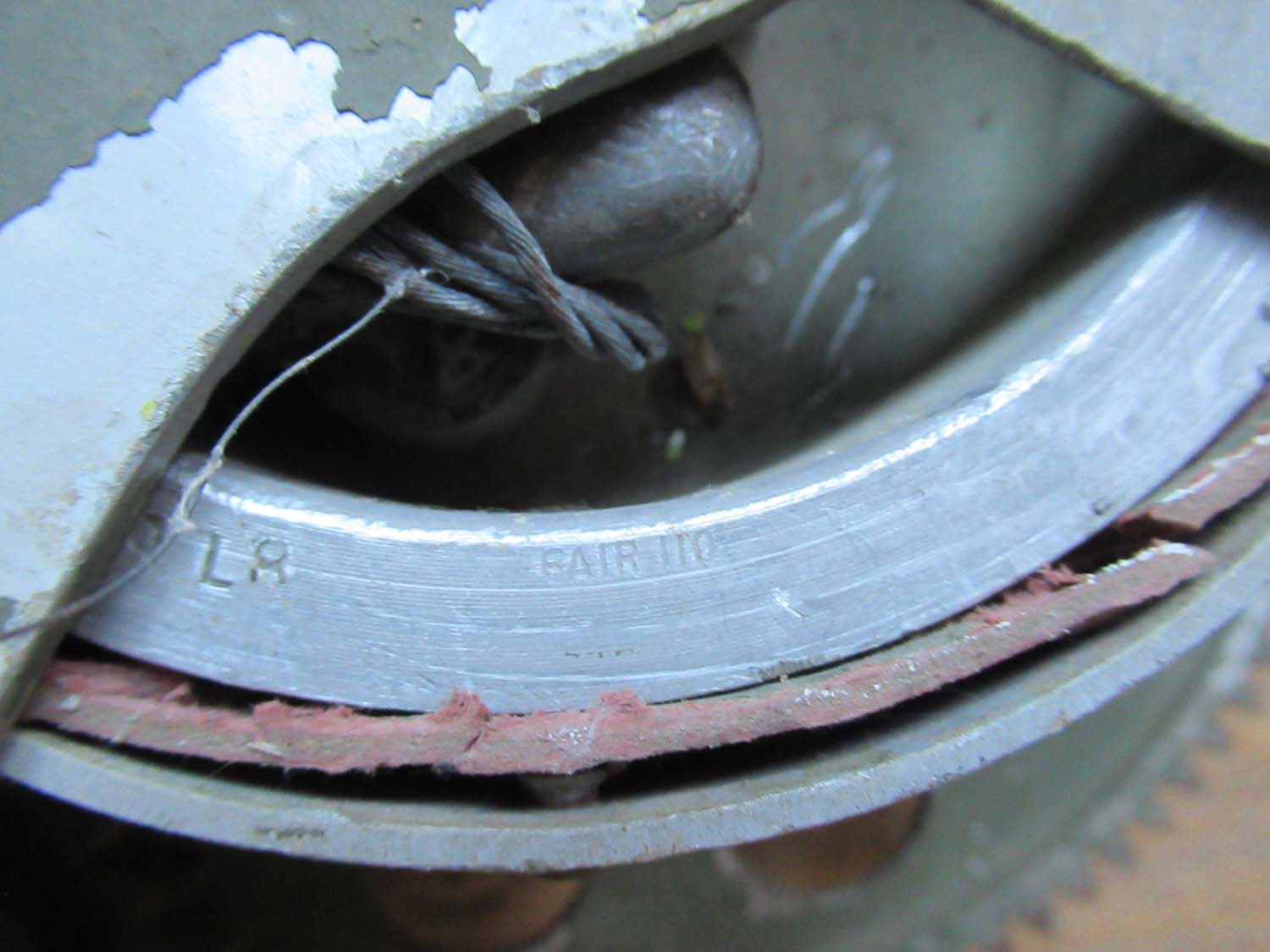
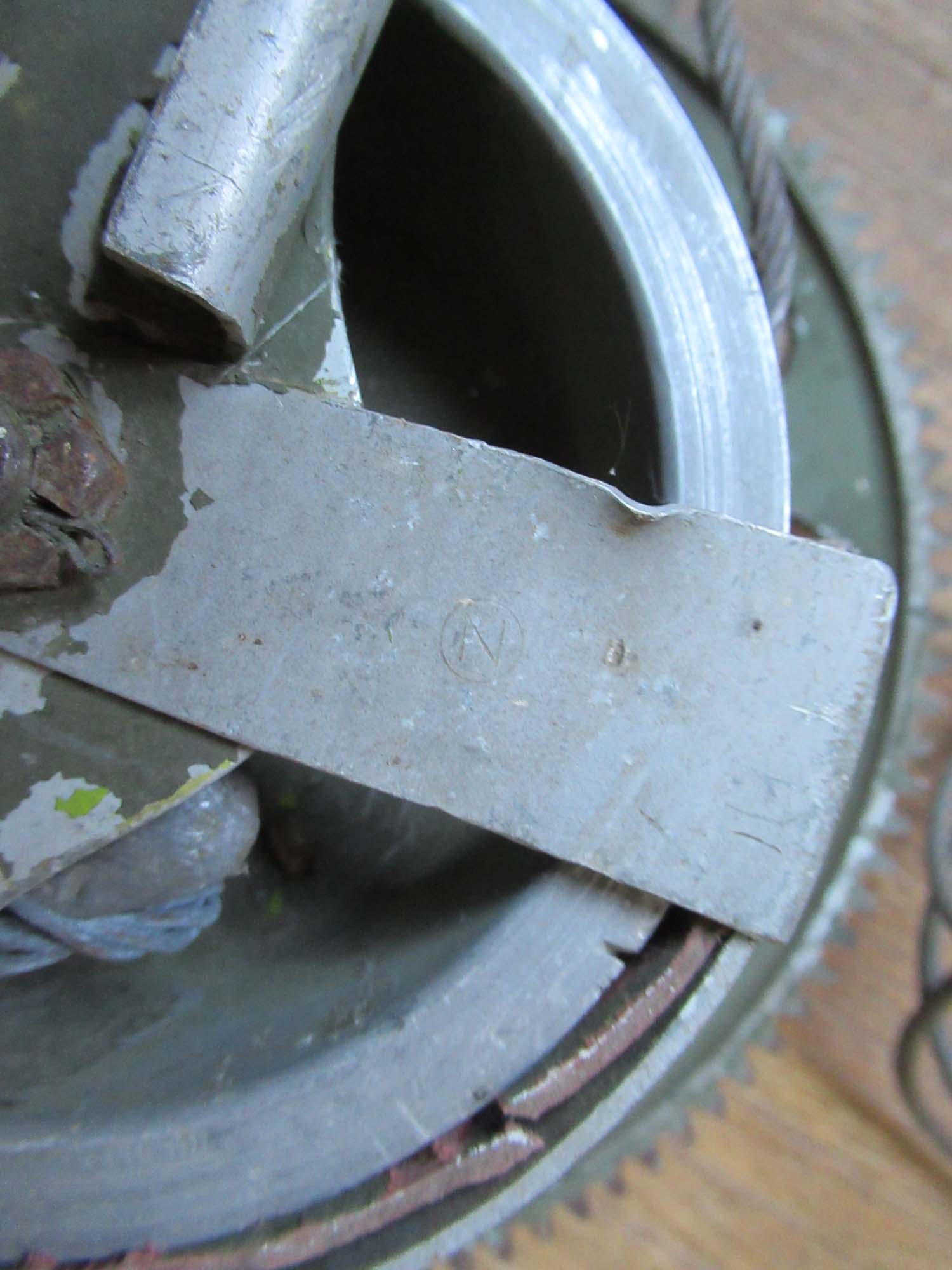
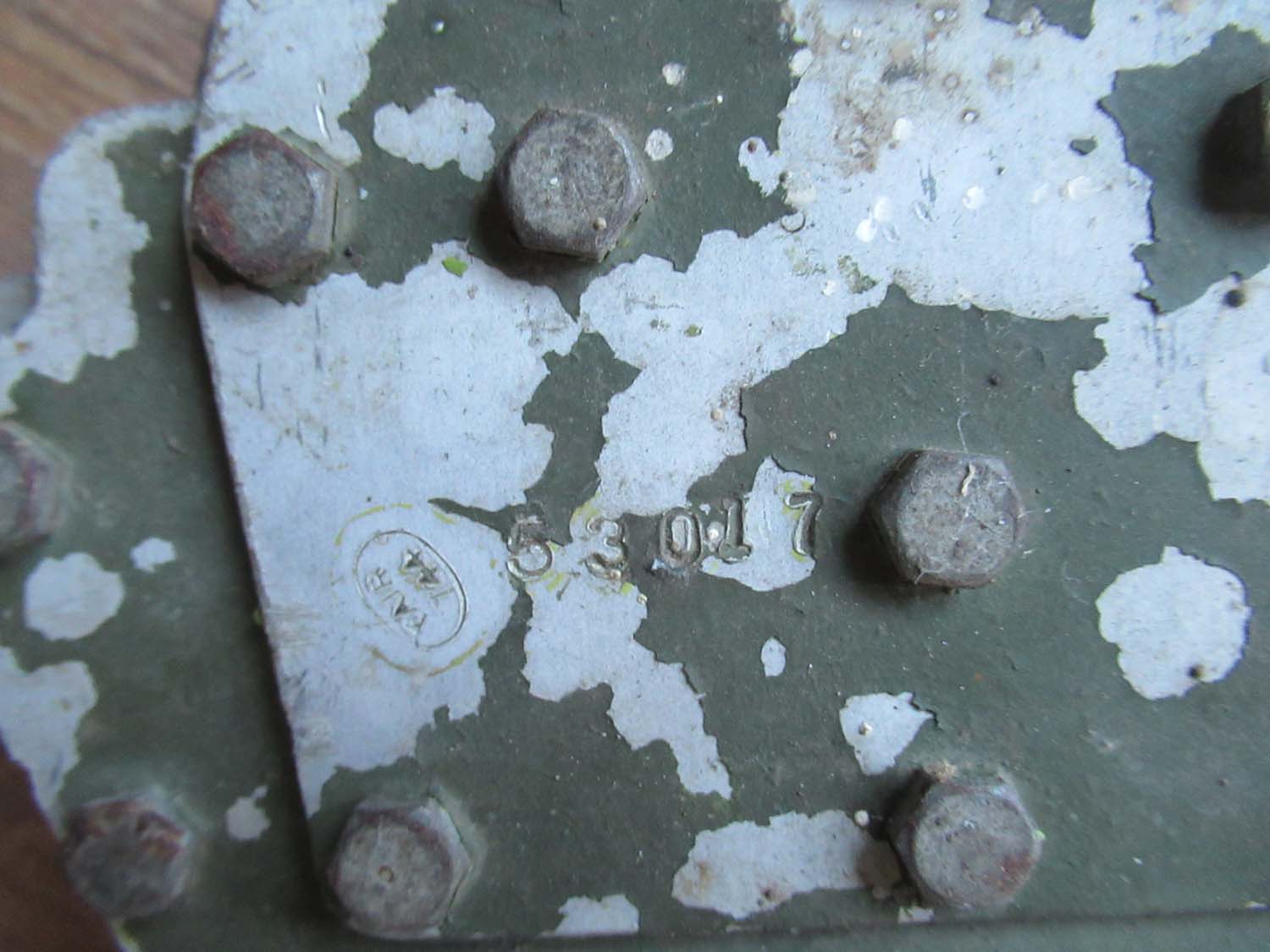
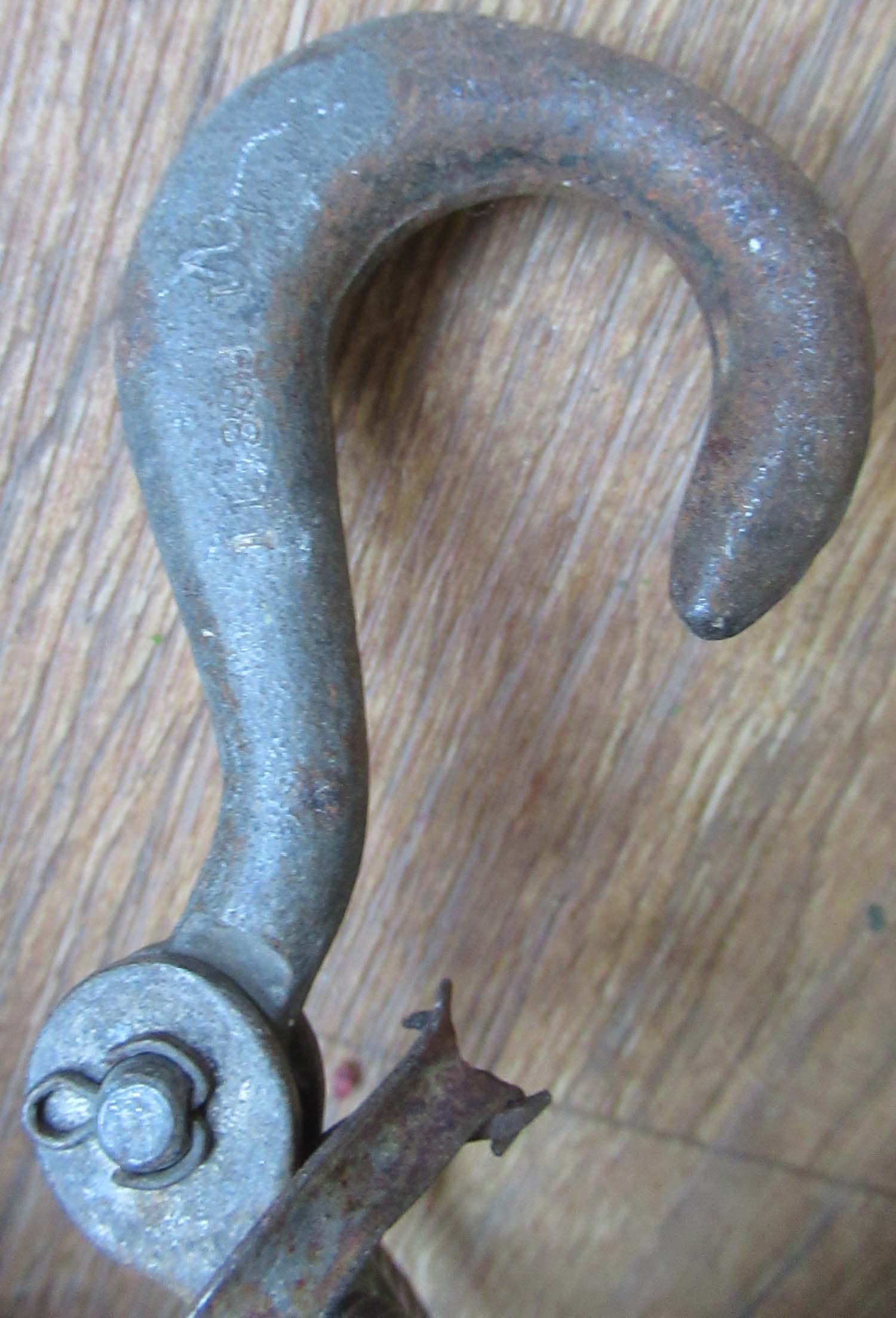
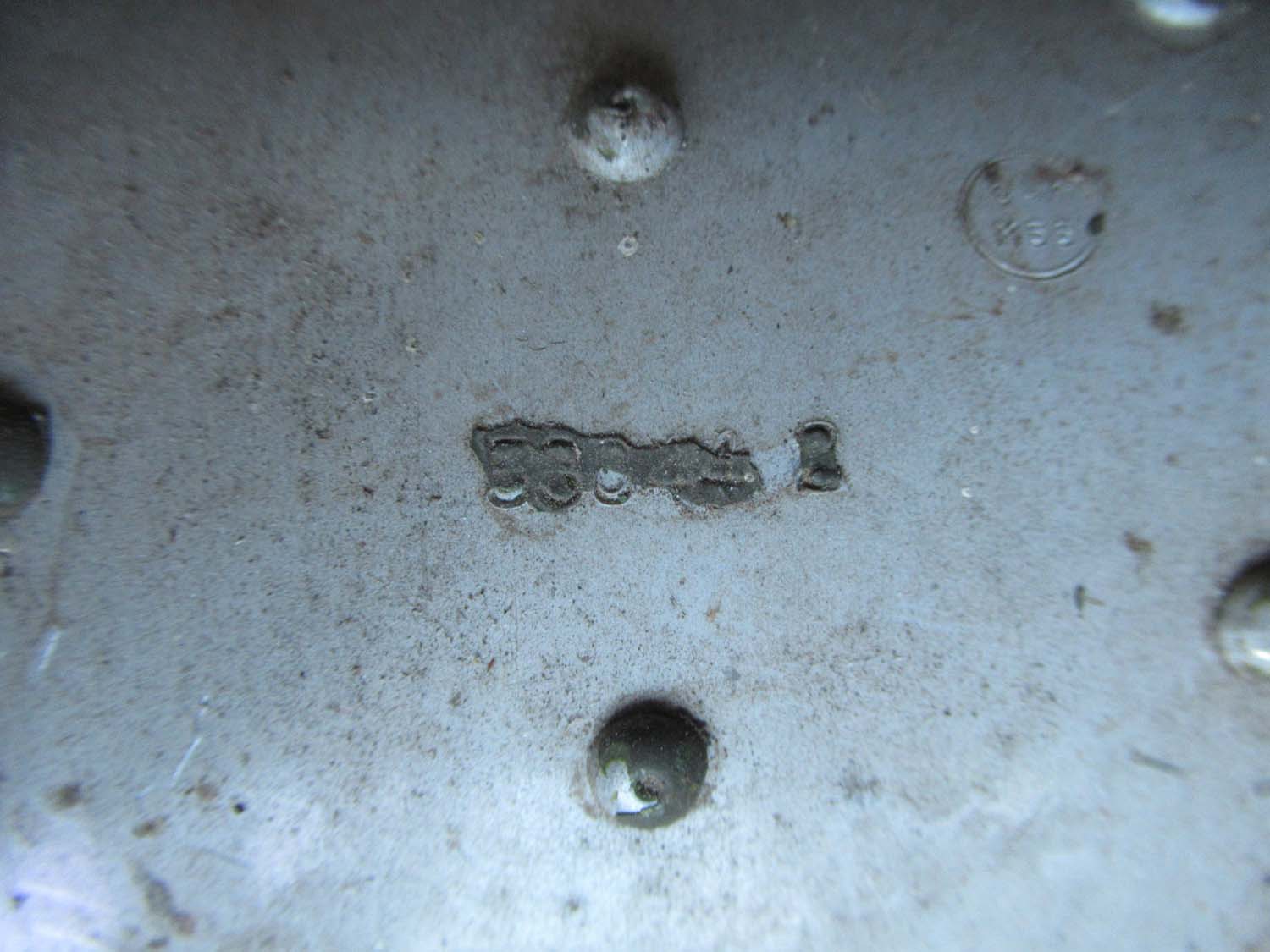
£295


This is a large and heavy
item
Please contact me for a quote.
|
|
Click on
pictures to enlarge
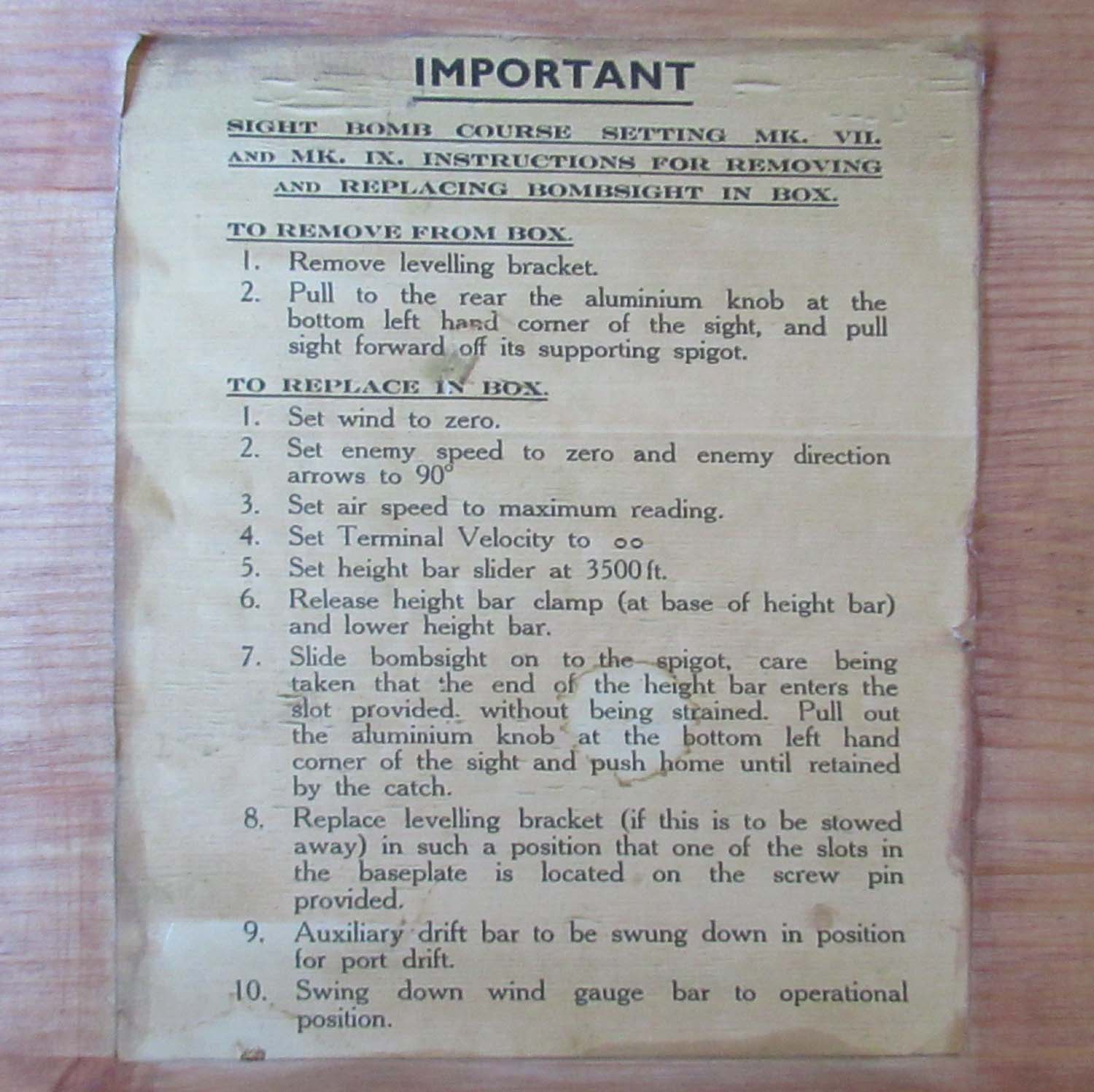
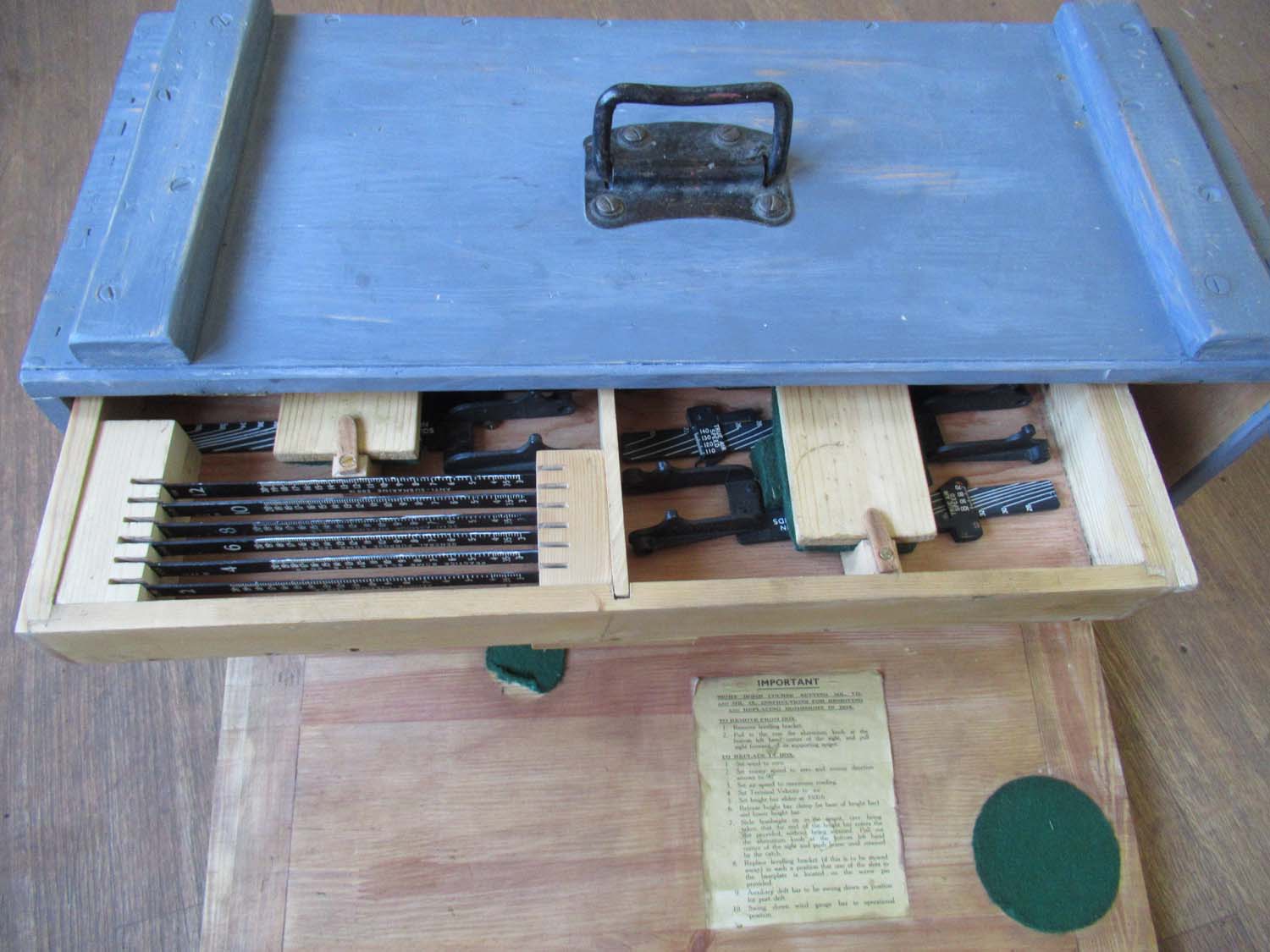
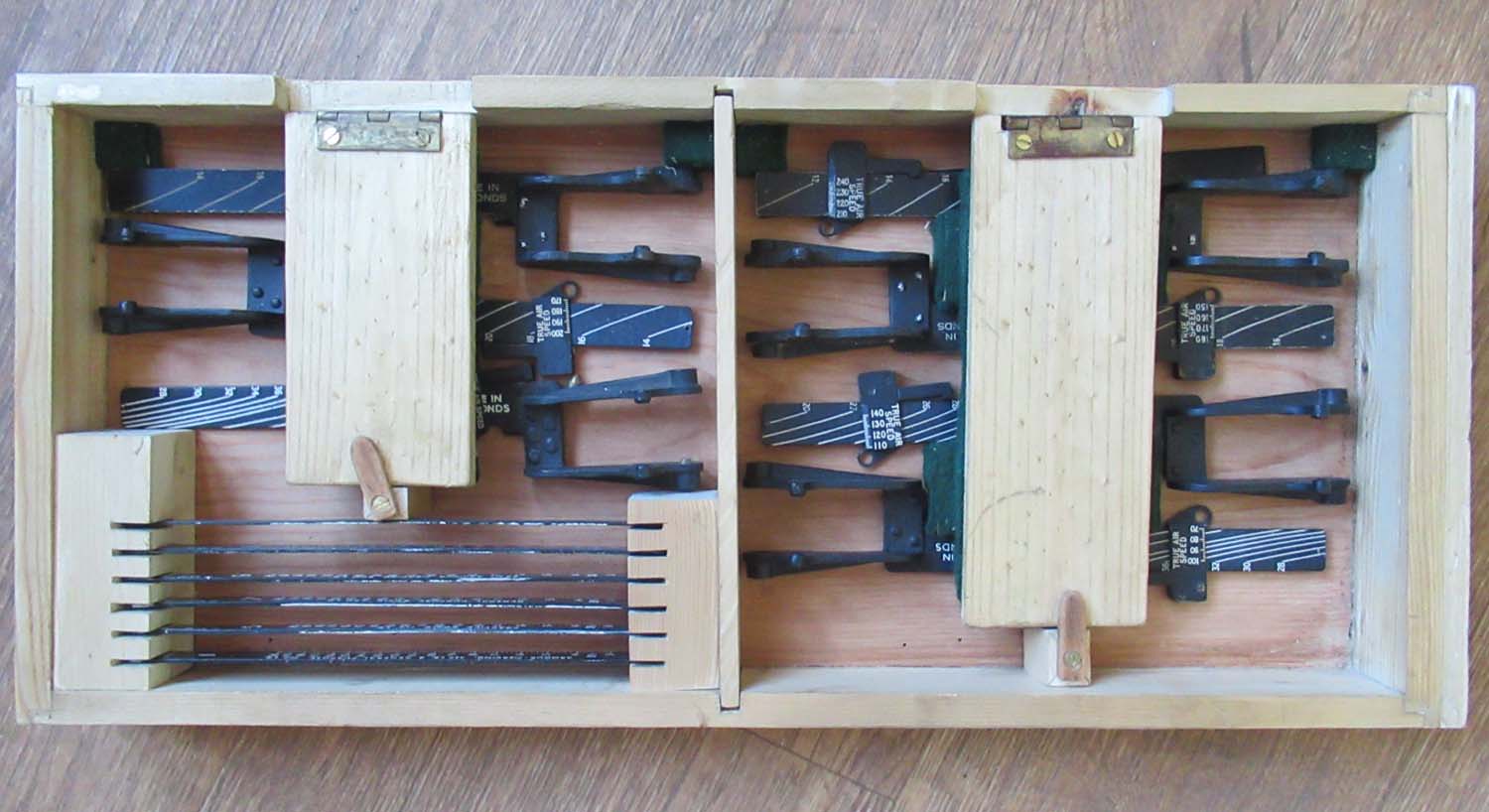
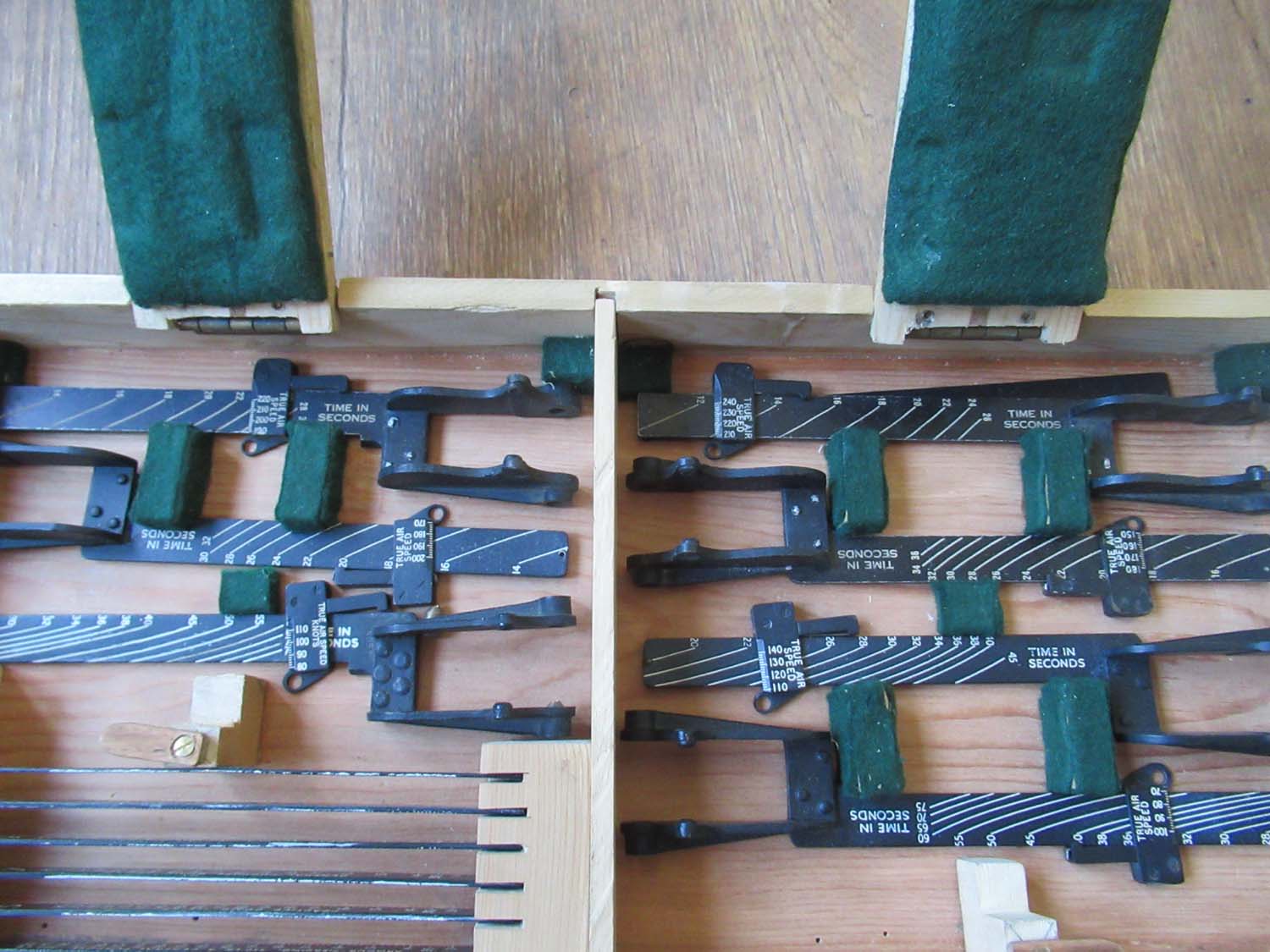
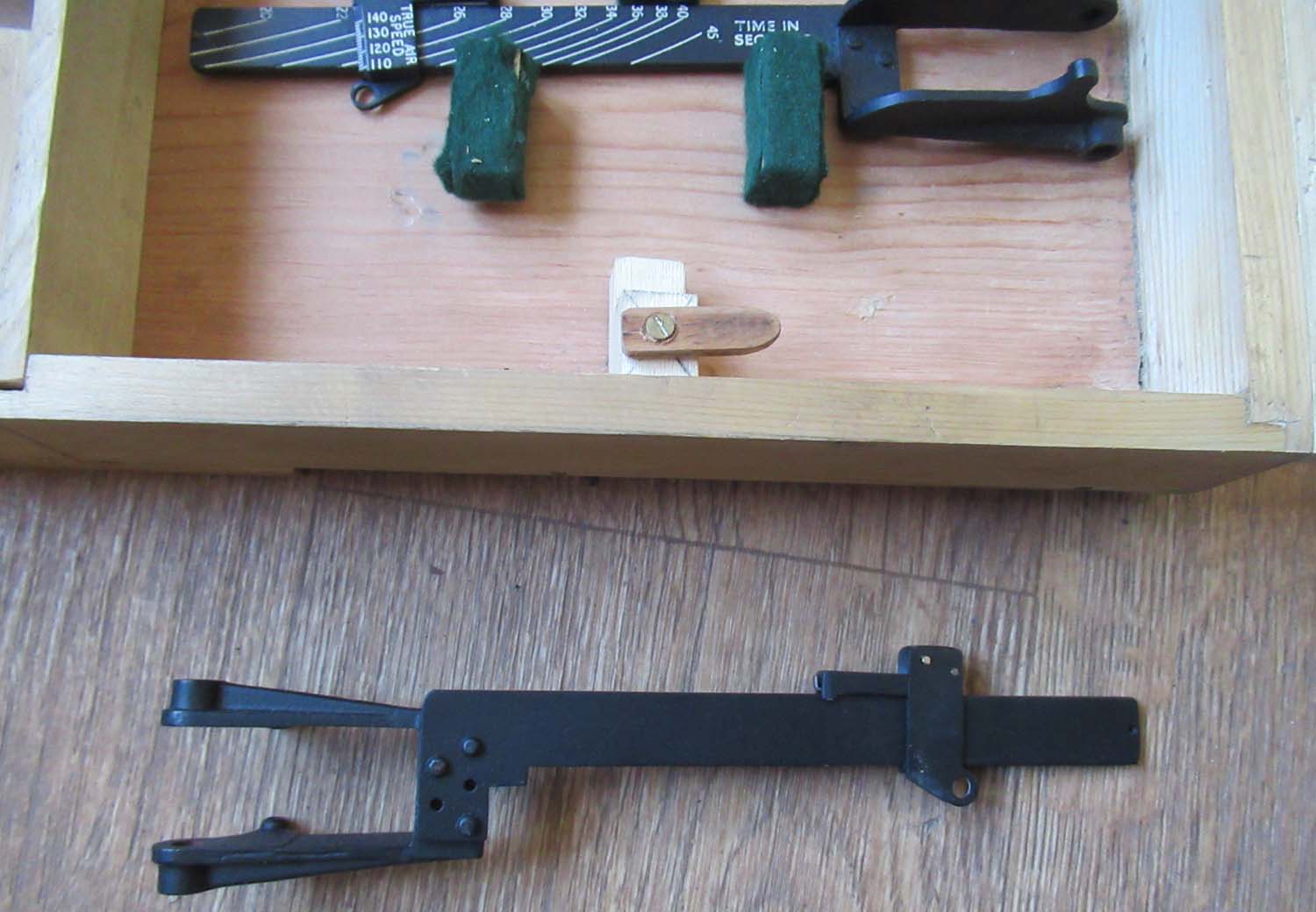
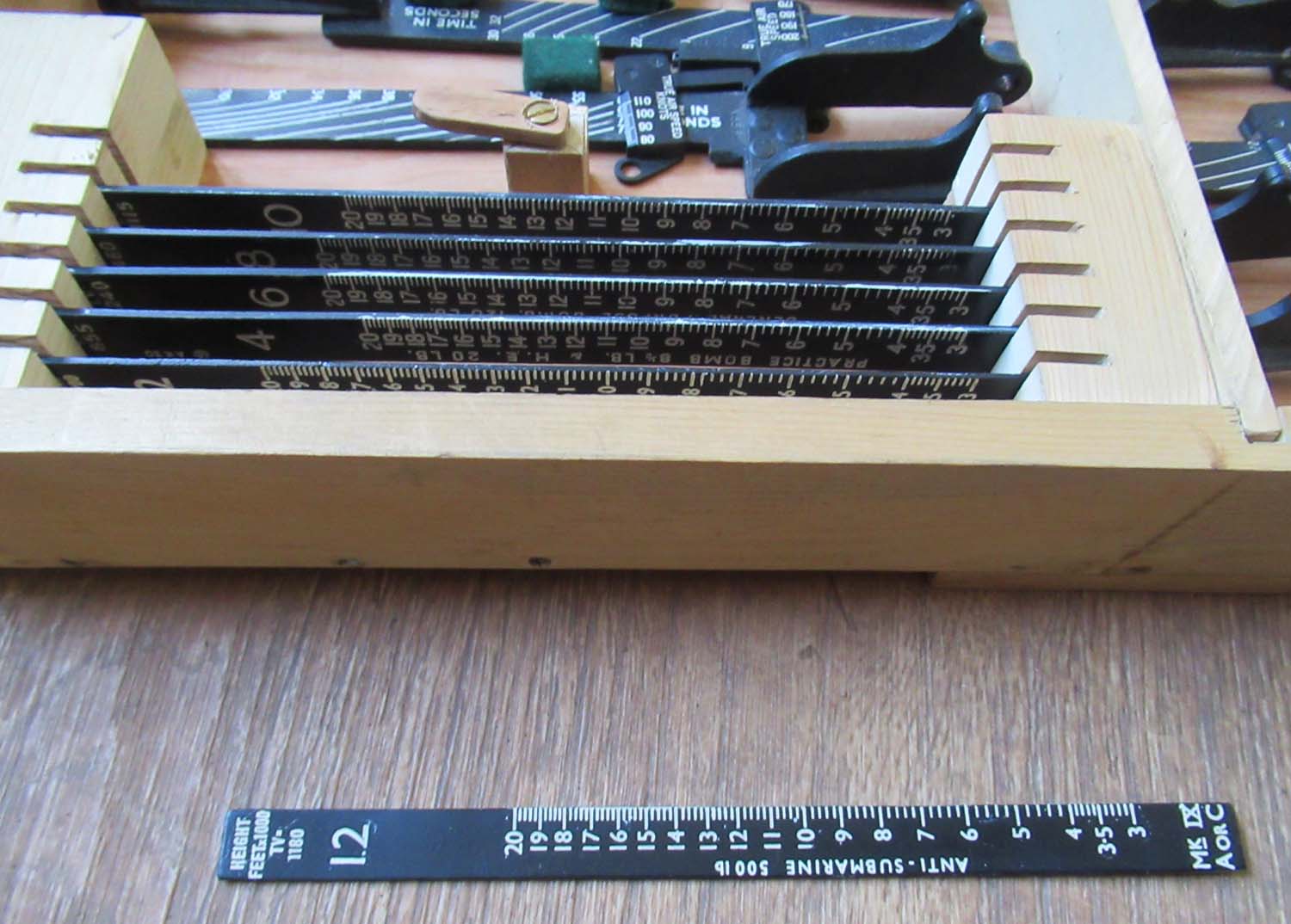
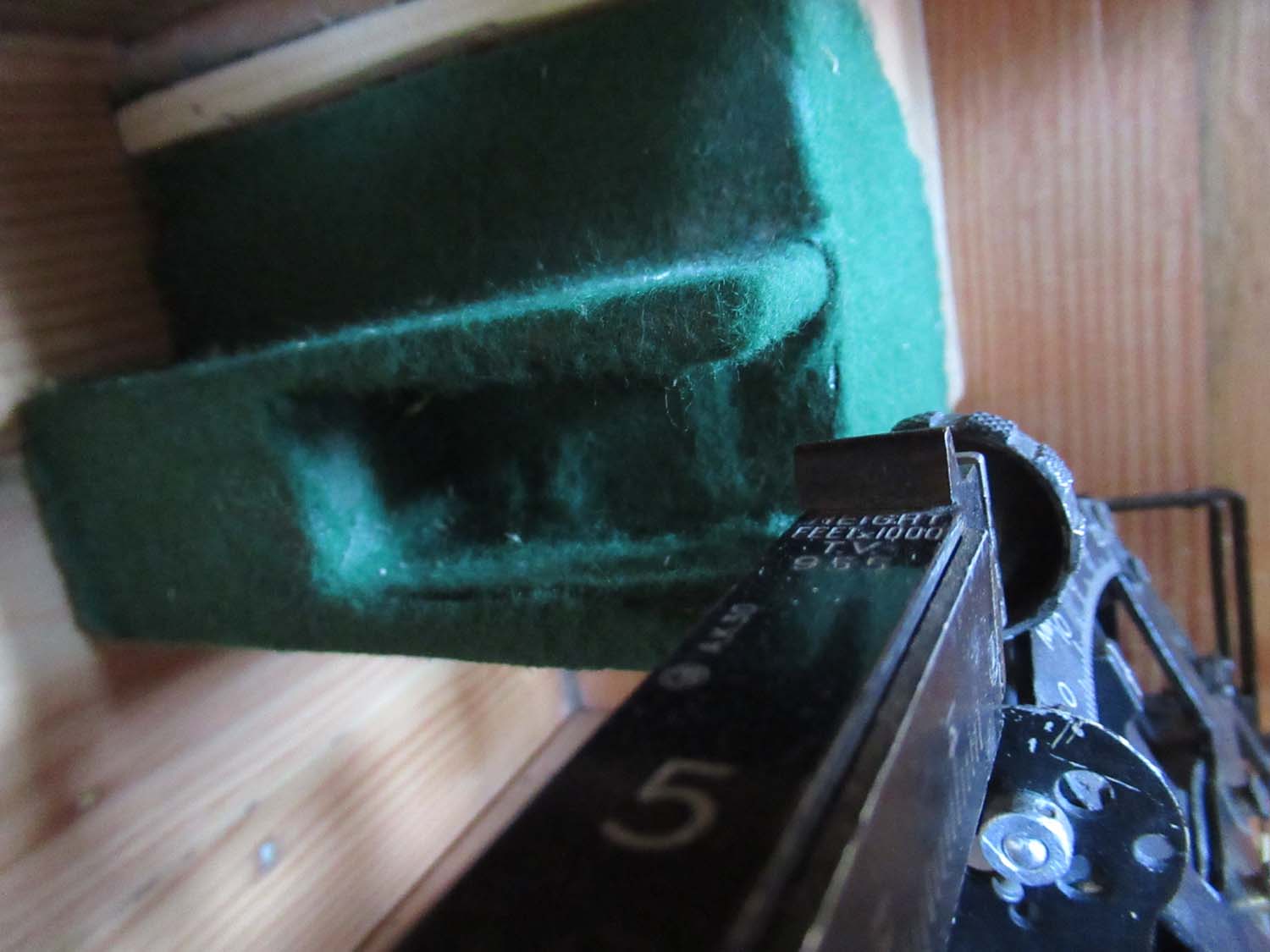
|
Mark IX A Course
Setting Bomb Sight (No
110 pg1 Arm)
Here we have a superb and
rare MK IX course setting bombsight used in both World Wars.
This example comes complete in its original transit box and
I have not seen a better example of this ornate and rare
sight.
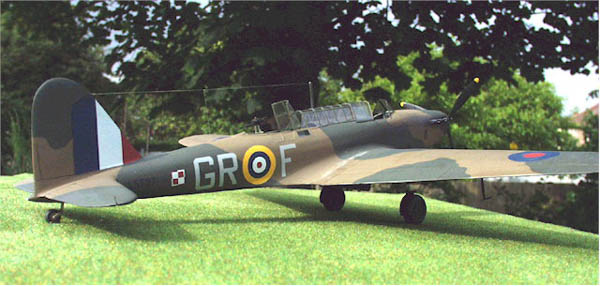 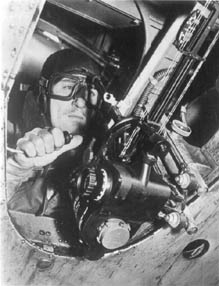
Shown above the fairey
Battle and the MK IX fitted to a Battle.
Dated 1942
Ref No: 9/1623
Serial No:
1148/42
The Course Setting Bomb Sight
(CSBS) is the canonical vector bombsight, the first
practical system for properly accounting for the effects of
wind when dropping bombs.
It is also widely referred to as
the Wimperis sight after its inventor, Harry Wimperis.
The CSBS was developed for the Royal Naval Air Service (RNAS)
in order to attack submarines and ships.
It was introduced
in 1917, and was such a great advance over earlier designs
that it was quickly adopted by the Royal Flying Corps.
It
has been called "the most important bomb sight of WWI.
After the WWI the design found widespread use around the
world. A US version of the CSBS was used by Billy Mitchell
on his famous attack on the Ostfriesland in 1921.
The basic
design was adapted by almost all air forces and used well
into World War II. It was eventually replaced in British
service by more advanced designs like the Mark XIV bomb
sight and the Stabilized Automatic Bomb Sight. Other
services used vector bombsights throughout the war.
Click on
pictures to enlarge
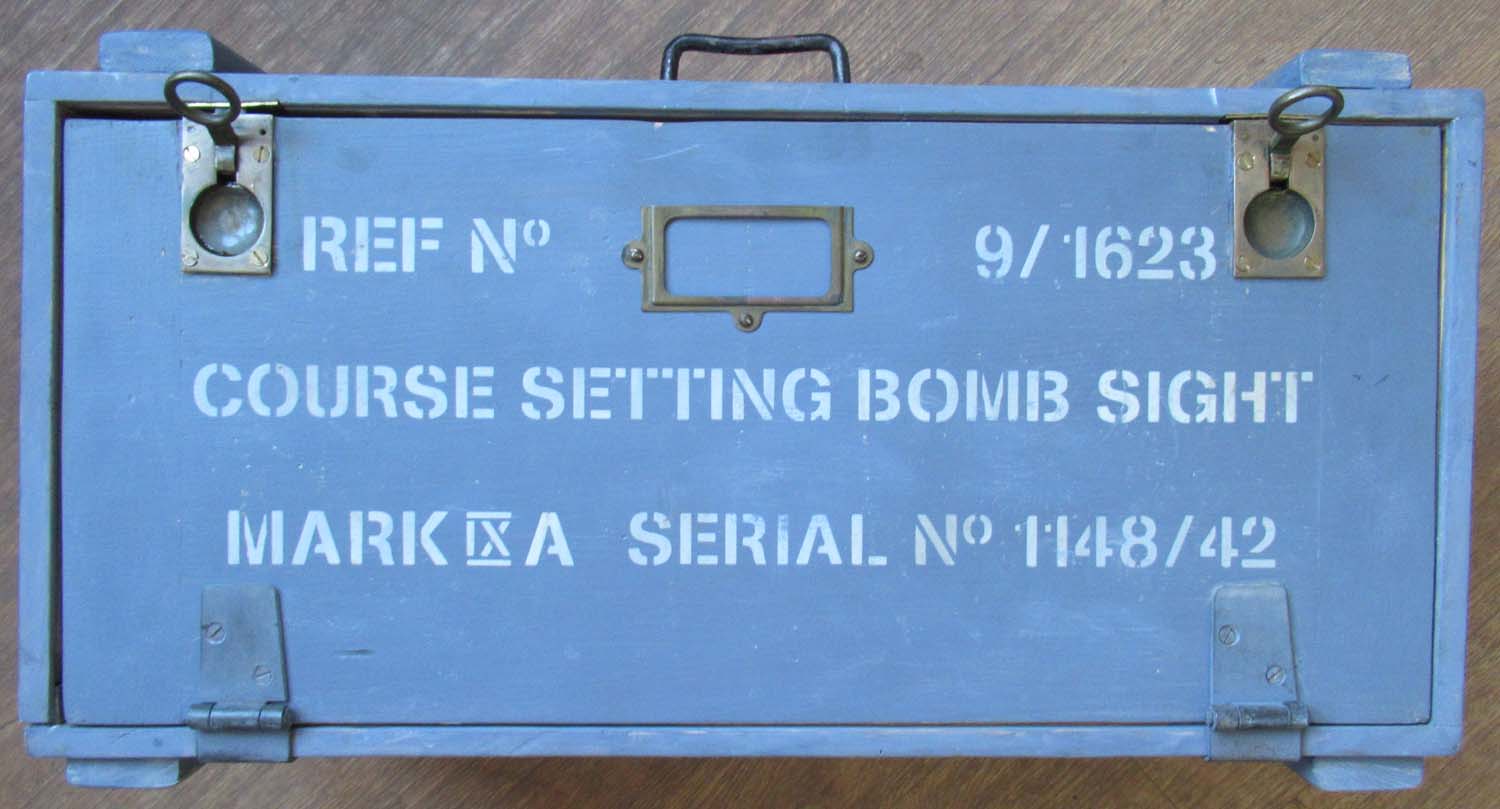 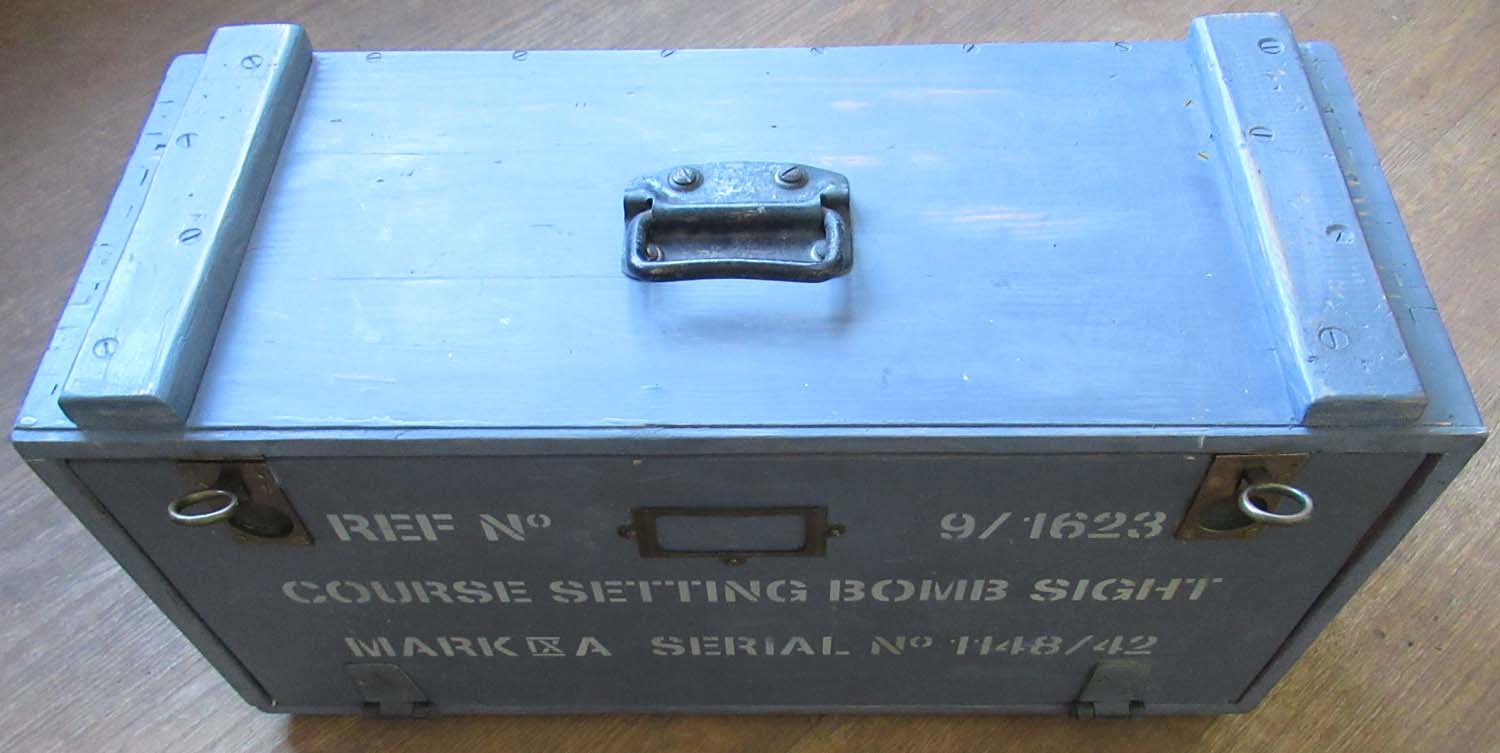 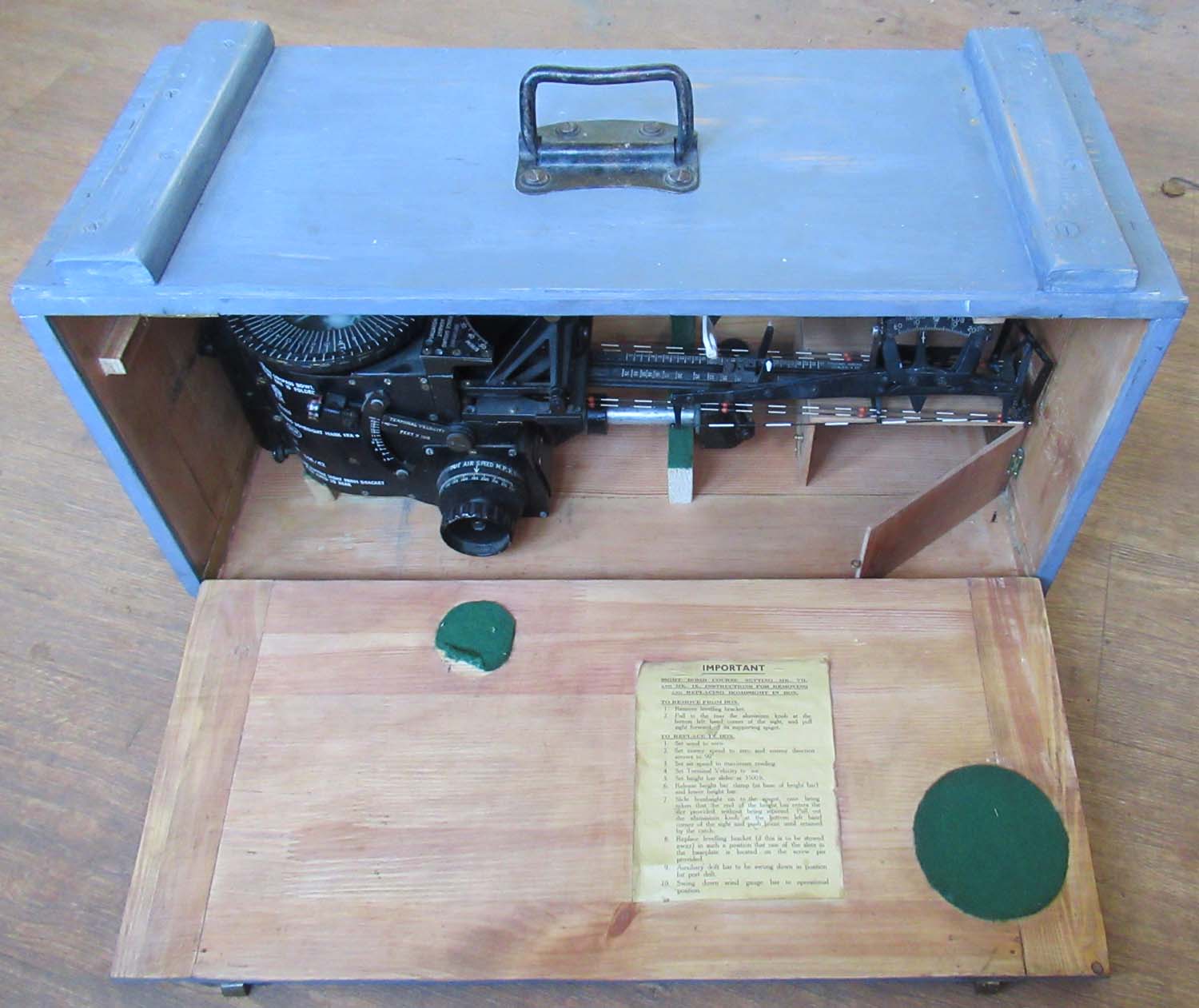
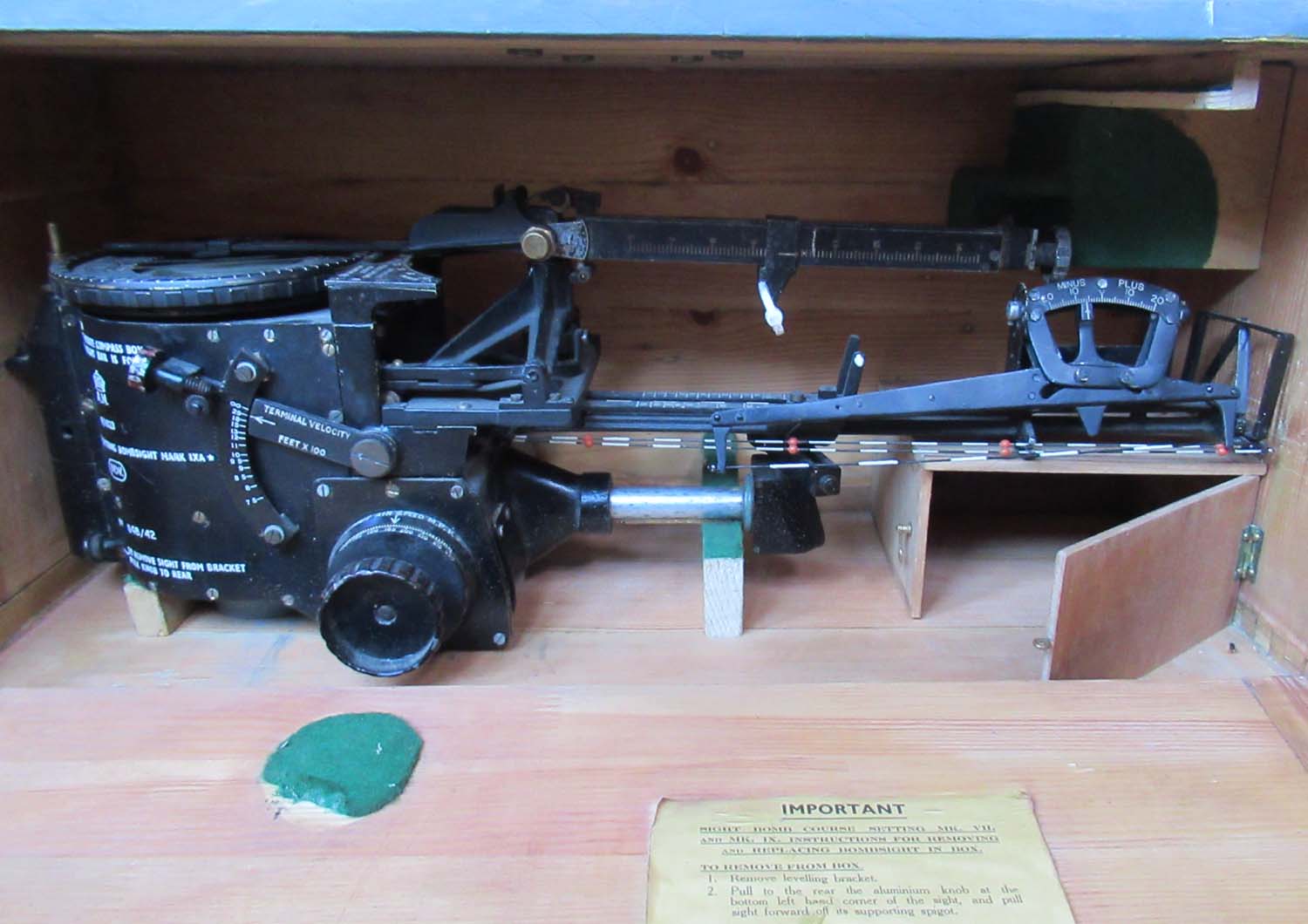
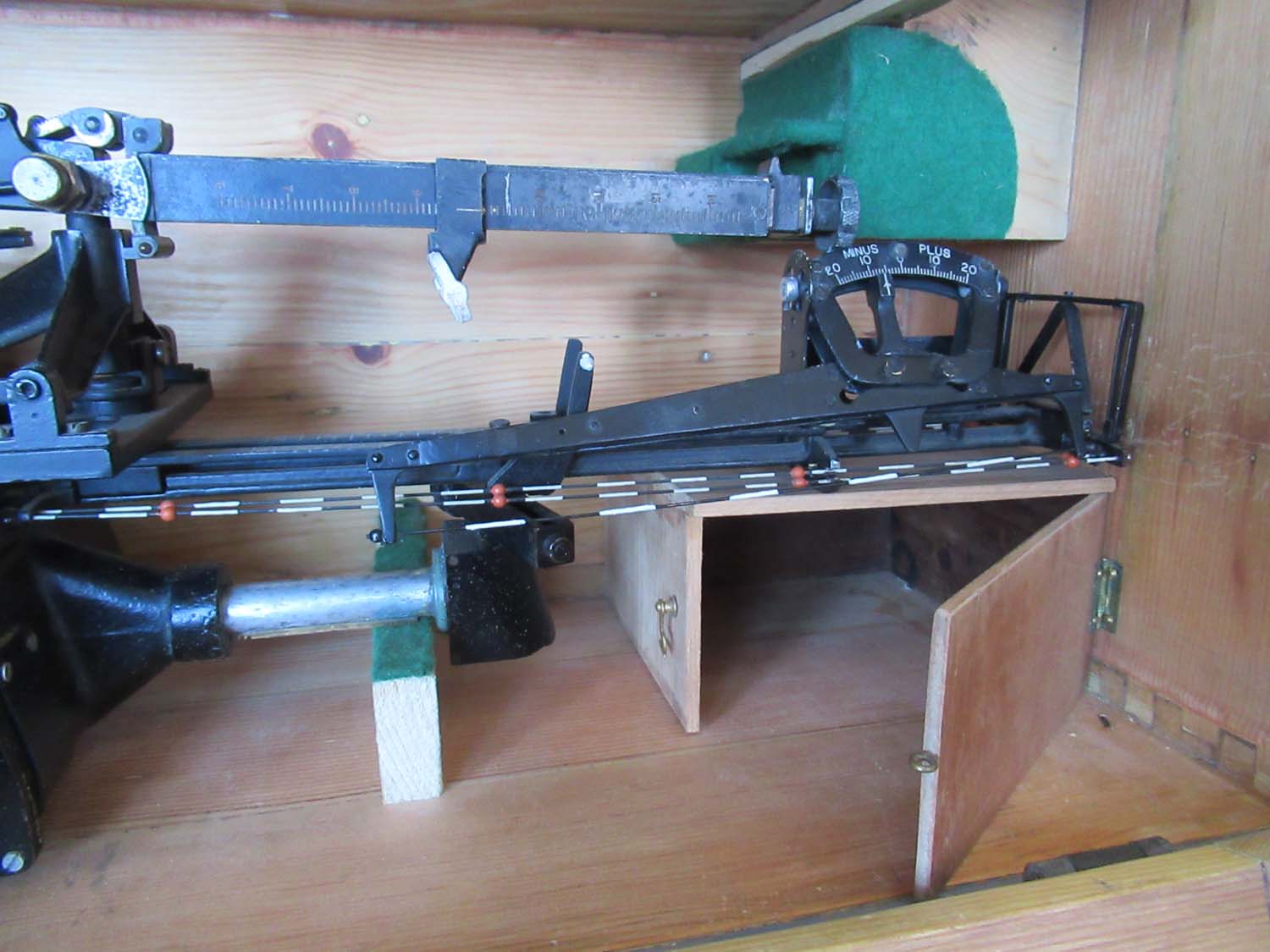
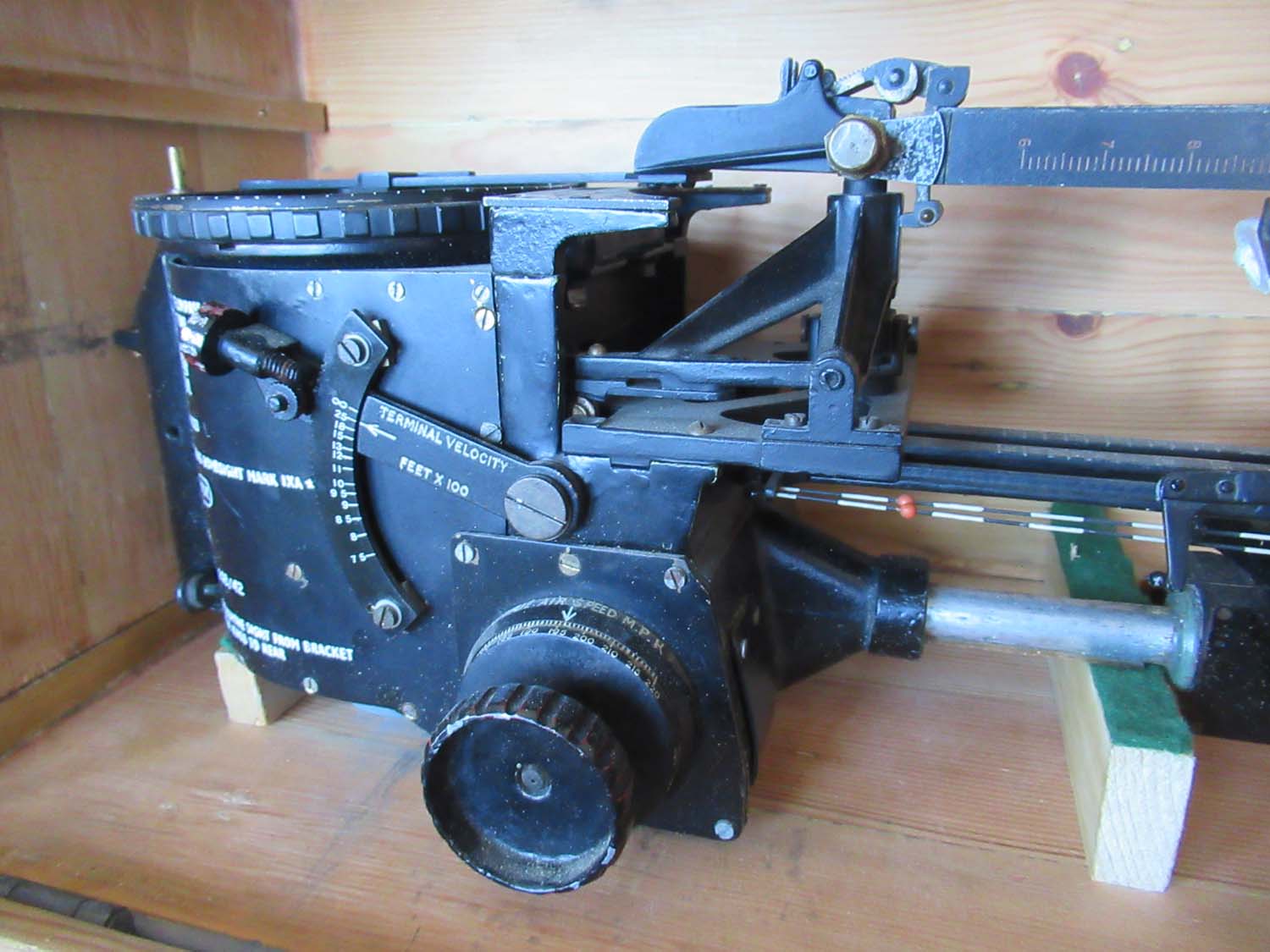



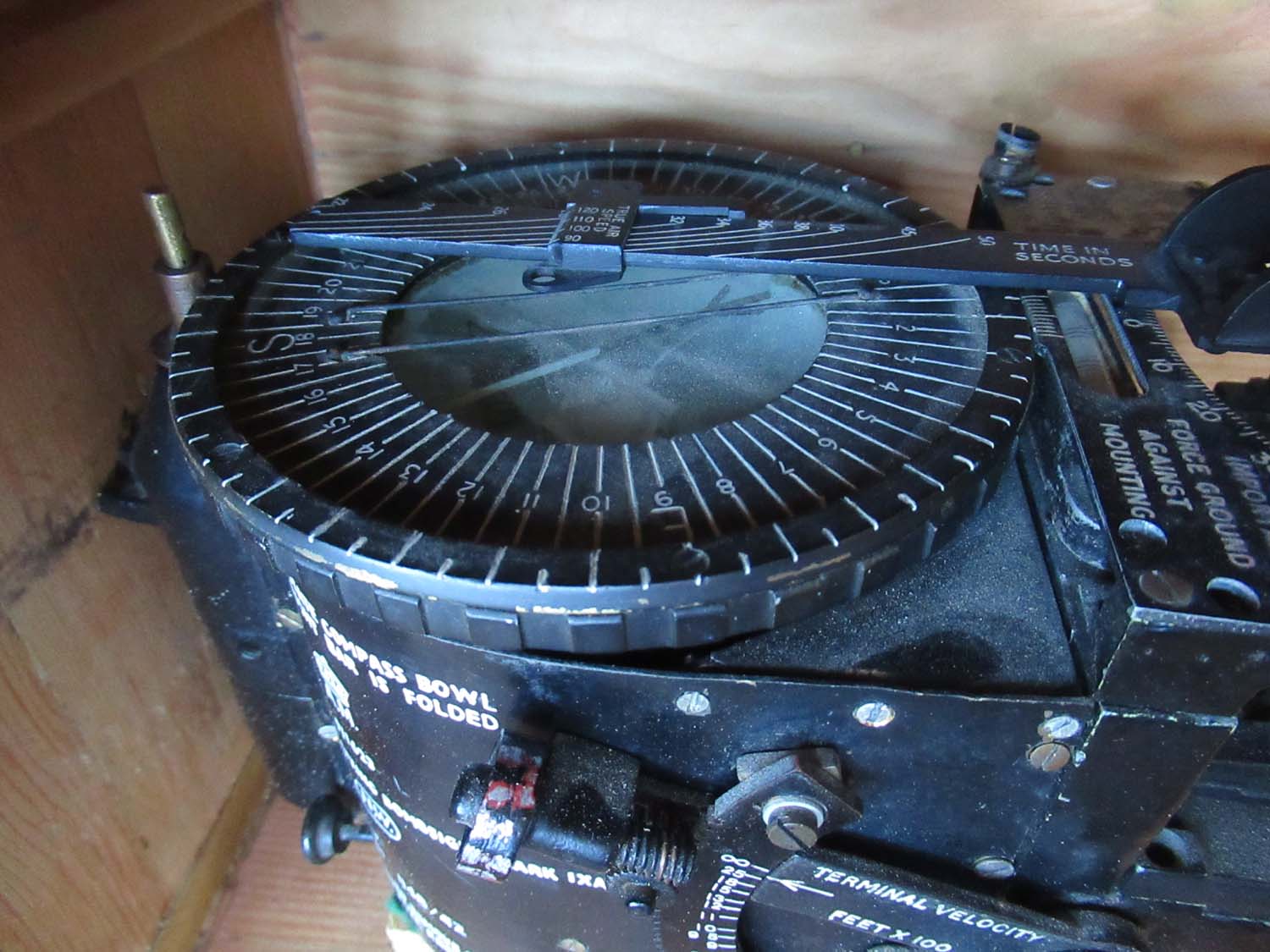
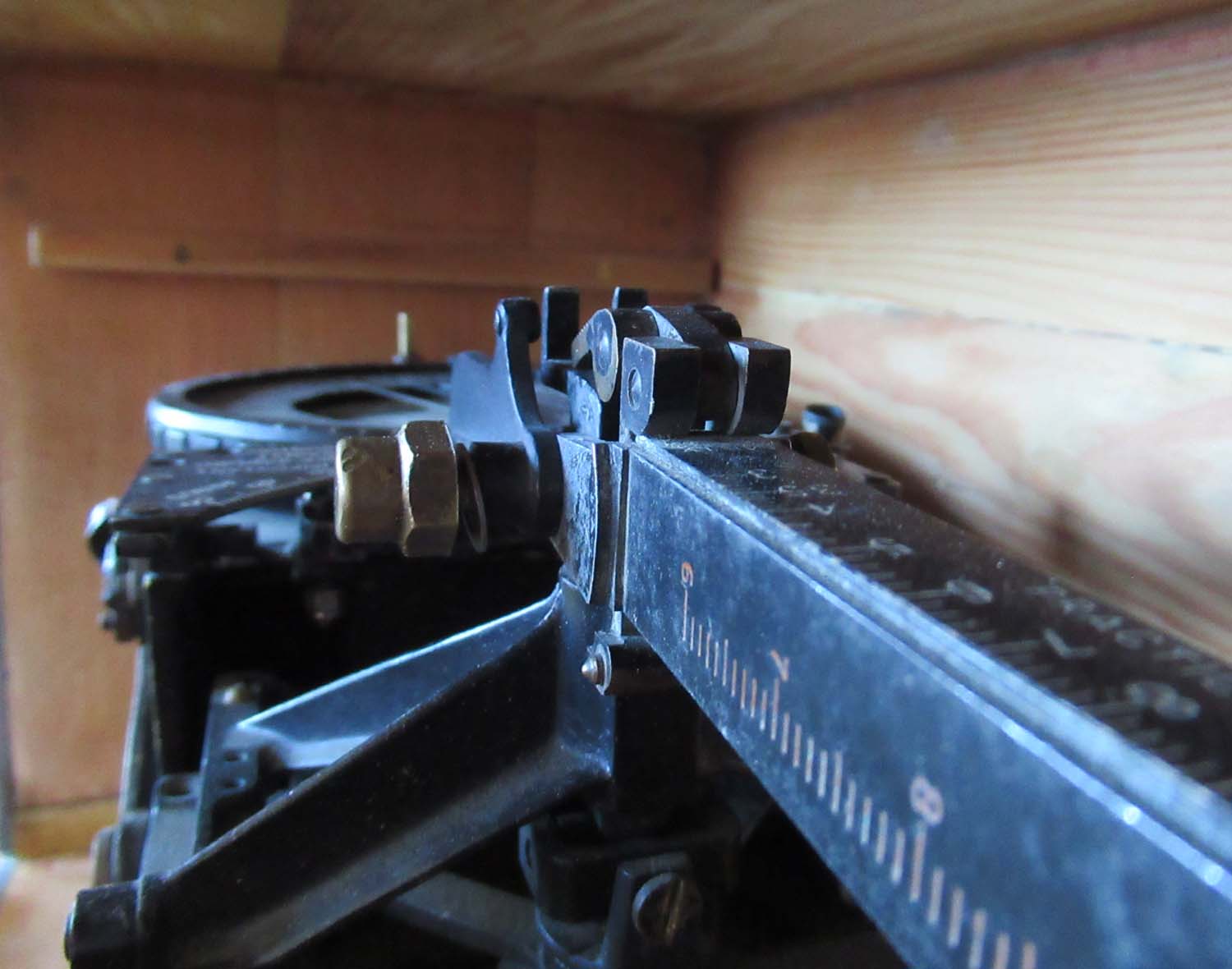
This is a large and
heavy item
Please contact me for a quote.
£1495


|
|
Click on
pictures to enlarge
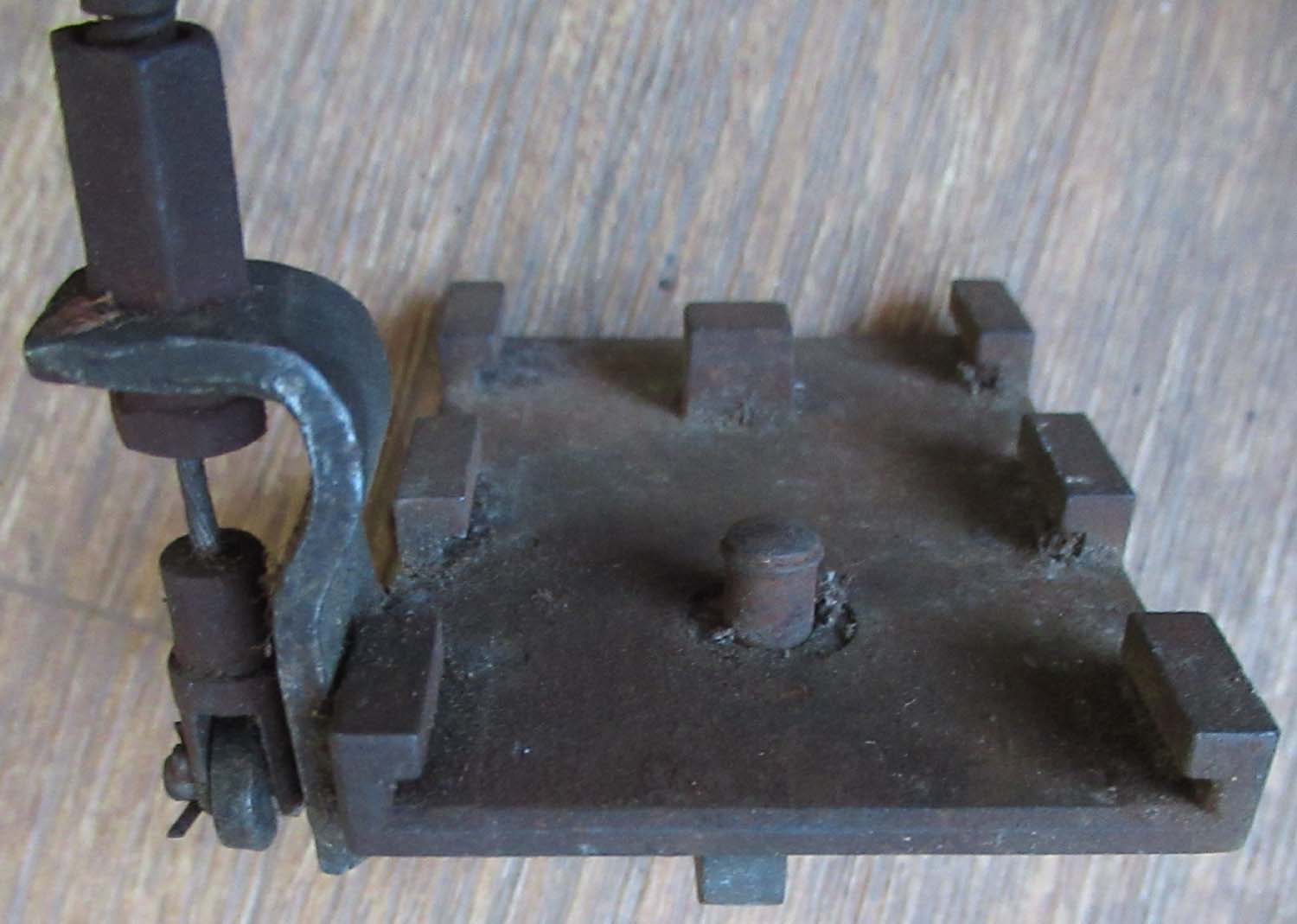
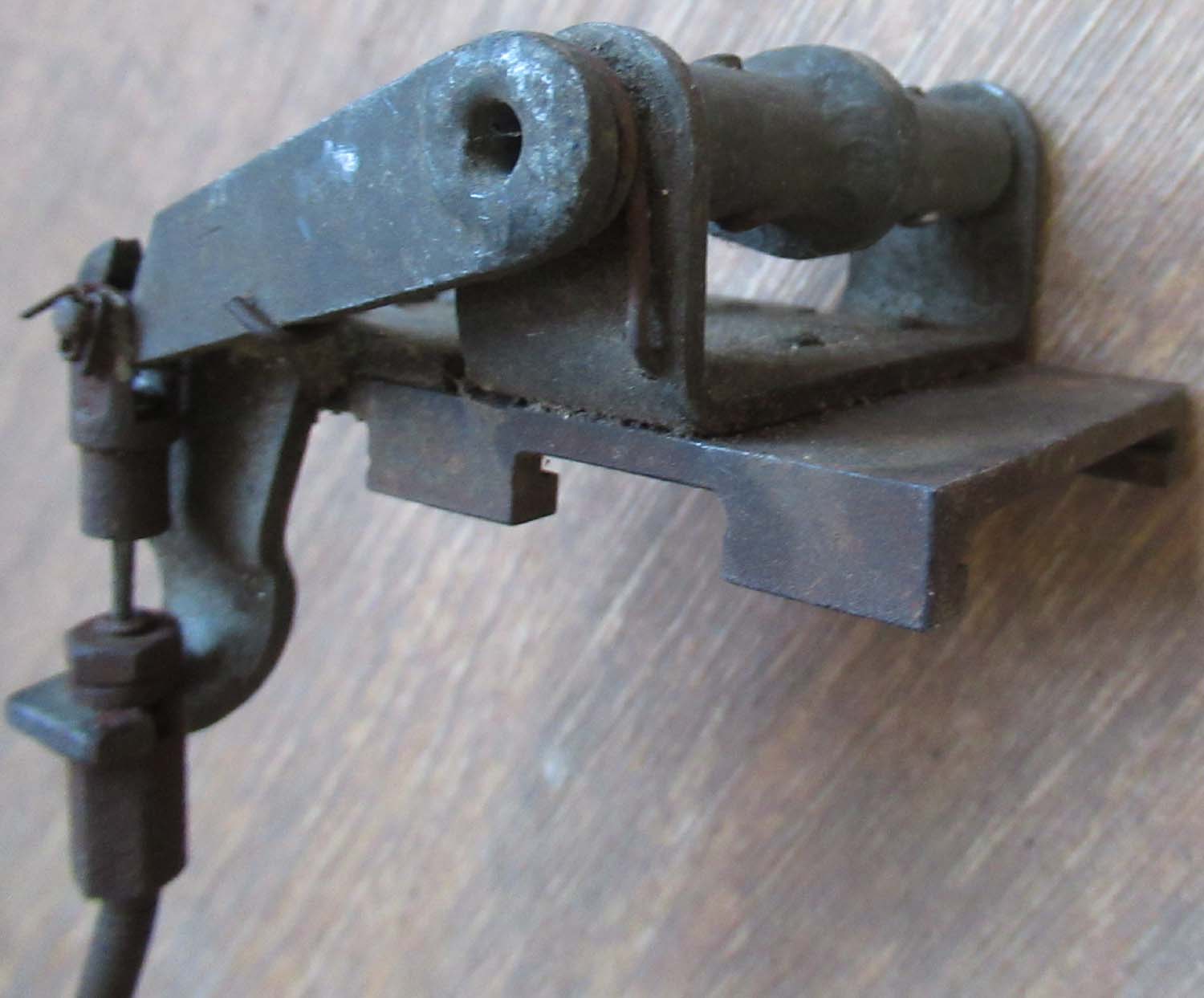
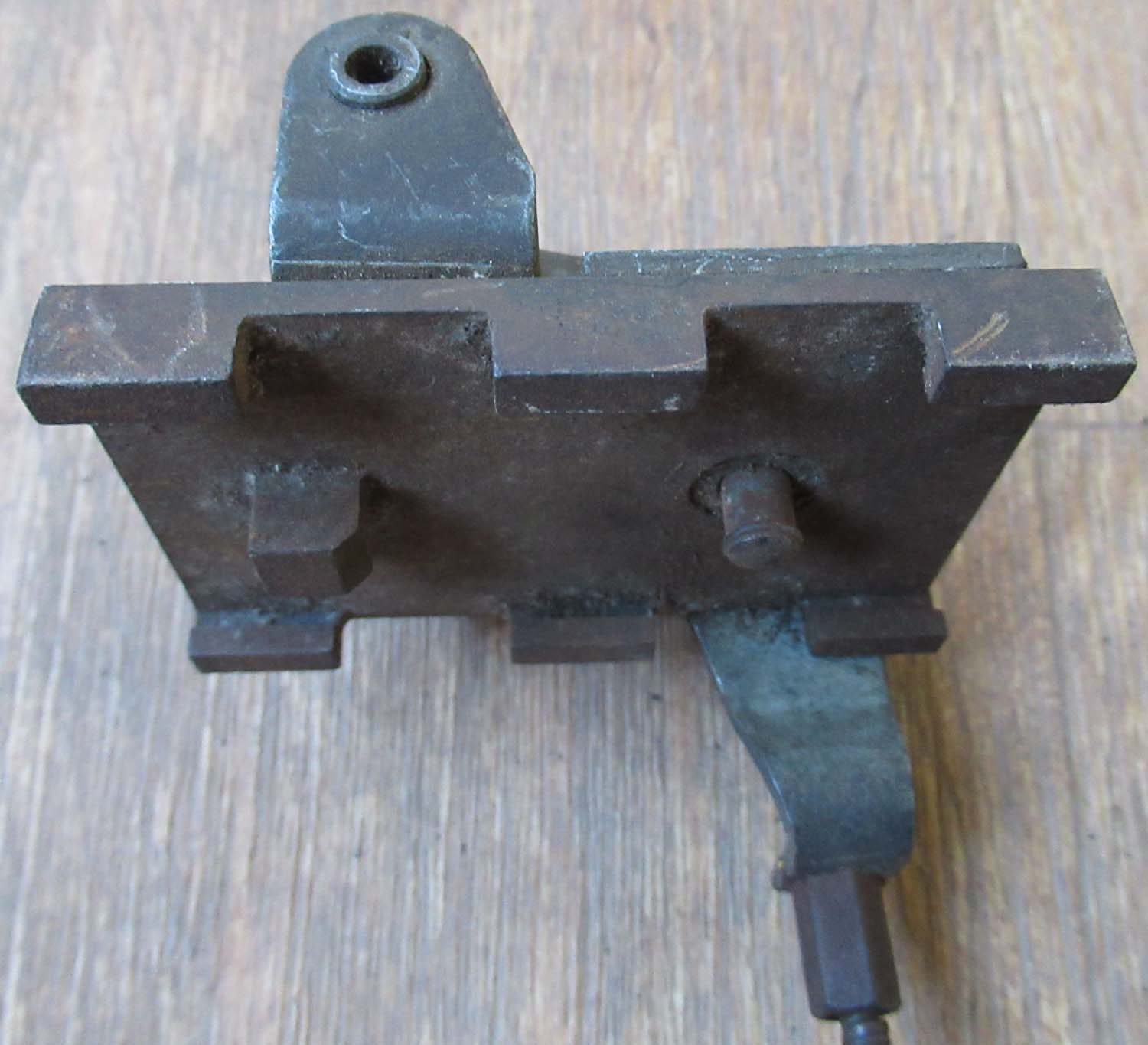
|
Hawker Gun
Firing Mechanism (No 109 pg1 Arm)
Here we have a super rare
item its the firing mechanism for the guns. The square end
connect to the gun and triggers via a cable and electrical
actuator. It appears to be a Hawker part number and I am
still researching which aircraft it was fitted to.
Ref No: A129743
Click on
pictures to enlarge
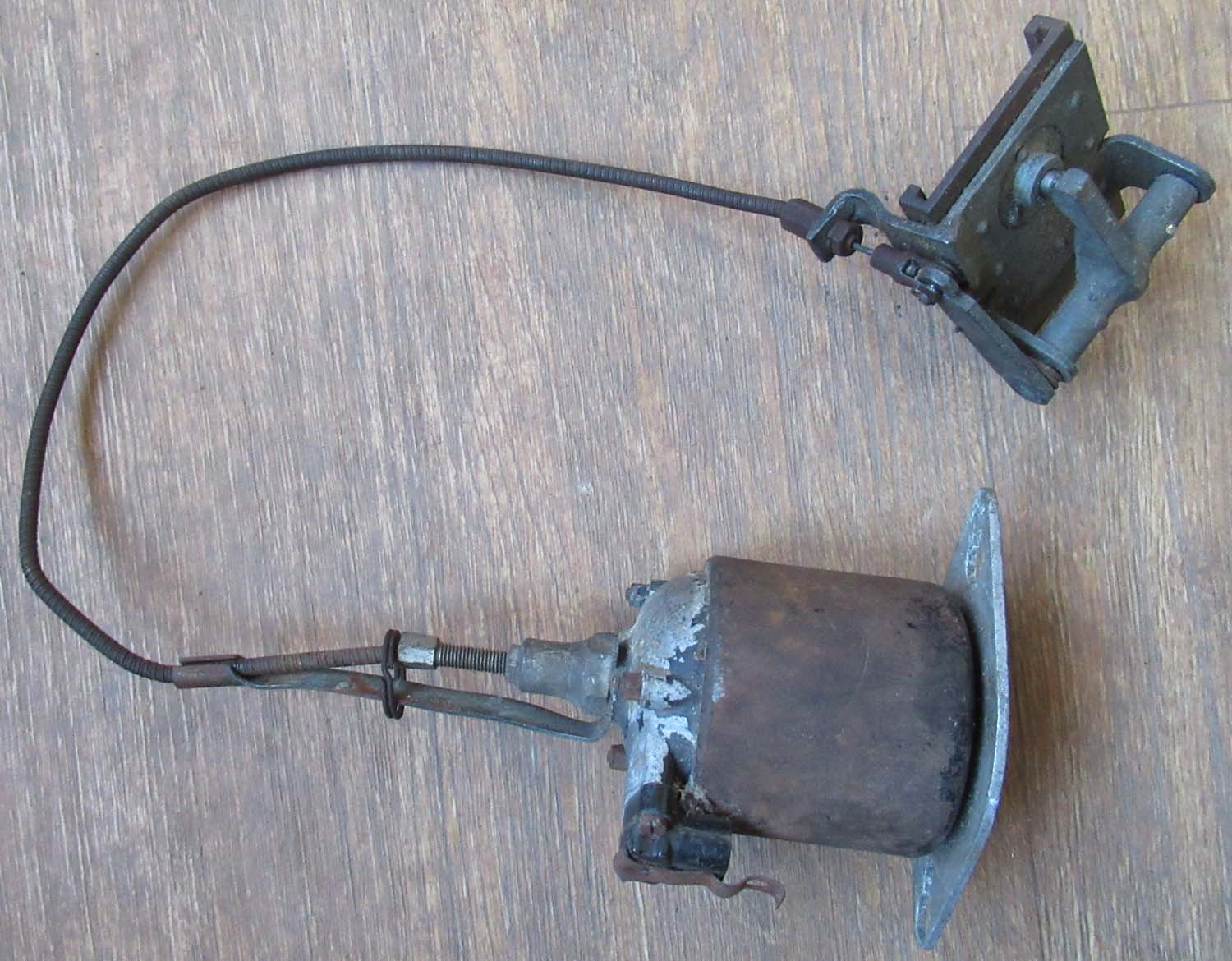
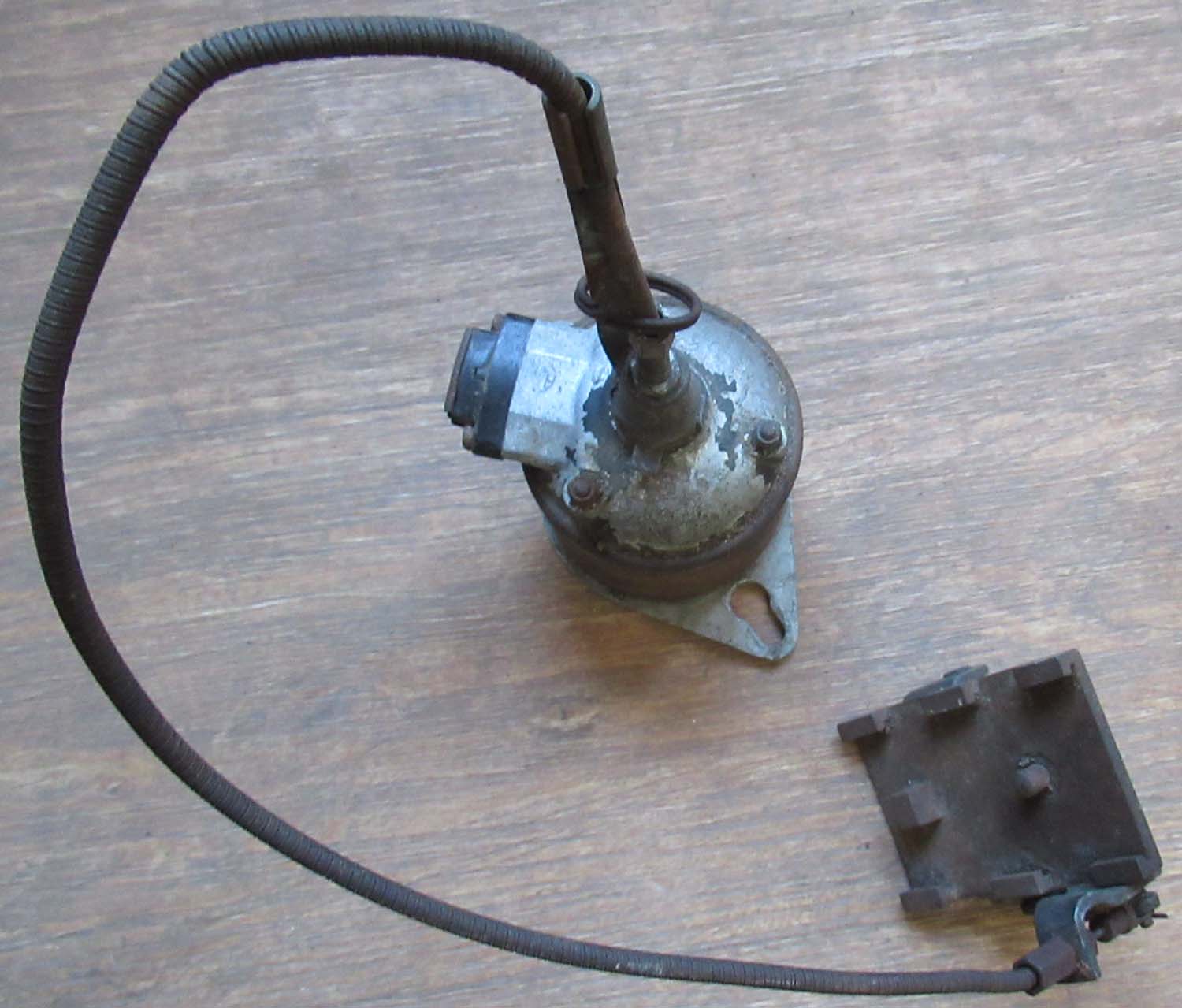 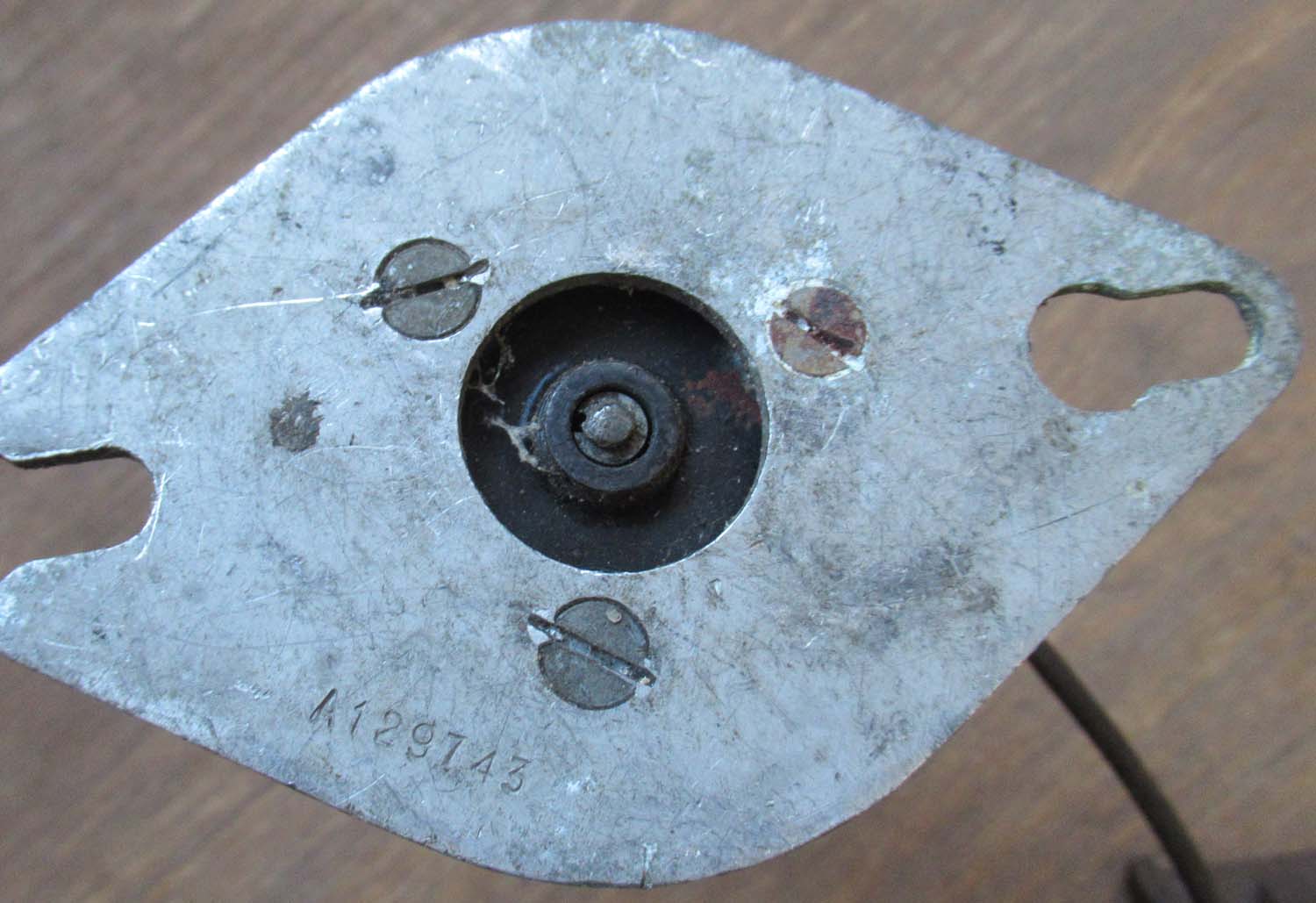
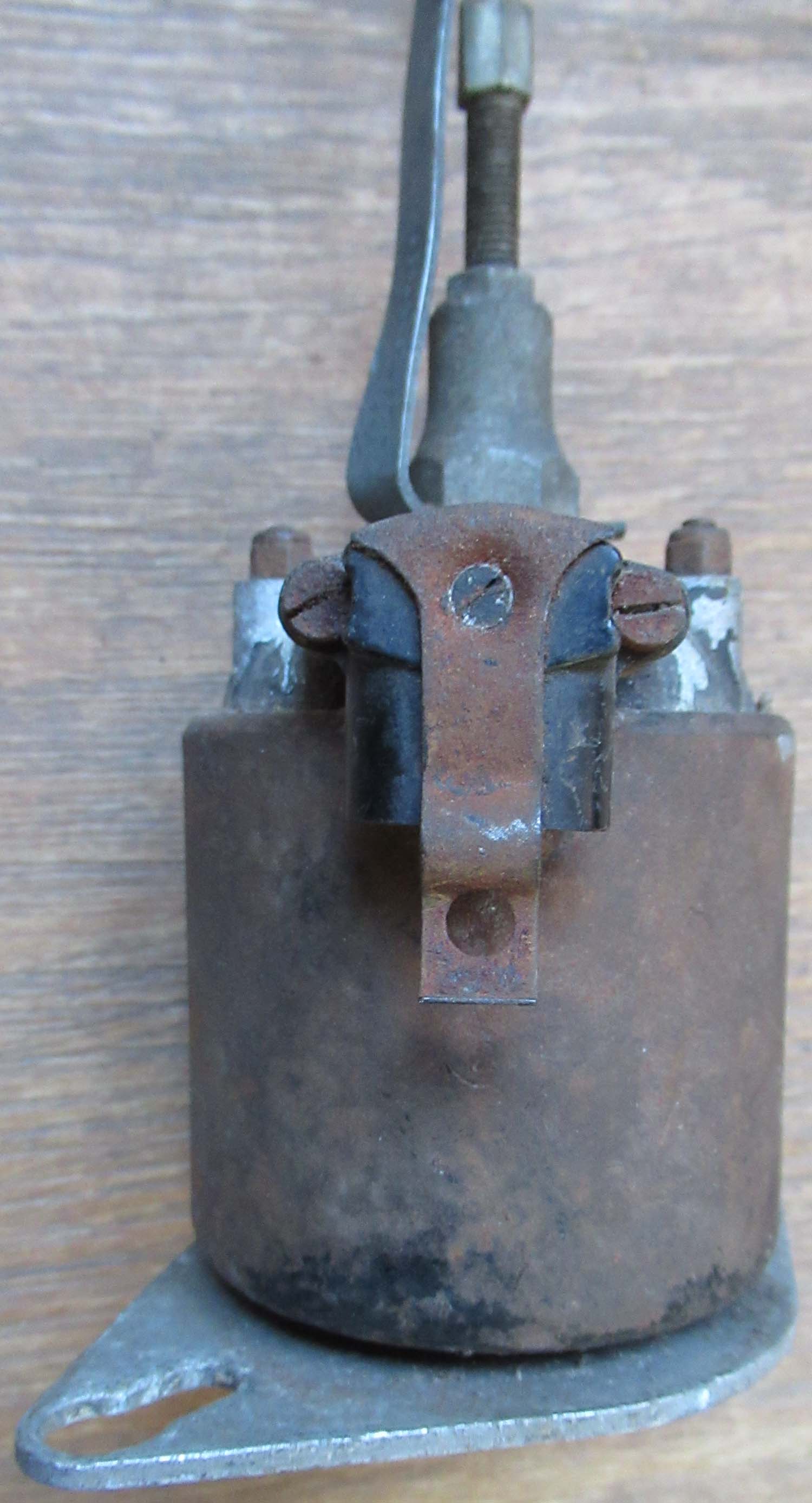
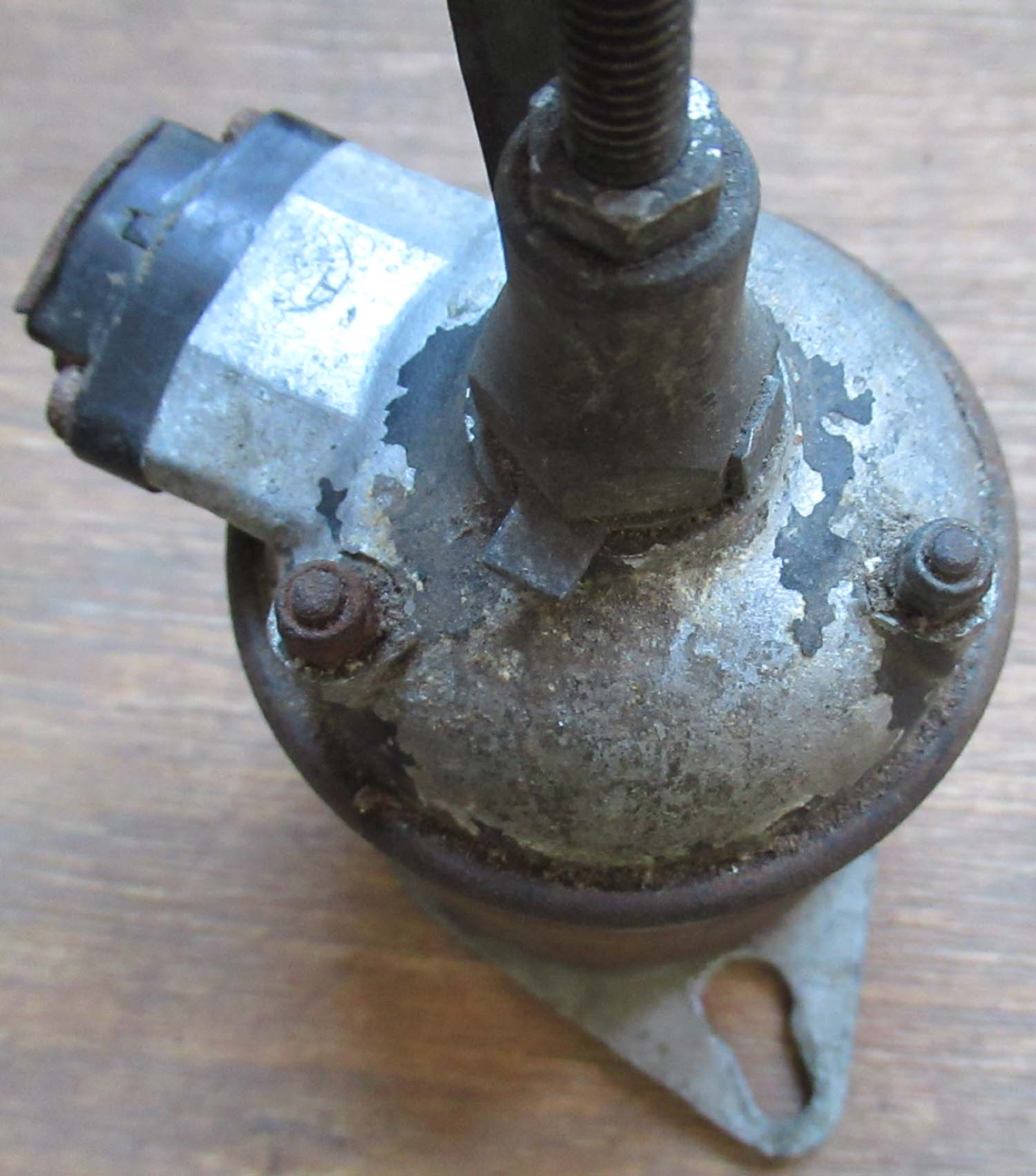
£375


|
|
Click on
pictures to enlarge
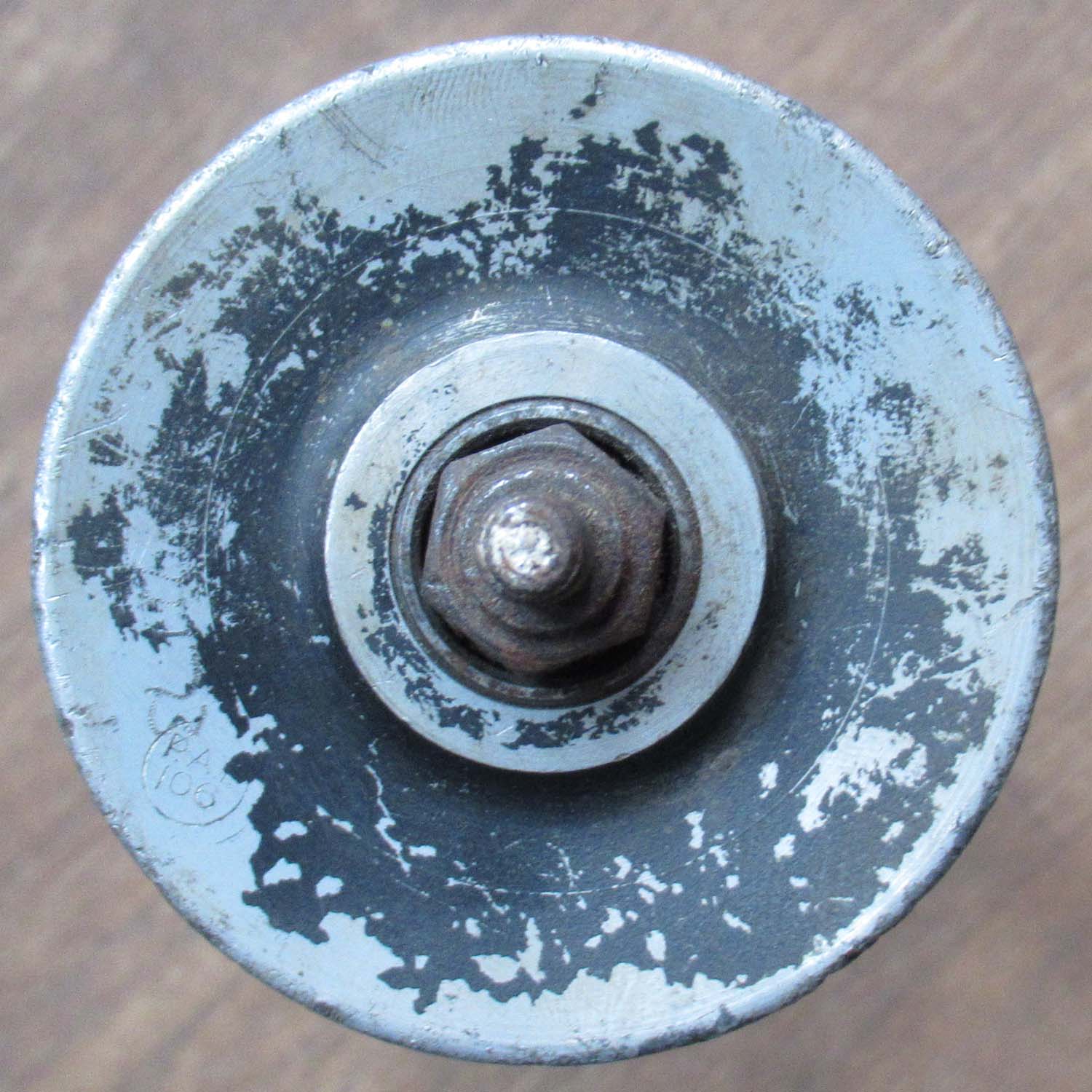
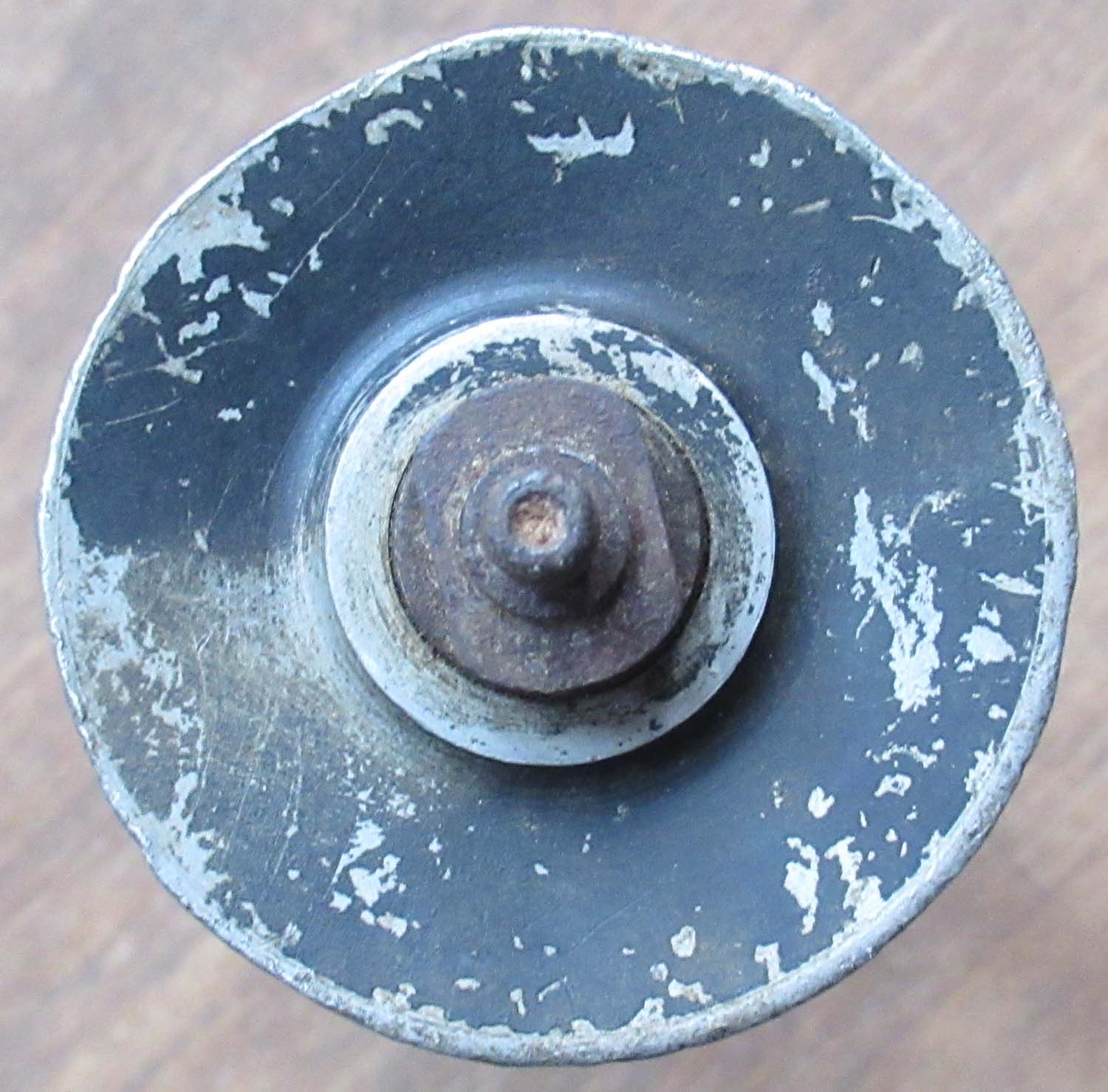
|
Ammunition Belt
Roller (No 108 pg1 Arm)
Here we have an ammo belt
roller, looks correct for .303 bullets.
Ref No: 71173
Click on
pictures to enlarge
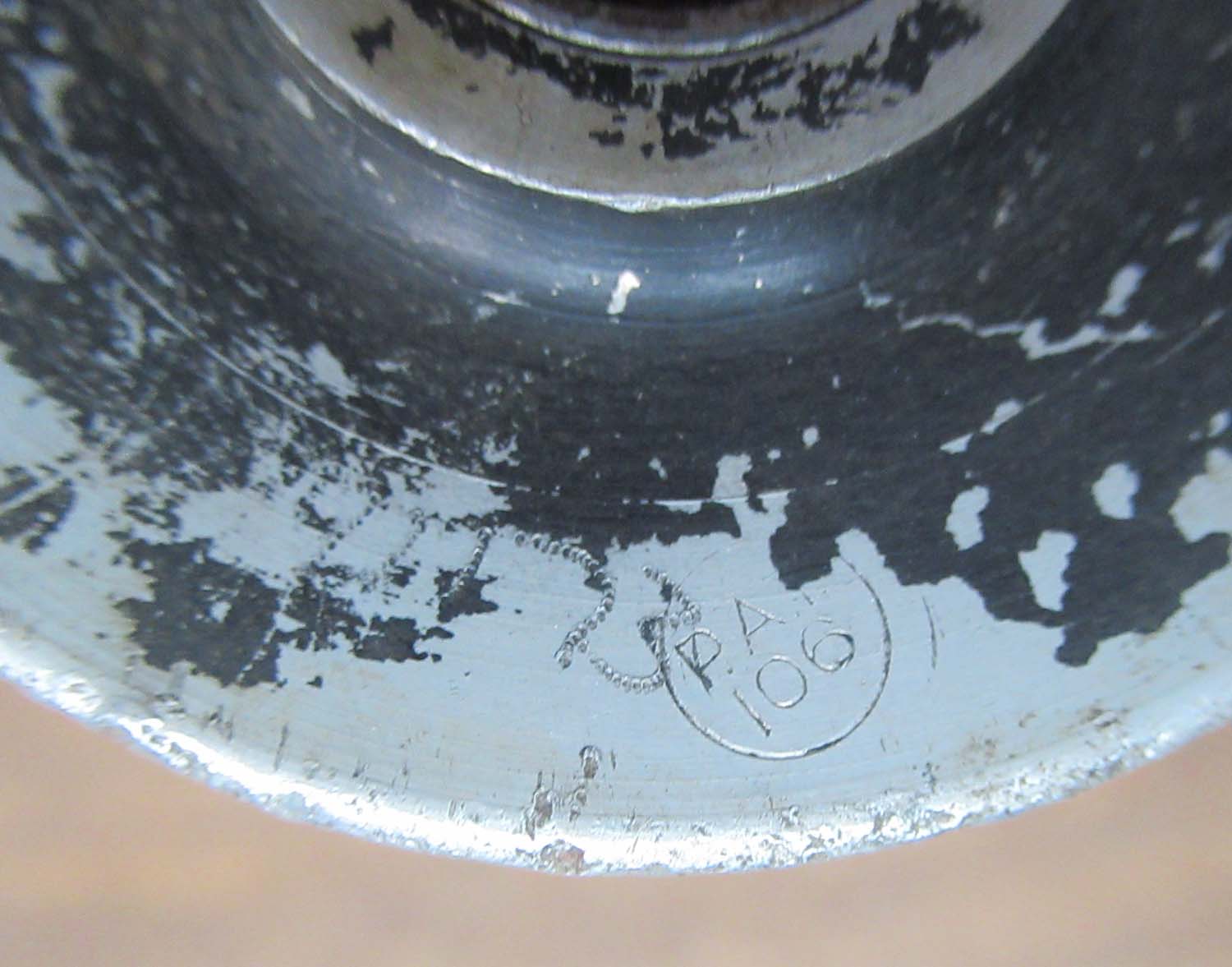
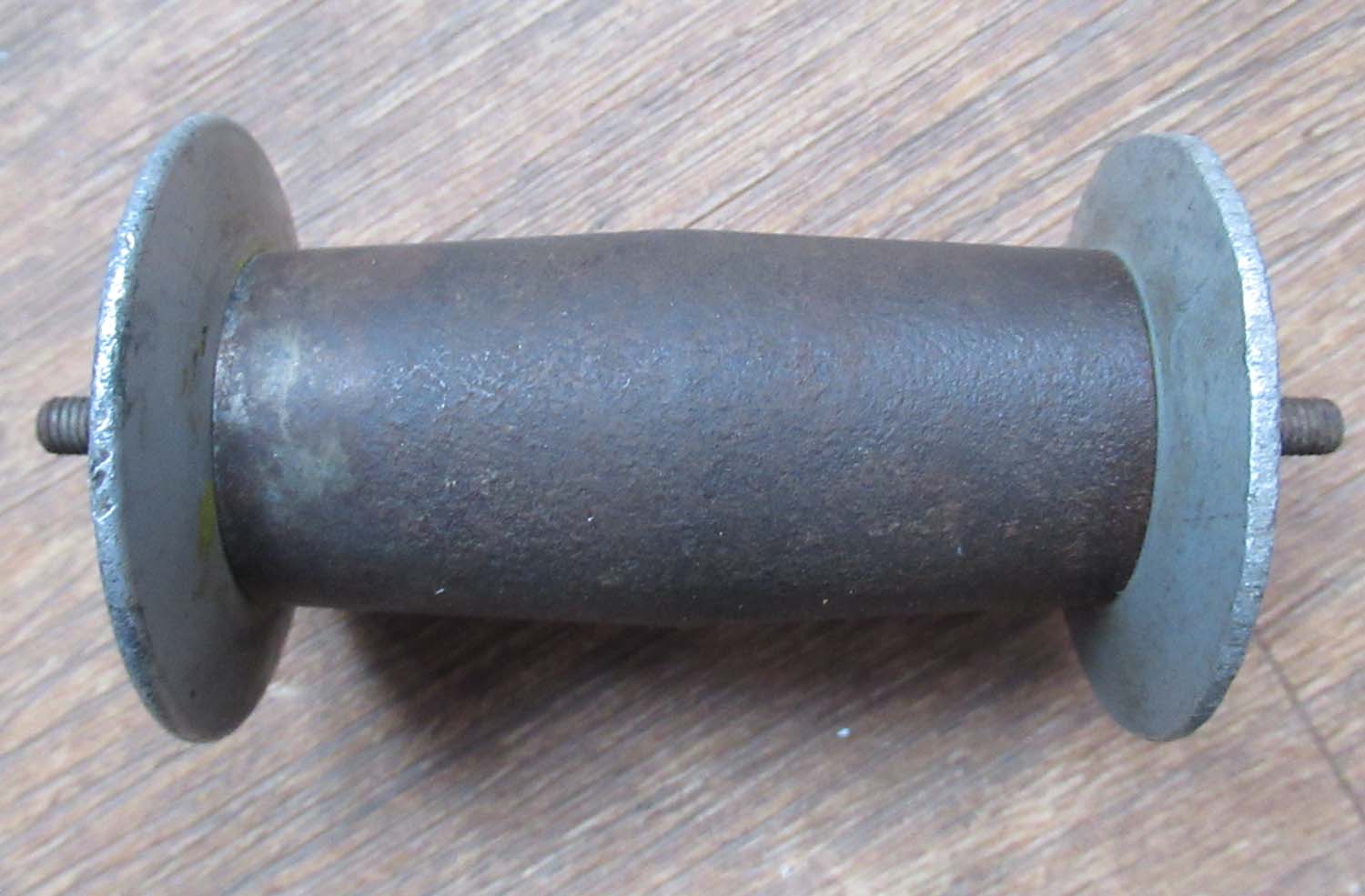
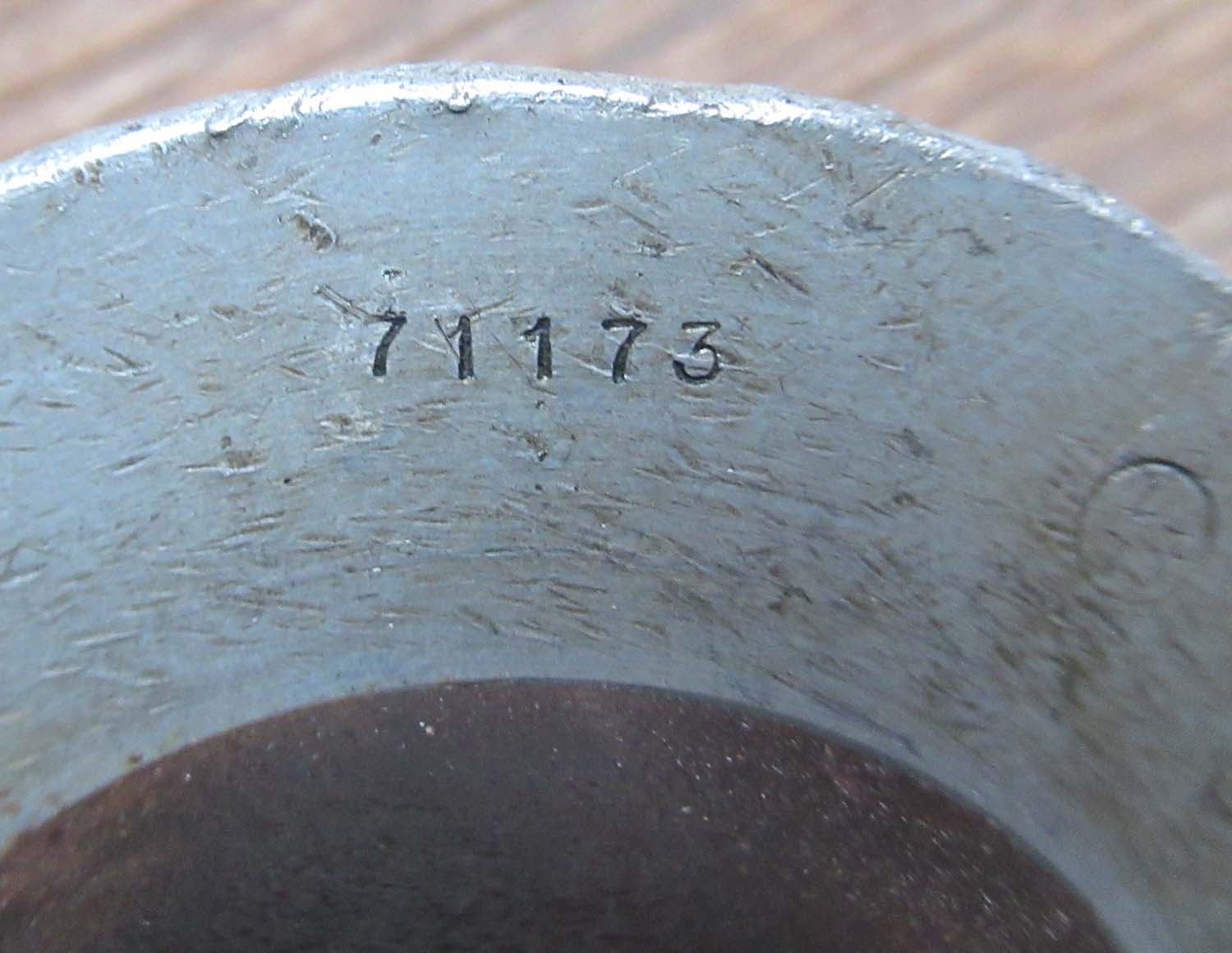
£75


|
|
Click on
pictures to enlarge
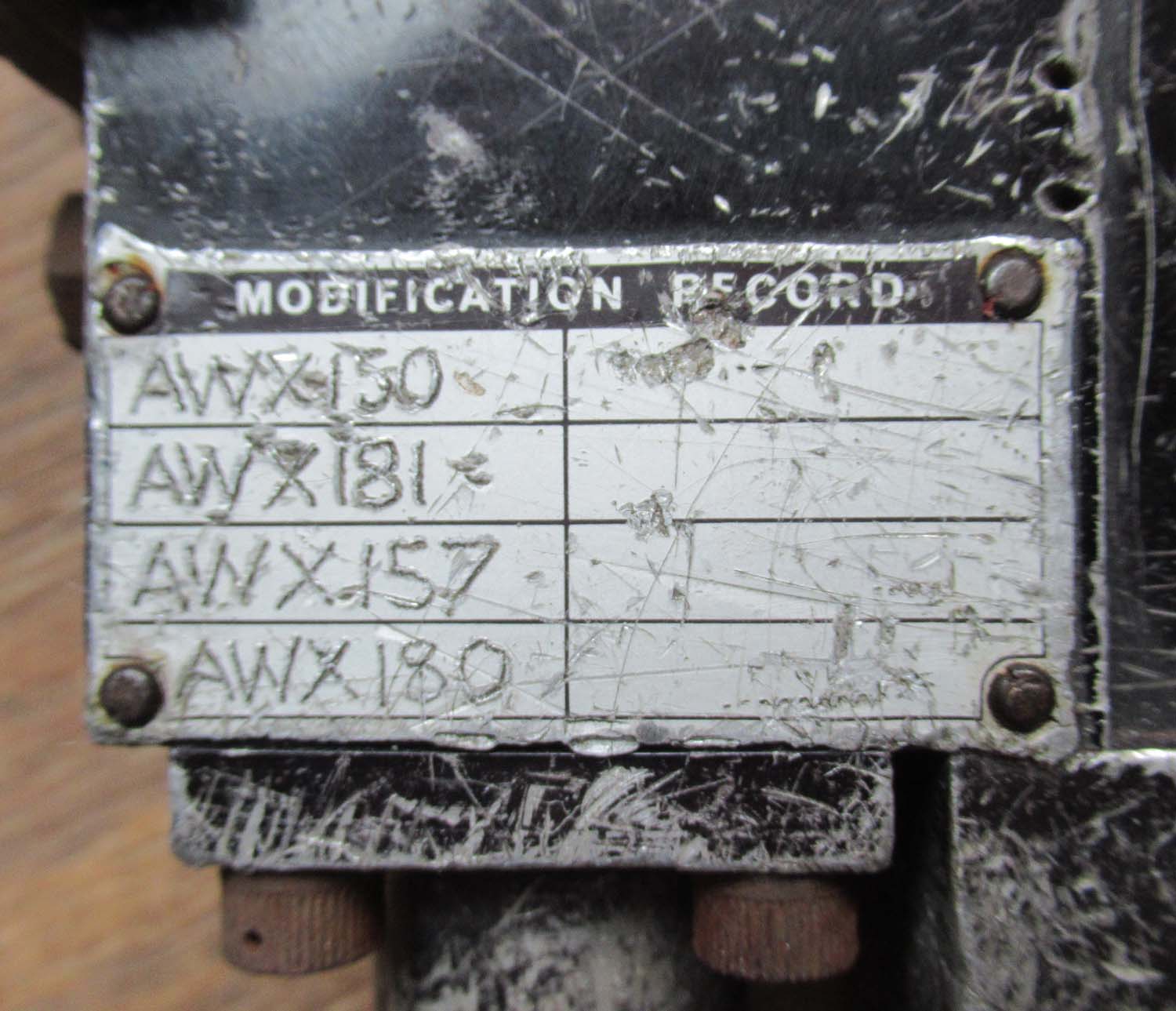
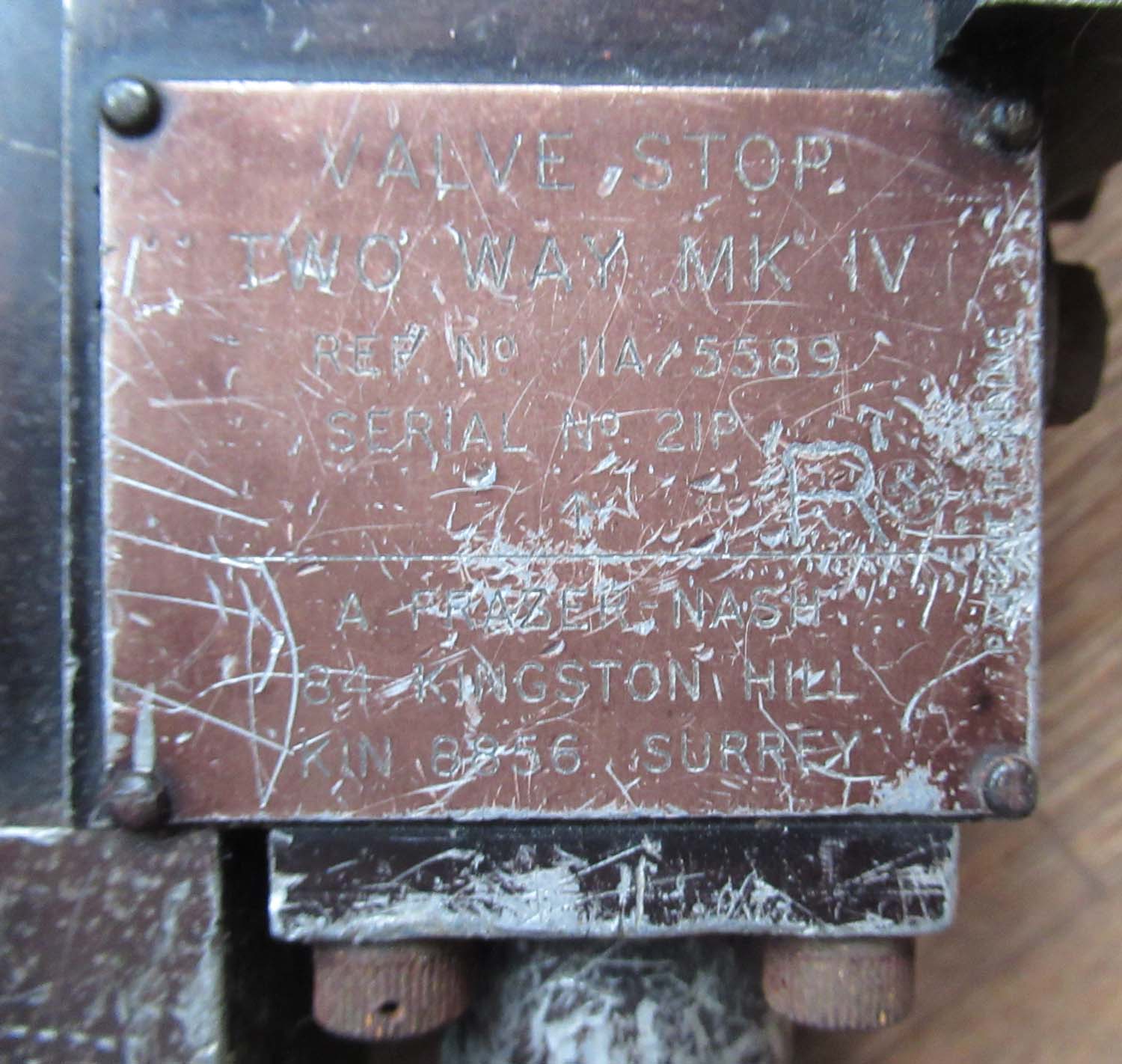
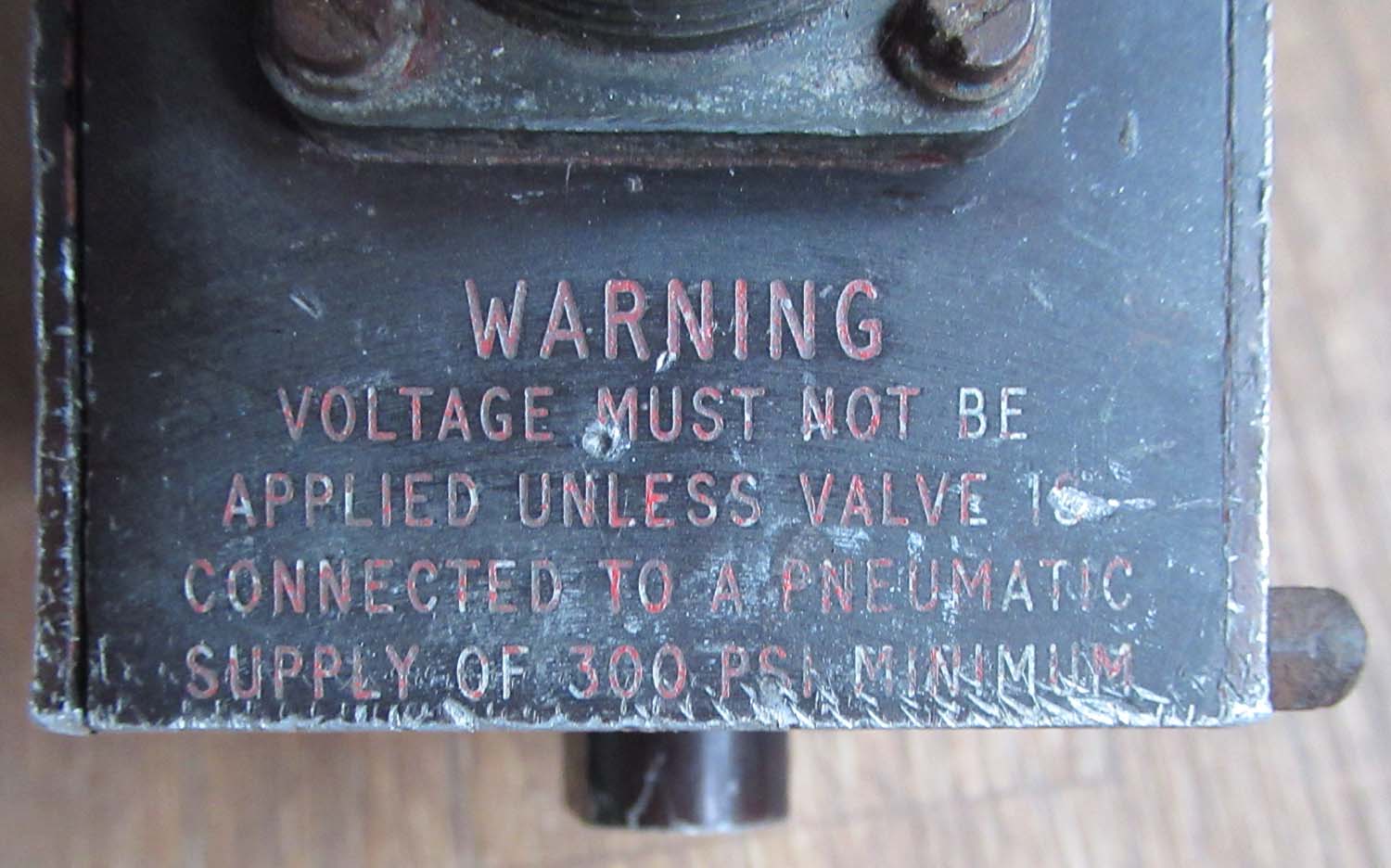
|
Frazer
Nash Hydraulic Valve stop Unit (No 107 pg1 Arm)
Here we have a hydraulic unit
from Frazer Nash, most commonly they built turrets but this
stop unit has an A/M 11A reference number which is aircraft
bomb gear so I am thinking this was part of the system for
opening and closing the bomb bay doors.
Ref No: 11A/5589
Click on
pictures to enlarge
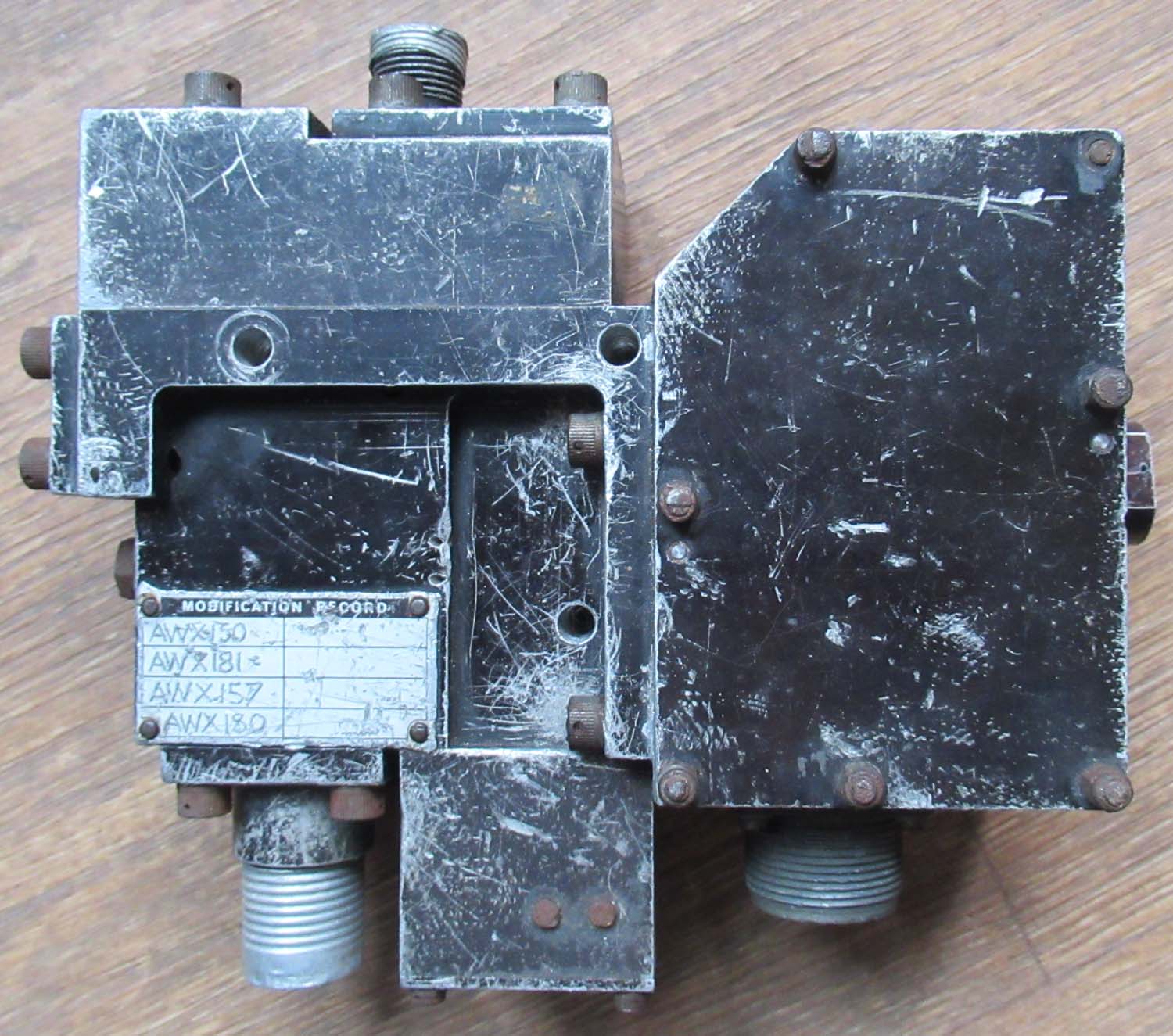 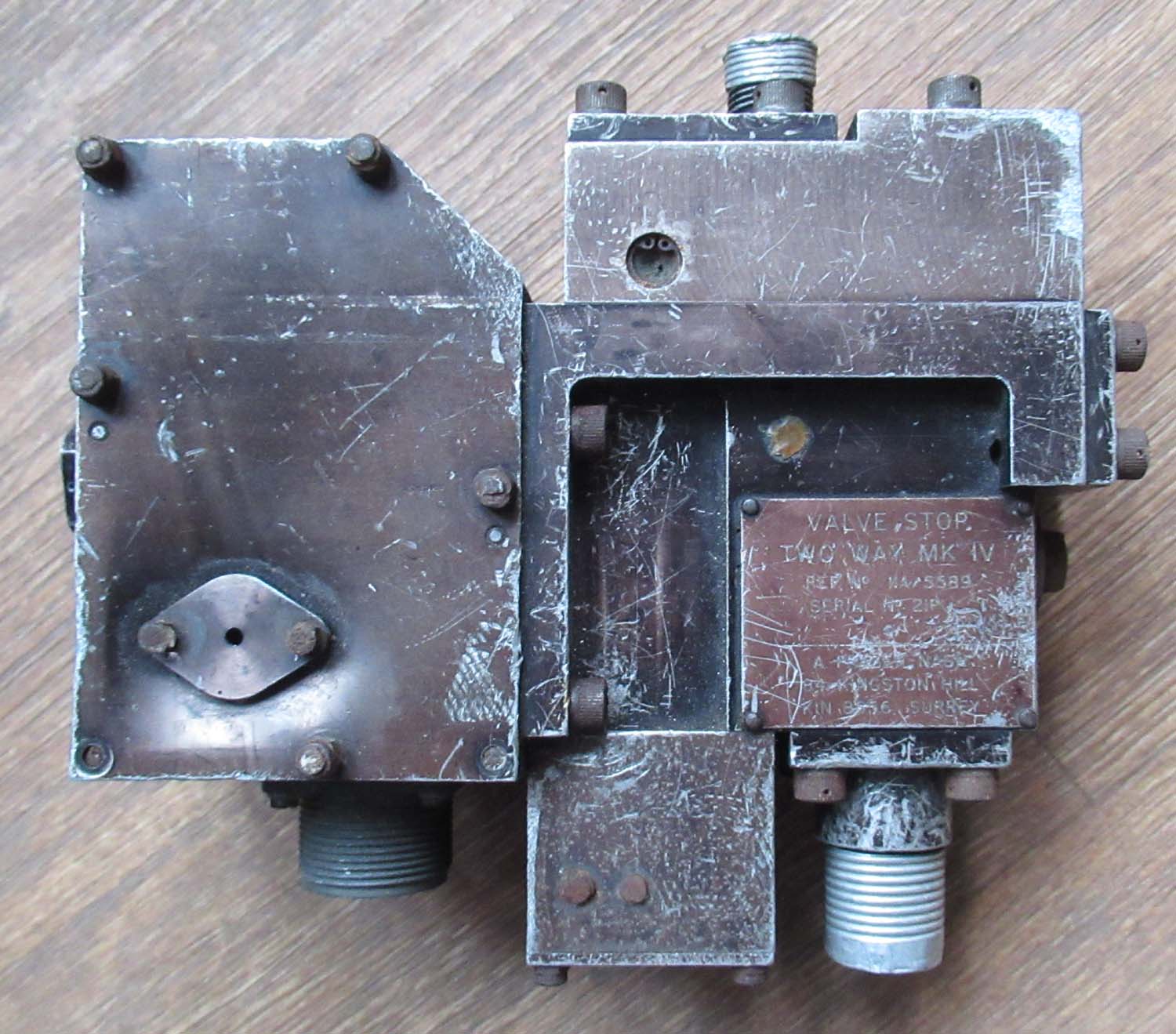
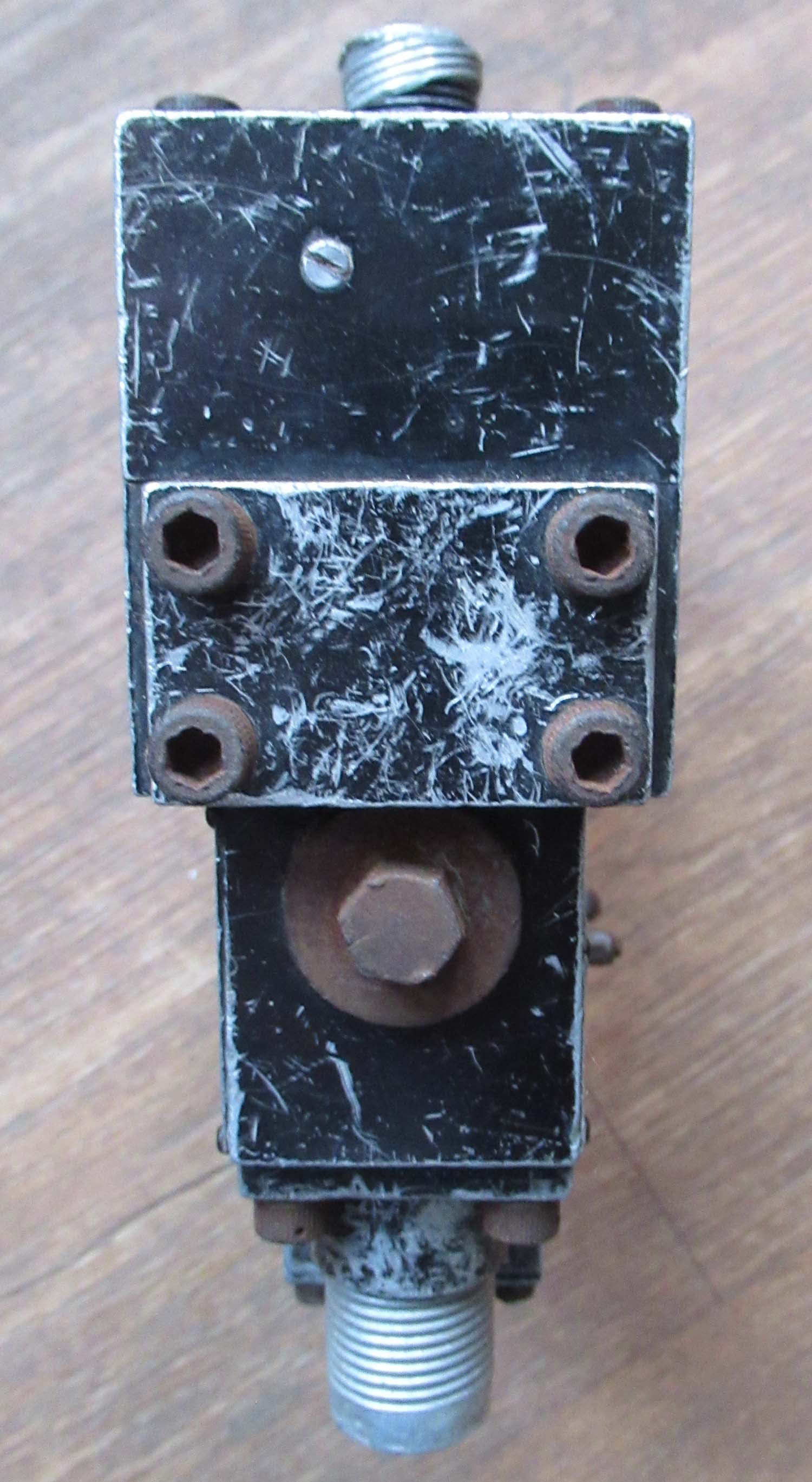 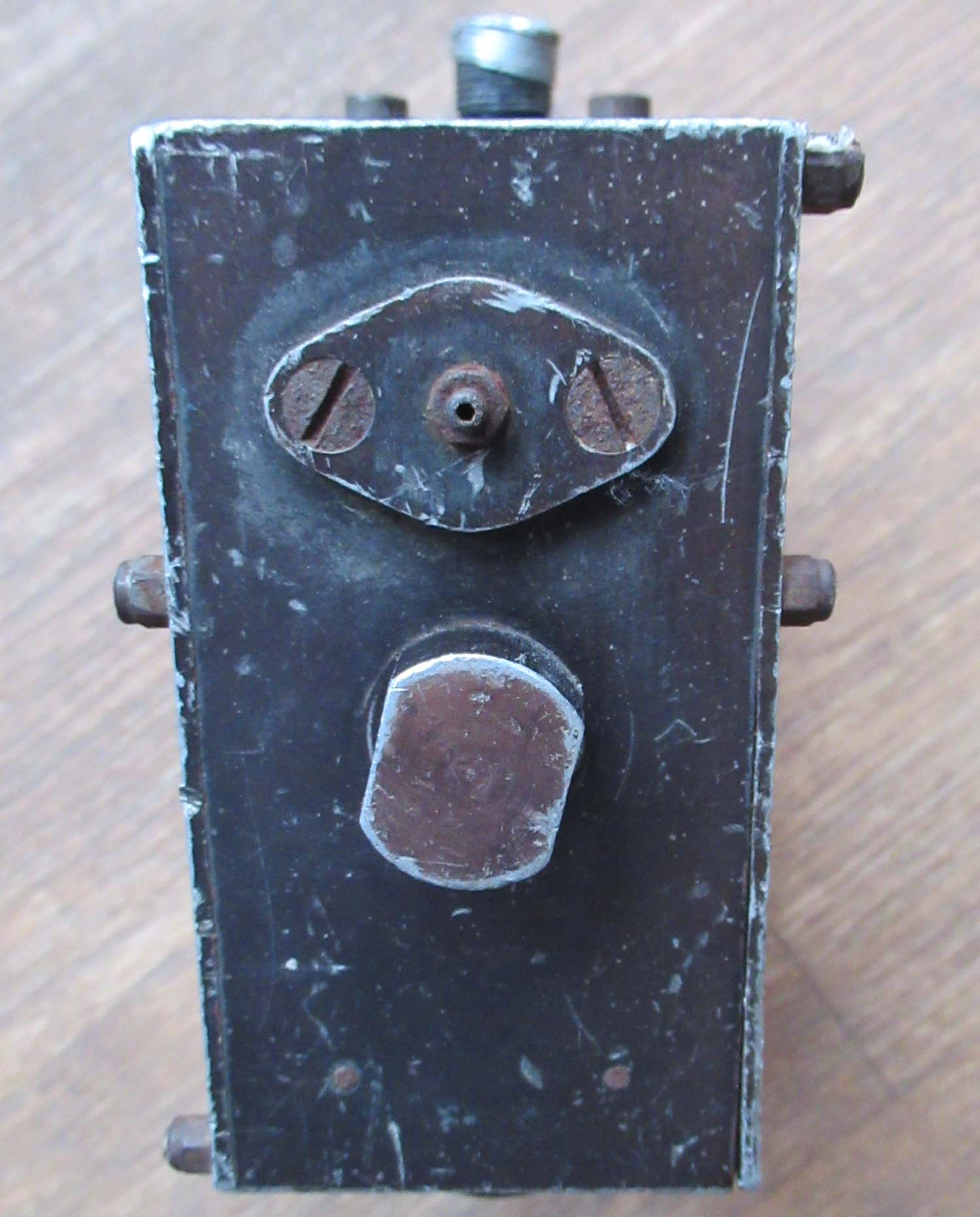 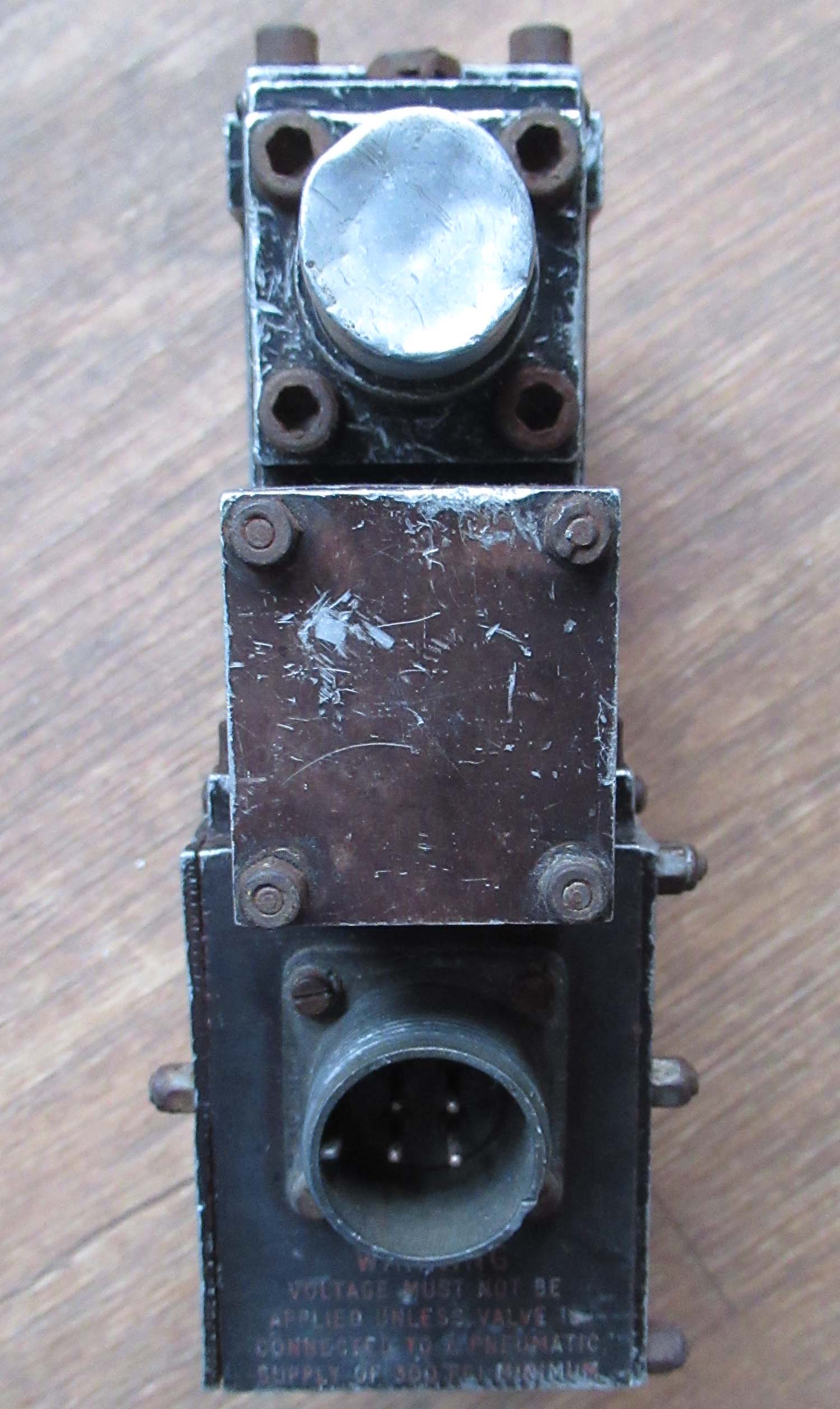
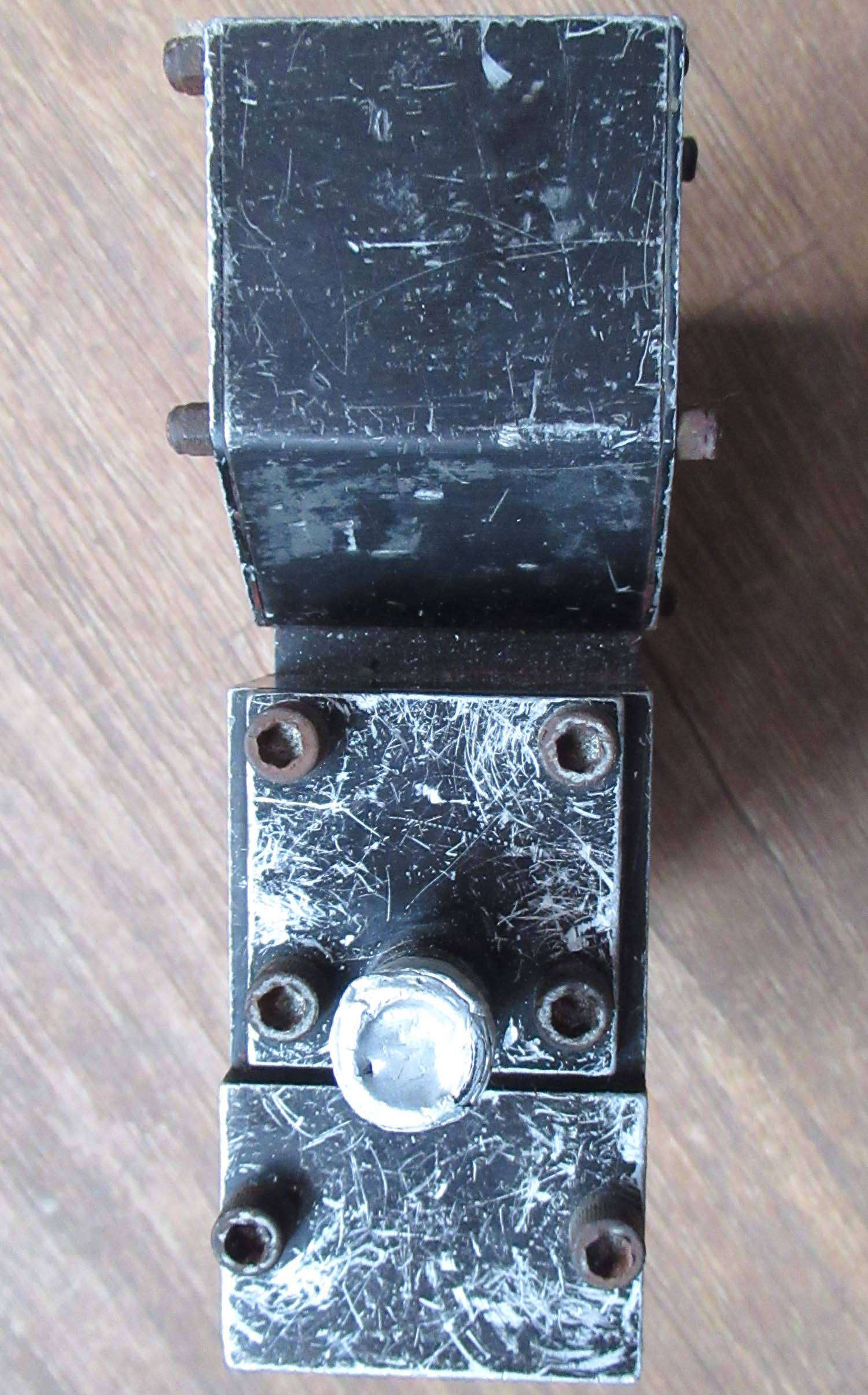
£295


|
|
Click on
pictures to enlarge
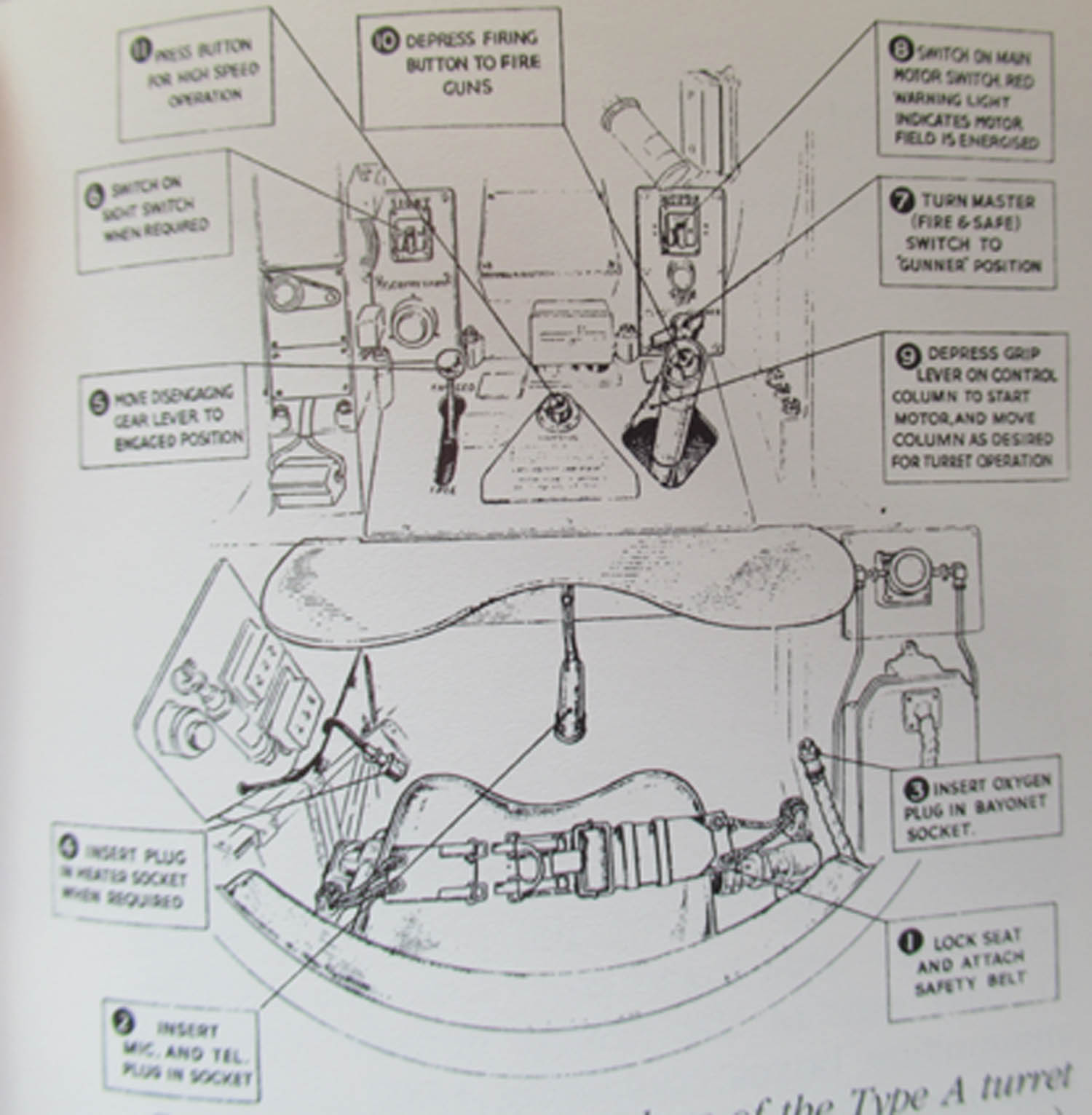
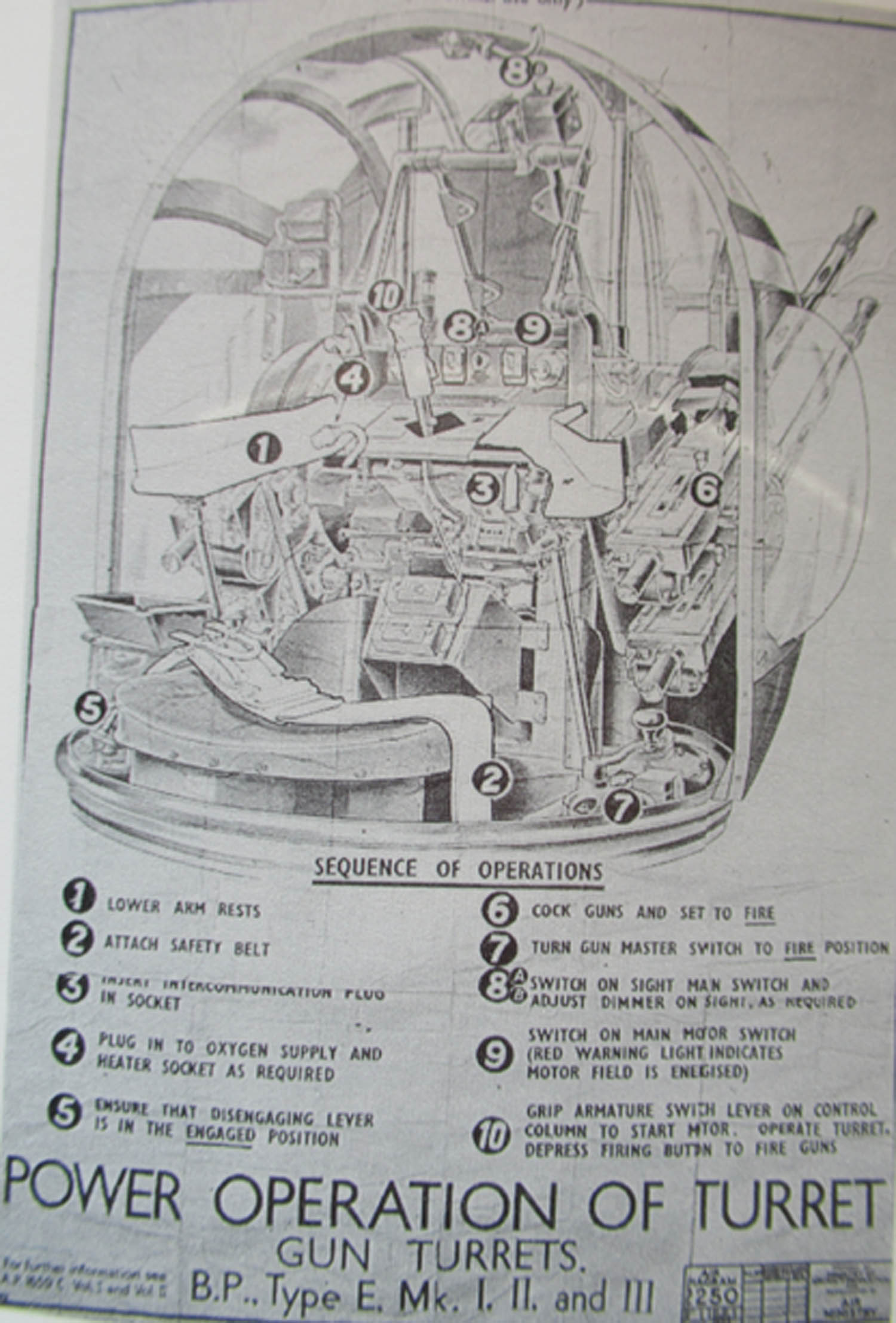
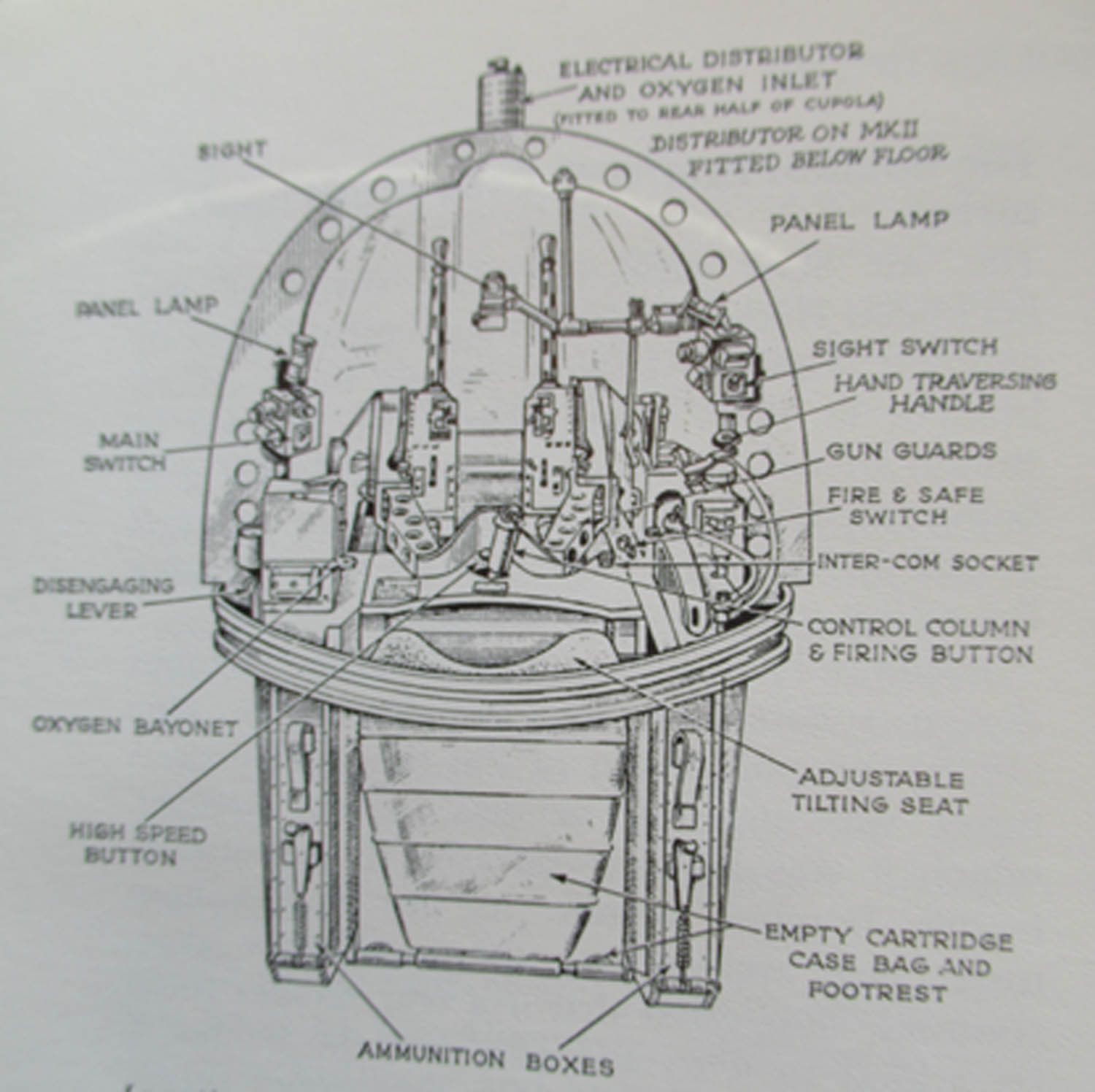
|
Bolton Paul
Turret Control Column (No 106 pg1 Arm)
There is a
superb and very rare piece. After Frazer Nash , Bolton Paul
were the most numerous suppliers of Turrets to the RAF. The
most famous application being fitted to the Bolton Paul
Defiant. Although history generally regards this aircraft as
a failure it did in fact achieve 37 kills early in the war
before being relegated to night fighter duties .
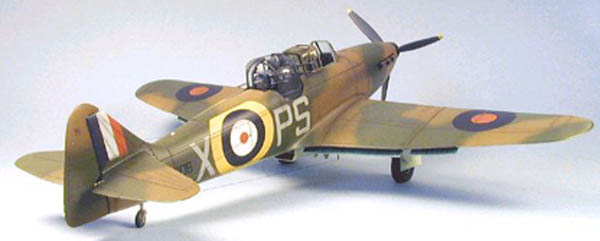
Shown
above the Bolton Paul Defiant
This
control column operated very much like a modern joy stick
not only firing the Guns but also moving the turret and guns
in all directions as apposed to the Frazer Nash design which
required both hands.
This
example is in good original condition and the button and
lever both function perfectly. If you enlarge the pictures
in the column left you can quite clearly see the control .
Part nos 137/A4
Click on
pictures to enlarge
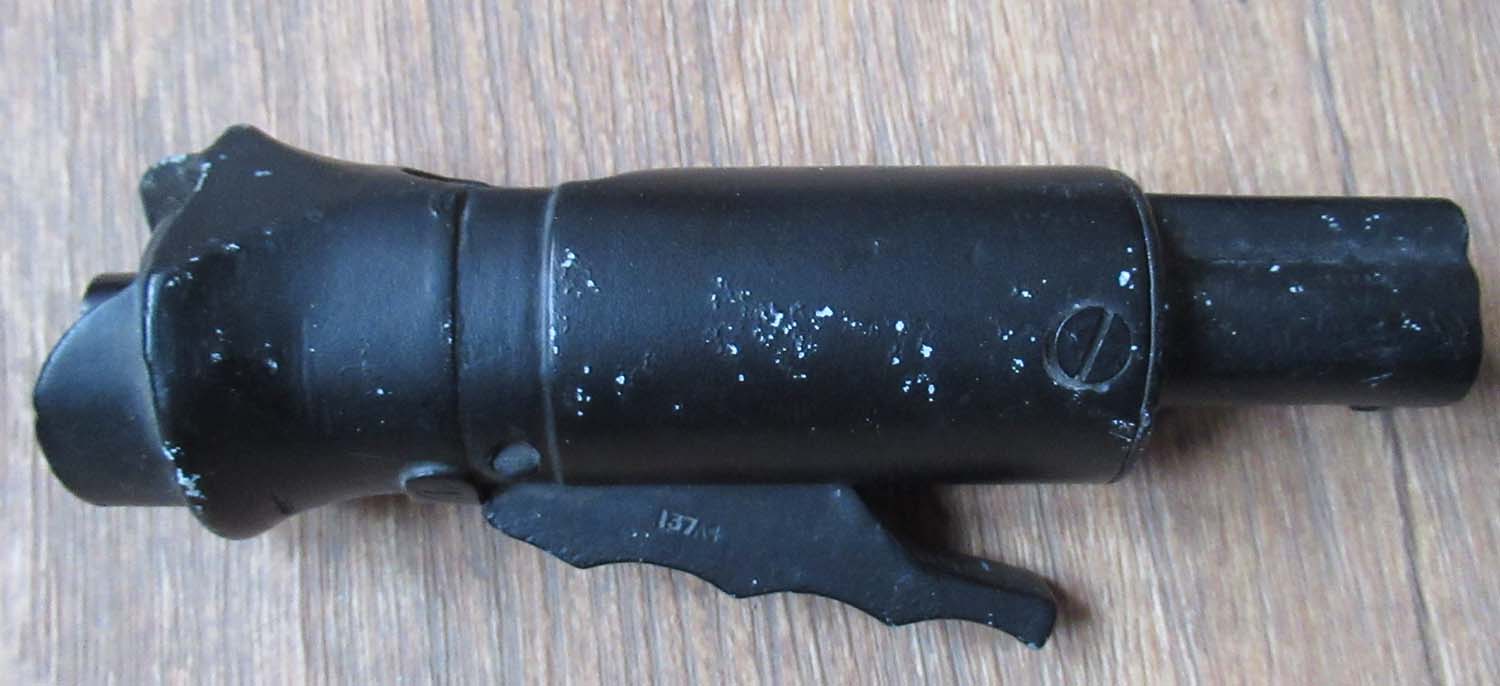
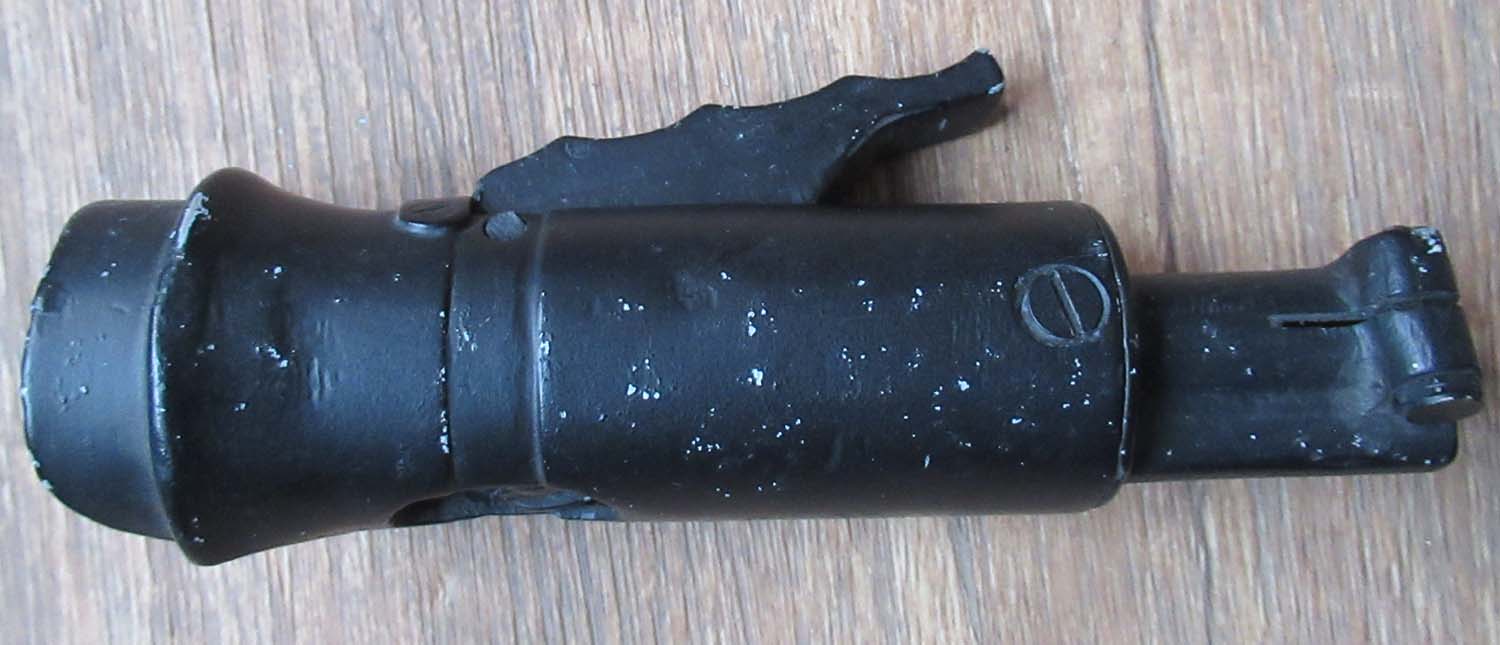
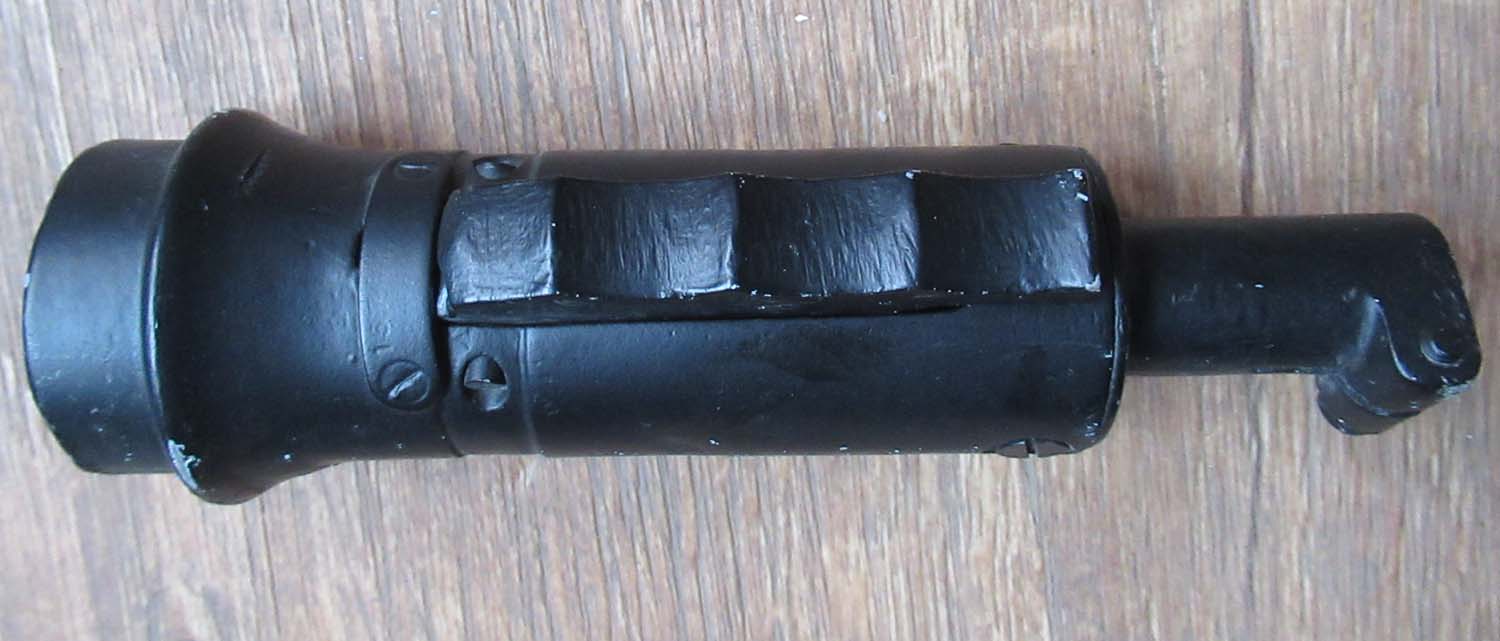
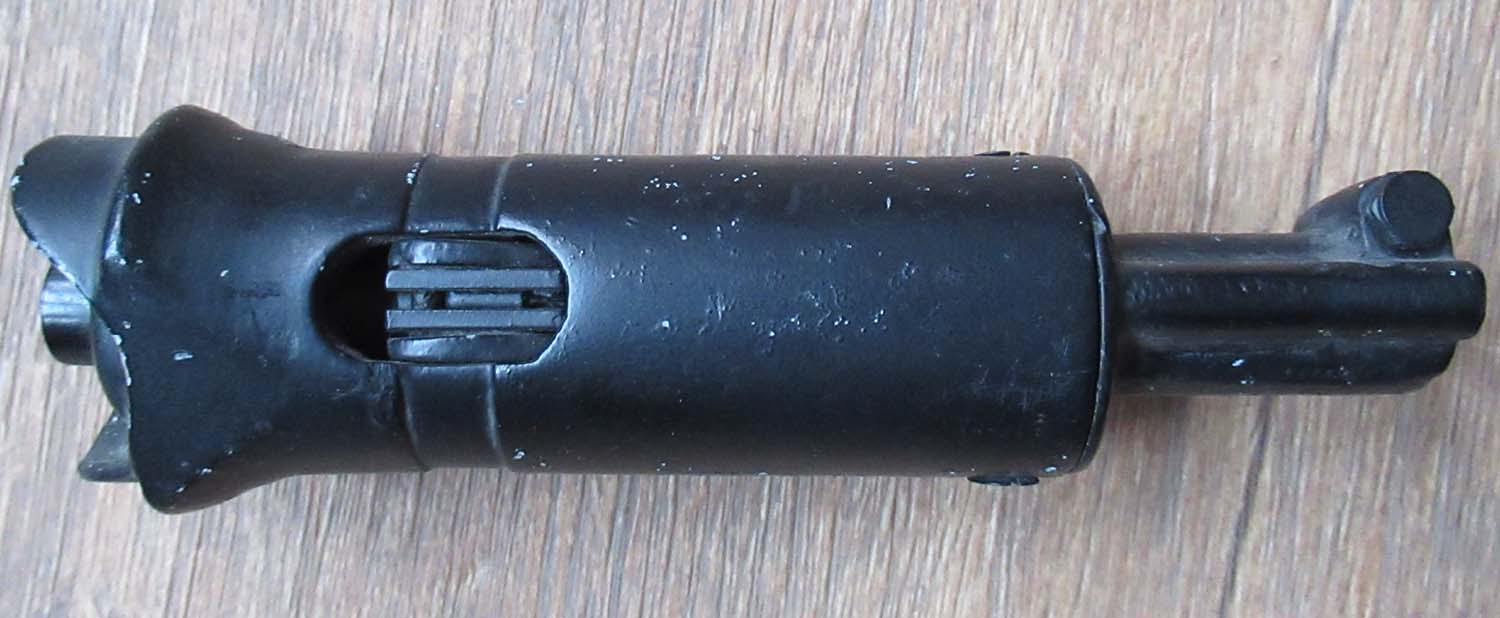
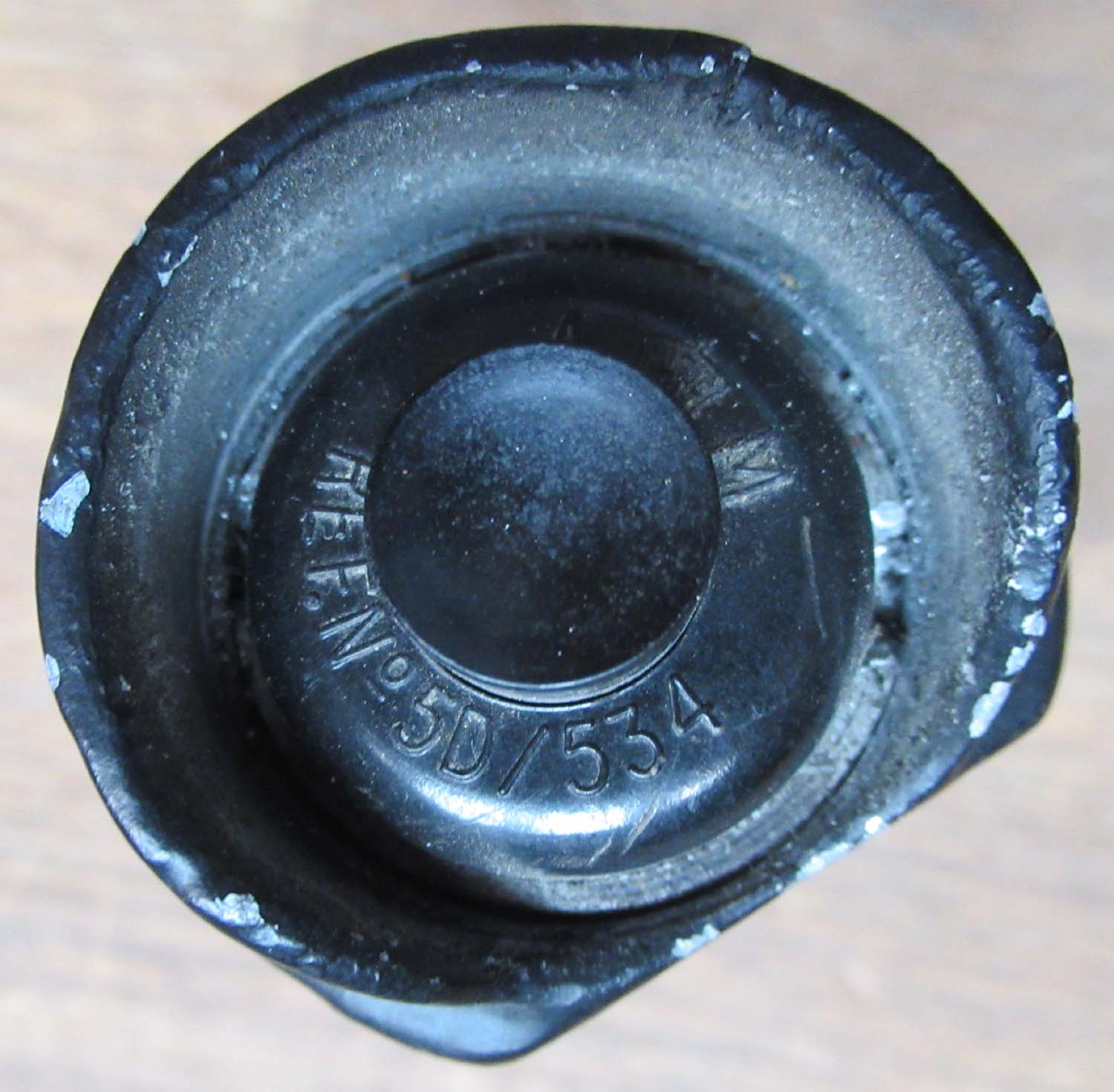
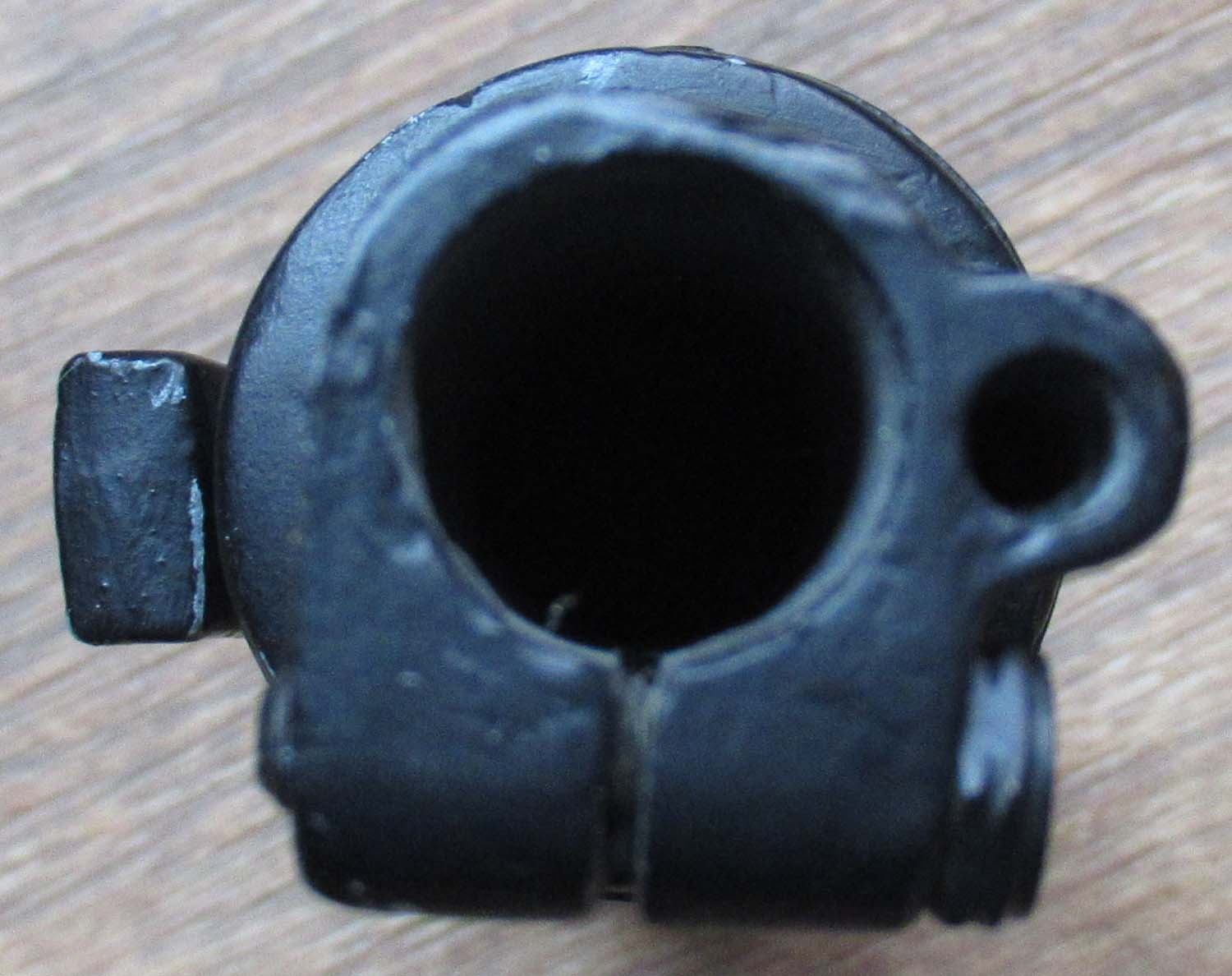
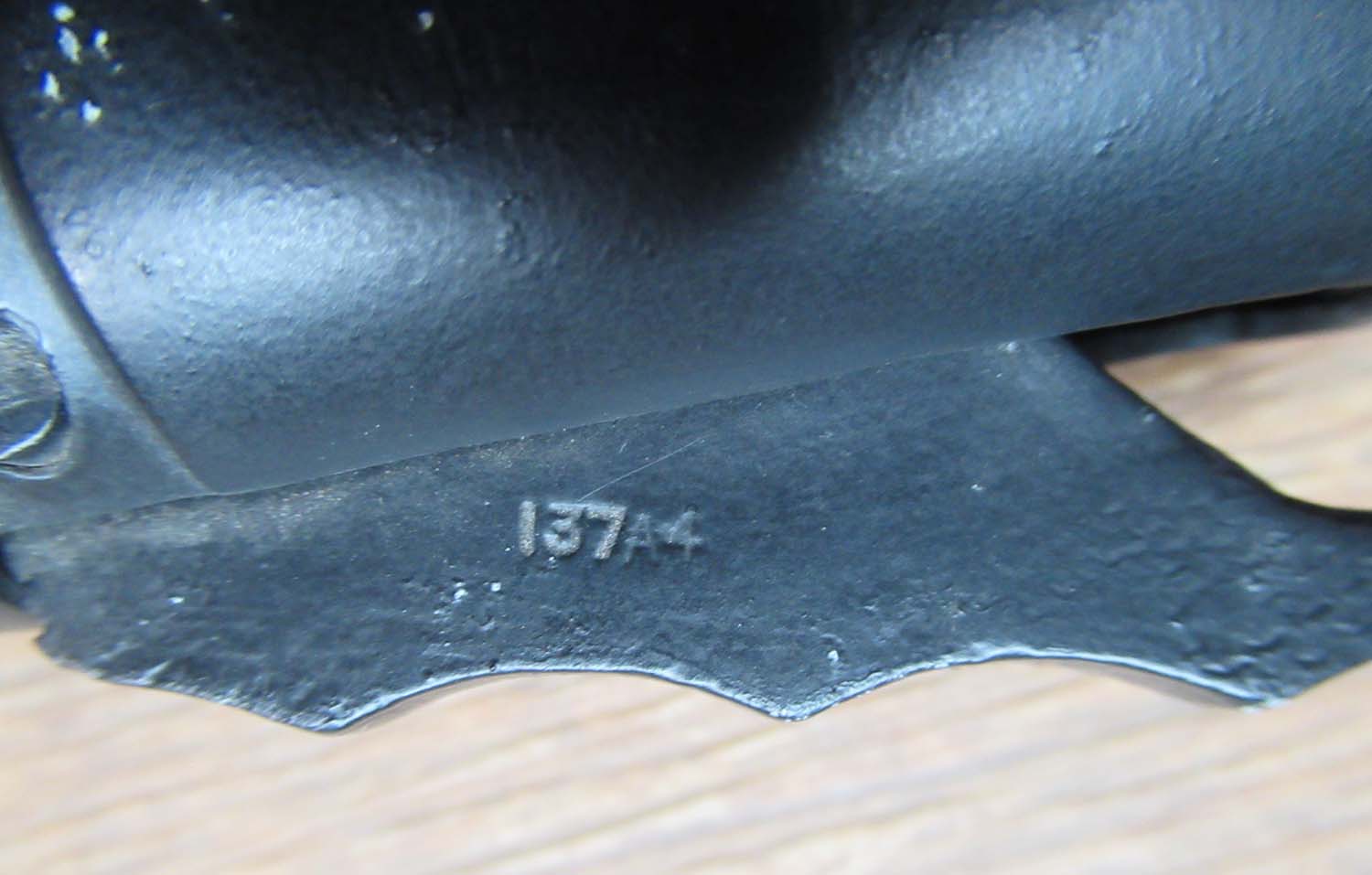
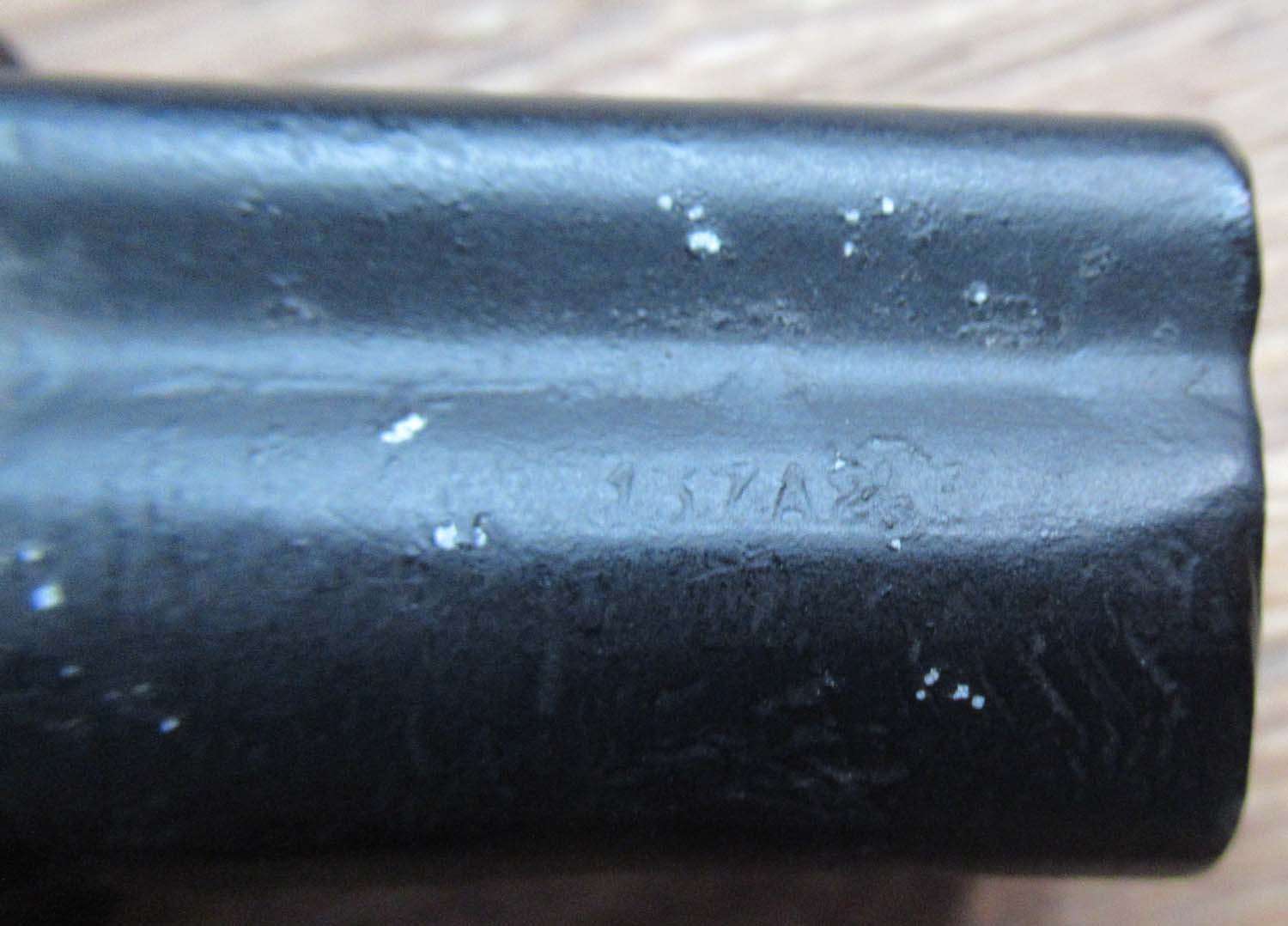
Out of stock more wanted please
contact me |
|
Click on
pictures to enlarge
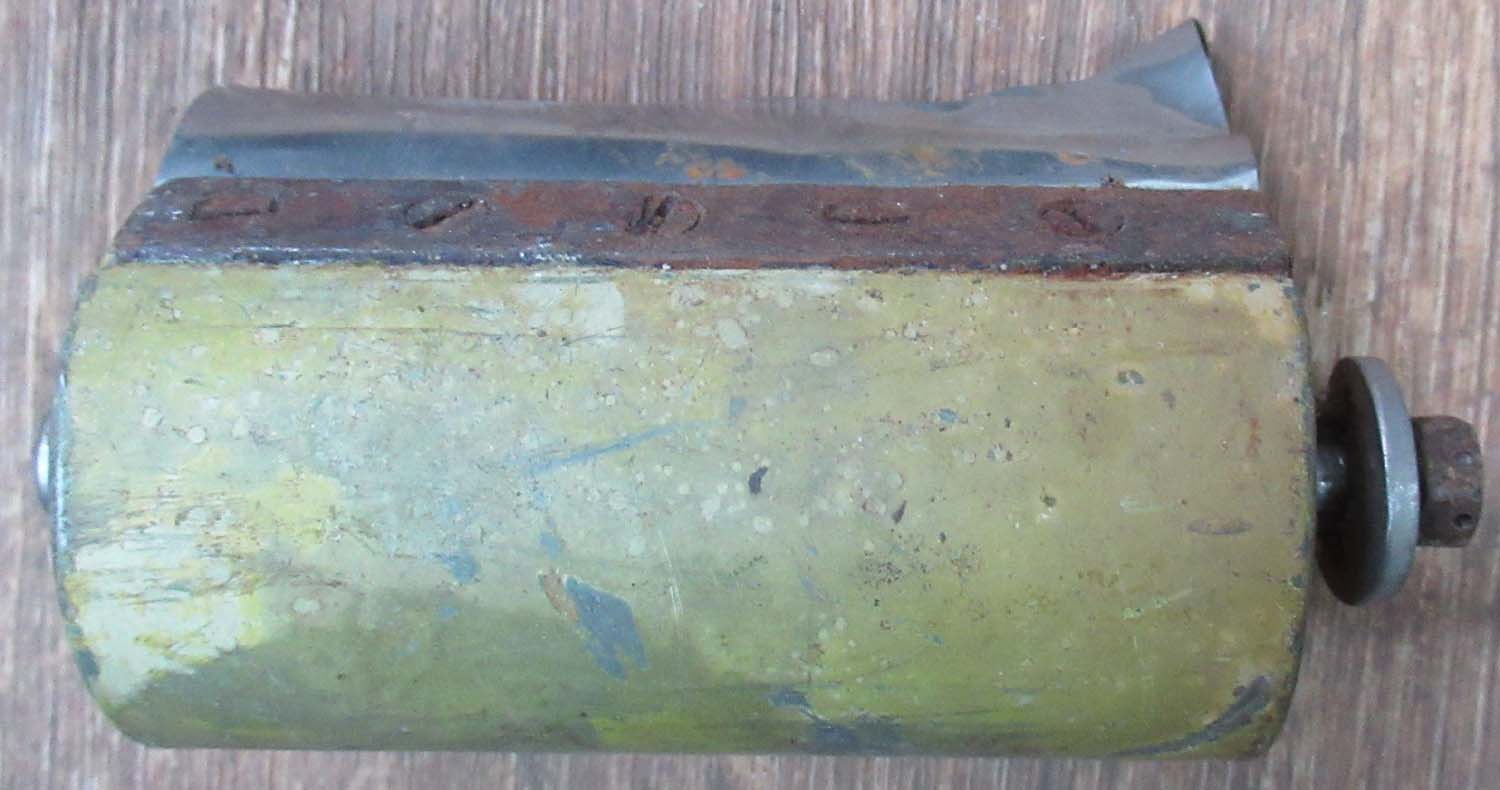
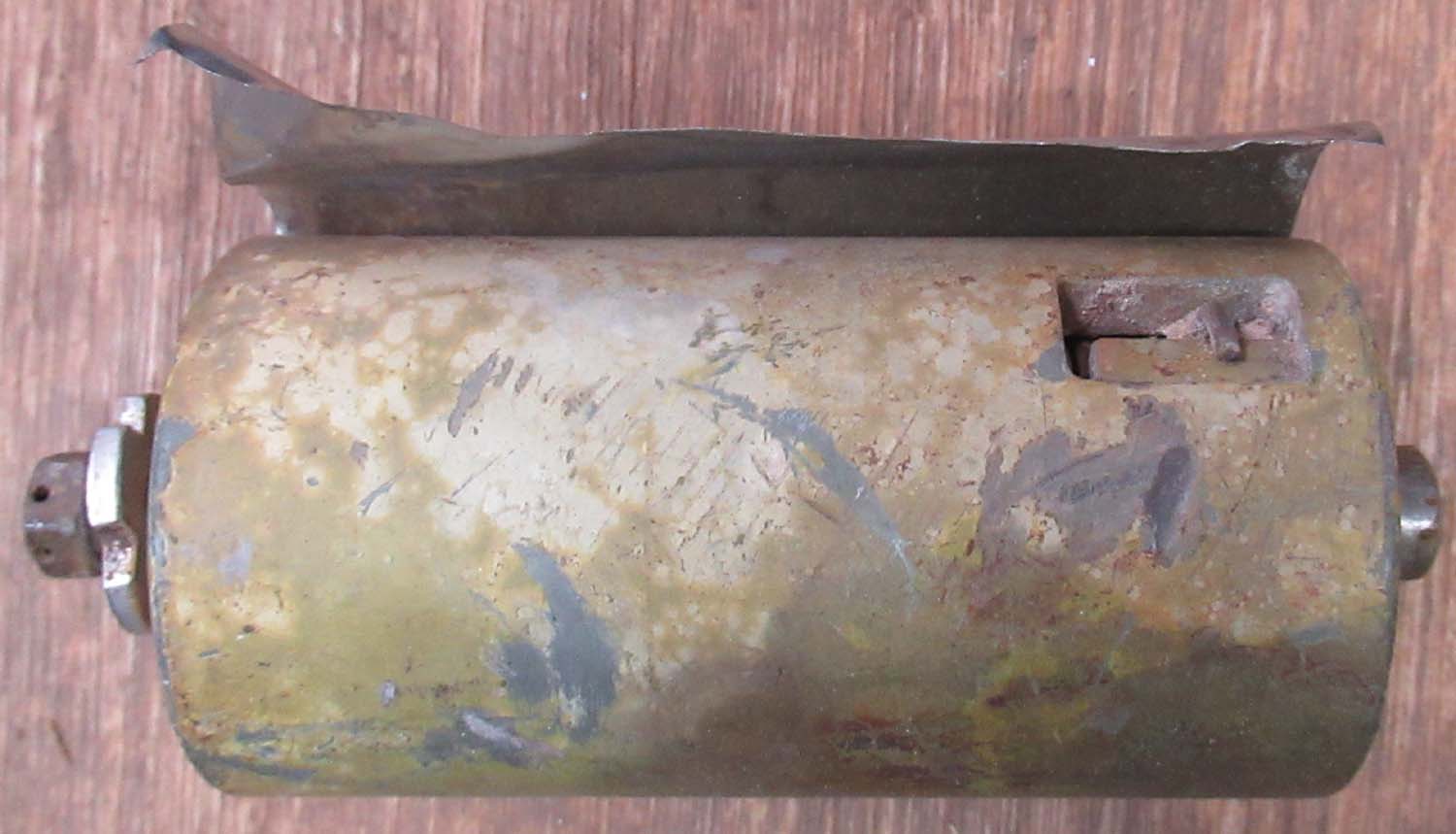
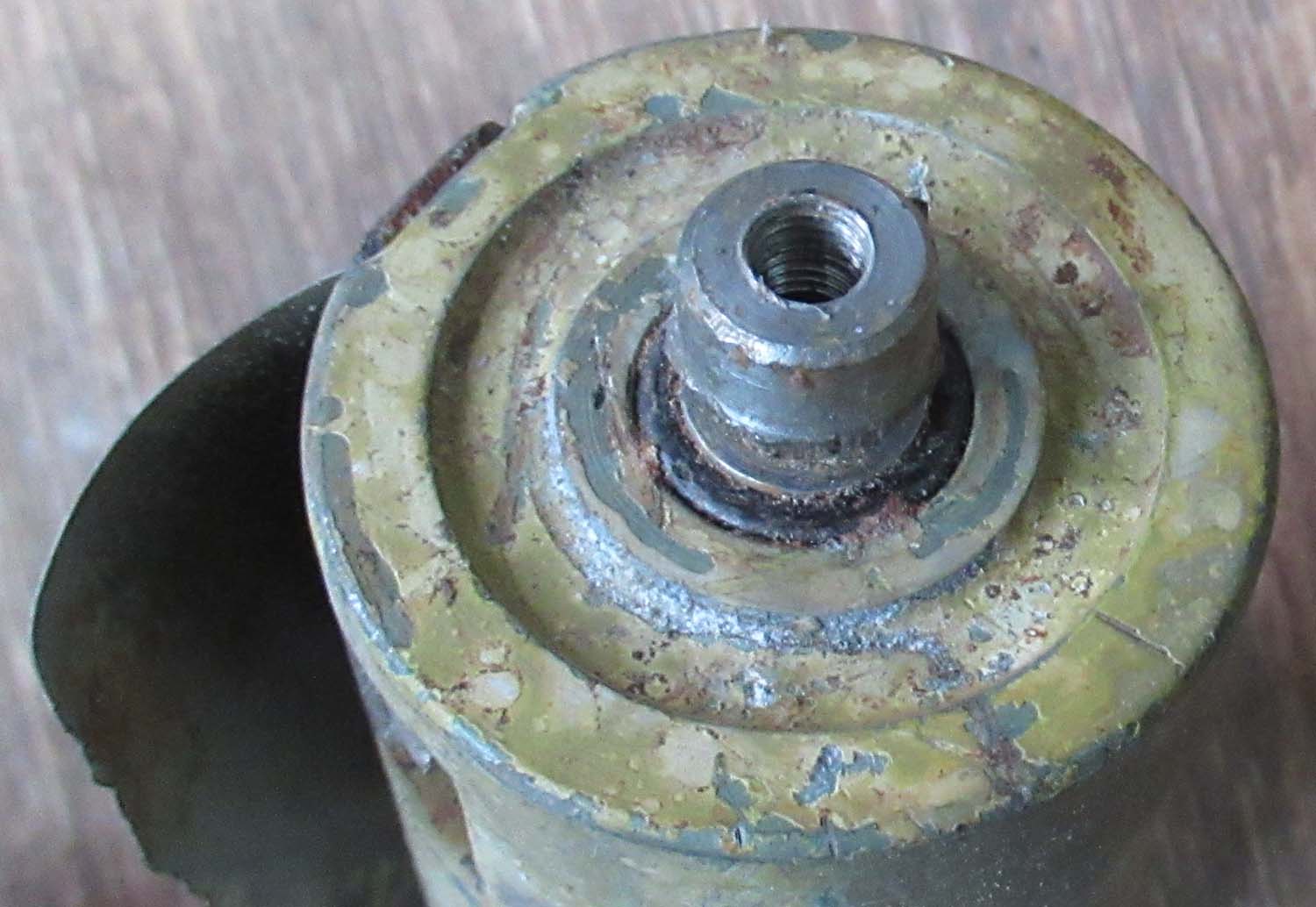
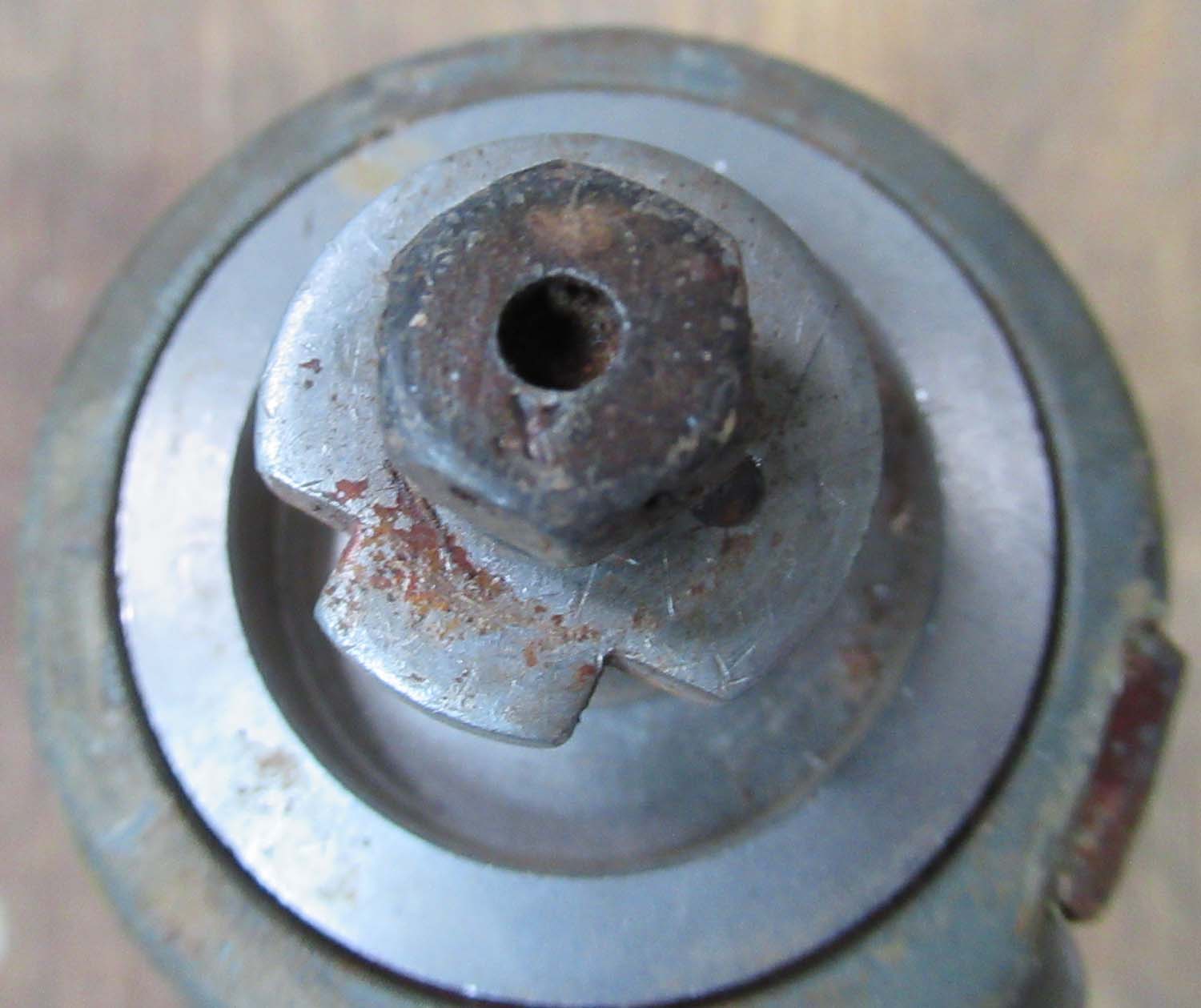
|
Sperry Turret
Ejection Chute Roller (No 104 pg1 Arm)
Here is a an ejection chute
roller from a Sperry turret, it is actually in good order
and still rotates around the spindle. Clearly seen in
the drawing under
These came
from Holland and may belong to Hustling Sue featured on the
relics page
link here.
They are
clearly from a crash the shortest peace is in good order and
still flexible the others have some damage but I would say
80% functional.
Click on pictures to enlarge
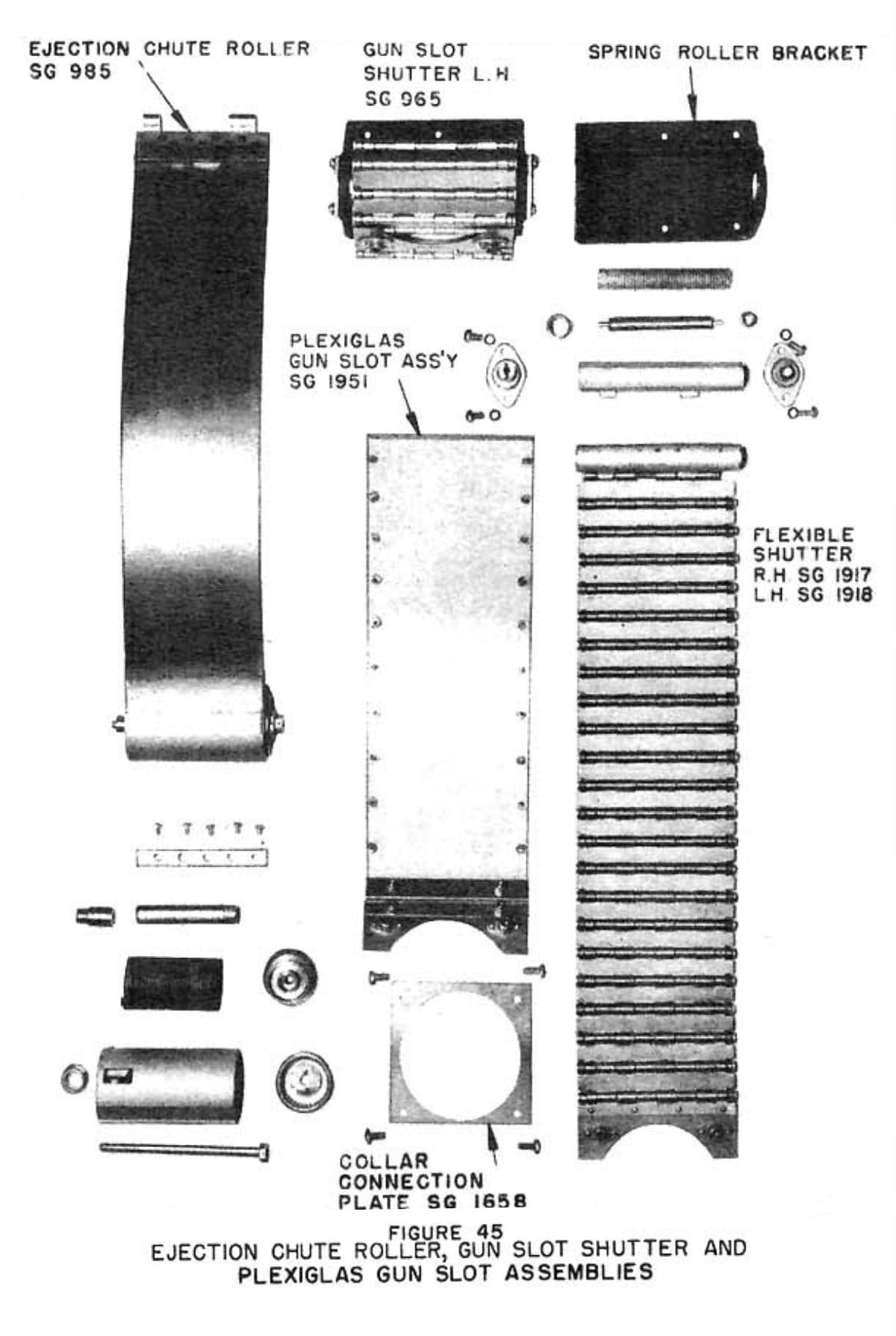
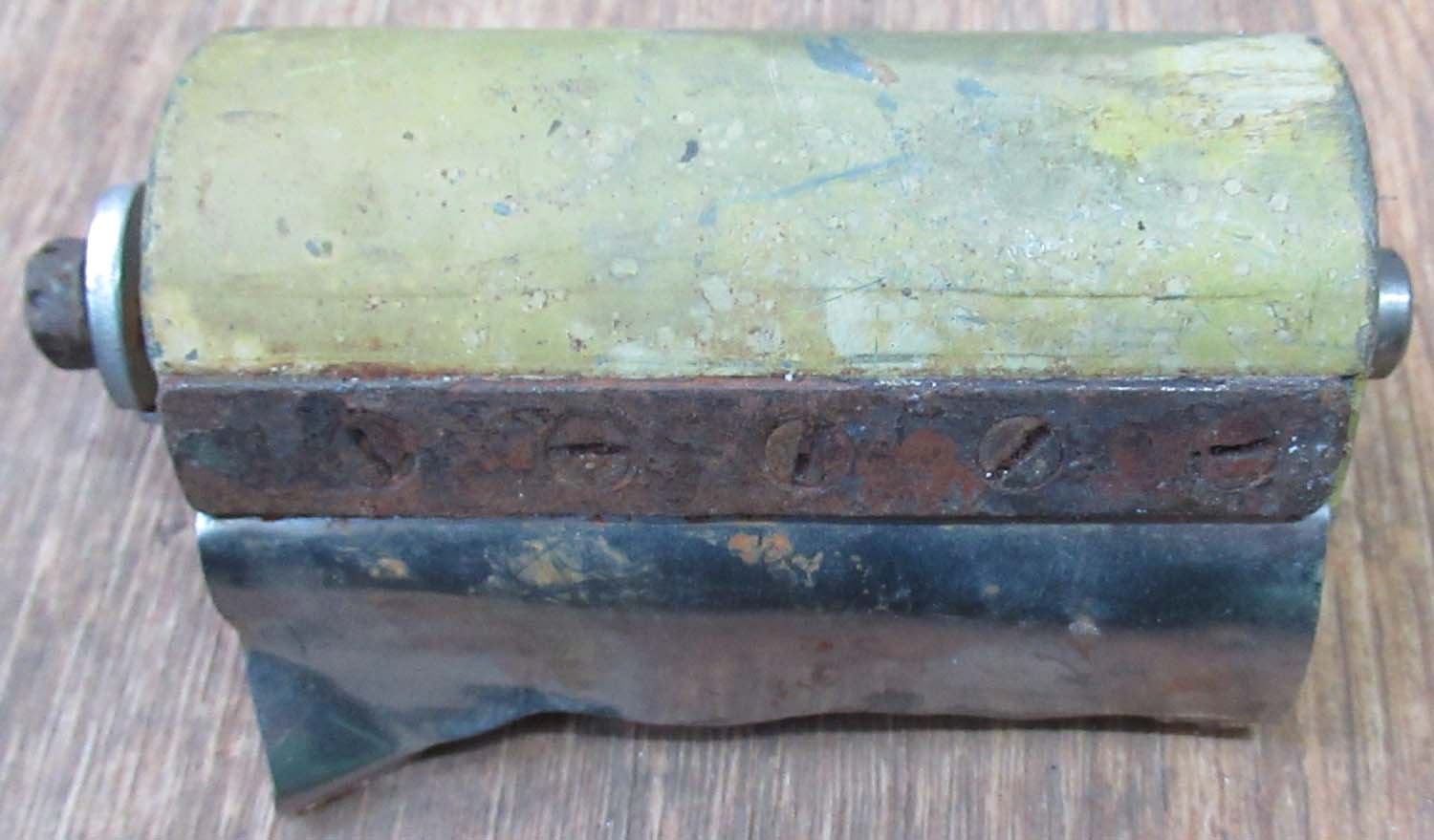
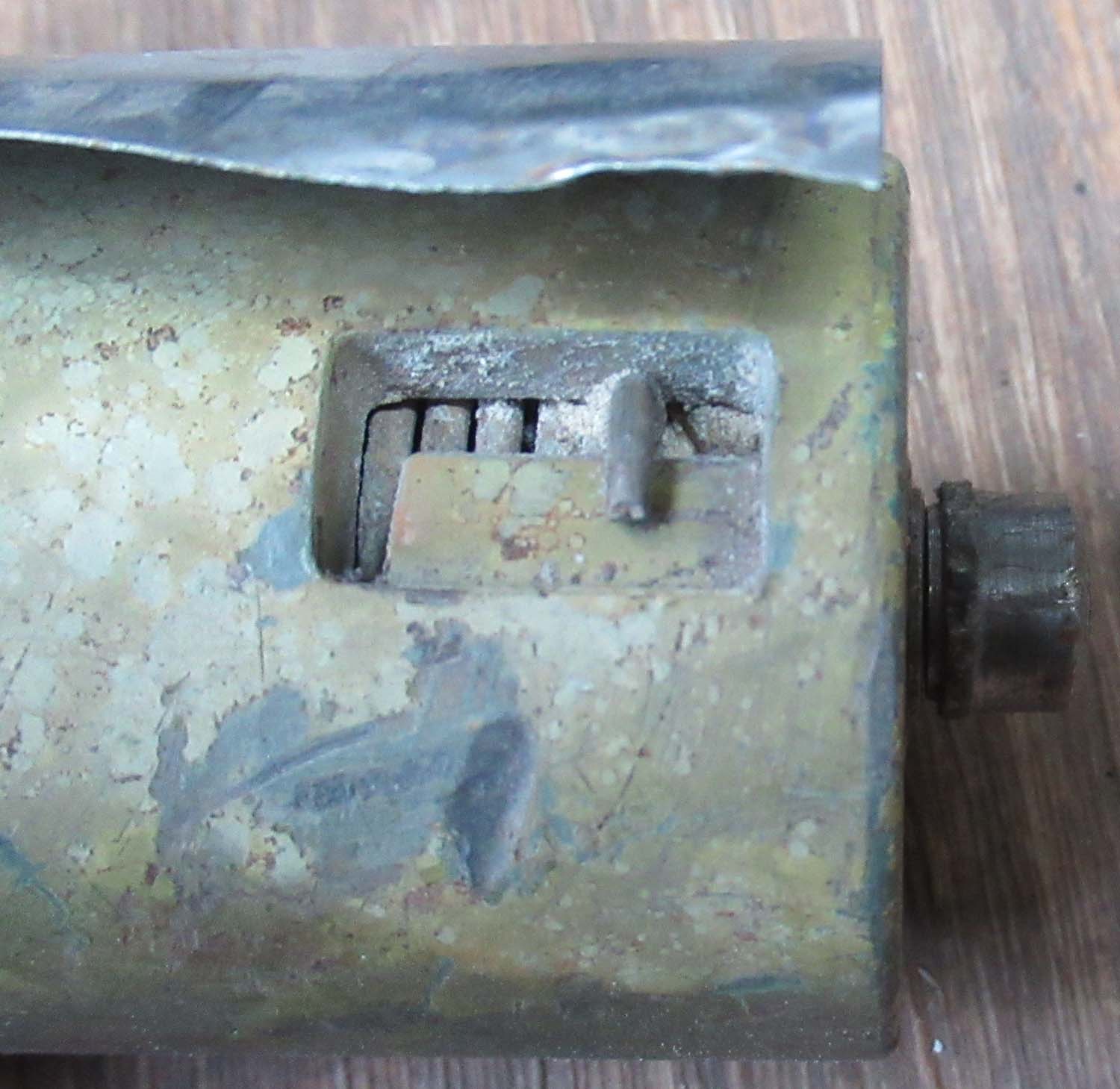
£225


|
|
Click on
pictures to enlarge

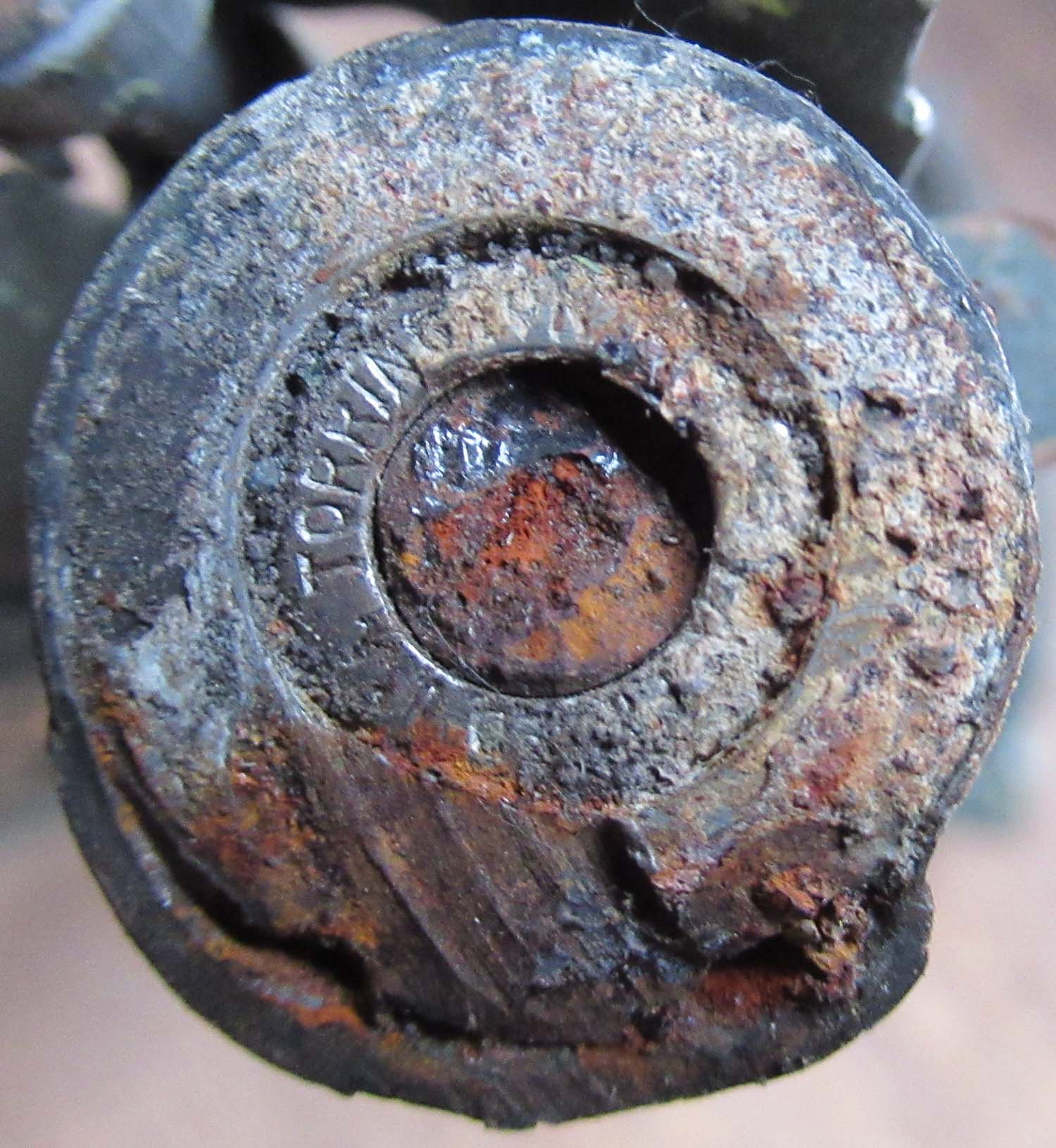
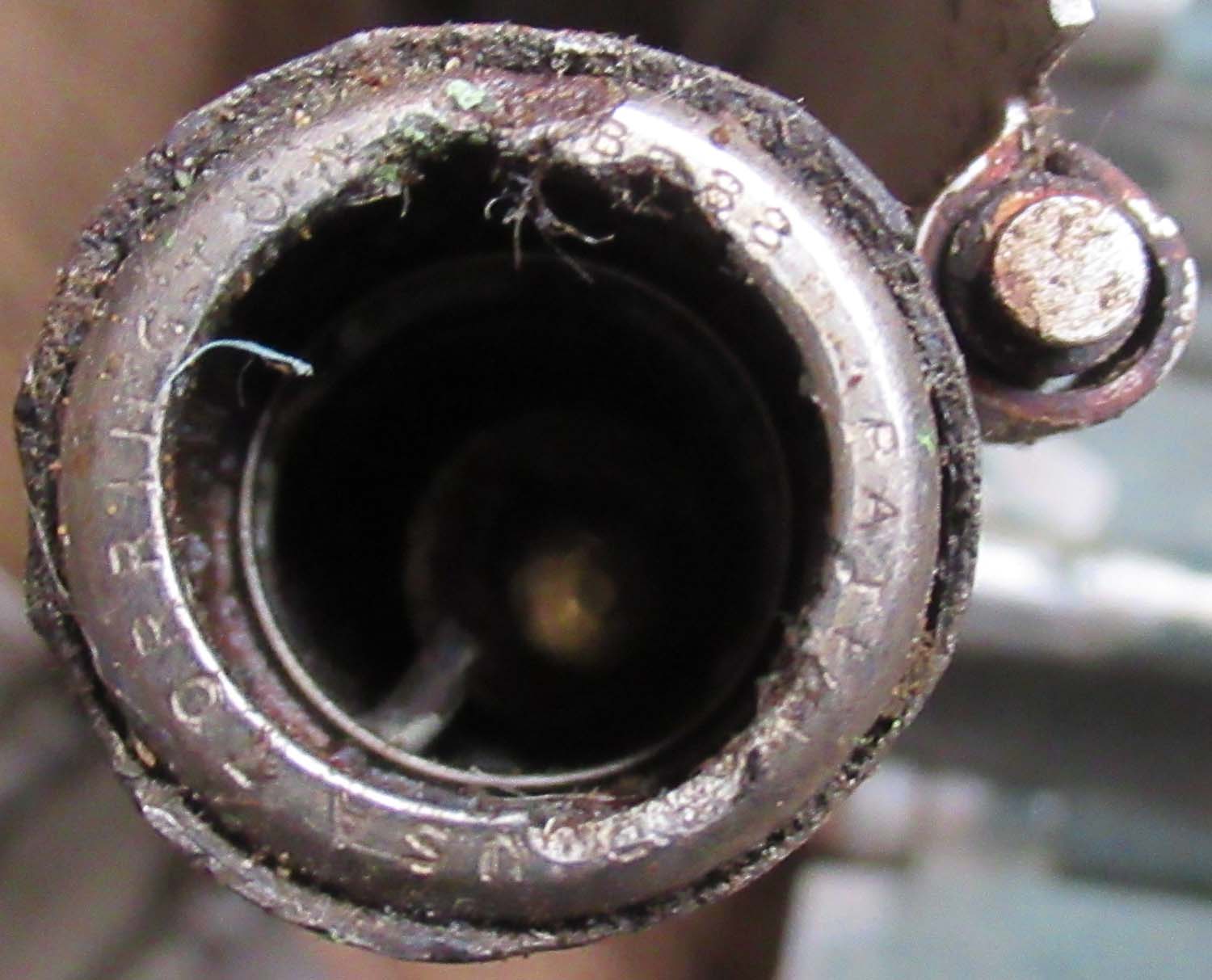
|
Sperry Turret
Flexible Shutter (No 103 pg1 Arm)
Here s another super rare
Turret item the flexible Turret shutters which seal the
turret gaps which the guns poke through.
Top to
bottom they measure 1: 17 1/2 inches or 44cm 2:16 1/2 inches
or 42 cm. 3:13 1/2 inches or 34cm. 4: 11 1/2 inches or 29
cm.
These came
from Holland and may belong to Hustling Sue featured on the
relics page
link here.
They are
clearly from a crash the shortest peace is in good order and
still flexible the others have some damage but I would say
80% functional.
Torrington
Patented USA
Click on
pictures to enlarge



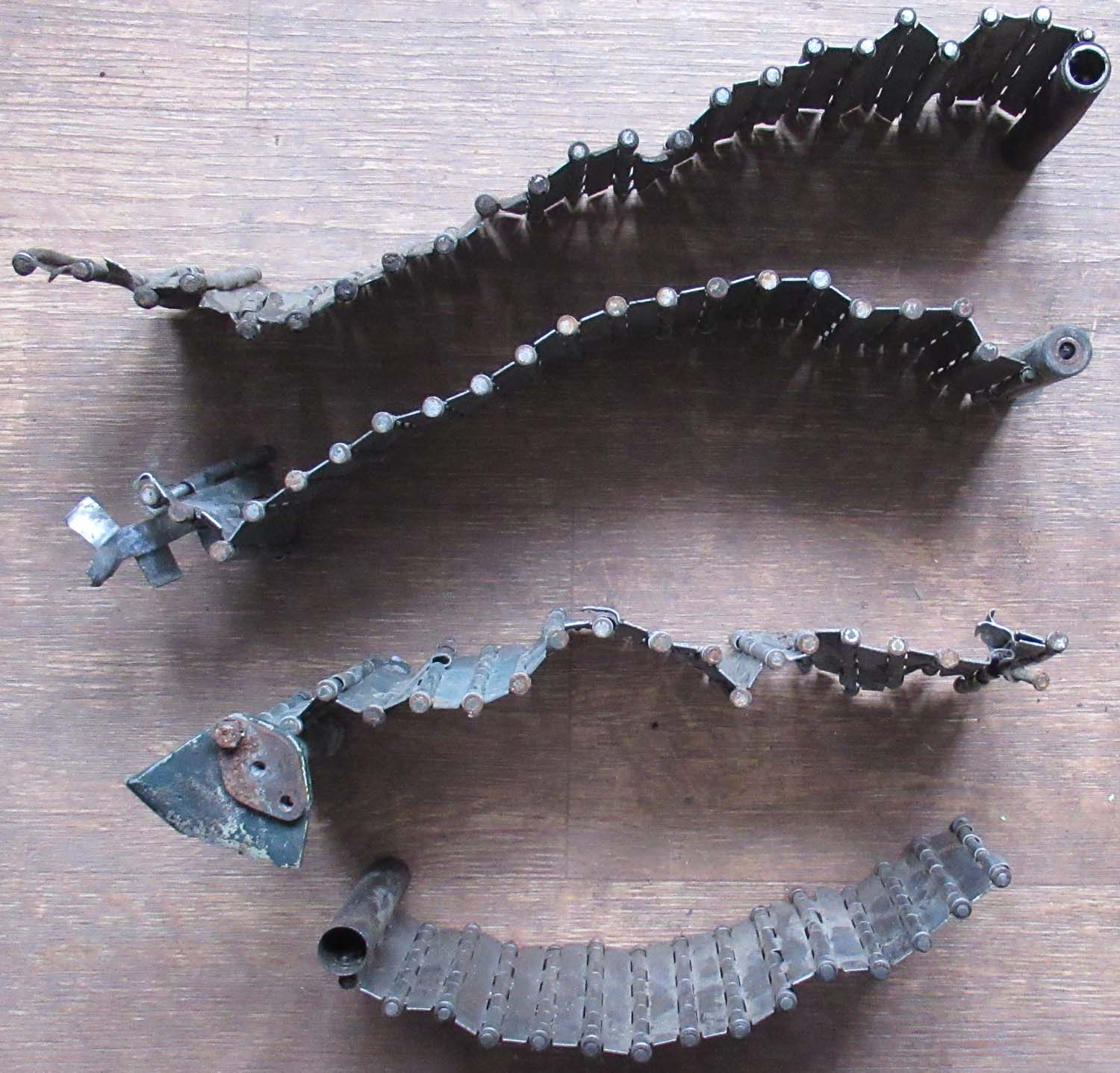
Overseas
buyers
please contact me for a
shipping quote.
£295
for the four peaces.


|
|
Click on
pictures to enlarge
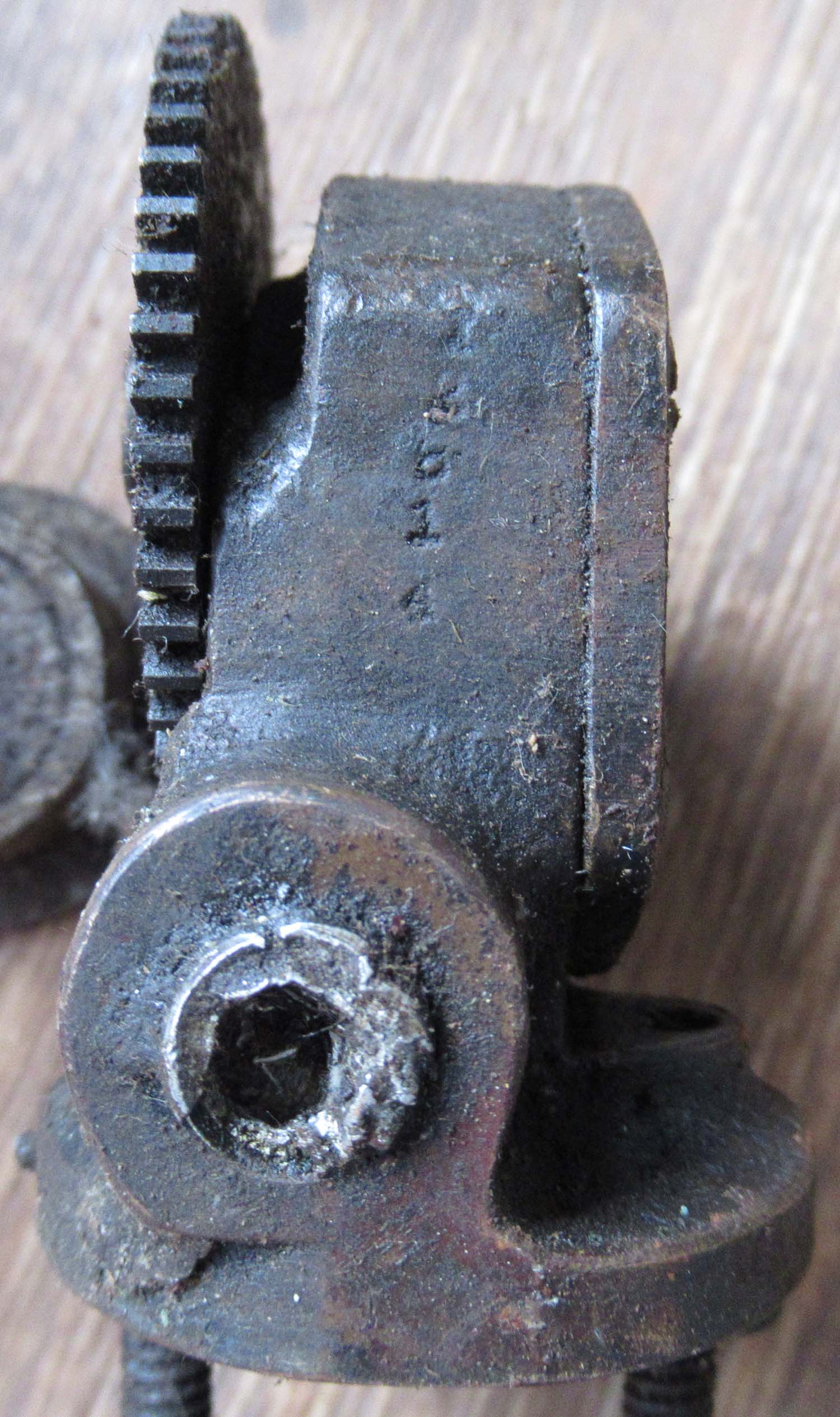
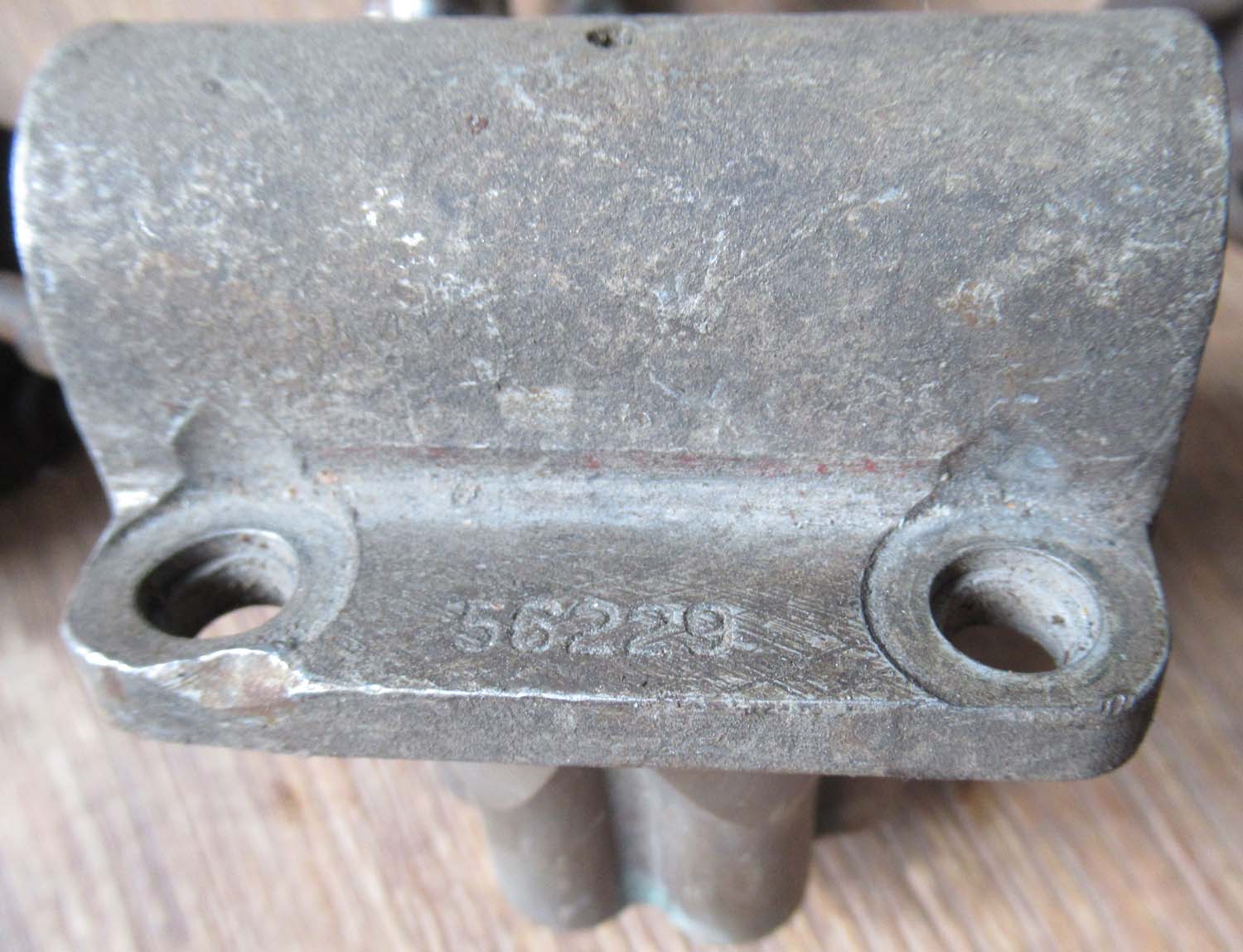 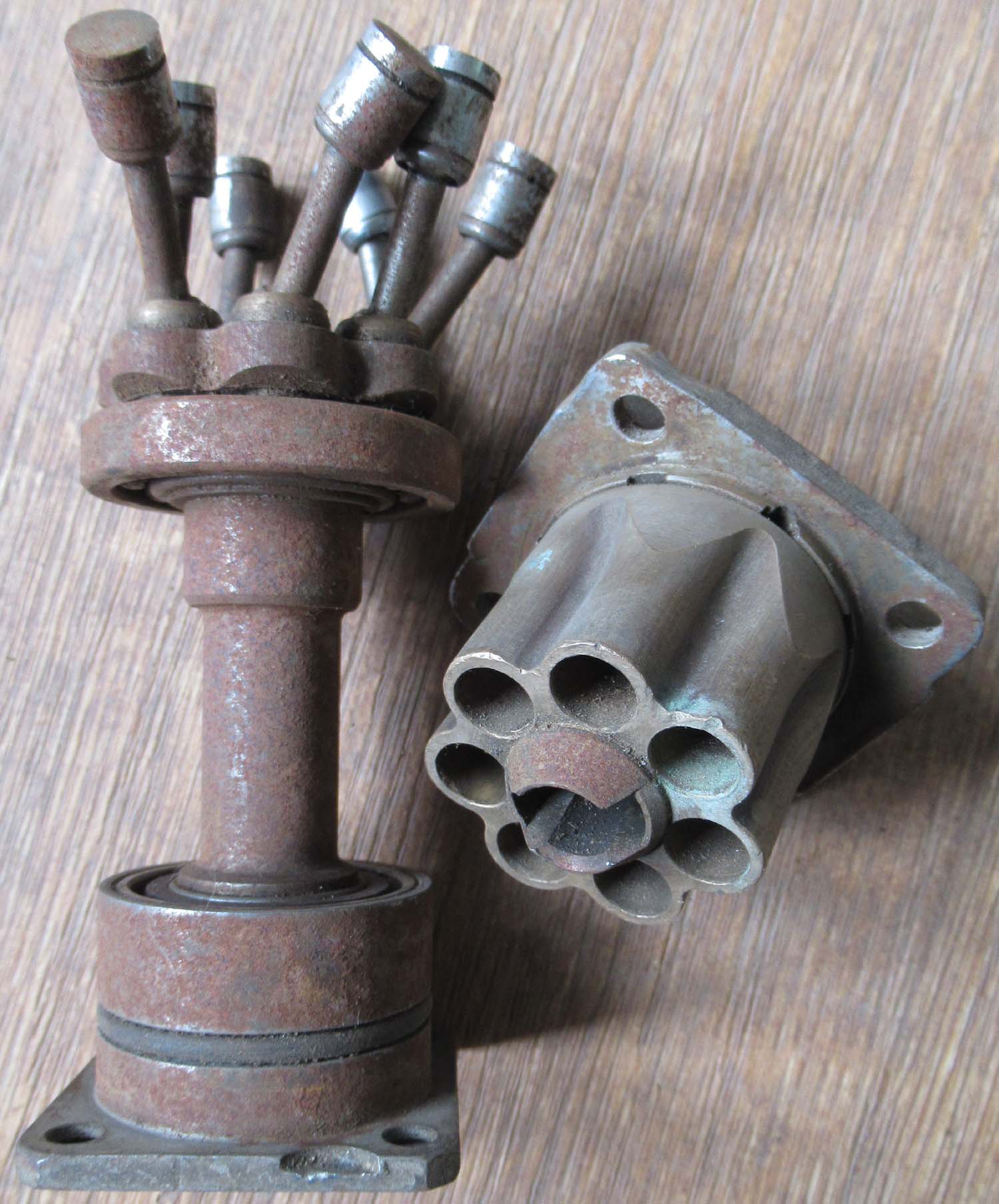
|
Sperry Turret Hydraulic
Parts 645176 (No 1A pg1 Arm)
Here is another gem hidden
away in our store for many years and uncovered as we
reorganise.
Its a collection of parts
from a hydraulic unit from a Sperry turret, this collection
of parts seem to be common to the Mid upper, rear and ball
turrets.
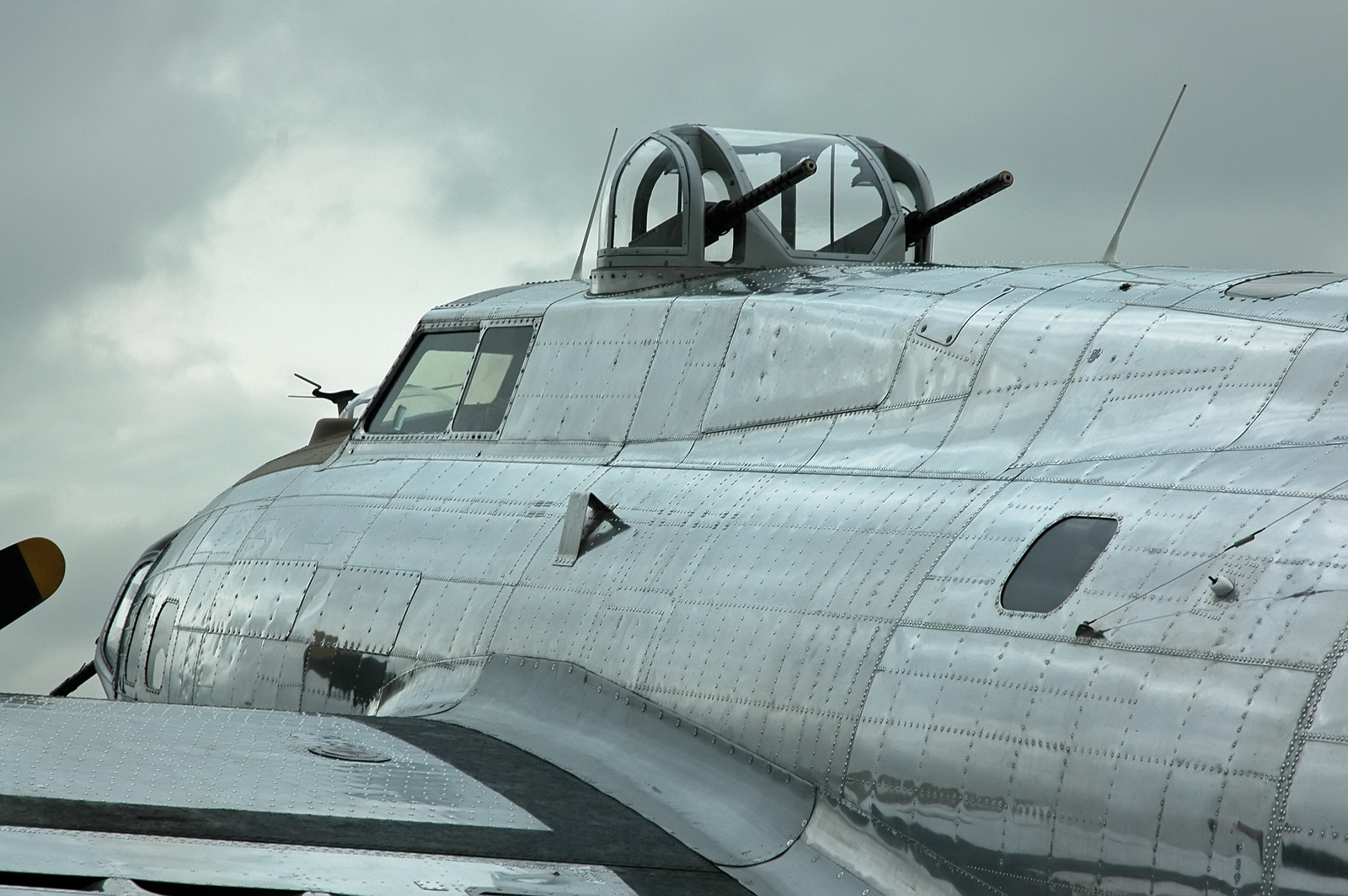
These turrets were fitted to
the B17 and B24 Bombers and probably other US combat
aircraft.
I have no idea if it is
complete but certainly a useful package as spares what you
see in the pictures is what you will receive.
Click on
pictures to enlarge
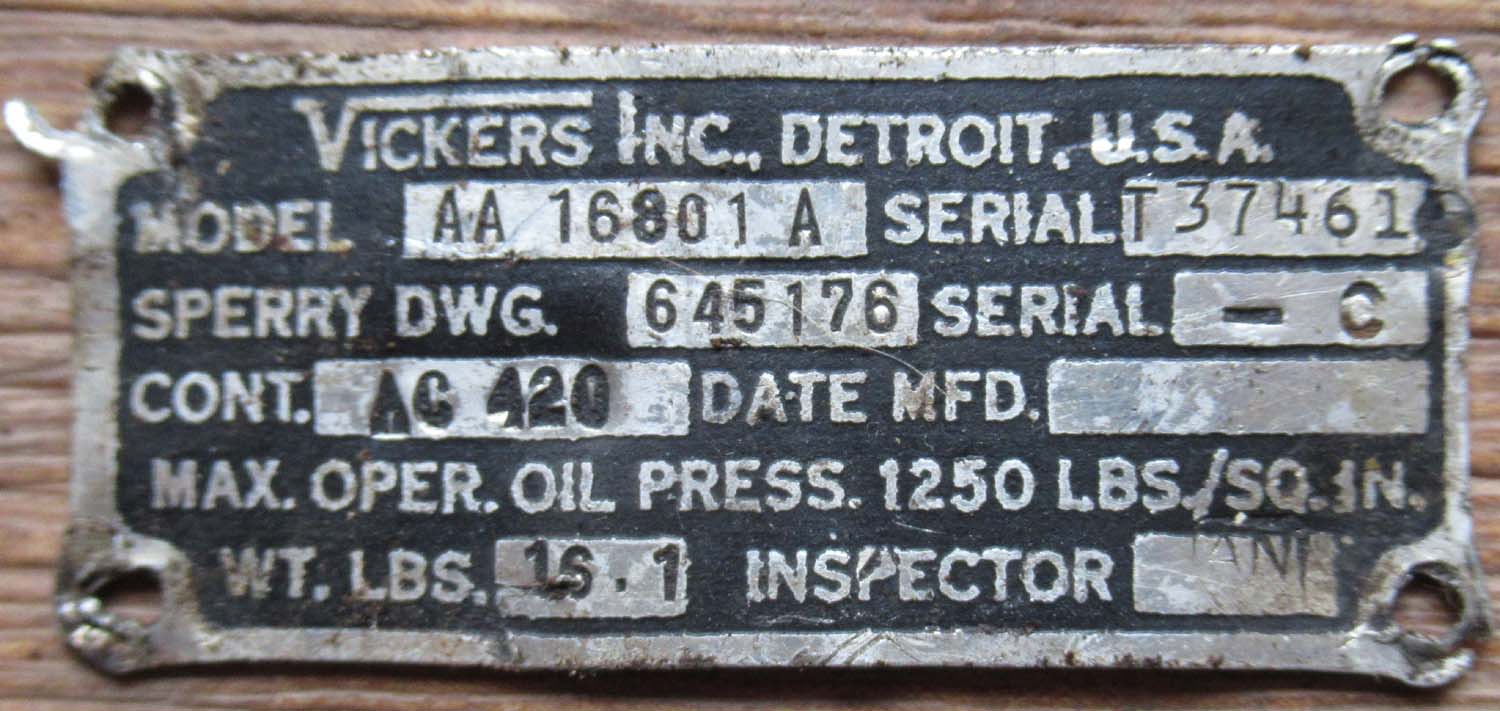
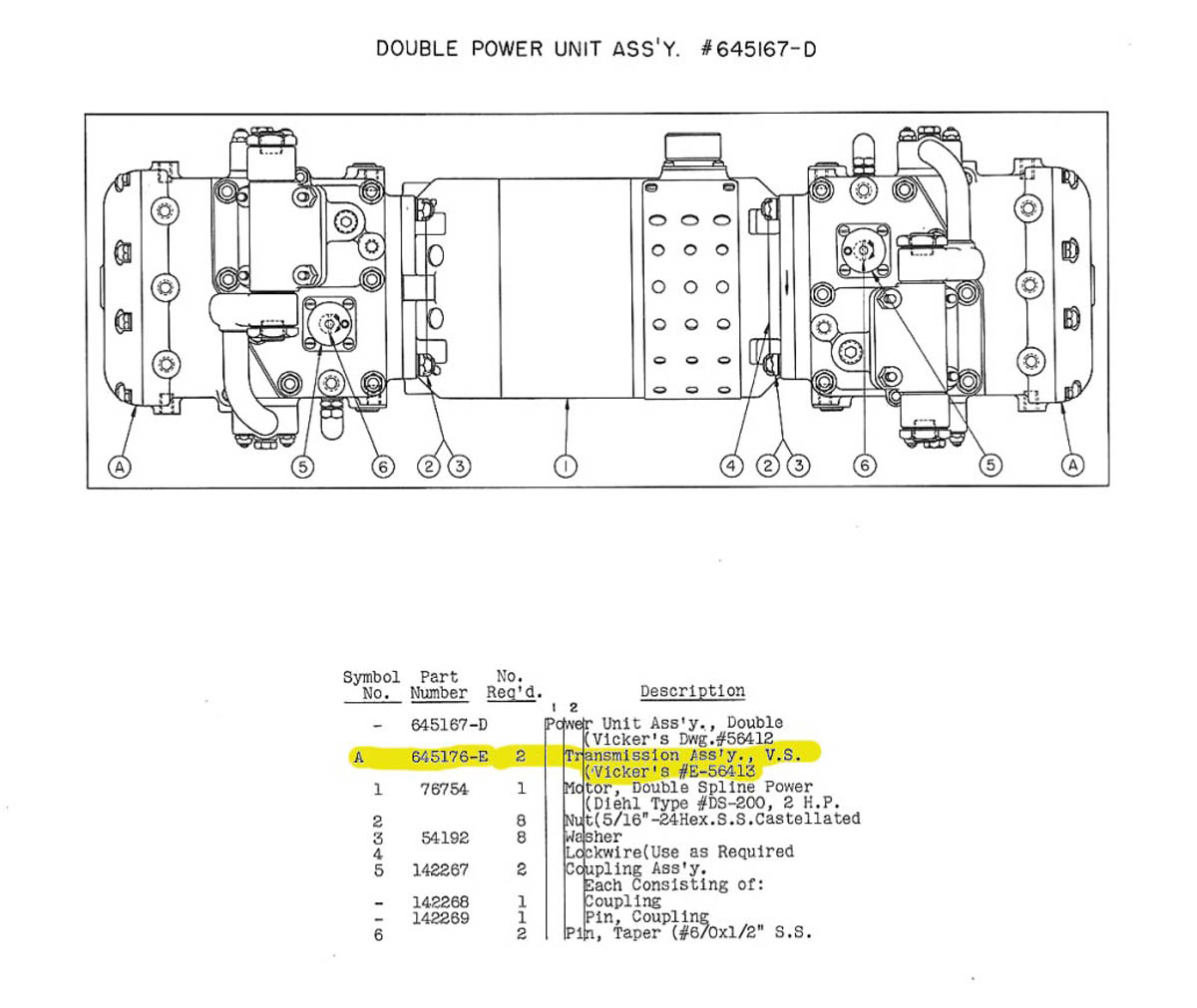
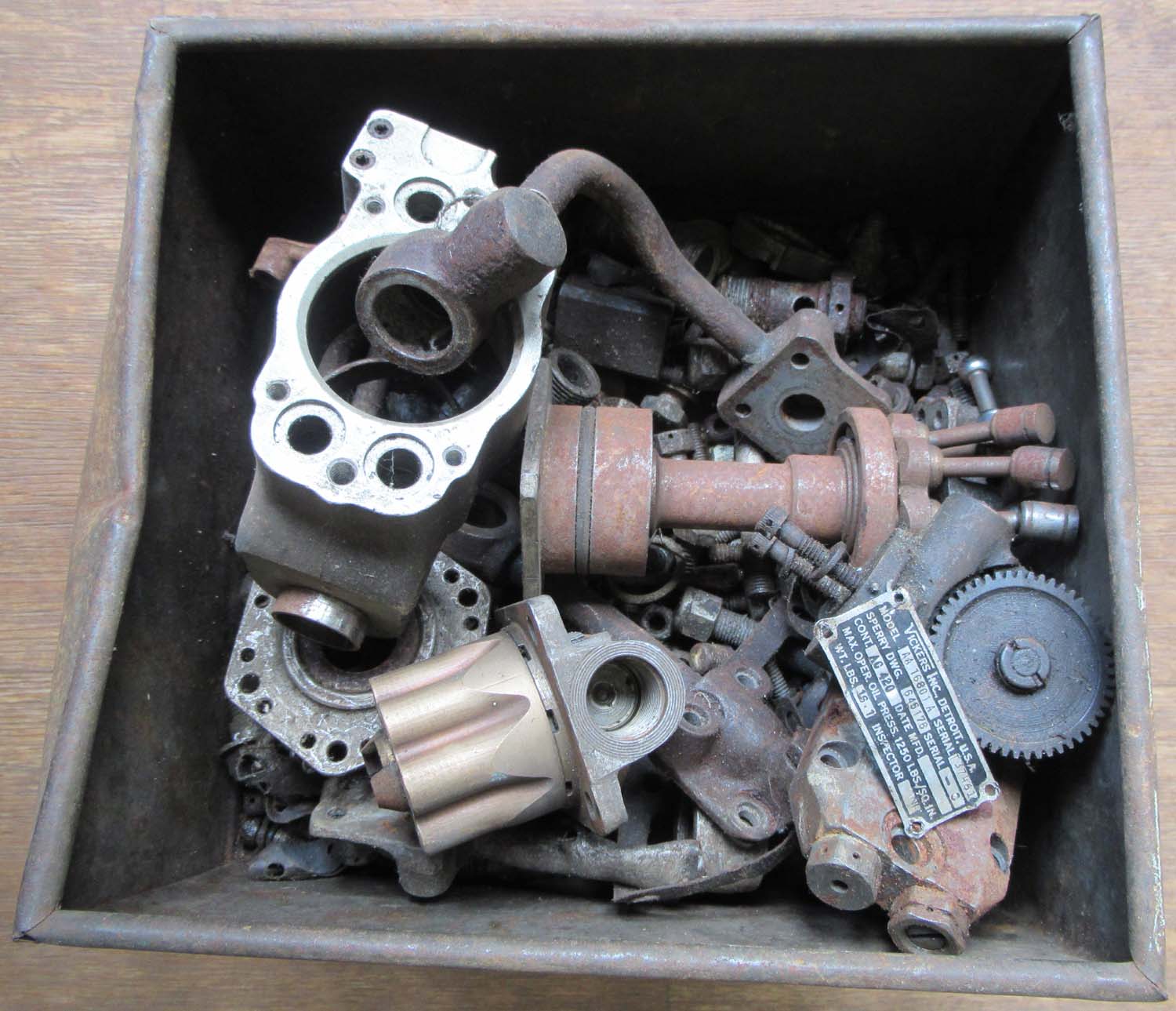
However the drawing
number on the plate
645176
corresponds to the variable speed hydraulic
units of the Sperry upper turret, illustrated in this
manual extract above centre.
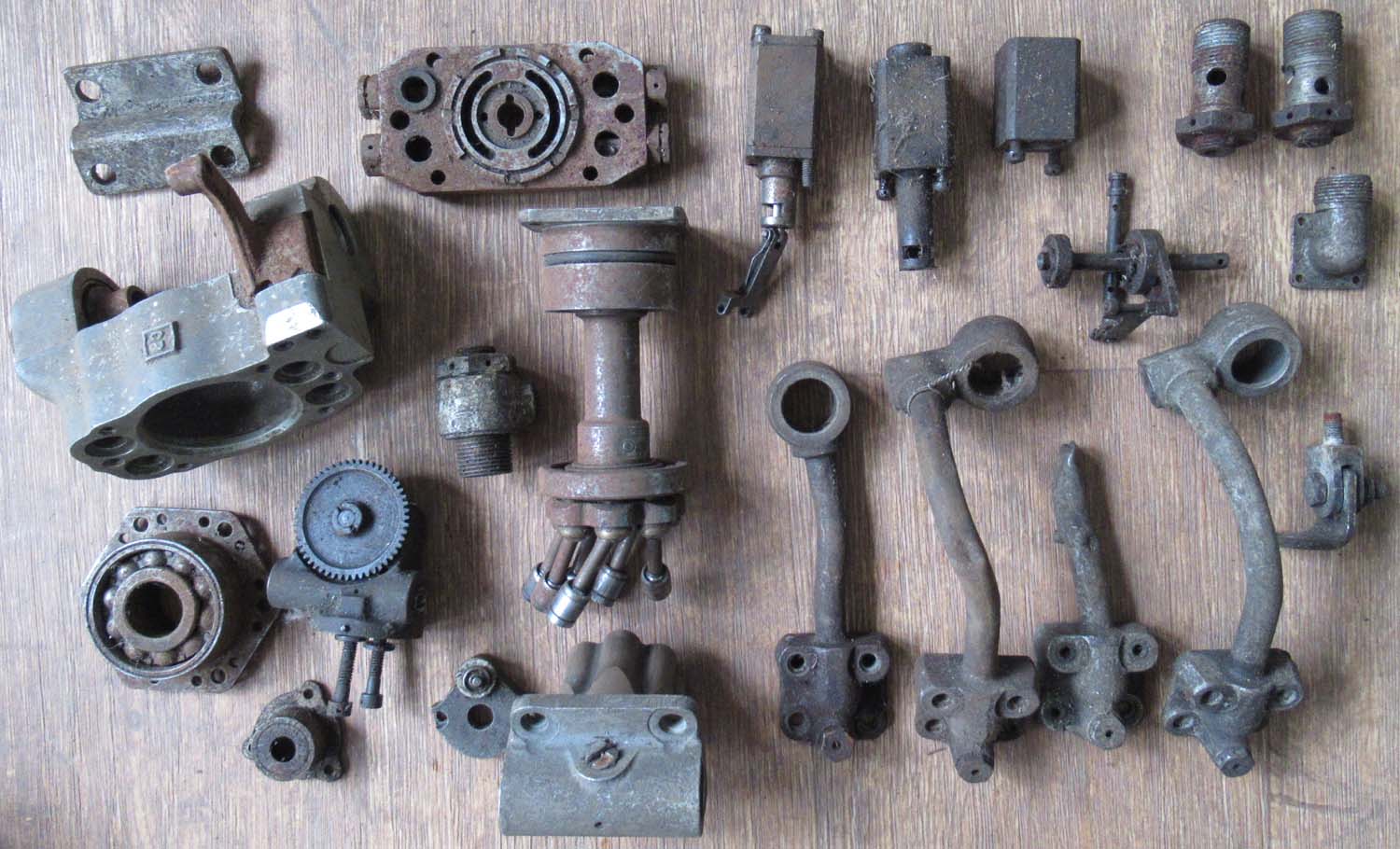
3.jpg) 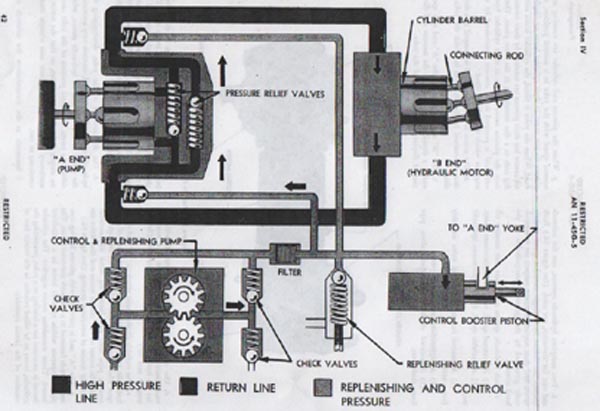
Far right above extract
taken from Lower Ball Turret Types A-2B and A-13A manual
Overseas
buyers
please contact me for a
shipping quote.
£595


|
|
Click on
pictures to enlarge


|
Hurricane Z5053
Cannon magazine - A
(No 102 Pg1 Arm)
Here we have a 20mm ammo
boxes as fitted to Russian Hurricanes in good original
condition, they work with
with ShVAK 20mm Cannons. We have a cannon mount from this
aircraft listed further down the page. These are available
individually or as a discounted pair, scroll down to find
the listing for the pair.
Click on
pictures to enlarge





Out of stock more wanted please
contact me |
|
Click on
pictures to enlarge


|
Hurricane Z5053
Cannon magazine - B
(No 101 Pg1 Arm)
Here we have a 20mm
ammo boxes as fitted to Russian Hurricanes in good original
condition, they work with
with ShVAK 20mm Cannons. We have a cannon mount from this
aircraft listed further down the page. These are available
individually or as a discounted pair, scroll down to find
the listing for the pair.
Click on
pictures to enlarge


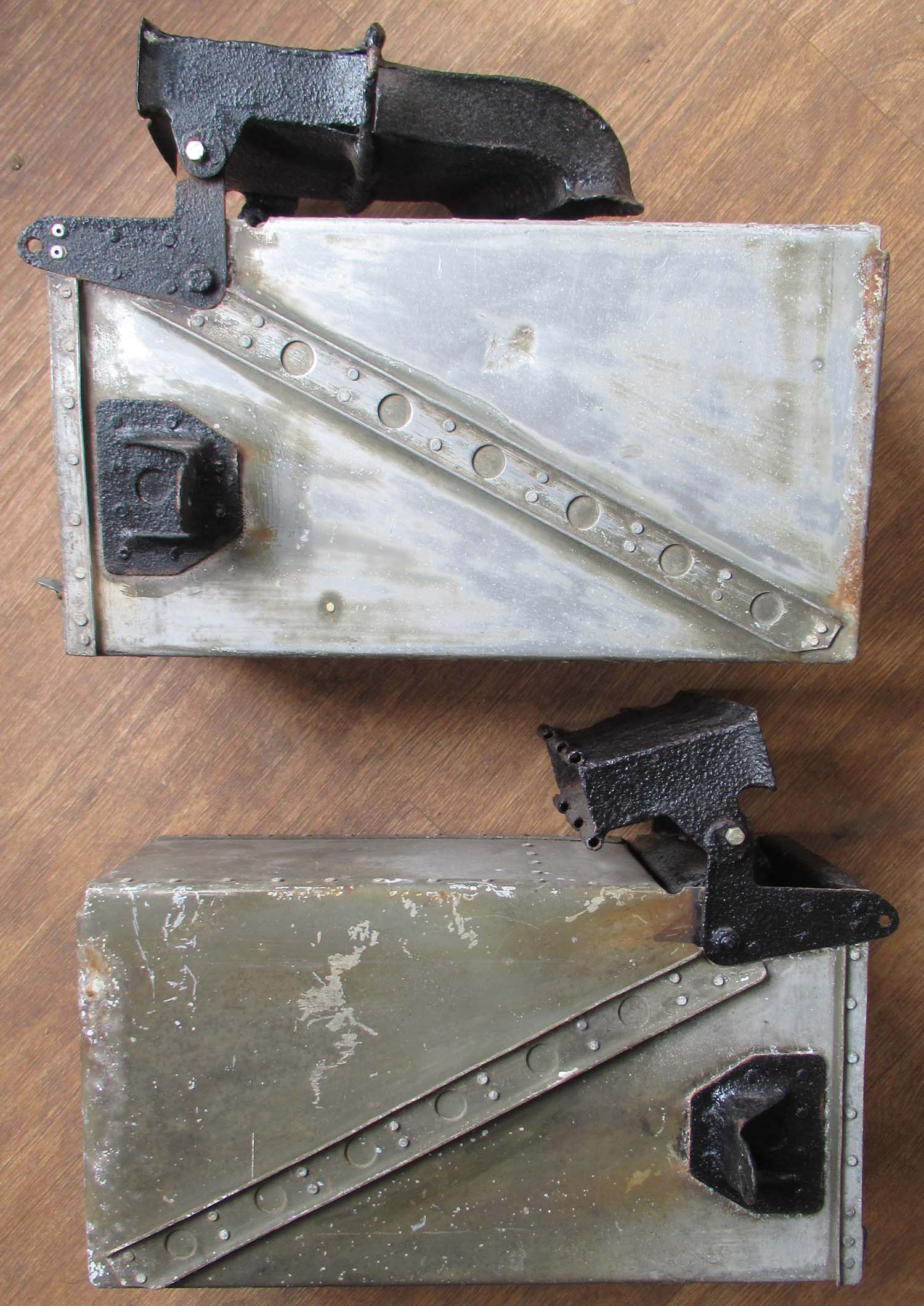


Out of stock more wanted please
contact me |
|
Click on
picture to enlarge
|
Pair of
Hurricane Z5053 Cannon magazines - A
and B
(No 100 Pg1 Arm)
Here we have a 20mm ammo
boxes as fitted to Russian Hurricanes in good original
condition, they work with
with ShVAK 20mm Cannons. We have a cannon mount from this
aircraft listed further down the page. This is
the discounted offer for the
pair.
Click on
picture to enlarge

Out of stock more wanted please
contact me |
|
Click on
pictures to enlarge
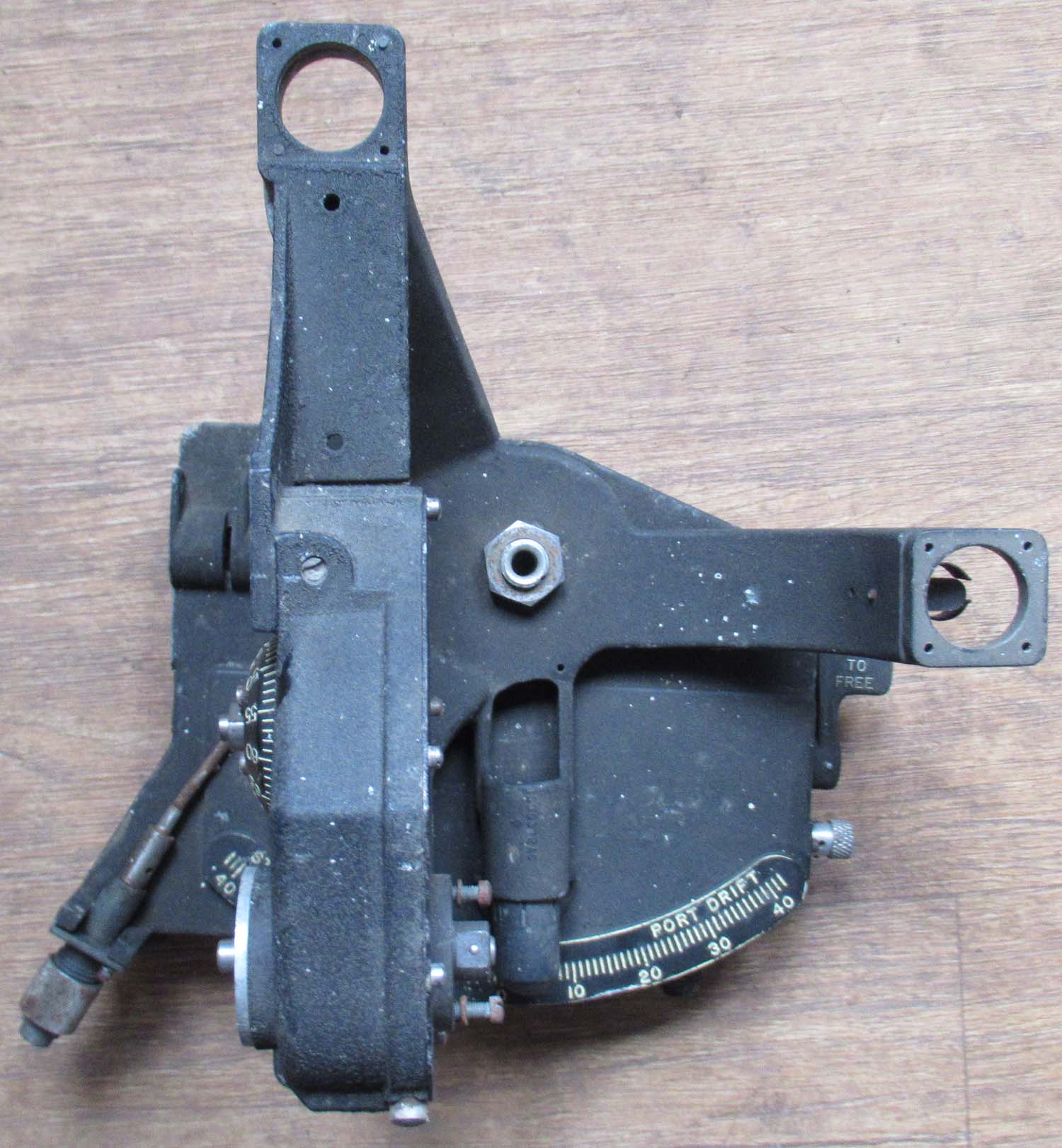
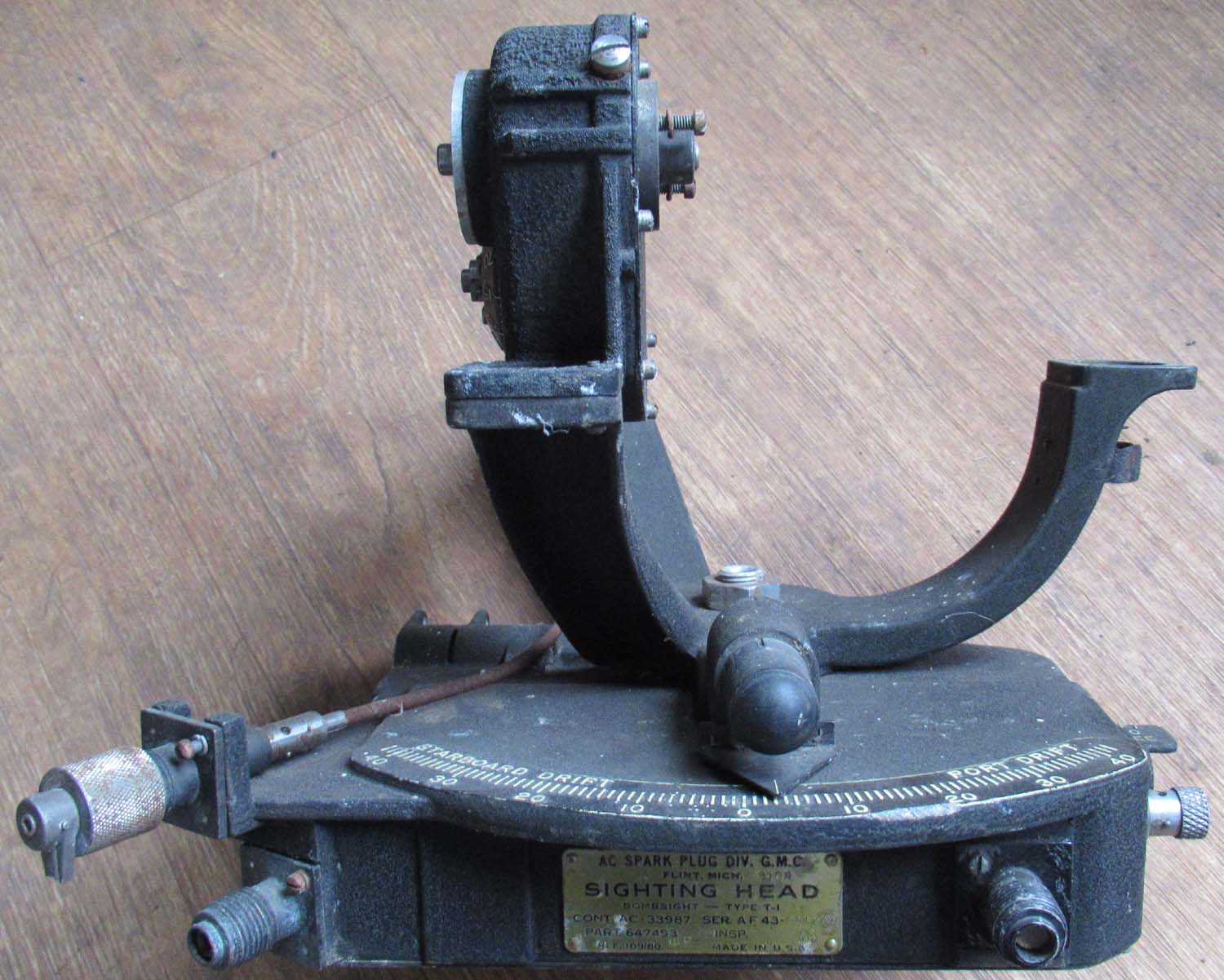
|
Mk XIV Bombsight
(No 99 Pg1 Arm)
Here we have a the base for a
MK XIV bombsight. This one made in the US under the lend
lease program.
Useful as a spare if
you are missing this part or have a damaged bombsight or
perhaps as a peace of Art converted to a table lamp. This is
the standard Bombsight used by the RAF throughout the war on
heavy Bombers like the Lancaster.
Click on
pictures to enlarge
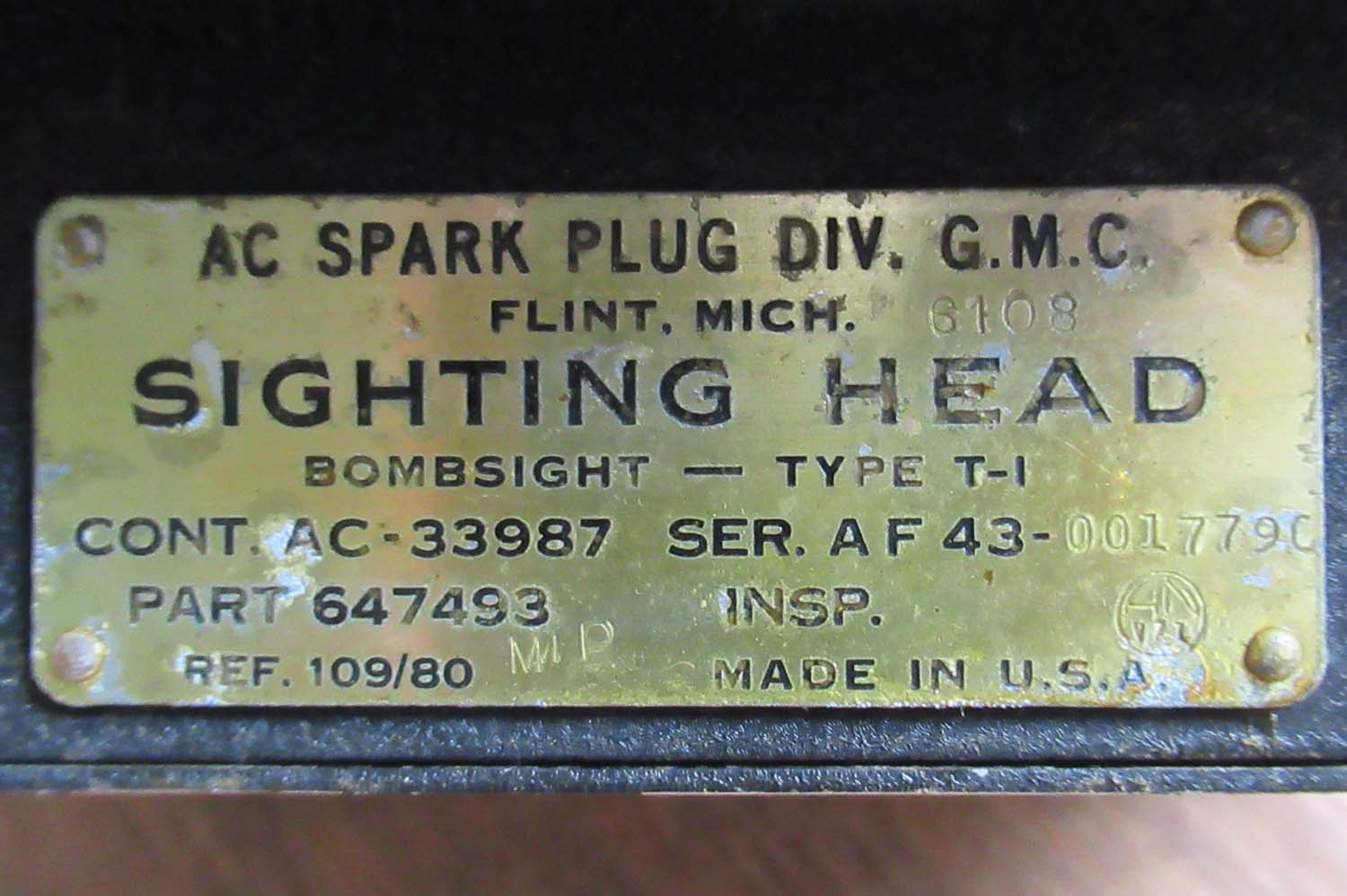
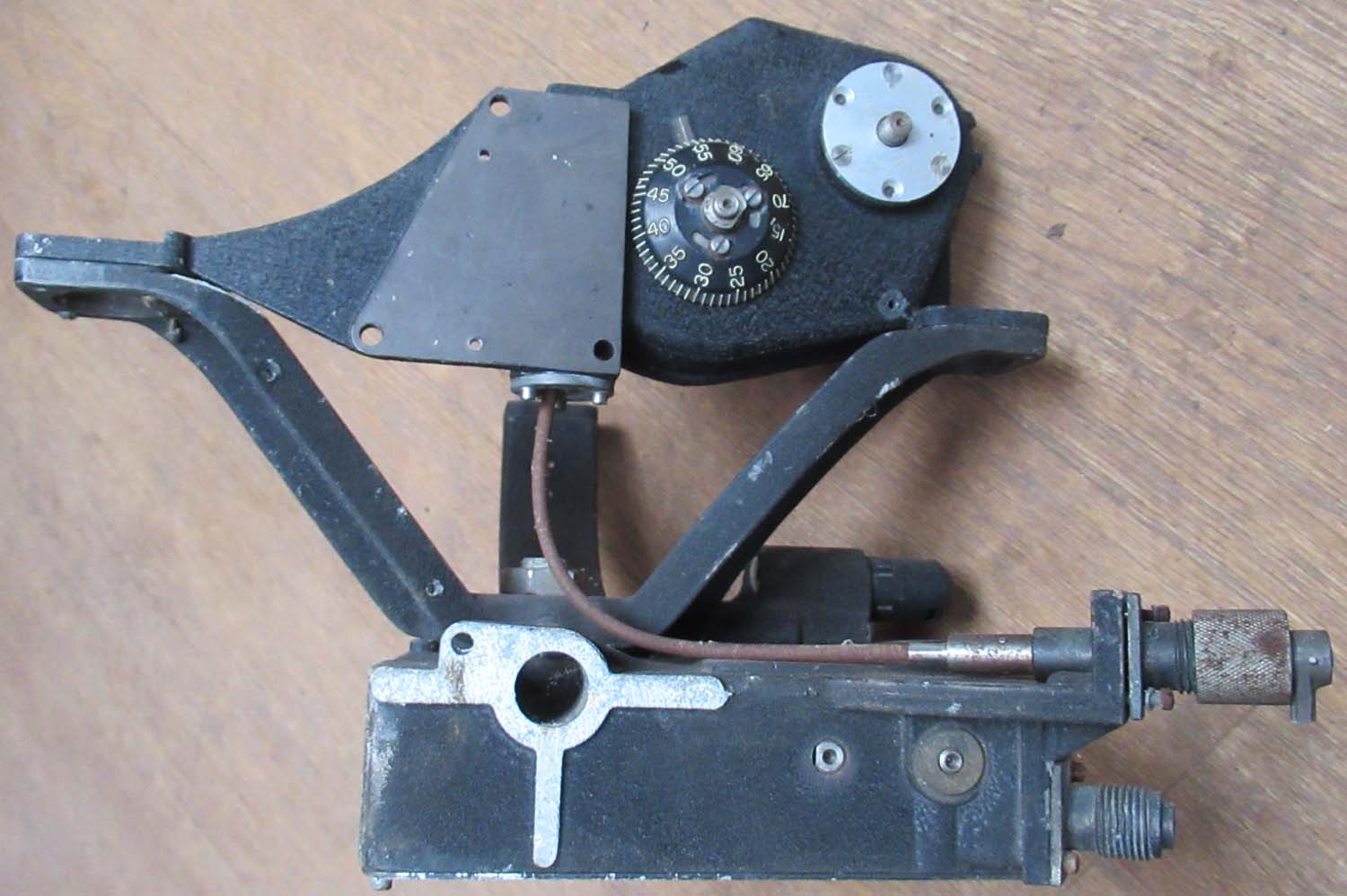
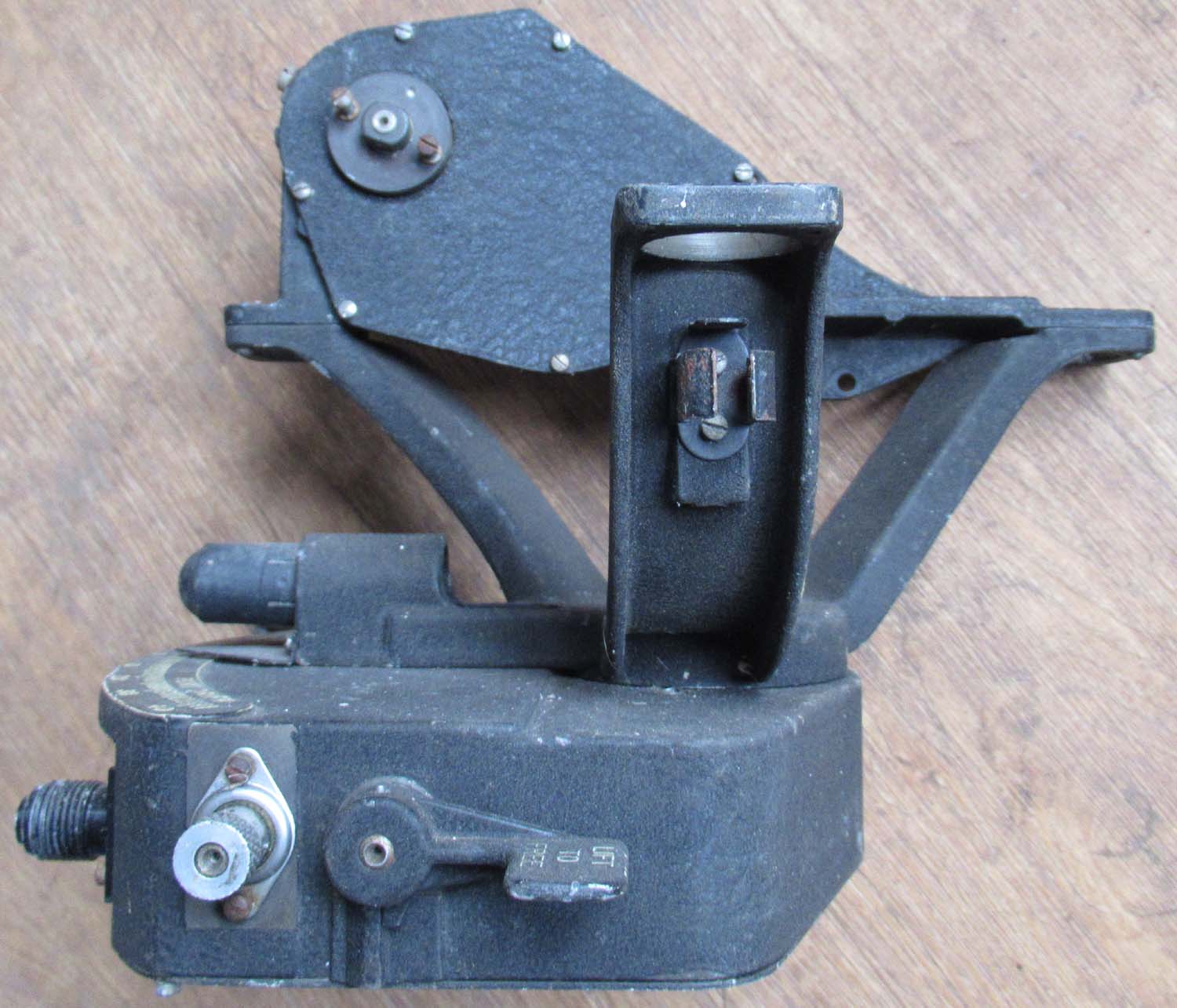
£95


|
|
Click on
pictures to enlarge
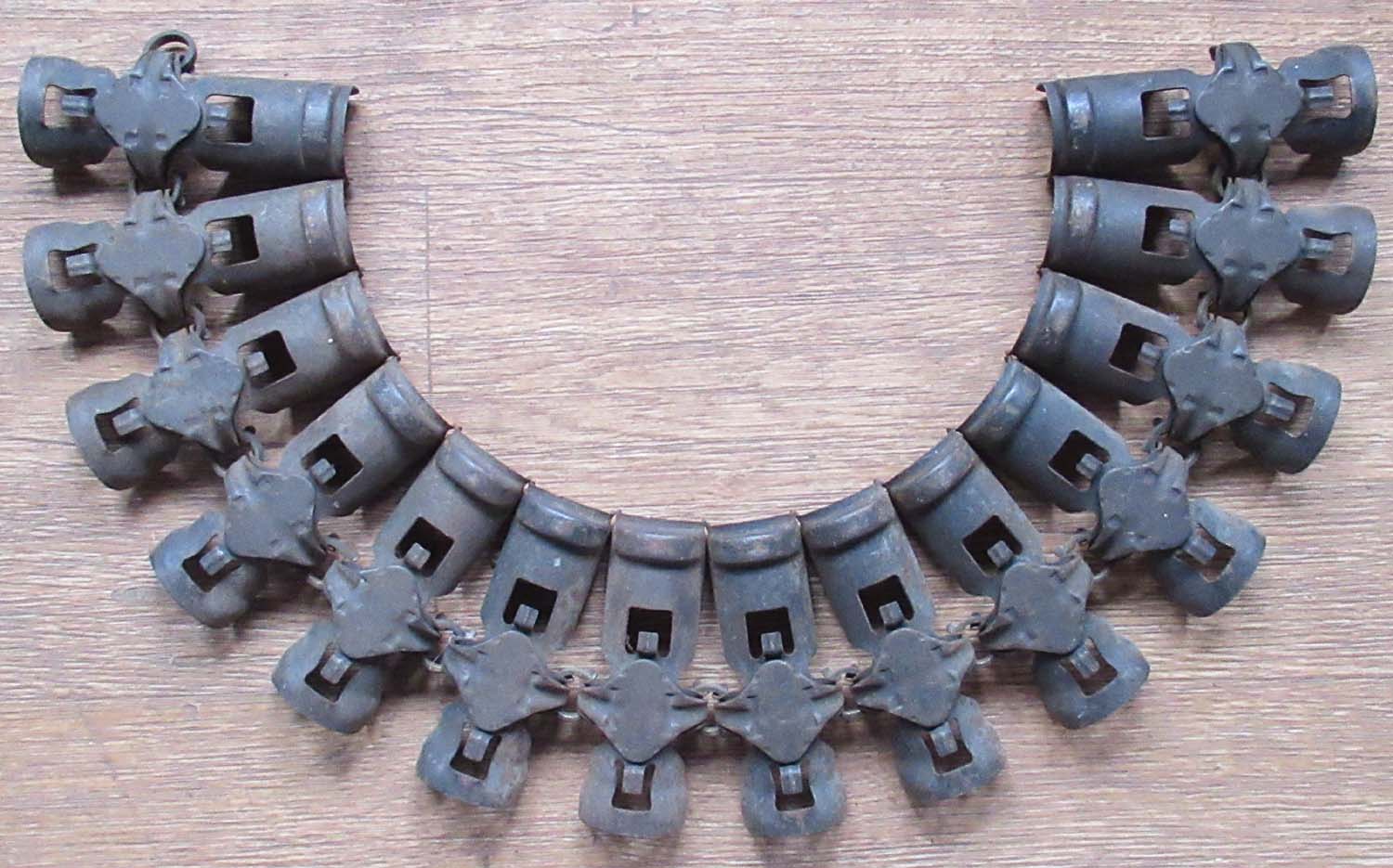
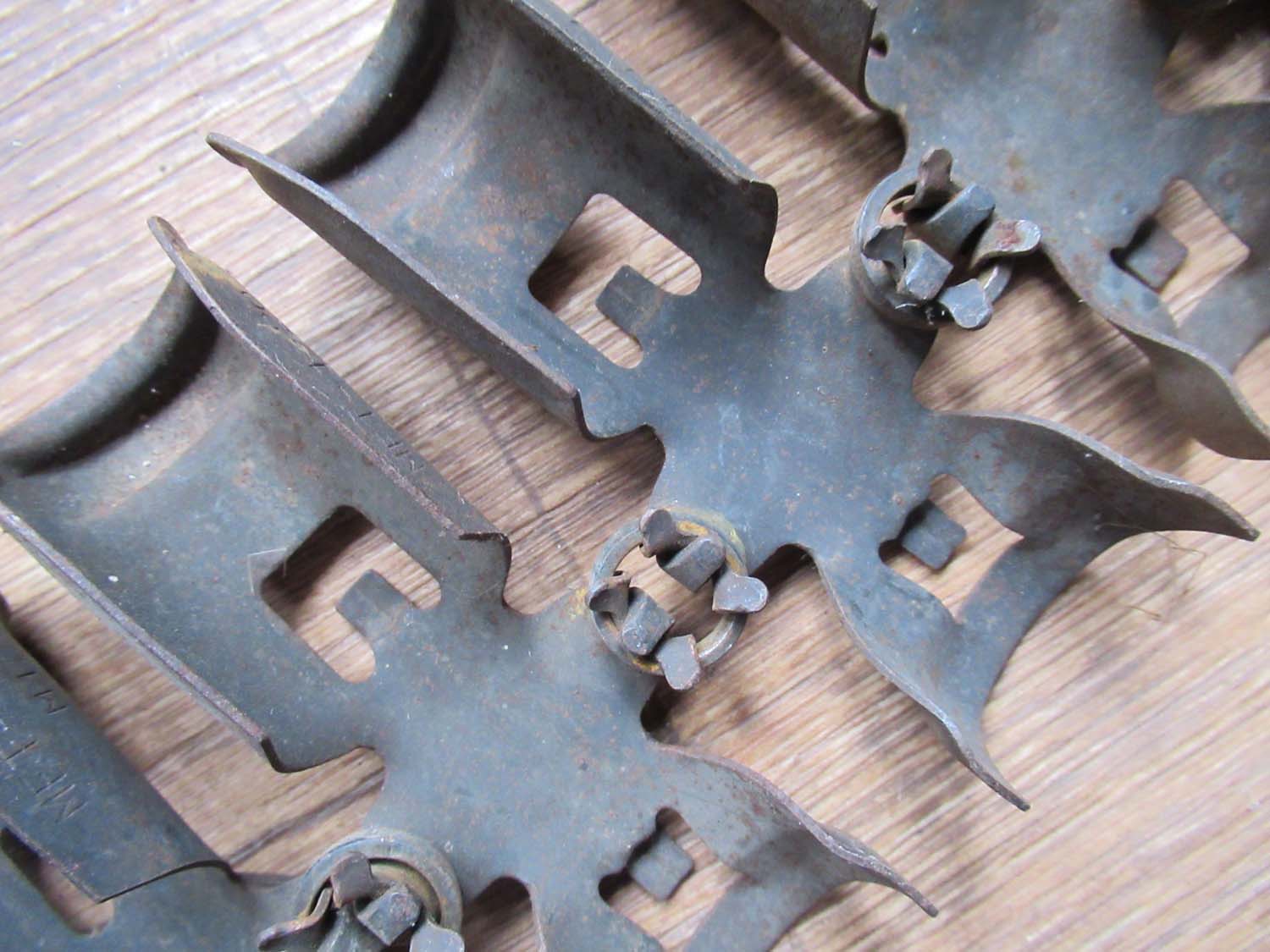
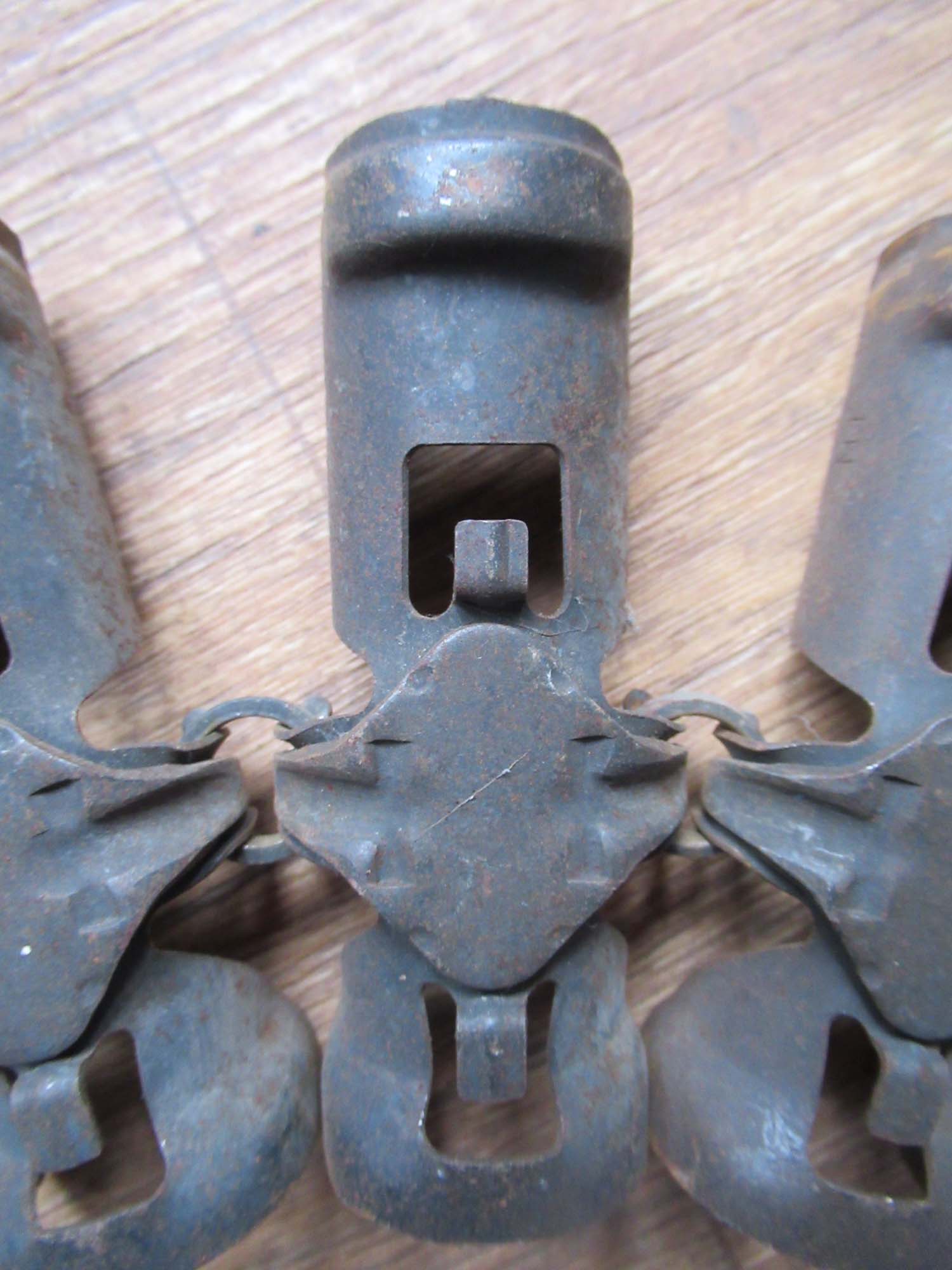 |
30 MM Cannon
belt
(No 97 Pg1 Arm)
Not really sure what this
belt is from but they are for 30mm shells almost certainly
cannon shells. I know the Germans and Russians used 30mm
cannon during WWII. If you have an identity please
contact me and I will
update the listing.
MFT-1-20
M12
Approximately 63 cm in
length.
Click on pictures to enlarge


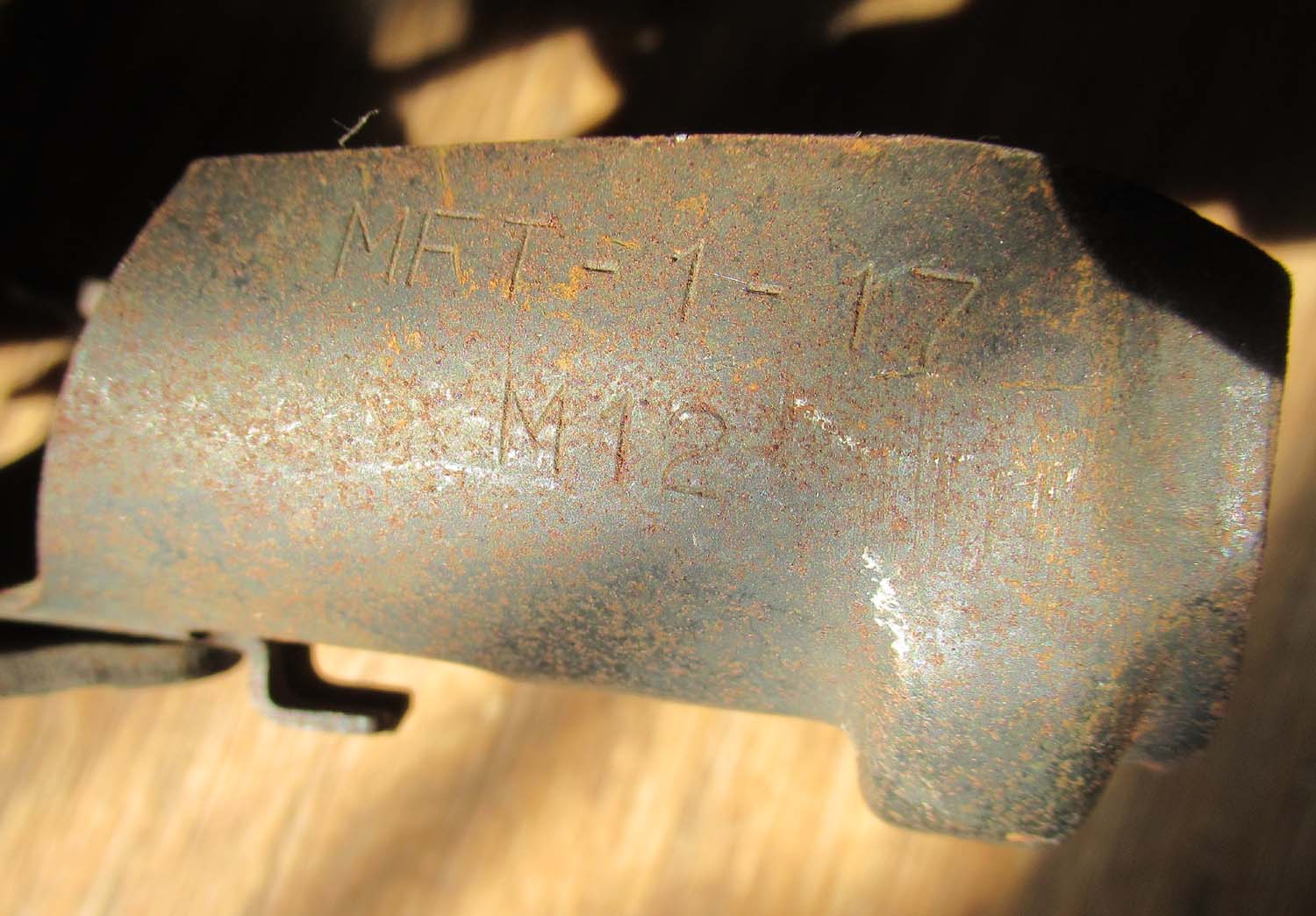
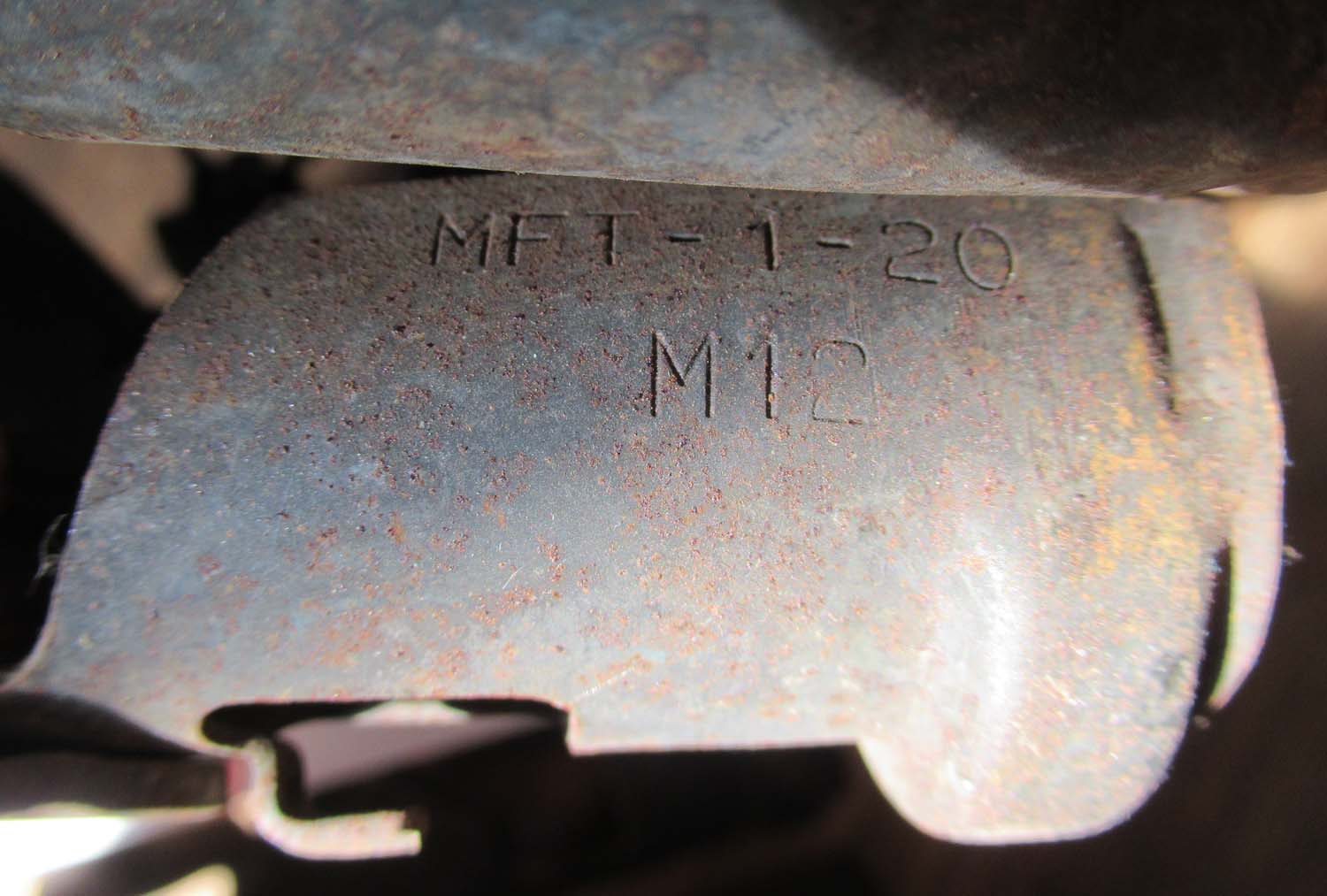
£95


|
|
Click on
pictures to enlarge
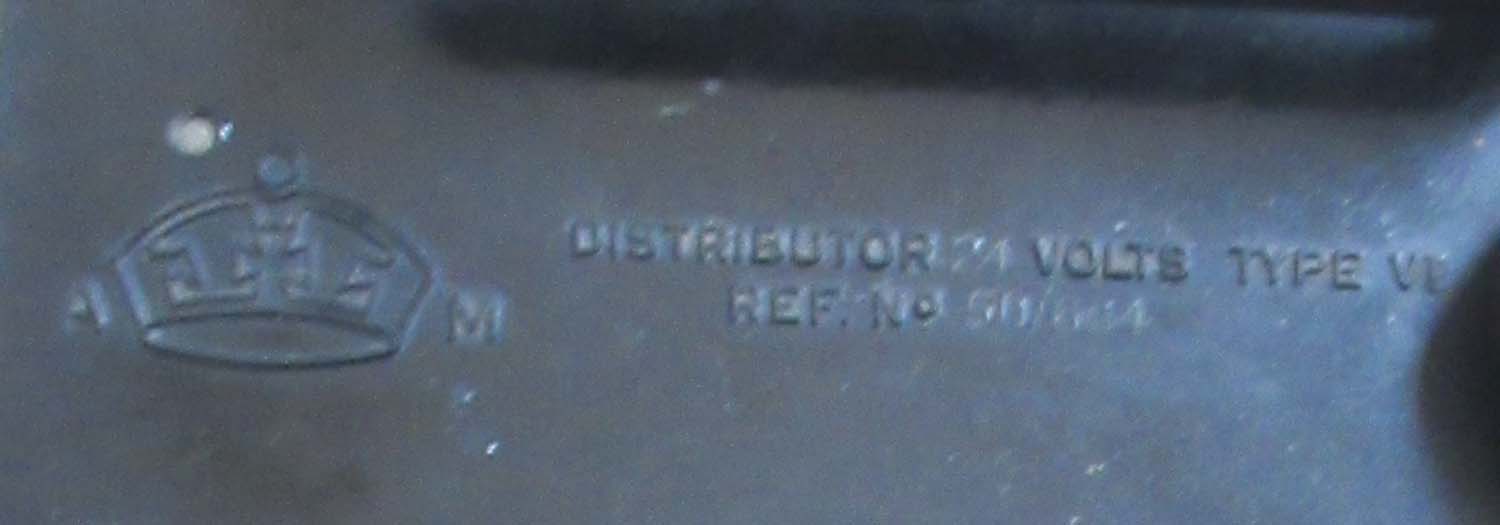
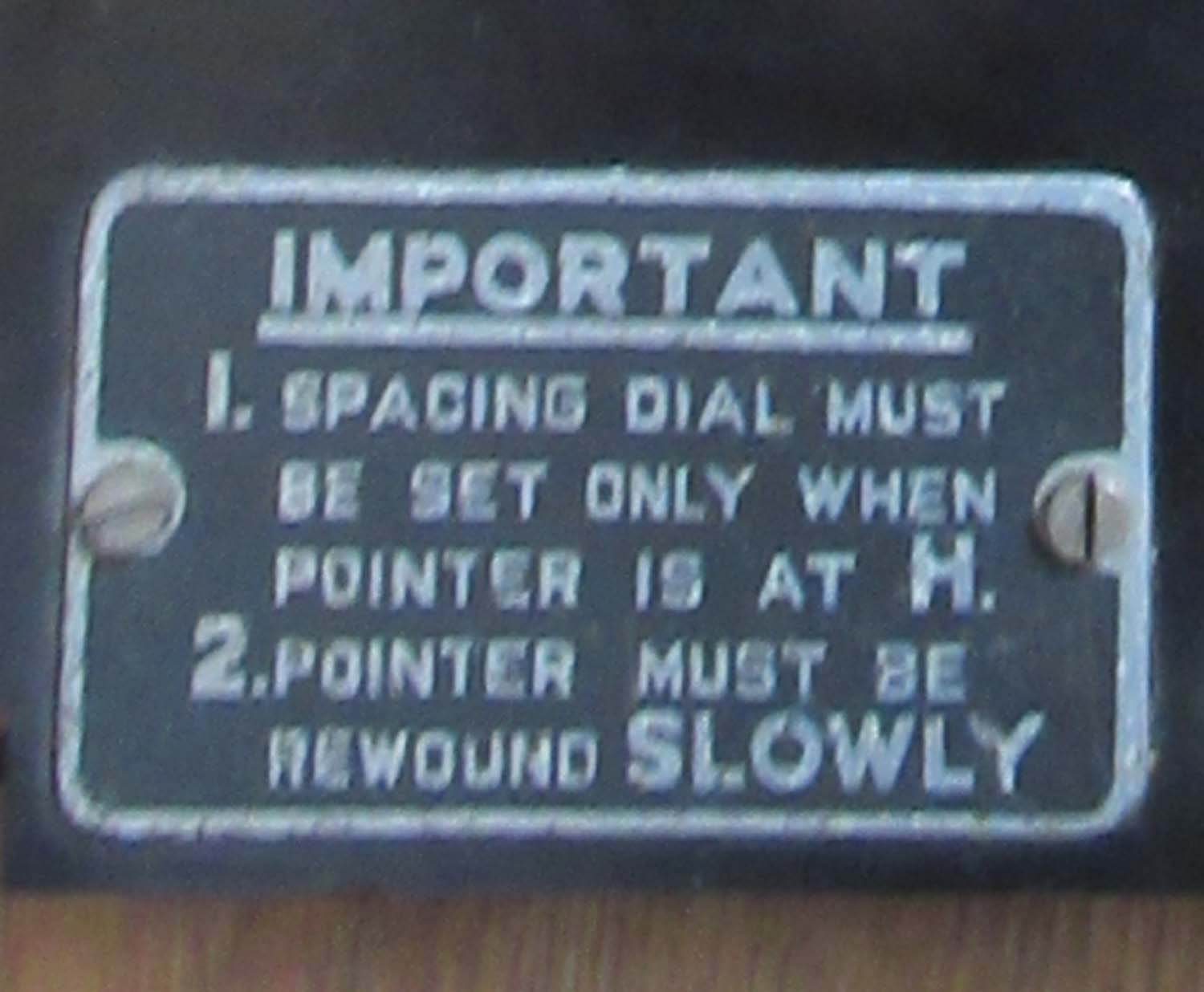
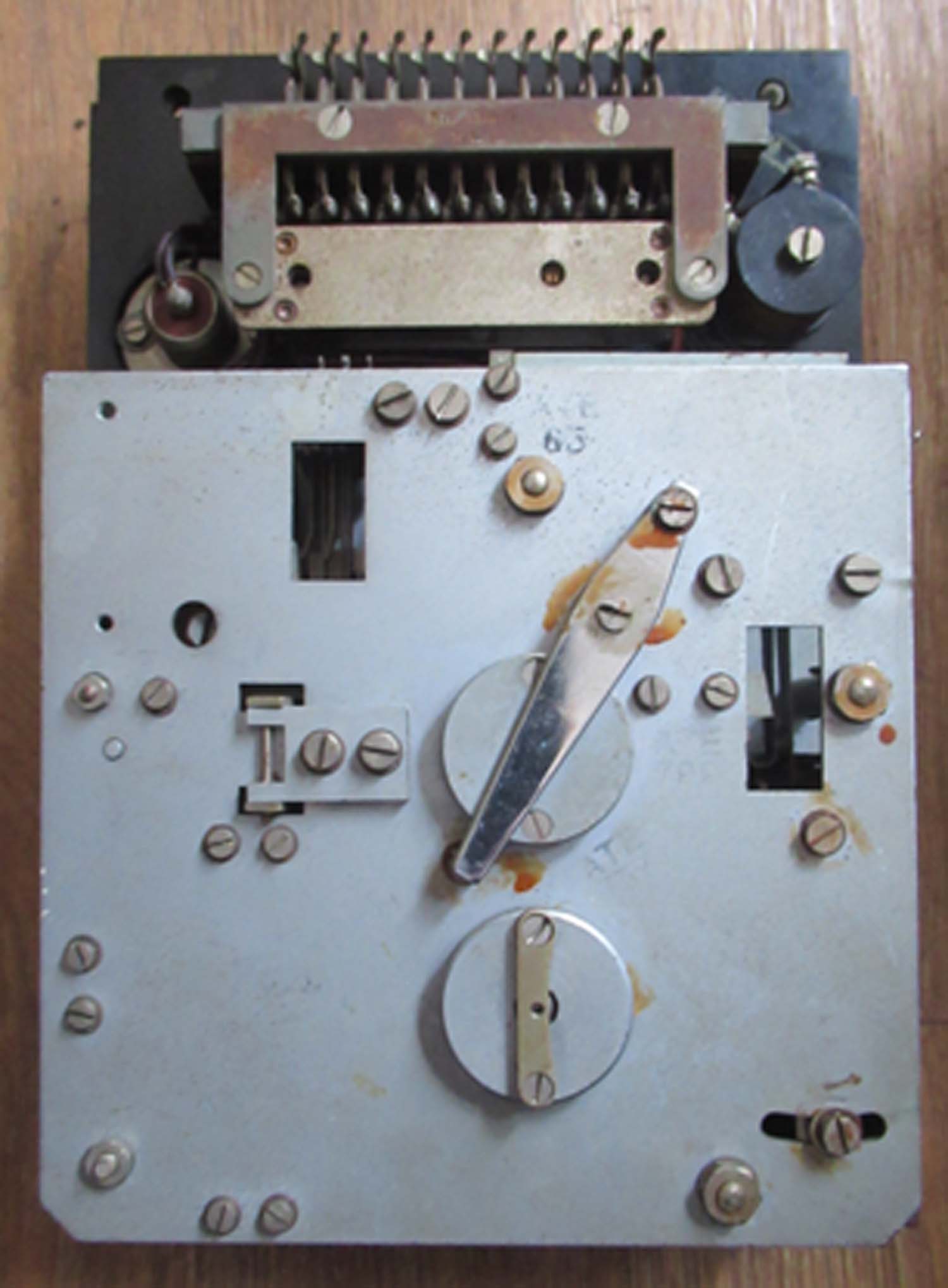
Out of stock more wanted please
contact me
|
Lancaster Bomb
distributor (Nos 95 pg1 Arm)
Here we have bomb distributor mounted on the bomb aimers
panel of a Lancaster positioned in the Bomb aimers
position in the nose of the aircraft it was fitted to
other RAF wartime heavy bombers including the Hallifax.
In nice original condition
Ref 5D/664
Click on
pictures to enlarge
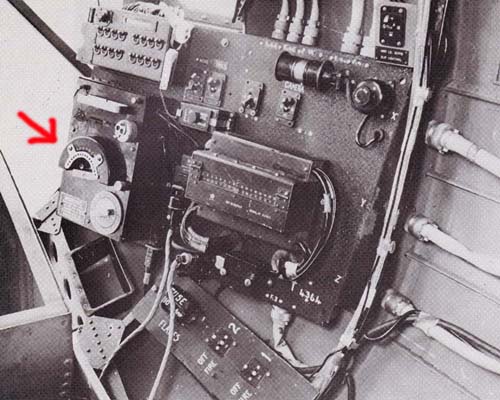
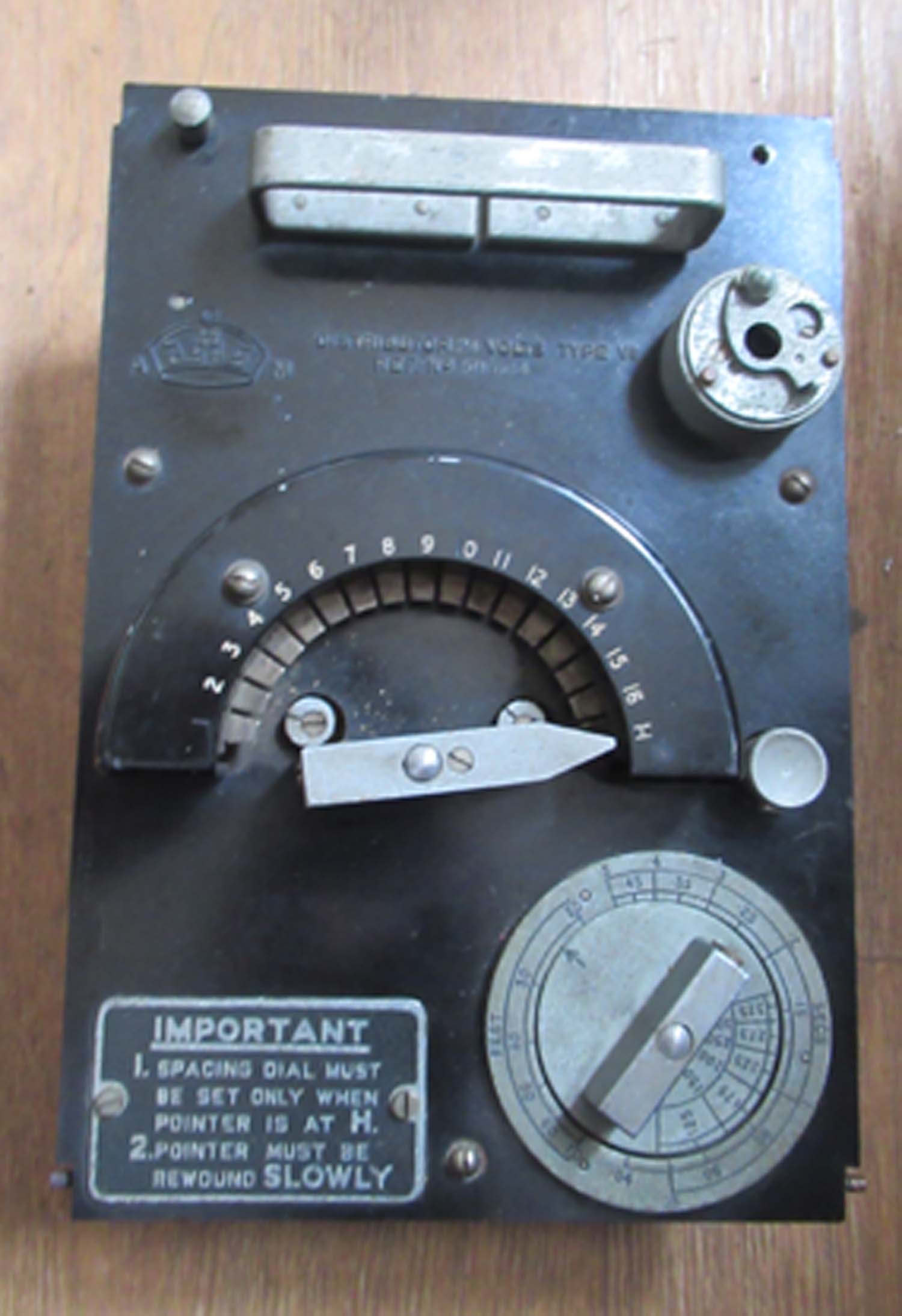

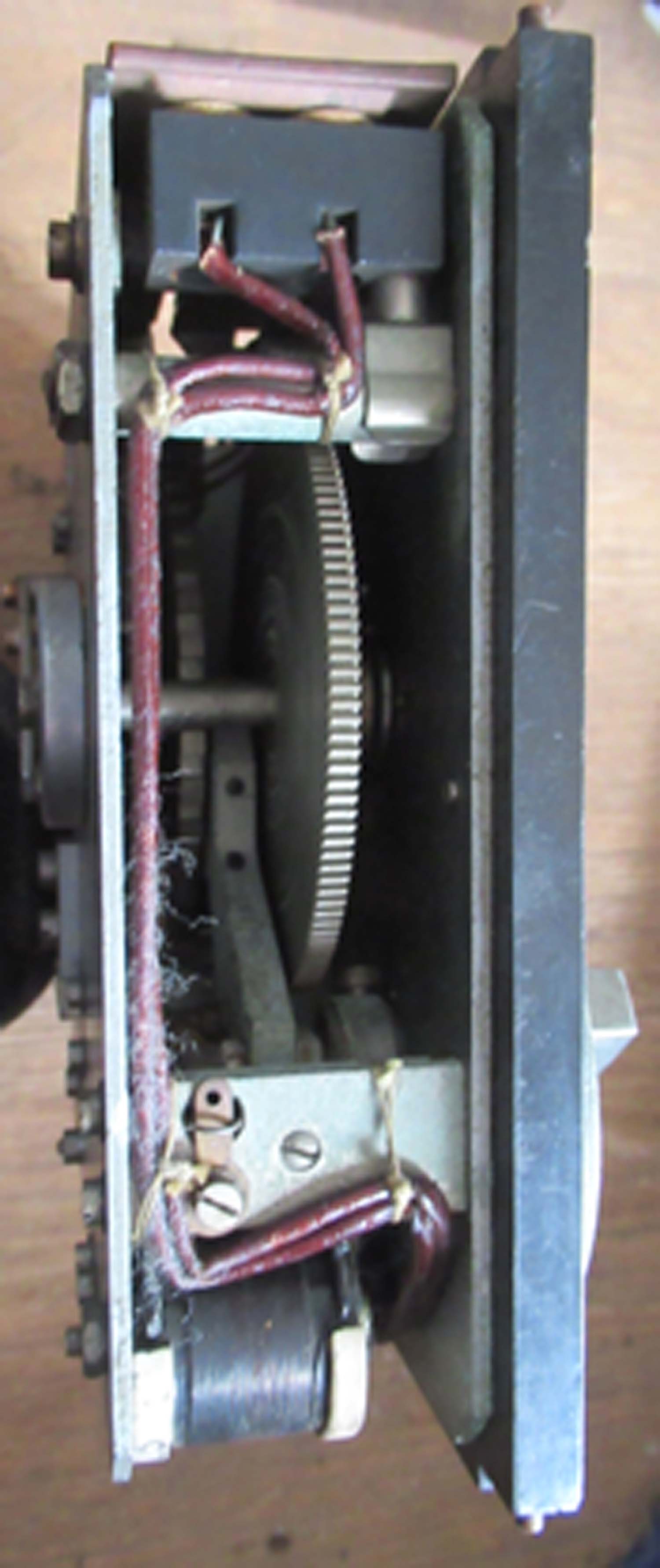

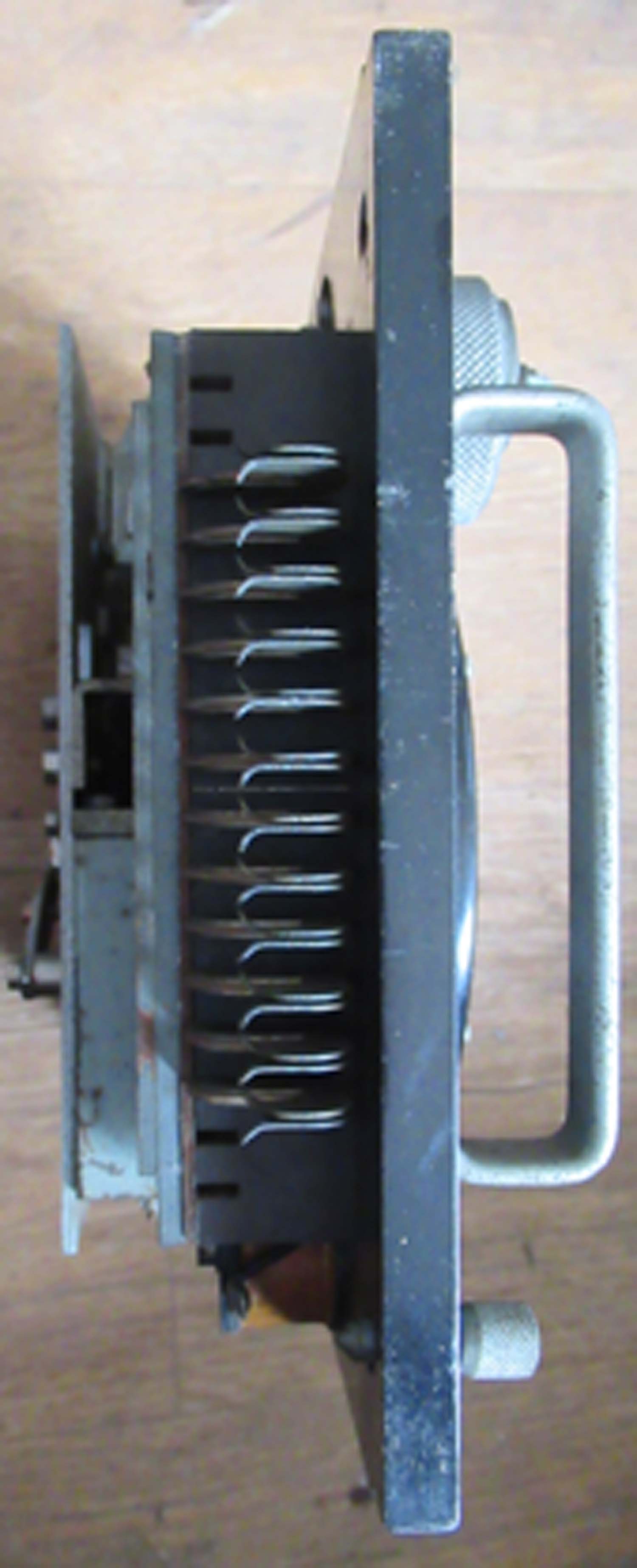
|
|
Click on
the pictures to enlarge

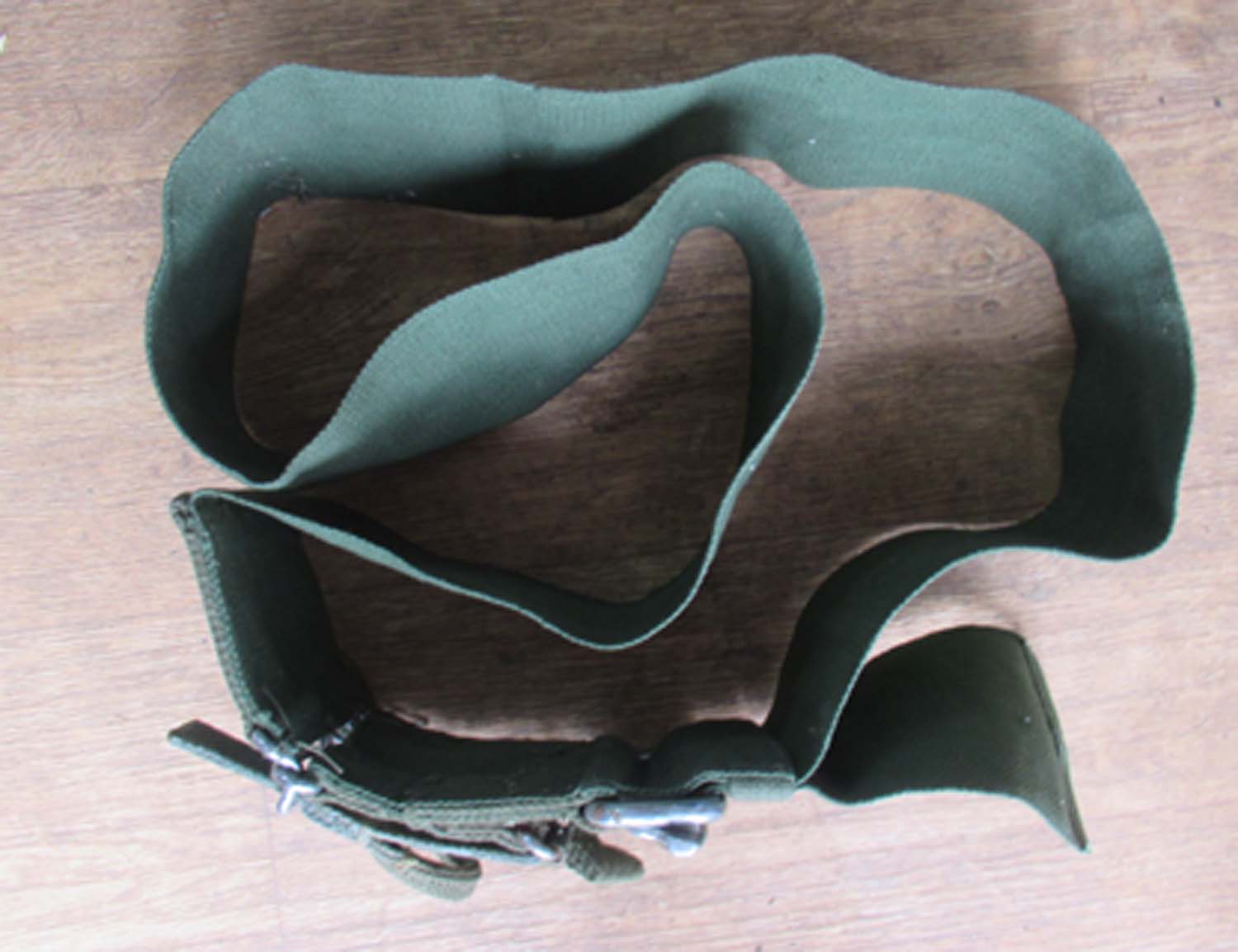 £135


|
Air Gunners
safety strap
(No 94 Pg1 Arm)
This listing was
revised having received more information
21E = Barrackroom Equipment (Textiles).
So it turns out this is a
dispatches safety belt. Dispatchers are the crew who
supplied Paratroops and other operations by dropping
supplies typically from C47s or other transport aircraft.
They would have been heavily involved with all operations in
WWII such are Arnhem and D Day. The belt was attached around
the waste with a lanyard to prevent the dispatcher falling
out of the aircraft.
A/M 21E/711
Click on
the pictures to enlarge
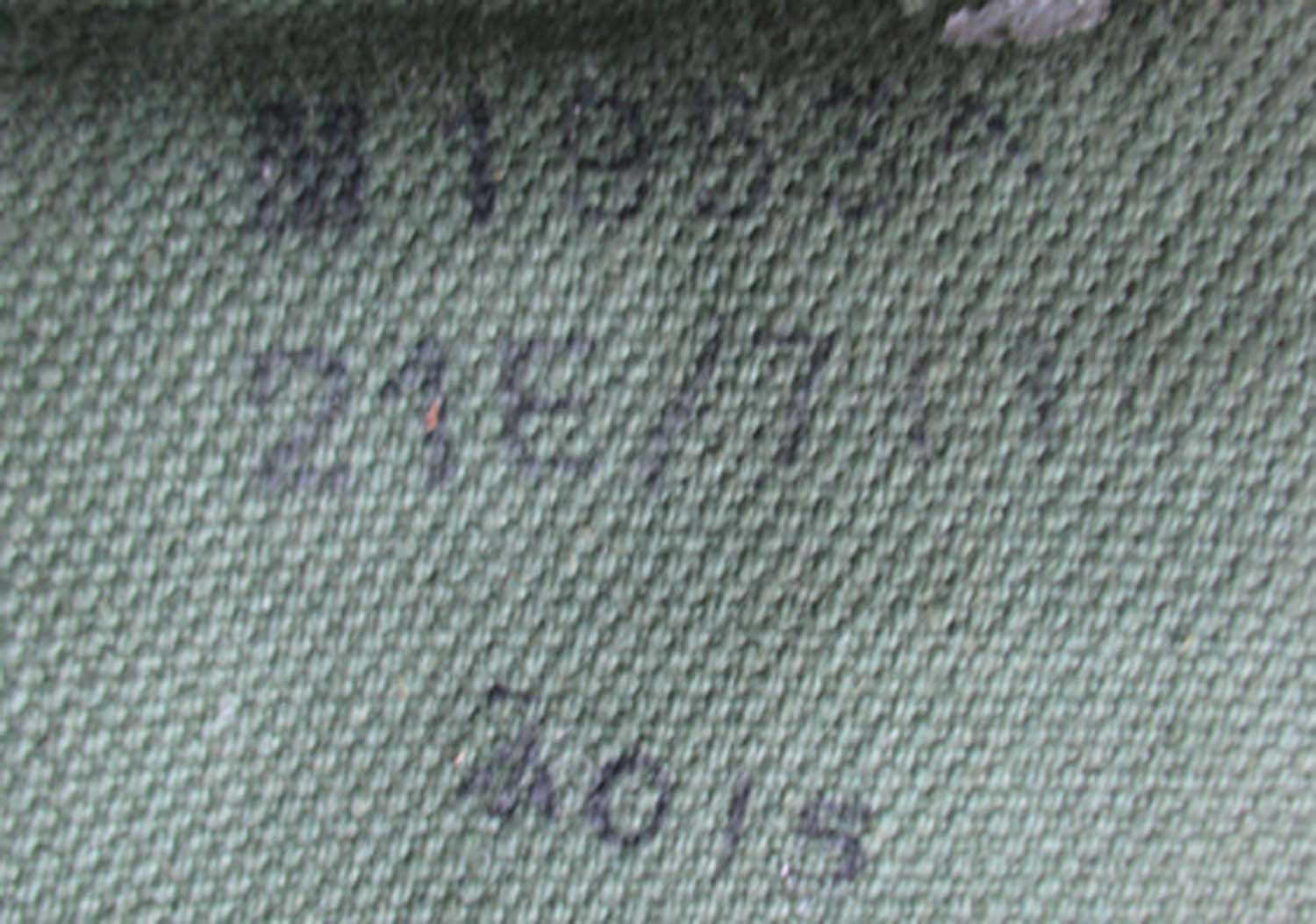

|
|
Click on
the pictures to enlarge
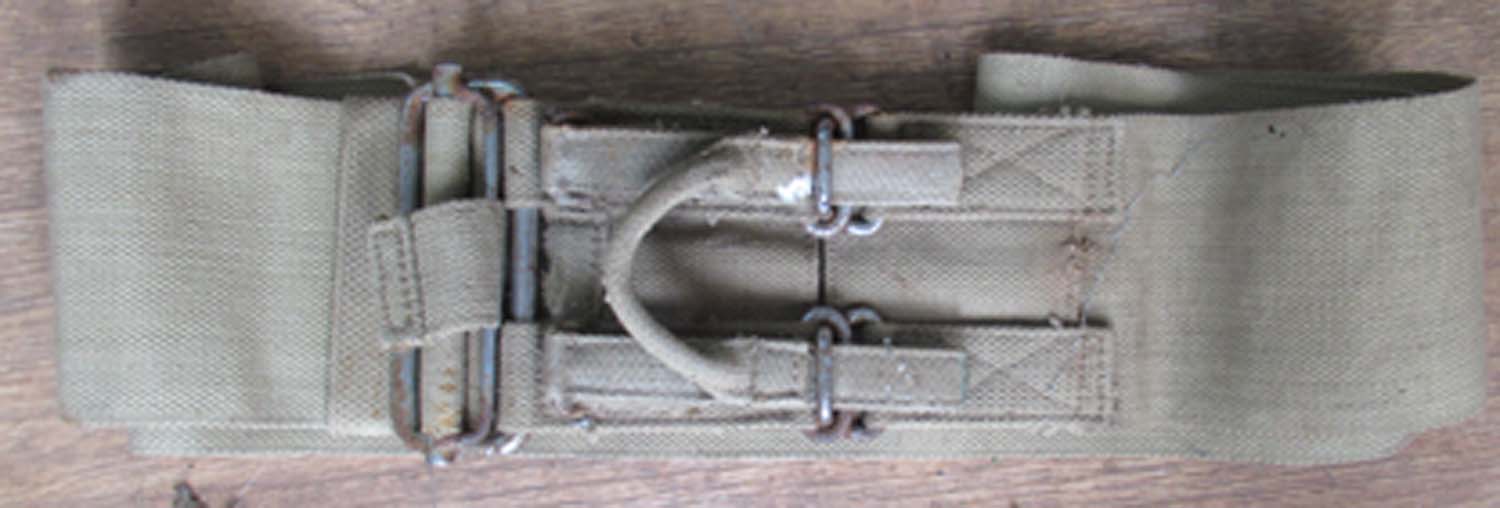
 |
Air Gunners
safety strap
(No 93 Pg1 Arm)
This listing was
revised having received more information
So it turns out this is a
dispatches safety belt. Dispatchers are the crew who
supplied Paratroops and other operations by dropping
supplies typically from C47s or other transport aircraft.
They would have been heavily involved with all operations in
WWII such are Arnhem and D Day. The belt was attached around
the waste with a lanyard to prevent the dispatcher falling
out of the aircraft.
Dated 1943
Click on
the pictures to enlarge

£135


|
|
Click on
the pictures to enlarge
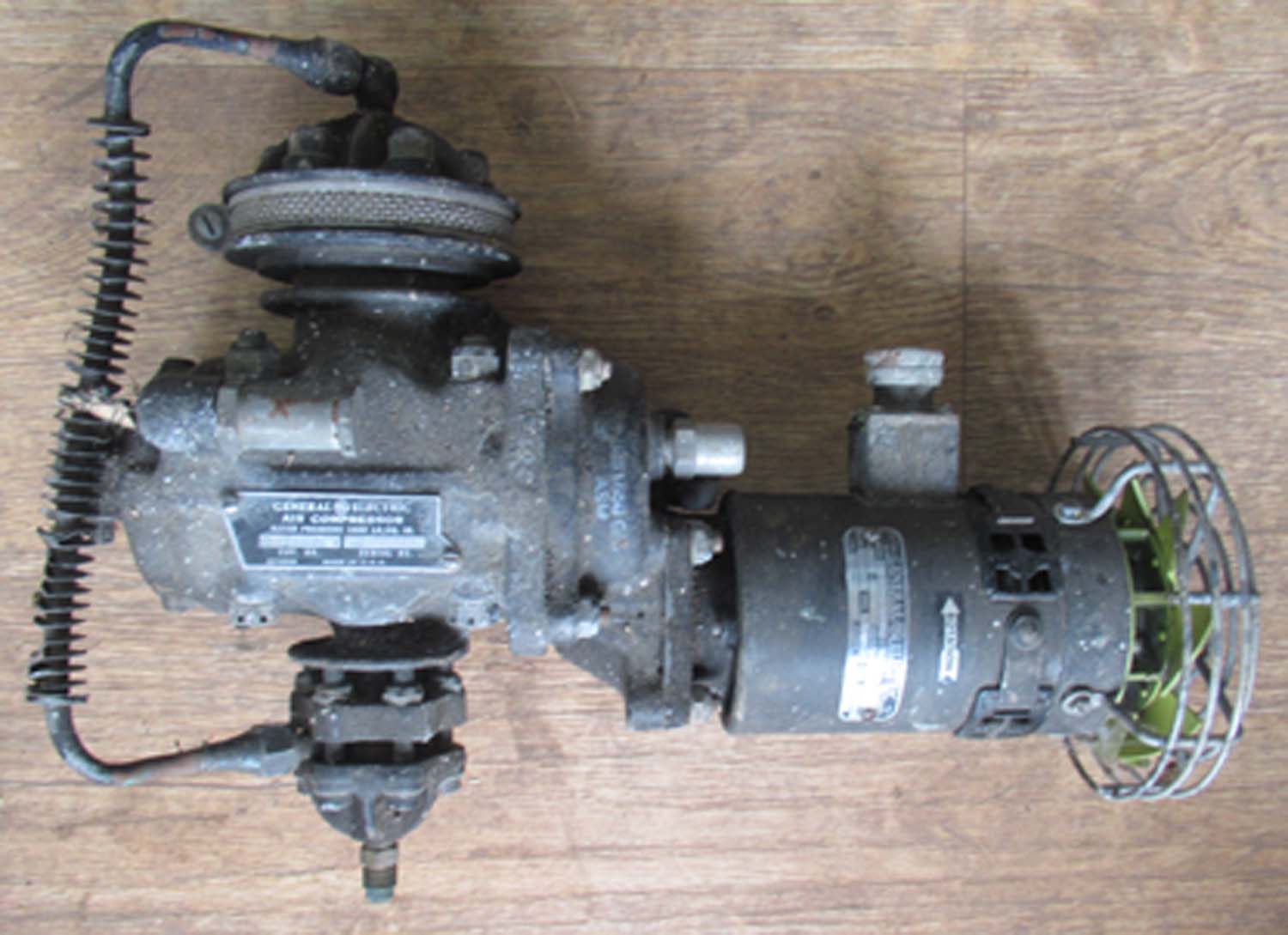

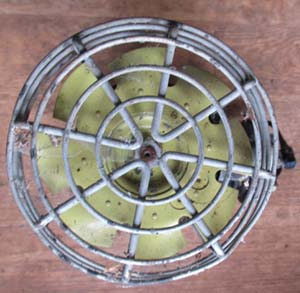 . . |
B29 Gun Turret
compressor
(No 92 Pg1 Arm)
This is general electric
T8252882G2 air compressor used in the B29, and probably
other USAAF Gun turrets. It has not been tested but appears
to be in good shape and the motor turns freely.
The Boeing B-29 Superfortress was conceived
as a state-of-the-art, high altitude strategic bomber.
The United States Army Air Corps saw the need
for a bomber that could carry heavy bomb loads over the vast
distances of the Pacific.
In 1940, Boeing submitted an advanced
design for a four-engine bomber with a pressurized
fuselage.The B-29 program would become the most expensive of
the war, outpacing the development of the atomic bomb by
more than a billion dollars.
Delays in developing the new bomber kept it
from flying in Europe but it would enter service in time to
make an impact in the Pacific where it would remembered for
its part in dropping the world’s first atomic bombs used in
combat.
In the B29 rather than trying to pressurize a
revolving turret with a gunner, the turrets were made
smaller and more streamlined, with the gunner aiming and
firing from inside the pressurized compartment. Locating the
gunner remotely from the turrets
Click on
the pictures to enlarge



£395


|
|
Click on
the pictures to enlarge
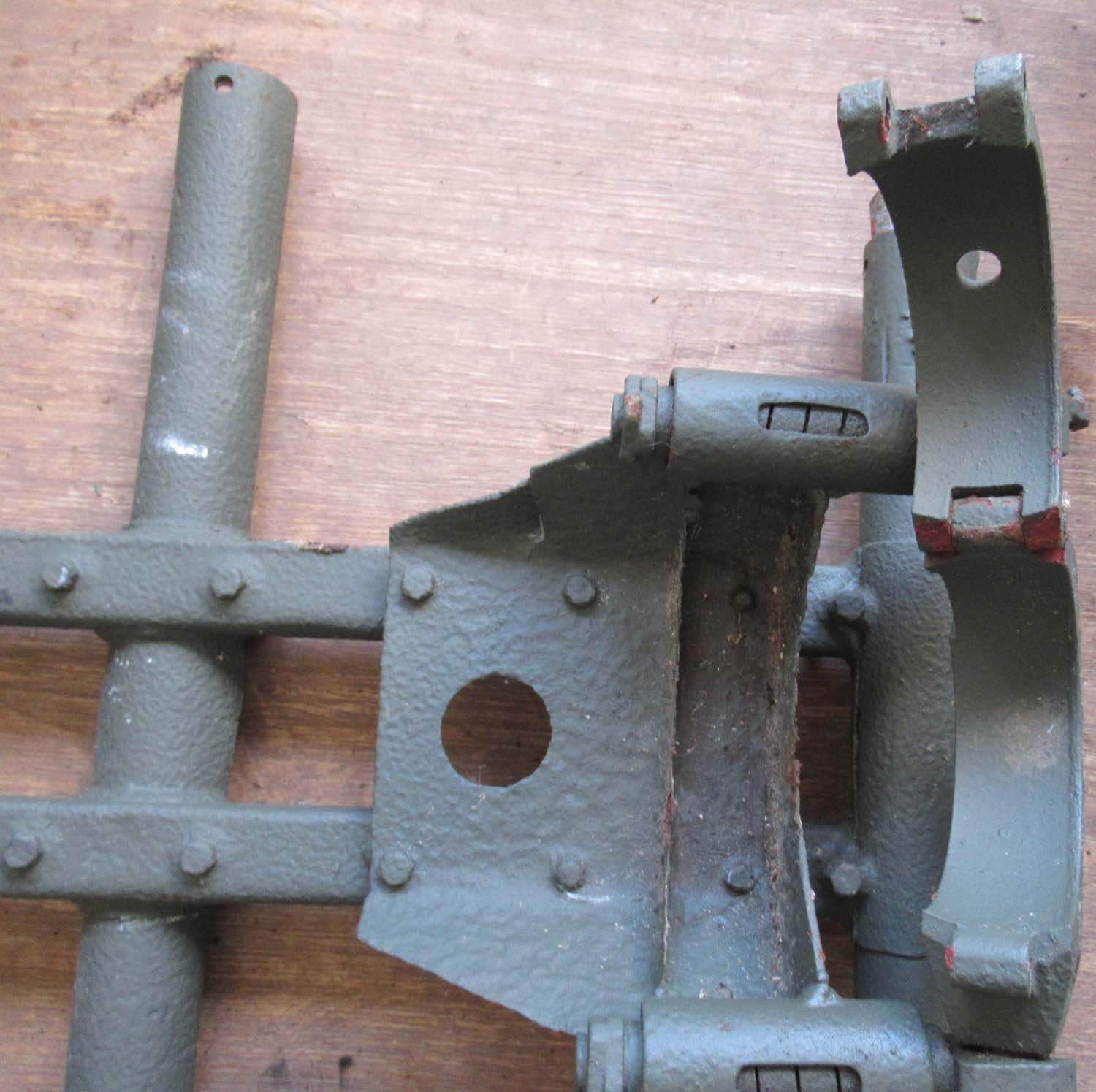
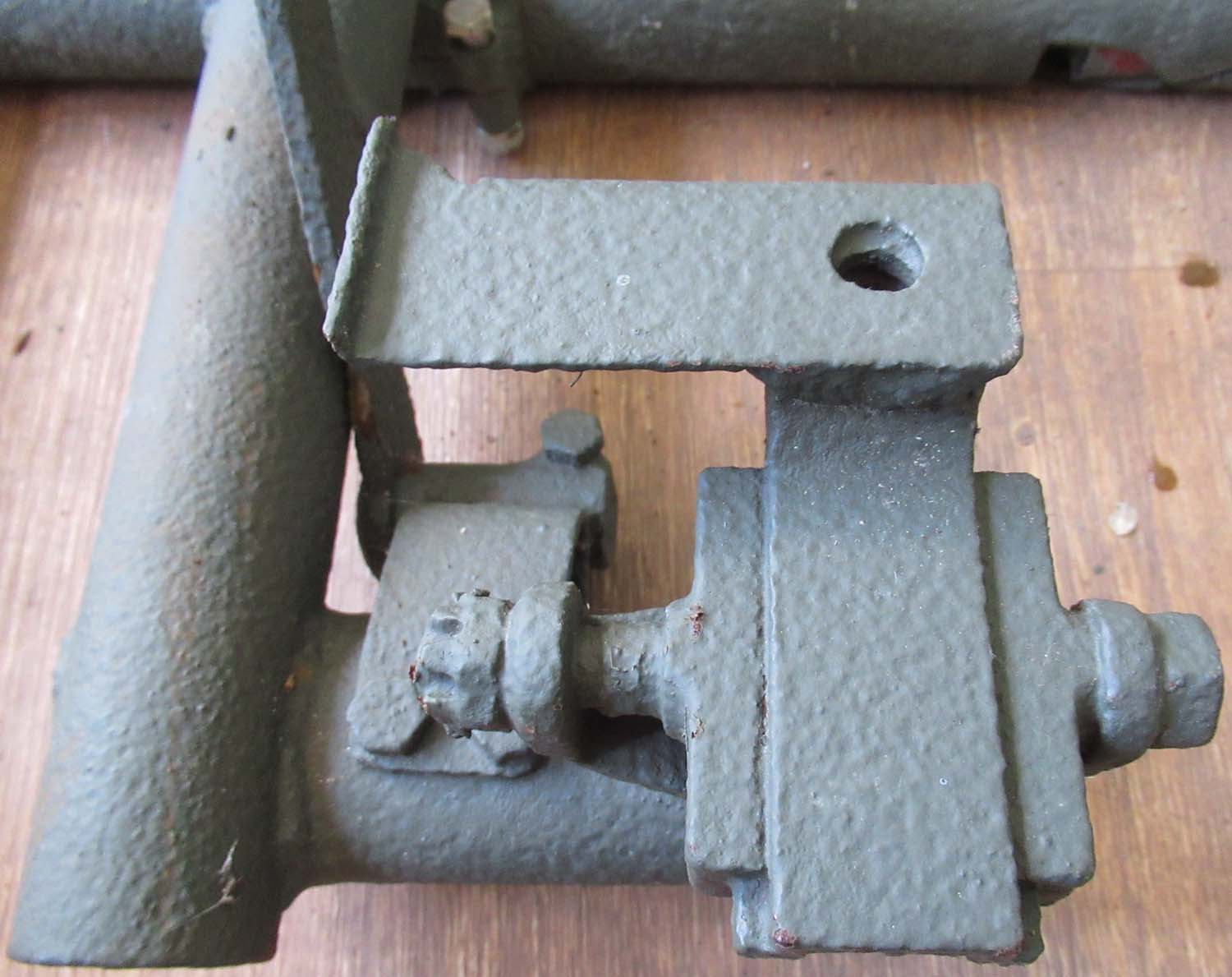
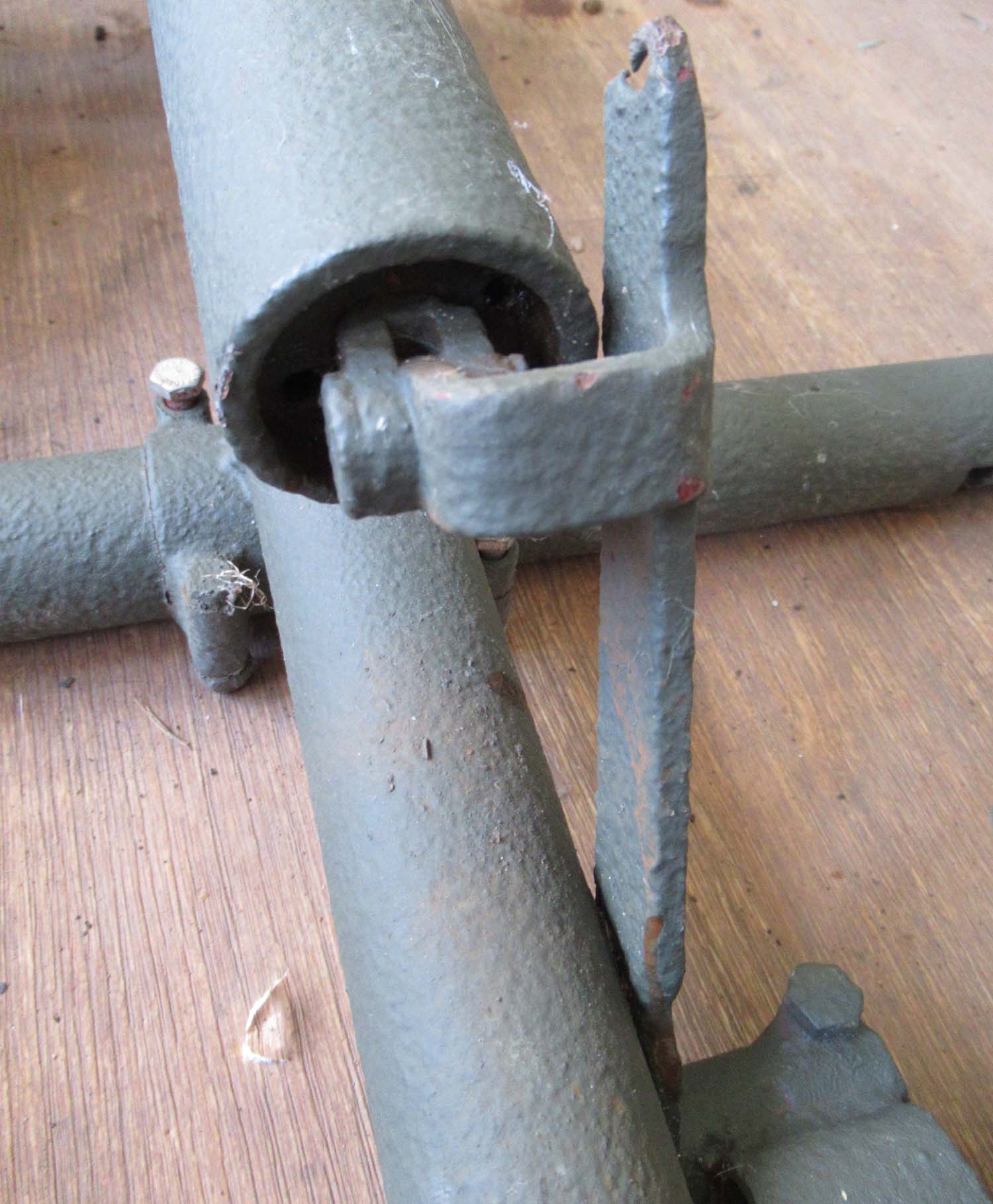
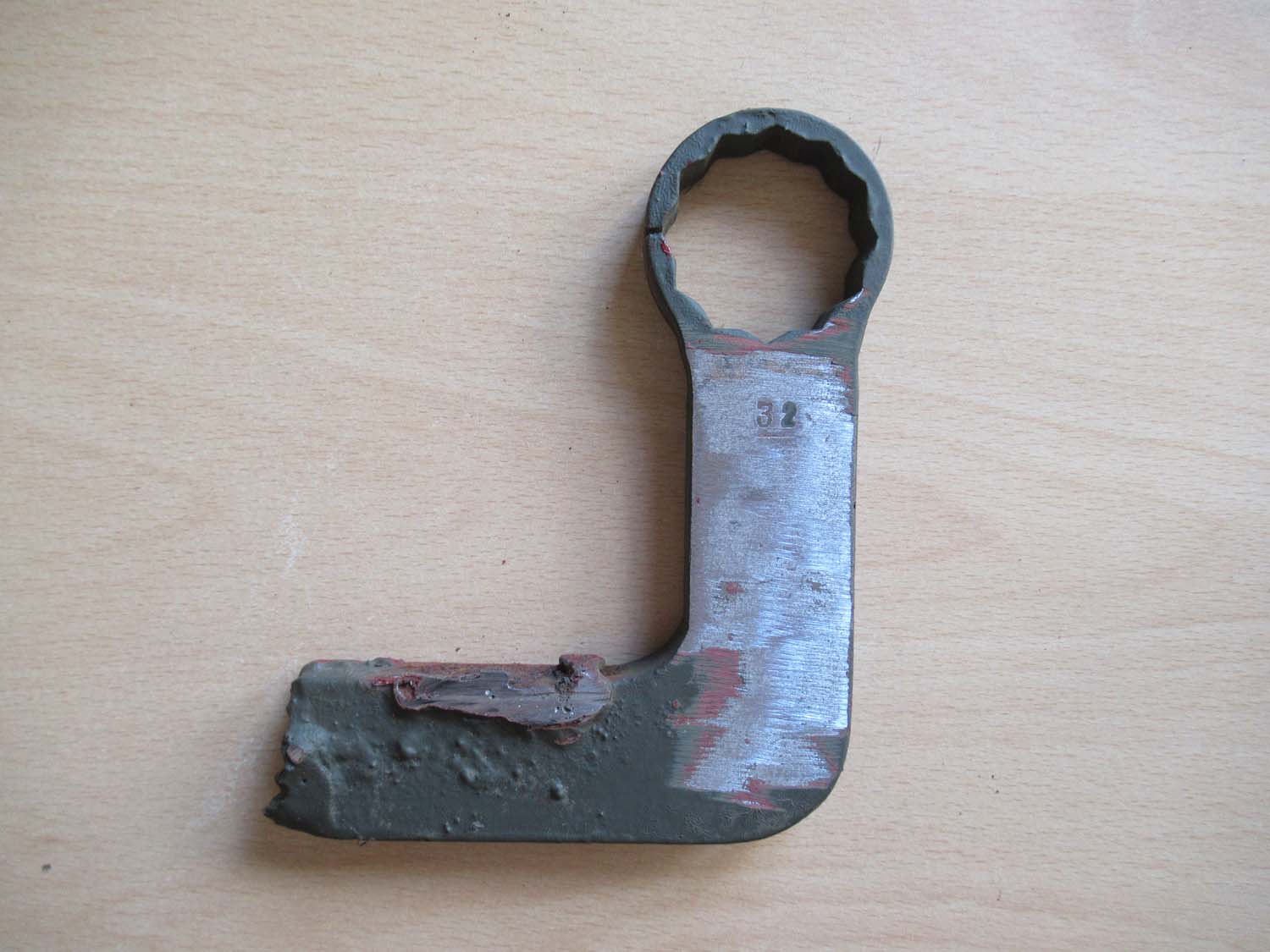
|
Hurricane Z5053 Cannon and MG Mount ( pg1 air)
This a superb peace of
history from one of the most brutal conflicts of WWII.
It is a 20mm cannon and MG mount from Z5053 which was a MK
IIB Hurricane built by Gloster Aircraft sometime
between
July 1940 and August 1941.
It was then shipped to
Russia via the perilous artic convoy route . The first
convoy to arrive in Arkangel
code-named Operation
Dervish was
in August 1941
and this aircraft
seems to be one of the first
Hurricanes to arrive just two months after the
start of operation Barbarossa in June 1941.
In total the Barbarossa force had about 3,000
tanks, 7,000 artillery pieces, and 2,500 aircraft. It was in
effect the largest and most powerful invasion force in human
history.
Hurricane Z5053 was recorded
as being shot down in Archangel in August 1942 meaning
it survived for a year which is a long time in that theatre
of conflict and therefore must have seen extensive action.
This Hurricane was fitted
with Russian armament including a ShVAK 20mm Cannon and a
12.7mm Berezin machine gun.
The
MK IIB Hurricane was really outdated as a fighter by 1941
and was used primarily as a Fighter Bomber .
The MK IIB could also carry
two 250Lbs Bombs on wing racks increasing to 500Lb by the
end of 1941.
Some
Russian Hurricanes had RS-82 air to air rockets
installed under the wings (three per wing)
Below a
Russian MK IIB Hurricane fitted with ShVAK 20mm Cannons, 12.7mm Berezin machine guns
and rockets.
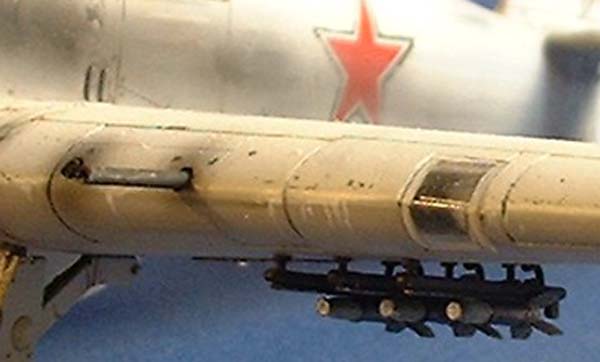
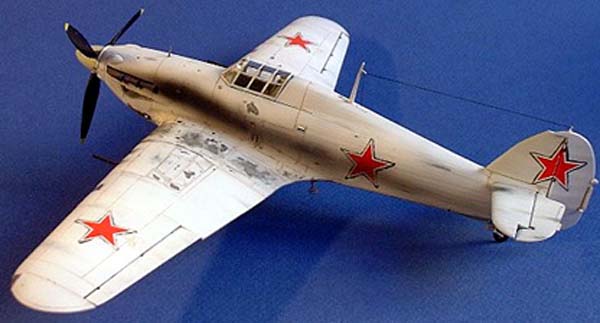
Click on
the pictures to enlarge
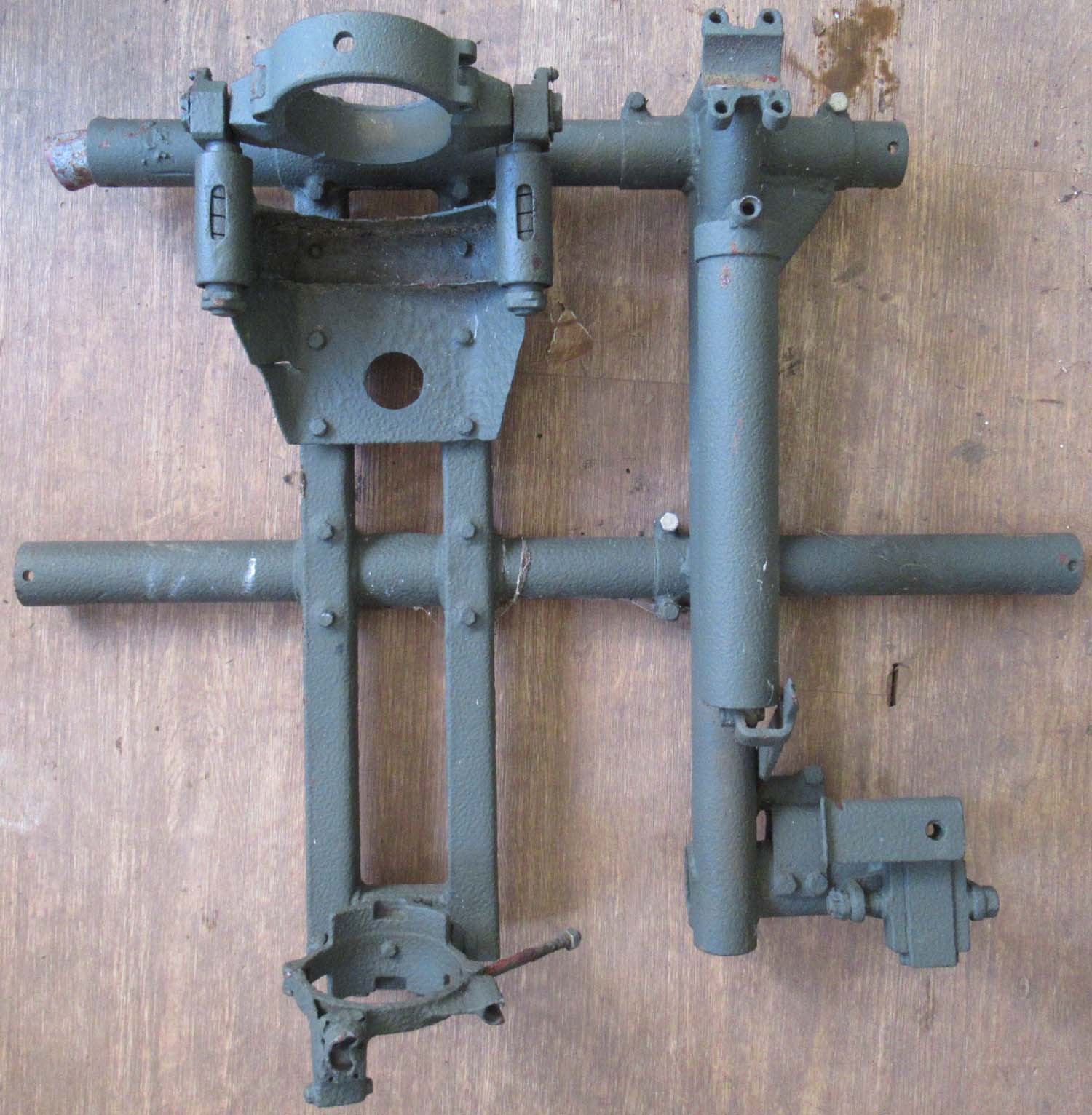
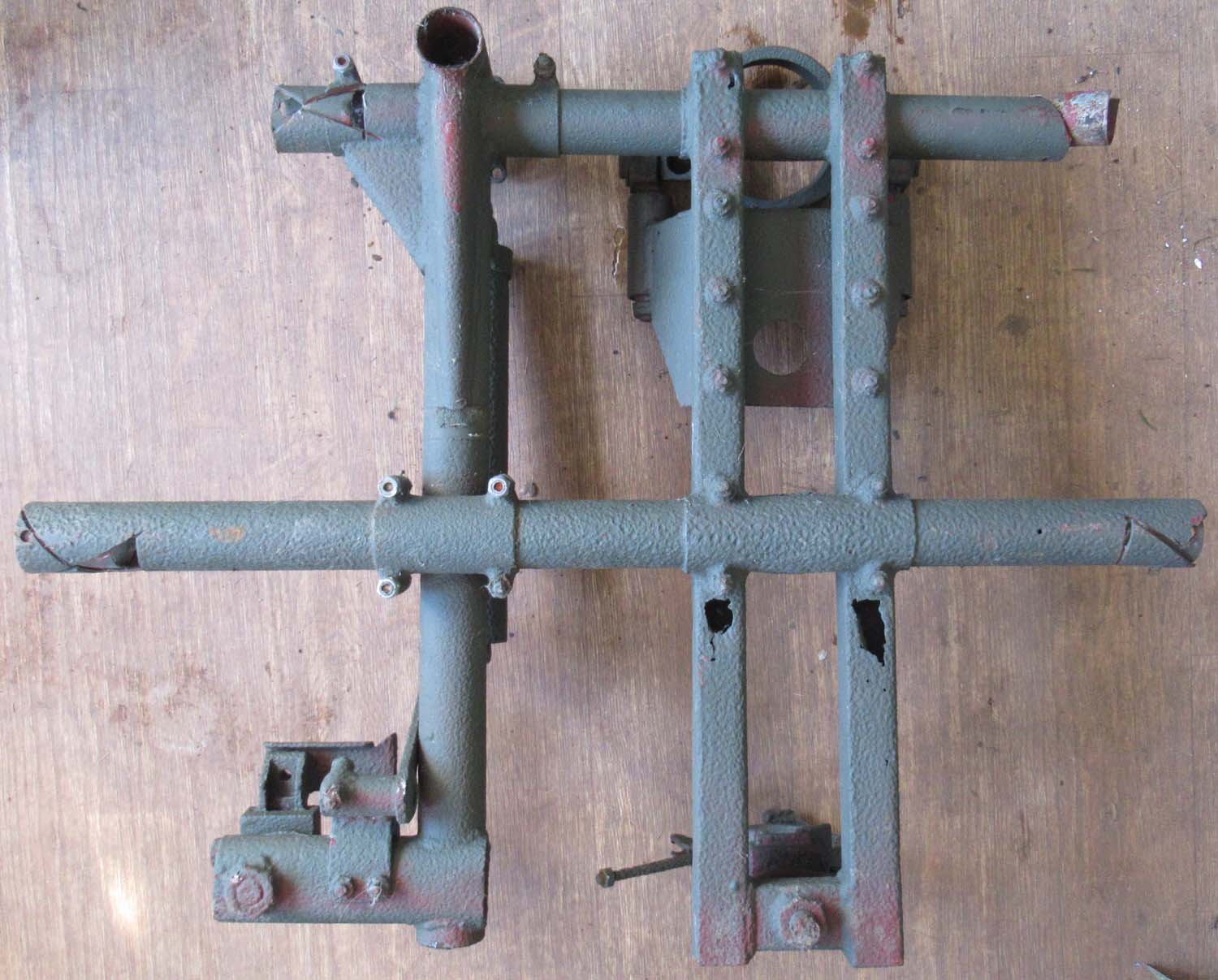
Find this piece in airframe link here |
|
Click on pictures to enlarge


£295


|
Original Seafire/Spitfire
Ammunition Chute 3
(No 91 Pg1 Arm)
Here we
have an original Supermarine Ammunition chute.
The part
number identifies this piece as being first used
in the Seafire Mk.III . It could have been developed to fit
the folding wing but may also have been fitted to the MK VC
Spitfire.
This is
in a good condition with a small amount of damage from rust.
Shown
under the Seafire MK III
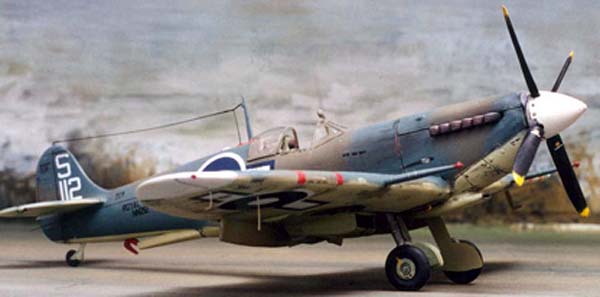
The Seafire LF Mk.III was a
British WWII carrier-based fighter based on the Spitfire Mk
VC. It was the first version of the naval Spitfire that
featured manually folding wings, A more powerful engine was
also installed, the Merlin 55 for the F MK III or Merlin 55M
for L Mk III. The Mk III was the highest production
Seafire with 1,220 built, 870 by Westland and 350 by
Cunliffe Owen.
It is armed with a pair of Hispano Mk.II 20 mm cannons with 120 rpg and
four 7.7 mm Browning machine guns with 350 rpg all mounted
in the wings.
Click on pictures to enlarge

Part
number 358 62 147
358 = Mk III
Seafire fitted with Merlin 55M and 20mm Mk.V Hispano Cannons
62= Armament
systems
|
|
Click on pictures to enlarge
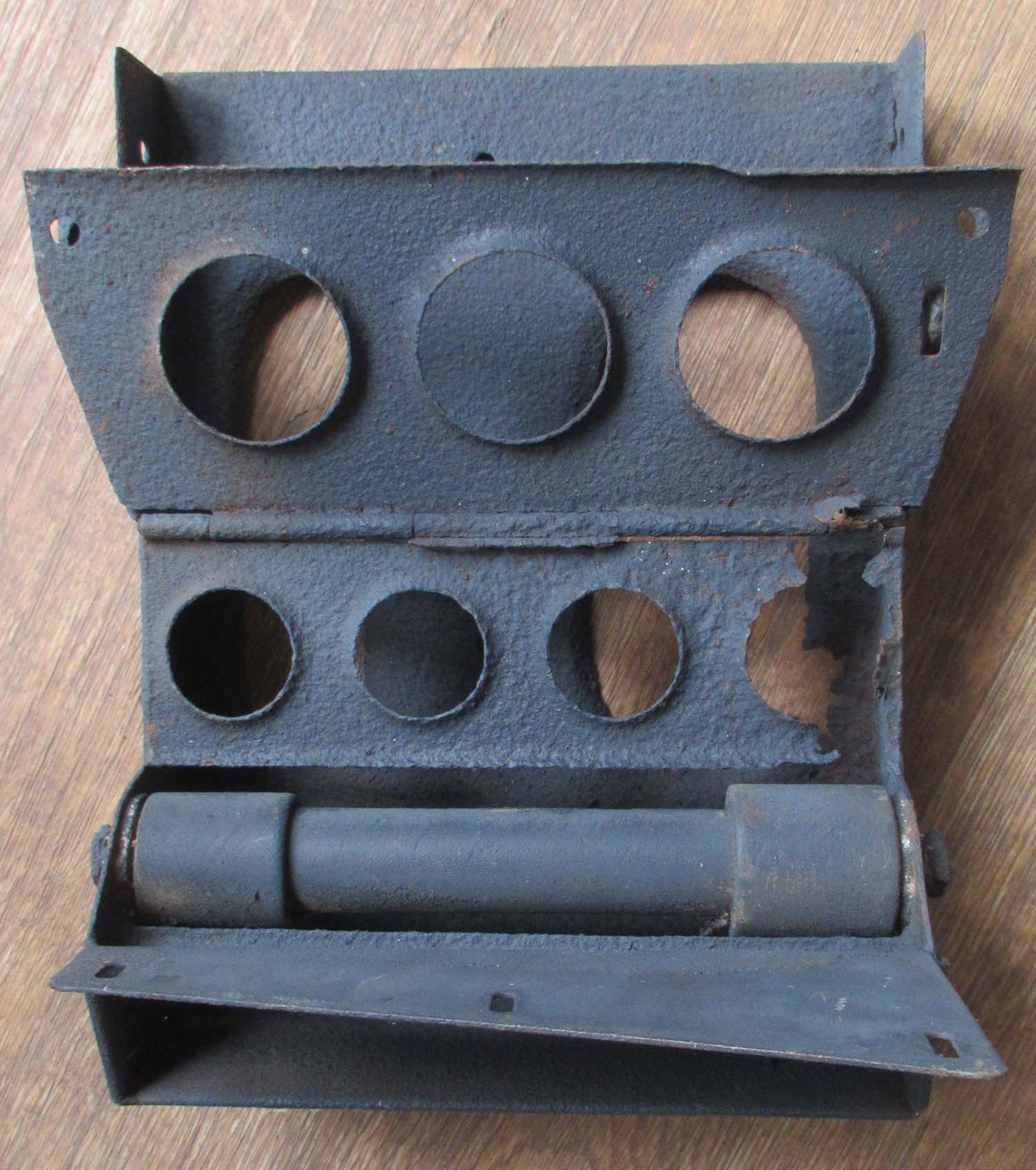
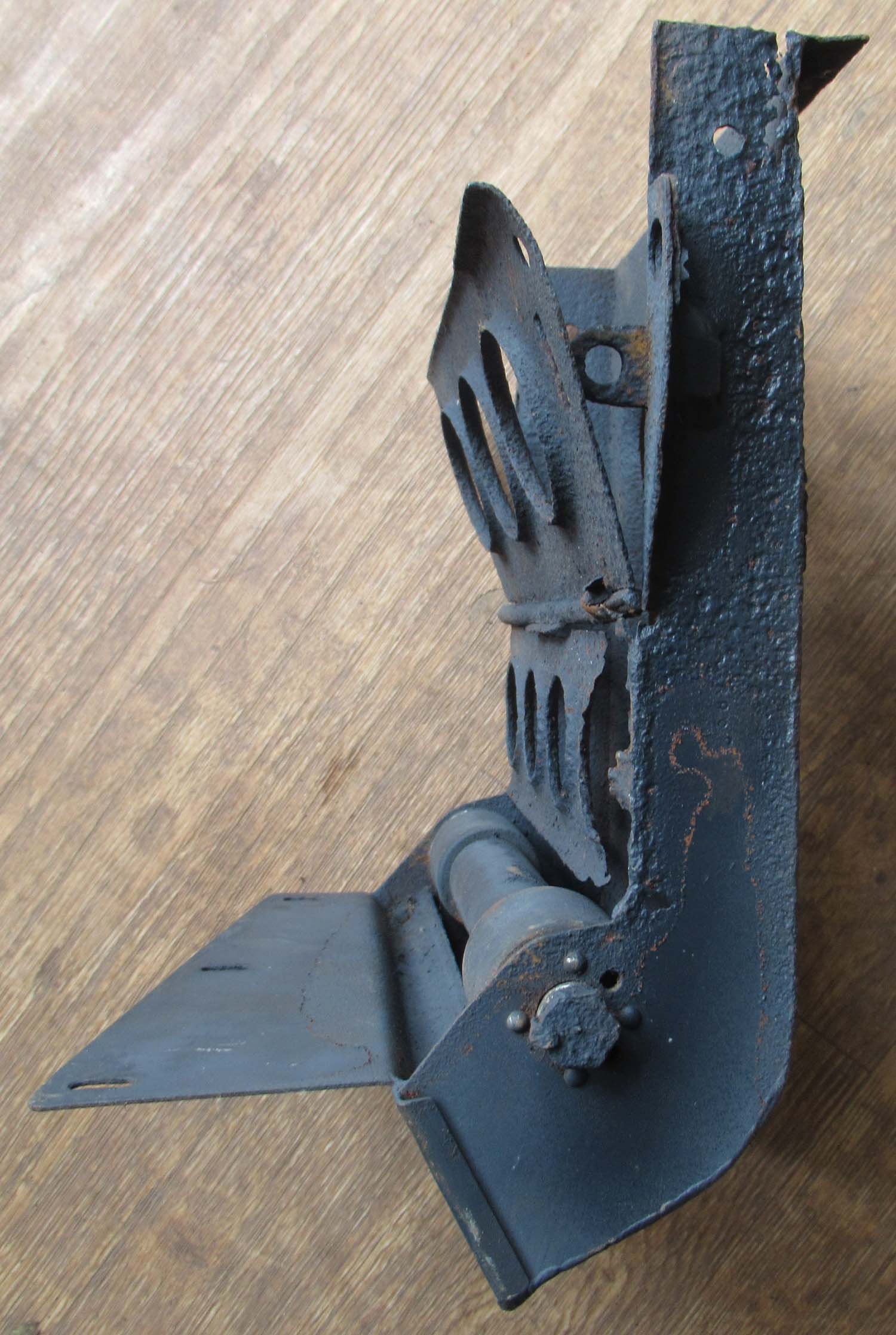
£295


|
Original Seafire/Spitfire
Ammunition Chute 2
(No 90 Pg1 Arm)
Here we
have an original Supermarine Ammunition chute.
The part
number identifies this piece as being first used
in the Seafire Mk.III . It could have been developed to fit
the folding wing but may also have been fitted to the MK VC
Spitfire.
This is
in a good condition with a small amount of damage from rust.
Shown
under the Seafire MK III

The Seafire LF Mk.III was a
British WWII carrier-based fighter based on the Spitfire Mk
VC. It was the first version of the naval Spitfire that
featured manually folding wings, A more powerful engine was
also installed, the Merlin 55 for the F MK III or Merlin 55M
for L Mk III. The Mk III was the highest production
Seafire with 1,220 built, 870 by Westland and 350 by
Cunliffe Owen.
It is armed with a pair of Hispano Mk.II 20 mm cannons with 120 rpg and
four 7.7 mm Browning machine guns with 350 rpg all mounted
in the wings.
Part
number 358 62 147
358 = Mk III
Seafire fitted with Merlin 55M and 20mm Mk.V Hispano Cannons
62= Armament
systems
Click on pictures to enlarge
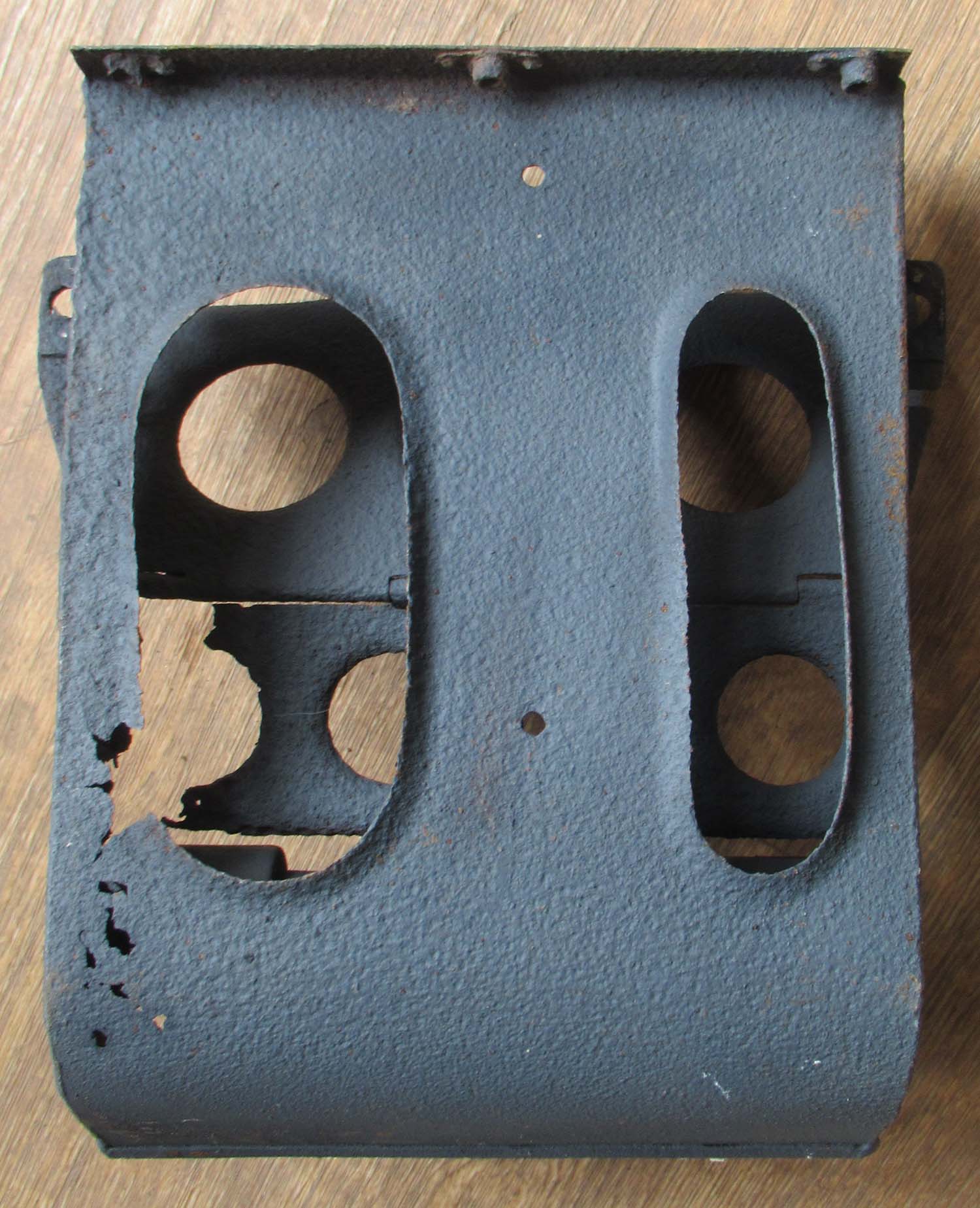
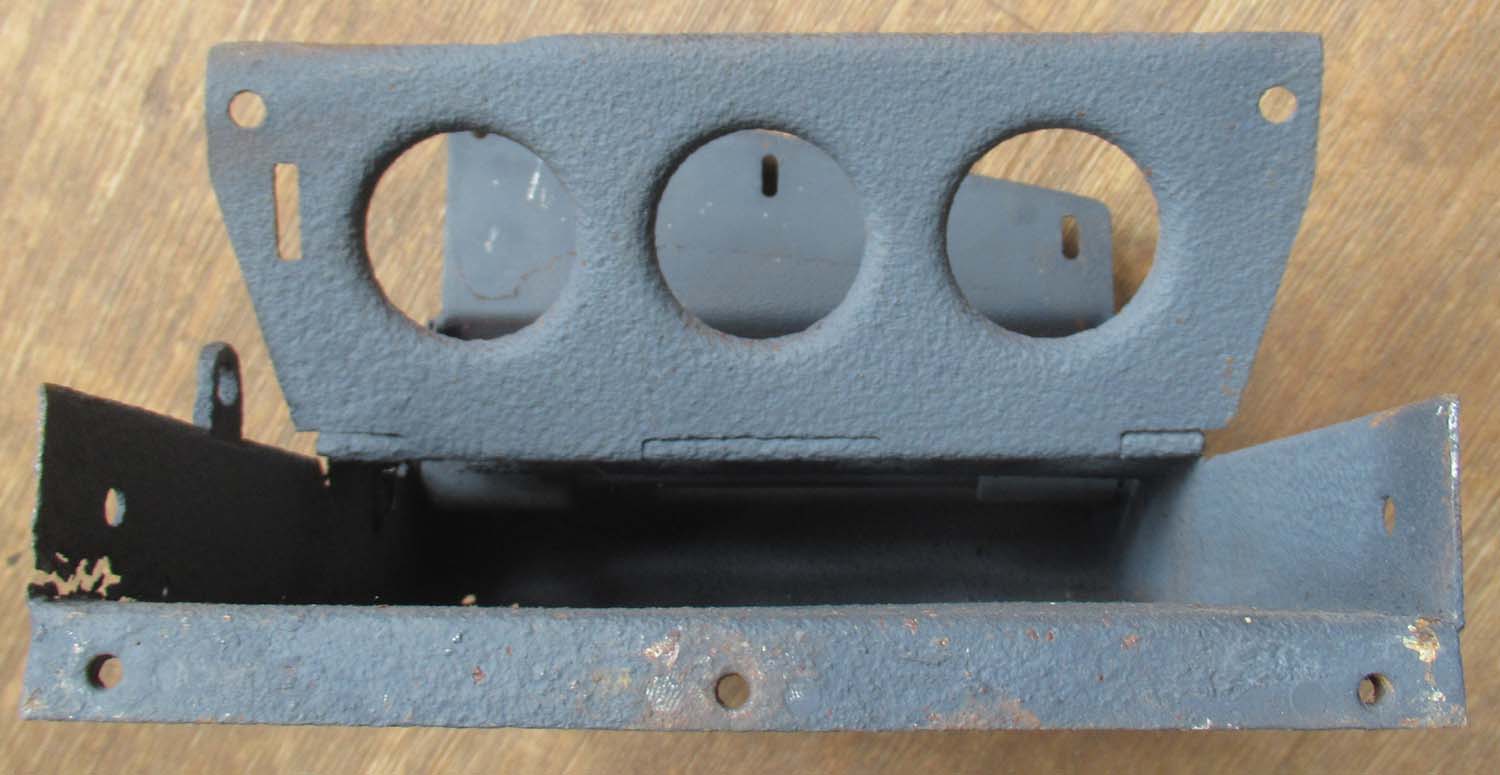
|
|
Click on pictures to enlarge
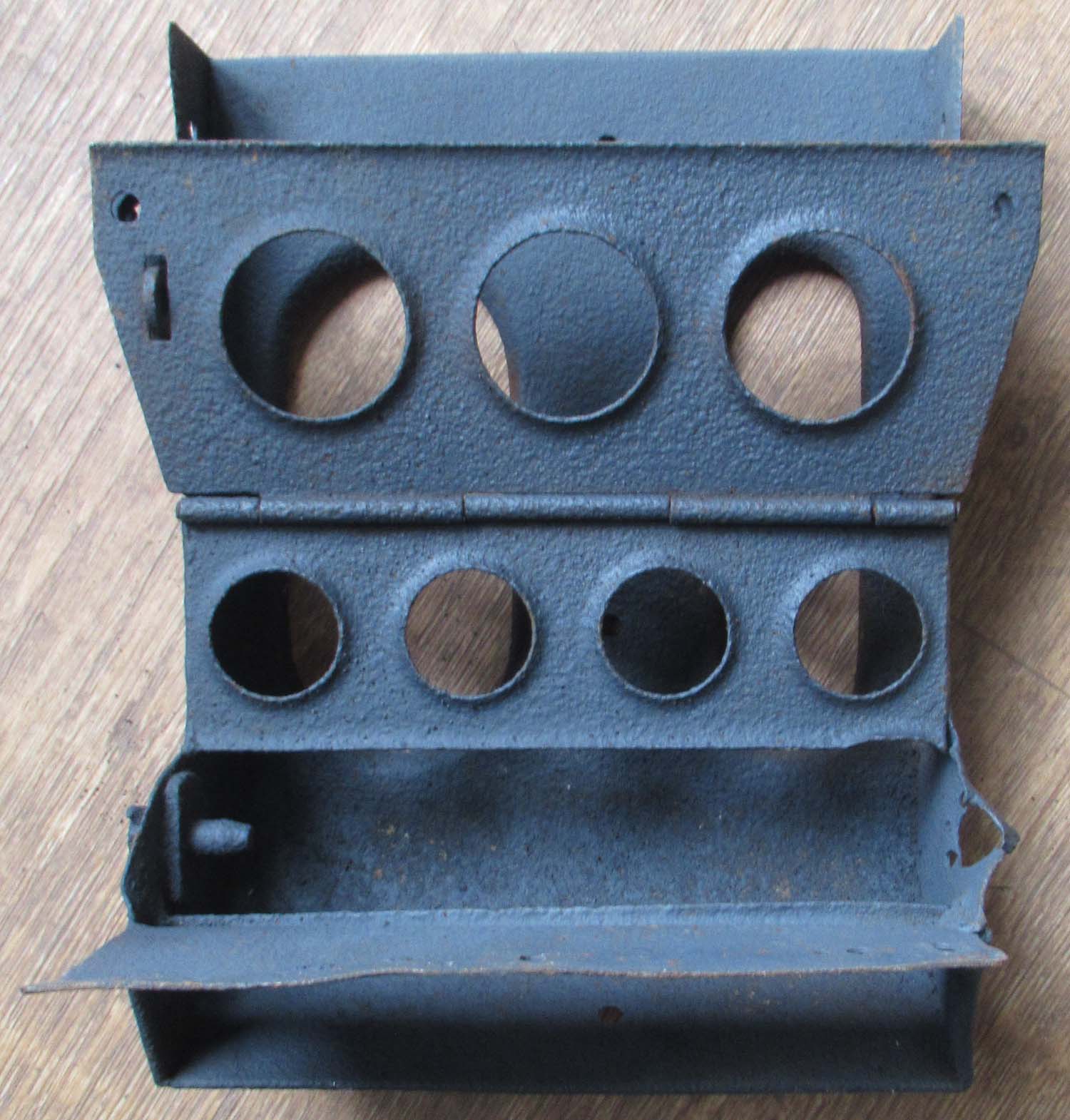
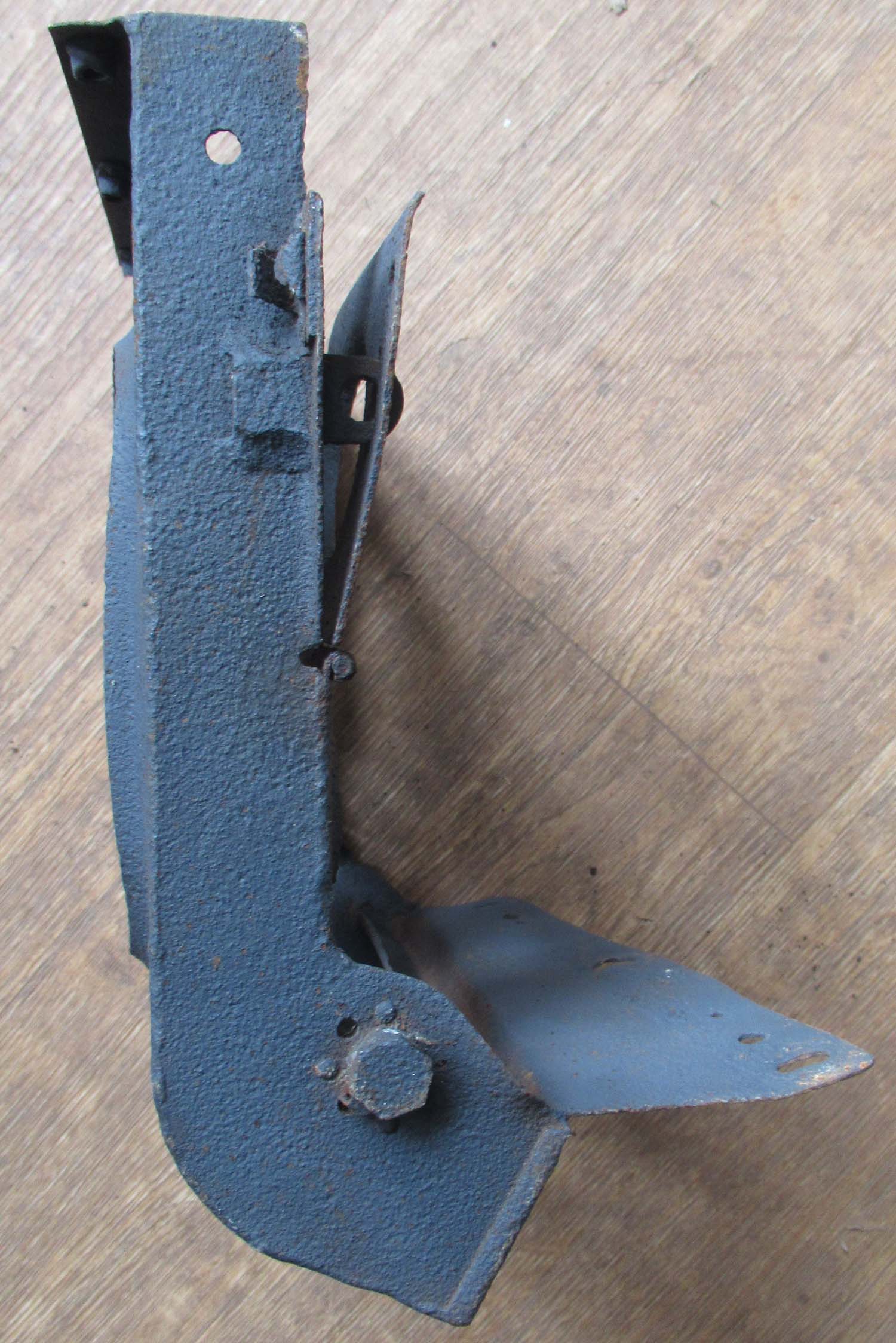
£295


|
Original Seafire/Spitfire
Ammunition Chute 1
(No 89 Pg1 Arm)
Here we
have an original Supermarine Ammunition chute.
The part
number identifies this piece as being first used
in the Seafire Mk.III . It could have been developed to fit
the folding wing but may also have been fitted to the MK VC
Spitfire.
This is
in a good condition with a small amount of damage from rust.
Shown
under the Seafire MK III

The Seafire LF Mk.III was a
British WWII carrier-based fighter based on the Spitfire Mk
VC. It was the first version of the naval Spitfire that
featured manually folding wings, A more powerful engine was
also installed, the Merlin 55 for the F MK III or Merlin 55M
for L Mk III. The Mk III was the highest production
Seafire with 1,220 built, 870 by Westland and 350 by
Cunliffe Owen.
It is armed with a pair of Hispano Mk.II 20 mm cannons with 120 rpg and
four 7.7 mm Browning machine guns with 350 rpg all mounted
in the wings.
Part
number 358 62 147
358 = Mk III
Seafire fitted with Merlin 55M and 20mm Mk.V Hispano Cannons
62= Armament
systems
Click on pictures to enlarge
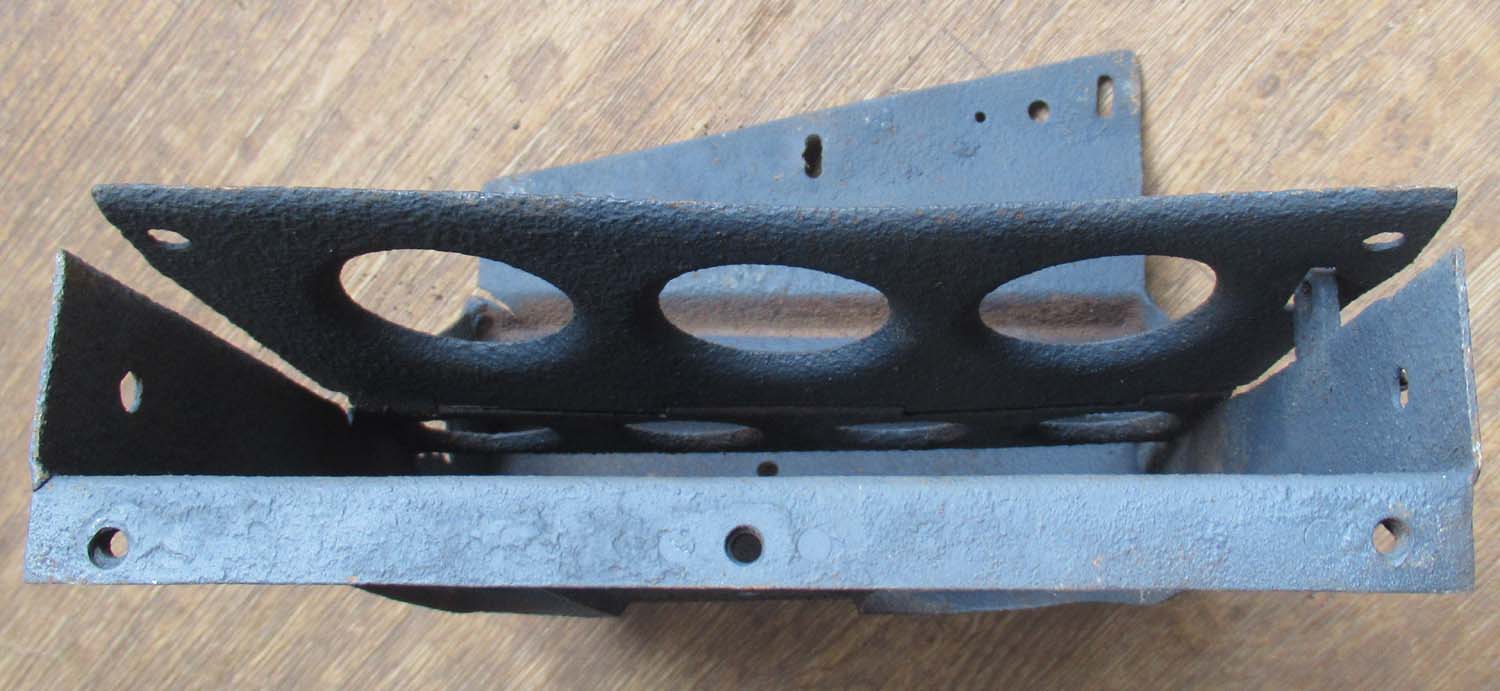
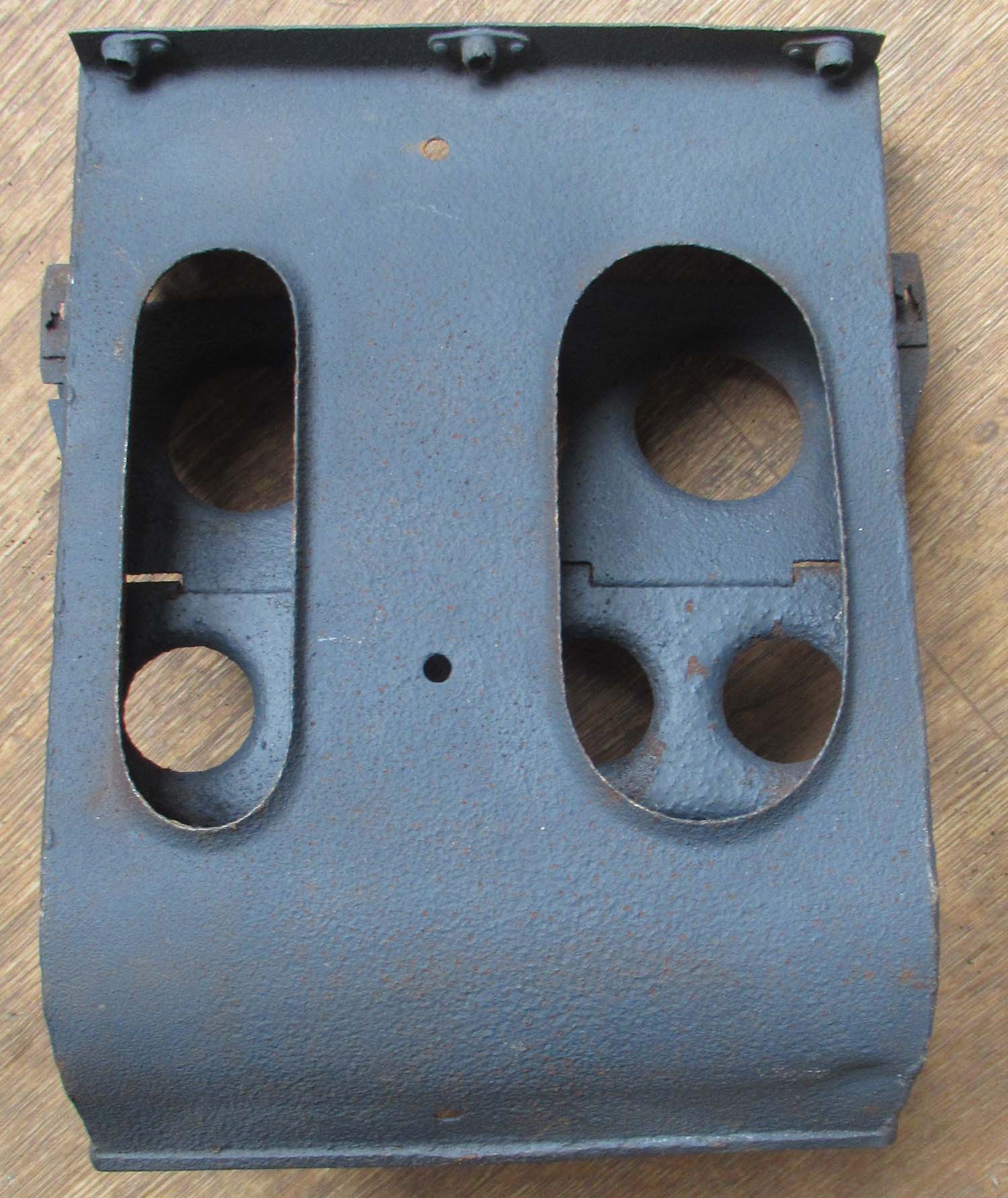
|
|
Click on pictures to enlarge
 |
Bombsight Cock
Lancaster Mk 1(No 88 Pg1 Arm)
Here we have a nice really very rare
Mk.1 bombsight cocking switch as used in wartime Lancaster.
Used to activate the bombsight it was fitted in the Bomb
aimers position.
Ref: 6H/1950
Click on pictures to enlarge


£395


|
|
Click on pictures to enlarge

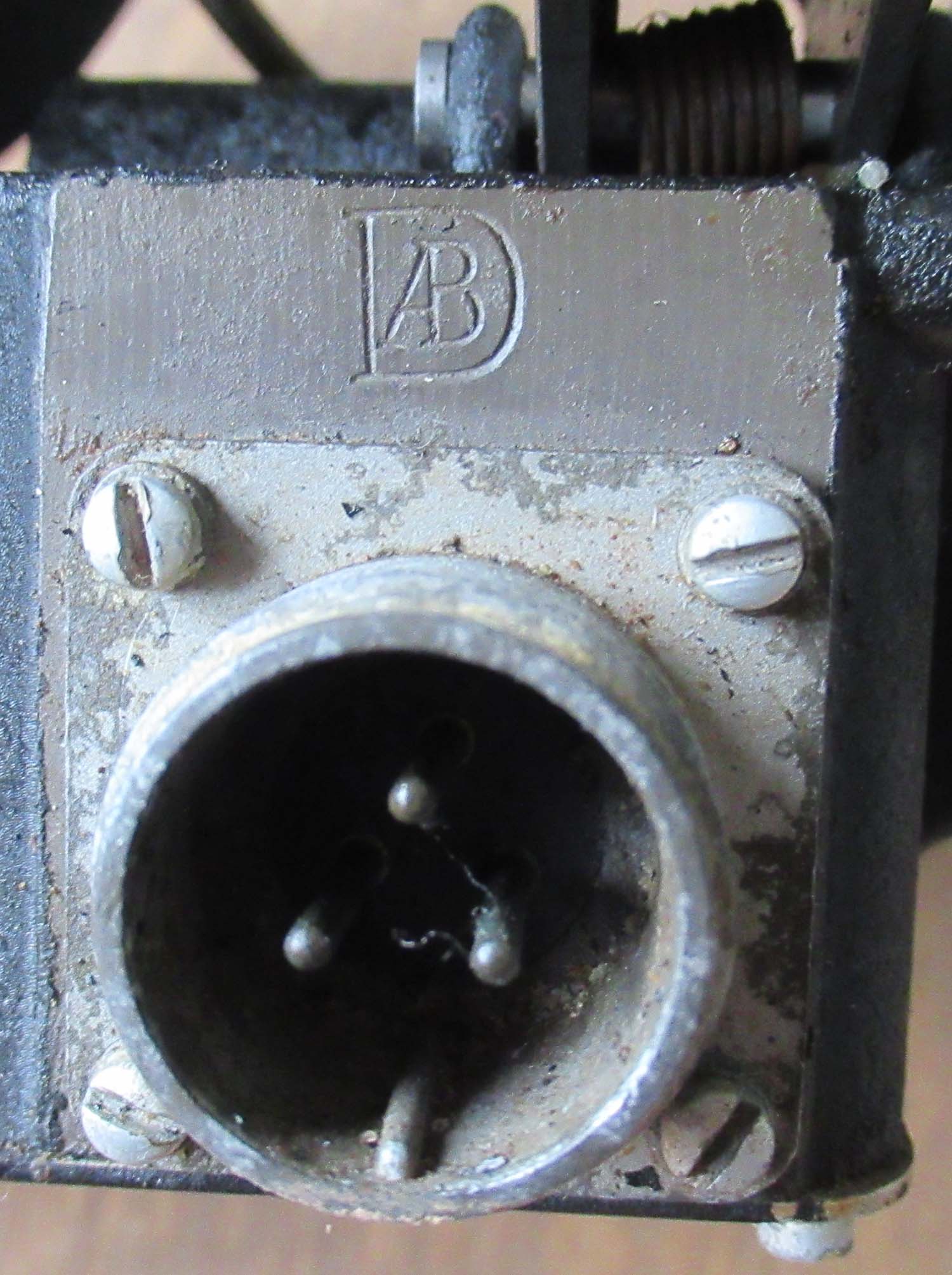
 |
Lancaster T1
Bombsight 2 (No 87 pg1 Arm)
Here is a really nice example of the T1 Bombsight the
mainstay of Bomber Command in WWII, used in practically
every heavy and medium RAF Bomber.
This particular model was made in the US and supplied under
the lend lease agreement.
It is complete and in good used original condition.
Click on pictures to enlarge

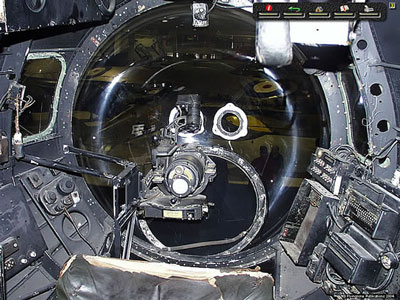

Above In situ
in Lancaster's bomb aimers position




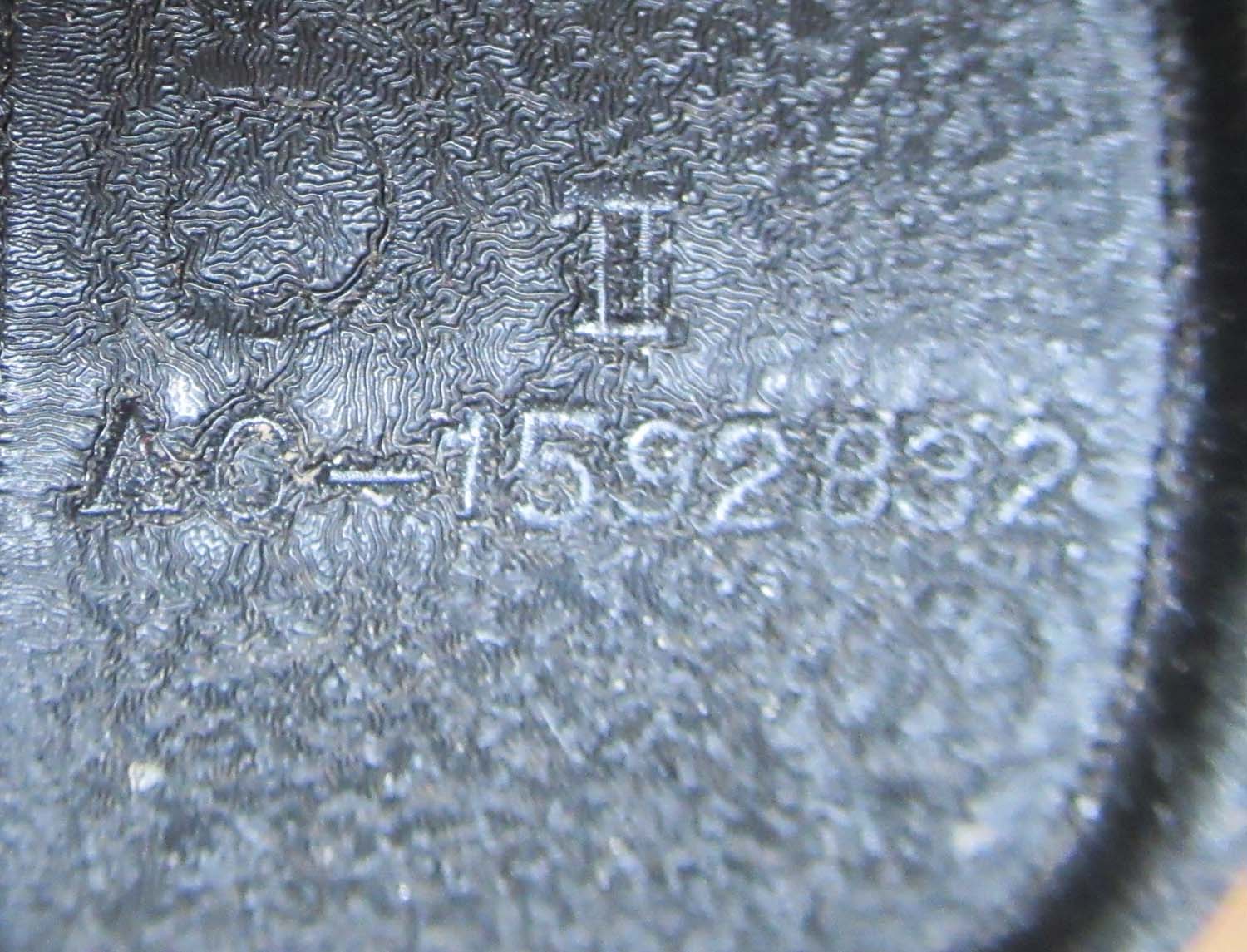
£950


This item is heavy and large. Please
contact me for an overseas shipping
quote
|
|
Click on pictures to enlarge
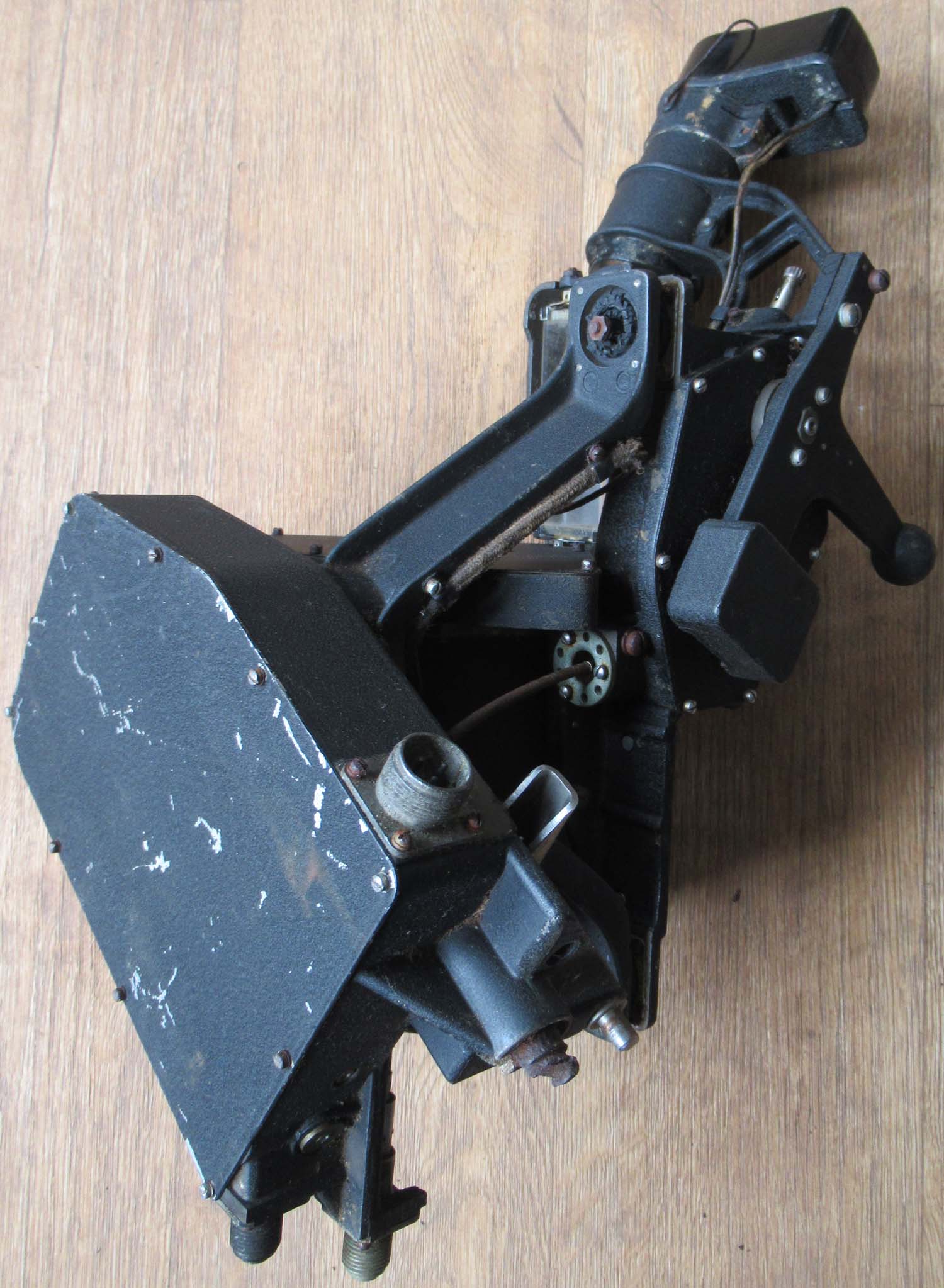
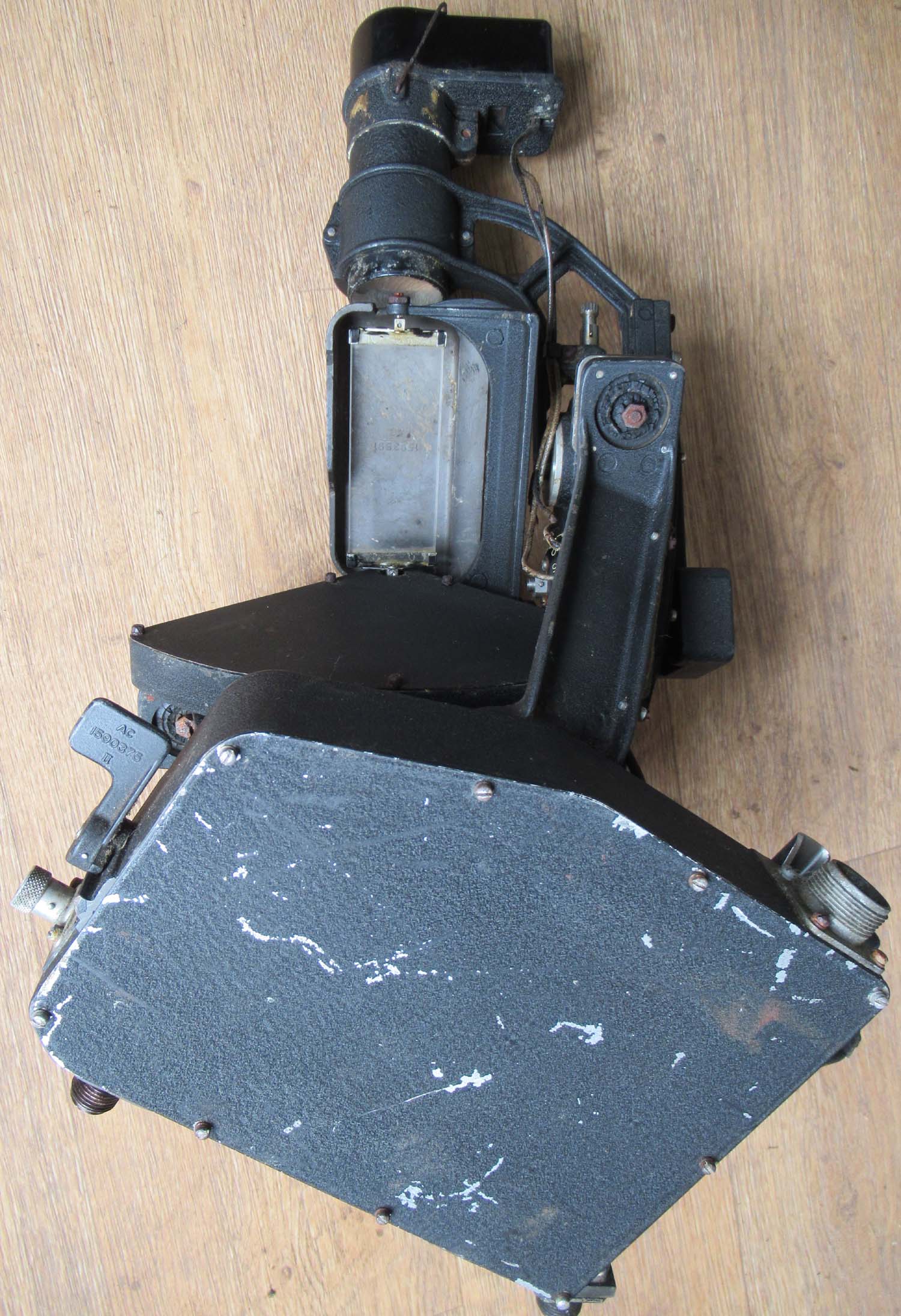
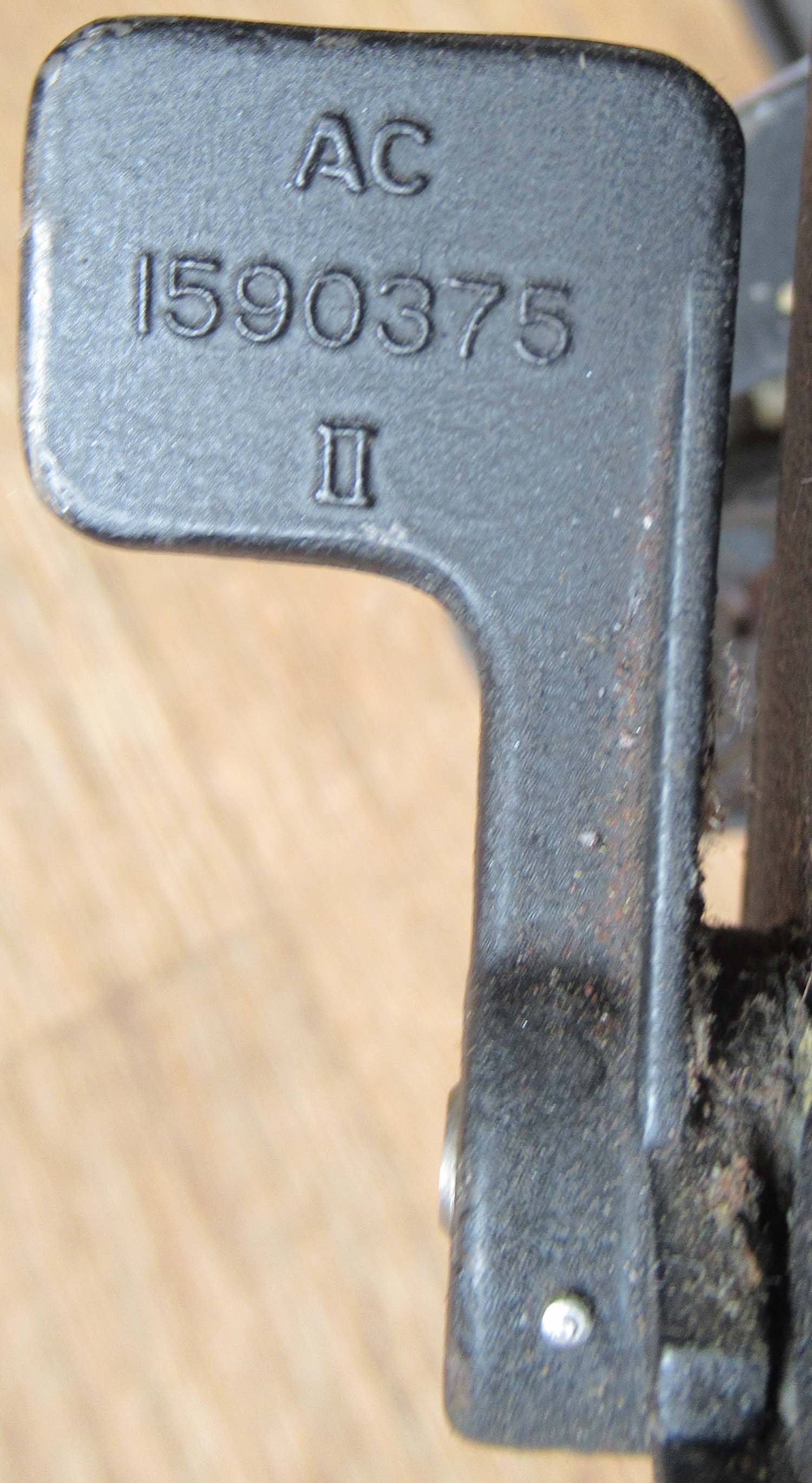 |
Lancaster T1
Bombsight (No 86 pg1 Arm)
Here is a really nice example of the T1 Bombsight the
mainstay of Bomber Command in WWII, used in practically
every heavy and medium RAF Bomber.
This particular model was made in the US and supplied under
the lend lease agreement.
It is complete and in good used original condition. The
only fault is that the anti vibration mounts have degraded
but new old stock ones will be supplied and ready to fit.
Click on pictures to enlarge
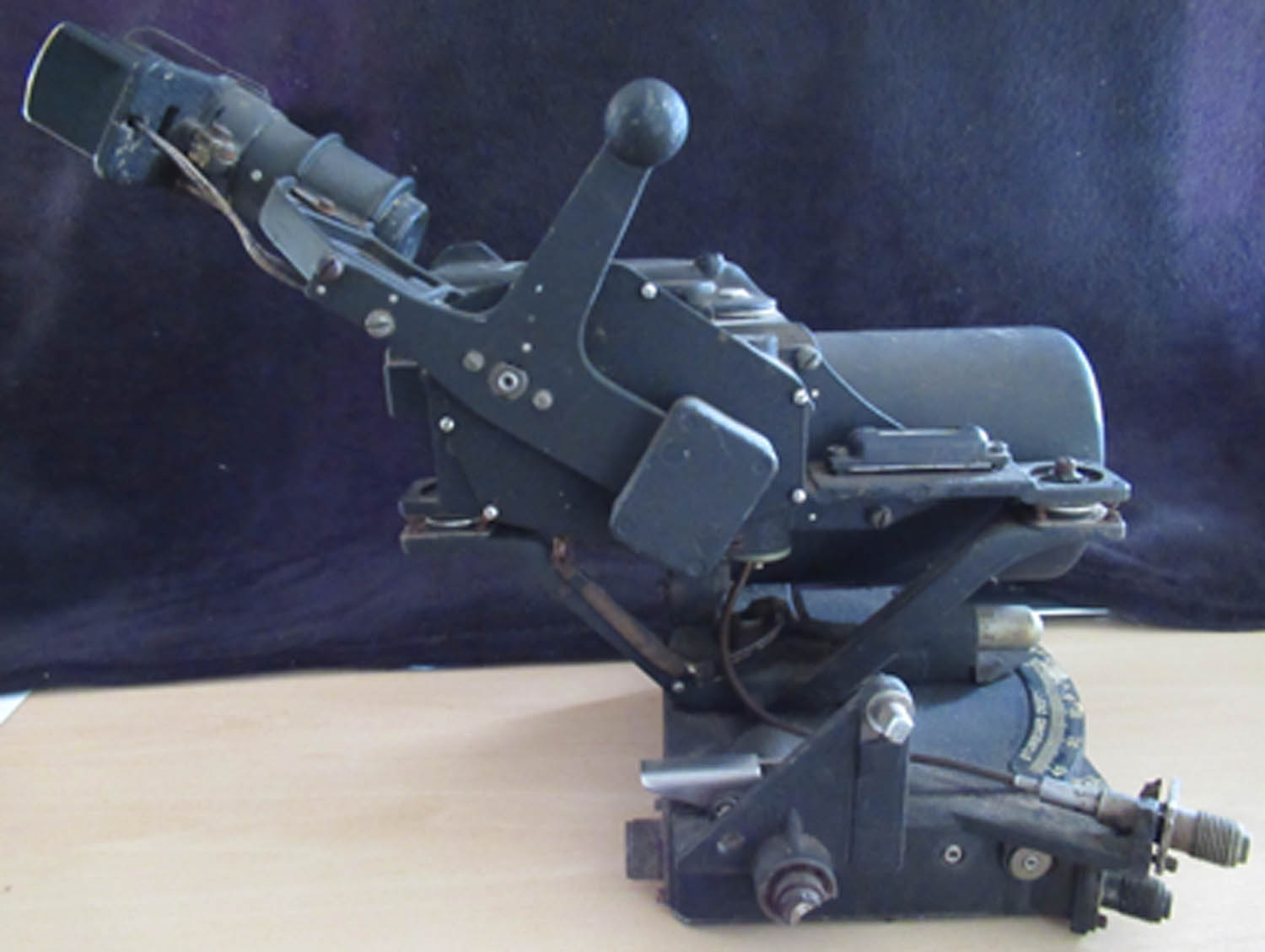


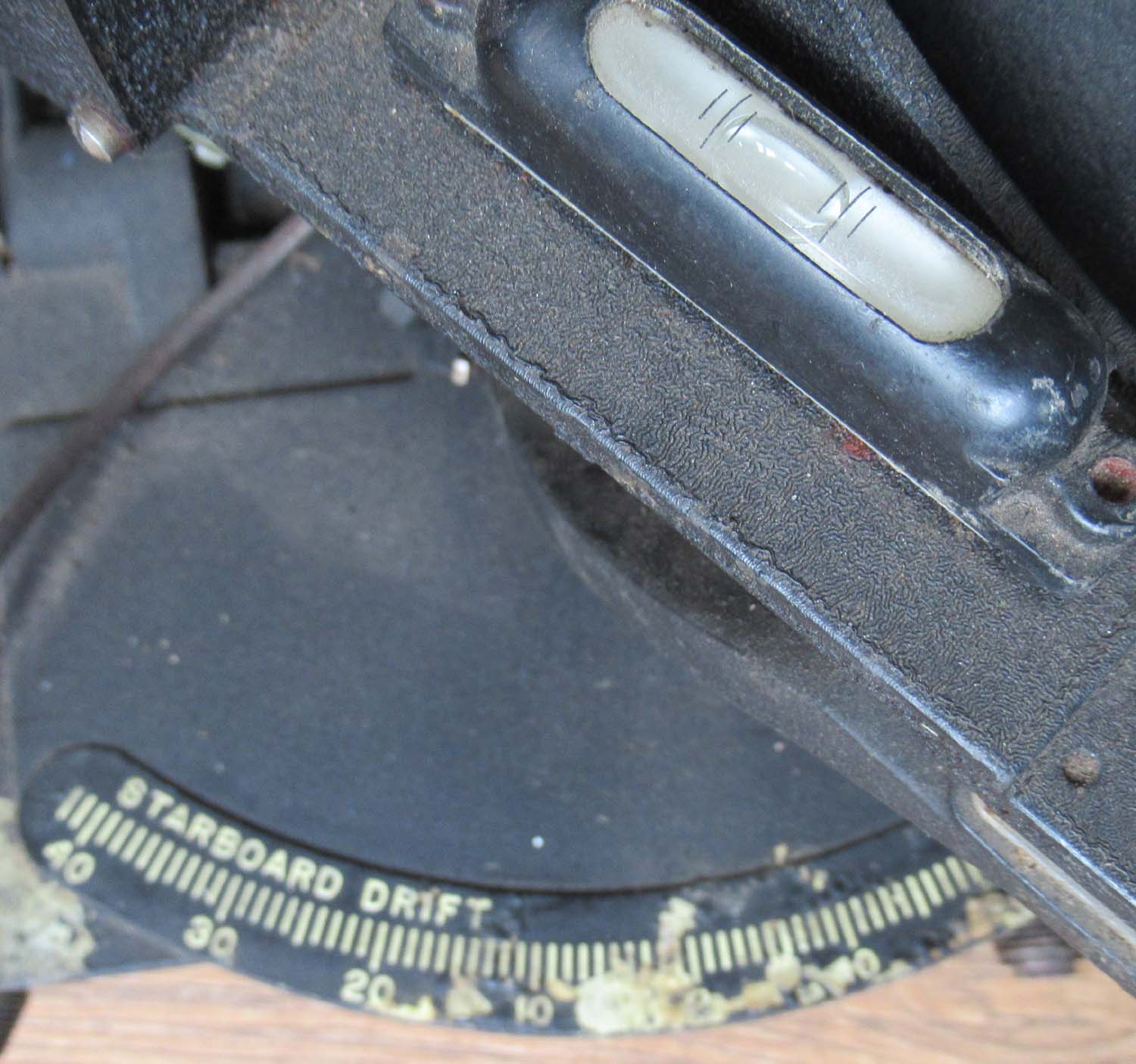
Above In situ
in Lancaster's bomb aimers position
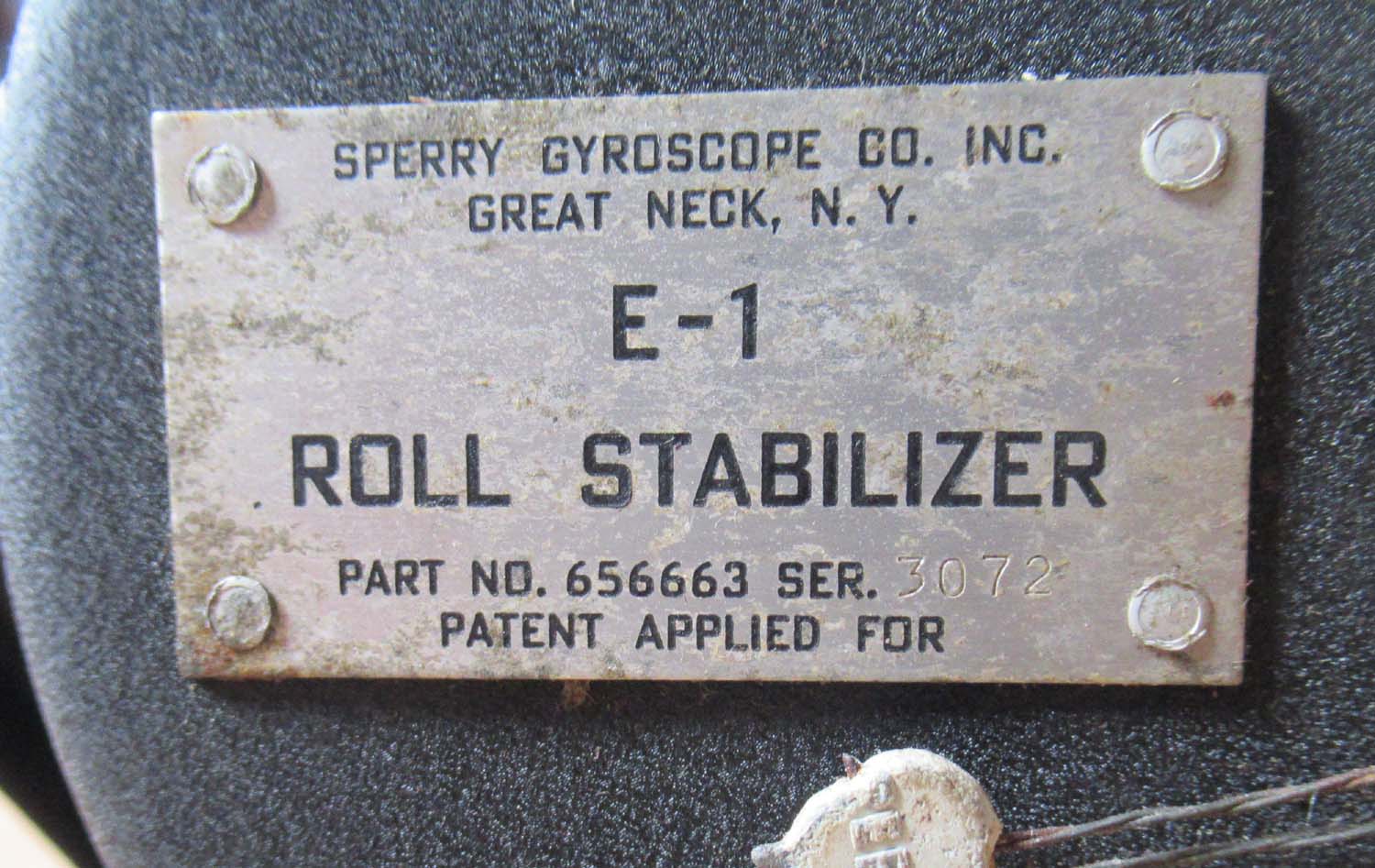
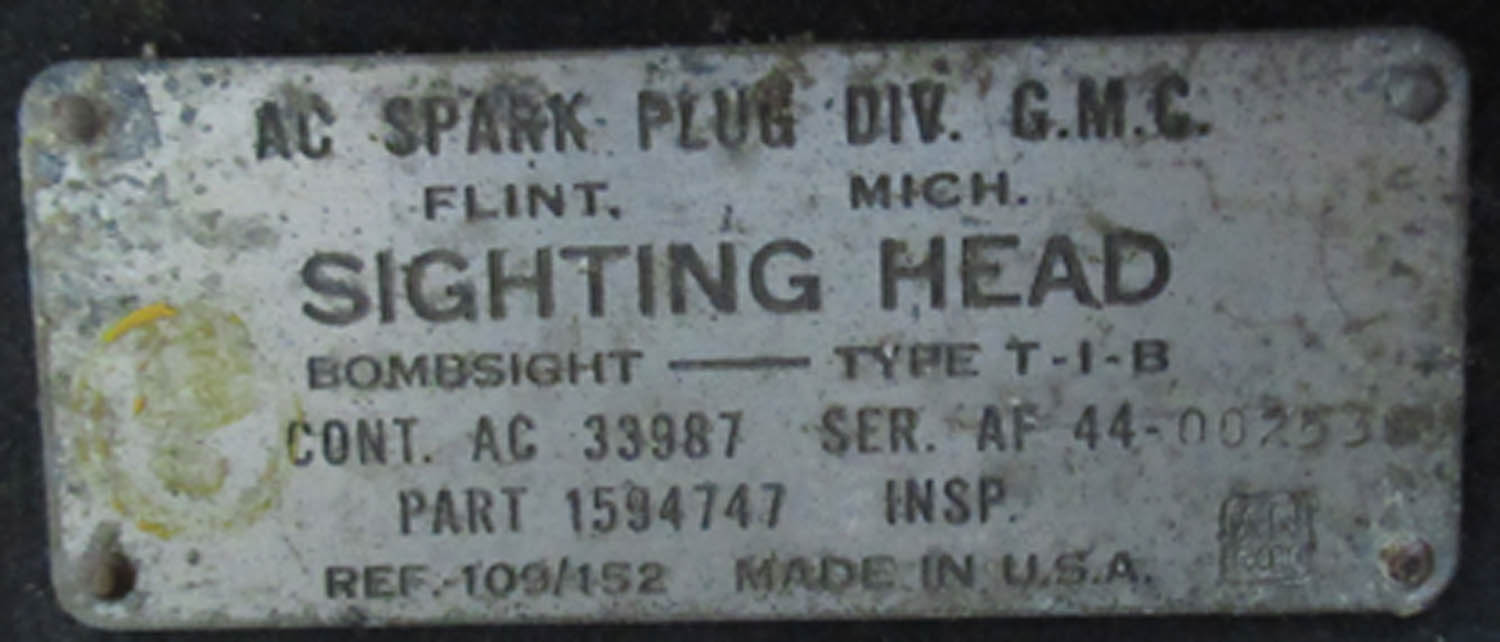
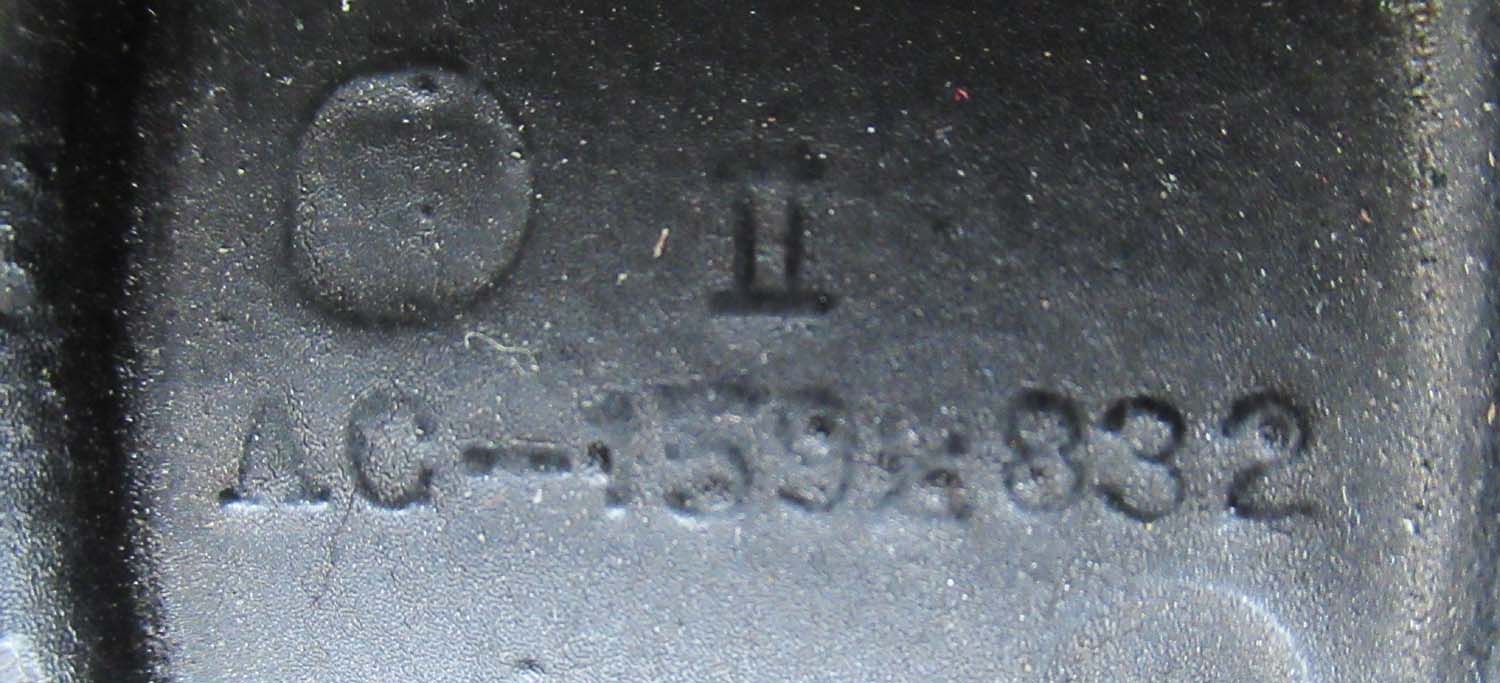
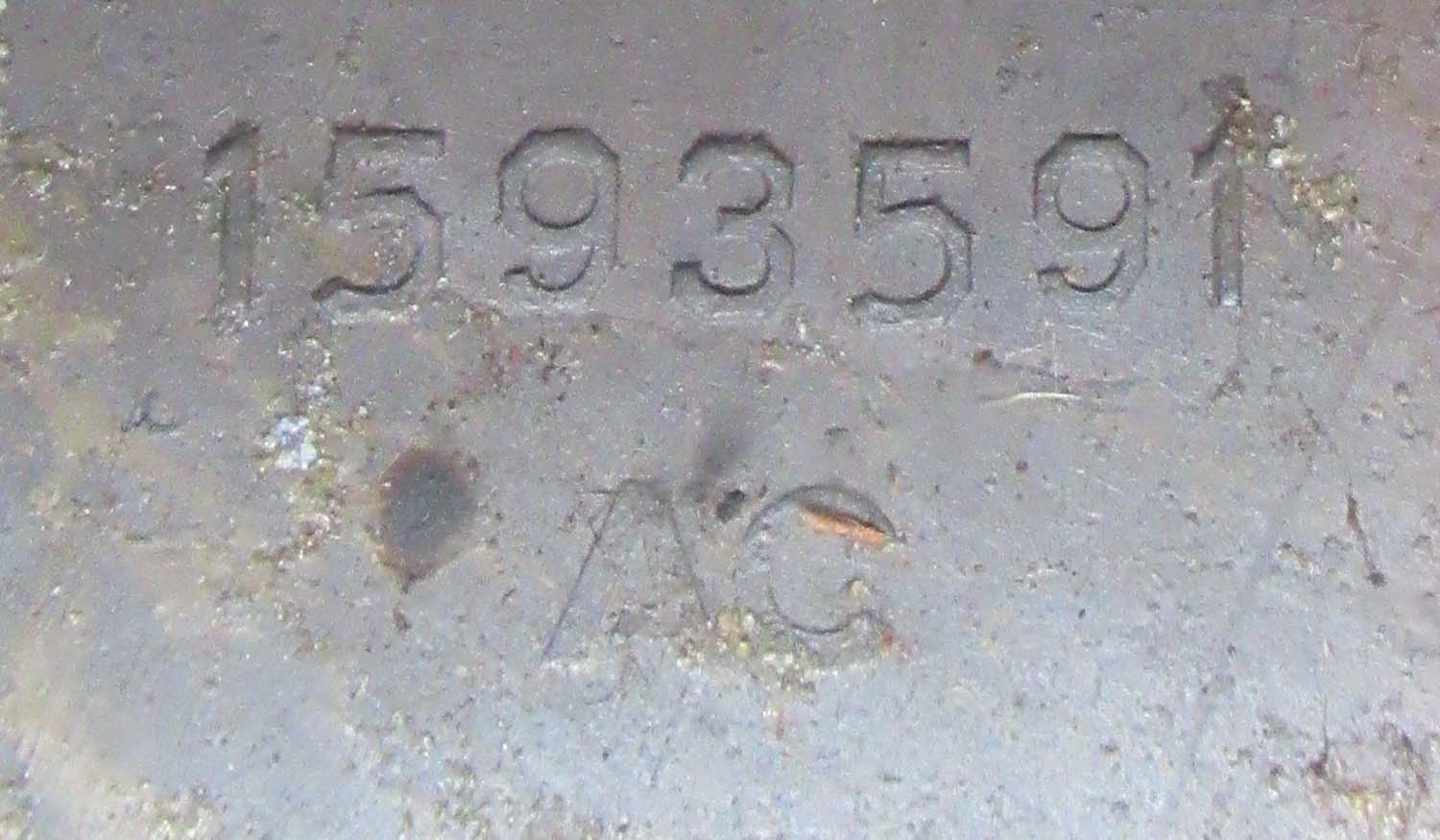
£950


This item is heavy and large. Please
contact me for an overseas shipping
quote
|


£10 per box


|
Original 50 Cal
Links (No 85 pg1 Arm) Here
we have new old stock 50 calibre links in their original
box.
10 links in each box.
If you require more than
one box postage will be combined.
|
|
Click on pictures to enlarge
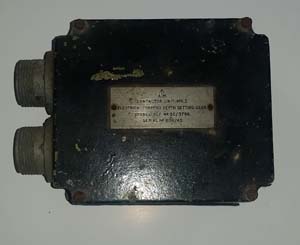
£75


|
Torpedo Depth Setting
Contacting Unit
(No 84 pg1 Arm)
Here we
have a
Mk. I
Contacting Unit for Electrical Torpedo Depth Setting.
This is
dated 1945.
Ref: 5C/376
Click on the
picture to enlarge
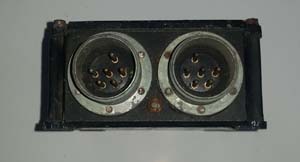
|
|
Click on pictures to enlarge
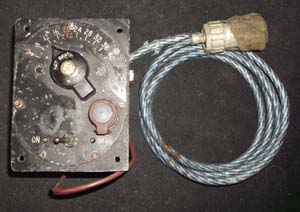
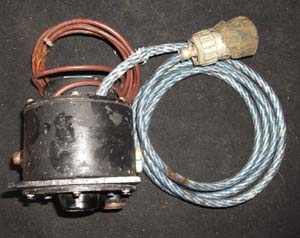 £175


|
Torpedo Depth
Setting Gear (No 83 pg1 Arm)
This is an unusual piece and not
one I have seen before.
It is dated 1945 and is good
condition complete with cables.
It allows the pilot to set
the depth at which the torpedo will run.
The
formidable Beaufighter was used as a Torpedo bomber in 1945
among its many roles.
Ref No:
5C/3795
Click on pictures to enlarge
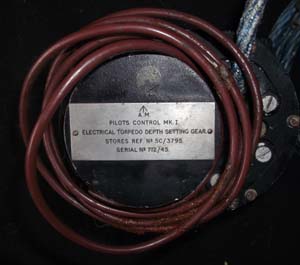
|
|
Click on pictures to enlarge
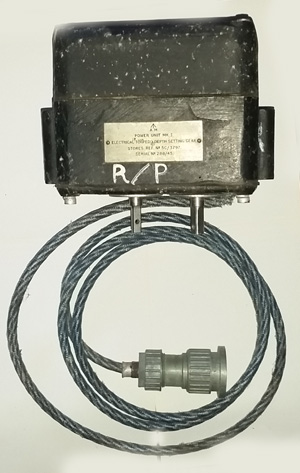
£75


|
Torpedo Depth Setting
Power Unit
(No 82 pg1 Arm)
Here we
have a
Mk. I
Power Unit for electrical torpedo depth setting.
This is
dated 1945.
Ref: 5C/3739
Click on pictures to enlarge

|
|
Click on pictures to enlarge
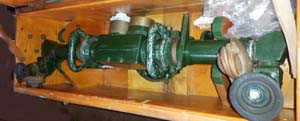
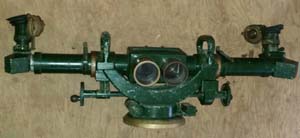

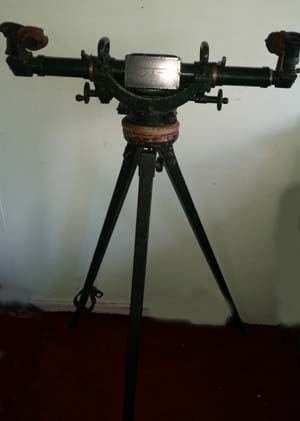
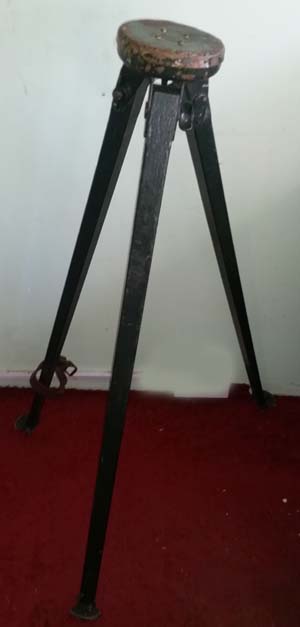 |
Anti Aircraft
Gun Range Finder Mk II (No 81 pg1 Arm) Here is a superb Anti aircraft gun range finder dated 1942
in its original transit case along with its tripod. This is only the second one
of these I have seen and the last did not have its tripod. This piece of
equipment was operated by Flak crews many of whom were women, affectionately
known as Ack Ack Girls. This piece of equipment worked out the range of the
approaching enemy aircraft and relayed this information to the guns.
Click on pictures to enlarge
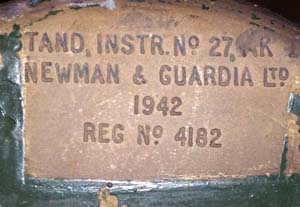
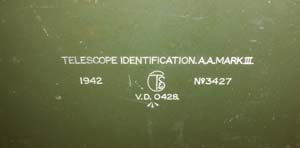
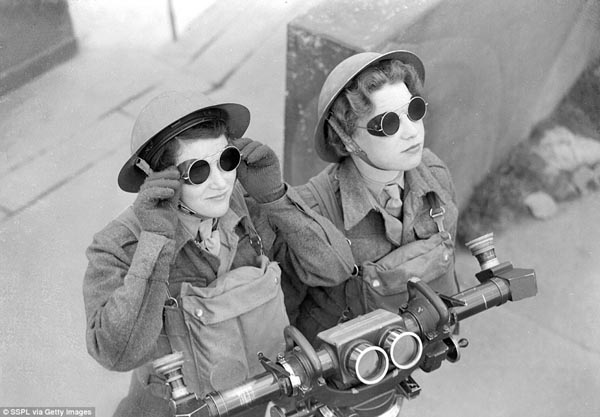
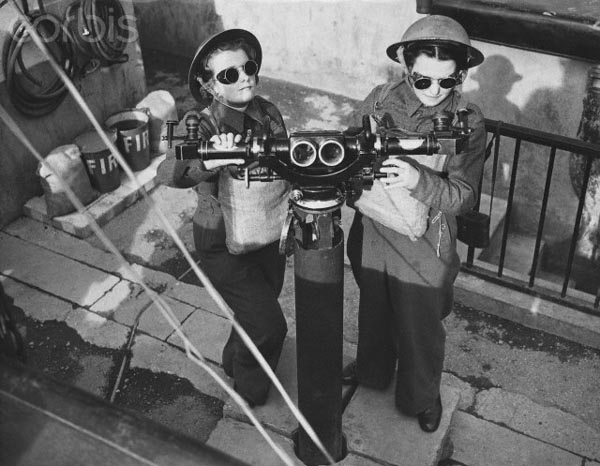
£1200


Over seas buyers
contact us for shipping
quote shipping is not included in the international cart
|
|
Click on
pictures to enlarge
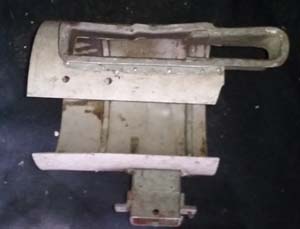

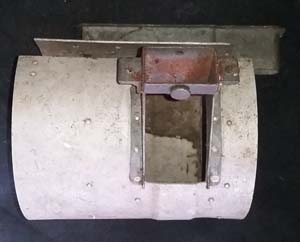
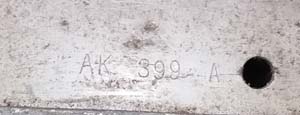
£225


|
20mm Hispano
Cannon Magazine Cowling (No 80 pg1 Arm)
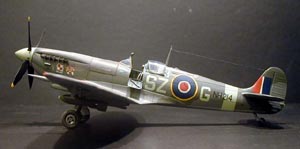
This is
the cowling for a lightweight feeder magazine for a
20mm Hispano cannon it is in excellent condition These
replaced the large drums which actually held the 20mm
rounds, they are clockwork and feed the ammo in to the Gun
from a box in the wing , this helped reduce the profile of
the wing and reduce drag
The eight .303in
machine guns of the Mk I Spitfire had given it a great deal
of punch when it was designed, but when the Germans began to
add armour to their bombers the machine guns were found
somewhat lacking. Accordingly experiments were made with the
use of 20mm Hispano cannon.
This gave it a great deal of punch
when it was developed, but when the Germans began to add
armour to their bombers, the rifle calibre machine guns lost
some of their effectiveness.
The response was to fit the Spitfire
with the 20mm Hispano cannon. This poses a variety of
problems, not least of which was the size of the cannon. The
only way to fit it in the Spitfire wing was to mount it on
its side. A second problem was that the early cannons were
prone to jam under the pressure of combat. If one cannon
jammed, the recoil from the other one was enough to push the
Spitfire off course.
The “b” wing entered service during
1940. No.19 Squadron used it during the battle of Britain,
but the cannons were still causing problems. Finally in
November 1940 no 92 Sdr was given Spitfires equipped with
two 20mm cannon and four 0.303in machine guns. This proved
to be a much more effective combination of weapons, and
became the standard for the “b” wing.
The “c” wing appeared in October 1941.
It was a “universal” wing that could take eight .303in
machine guns, four 20mm cannon or two 20mm cannon and four
machine guns. Each cannon now had 120 rounds, compared to
the 60 of the “b” wing. This wing was used on the majority
of Mk V Spitfires, normally with the combined cannon and
machine guns configuration. The “c” wing also had the
capability to carry two 250lb bombs under the wings, or one
500lb bomb under the fuselage. If machine guns were used,
they were used in the outboard position. The “a” and “b”
wings were not used after the Spitfire V.
Seen under the 20mm
cannon
left and the 50
call MG installation in a Mk IXe Spitfire. You can clearly
see the magazine installation.
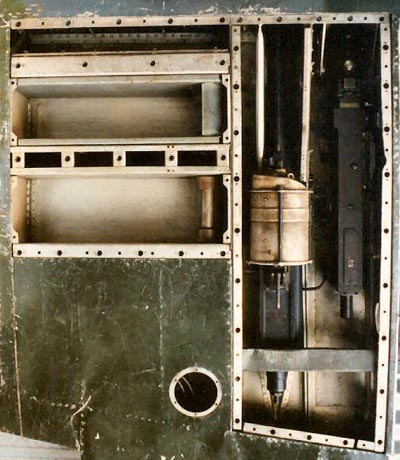
|
|
Click on
pictures to enlarge
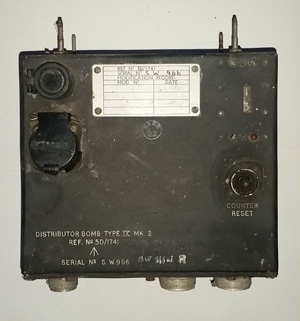 |
Type IX Bomb
Distributor (No 79 pg1 Arm)
Here we have a Type IX Mk.2
Bomb Distributor.
Ref No: 5D/1741
Serial No: S.W.966
Several available
£95 each


|
|
Click on
pictures to enlarge
 |
Homing Indicator
(No 78 pg1 Arm)
Here we have a homing
indicator time delay switch. The knob turns and moves the
second dial.
Air Ministry Marked.
Ref No: 5D/2250 £95


|
|
Click on
pictures to enlarge
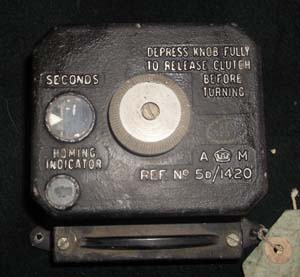
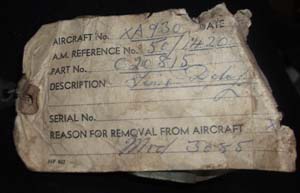
£95


|
Homing Indicator
2 (No 77 pg1 Arm)
Here we have a homing
indicator time delay switch.
Removed from Handley Page Victor Mk.I XA930.
Air Ministry Marked.
Ref No: 5D/1420
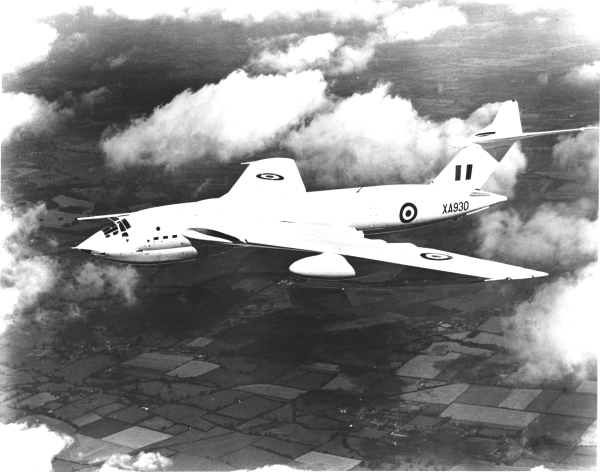 |
|
Click on
pictures to enlarge
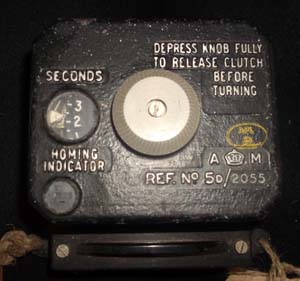
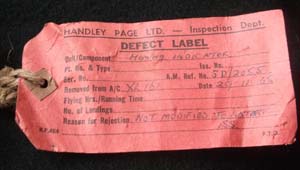
£125


|
Homing Indicator
3 (No 76 pg1 Arm)
Here we have a homing
indicator time delay switch.
Removed From Handley Page Victor SR.2 XL161
which was an
aircraft used in the Blue Steel Missile Trials in the early
sixties.
Air Ministry marked.
Ref No: 5D/2055
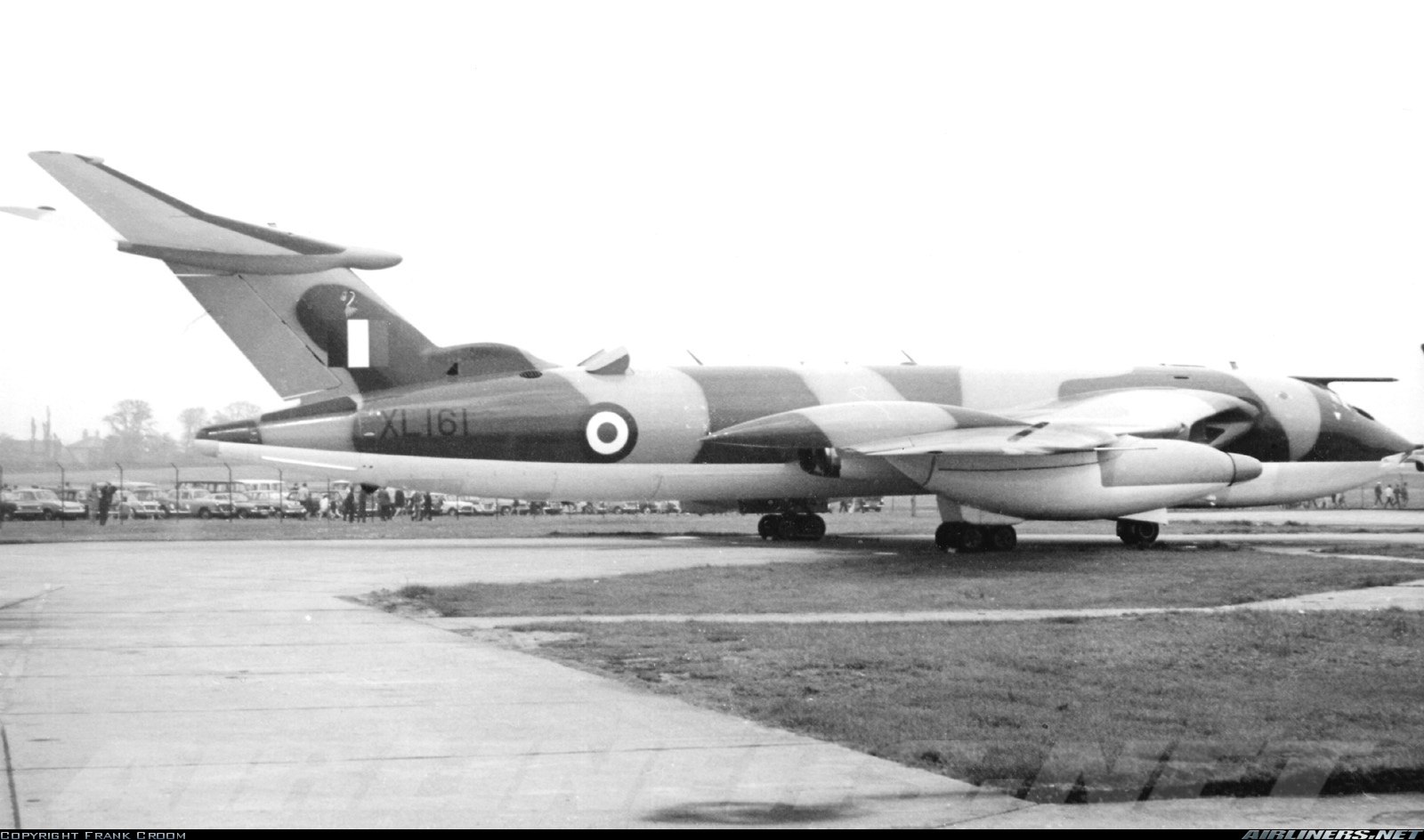 |
|
Click on
pictures to enlarge
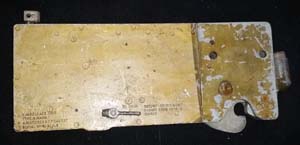
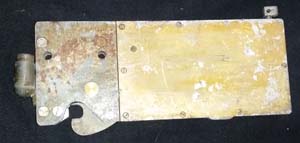 |
E.M Release Unit Type N
(No 75 pg1 Arm)
Here we
have a bomb release unit.
This is a
Type N Mk.1. This is a
standard rack that fitted to the Lancaster as well as other
RAF Aircraft.
Ref: 11A/2557
Several available
£50 each


|
|
Click on
pictures to enlarge
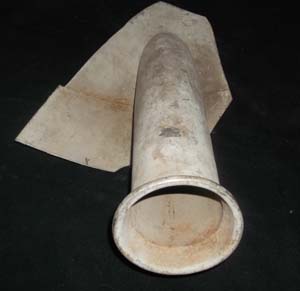
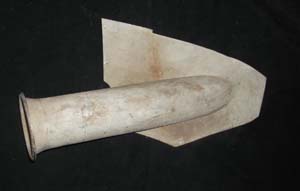 |
Cannon Cowling
(No 74 pg1 Arm)
Here we have a cannon cowling
made of stainless steel
I cannot currently identify
the aircraft on which this was used.
If you can identify
this then please
Contact us
£125


|
|
Click on
pictures to enlarge
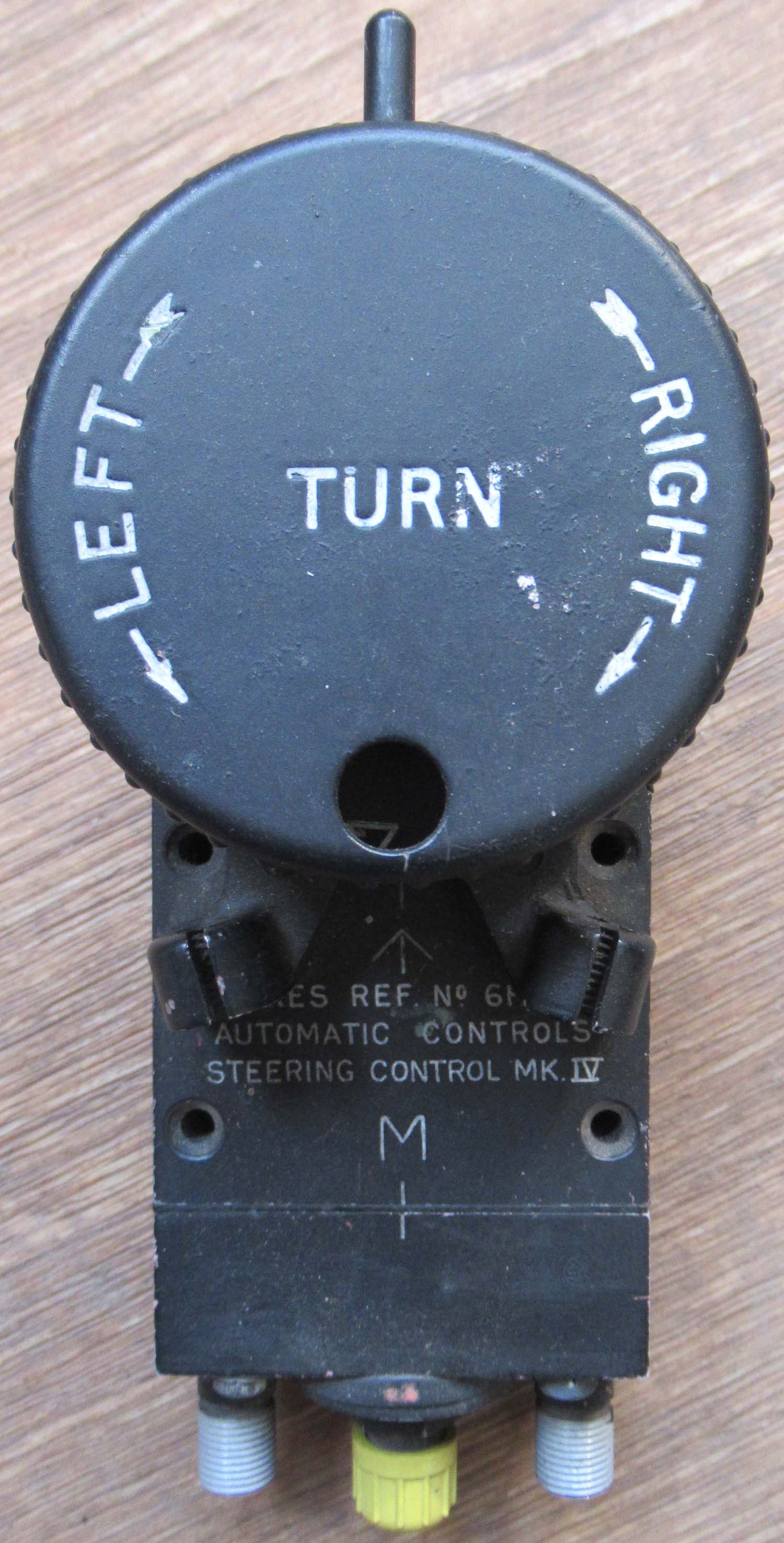
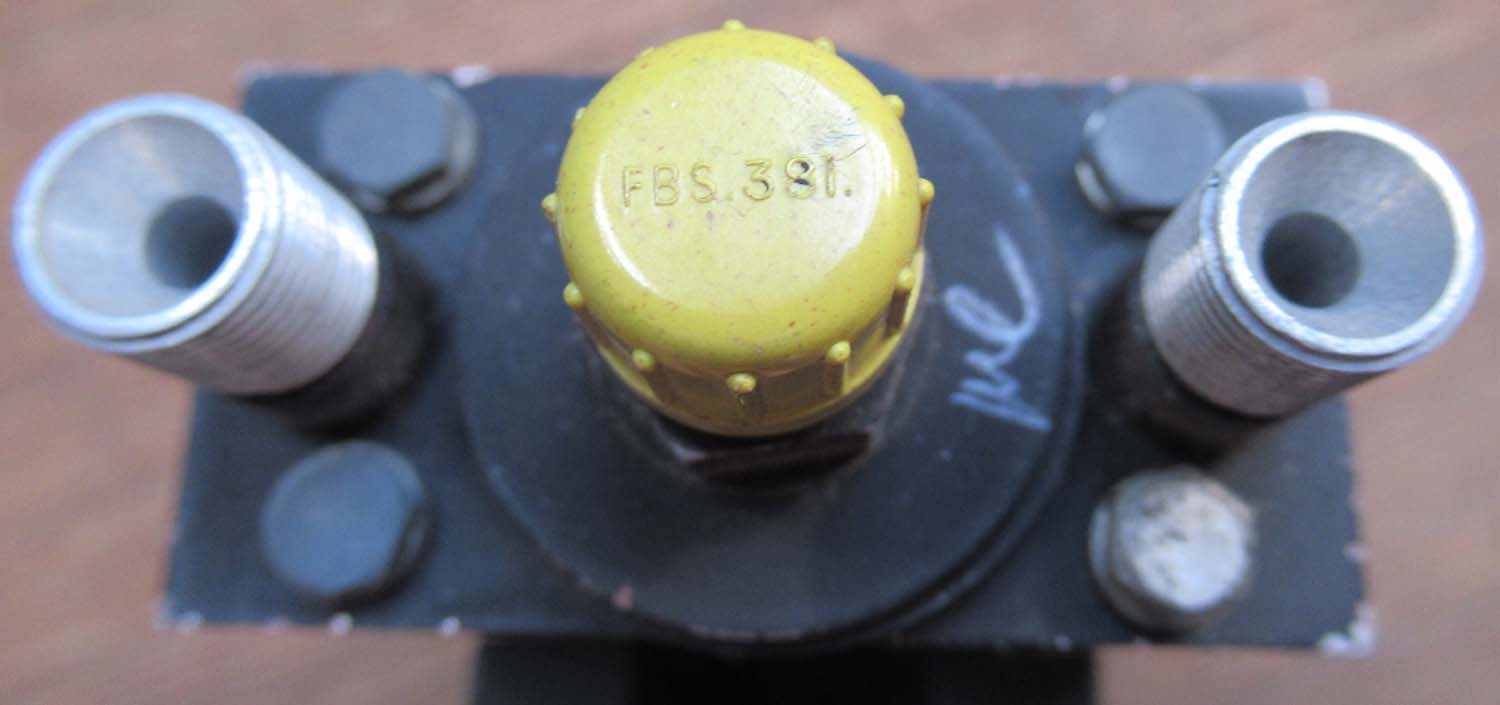
|
Lancaster Bomb
Aimer Auto Pilot 3 (No 73 pg1 Arm) Here we have a Auto pilot
control Switch.
This piece was fitted in the Bomb aimers position
on Lancaster's as well as other RAF heavy bombers.
Using this control the bomb
aimer took over control from the pilot and steered the
aircraft on the bomb run.
Click on
pictures to enlarge
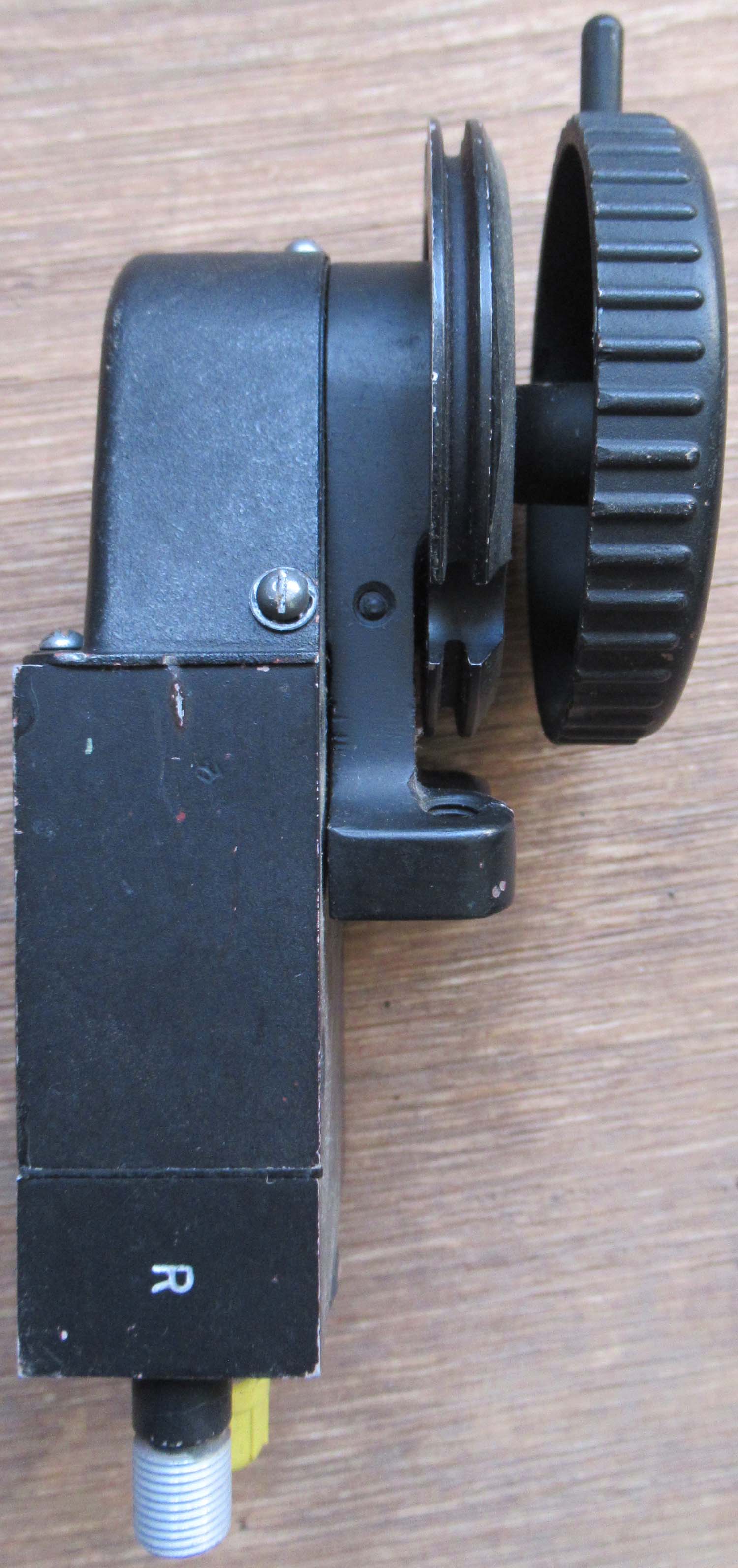
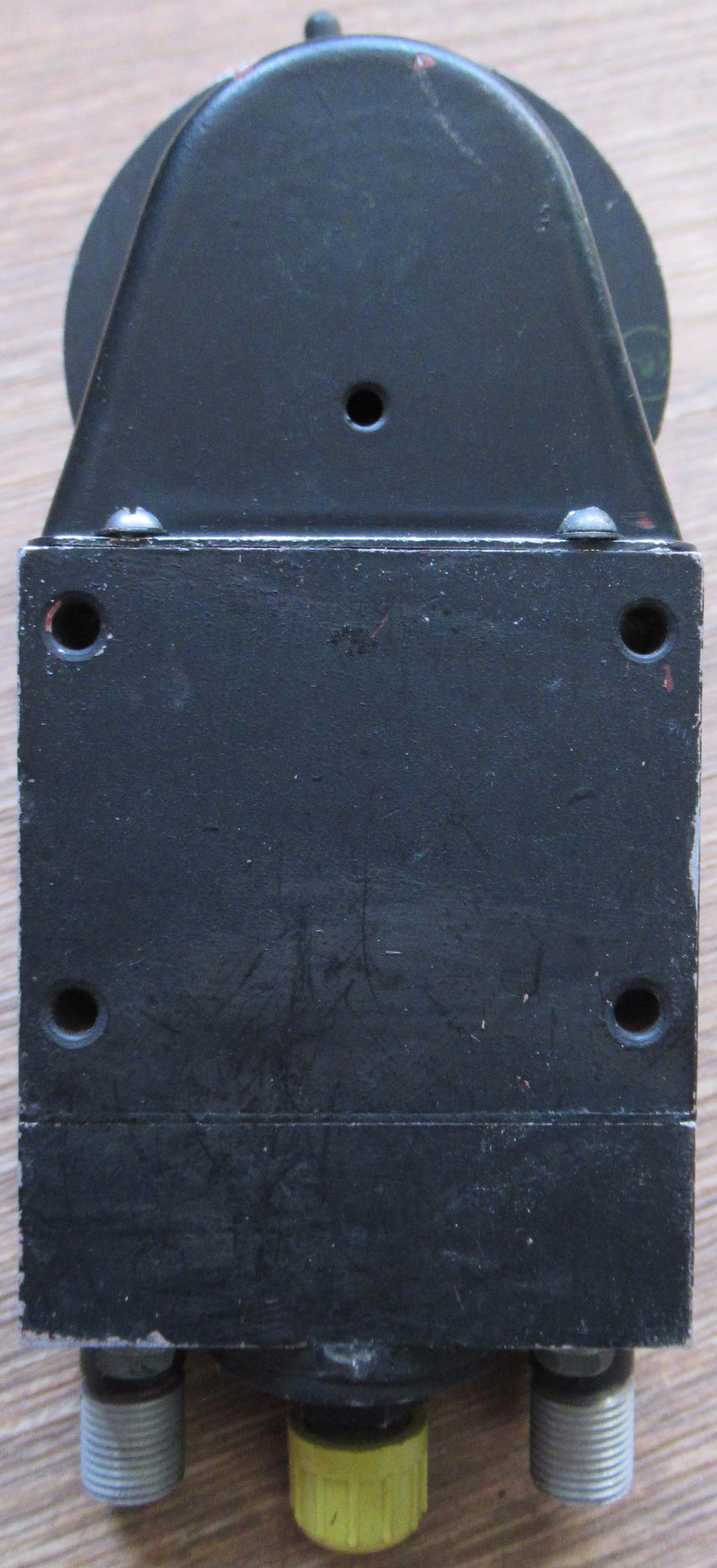
£275


|
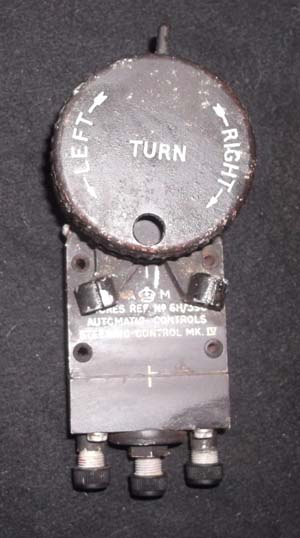
£275


|
Lancaster Bomb
Aimer Auto Pilot 2 (No 72 pg1 Arm)
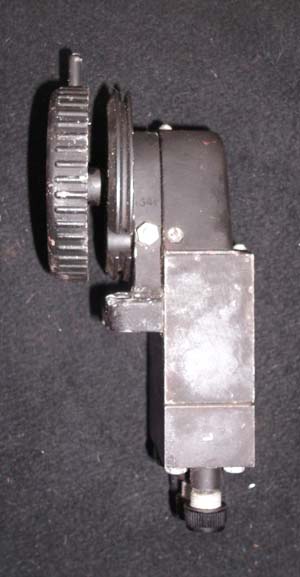
Click on the
picture to enlarge
Here we have a Auto pilot
control Switch.
This piece was fitted in the Bomb aimers position
on Lancaster's as well as other RAF heavy bombers.
|
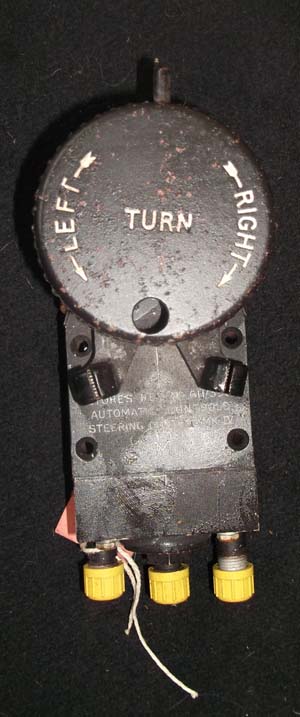
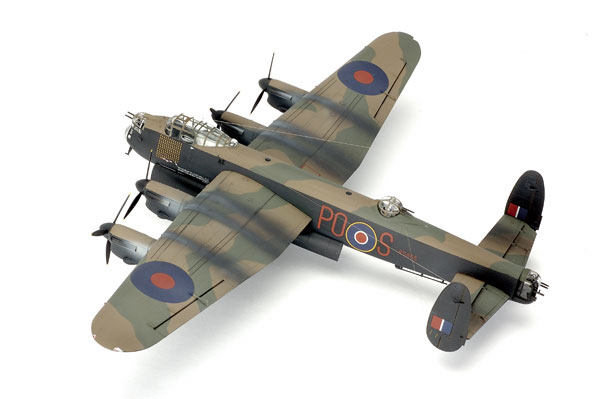
|
Lancaster Bomb
Aimer Auto Pilot (No 71 pg1 Arm)
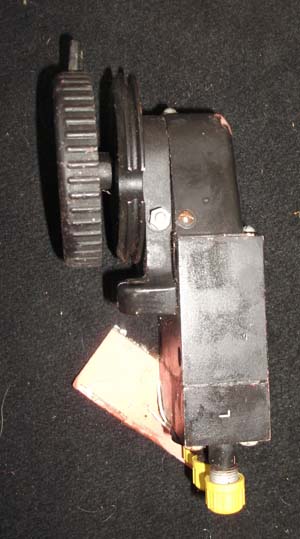
Here we have a Auto pilot
control Switch.
This piece was fitted in the Bomb aimers position
on Lancaster's as well as other RAF heavy bombers.
Using this control the bomb
aimer took over control from the pilot and steered the
aircraft on the bomb run.
This is in a Good Condition
£275


|
|
Click on pictures to enlarge
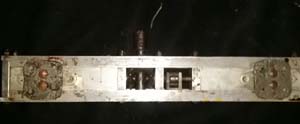

 |
Halifax Mechanical Bomb
Steady
(No 69 pg1 Arm)
Here is
adjustable steady for a 200lb bomb rack. It has
Halifax part numbers stamped on it.
These
numbers Include:
571168C2 and
571167C3
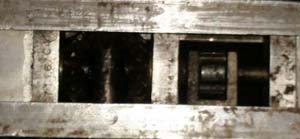
£75


|
|
Click on pictures to enlarge

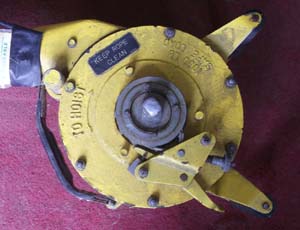

|
1000 LB G Type Bomb
Hoist
(No 68 pg1 Arm) An original bomb hoist in
nice functional condition.
Click on pictures to enlarge
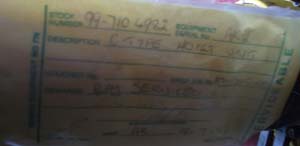
£375


This item is heavy and large. Please
contact me for a shipping
quote
|
|
Click on pictures to enlarge
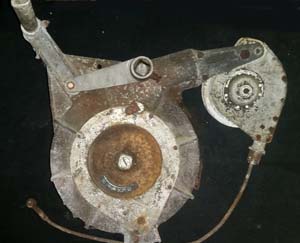
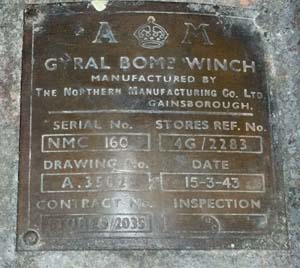 |
Lancaster Bomb
Hoist (No 67 pg1 Arm) Here
we have a bomb hoist as used in the Avro Lancaster. This is Air Ministry
Marked. Manufactured by The
Northern Manufacturing Co. Ltd in Gainsborough. Dated 1943. This was used to transfer
bombs from their rack into the Bomb Bay in the Aircraft.
4G/2283
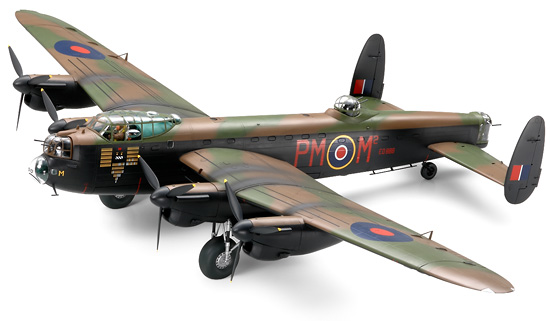
£275


This item is heavy and large. Please
contact me for a shipping
quote
|
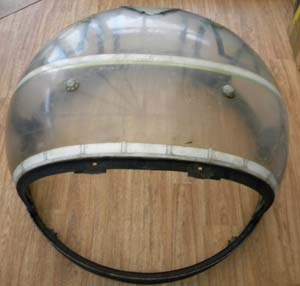
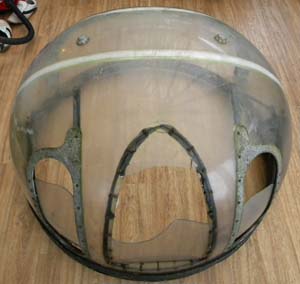
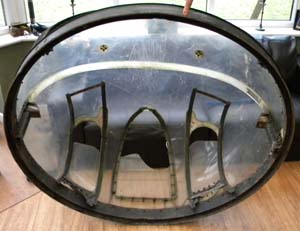
The Avro Lincoln was a
long-range, high altitude version of the successful Avro
Lancaster four-engine bomber. The first RAF Lincoln BI flew
on June 9, 1944, and operational squadrons were preparing to
join Tiger force in the war against Japan, when V-J Day was
declared. Although the Lincoln did not take part in World
War II. RAF Lincolns also operated against the terrorists in
Malaya and the Mau-Mau in Kenya. |
Avro Lincoln Turret
Cupola (No 66 pg1 Arm)
This is a turret cupola from an
Avro Lincoln. Its in reasonable condition with a few bits of
perpex missing as can be seen from the pictures.
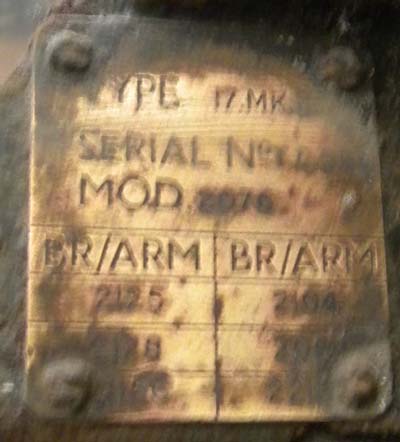


£399


This item is heavy and large. Please
contact me for a shipping
quote
|
|
Click to enlarge picture

£95


|
Hawker Ammo Feed
(No 65 pg1 Arm)
Here we have a ammo feed part. It carries the HA Hawker stamp. In good condition.
C 210712 6
Click to enlarge pictures


|
|
Click on pictures to enlarge
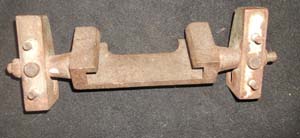
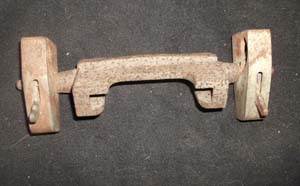 |
20 mm Cannon Mount (No 64 pg1 Arm)
Here is a mount for the 20mm Hispano cannons used in
Spitfires and other RAF Fighters.
It is complete but has some surface corrosion.
£175


|
|
Click on pictures to enlarge
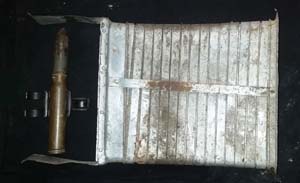
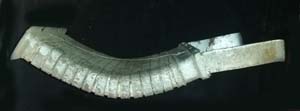
£275


|
20mm Cannon Ammo
Feeder Chute
(No 63 pg1 Arm)
Here we
have an ammunition chute for the 20mm Cannon.
I cannot
find a part number to identify which aircraft this would
have been fitted to.
This has
a clever system that allows it to bend.
The 20mm
Cannon shell is not included I have just used it to provide
a scale
Click on pictures to enlarge
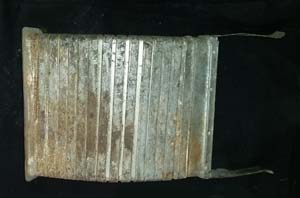
|
|
Click on pictures to enlarge
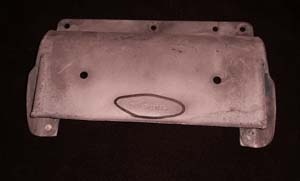
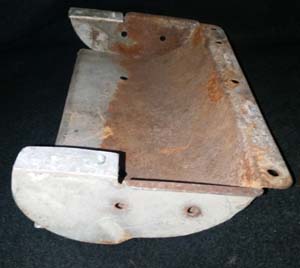
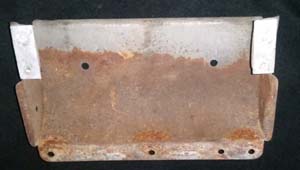
|
Original Spitfire/Seafire Ammunition
Feed Chute
(No 62 pg1 Arm)
This is
an original ammunition feed chute. The part number shown
under identifies this piece as being first used in the
Seafire Mk.III but would have been used in subsequent marks
of Spitfire and Seafire.
Click on pictures to enlarge

Seafire III
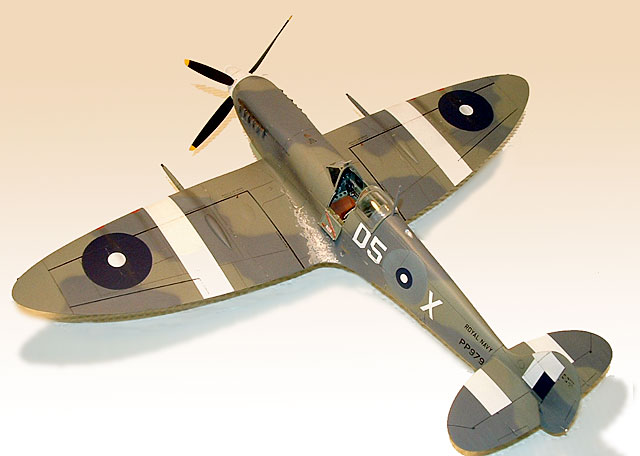
Explanation of the Supermarine Part number under
358 = Mk III
Seafire fitted with Merlin 55M and 20mm Mk.V Hispano Cannons
62= Armament
systems
Two available
£125 each


|
|
Click on pictures to enlarge
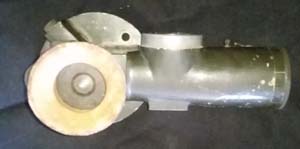
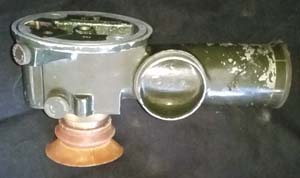
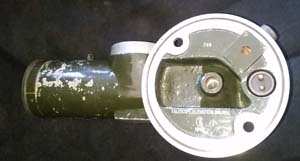
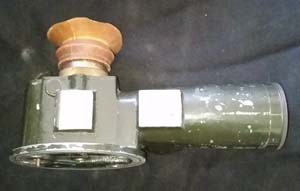
£125


|
Anti Aircraft Telescope
Elevation No.8 Mk.1
(No 61 pg1 Arm)
Here we have a Elevation Telescope No.8 Mk.I This was
used by the ATS the Anti Aircraft Role. This is dated 1940
so it would have been used to defend the Home Front from
Enemy Aircraft During the Battle of Britain
There were two of these sighting scopes
fitted to the side of a Kerrison Predictor, one for Bearing
and on for Elevation. Two operators would sight and track an
aircraft through the scopes, and the Predictor would
calculate an amount of Lead required based on the rate of
change of the scopes, along with a value for Altitude (from
a Barr and Stroud rangefinder), an estimated speed, and time
of flight of the shell . Angle values for the scopes would
be transmitted to the Gun positions, where the angles would
be read off a scale in front of the "Layer for Elevation"
and the "Layer for Bearing". This way 4 Guns could be
brought to bear on the same target aircraft without the
crews on the guns "Aiming" at the target. They just had to
concentrate on the scale. These were used with 40mm Bofors,
3.7in AA Guns, and were even used to control AA Searchlight
Batteries
Click on pictures to enlarge
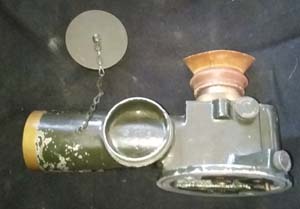
The Kerrison Predictor was one of
the first fully automated anti-aircraft fire-control
systems. The predictor could aim a gun at an aircraft based
on simple inputs like the observed speed and the angle to
the target. Such devices had been used on ships for gunnery
control for some time, and versions such as the Vickers
Predictor were available for larger anti-aircraft guns
intended to be used against high-altitude bombers, but the
Kerrison's electromechanical analog computer was the first
to be fast enough to be used in the demanding high-speed
low-altitude role, which involved very short engagement
times and high angular rates.
An ATS
Predictor Team Working with a Kerrison predictor.. The Sight
Can be Seen Clearly on the Side
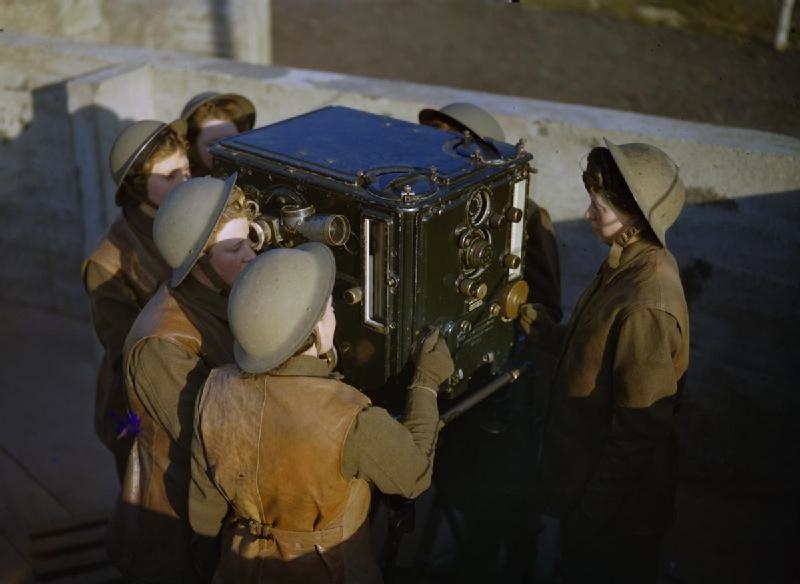
|
|
Click on
picture to enlarge
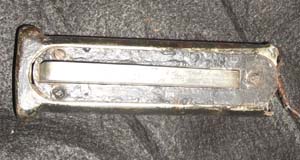
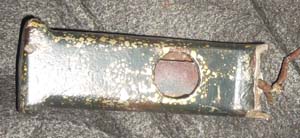
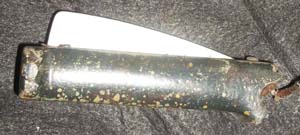 |
B17 Mid Upper
Turret Gun Trigger (No 60 pg1 Arm)
Here we have a trigger for the B17
mid Upper turret. The aircraft this came from was shot down in Holland. It was
recovered from Vries in Holland.
Part of the 527th Bomber group, it was shot down by Obfw Hans Laun in a
FW 190 of KG 1/3 while on a mission to bomb an aircrafts
components factory in Kassel.
The lever still
moves and although there is damage to the top. It is a great piece of
history.
Serial No: 42-29796
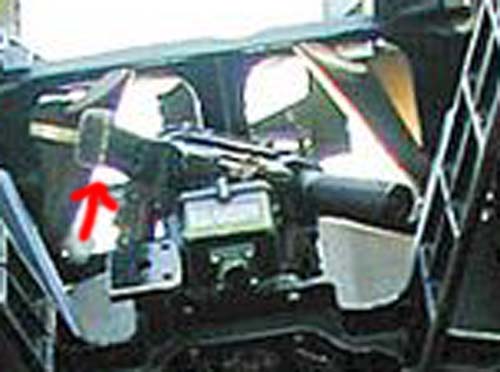
Shown in situ above in a B17
£125


|
|
Click on
picture to enlarge
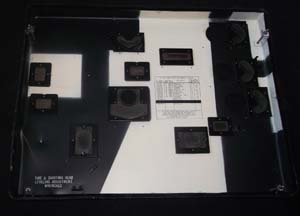
£850


|
Lancaster Bomb
Computer 2 (No 59 pg1 Arm)
Bomb computer supplied under the
lend lease agreement with the US. This is complete both
externally and internally. It is an early mechanical
computer which was located in the Bomb aimers position in
the Lancaster and other RAF heavy bombers. It was connected
to the MK XIV bombsight and increased the accuracy of
the bombs.
Click on
pictures to enlarge
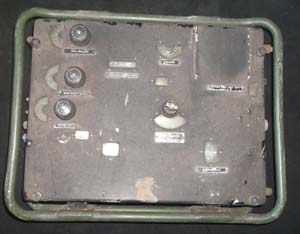 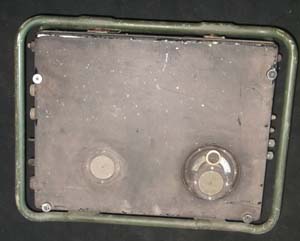 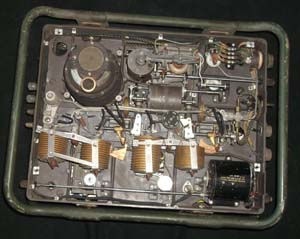 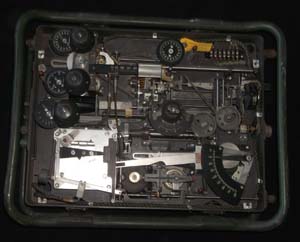
This item is heavy and large. Please
contact me for a shipping
quote
|
|
Click on pictures to enlarge
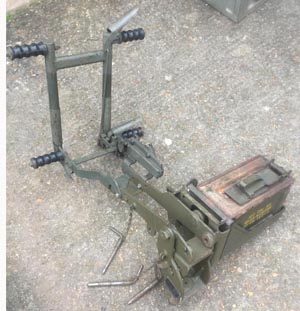
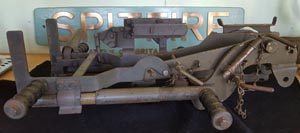
Below an M63
fitted with a 50 call MG
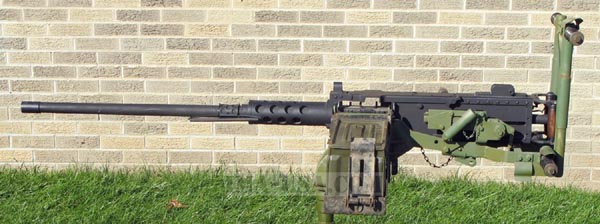
|
50 Calibre Anti
Aircraft Mount (No 58 pg1 Arm)
Here is an original M63 50
calibre anti aircraft mount its in excellent condition and
works as it should. Complete with a 100 round ammo box.
Click on pictures to enlarge
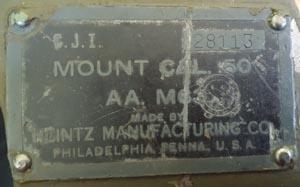
Please note
this sale is for the 50 call mount only does not include the
MG.
£1200


This item is heavy and large. Please
contact me for a shipping
quote
|
|
Click on pictures to enlarge
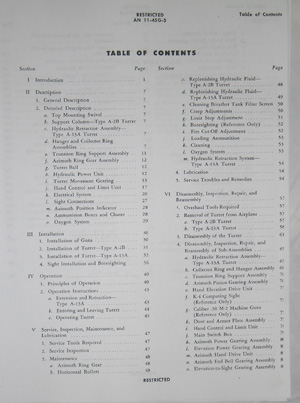
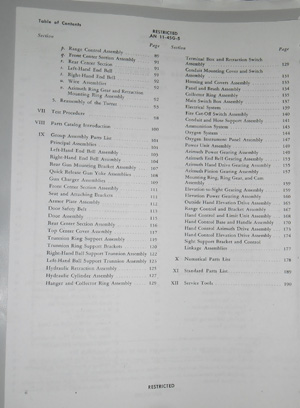
|
B 17 Flying Fortress Ball Turret
Manual (No 57 pg1 Arm)
Here is a copy of the original
comprehensive manual for the B17 Ball turret.
Hard copies (not CD ) will be
supplied.
Click on pictures to enlarge
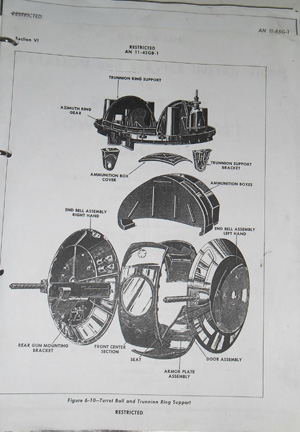
£95


|
|
Click on pictures to enlarge
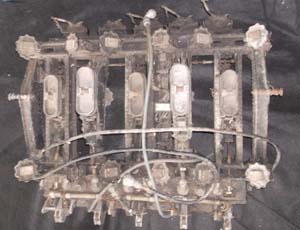
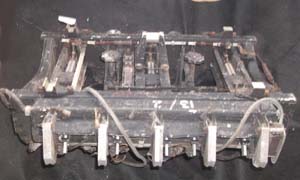
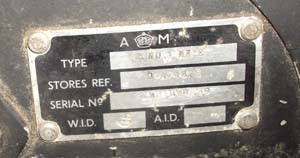 |
No.1 MK 2 Bomb Rack
(No 56 pg1 Arm)
Here we have a No.1 Mk.2 bomb
rack. It is a small bomb rack that
carried five bombs.
I am unsure as to the types of aircraft this is fitted to.
Ref: 11A/4376
Click on pictures to enlarge
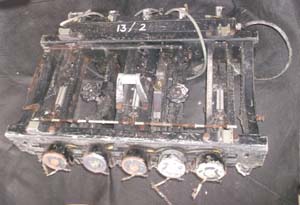
£495


This item is
very heavy please
Contact us for a Shipping Quote
|
|
Click on pictures to enlarge
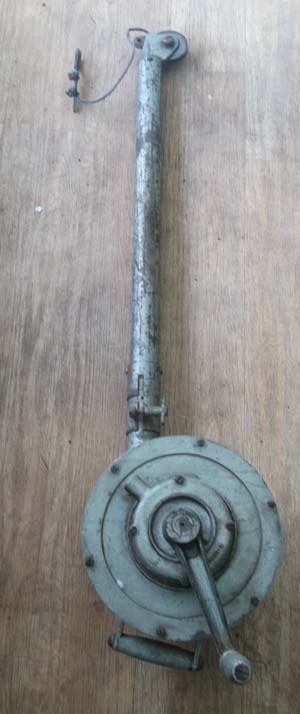
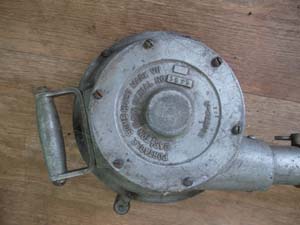 |
US Navy Bomb Hoist
(No 55 pg1 Arm) A US made bomb
hoist. This bomb hoist was found in the Britain and may also
have been used by the RAF or by the US during their time in
Britain.
In nice complete condition a real
rarity.
Dated 1941.
Click on pictures to enlarge
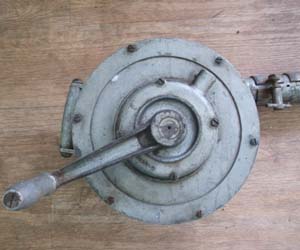
Loading
Bomb on a SBD on USS Enterprise August 1944
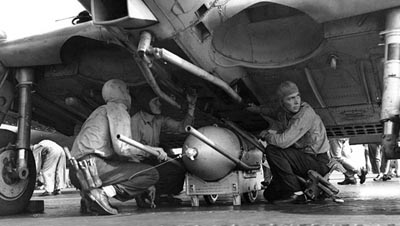
Note
bomb hoist below RHS ground crew.
£375


International customers contact
us for shipping costs
|
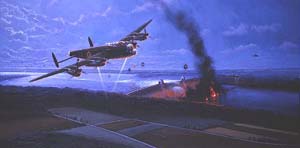 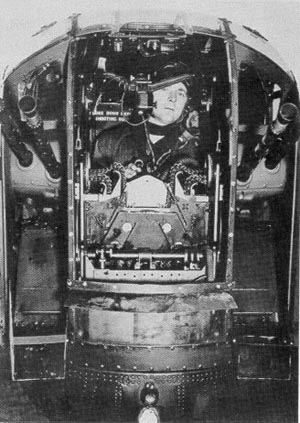
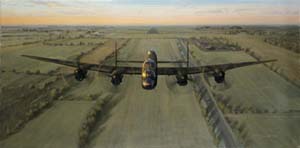
Click on pictures
below to enlarge
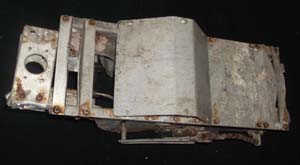
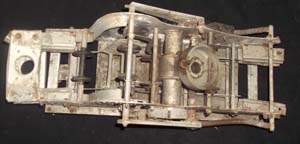
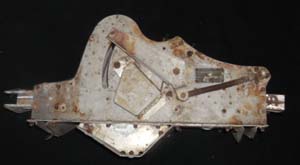 |
Lancaster Rear Turret Ammo Feeder (No 54 pg1 Arm)
This is a
unique piece, used in Lancaster's to feed ammo through to the
rear turret. Obviously there wasn't allot of room in the rear
turret for ammunition storage so it was fed through, using
assistors like this. They were electrically powered. You can see
the mount for the motor in the top picture left.
In nice original
condition and of coarse a very rare piece.
Plated with the A/M
crown so pre 1944 manufacture.
Click
here to see information on this part
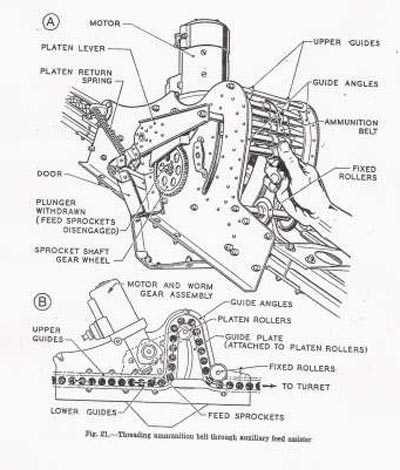
Click on pictures
below to enlarge
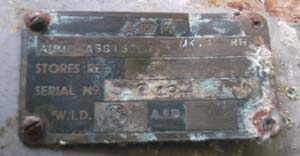
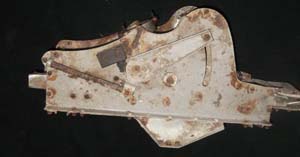
Out of stock more wanted please
contact me |
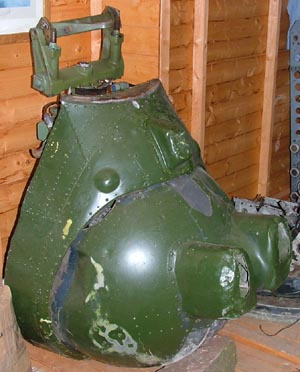
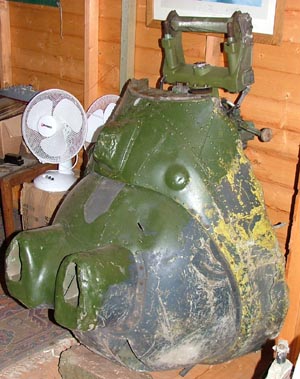
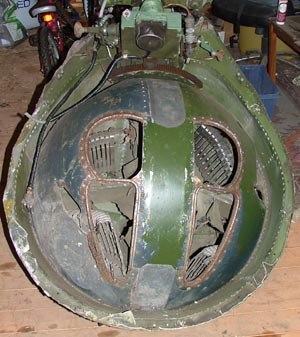

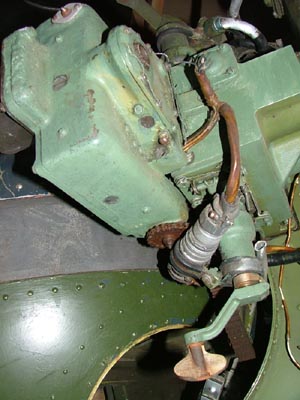
|
Lockheed Neptune Rear Turret (No 53 pg1 Arm)
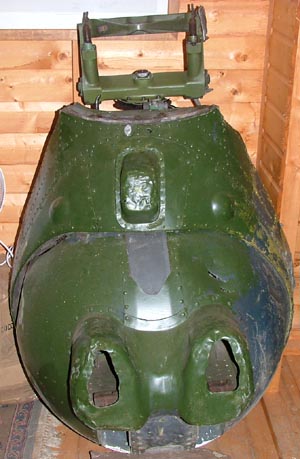
Here is a rear
Turret for a Lockheed Neptune. Its in very good condition
and rotates freely when the manual handles are turned. It
has a mount for a Giro Gun sight. Its a very large piece
around 5Ft tall and will require crating before shipping. We
may be able to deliver within the UK if required or you can
of coarse collect or arrange you own shipping.
The first of
two prototype XP2V-1 "Neptunes", as the type was named, took
to the air from Burbank, California, on 17 May 1945, and was
followed by the second prototype soon after. Tests indicated
that the new aircraft was highly manoeuvrable and had
excellent performance. The XP2V-1 was a bull nosed aircraft,
powered by twin Wright Cyclone R-3359-8 radial piston
engines rated at 1,715 kW (2,300 HP) each for takeoff,
driving four-bladed propellers. It was a mid-wing monoplane
with a single tall tailfin; turning the rudder took a good
deal of muscle. It had tricycle landing gear, with a skid
bumper under the tail to protect the aircraft on steep
takeoffs.
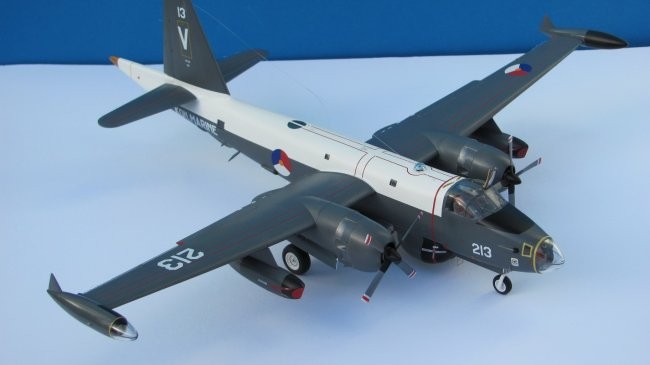
Defensive armament consisted of six
12.7 millimetre (0.50 calibre) Browning machine guns mounted
in pairs in the nose, a dorsal turret, and tail turret. The
aircraft could carry up to 3.6 tonnes (8,000 pounds) of
offensive weapons in a huge bomb bay and on underwing racks.
Typical configurations included:
- Four 900 kilogram (2,000 pound)
bombs.
- Eight 450 kilogram (1,000 pound)
bombs.
- Sixteen 225 kilogram (500 pound)
bombs.
- Twelve 150 kilogram (325 pound)
depth charges.
- Two 980 kilogram (2,165 pound)
aerial torpedoes.
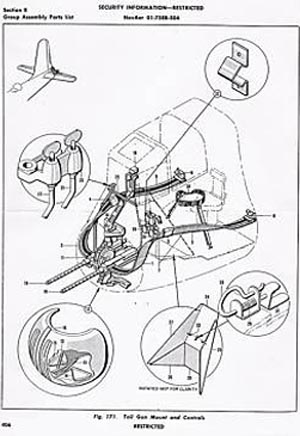
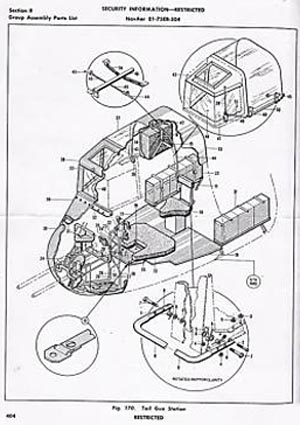
This is a unique opportunity to
purchase a substantially complete turret. One of the last
aircraft to be fitted with Piston engines and wartime type
defensive armament. Very much in the style of the B17 rear
turret.
£ 2800


This item is big and heavy please
email for a shipping quote
|
|
Click on pictures to enlarge
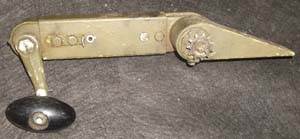
 |
Martin 250ce Mid Upper Gun Turret
Emergency Hand Crank
(No 52 pg1 Arm)
Here is a Martin 250ce mid upper gun turret emergency
hand crank for use if the turrets hydraulics failed. In good
original condition fully functioning.

£475


|
|
Click on pictures to enlarge
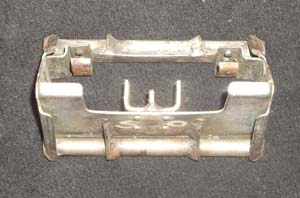
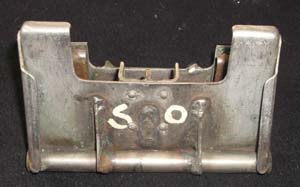
|
Hawker Ammo Feed
Part 3 (No 50 pg1 Arm)
This ammo feed part looks like a connection for the chutes.
They were used on the Hawker Hunter and carry the HA Hawker
stamp. 120mm wide. In good condition.
Click on pictures to enlarge
on the left.
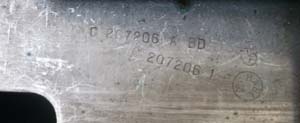
£75


|
|
Click on pictures to enlarge
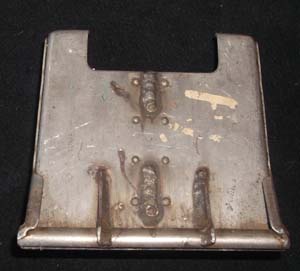
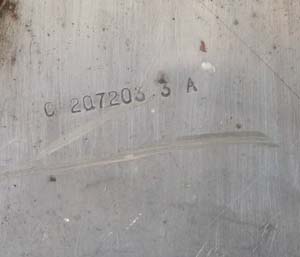
|
Hawker Ammo Feed
Part
2 (No 49 pg1 Arm)
Here we have a ammo feed part. These were used on
the Hawker Hunter.
In good condition.
It
carries the HA Hawker stamp.
C 207203 3 A
Click on pictures to enlarge
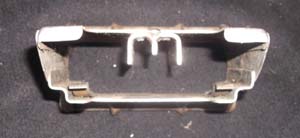
£85


|
|
Click on pictures to enlarge
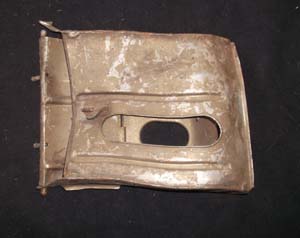
£75


|
20mm Cannon Feed
Chute
(No 48 pg1 Arm)
Here we have a 20mm cannon feed chute.
There is a dent in the chute.
C 207027/5 ISSA
6C 207027.1
Click on pictures to enlarge
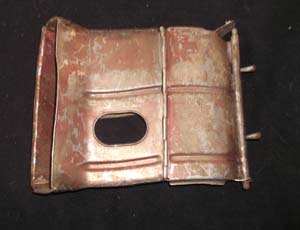
|
|
Click on pictures to enlarge
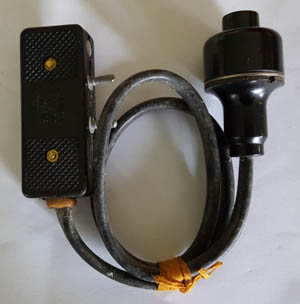 |
Complete Bomb Release Button
(No 47 pg1 Arm)
Here we
have a complete bomb release switch with the plug. Old new
stock in very good condition.
The
Lancaster Bomb Aimer would use this to release the bombs
over the target. Both carry the air ministry crown.
This
carries two reference numbers:
5D/596
on the plug 5D/534 on
the button
Several available
£125 each


|
|
Click on pictures to enlarge


£75 each


|
Dambusters Bombsight (No 46 pg1 Arm)
For sale we have a reproduction of the wooden Bombsight used
by 617 Squadron designed specifically for the Dambuster
raid.
There are no surviving examples but extensive research was
put in the create this amazing peace and we believe its as
close as anyone could get to the original. Comes complete
with some information and a stand for display.
On the night of
16-17 May 1943, Wing Commander Guy Gibson led 617 Squadron
of the Royal Air Force on an audacious bombing raid to
destroy three dams in the Ruhr valley, the industrial
heartland of Germany.
The mission was
codenamed Operation 'Chastise'.
But 617 Squadron had
a secret weapon: the 'bouncing bomb, there were two issues
with the bouncing bomb apart from the hundreds of dangers
faced by the aircrews firstly it
had to be dropped from a specific height this was achieved
by mounting two searchlights on the aircraft at an angle so
they converged at exactly 60ft. The second was that the bomb
had to be dropped at a specific distance to the dams two far
and it would run out of steam before it reached the target
two close and it would simply bounce right over the wall of
the dam.
This
was solved with an ingenious but simple low tech wooden
triangle. The angles of the arms were set so that when the
two towers of the dams lined up with the pointers on the
arms the aircraft would be at the perfect distance and the
bomb was dropped.
Click on pictures to enlarge
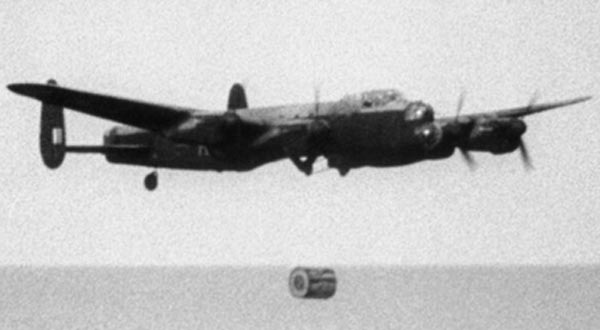 
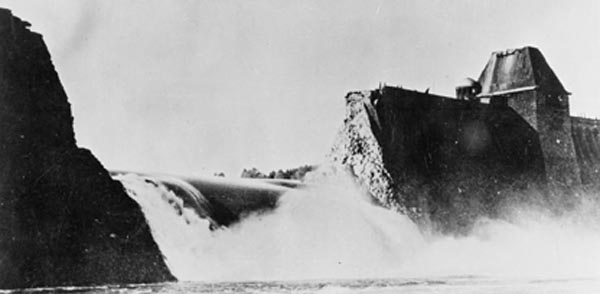
Of coarse this all
sounds simple but at night with heavy flak and a fast moving
aircraft it wasn't quite that simple.
From
9.28pm on 16 May, 133 aircrew in 19 Lancasters took off in
three waves to bomb the dams. Gibson was flying in the first
wave and his aircraft was first to attack the Möhne
(pictured here) at 12.28am, but five aircraft had to drop
their bombs before it was breached.
The remaining aircraft still to drop their bombs then
attacked the Eder, which finally collapsed at 1.52am.
Meanwhile, aircraft from the two other waves bombed the
Sorpe but it remained intact.
|
|
Click on pictures to enlarge
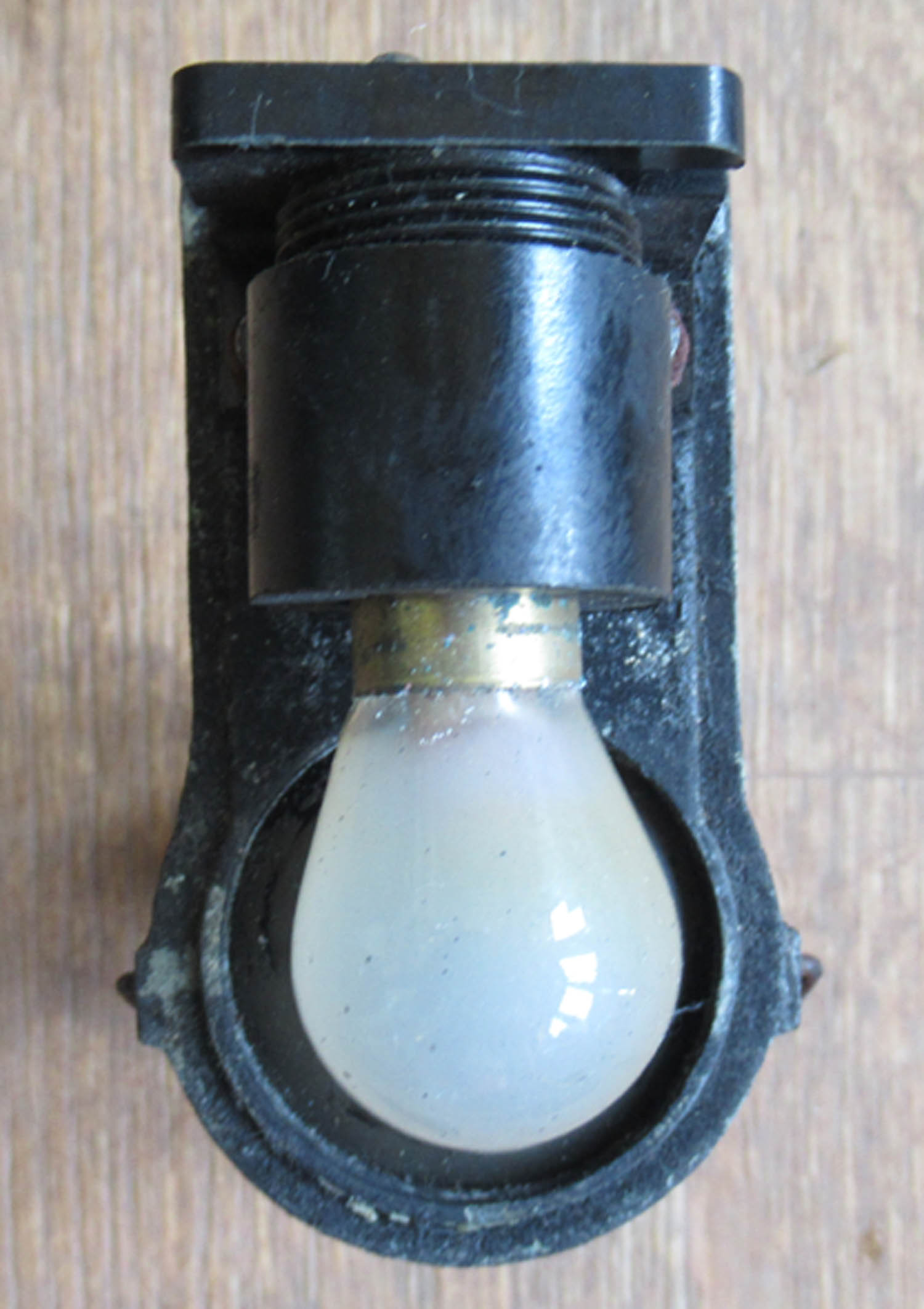
 |
MK XIV Bombsight Sighting Head (No 45 pg1
Arm)
Here we have replacement sighting heads
for the MK XIV Bombsight the mainstay of RAF Bomber command
in WWII.
Quite often I have seen the sighting
head covers cracked or missing , these have some paint loss
and minor surface corrosion but easy to restore.
Click on pictures to enlarge
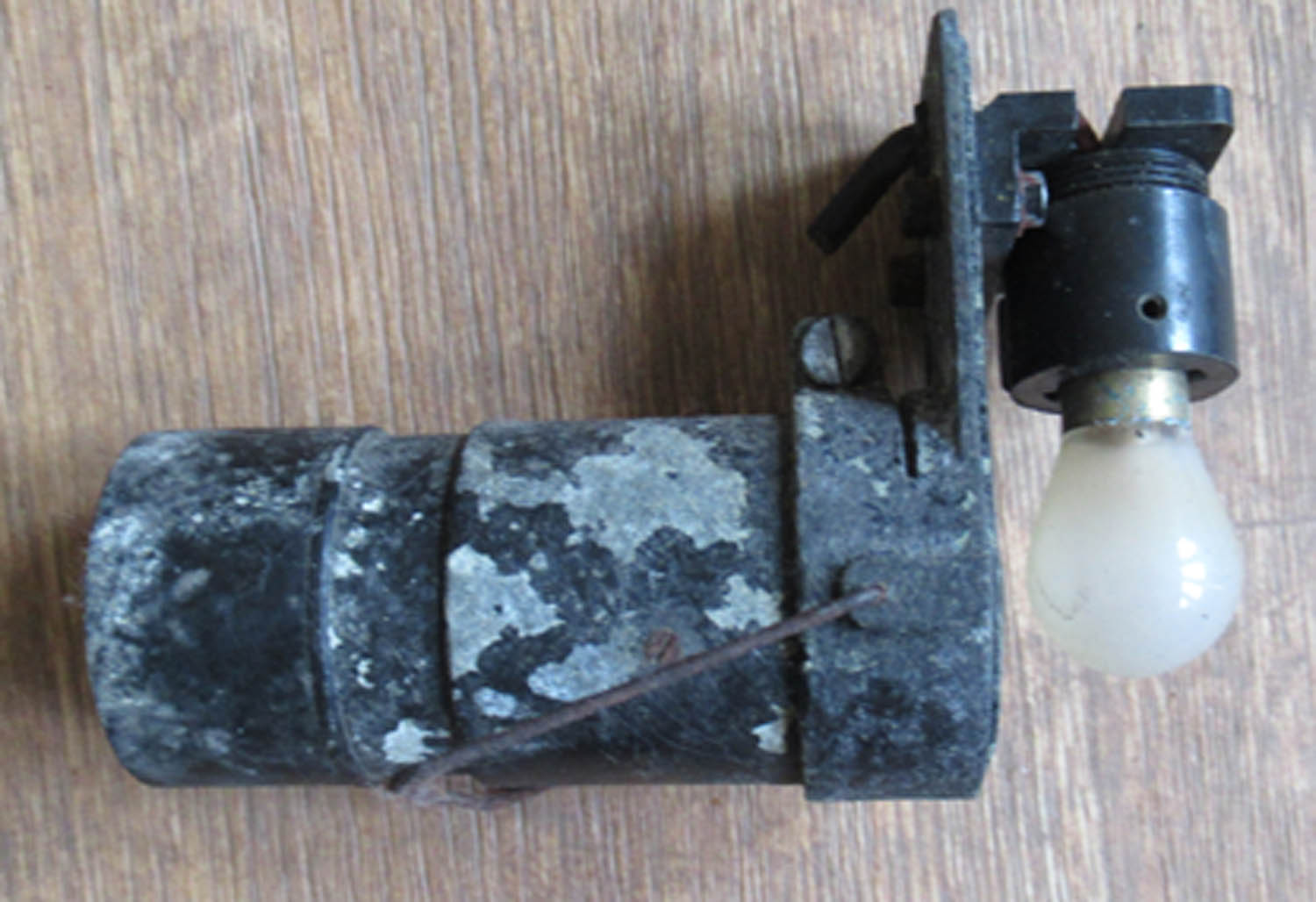
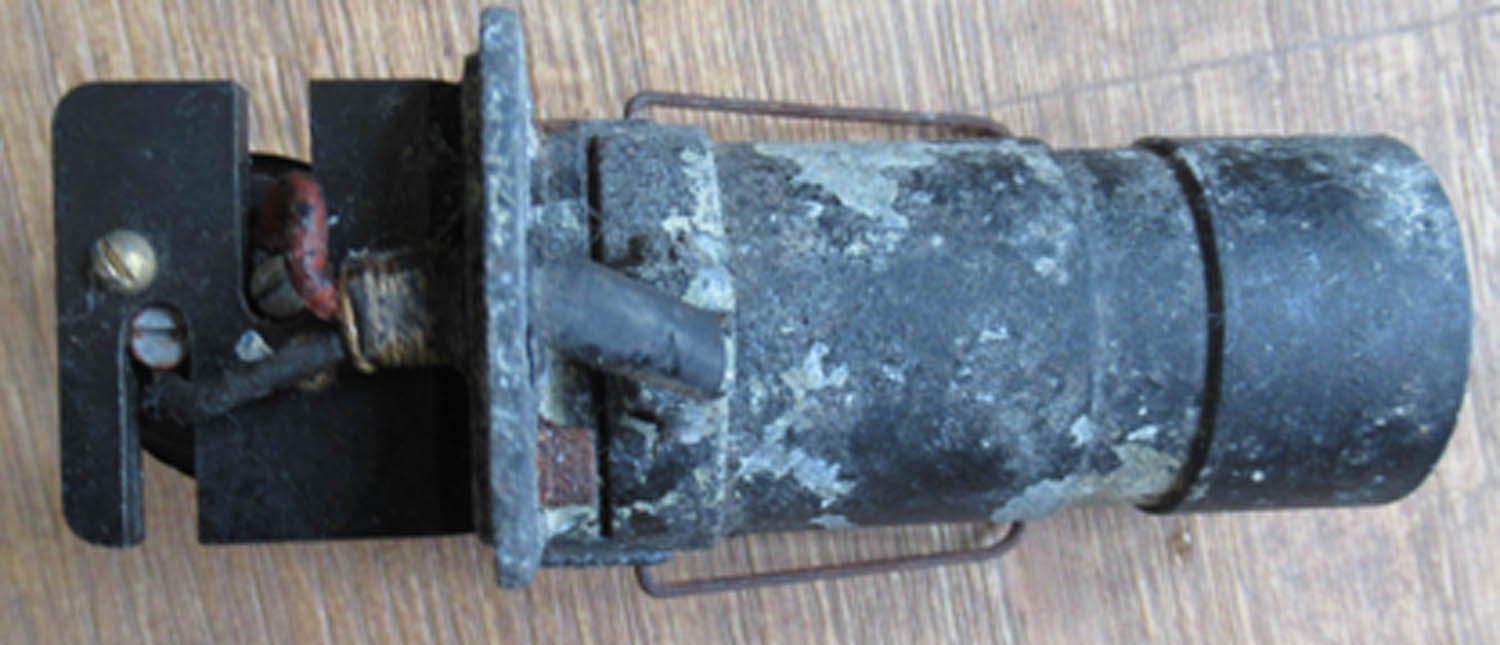

T en
available
£95 each


|
|
Click on pictures to enlarge
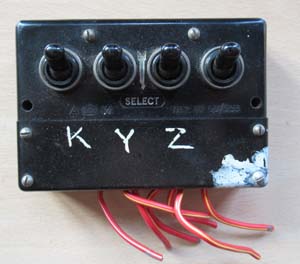
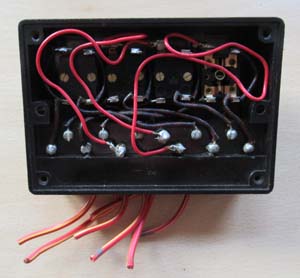
|
Wellington Bomb
Pre Selector (No 44 pg1 Arm)
Here we
have the
early bomb
pre selector as used in Welligtons and other early RAF
bomber aircraft.
All the switches operate as they should do
but it is missing the rear of the case.
Air Ministry Reference 5D/553
£125


|
|
Click on pictures to enlarge
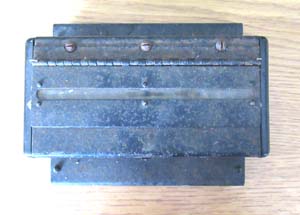
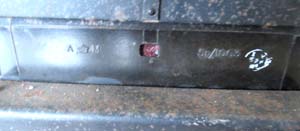
£225


|
Lancaster Bomb
Pre Selector 1 (No 43 pg1 Arm)
Here we
have the
standard bomb pre selector unit.
This was fitted to the Lancaster
Bomb aimers panel and practically every other RAF Wartime
bomber.
This one is
in good age related condition with no cracks.
Air Ministry Reference 5D/1063
Click on pictures to enlarge
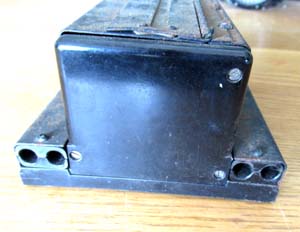 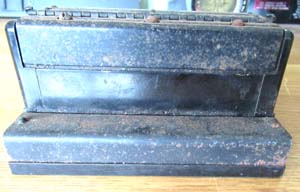 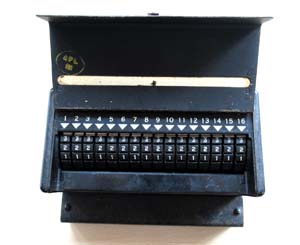
|
|
Click on pictures to enlarge
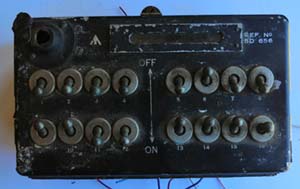
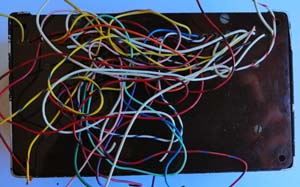
£155


|
Lancaster Bomb
Selector 2 (No 42 pg1 Arm)
This is a bomb selector
switch panel mounted on the bomb aimers panel. It is in
good condition.
The switches were set to
allow the bombs to fall (No 47 pg1 Arm)pon release.
Also used in other RAF WWII Bombers.
Air Ministry
Ref 5D/656
Seen in situ
under in a Lancaster this is not the unit shown left but
would be situated in the same position, click on the picture to enlarge it.
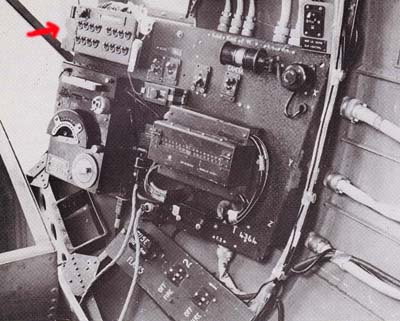
All the switches move
but and lock. The knob that turns on the side is
missing, it still has wires attached but whether these are
original I cannot say.
|
Click on
pictures to enlarge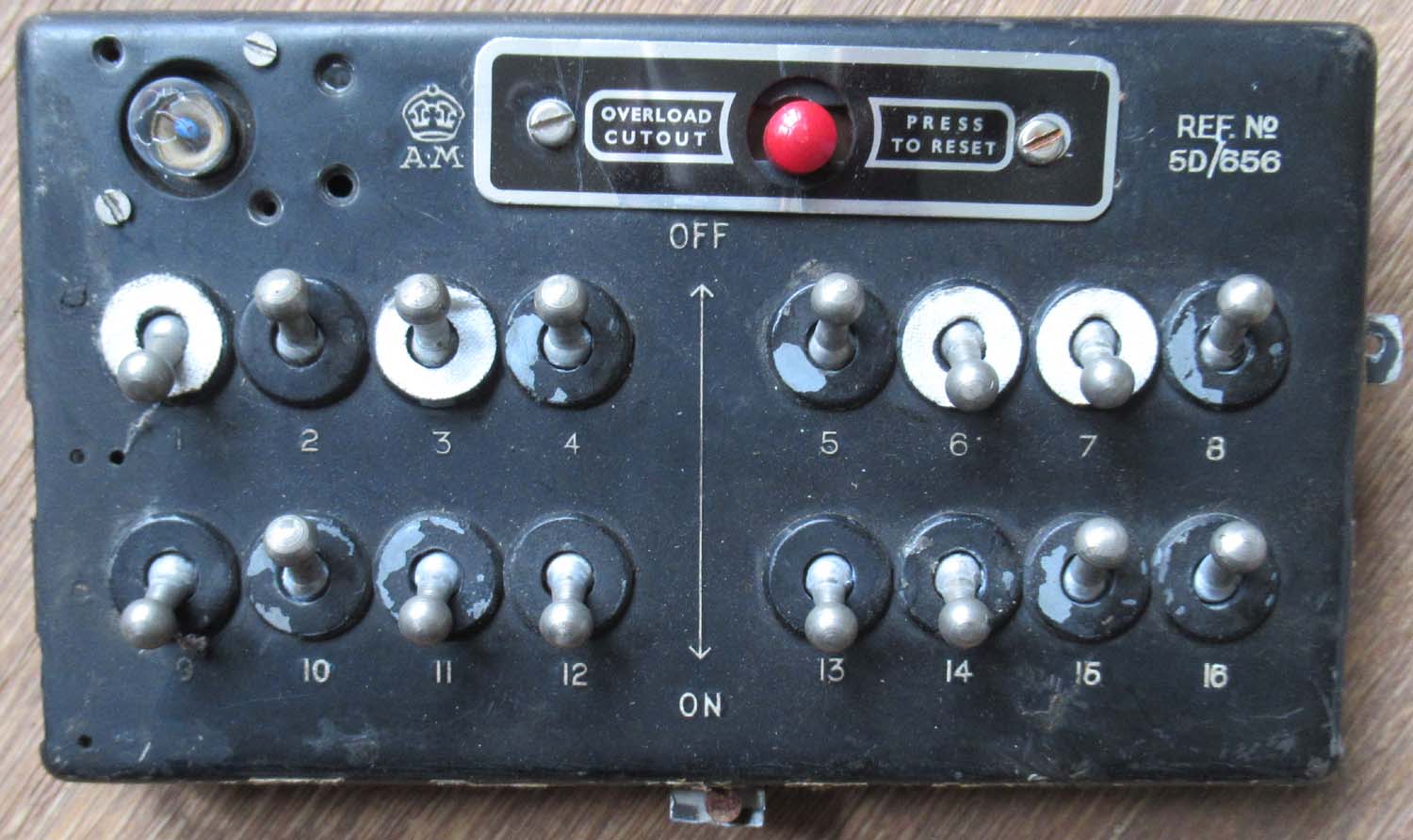
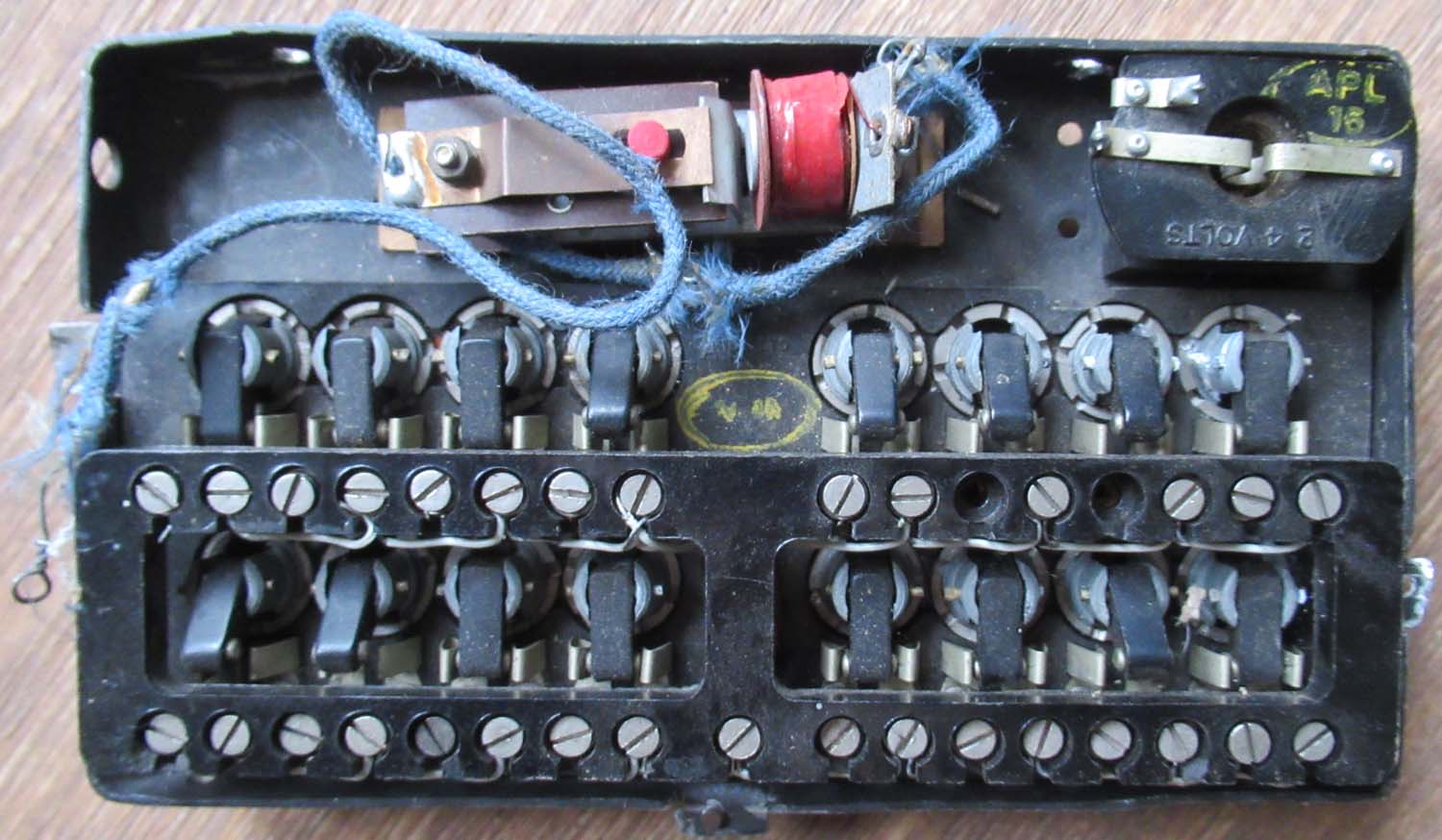
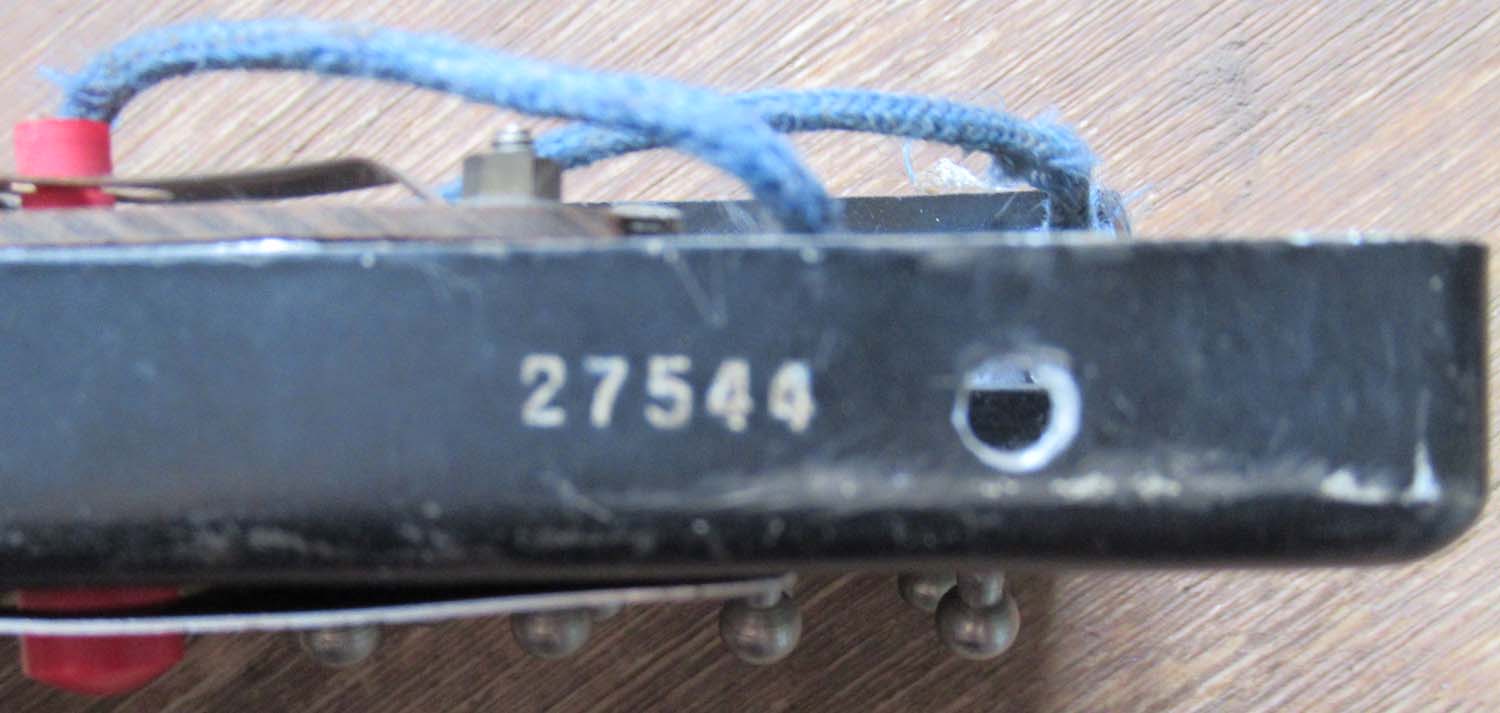
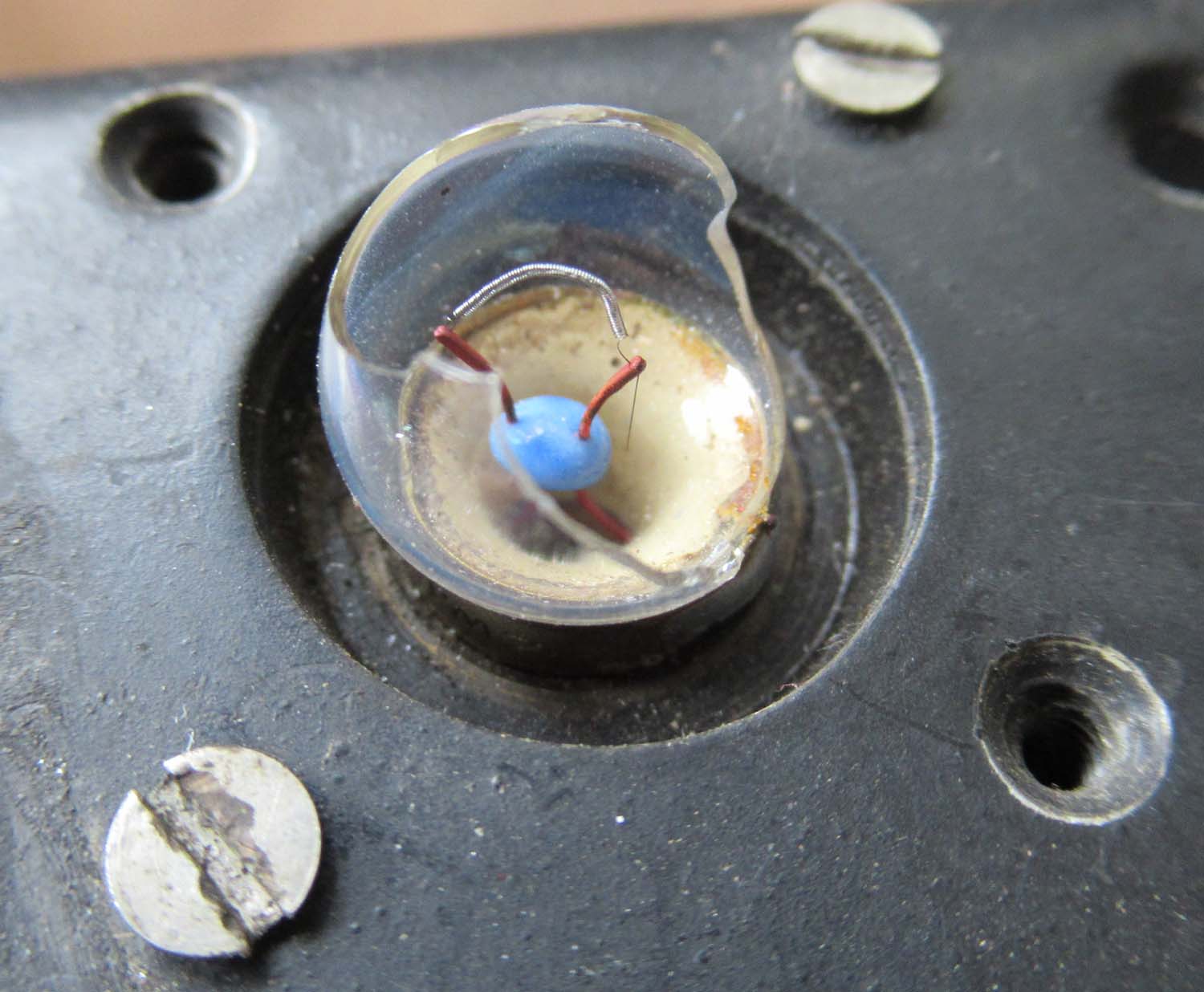
|
Lancaster Bomb selector
3 (No 41 pg1 Arm)
This is a bomb selector
switch panel mounted on the bomb aimers panel.
The switches were set to
allow the bombs to fall in a manner which would not
de stabilise the aircraft upon release.
Also used in other RAF WWII Bombers.
Air Ministry
Ref 5D/656
Seen in situ
under in a Lancaster this is not the unit shown left but
would be situated in the same position click on the picture to enlarge it.

This one is missing its case and has also been modified
to operate a model railway, many of these things were
available cheaply at surplus sales after the war and this is
not the first time I have seen one repurposed, the plate
with the red button could be removed and it would work well
as a display item in a panel.
£75


|
|
Click on picture to enlarge
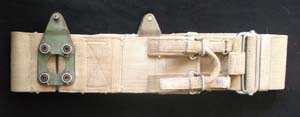 |
Brown Gunners Safety Belt
- Short Piece (No 40 pg1 Arm)
These are the safety
belts used by gunners in their turrets. Commonly used in
Lancasters. In good functional condition.
These belts are rare.
£95


|
|
Click on picture to enlarge
 |
Brown Gunners Safety Belt
- Long Piece (No 39 pg1 Arm)
These are the safety
belts used by gunners in their turrets. Commonly used in
Lancasters. In good functional condition.
These belts are rare.
£145


|
|
Click on picture to enlarge

|
Green Gunners Safety Belt
(No 38 pg1 Arm)
These are the safety
belts used by gunners in their turrets. Commonly used in
Lancasters. In good functional condition.
These belts are rare.
Two available
£125 each


|
|
Click on pictures to enlarge
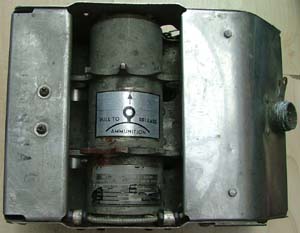
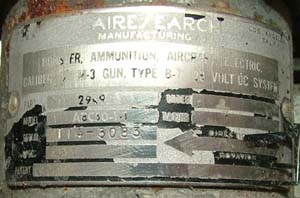
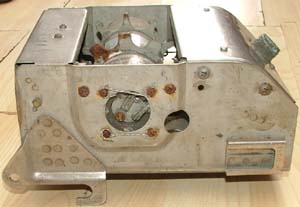
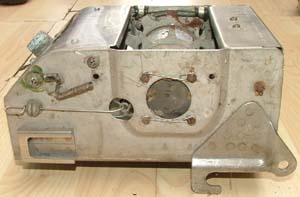 |
Ammunition Booster 50
Cal (No 37 pg1 Arm)
This is an 28 volt ammo booster for
50call M3 Browning Type B 7 aircraft machine gun. The 50
call browning was used in both US and RAF bombers and
fighters.
Appears in good original condition. I believe they were used to drive the
ammo belts through the chutes to the guns
This is a picture of an M2 but it is similar to the M3.
Part no: 29492-2
Click on pictures to enlarge
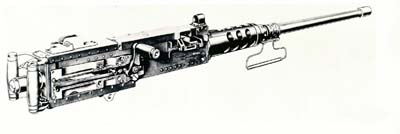
£325


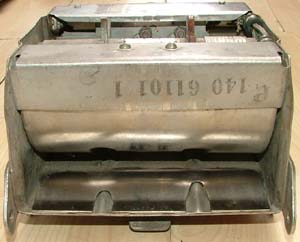
|
|
Click on pictures to enlarge
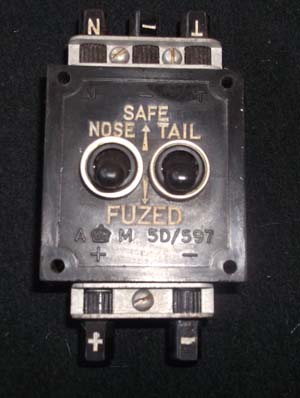 |
Lancaster Bomb Fusing
Control 5D/597 (No 36 pg1 Arm)
Here we have a wartime bomb fusing
control.
This was used by a variety of RAF wartime
bombers.
Ref: 5D/597
Five available
£75 each


|
|
Click on pictures to enlarge
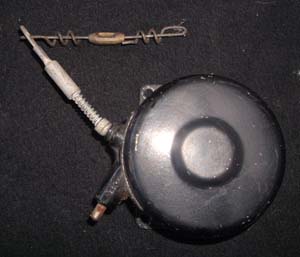
Lancaster
bomb Bay
|
Lancaster Bomb Fuzing
Unit
5D/1476 (No 35 pg1 Arm)
The arming wires on
the weapons fuse or pistol would have been attached to it.
If the weapon was dropped safe, this unit would not be
electrically energised and the wire will pull straight out.
If dropped live then this unit would be energised and the
arming wires would then be pulled free from the falling
weapon. The length of the wire depended upon the depth of
the aircraft bomb bay, ensuring that the weapons cleared the
aircraft before arming was completed.
Air Ministry Ref: 5D/1476
Two available
£75 each


|
|
Click on pictures to enlarge
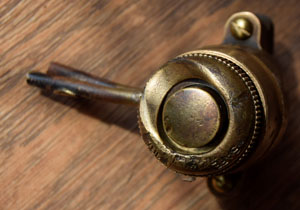
£495


|
Original Brass Gun Button (No
34 pg1 Arm)
Here we have an original brass gun button. Used in many RAF
Fighters including early Spitfires and Hurricanes. This
button is extremely unusual and its the first one I have
ever seen. It contains the standard brass gun button but
has a brass mounting bracket. The gun button is marked
AHO
5239 and the bracket has two numbers
AHO 4471 and
AHO 5438.
Its in good original condition the safety ring moves but the
button will not depress. I was told it was fitted to an Avro
Anson but I haven't been able to corroborate this and it
seems unlikely. If you can ID this piece
please contact me .
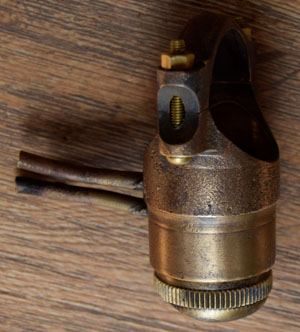
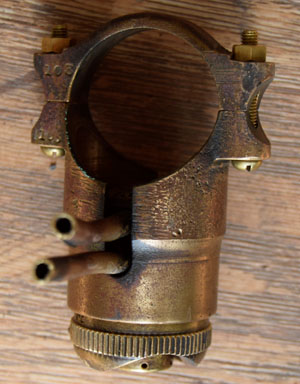
|
|
Click on pictures to enlarge
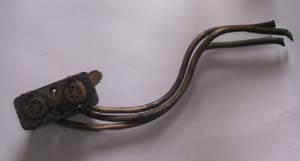
 |
Original Spitfire Rocker Gun Button
(No 33 pg1 Arm)
Here we have an original Spitfire twin rocker gun button,
introduced on cannon armed Spitfires enabling the pilot to
fire either cannons or MG's or both.
It is not complete
and only includes the internal parts: please see the pictures.
Out of stock more wanted please
contact me
|
|
Click on pictures to enlarge
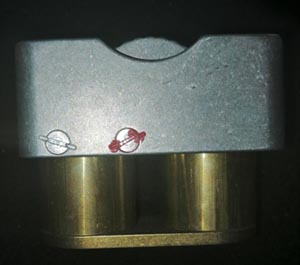
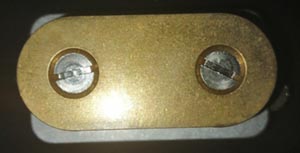
£275


|
Reproduction Spitfire Rocker Gun Button
(No 32 pg1 Arm)
These are all
metal reproduction Gun buttons fitted to all the cannon armed
Spitfire Mk's from Mk V onwards. It has taken a long time to
source these as its an extremely complicated piece to make. The
originals are just impossible to source and I have never seen
one for sale other than fitted to an original grip. This button
was fitted to all cannon armed Spitfires and it allowed the
pilot to use the cannons and MG's separately or all at once.
This allowed them to make the best use of the very limited
ammunition the Spitfire could carry.
The safety
lever moves as it should and the button will depress up and down
although it does not depress in the middle.
Click on pictures to enlarge
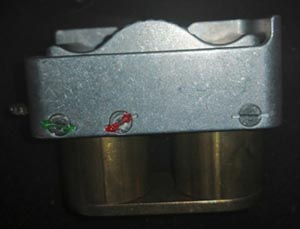
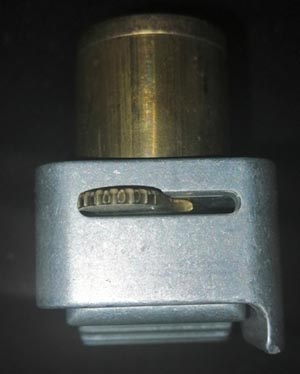
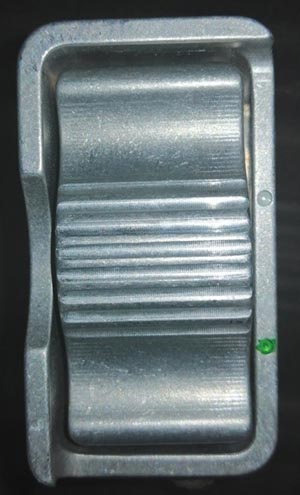
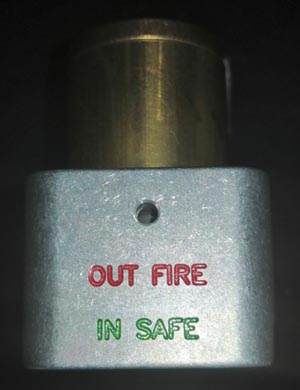
They will fit our
reproduction or original AH 2040 grips which were designed for the
single firing button button. This being the case they will
not fit an original cannon Spitfire grip without
modification as they are a few mm wider than the original
buttons and the spacers are a bigger diameter.
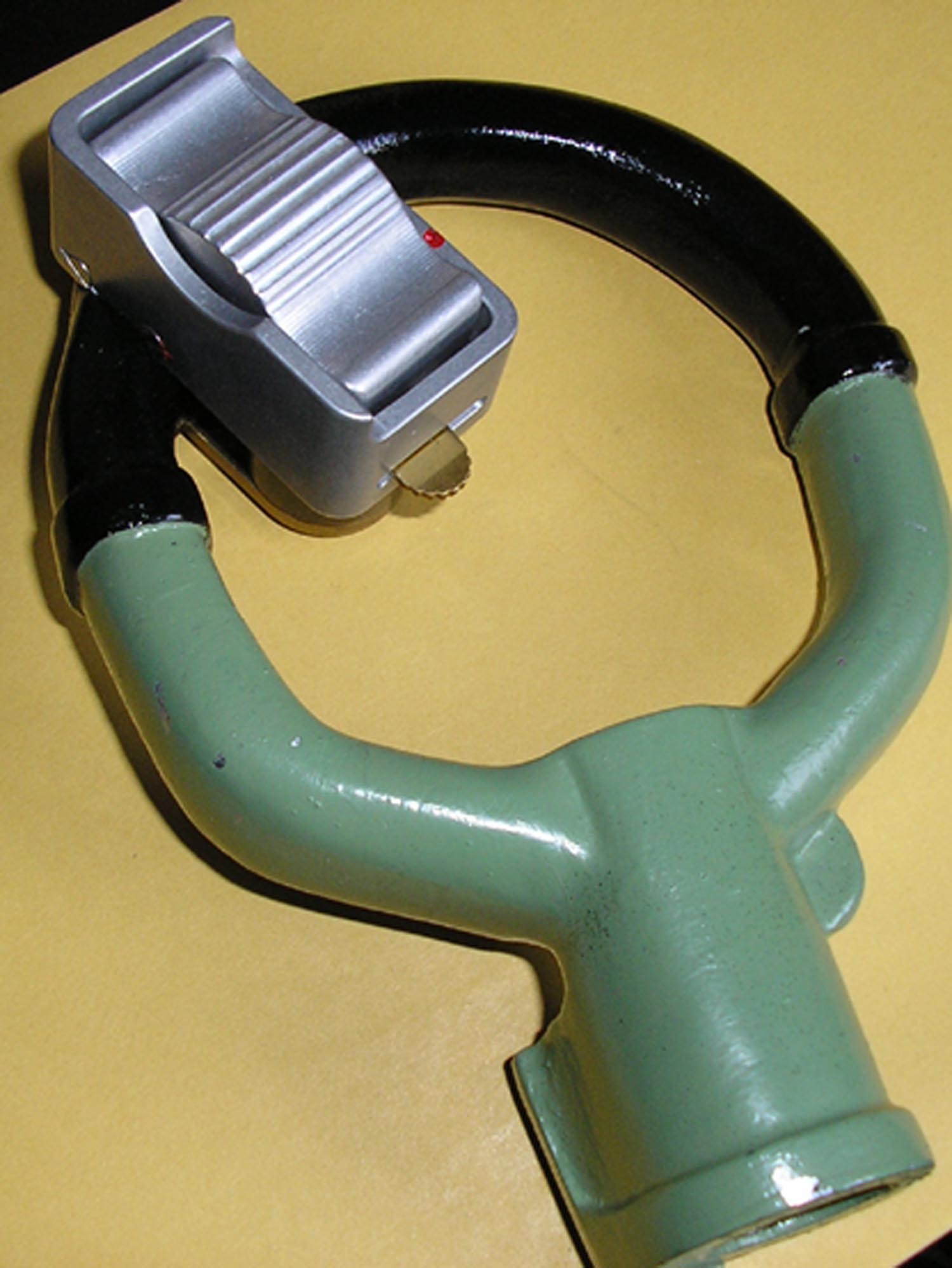
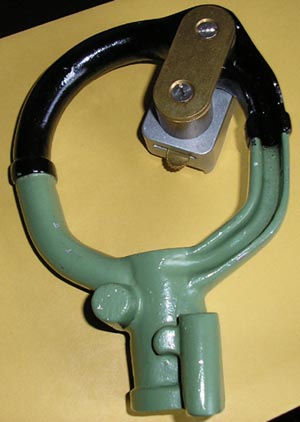 |
|
Click on
pictures to enlarge
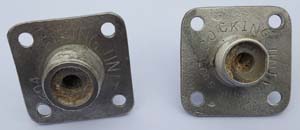
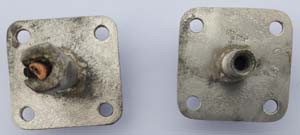
£275


|
MK I Spitfire Madsen Cannon Dunlop Fire and Cocking Units
(No 31 pg1 Arm)
This is a pair
of really rare Dunlop made cocking and firing units, these were
part of the system for cocking and firing the guns.
The
firing unit has the Dunlop number AHO 5504 and the Firing unit
AH 5503.
The piece they
were removed from was a Spitfire wing section carrying the
number 345 = Spitfire Mk I fitted
with a Merlin II and design with Madsen
13.2mm cannons 1940, this was a project aircraft only so not sure
if it ever made it into service.
08
= Lower main plane (wing) part 703.
The inspectors stamp is also unusual for a Spitfire being
GBW 142, I can only assume this was
a satellite factory making wing parts this was common practice
during the War.
Click on
pictures to enlarge
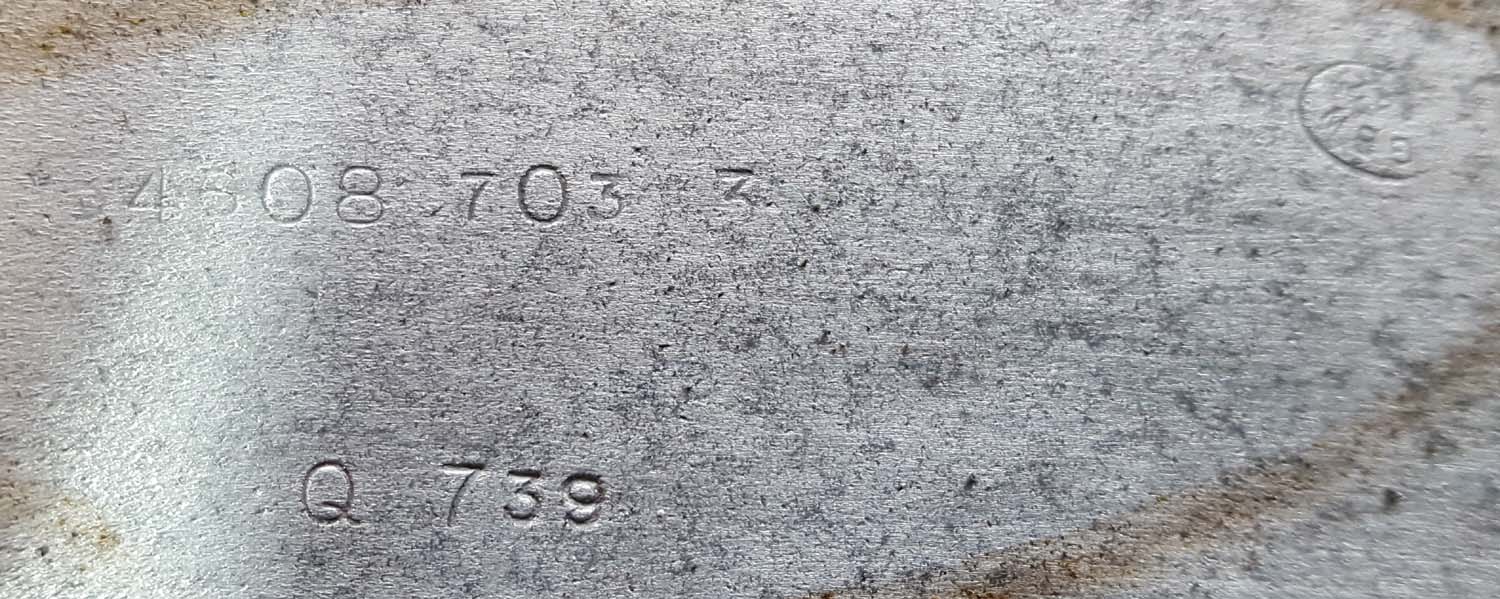 |
|
Click on
pictures to enlarge
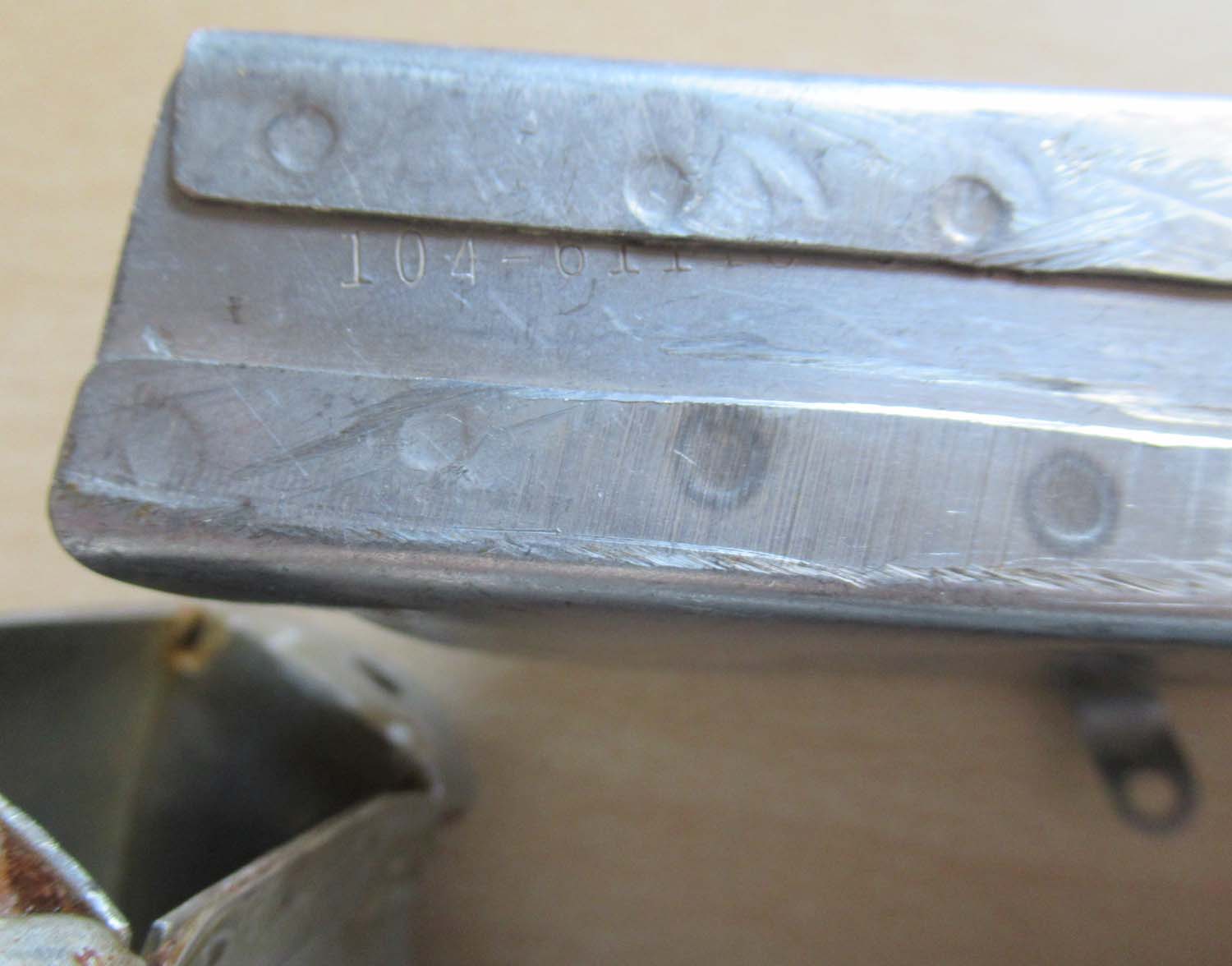
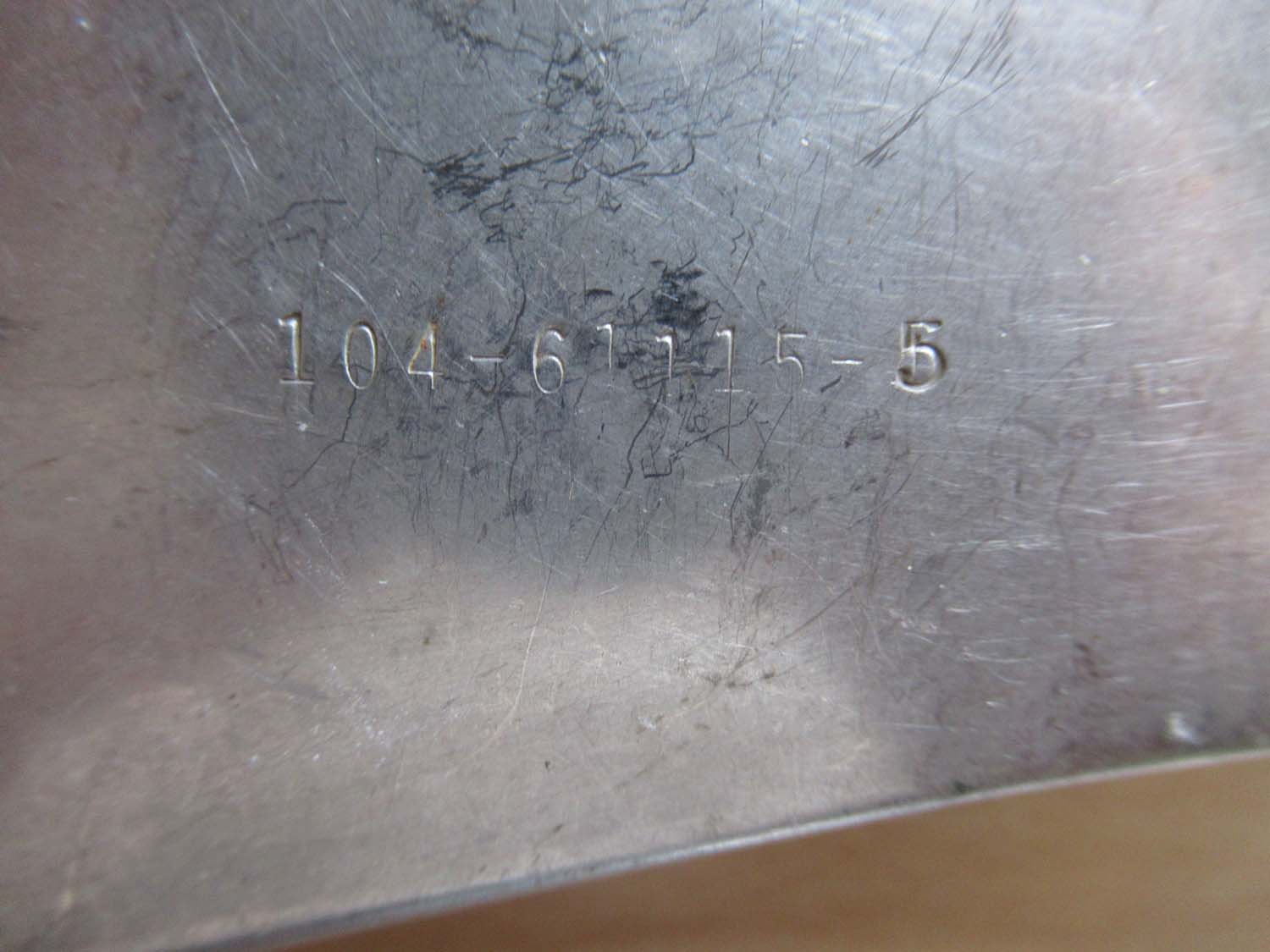
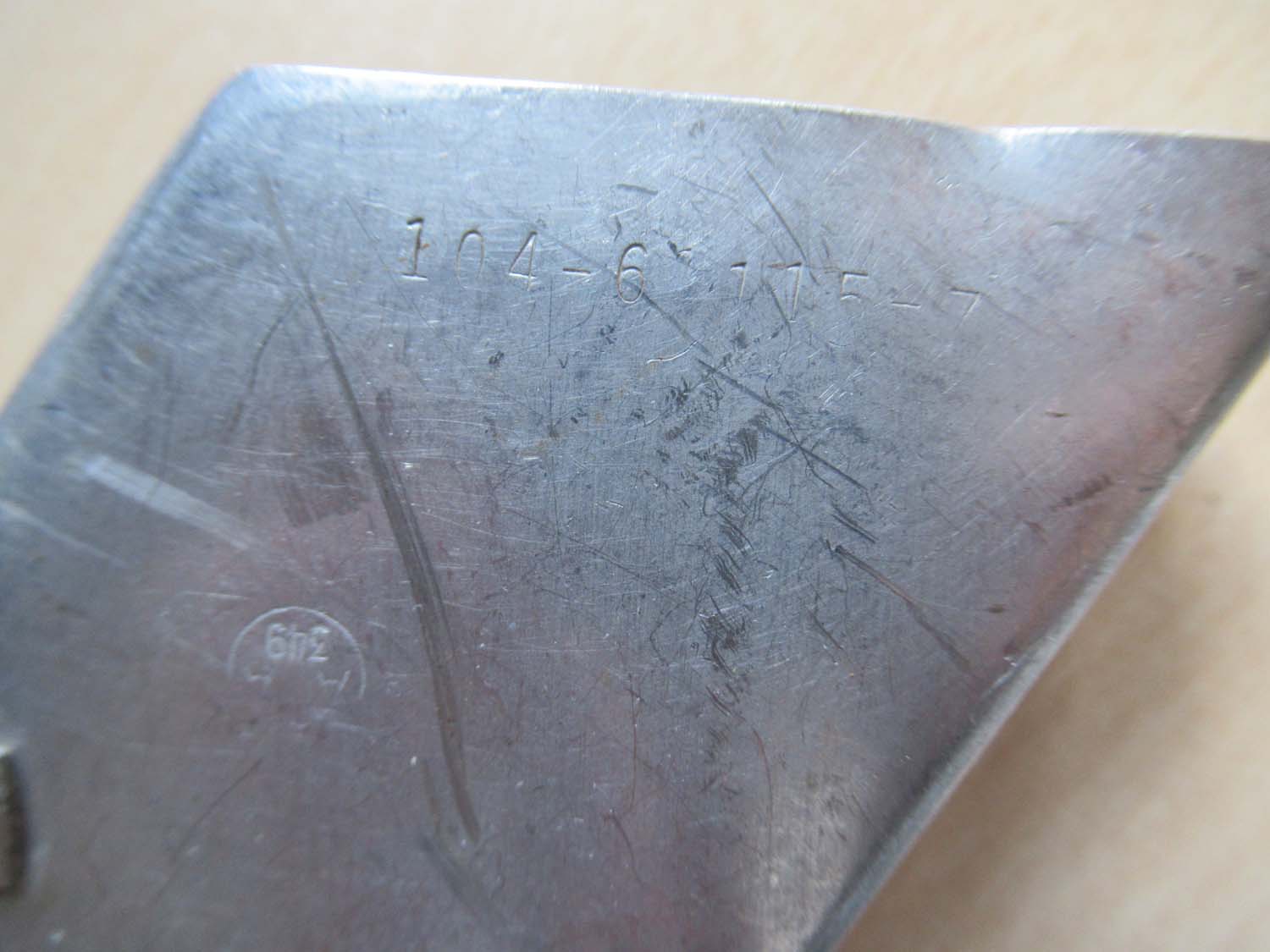
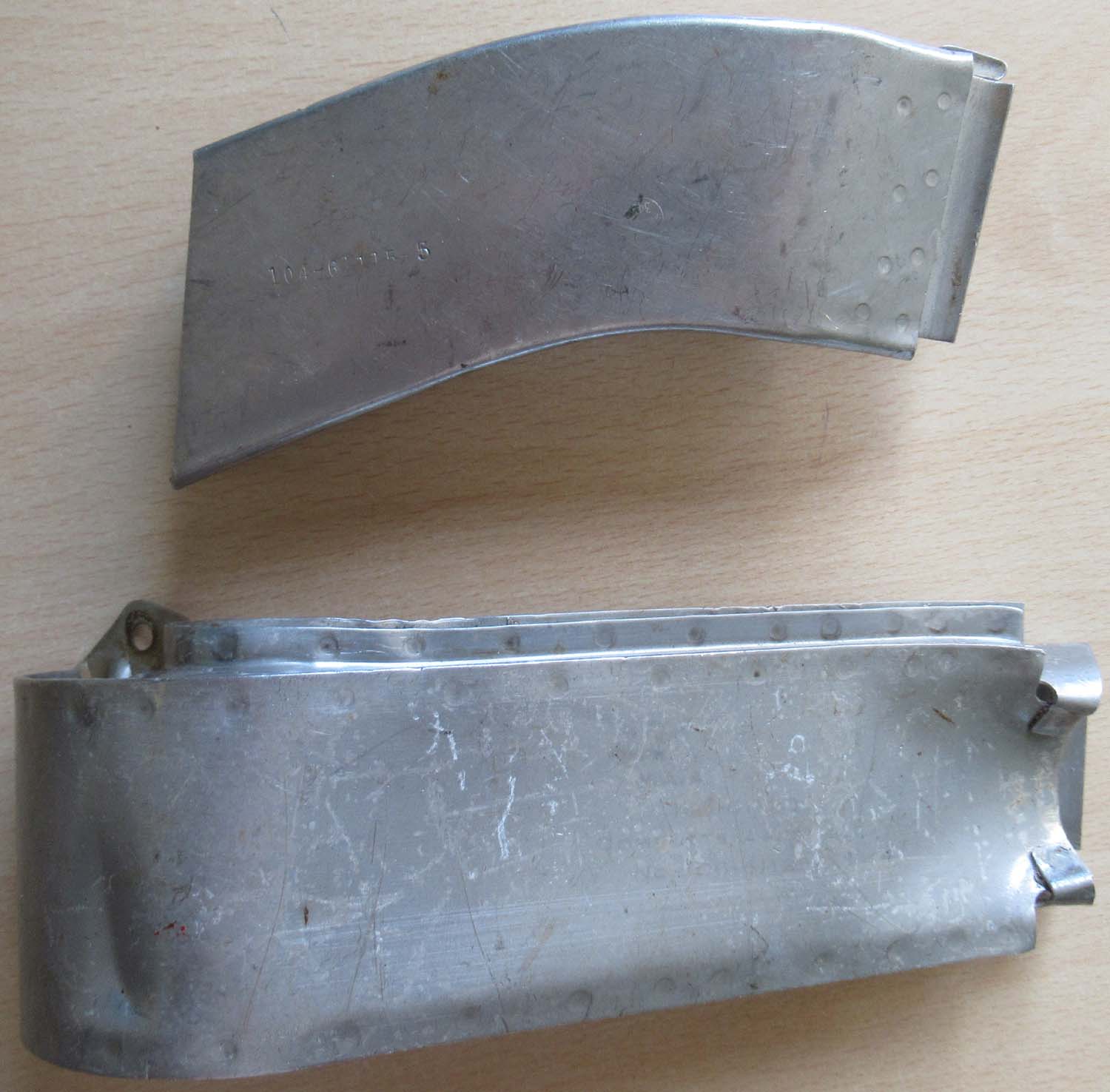 |
P51D Mustang
link Ejection Chutes (No 30 pg1 Arm) Here we have a two P51 D Mustang
link ejection Chutes. The larger of the two is slightly
squashed on the end please enlarge the pictures for
condition.
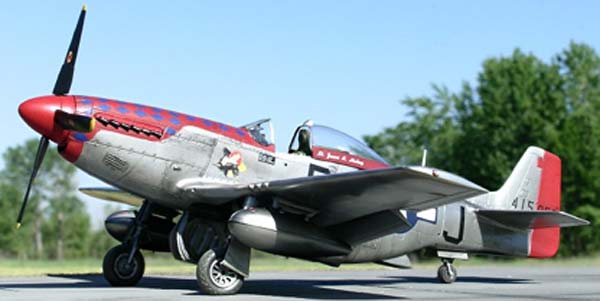
Shown above the stunning
P51 D Mustang.
104-61115-5
Click on
pictures to enlarge
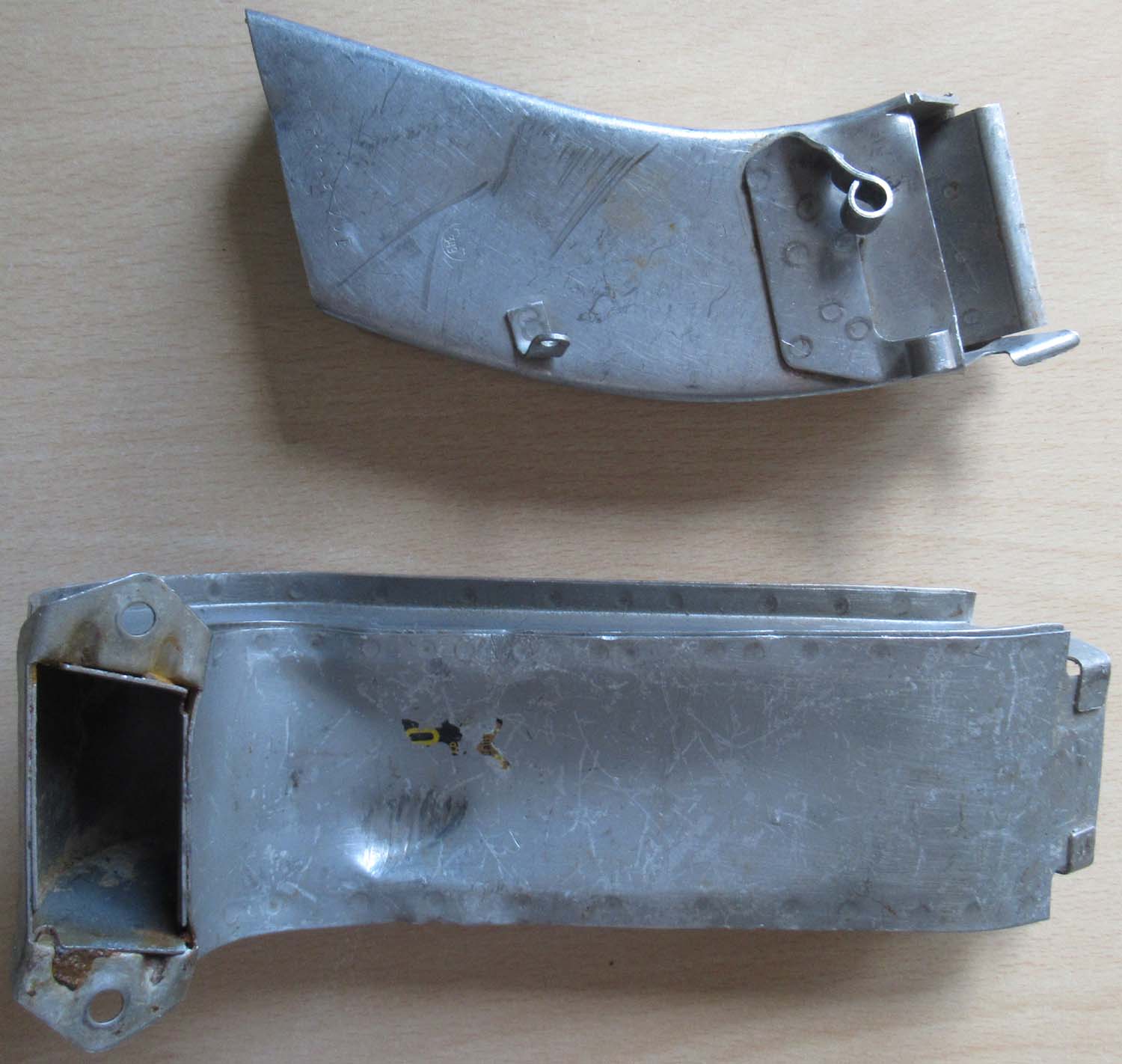
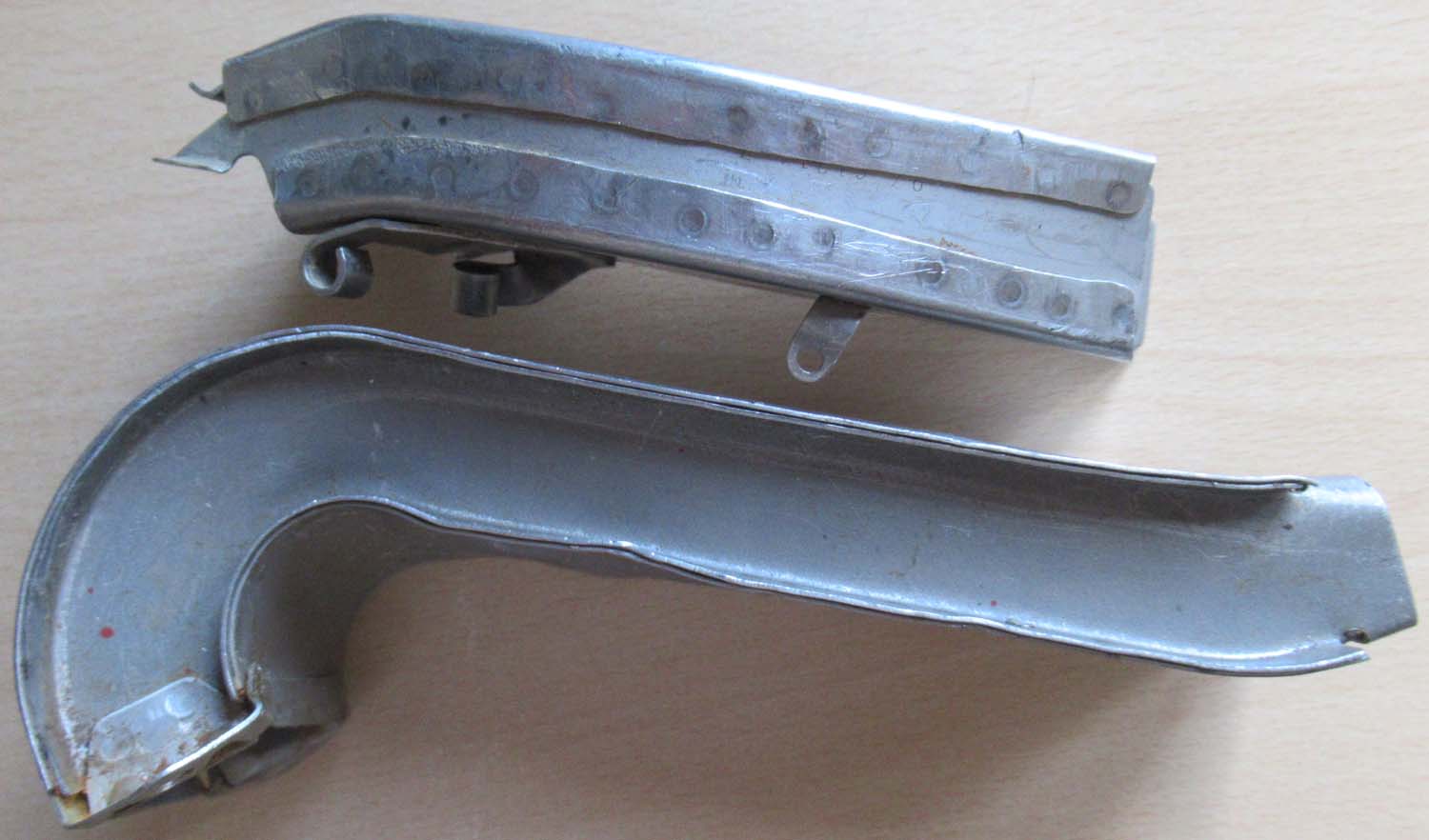
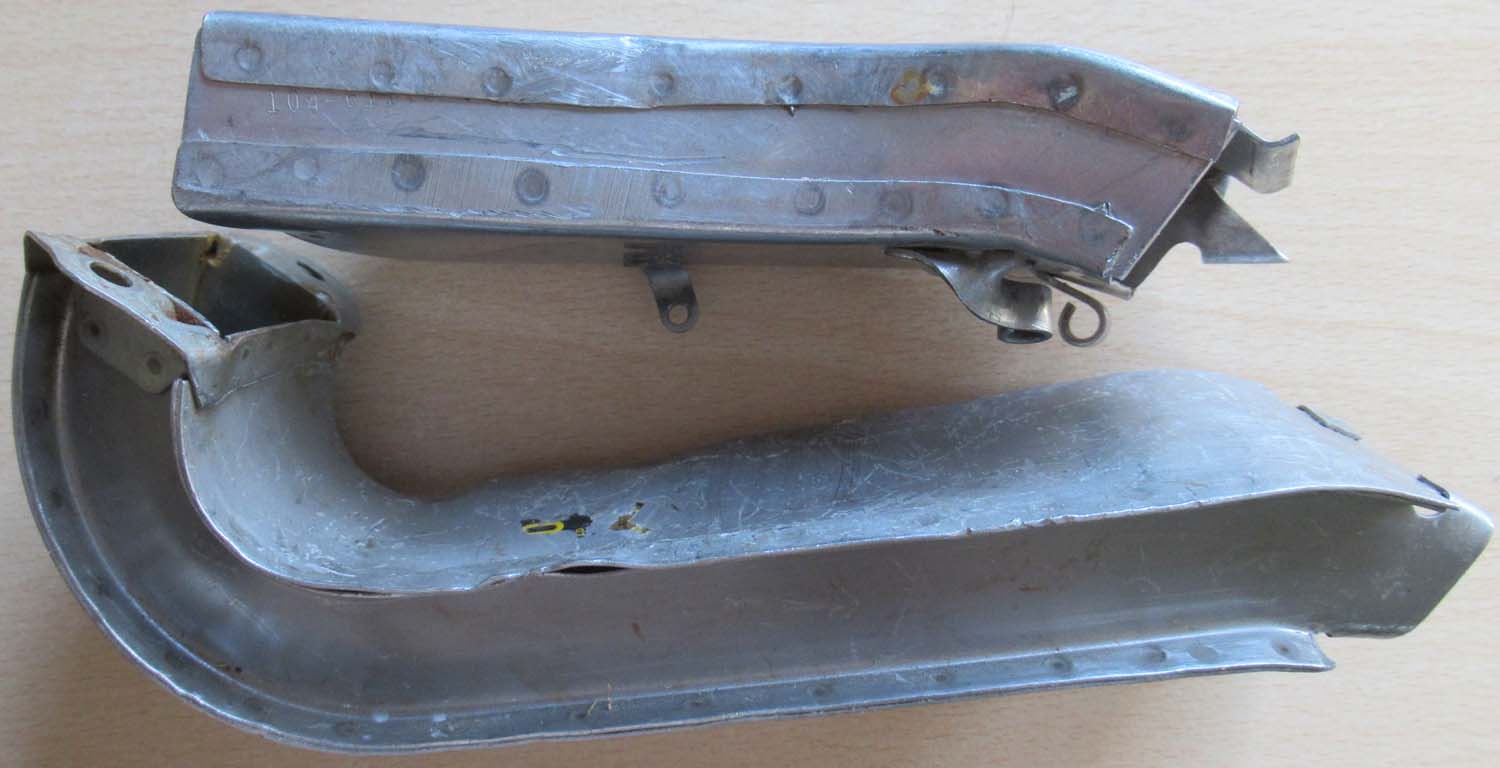

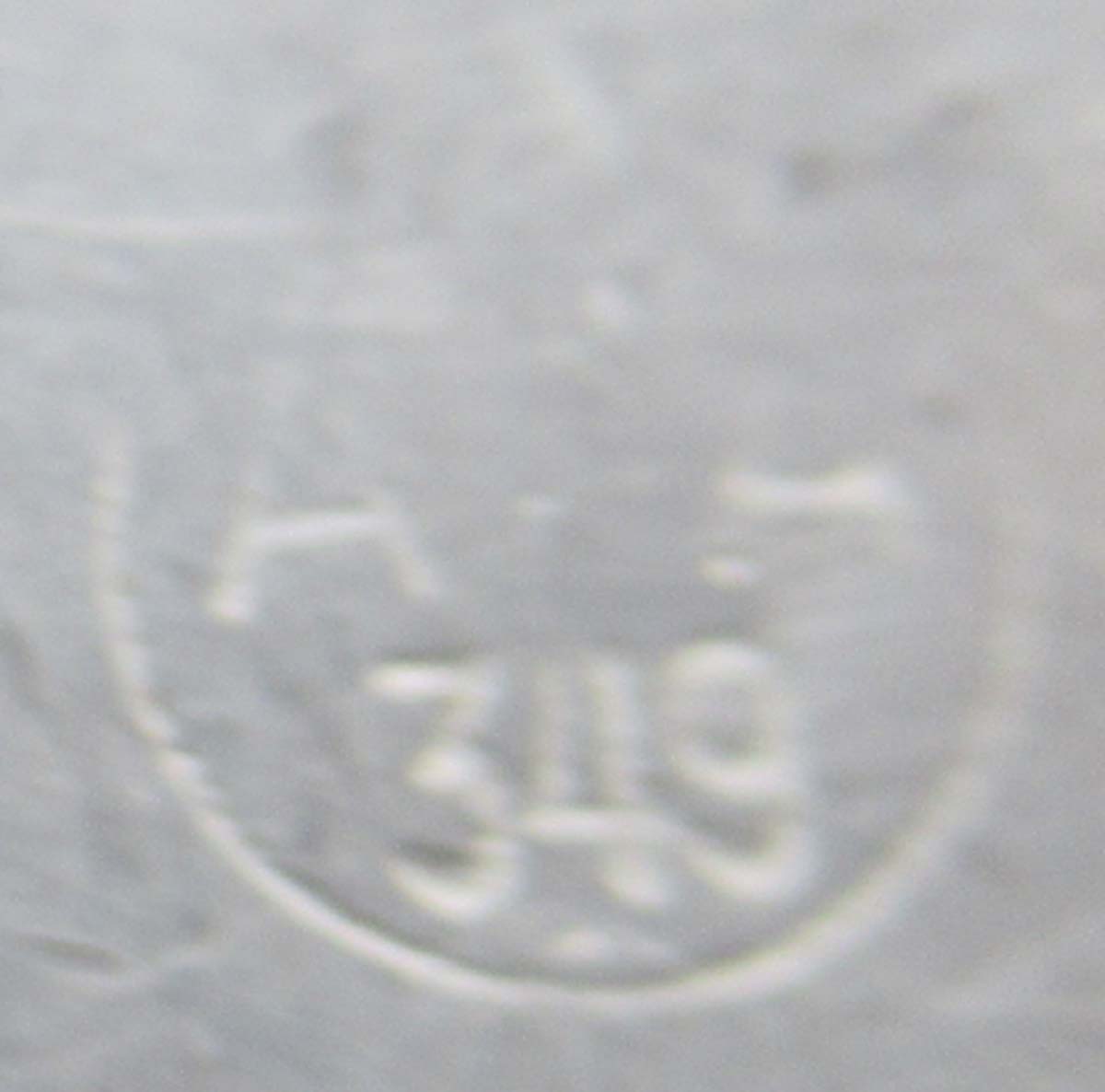
£195


|
|
Click on the
pictures to enlarge them
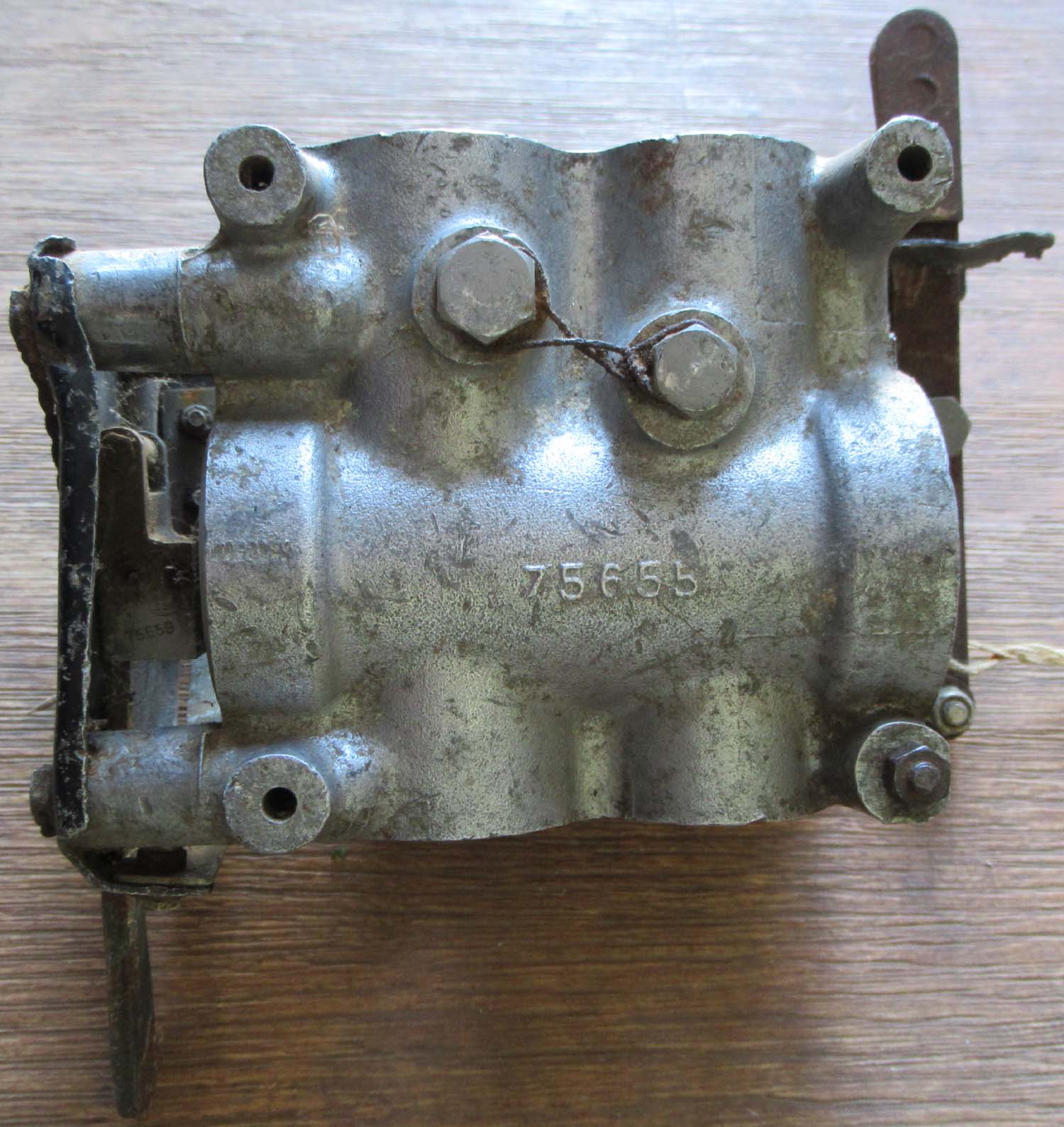
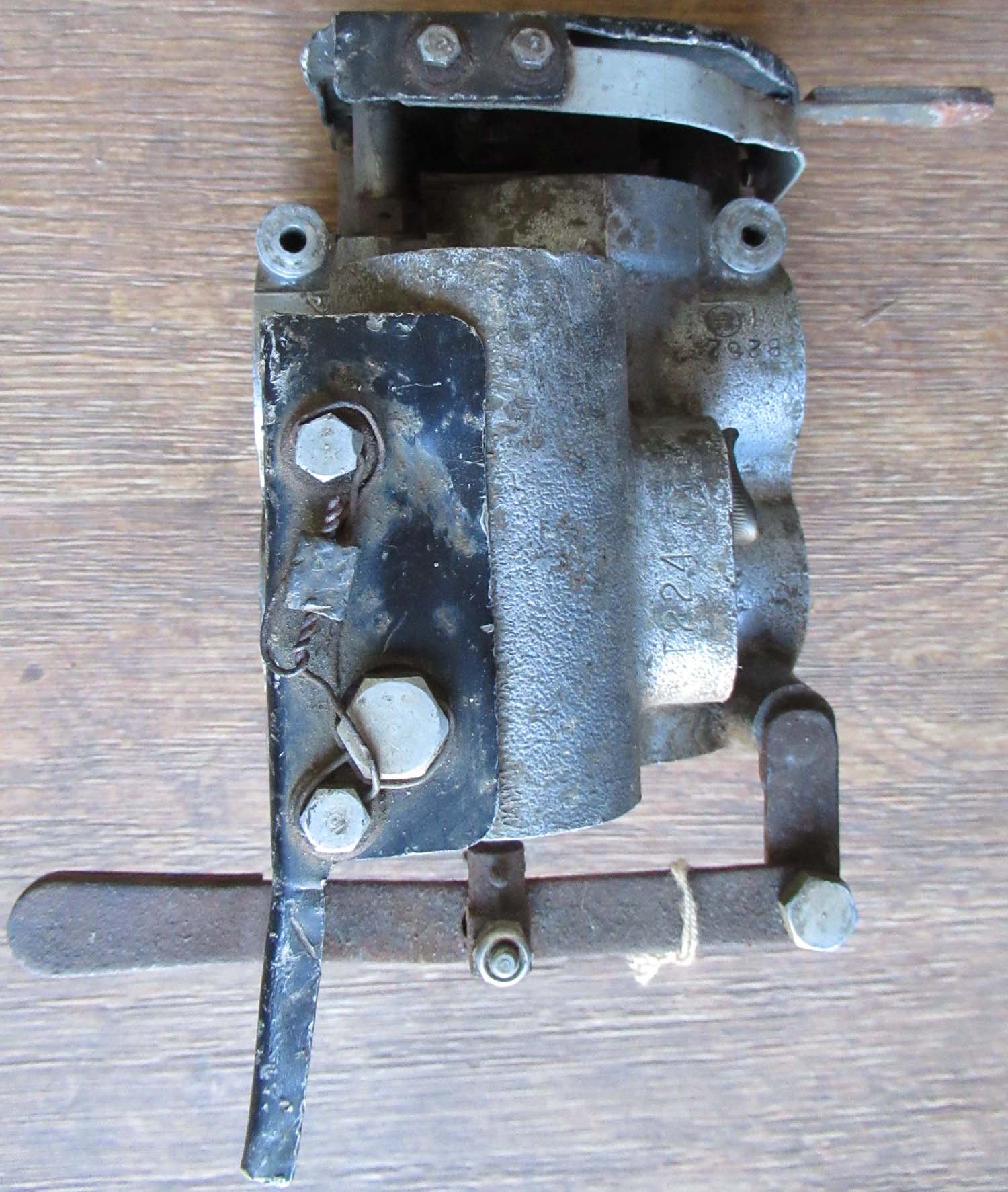
|
Frazer Nash Turret
Rotation Unit
1 (No 29 pg1 Arm)
Here is a hydraulic turret
rotation unit. The Frazer Nash turrets were used in
practically all Wartime RAF aircraft with turrets including
the Lancaster.
This unit is in good original
condition and appears to be complete and undamaged apart
from some dents and a tear in the plates. The lever is
currently not moving.
FN Design
assembly no 203025A
Serial B262
75685
Click on the
pictures to enlarge them
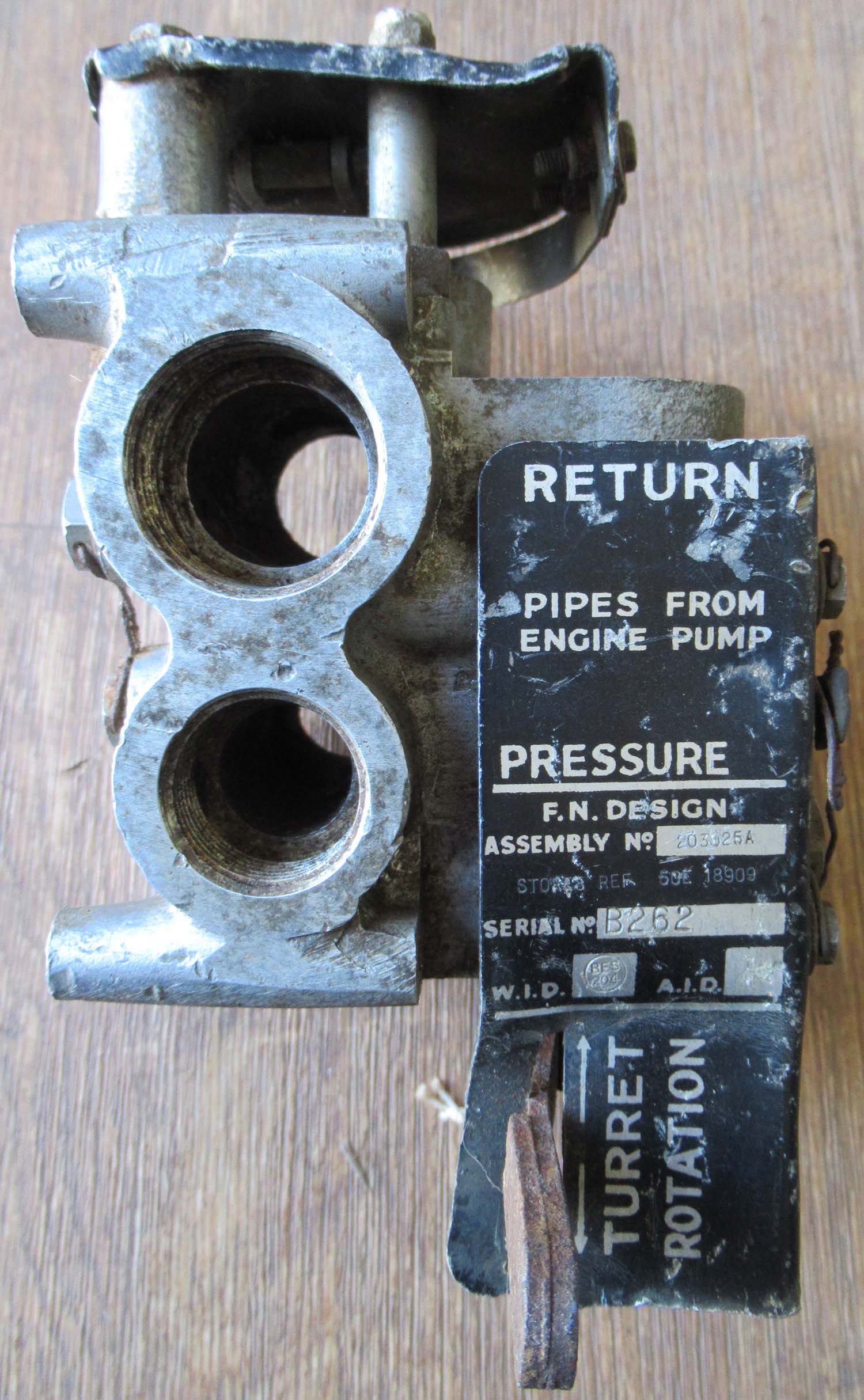
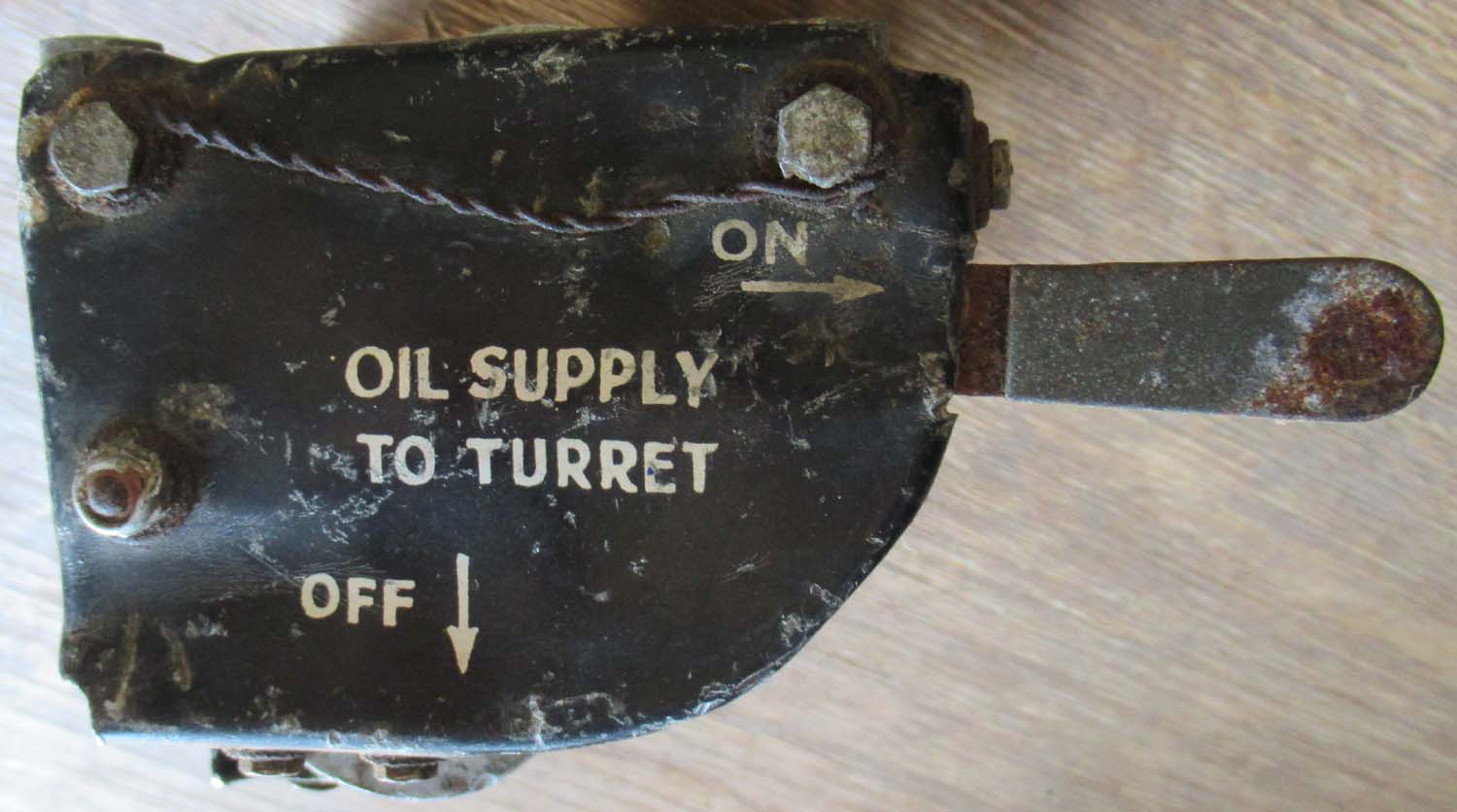
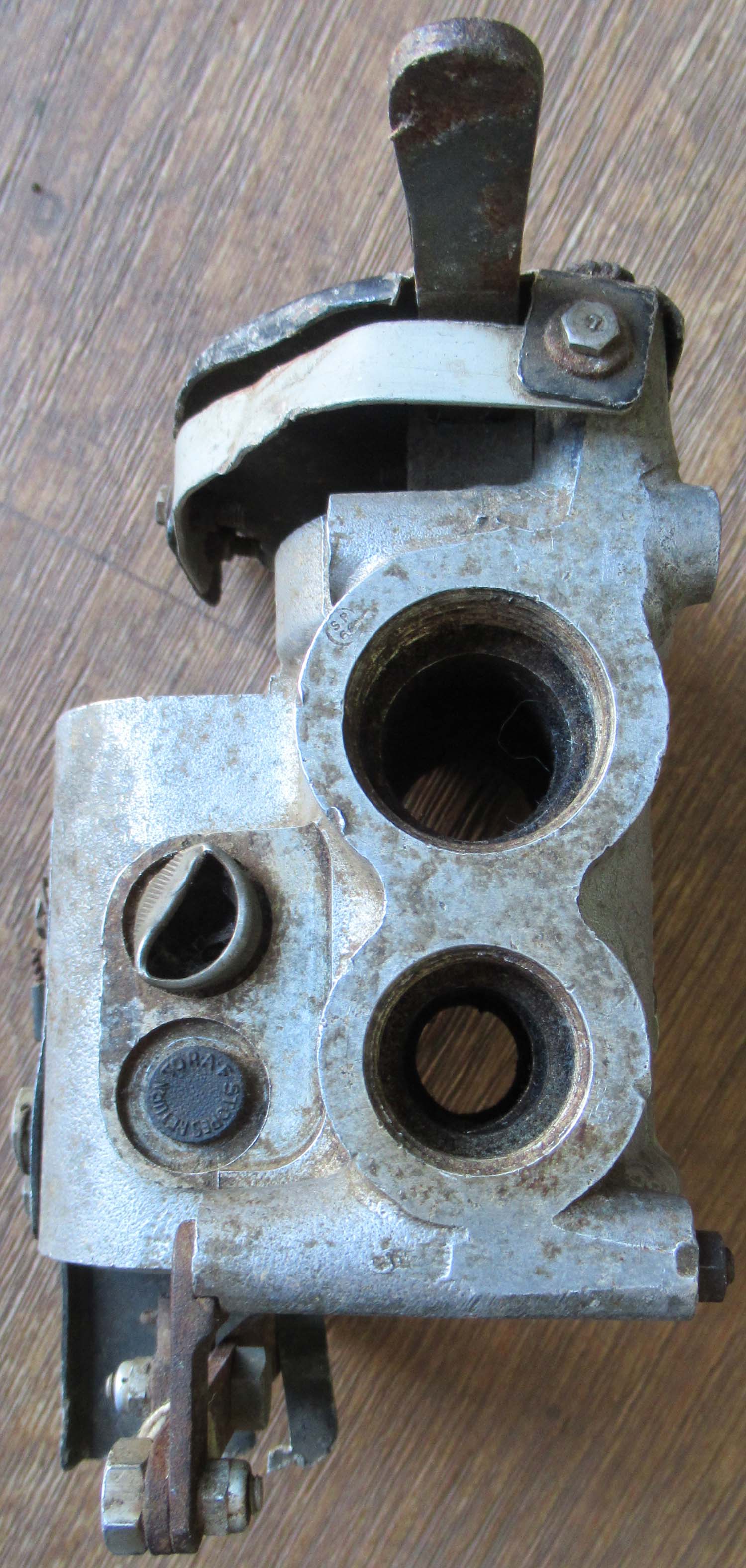
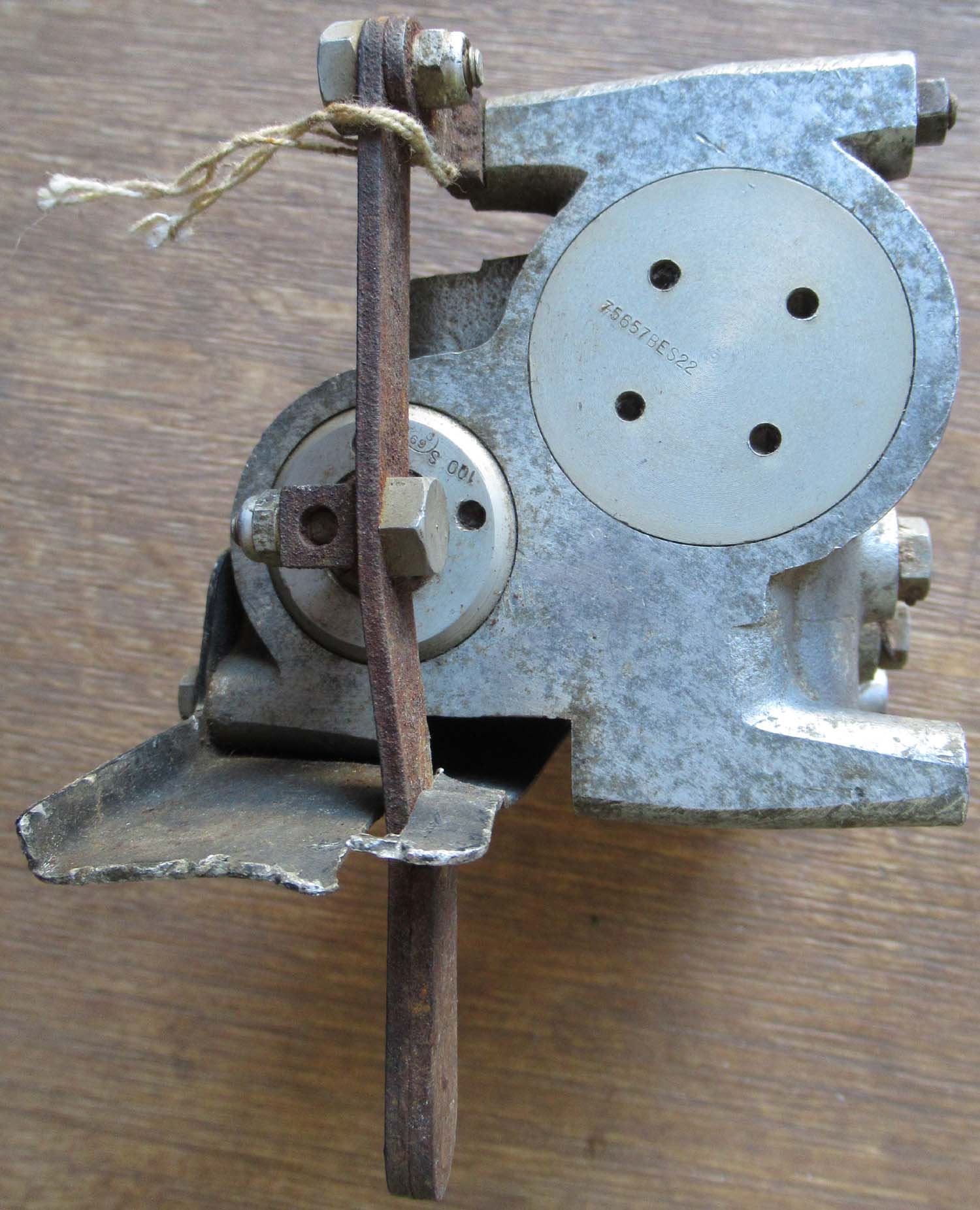
£395


|
|
Click on pictures to enlarge



|
Frazer Nash Turret
Rotation Unit
2 (No 28 pg1 Arm)
Here is a hydraulic turret
rotation unit. The Frazer Nash turrets were used in
practically all Wartime RAF aircraft with turrets including
the Lancaster.
This unit is in good original
condition and appears to be complete and undamaged . The lever is
currently not moving.
FN Design
assembly no C75716
Serial 717
3D75655
Click on pictures to enlarge
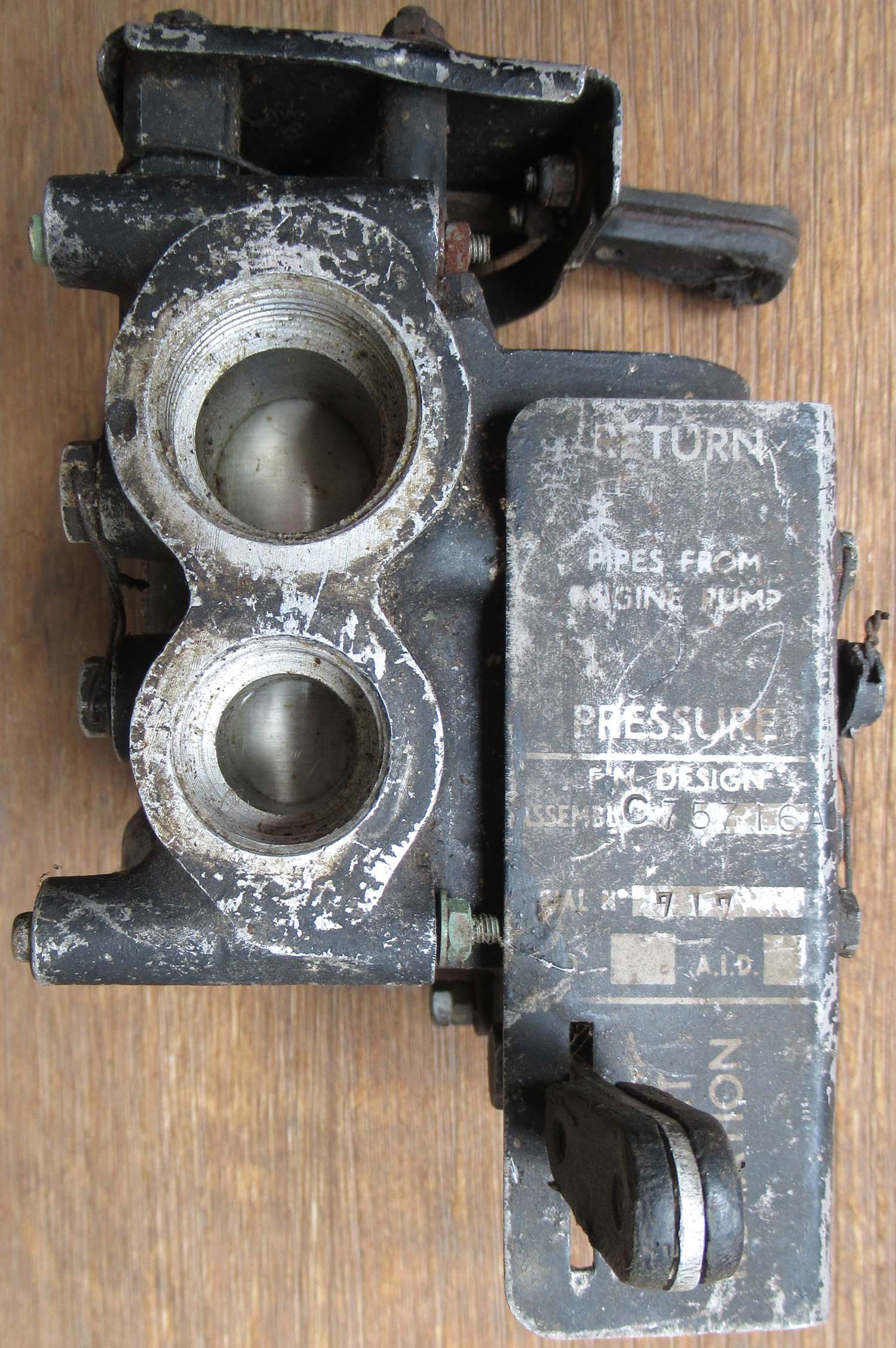

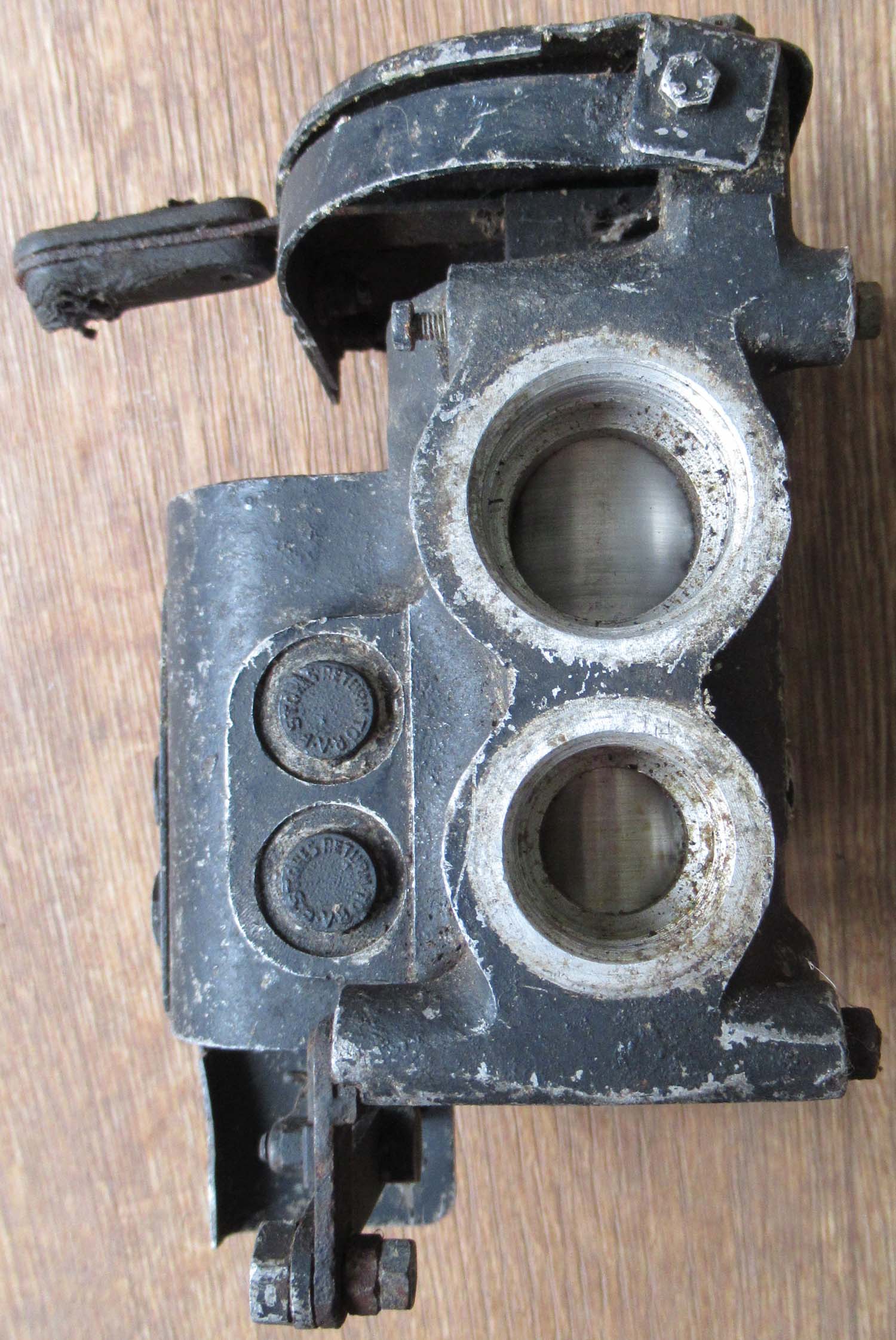


£395


|
|
Click on the
pictures to enlarge
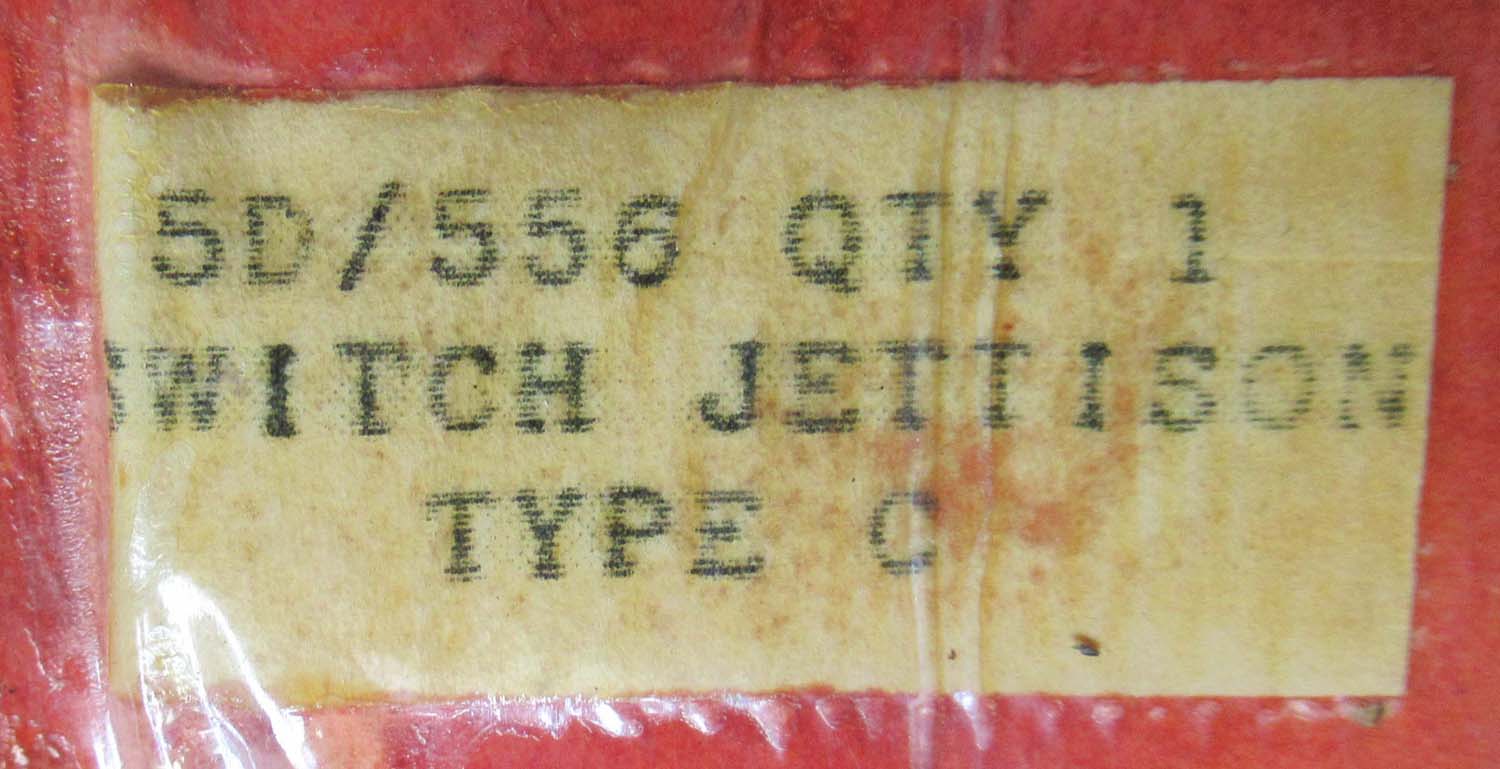
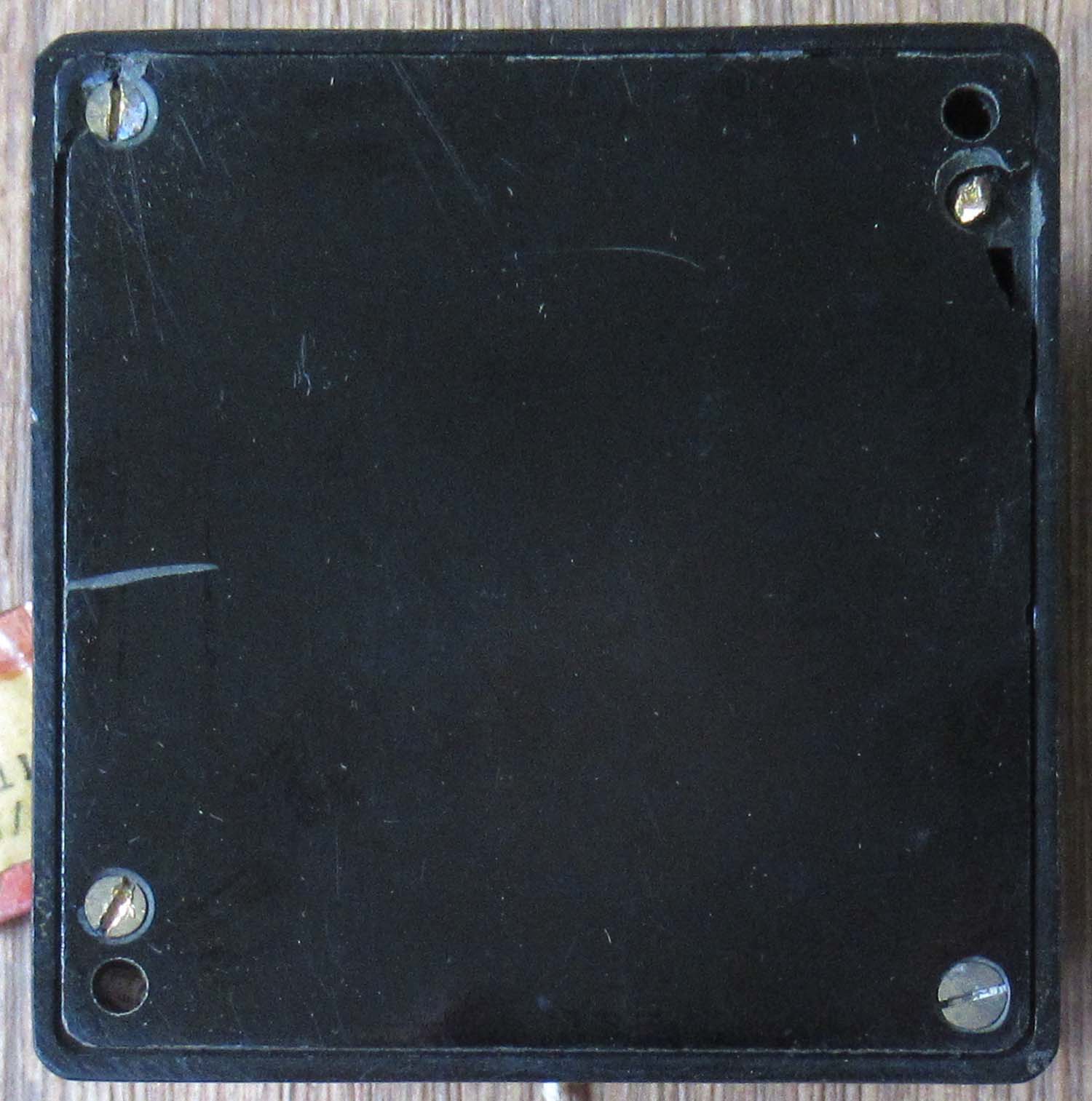 |
Type C Lancaster Bomb Jettison Switch Unit
5D/556 (No 26 pg1 Arm)
Here is a Bomb jettison
switch which mounts to the Lancaster main instrument panel,
does what its says and will jettison all the bombs in an
emergency such as being attacked by a fighter. In really
good original condition with its original A/M tag.
Type C
5D/556
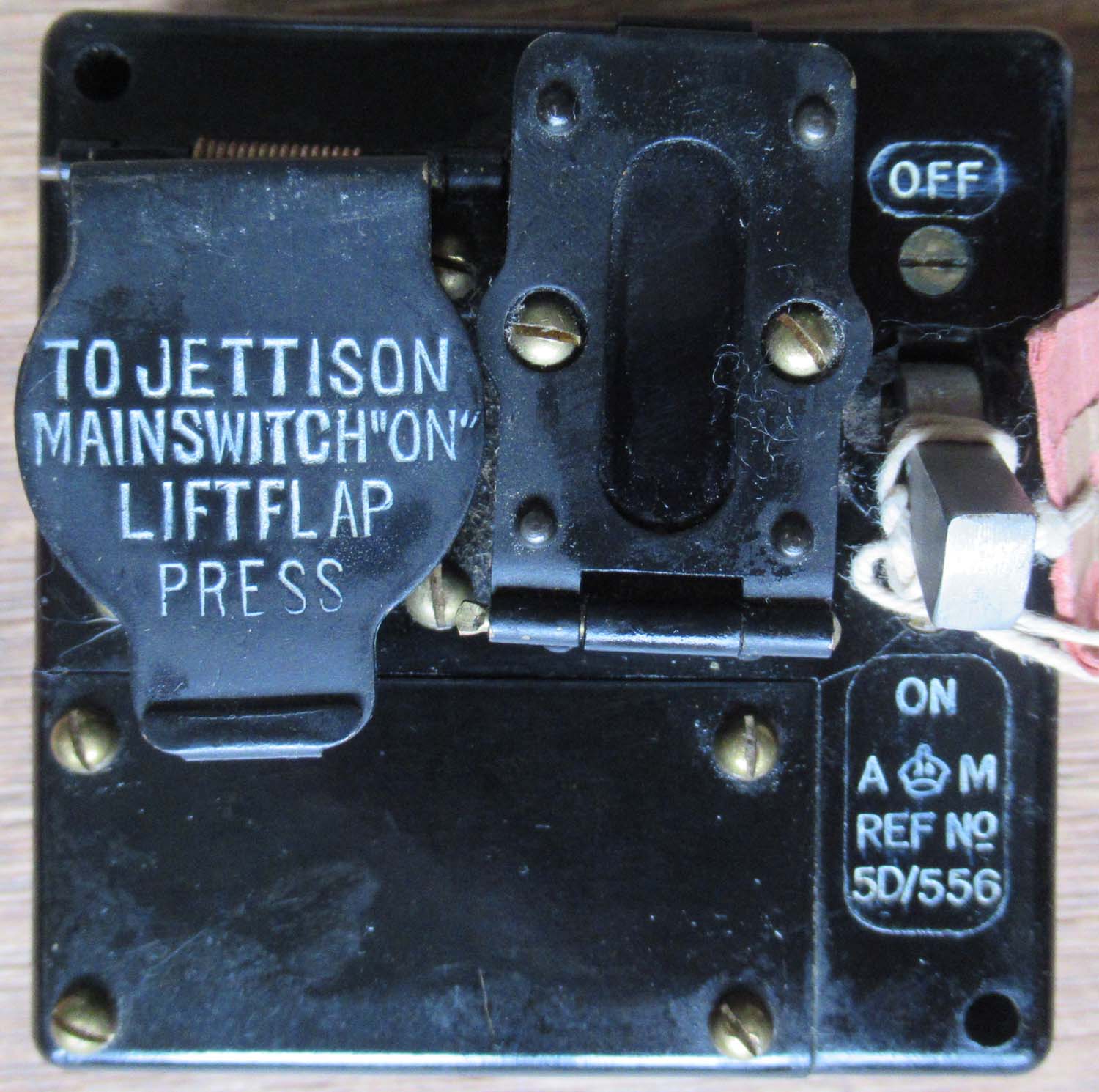
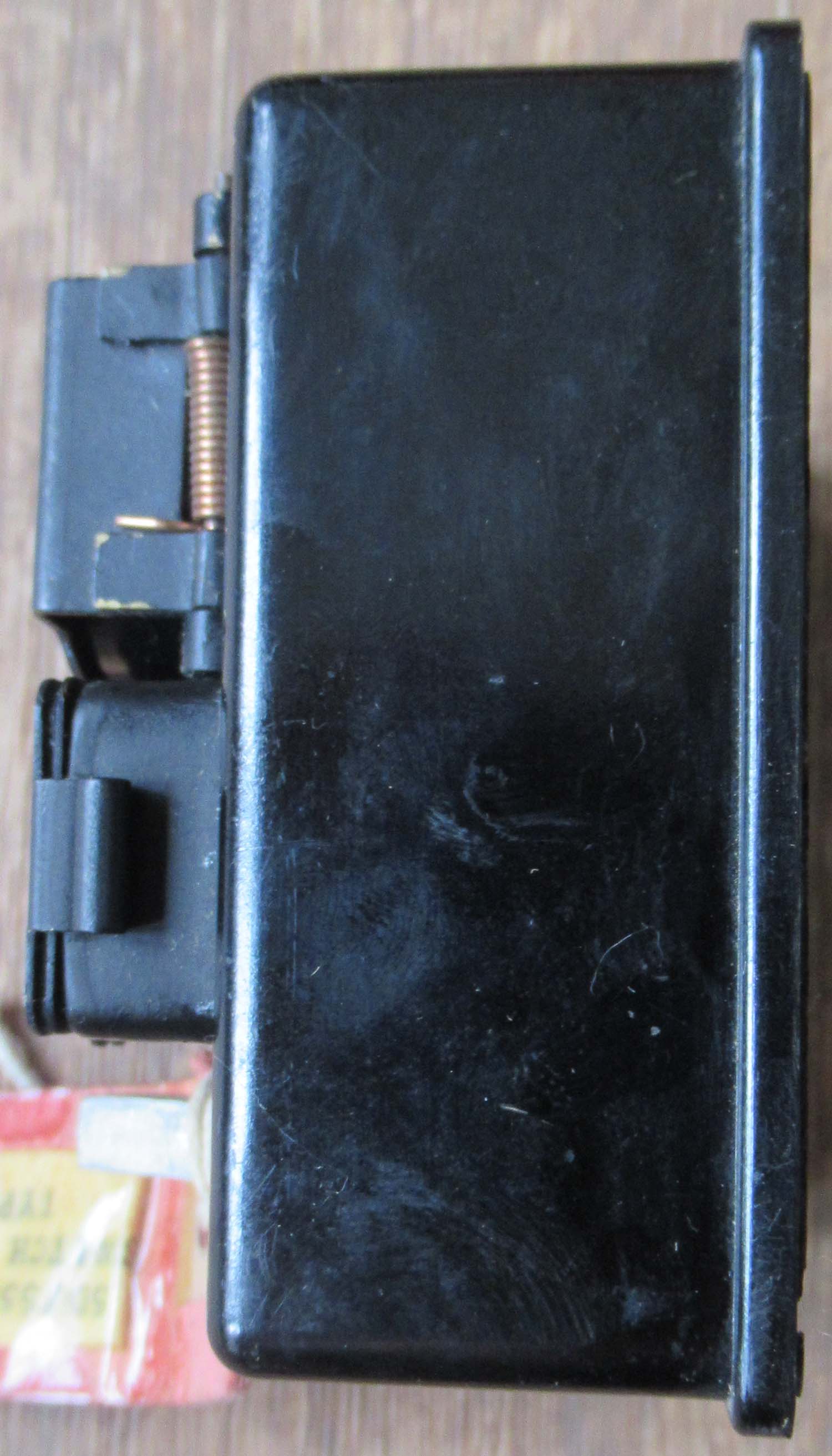
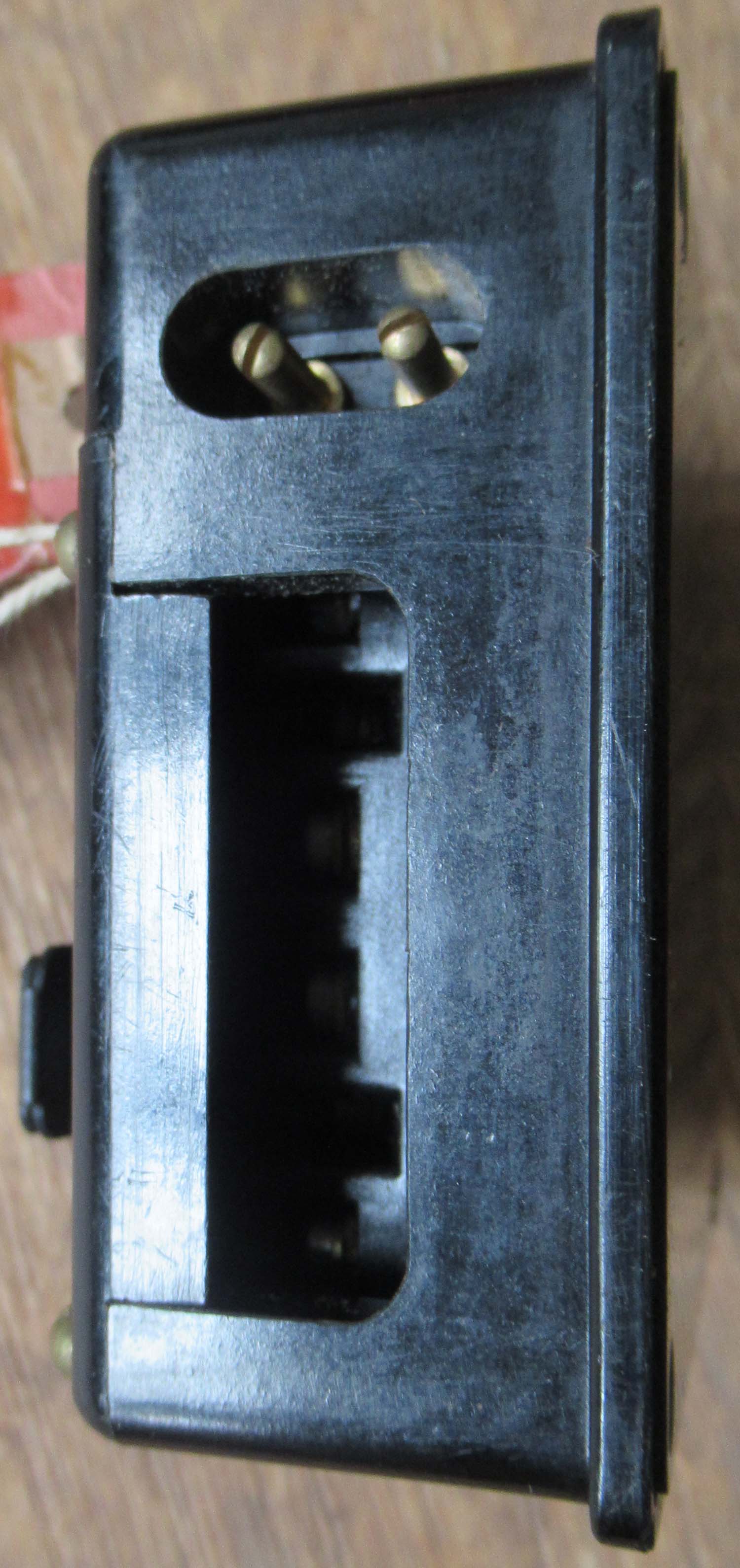
£225


|
|
Click on the
pictures to enlarge
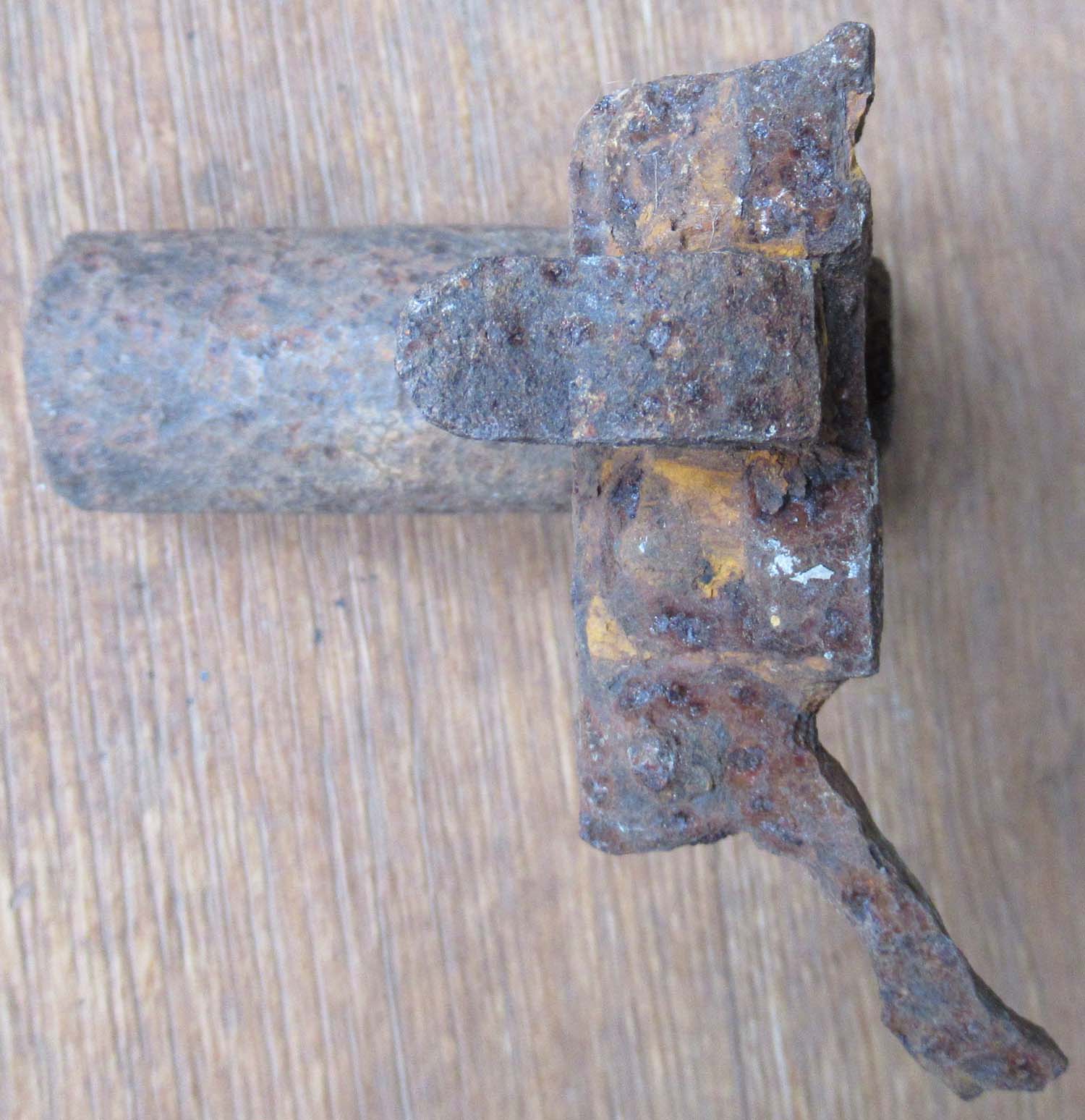
£95


|
50 Cal Browning Solenoid (No 25 pg1 Arm)
Here is the end of what I believe to be
a 50 Calibre browning aircraft machine gun , its to big for
a 303 or 30 cal .
Click on the
pictures to enlarge
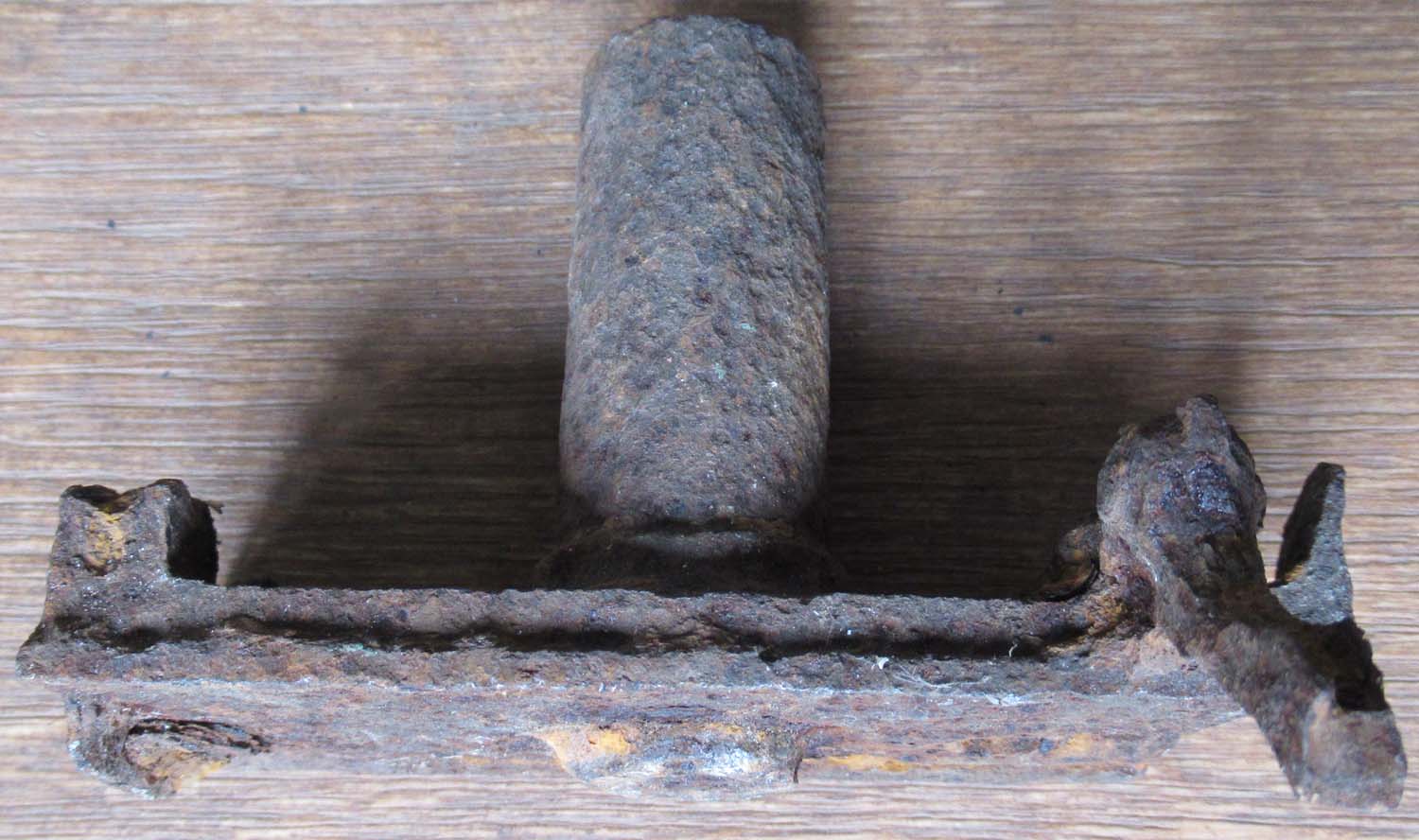
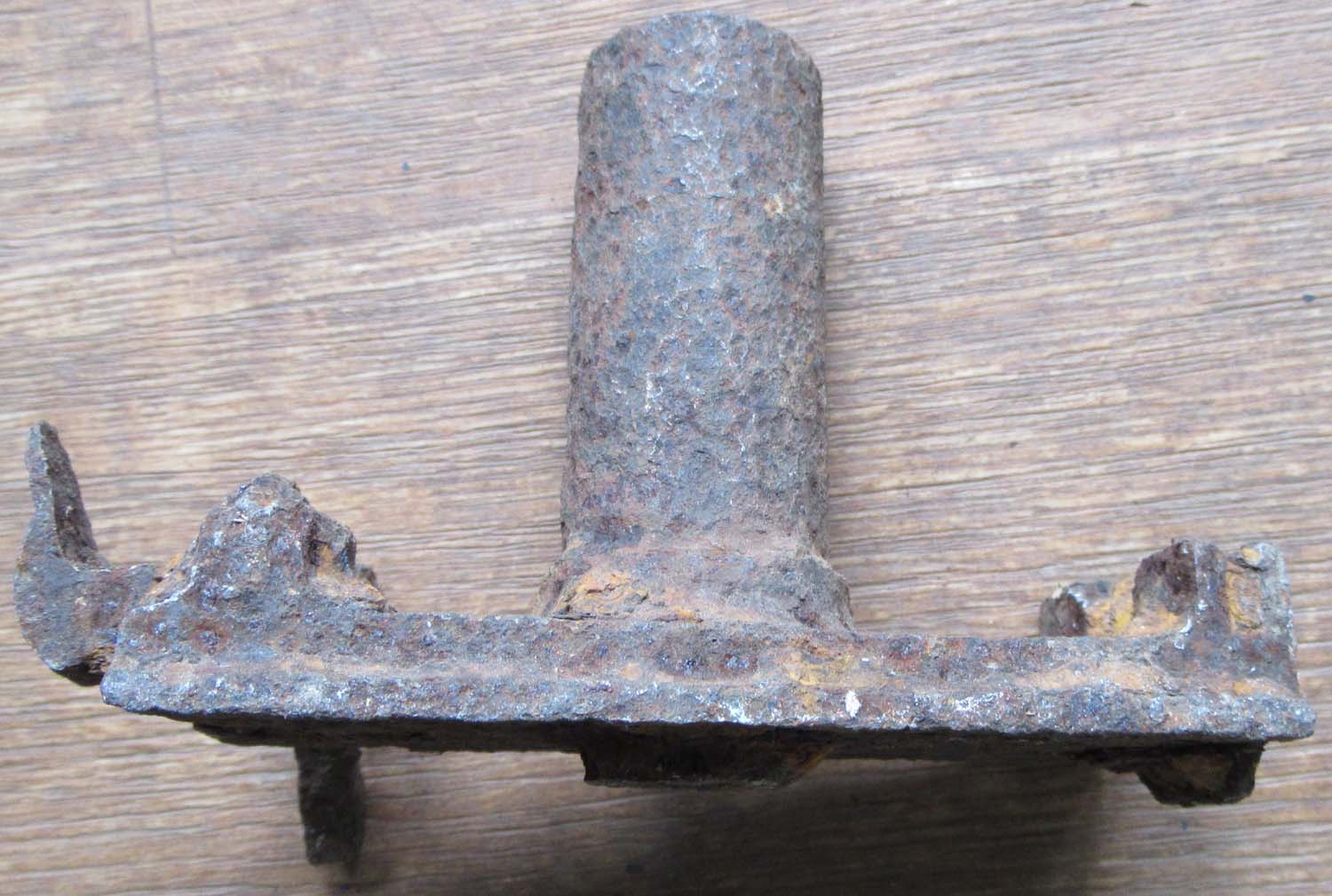
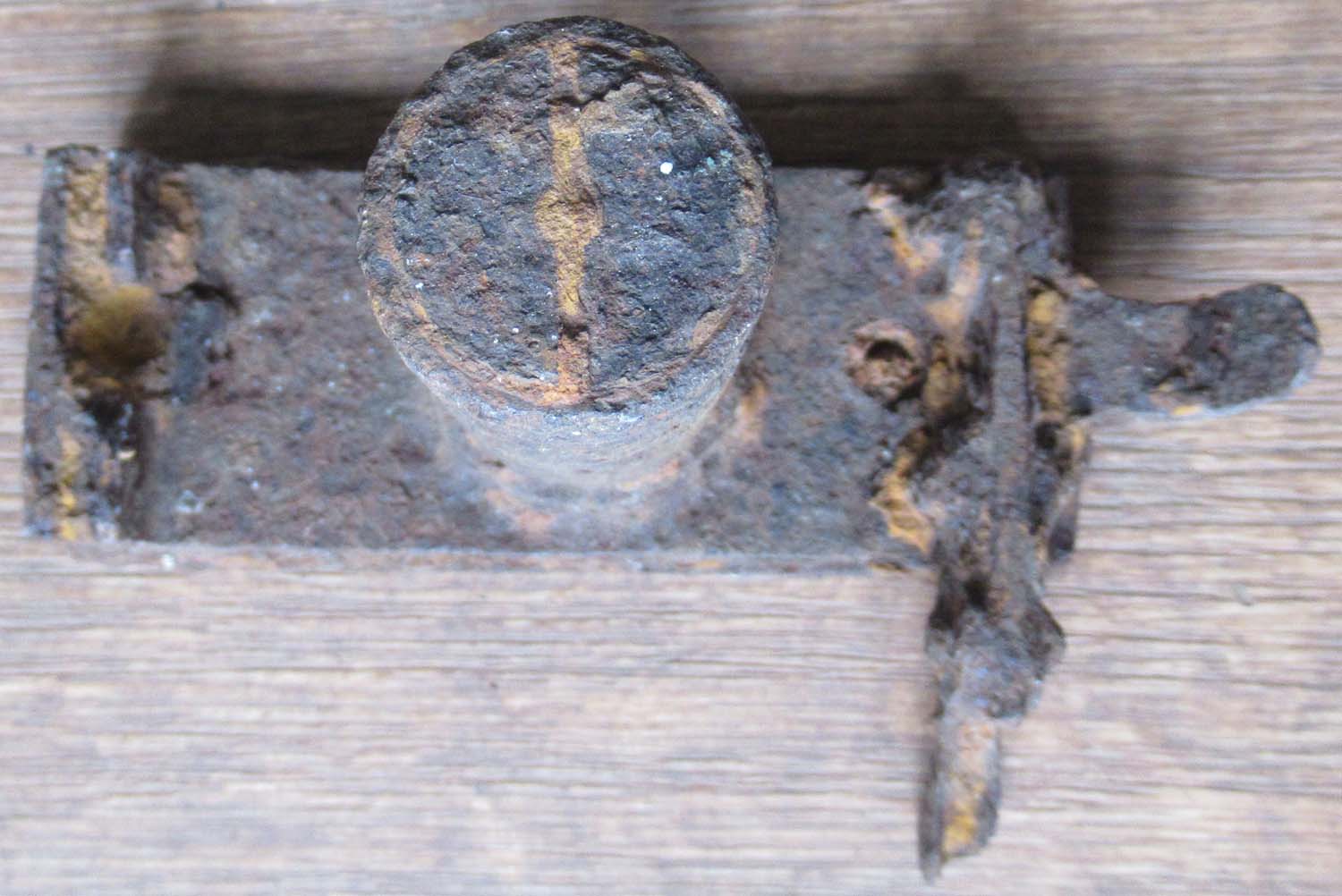
It is quite corroded but a very nice
collectable peace that would clean up nicely with some work.
This is the solenoid that fires the gun , these guns were
fitted extensively in US aircraft from the B17 to the
Mustang and P47 Thunderbolt and just about every other US
combat aircraft.
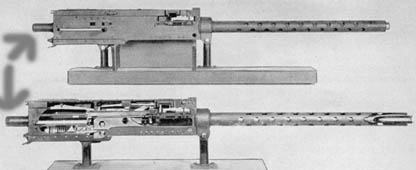 |
|
Click on pictures to enlarge




 |
Short Stirling Bomb pre selector (No 24
pg1 Arm)
Here is a bomb pre selector I
was told was fitted to the Short Stirling bomber although it
could of been fitted in other Bomber aircraft . Compared to
other Bombers like the Halifax and Lancaster its huge
measuring 300mm by 180 mm by 120mm tall. It has its
original connections still attached its the first one of
this type I have seen . It has some slight damage on
the base please see the pictures but is overall in good
original condition.
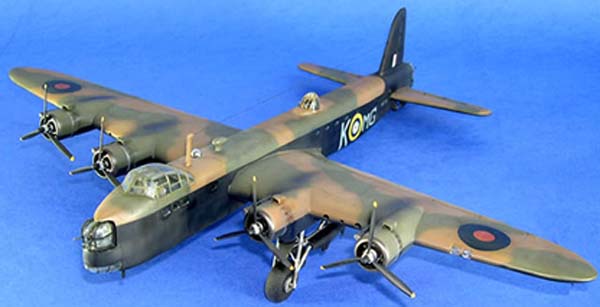
Shown above the Short Stirling
The Stirling was the first of Bomber Command's four-engine
bombers to enter service. However, its low service ceiling
and the entry into service of the Lancaster and Halifax saw
it moved to Transport Command. Operating as a glider tug the
Short Stirling would be used during 'Operation Market
Garden'.
5D/
1064
32
Point Pre selector
Type
B
Click on pictures to enlarge




Overseas buyers
please
contact me for shipping
cost
£295


|
|
Click on pictures to enlarge




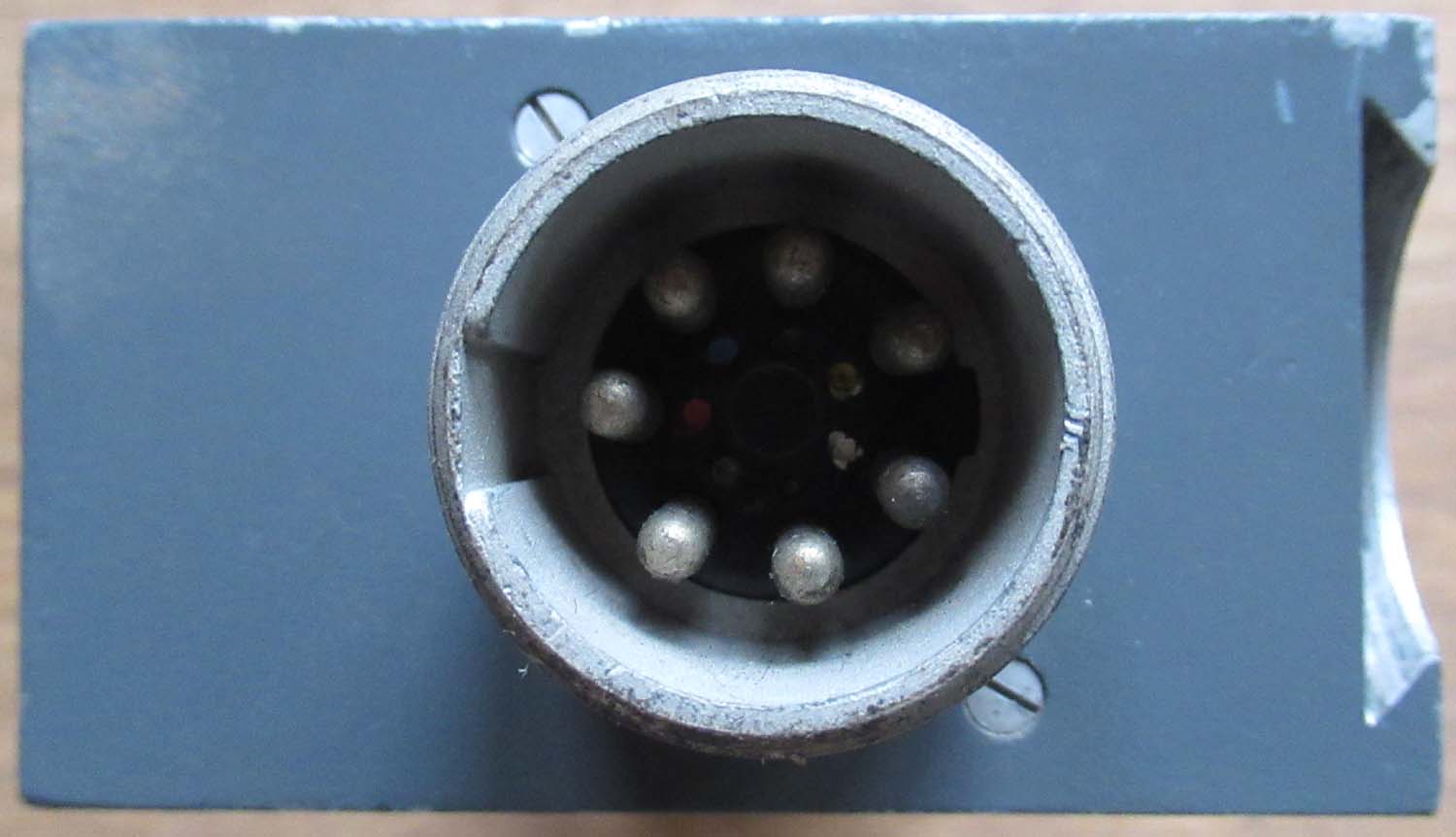
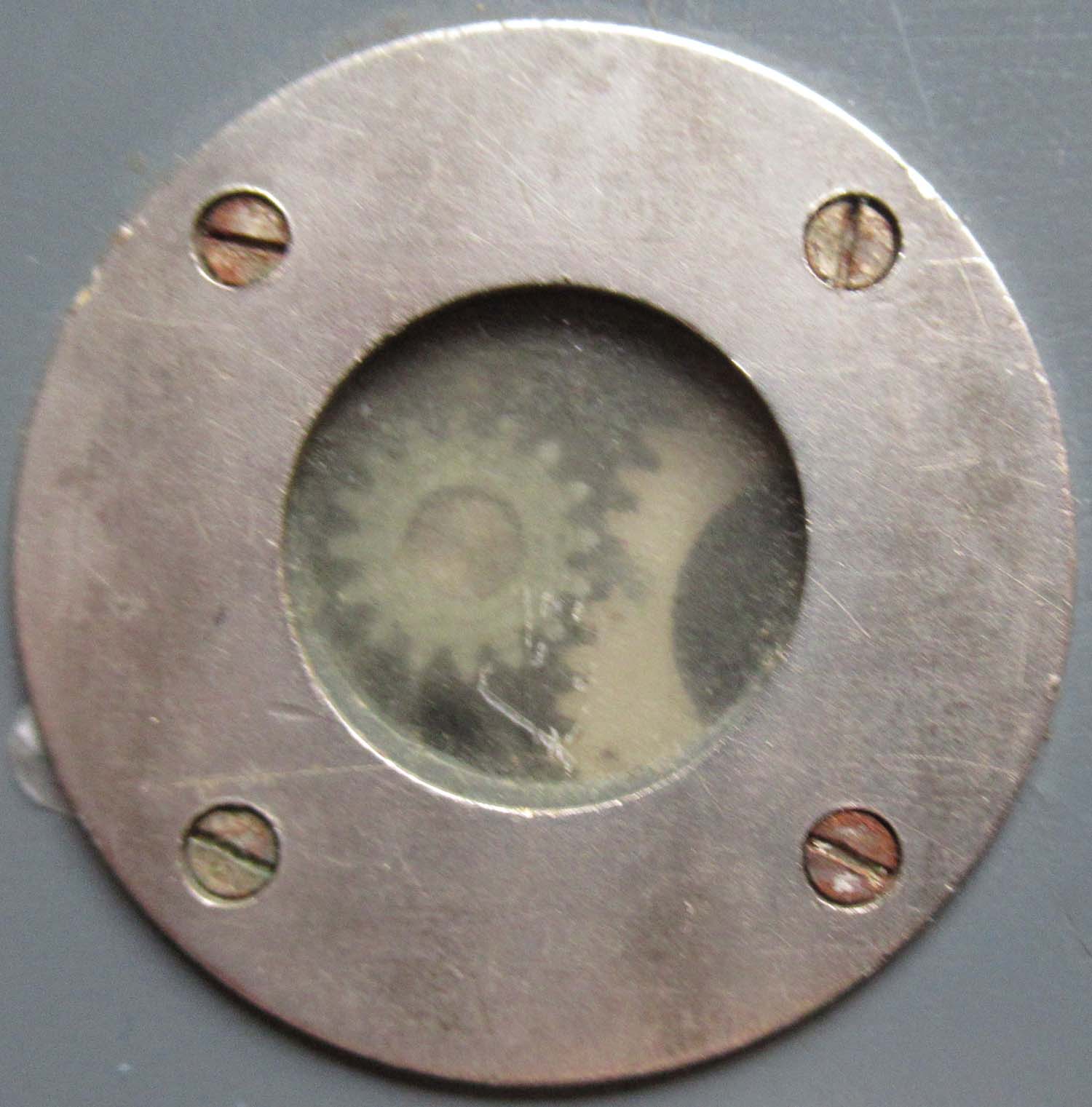 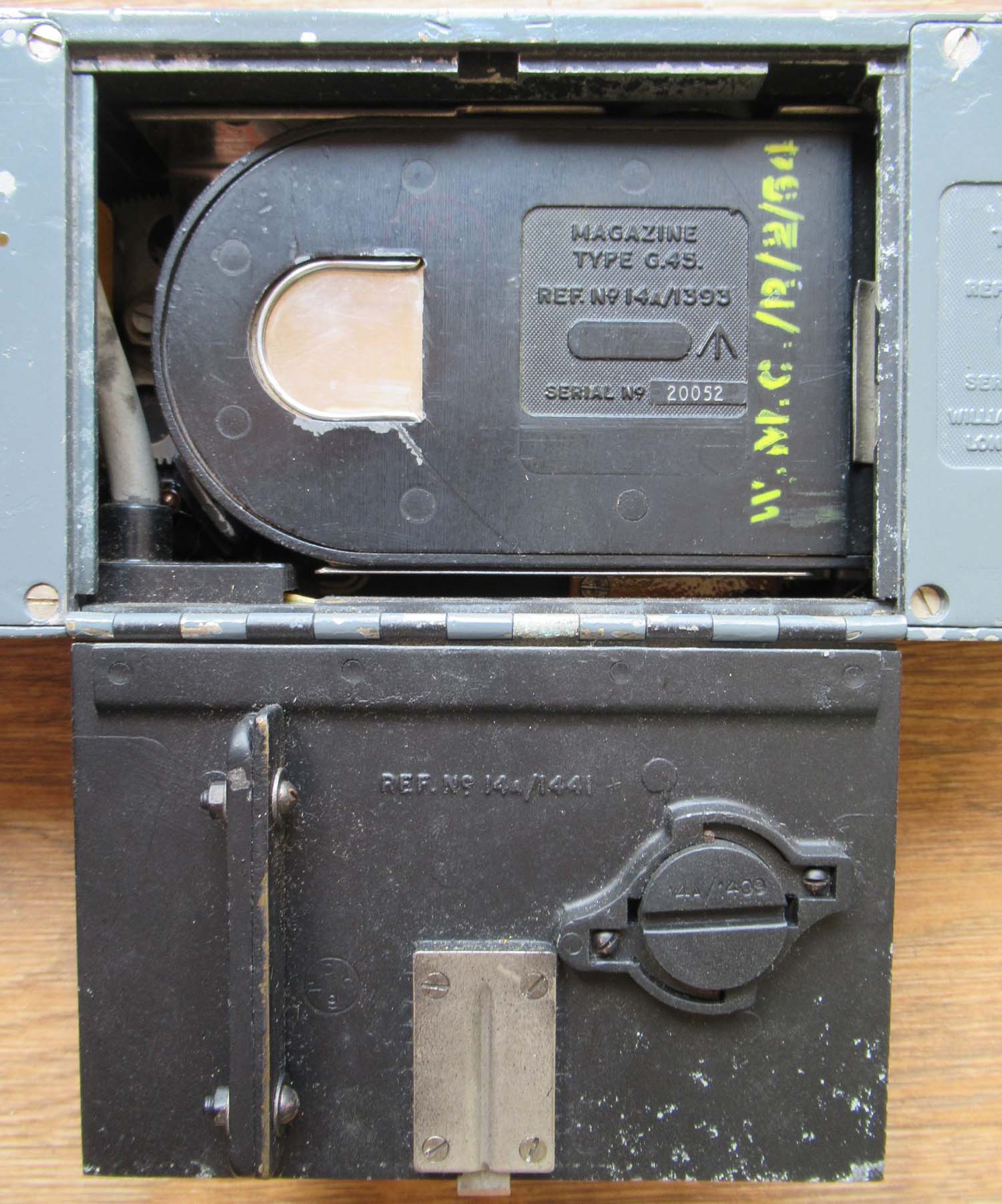 |
RAF WWII
Fighter G45 Short Lens Camera Gun (No 23 pg1 Arm)
Here we have a camera gun
used in practically every RAF Wartime fighter.
As the gun button was
depressed the camera which was mounted in the leading edge
adjacent to the guns recorded film as long as the guns were
firing. This was later analyzed and used to confirm the
Pilots claims of a kill or damage.
This camera is in good
original condition and still contains an original film
cartridge, I have always wondered what I might find if the
film was developed but have no idea how to go about doing
so.
The camera can be mounted
upright or on its side and the film can be accessed in
either position.
This was most certainly
fitted to a late war fighter as it is 24 Volt most fighters
used a 12 volt system until later in the War.
It has a service date of
1954 .
Ref 14A/1399
Click on pictures to enlarge
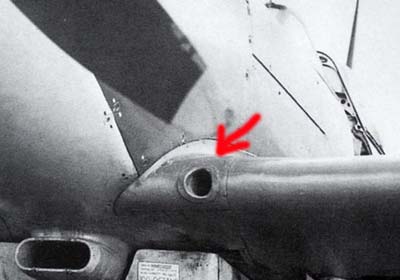 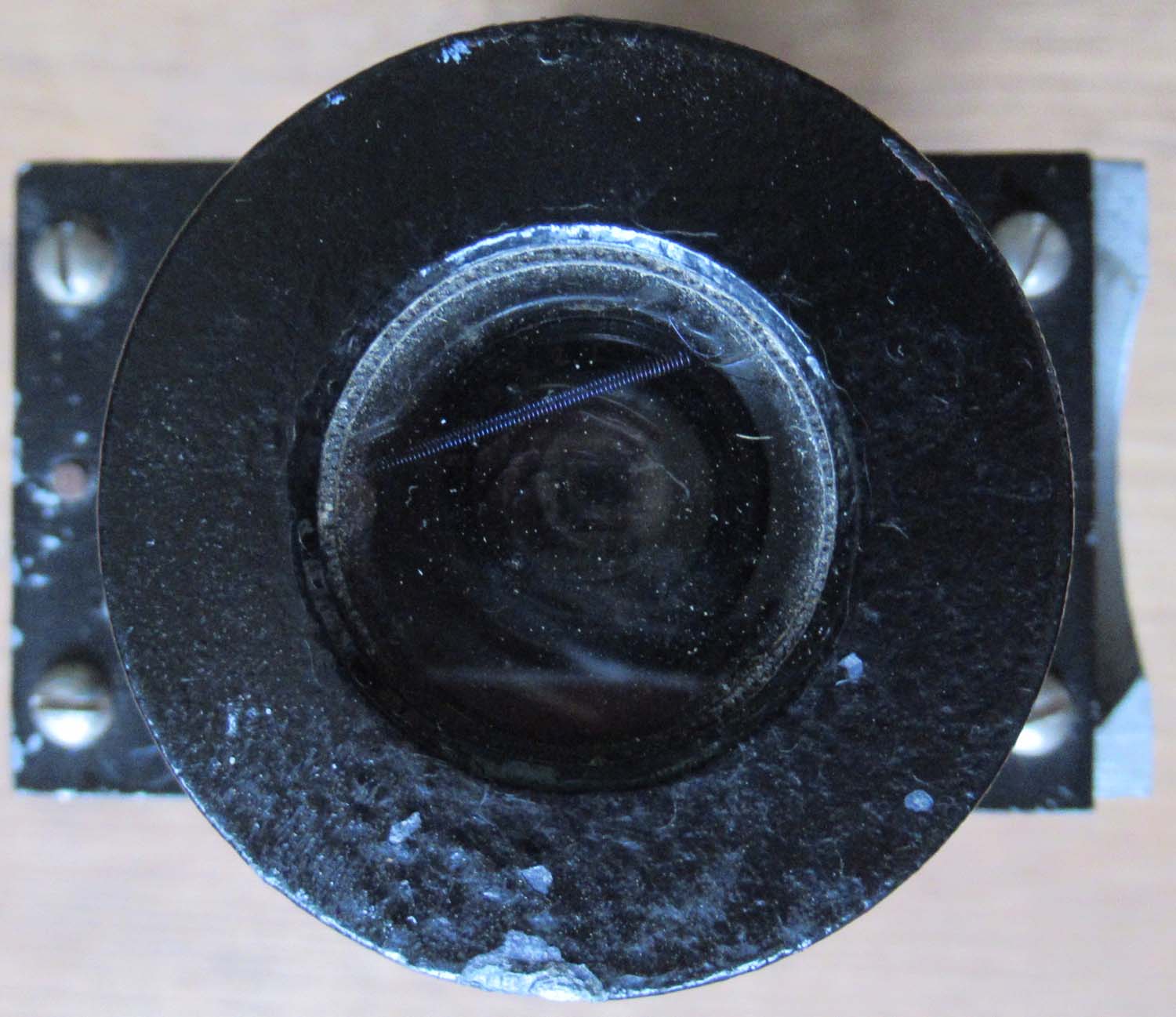 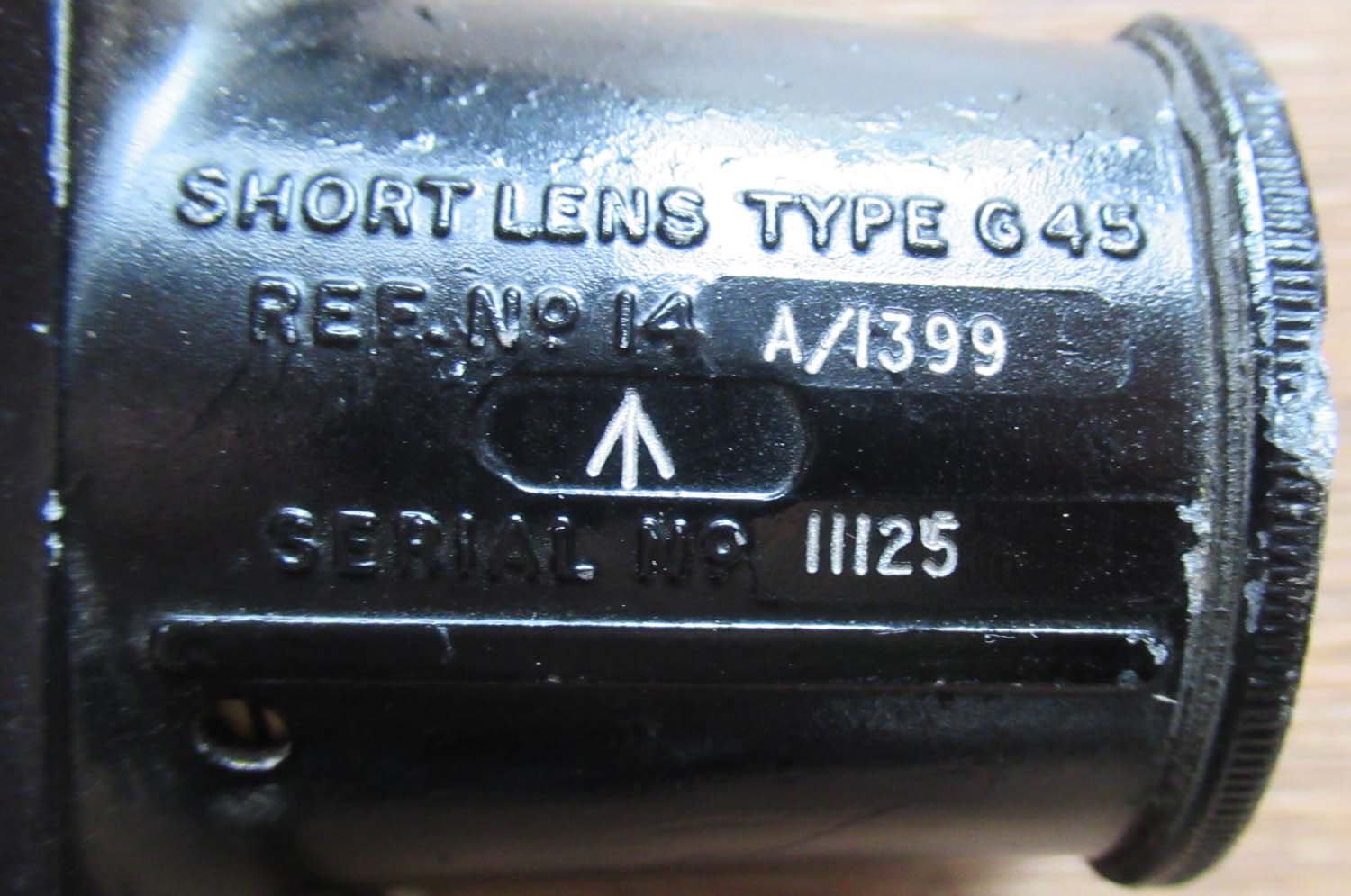
Seen above left
the aperture in a Spitfire behind which the camera gun was
mounted.
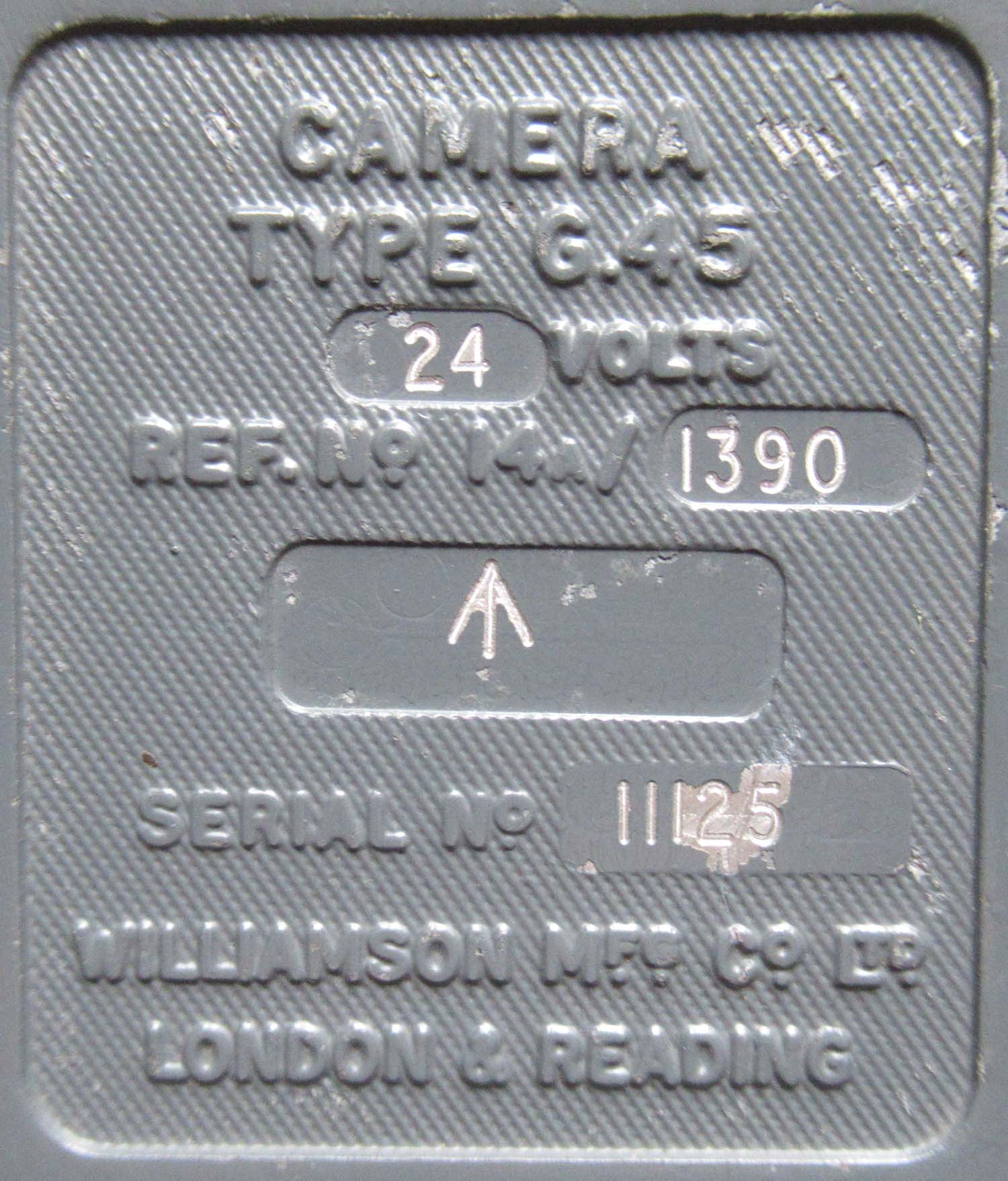 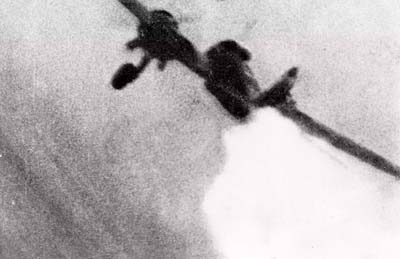 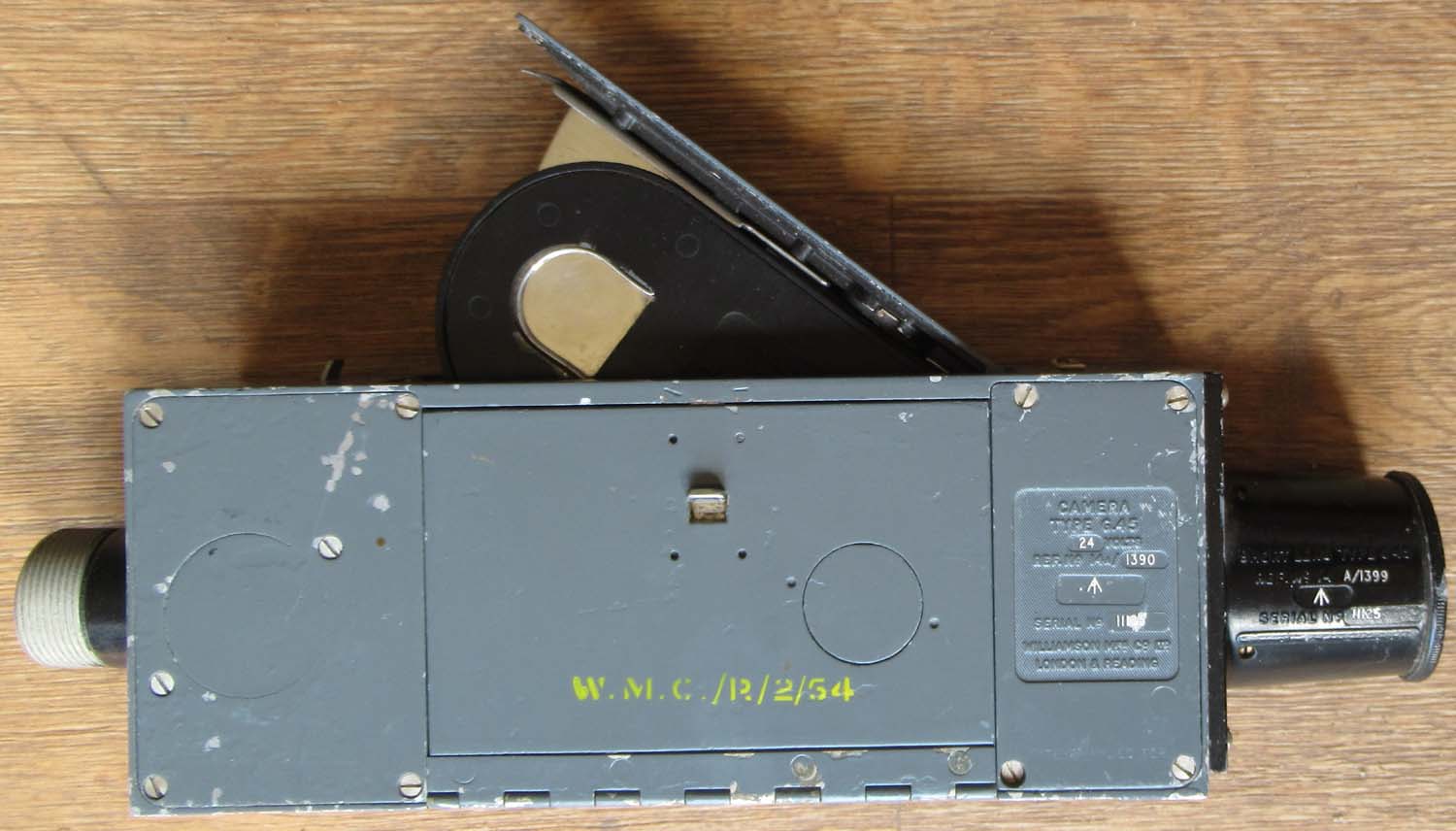
Above right the
last moments of a JU88 caught in Spitfires gun camera
£295


|
|
Click on pictures to enlarge
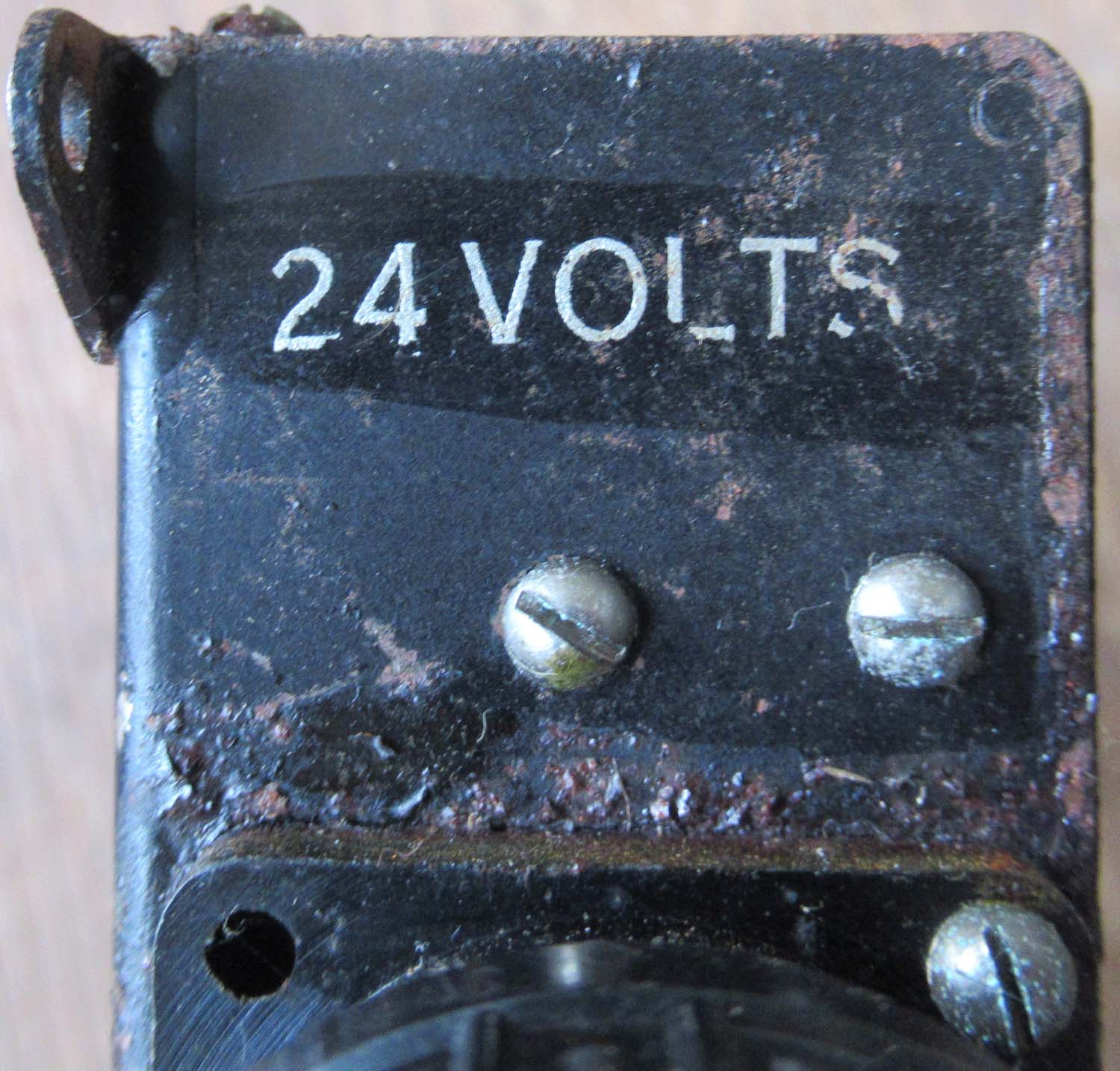
£75


|
Resistance Relay Box (No 22 pg1 Arm)
Ref No: 5D/1165
I believe this is part of the firing
systems for the guns.
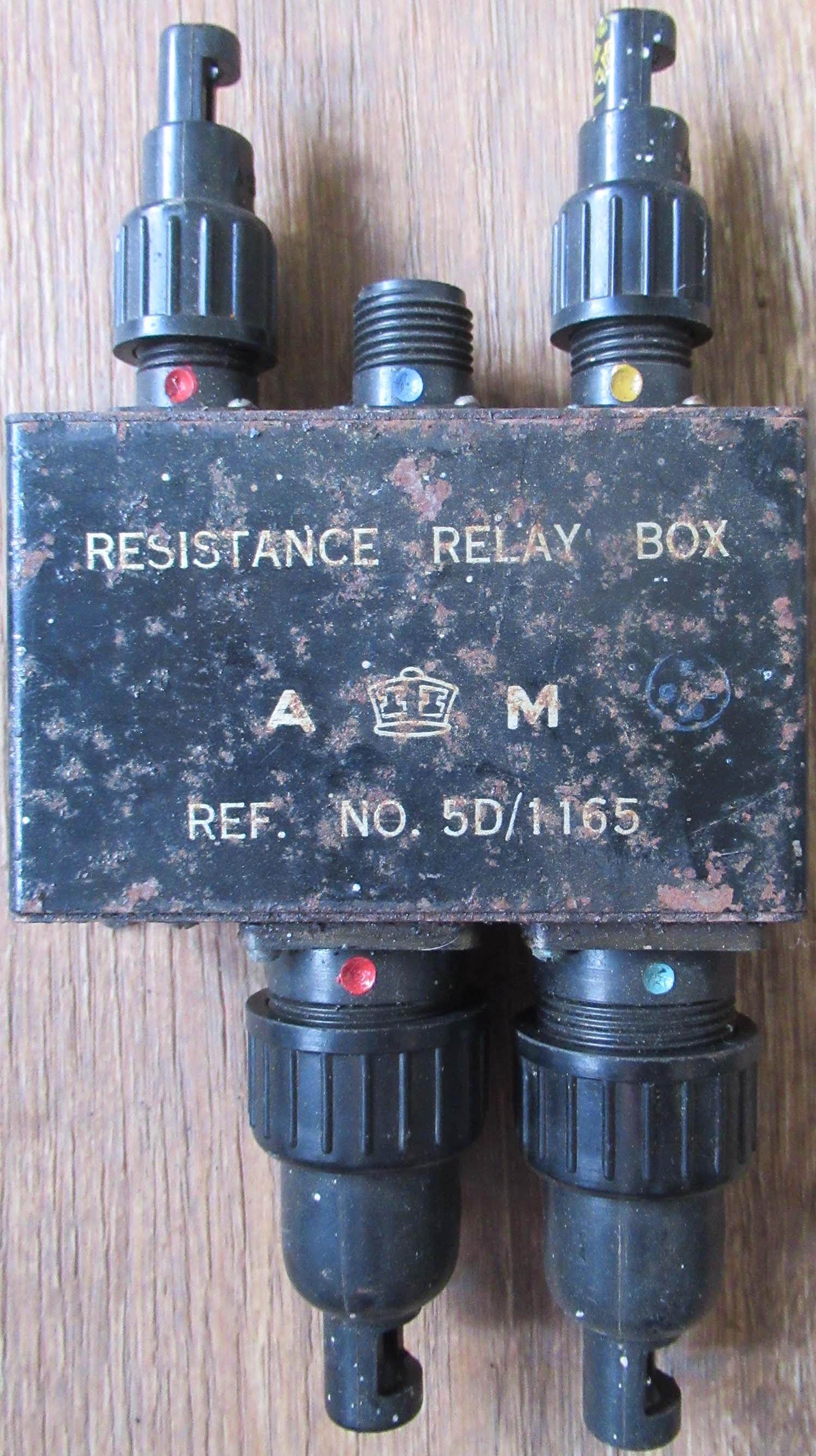
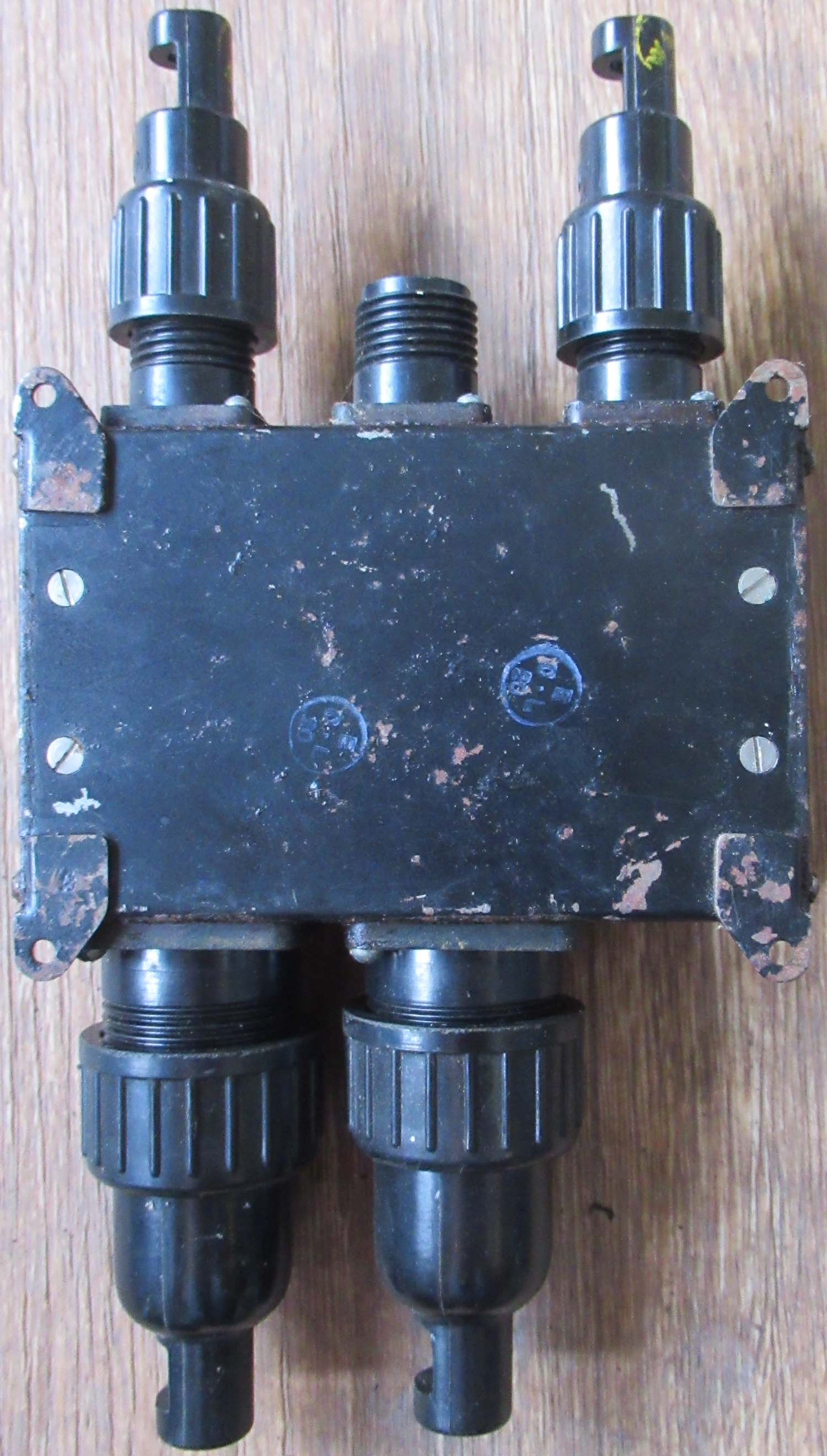
|
|
Click on picture to enlarge

£55


|
20mm Cannon Cleaning Brush (No 21 pg1 Arm)
Ref No: 5D/1165
Here is a brush for cleaning the
barrels of I believe a 20mm Cannon.
It can be fitted to a rod
or pulled through from the breach.
|
|
Click on
pictures to enlarge
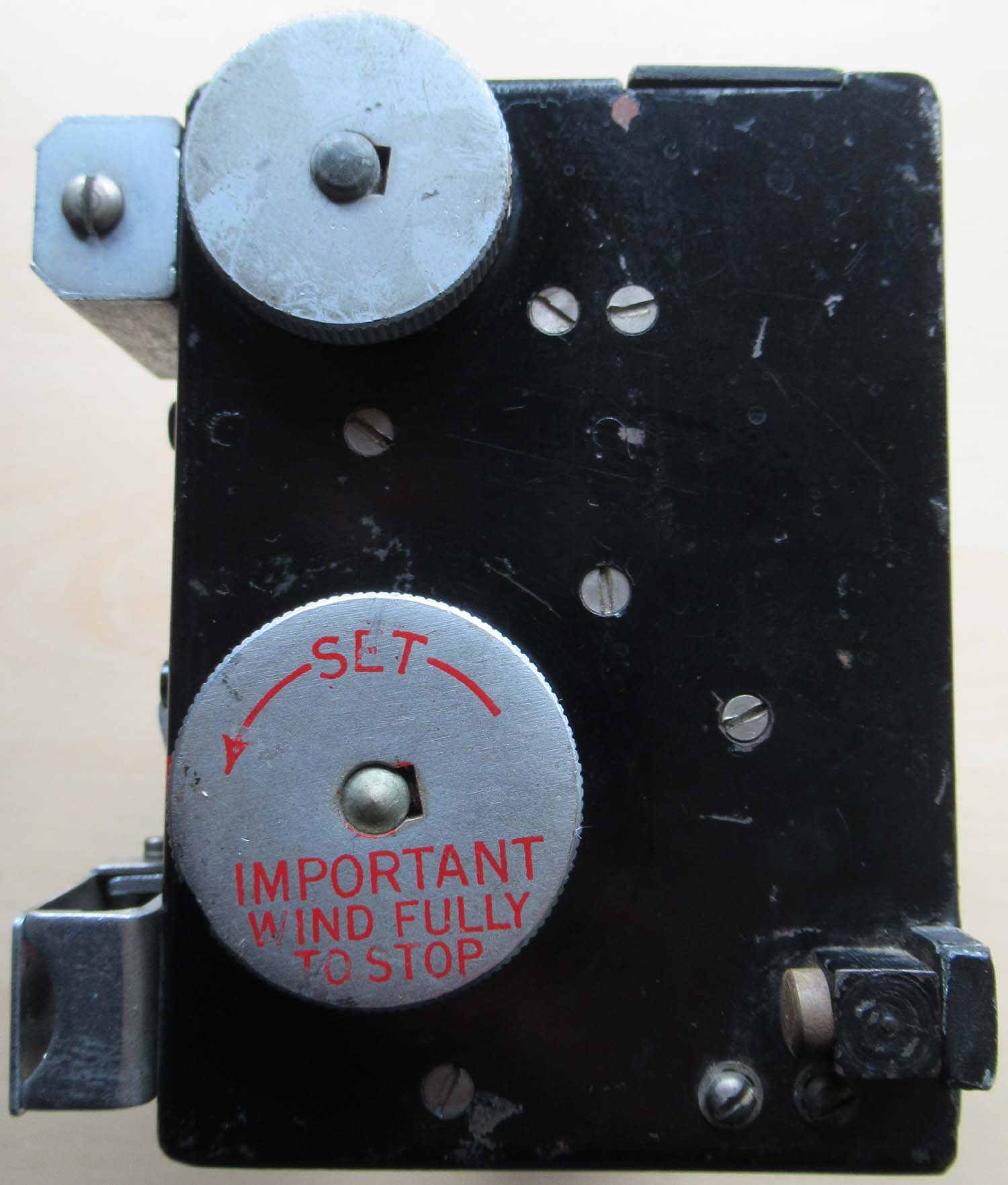
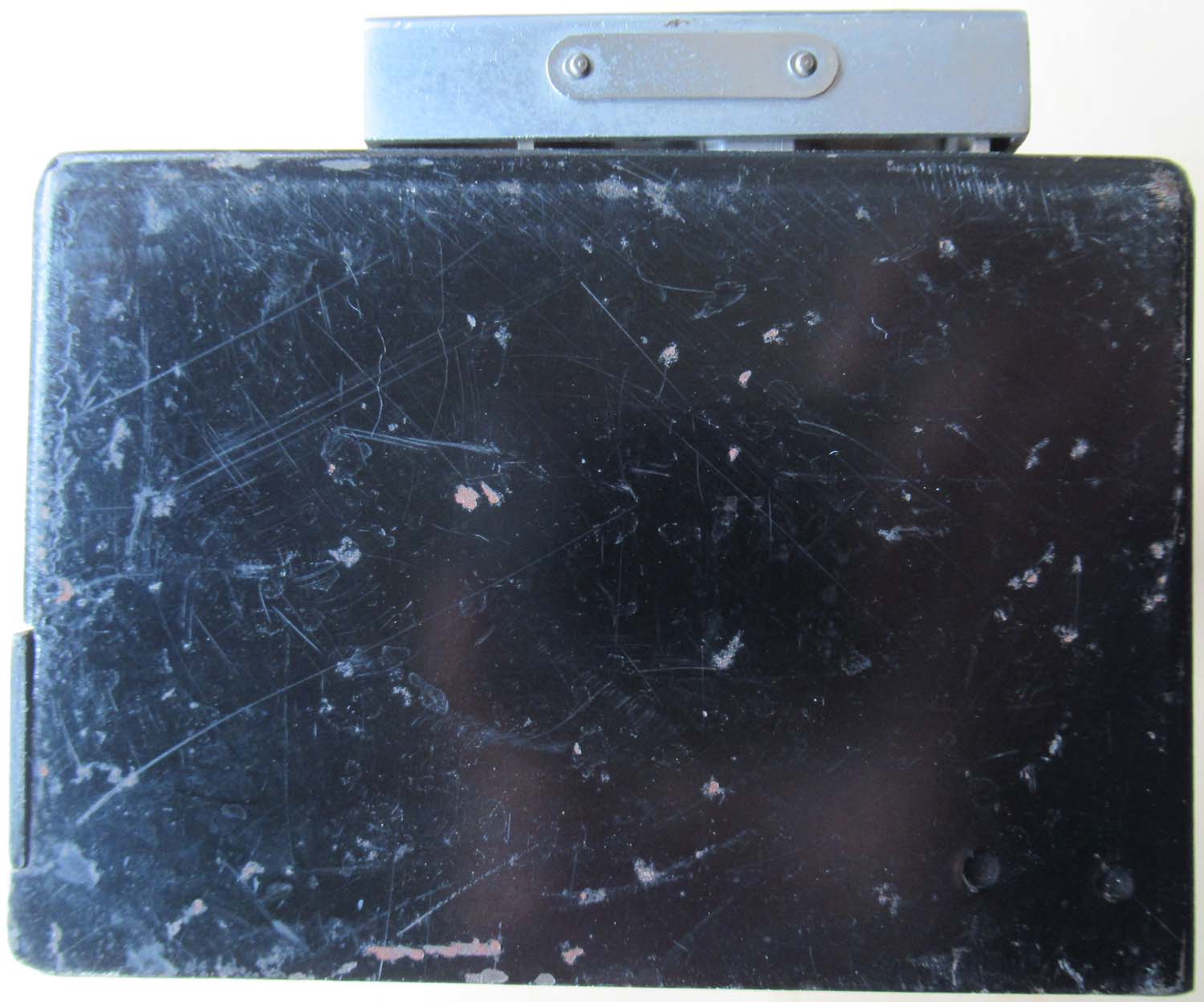 |
Sunderland Bomb
Selector (No 20 pg1 Arm)
This is an extremely rare bomb
selector switch panel, it does the same job as the
more common version fitted to the Lancaster and was used to
select which bombs would be released.
I believe these were fitted to
the Sunderland flying boats which attacked mainly U Boats
and enemy shipping . This is an educated guess as I am
unable to find any pictures of the bomb aimers position in
the Sunderland and based on the fact this has the option to
release a salvo of bombs, which allow for a target to be
straddled, more useful for attacking small moving objects
like U boats and I welcome any information which allows me
to offer the most accurate description.
Click on
pictures to enlarge
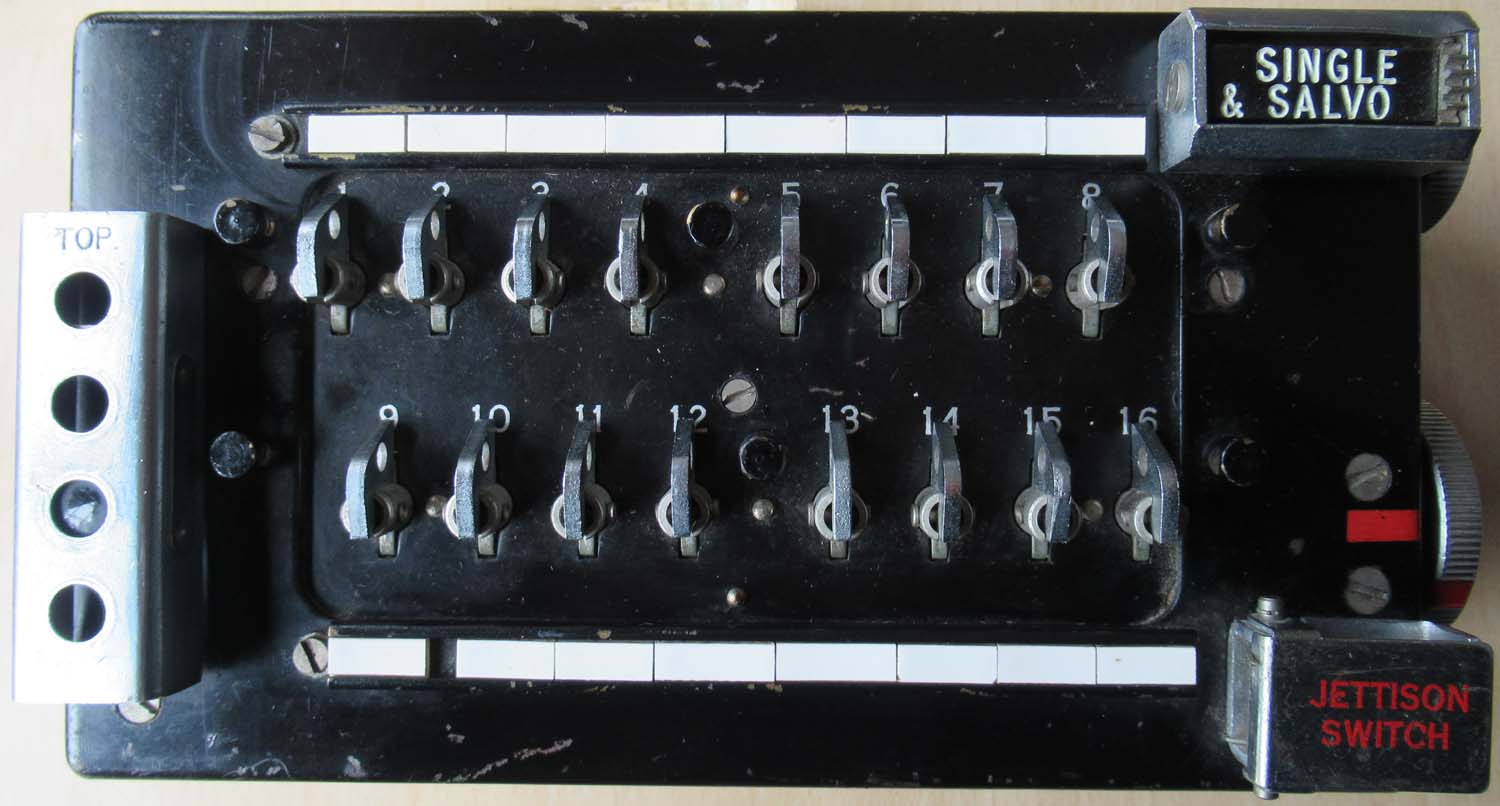
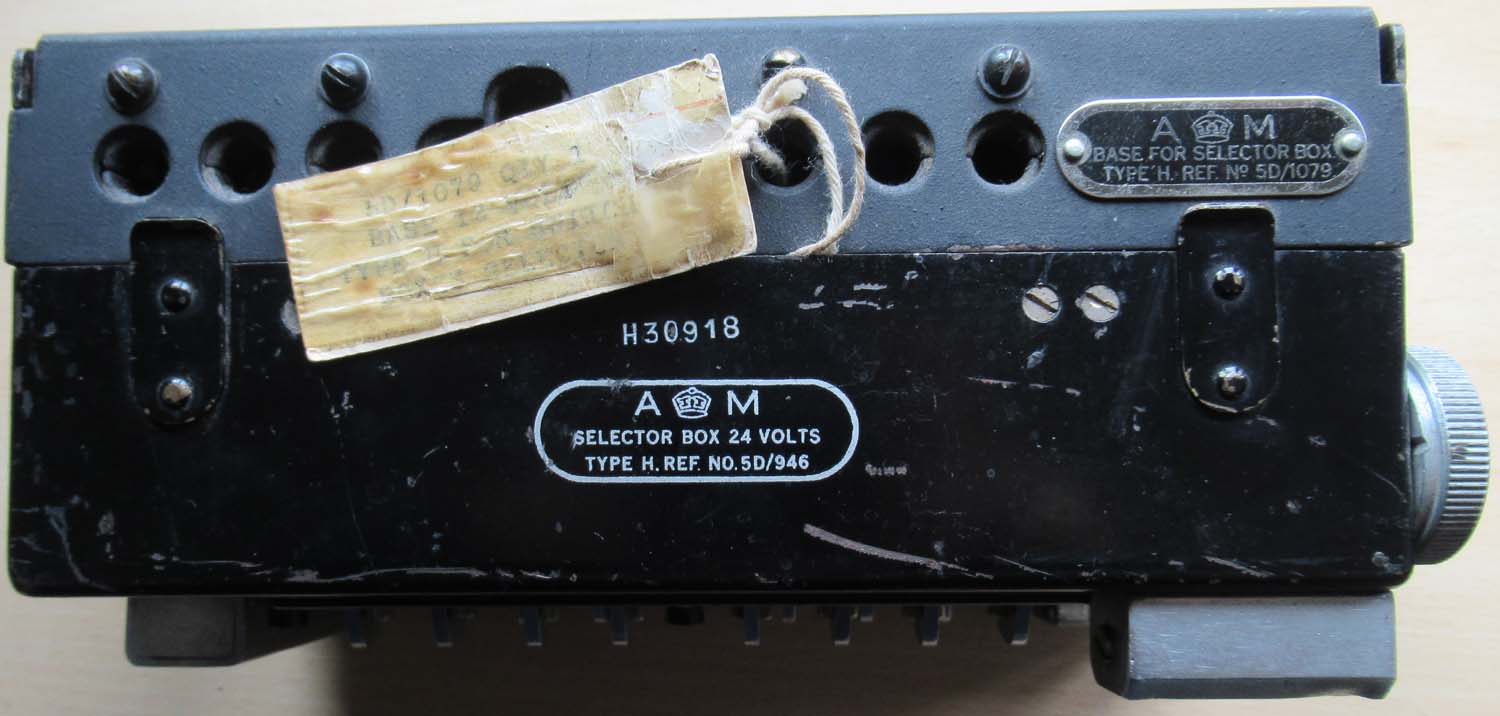
£375


|
|
Click on pictures to enlarge
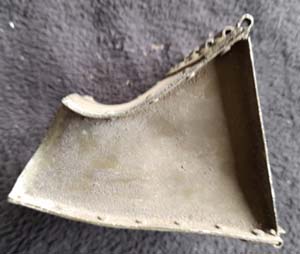
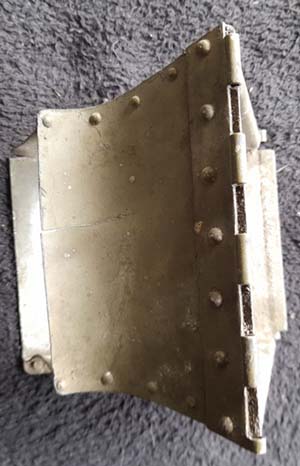
|
Japanese Zero Ammo Chute
(No 19 pg1 Arm)
This came from a collection
that I purchased from a long time collector. He started His
collection the the early 1950's and was given this peace by
a family friend who brought it back from a wreck he had
found in
Papua New Guinea. He said it came from the
wreck of a Zero fighter. I have done some research but can
find very little information on Zero parts. The only part
number I can find is the small mark shown below right. The
colour of the part appears to be correct.
Click
on pictures to enlarge
 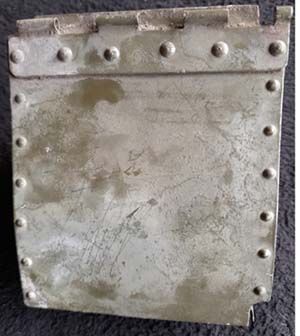 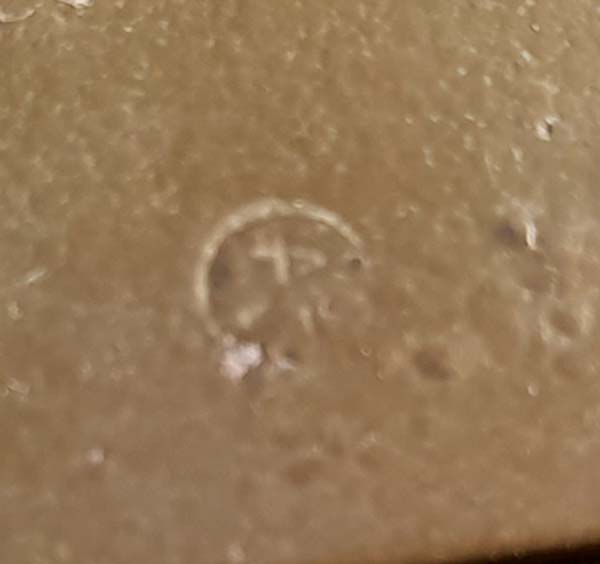
The struggle for New Guinea began with the capture
by the Japanese of
the city of Rabaul at
the north-eastern tip of New
Britain Island in
January 1942 (the Allies responded with multiple bombing
raids.
Rabaul overlooks Simpson
Harbour,
a considerable natural anchorage, and was ideal for the
construction of airfields. Over the next year, the Japanese
built up the area into a major air and naval base. I cannot
100% confirm this parts identity but it certainly came from
Papua New Guinea and
almost certainly there were still aircraft wrecks there in
the 1950s. Japanese aircraft parts from WWII are the hardest
to find of all the aviation collectables of that period and
its possible that this is not an ammo chute it may be
something completely different but from my years of
experience it seems the most likely application.
The
chute measures almost exactly 3 1/2 inches or 85mm the
length of the cartridge used by the Zero was 56mm.
If
you have any information or drawings of this part
please contact me any
information will be gratefully received.
The Type
97 aircraft machine gun was
the standard fixed light machine
gun on
aircraft of the Imperial
Japanese Navy during WWII.
It was highly suitable for synchronization and
was used as the cowling armament on the A6M
Zero.
However, the Type 97 remained chambered for the British 0.303 in
(7.7 mm) cartridge and the Type 89 was chambered for a new
0.303 in (7.7 mm) cartridge developed in Japan, making their
ammunition non-interchangeable.
Out of
stock more wanted please
contact me |
|
Click on pictures to enlarge
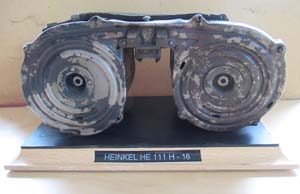
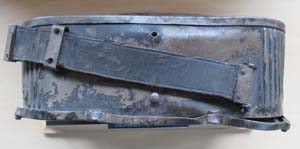
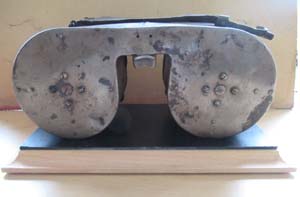
|
MG 15 magazine
from a HE III (No 18 pg1 Arm)
Here is a magazine from an MG 15
taken from a crashed HE III.
The MG 15 was a German 7.92 mm machine gun
designed specifically as a hand manipulated defensive gun
for combat aircraft during the early 1930s. By 1941 it was
replaced by other types.
HASAG 35
D-T15 Nr 84pp F1 46300
Click on pictures to enlarge
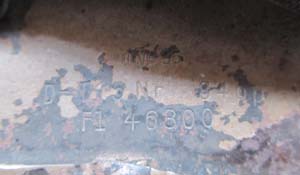 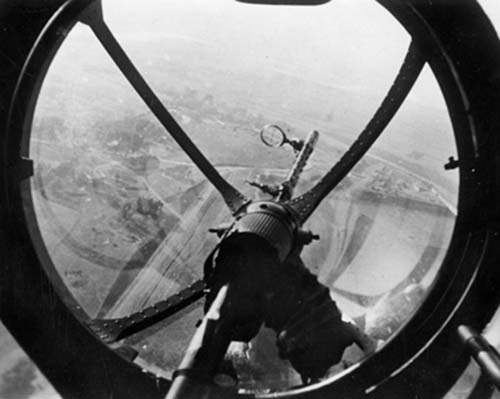
Shown above
right the MG 15 mounted in a HE 111
£325


|
|
Click on the
pictures to enlarge
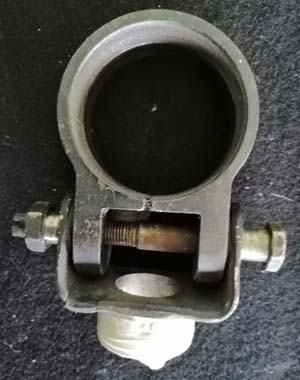
|
50 Caliber Gun
Mount 3 (No 17 pg1 Arm)
Here is an original mount for a
50 cal it has be cut at some stage probably because it was
difficult to remove the gun, this could be repaired but is
still ok for static use. I was told this was fitted to a
P47.
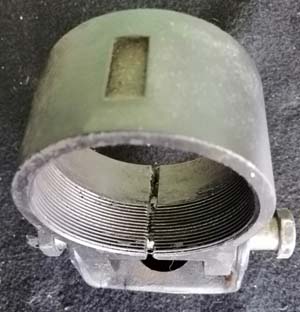
£275


|
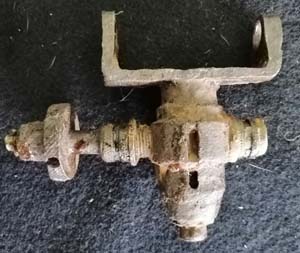
Click on pictures to enlarge
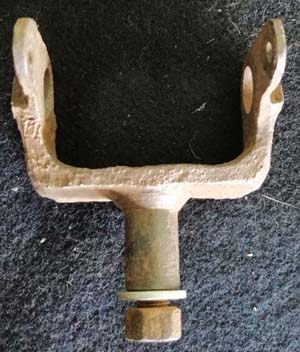
|
Hurricane 303
Aircraft Gun Mounts (No 16 pg1 Arm)
Here is two super rare .303 Gun
mounts for the Hurricane.
The adjustable mount is for the
rear to adjust elevation, and the other is the front mount.
Please note they are in relic
condition.
£399 for both


|
|
Click on pictures to enlarge
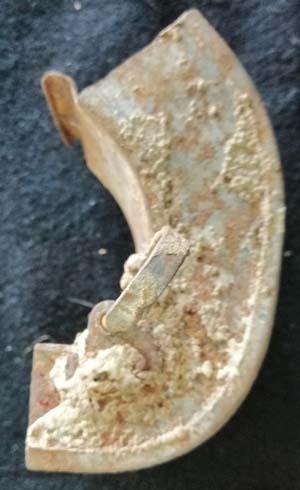
|
Spitfire 303
Ammo Chute (No 15 pg1 Arm)
Here is an original Spitfire
ammo chute for the .303 MG. It's got some surface
corrosion but appears to be complete without any major
structural damage.
Click on pictures to enlarge
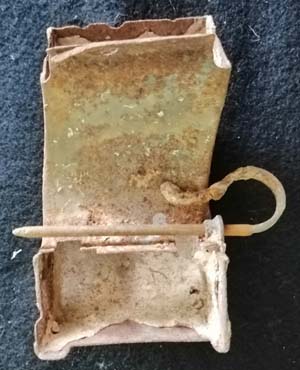 
Above right the ammo chute seen in situ
in a Spitfire.
£195


|
|
Click on pictures to enlarge
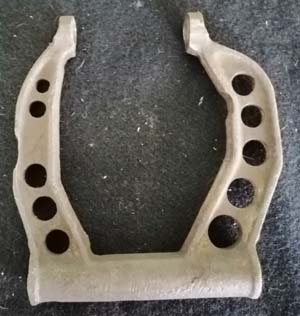
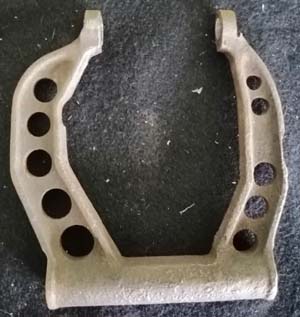
|
Spitfire 303
Gun Mount (No 14 pg1 Arm)
Here is an original Spitfire
horseshoe shaped mount for the 303.
Click on pictures to enlarge
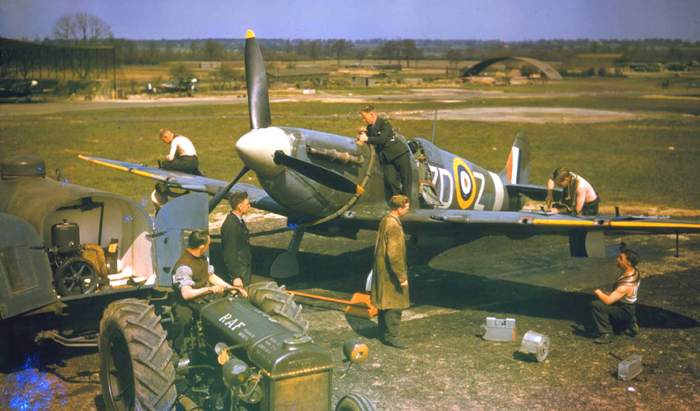 
Above left Spitfire Mk Vb RAF
222Sqn ZDZ being rearmed North Weald Essex May 1942. Above
right you can see the bracket in situ in a Spitfire.
£385


|
|
Click on
pictures to enlarge


 |
Lancaster T1
Bombsight Lever (No 13 pg1 Arm) This is a lever from a
Lancaster T1 bombsight.
In good original condition
Click on
pictures to enlarge

£75


|
|
Click on pictures to enlarge
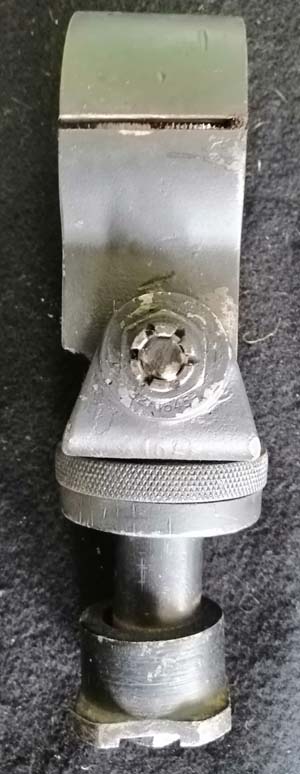
|
50 Caliber Gun
Mount 2 (No 12 pg1 Arm)
Here is an original mount for a
50 cal. I was told this was fitted to a P47.
It has be cut at some stage probably because it was
difficult to remove the gun. This could be repaired but is
still ok for static use.
321645
Click on pictures to enlarge
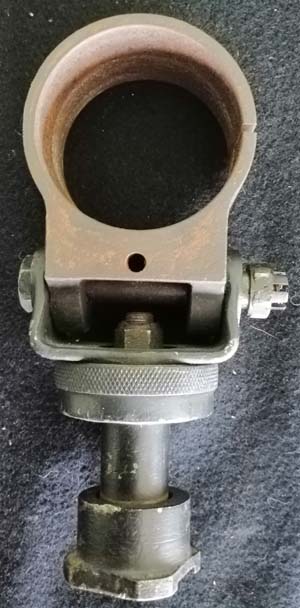
£275


|
|
Click on pictures to enlarge
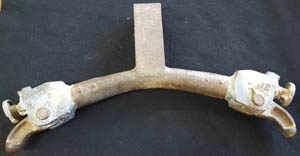
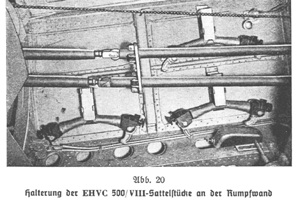
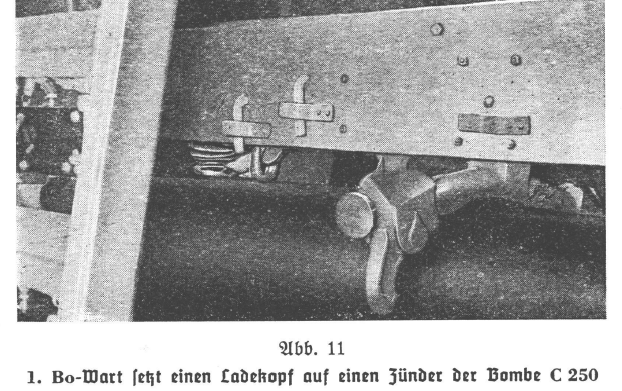
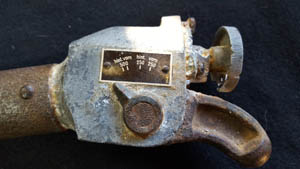
|
Dornier 17 Bomb
Cradle (No 11 pg1 Arm)
This is an extremely rare
piece a bomb cradle from a Dornier 17 recovered in Holland.
The piece is in reasonable condition please click on the
pictures to enlarge them and take a better look. This bomb
cradle was only used in the Dornier 17 and I believe there
is only one surviving example of this aircraft in the world.
Seen in situ left the pictures were taken from the DO 17
manual.
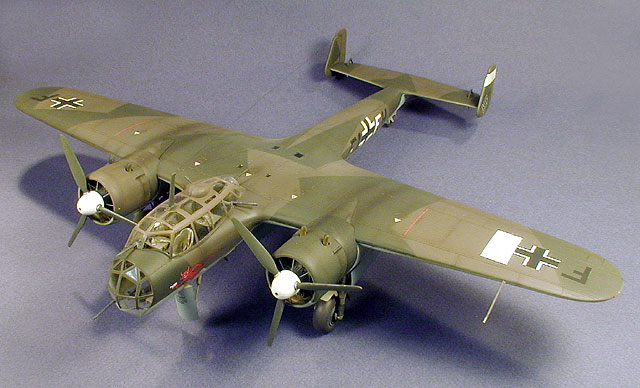
Dornier
constructed a number of aircraft that
were later to be dubbed the "Flying
Pencils" due mainly to the long thin
outline of the fuselage. probably the
most famous, and the one that was to
take part in the Battle of Britain
period was the Dornier 17. Because of
the fuselage shape, it was highly
improbable that the aircraft was
originally designed as a passenger
aircraft for the Lufthansa Airline. More
than likely the designers hoped that it
would be accepted as a transport
although many believe that the aircraft
was destined to become a mail plane that
could also carry four to six passengers.
It was to
see service throughout the Battle of
Britain and in operations during 1940
and 1941. One of the DO 17 variants, was
modified as a night fighter and had a
nose section of a Ju88C fitted complete
with cannon and machine guns. Additional
to that was the installation of a FLIR
(Forward Looking Infra Red) detector,
said to be the worlds first. The first
success of the use of the FLIR detector
was the shooting down of a Wellington
bomber of RAF Bomber Command on the
night of October 16th/17th 1940 over the
French-German border.
|
|
£295


|
|
Click on pictures to enlarge
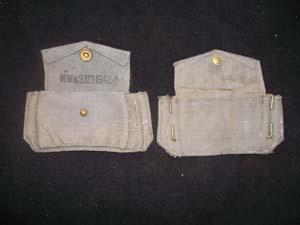
|
Ammo Pouch (No 10 pg1 Arm)
Dated 1942 Pilot Officers
ammo pouch for Pistol webbing. Good original condition.
£25


|
|
Click picture to enlarge
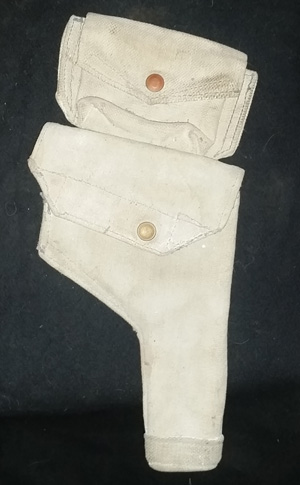
|
Original WW2
Holster and Ammo Pouch
(No 9 pg1 Arm) Here we have a
LIGHT coloured gun holster and ammo pouch.
The holster is dated 1943
and was produced by Craft Ltd.
This is in good original
condition.

£125


|
|
Click on
pictures to enlarge
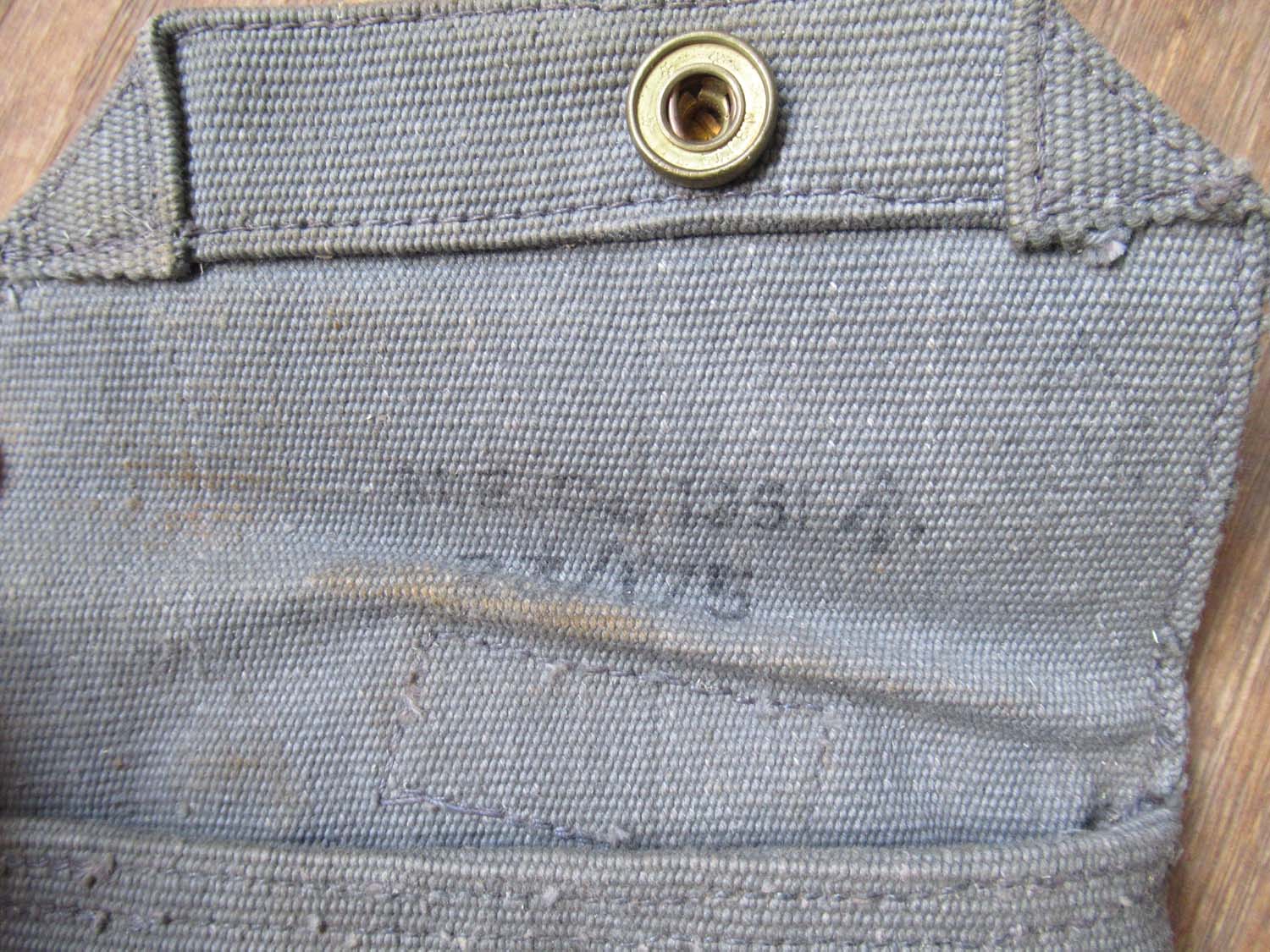
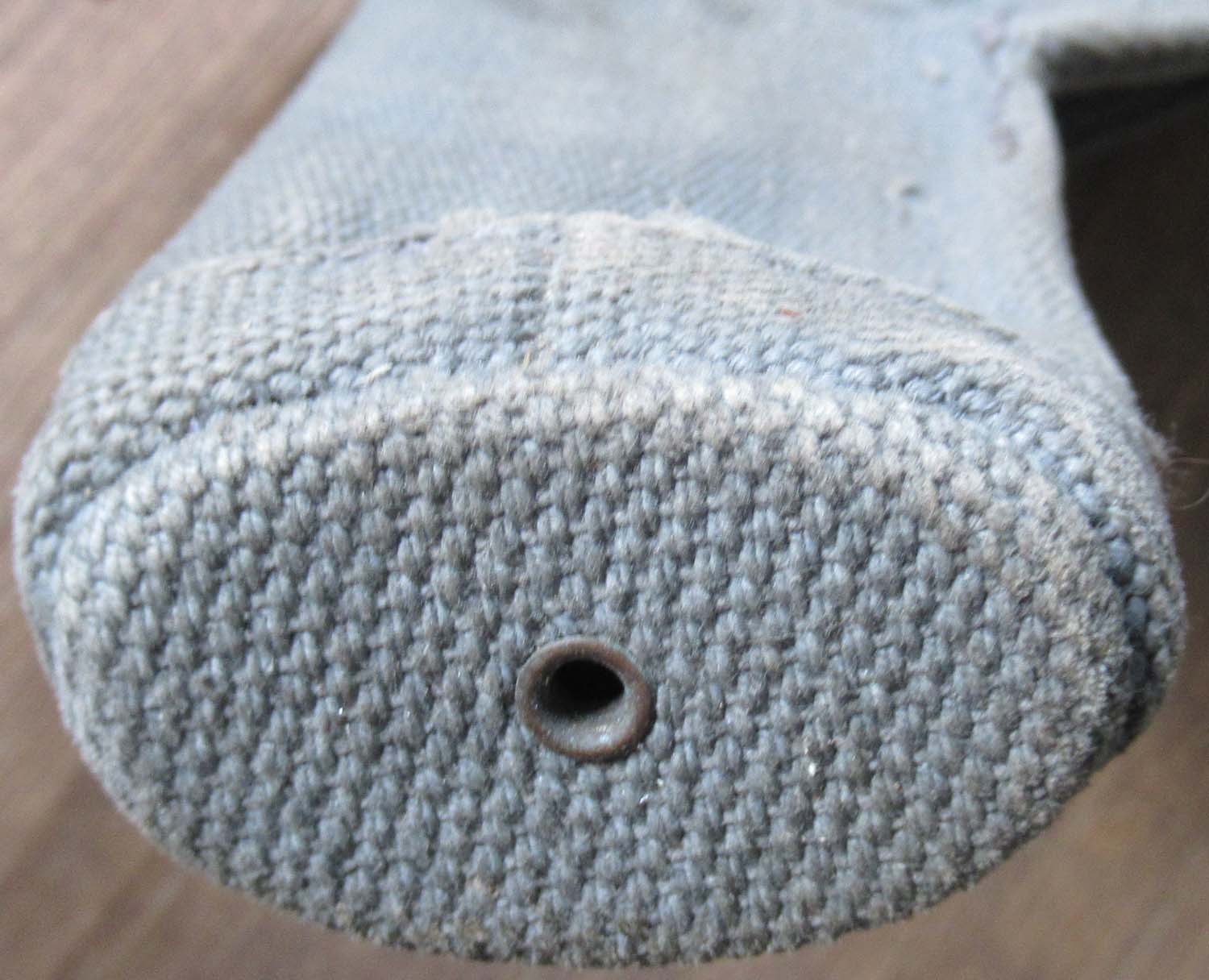
£75


|
Original
Holster
(No 8 pg1 Arm) Here we have a light grey
coloured gun holster.
The holster is dated 1951
and was produced by M.E. Co.
This is in good original
condition
23/175
Click on
pictures to enlarge
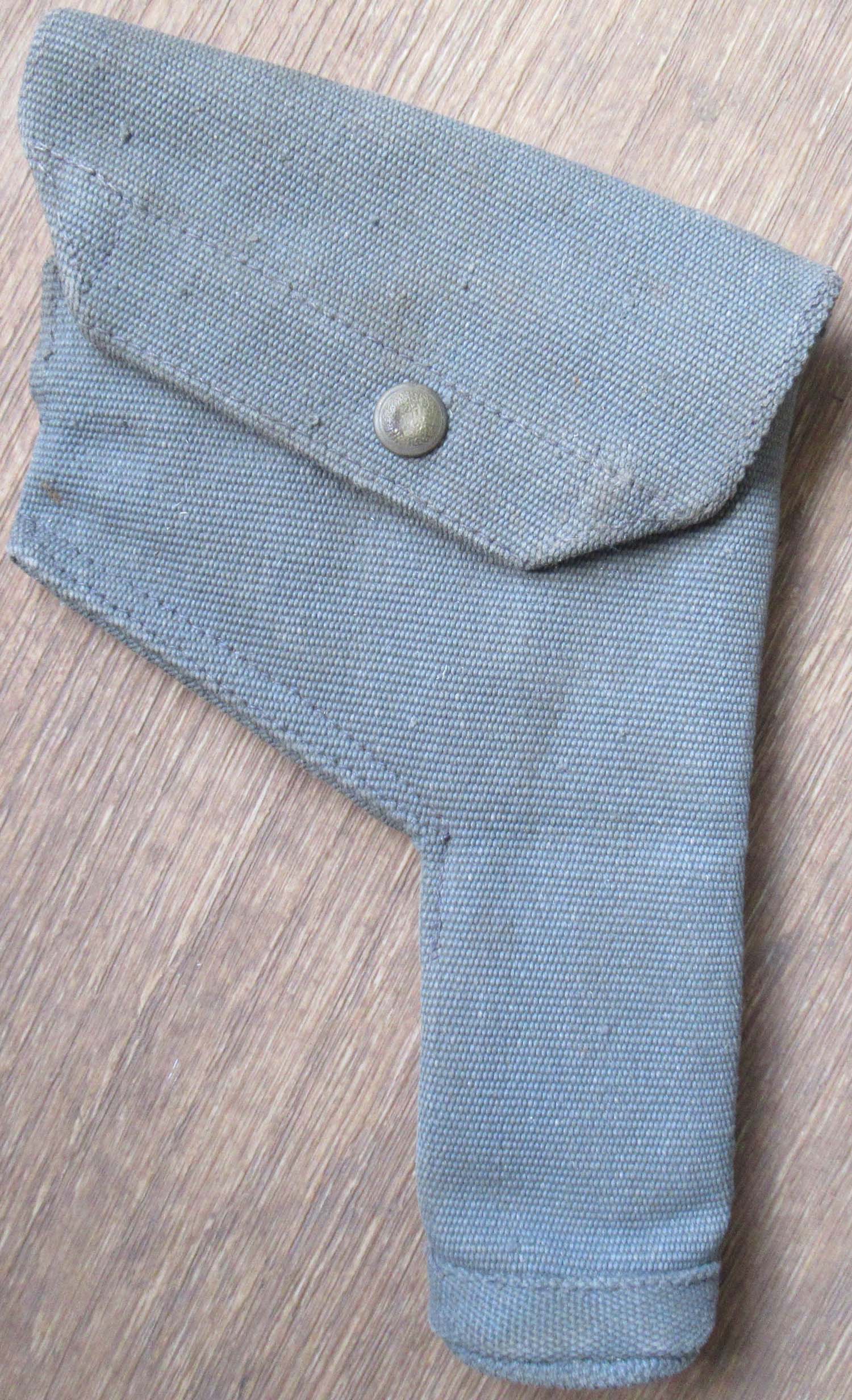
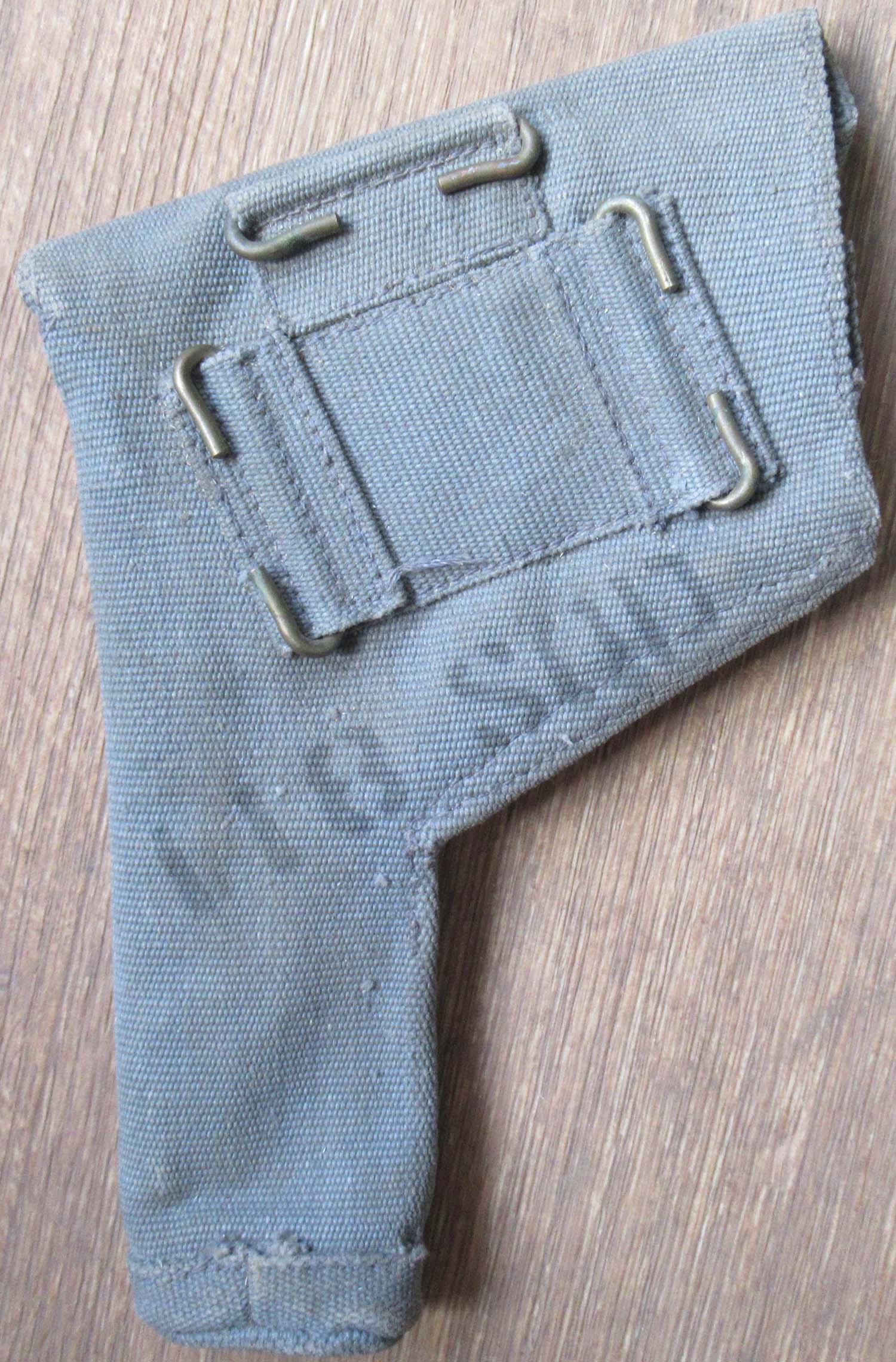
|
|
Click on pictures to enlarge



 |
Martin 250ce Mid Upper Gun Turret
Emergency Hand Crank
(No 7 pg1 Arm)
Here is a Martin 250ce mid upper gun turret emergency
hand crank for use if the turrets hydraulics failed. In good
original condition fully functioning.



This turret type was fitted to - Mk X Avro Lancaster,
Liberator, Mitchell and Douglas A20 wartime bomber aircraft.
Of the 7,400 Lancaster built, Victory Aircraft Ltd of
Malton, Ontario Canada manufactured 430 Lancaster Mk. Xs
powered by Packard-built Merlin
Click on pictures to enlarge

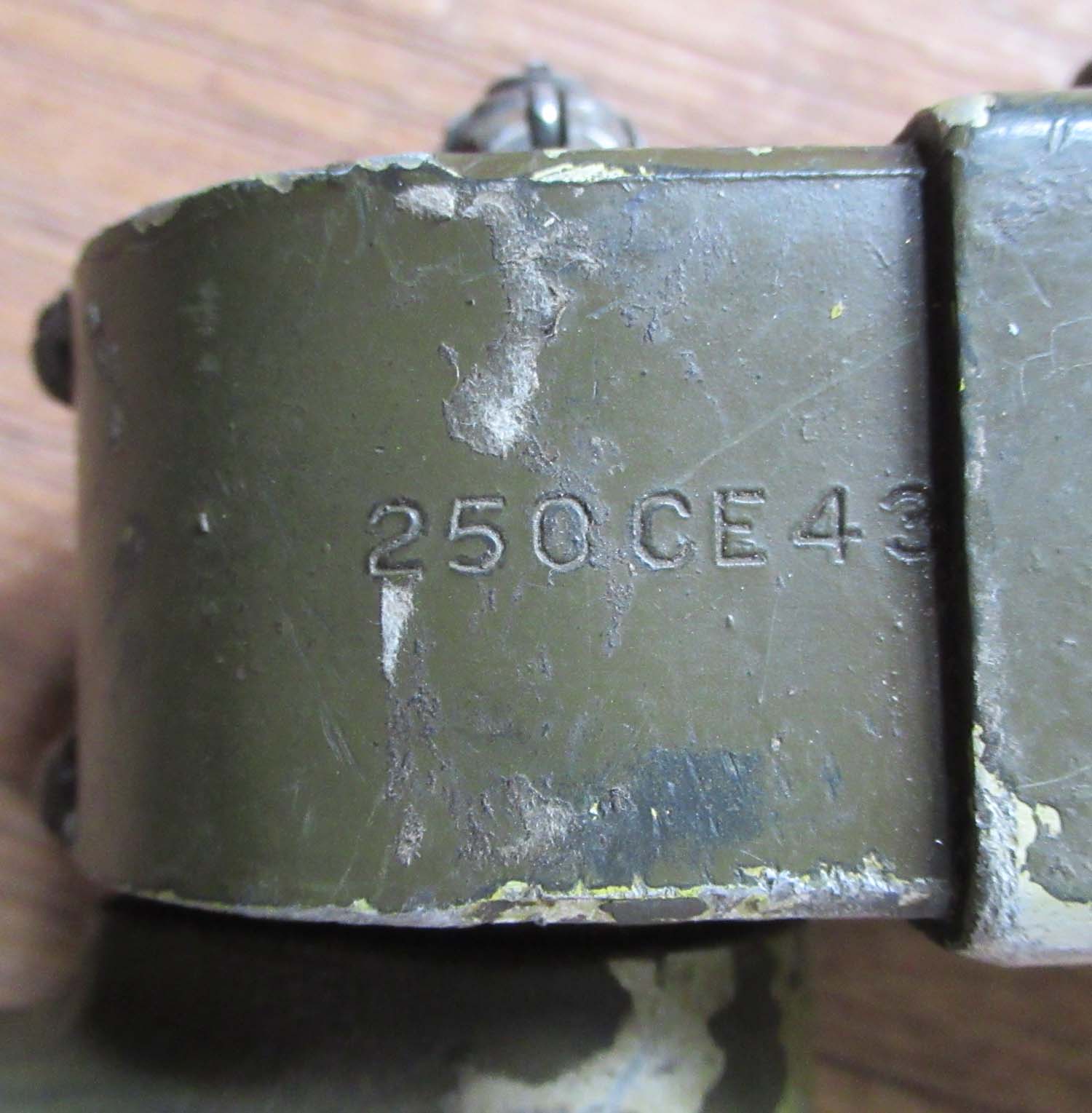
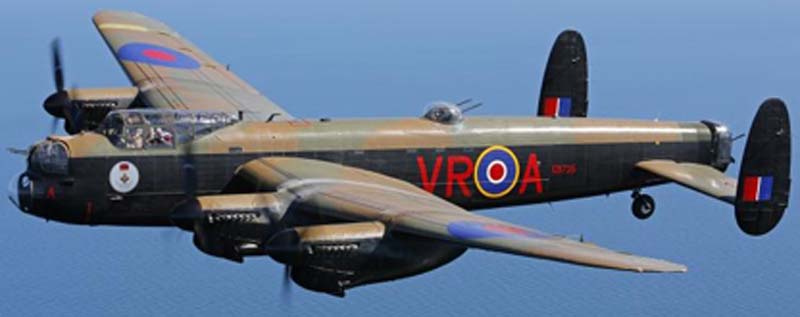
Shown above the MK X Lancaster Bomber
built exclusively in Canada with heavier 50 cal defensive
armament.
£475


|
|
Click on pictures to enlarge
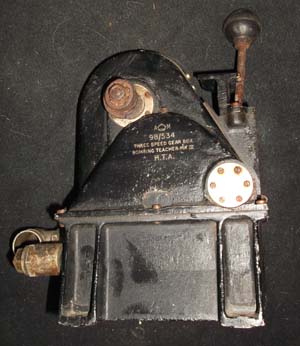
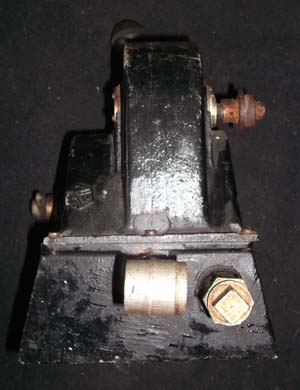
|
Bombing Teacher
Mk IV
(No 6 pg1 Arm)
A three speed gearbox Bombing
Teacher MK IV.
Marked with an air ministry
crown, this is an extremely rare piece used in the training
of bomb aimers. In good functional
condition.
9B/534 HTA
Click on pictures to enlarge
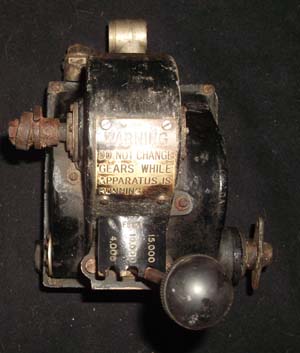
£175


|
|
Click on pictures to enlarge
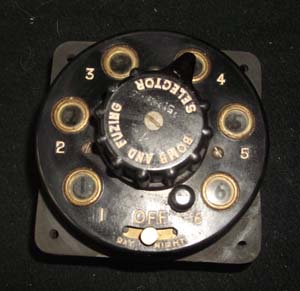 |
Bomb and Fusing
Selector
(No 4 pg1 Arm)
New old stock boxed bomb and
fusing selector. With selector for night and day settings.
A rare quality piece, possibly used in Wellingtons.
5D/1363
Two available
£65 each


|
|
Click on pictures to enlarge
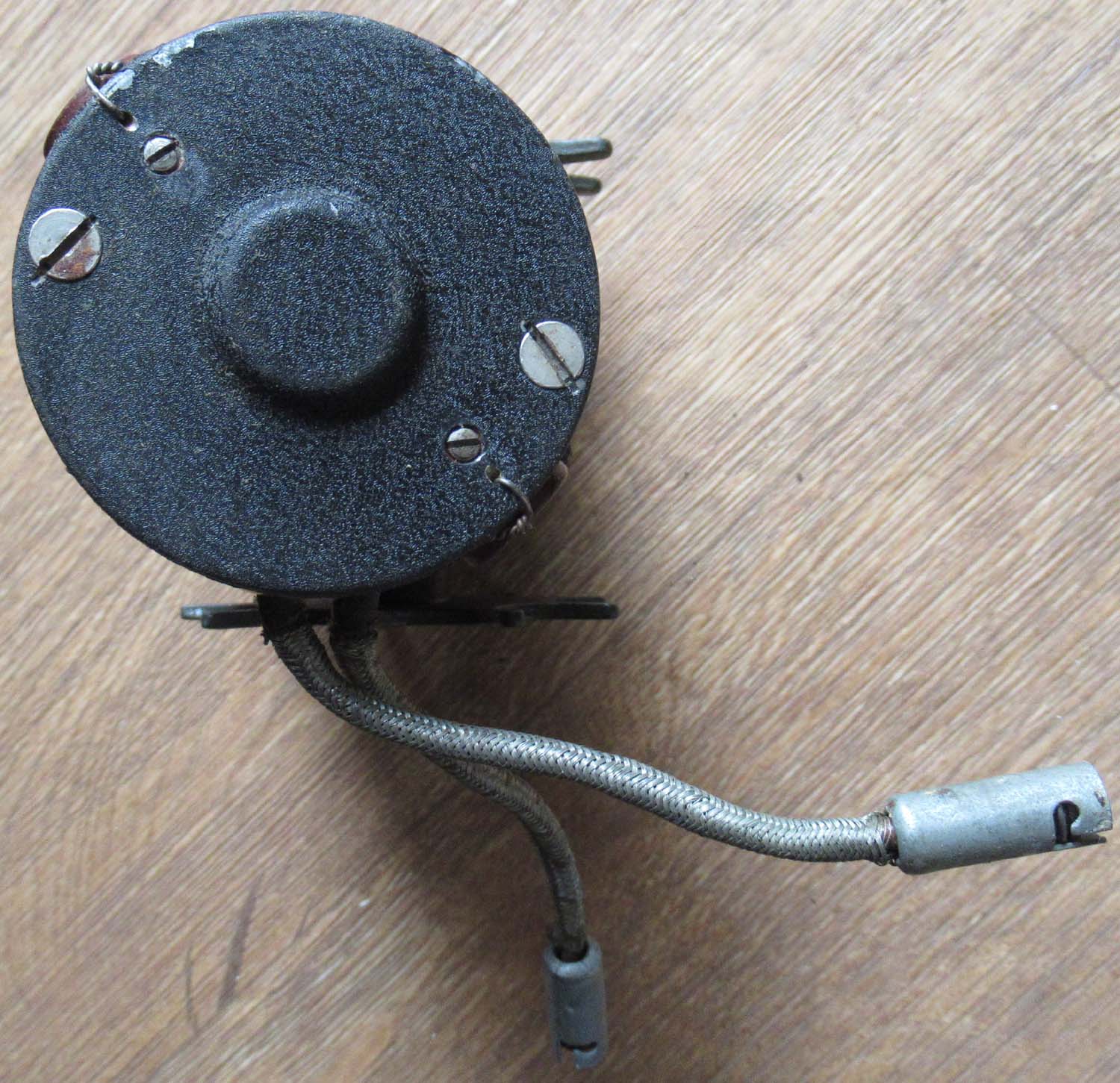
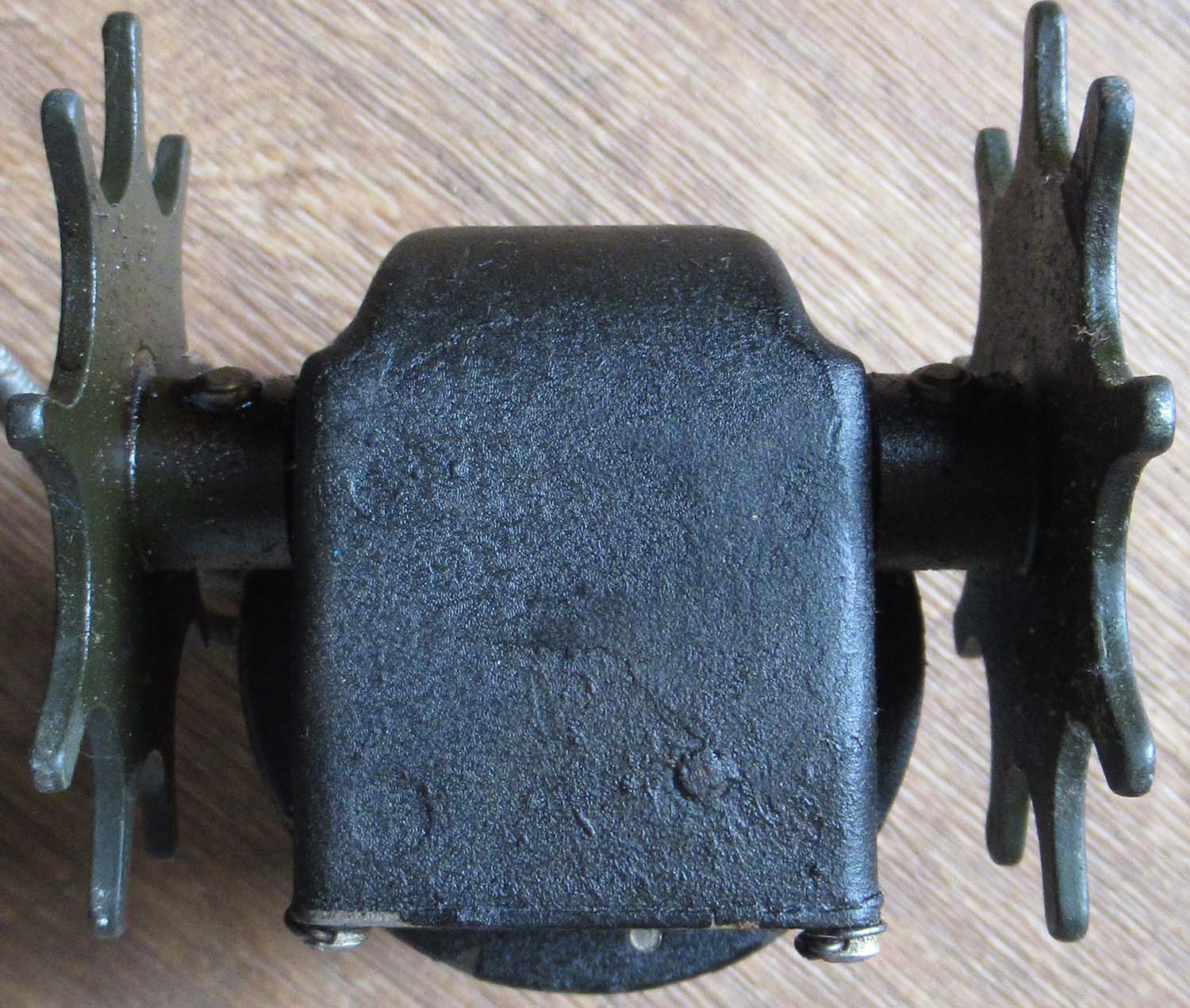
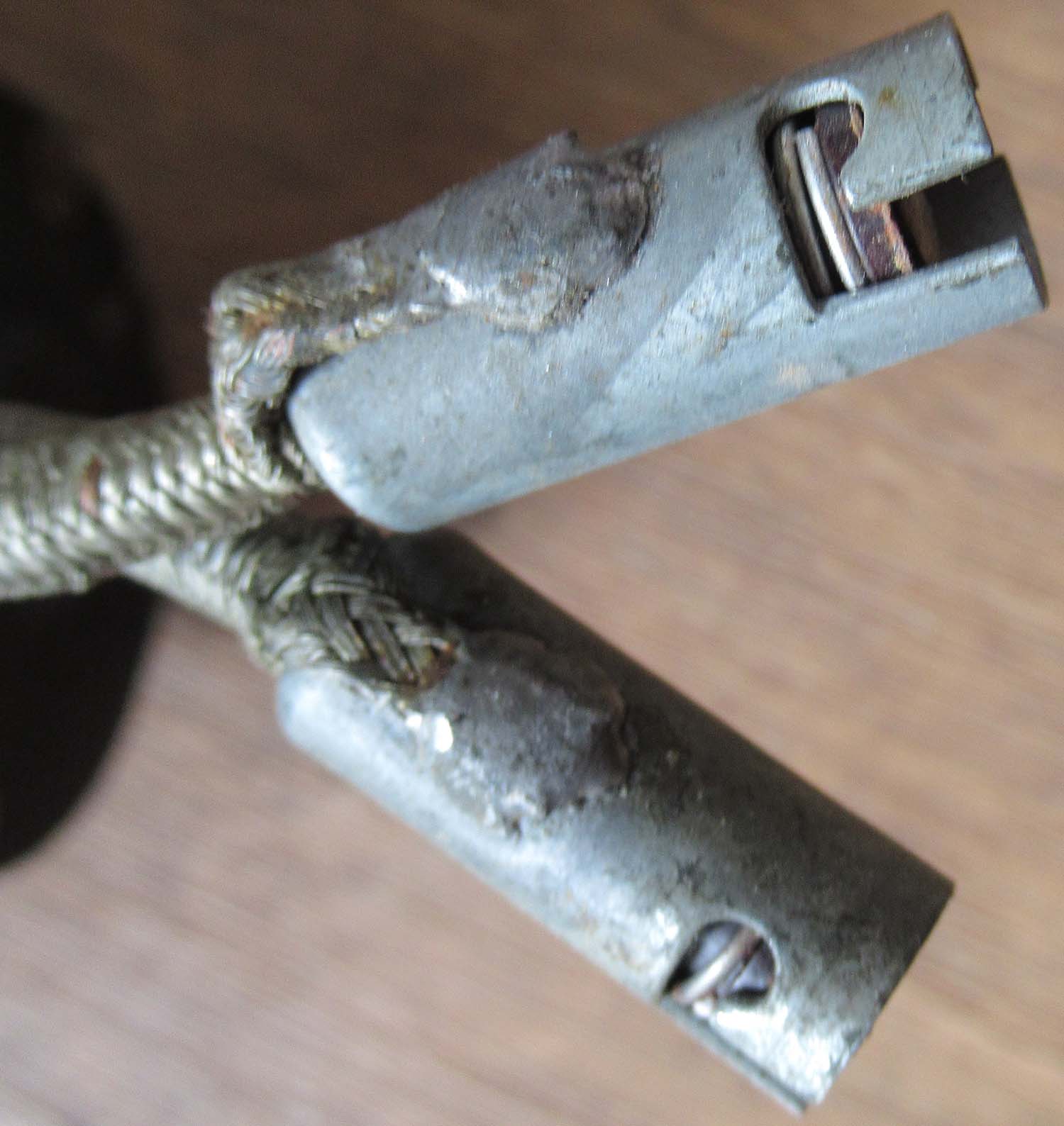
£375


|
Martin 250ce Mid Upper Gun
Turret Ammo Feed Motor
(No 3 pg1 Arm)
Here is a Martin 250ce mid upper gun turret ammo feed
motor (booster).
This turret type was fitted to - Mk X Avro Lancaster,
Liberator, Mitchell and Douglas A20 wartime bomber aircraft.
This 'New Old Stock' Feeder/Booster unit is in good original
condition and was taken out of its cardboard storage box
(box now missing).
It is complete with double sprockets for aligning & feeding
the .50 calibre ammunition to the gun, and has the two
screened power & control cables with plugs, still attached.
The sprockets turn nice and smoothly, the unit is probably
working, but cannot guarantee this.
Of the 7,400 Lancaster built, Victory Aircraft Ltd of
Malton, Ontario Canada manufactured 430 Lancaster Mk. Xs
powered by Packard-built Merlin
Click on pictures to enlarge
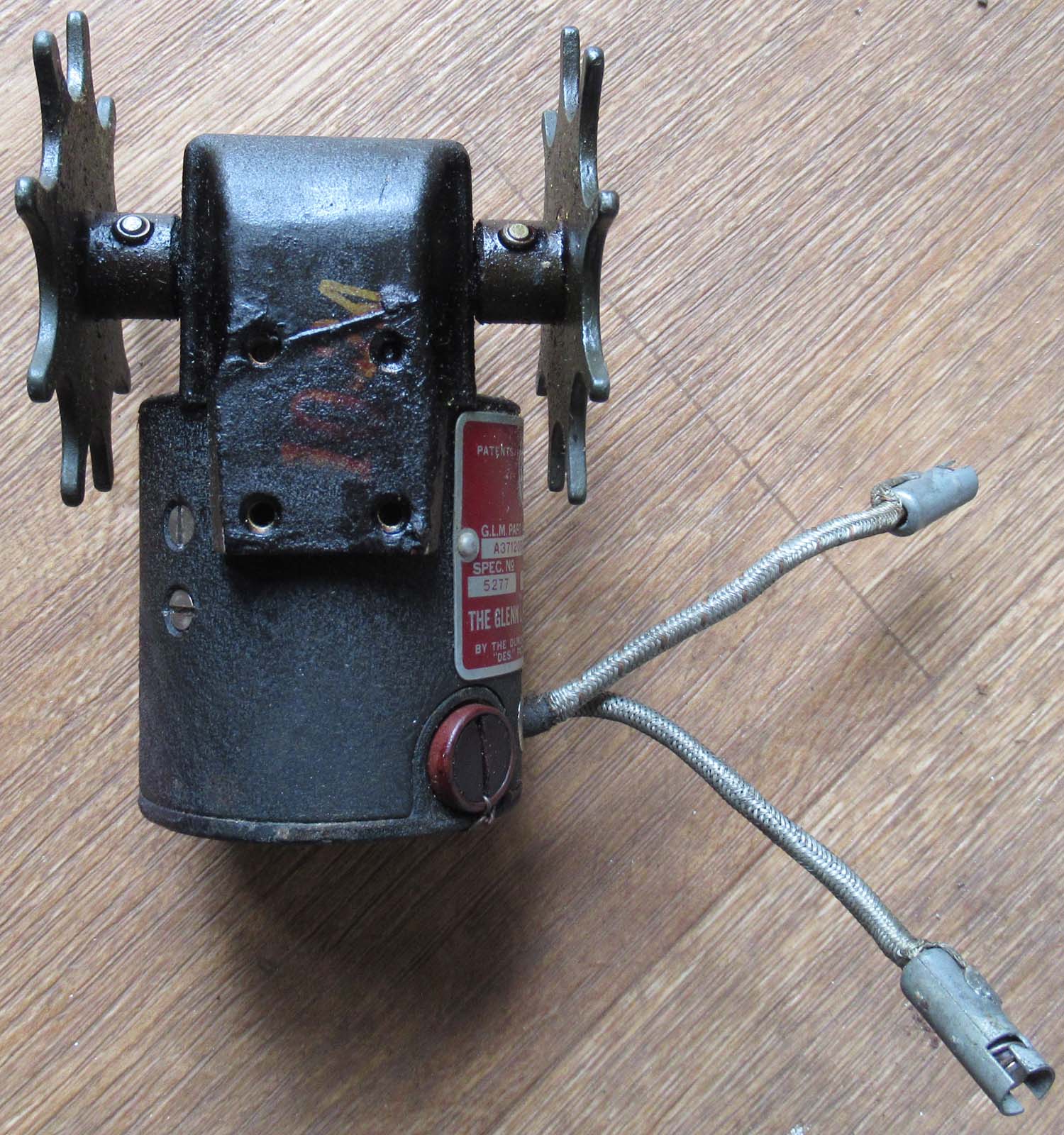
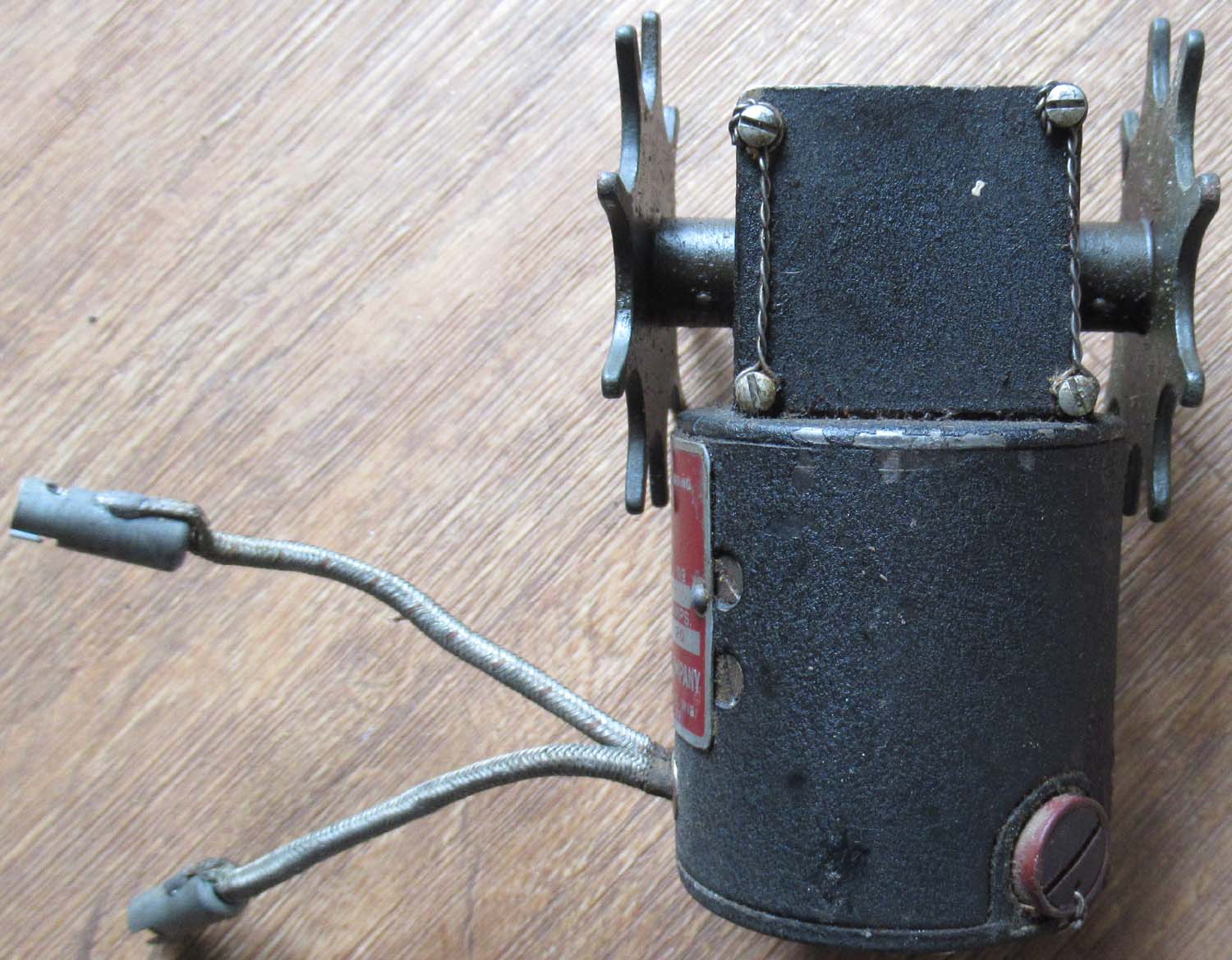
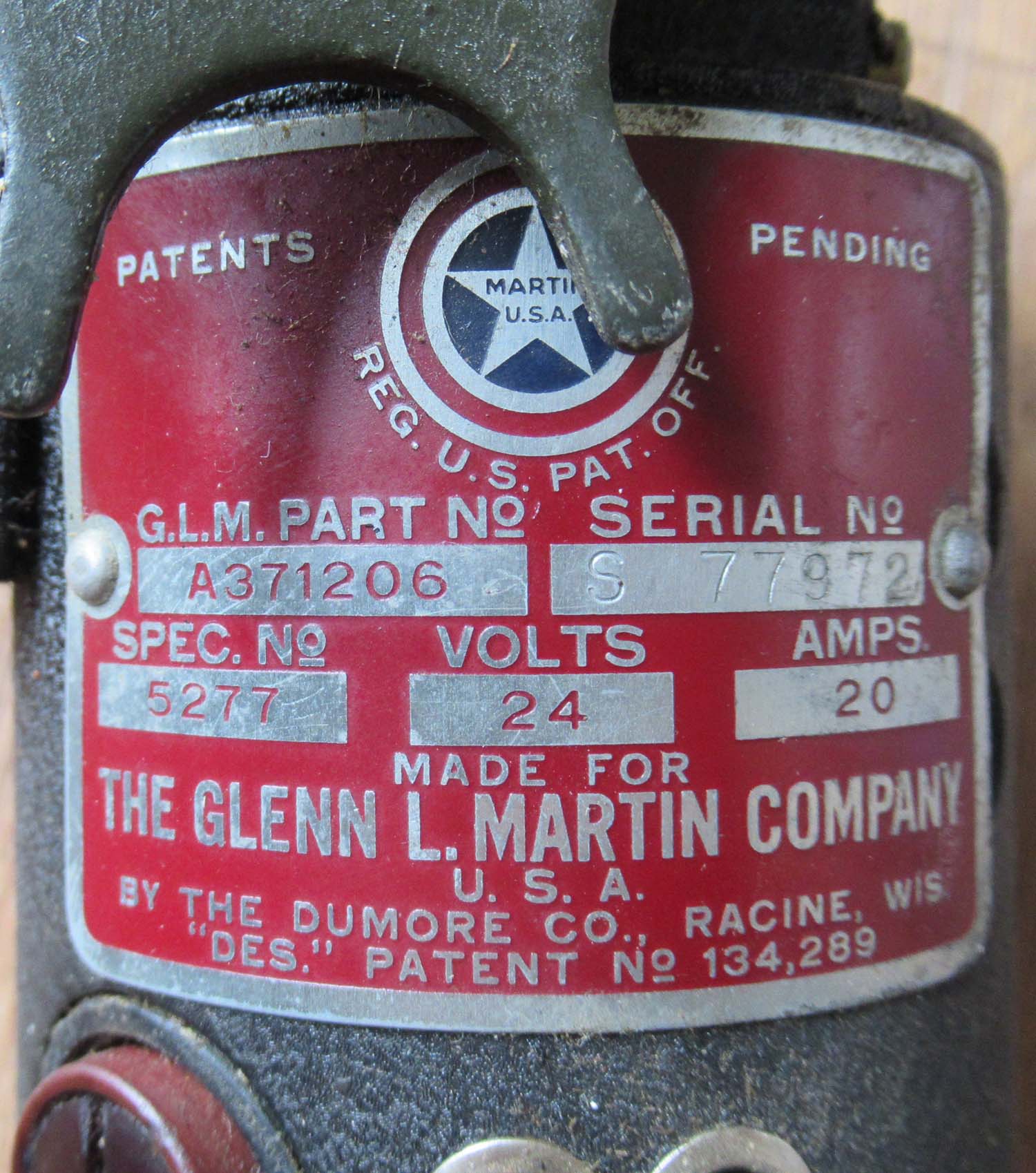
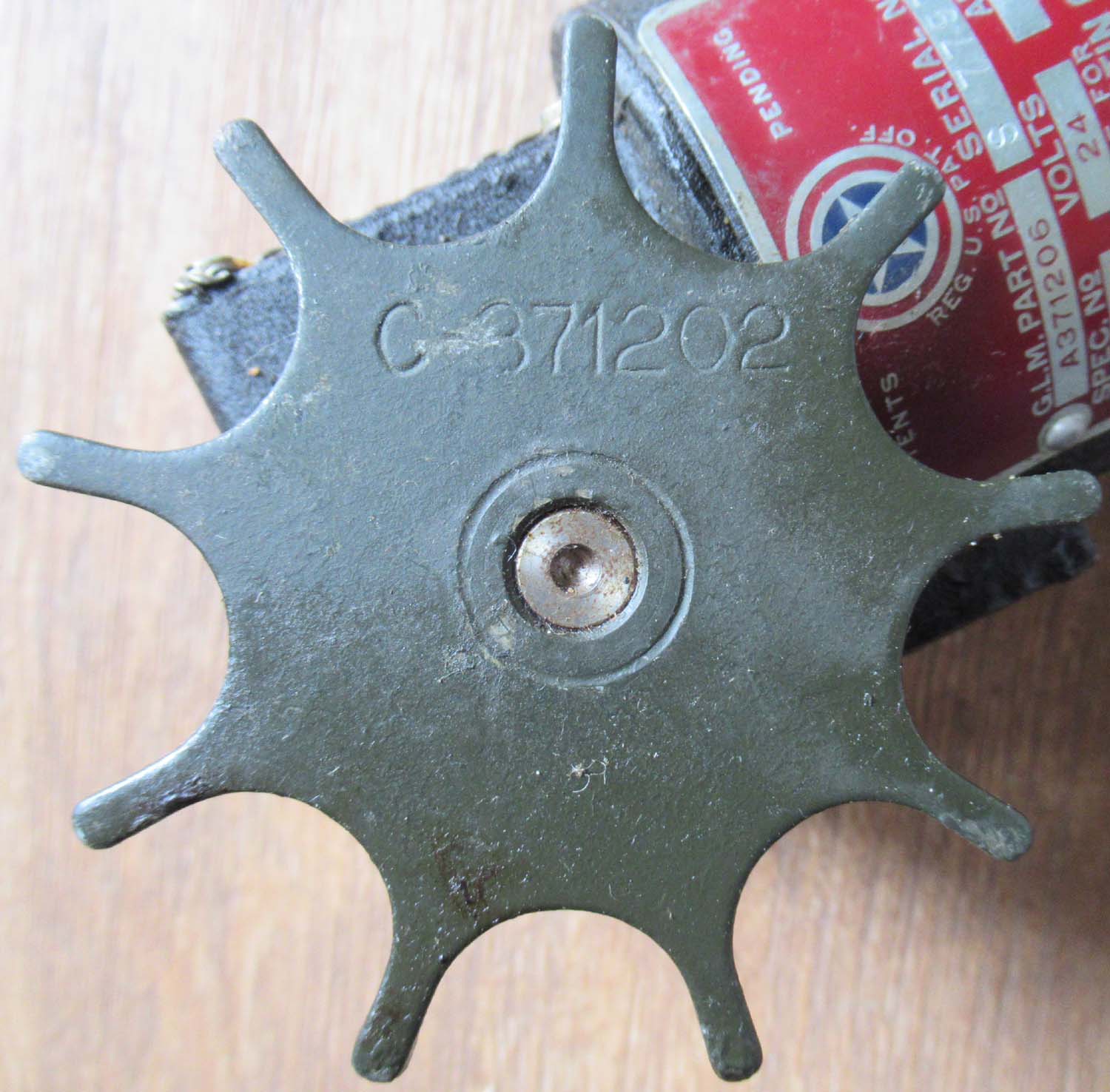
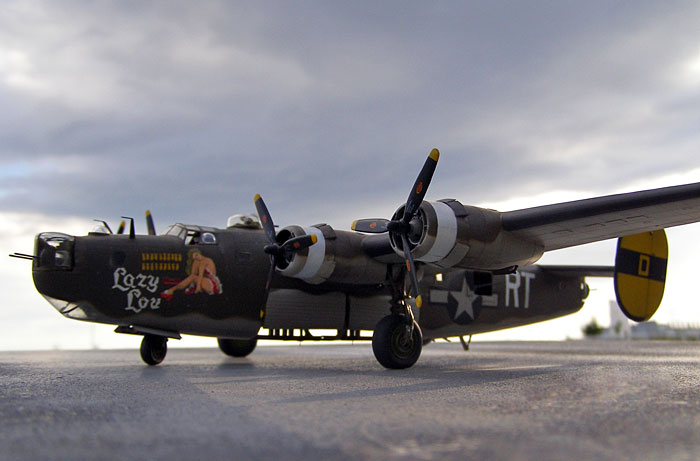
Shown above the B24 Bomber
|
|
Click on pictures to enlarge
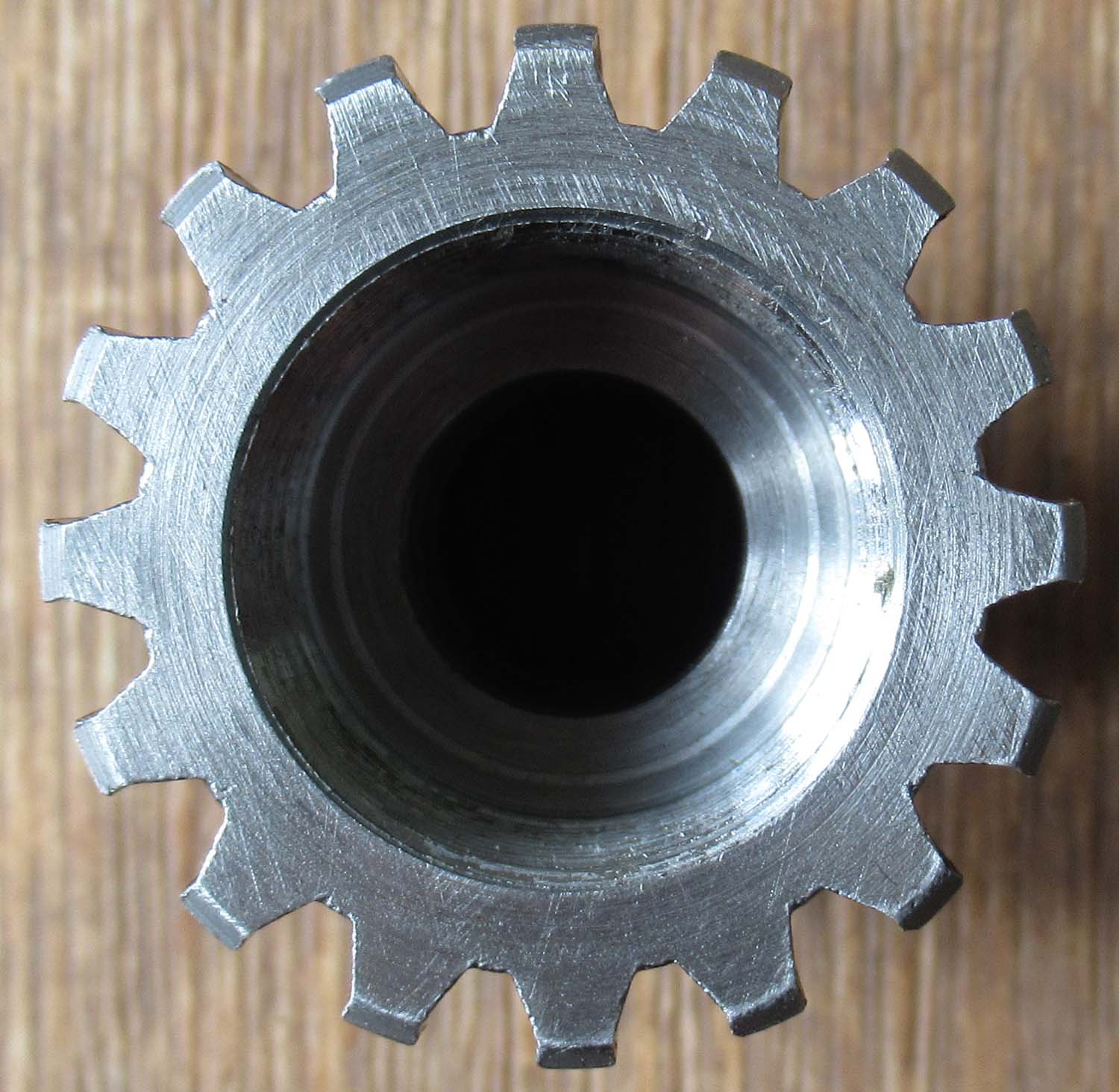
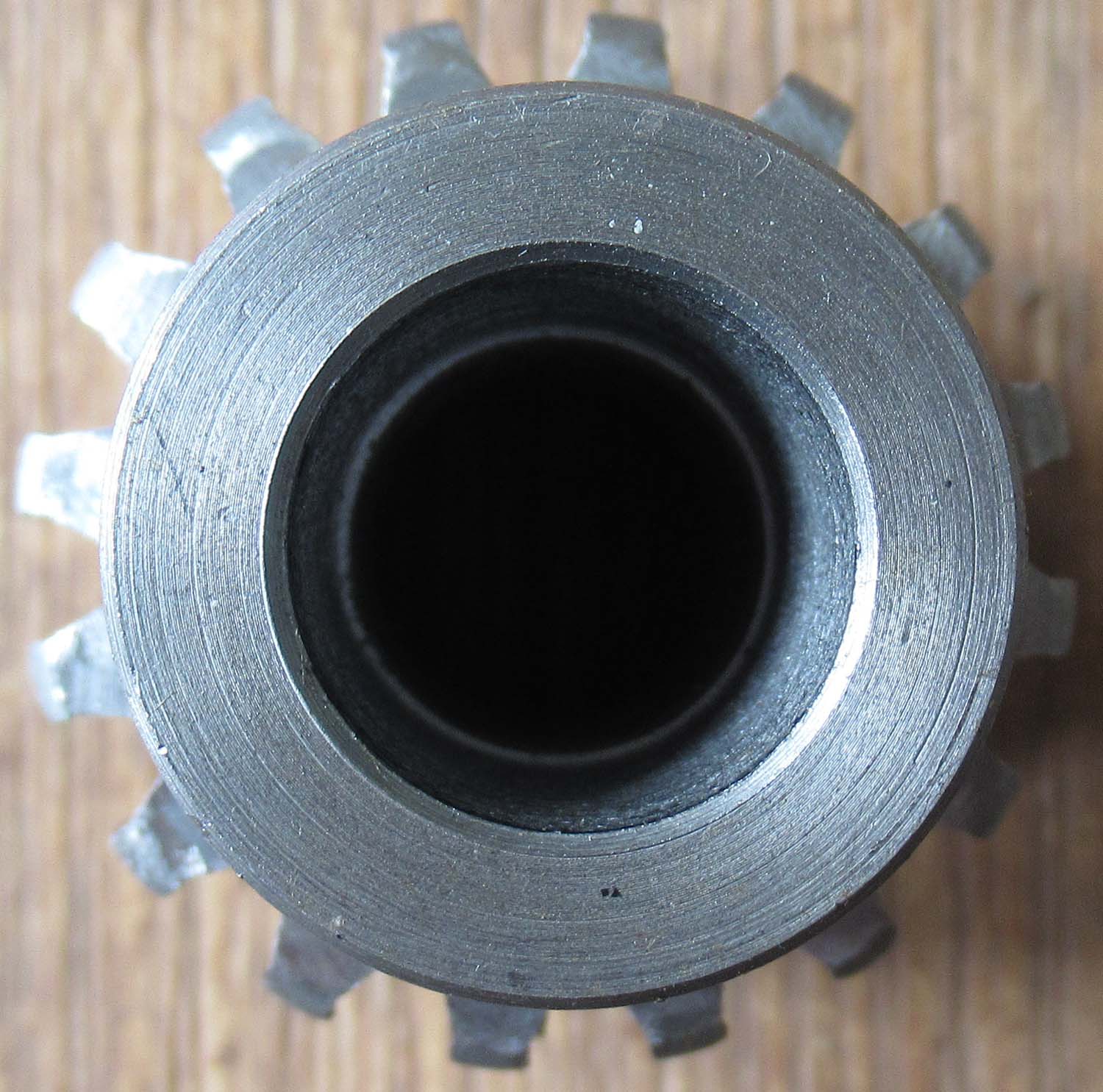
|
Reproduction.303
Muzzle
(No 2 pg1 Arm)
Here we have a reproduction
.303 Browning muzzel. This was extremely difficult to make.
They have the correct
threads and will fit the standard browning .303 MG and also
take the flash eliminator.
These are for
deactivated weapons only and cannot be used in live firing
guns.
Click on pictures to enlarge
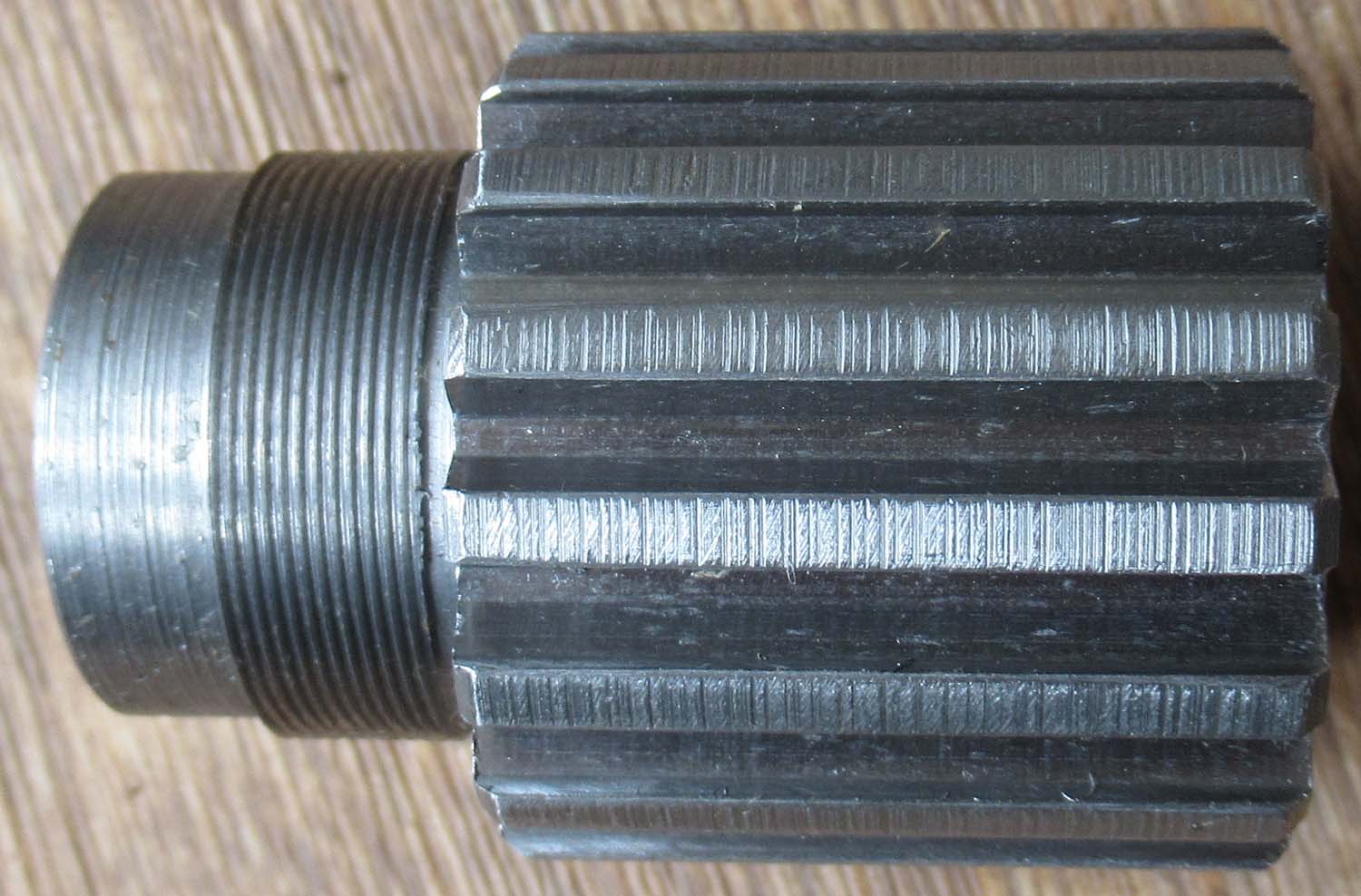
£295


|
|
Click on pictures to enlarge
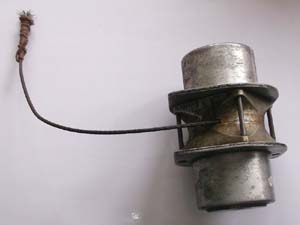
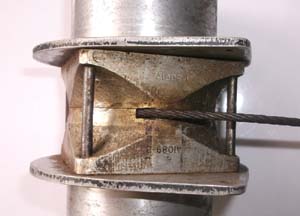
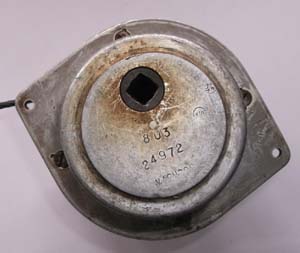
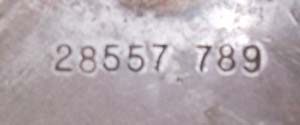 |
Vickers Wellington Bomb
Release Gear
(No 1 pg1 Arm)
This piece
was purchased on our trip to Arnhem unfortunately the
history of the piece was unknown .
With some
extensive research we discovered it was part of the bomb
release gear from a Wellington. Being found in Holland I
would presume it came from a Wellington shot down on a raid
to Germany. It is in good original condition.

Seen in situ
under just above the rear of the bomb.
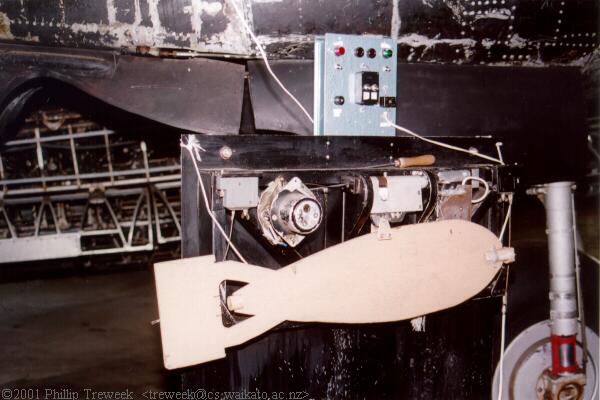
£225


|